| |
‘The constructed view of what men and women did in the past continues to affect us today because it has been built to sustain current inequality"
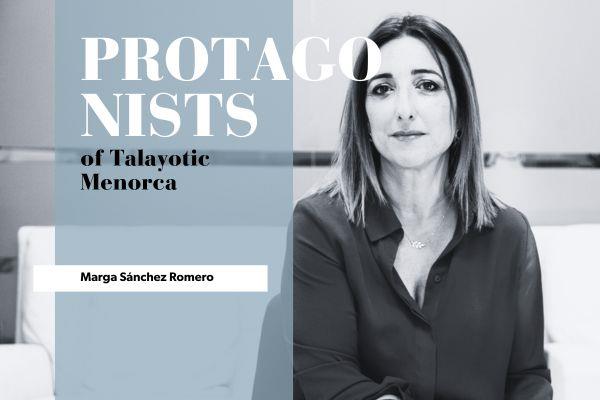 Marga Sánchez Romero Marga Sánchez Romero is an archaeologist specialized in Prehistory, as well as being vice-rector of University Extension, Heritage and Institutional Relations at the University of Granada, where she is professor of Prehistory in the Department of Prehistory and Archaeology.
Her research focuses on highlighting the crucial role of women and childhood in ancient prehistoric societies. Together with other colleagues she founded the Pastwomen project, aimed at making research in archaeology and history related to women's material culture more visible.
She has carried out research at the universities of Bergen (Norway), Helsinki (Finland), Cambridge (UK), Hull (UK), Havana (Cuba), Comahue and Lujan (Argentina), Los Lagos (Chile) and the Autonomous University of Puebla (Mexico). In addition, she has taught in different degrees, master's degrees, postgraduate courses, conferences, congresses and national and international seminars.
She has been director of Cultural Assets of the Andalusian Regional Government; member of the Technical Commission of the Archaeological Ensemble of the Dolmens of Antequera; scientific advisor in the dossier for the inscription of the Dolmens of Antequera on the UNESCO World Heritage List, and advisor in the development of the Strategic Plan 2017-2020 of the Andalusian Institute of Historical Heritage.
She is also a regular contributor to the programme ‘El condensador de fluzo’ on RTVE's La 2. She has been awarded the Carmen de Burgos Prize for feminist dissemination by the University of Malaga, and the Granada Prize, City of Science and Innovation, in the category of Women in Science.
She recently visited our island to present her book Prehistorias de mujeres at the Museu de Menorca.
Let's start by getting to know a little about your background. What made you devote yourself to the study of prehistory?
It's funny, because I wasn't thinking of studying archaeology or prehistory. I took a degree in Geography and History because I wanted to study Art History, but when I discovered that we could learn about past populations only through material remains such as bodies, objects or constructions, that fascinated me.
In prehistory we don't have texts, so everything depends on our ability to obtain the best possible information from the excavations we do, and to come up with increasingly sophisticated methodologies of analysis that allow us to get that particular approach to the people of the past.
How did your interest in the study of the role of women in prehistoric societies arise?
Well, when I discovered that we had not been included in what we teach about societies of the past (of any past). I am interested in how people in prehistory have been able to understand and relate to the world through technology, knowledge, work and care. And if women and their experiences are not included in that equation, then we are not doing something right.
And why has archaeology neglected women for so long?
When archaeology appeared as a scientific discipline in the second half of the 19th century, those who dedicated themselves to it were the men of the intellectual and economic elite who were concerned with questions such as the role of violence and war in the attainment and maintenance of power, which technologies advanced the world, or how inequality and social hierarchies were constructed.
Women are not in these narratives that are built on the distant past because at that time we can't even vote, we have no social, political or economic relevance to these men, we don't do anything that they consider important. So why should women be included in history? Until very recently, we have hardly appeared in museums, in school texts, in scientific texts, in popular science texts.
When did the feminist perspective enter archaeology?
At the end of the 1970s, the first archaeologists to talk about gender and feminist archaeology were Scandinavian, and shortly afterwards Anglo-Saxon archaeologists. The article that initiates the concern with theoretical and methodological aspects is ‘The archaeology and the study of gender’, by Meg Conkey and Jane Spector, published in 1984. But despite the fact that it is really only a short time ago, this perspective has grown exponentially and today we have an enormous strength, both theoretically and methodologically, and in the case studies we know about.
In your book you propose this change of perspective in the historical narrative, breaking stereotypes and preconceived ideas. How have these accounts of what women were like in prehistoric times influenced our present?
This constructed view of what men and women did in the past continues to affect us today because it has been constructed to sustain current inequality. If women and men have not participated equally in societies, if women do things that have no relevance, why should we have the same rights? If men are the only ones who have organised, invented, created, fought, thought, acted? isn't it normal that they are the ones who have the right and the capacity to govern?
And if you take this idea of what men and women do to build societies back to prehistory, that is, to our beginnings as a human species, as a society, aren't you making it almost essential? It's like saying: don't insist on ending inequality because it's part of who we are, and that's not true.
You state that ‘we do better science when we include women’ and that your ‘greatest support is scientific data’. Right here, there is still not much information about women in Talayotic Menorca. What role do new technologies play in these new scientific discourses?
The analysis methodologies currently available to us (the study of DNA, isotopes, the improvement of C14 and the analysis of peptides and ceramic contents...) provide us with crucial information to get to know the people of the past, telling us not only about sex and age, but also about illness, physical effort, diet, origin, migrations... But that is not the most important thing.
The most relevant thing that feminism has brought to archaeology is that it has asked different questions, questions that had not been asked until now, even questions that still cannot be answered, but the fact of asking them puts us on the way to answering them. We still don't see women? Let's go out and look for them.
With this scientific evidence in hand, it shows that women also hunted, painted, made tools and were also warriors. If women were there, why deny them?
Well, because in the construction of historical discourses, those things you mention are the important ones, the ones that have made us advance as a society, so they must be in male hands.
If we show that women are also actively participating in these activities, how do we justify the greater importance of men? This preconceived idea, this stereotype is so strong that sometimes even the scientific reality has been denied, as happened for example with the case of Birka's warrior.
Likewise, you point out that menstruation, breastfeeding, childbirth and care have been forgotten from the historical narrative...
Yes, because they have been considered biological issues that have nothing to do with culture and therefore have nothing to do with social, economic or political issues. Women are nature, not culture.
But I ask myself, do all women in the world give birth in the same way? In the same spaces, accompanied by the same people? In the same position? With the same medical resources? It's not like that. So it's not only biological, it's also social, political, ritual.
On breastfeeding, look how many debates there are today, because in prehistoric times decisions were also made: who is weaned first, boys or girls? Up to what age? Is breastfeeding extended because the children have health problems? Questions that we can now answer and that show us, once again, that not everything is biological and therefore need historical explanation.
You are one of the founders of Pastwomen, a project that conceives archaeology as an instrument of social transformation. What is its goal?
Pastwomen is a web resource that aims to give visibility to the lines of research in archaeology and history that are linked to the study of women's material culture, while at the same time providing updated resources from feminist perspectives to all sectors involved in the dissemination of history.
We realised that no matter how much knowledge we were able to obtain, if we were not able to transmit that knowledge to the public we would not be able to transform society, which is our goal. So we started creating images, illustrations in which there were women, men, creatures, elderly people, people with different abilities.... In other words, the whole of society.
From there, we gave courses to teachers, we created specific itineraries, we have a wonderful calendar every year that you can download, and now we are starting a magazine on feminist archaeology.
And what projects do you have underway now?
We want to continue advancing in the generation and transmission of knowledge in every possible way. We want to continue transforming the world in which we live, making it more egalitarian and inclusive, adding knowledge about women because that means adding knowledge about who we are.
|
Talayotic Menorca joins the Alianza de Paisajes Culturales
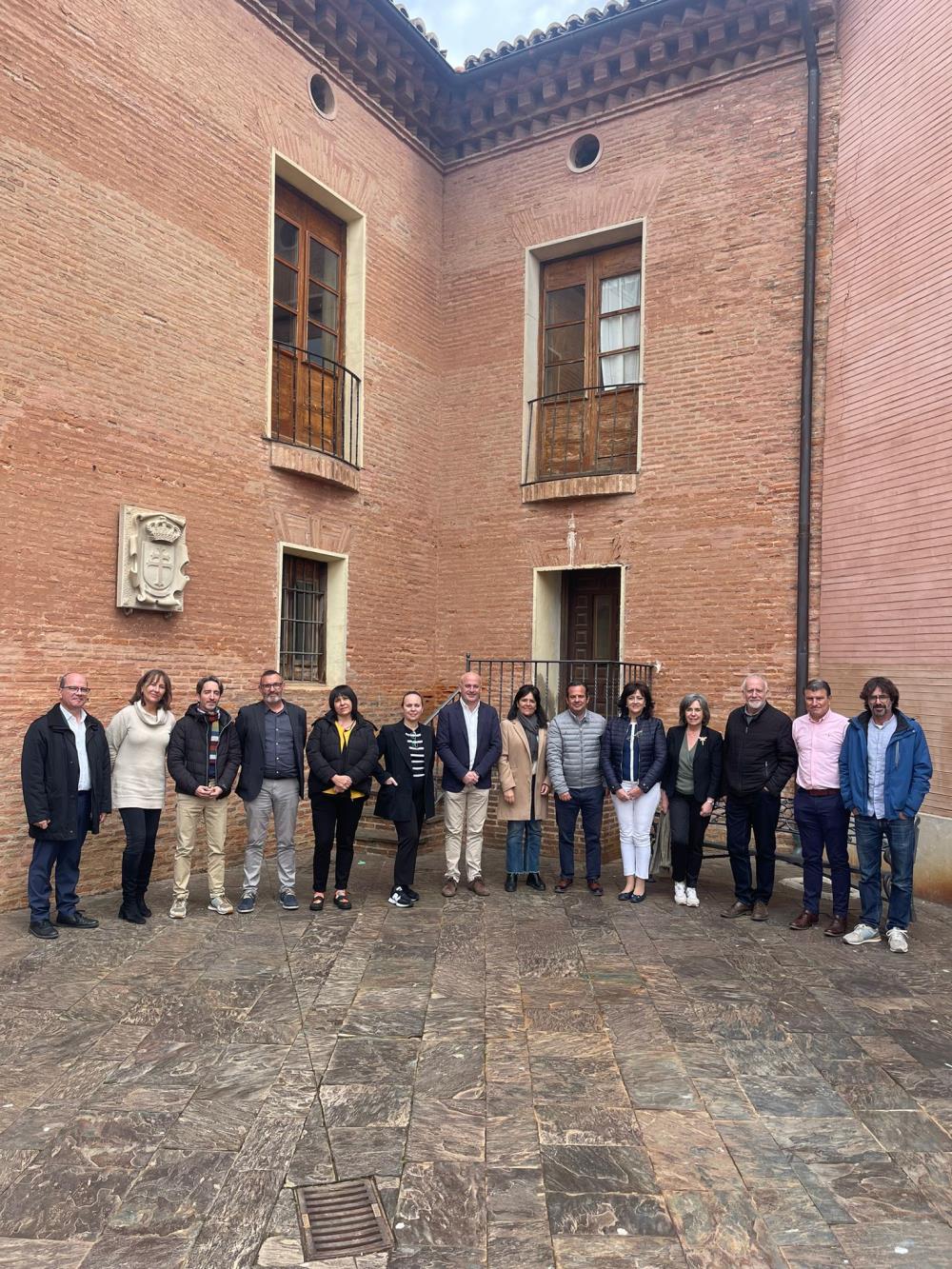 The Alianza de Paisajes Culturales y Sitios Afines is holding its ordinary assembly, where the entry of two more members has been approved: Talayotic Menorca and the Vizcaya Bridge. The Alliance now includes the three World Heritage Sites of the Balearic Islands: Serra de Tramuntana, Ibiza Biodiversity and Culture, and Talayotic Menorca. The conseller for the Environment, Biosphere Reserve and Local Cooperation, Simón Gornés, attended on behalf of the Consell Insular de Menorca.
The entity consolidates year after year with the incorporation of new members to the initiative that promotes cooperation between the different World Heritage sites in Spain, Portugal and Andorra. With the aim of constituting a forum for reflection and exchange of experiences, it meets twice a year in the different sites that are members. There are now 15 members, including the Serra de Tramuntana Cultural Landscape, and it is chaired by the President of the Consell de Mallorca, Llorenç Galmés.
This semester's meeting was held jointly in the municipalities of Calatayud, Cervera de la Cañada and Tobed, all in the province of Zaragoza, which are part of the Mudejar Territory, a World Heritage Site since 1986. Aware of the importance of improving the management of heritage for its preservation, the Alliance accompanies its ordinary assemblies with technical conferences in which it brings together experts in the field of heritage management.
On this occasion, and in collaboration with Territorio Mudéjar, with the title ‘The cultural landscape and management plans for UNESCO World Heritage Sites’, the legislative framework, the implementation of landscape policies, management plans and different complementary tools such as artists' residencies were discussed in depth. The conference also included a presentation by the Polytechnic University of Turin, in which different Italian regional plans and their relationship with UNESCO World Heritage sites were presented.
|
We celebrate the International Day for Monuments and Historic Sites
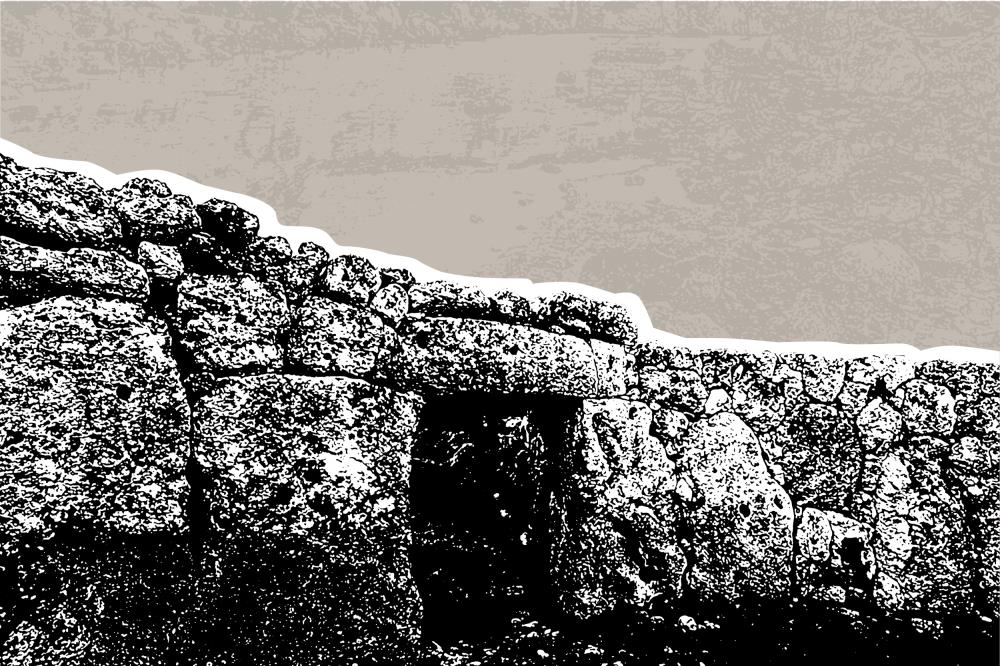 Talayotic Menorca joins this year's celebrations of the International Day for Monuments and Historic Sites with three activities in collaboration with the Museu de Menorca, the Museu de Ciutadella-Can Saura and the Ateneu de Maó: a guided tour of the Son Catlar settlement on April 14, a conference on April 18 at the Museu de Menorca on the role of the Ministry of Culture in World Heritage nominations, and a guided tour on April 21 to observe the solar phenomenon in the Cova des Jurats in Calescoves.
The aim is to promote awareness of the richness of the cultural heritage of Talayotic Menorca, its vulnerability and the efforts needed for its protection and conservation.
The International Day for Monuments and Sites was proposed by the International Council on Monuments and Sites (ICOMOS) on 18 April 1982 and approved by the General Assembly of UNESCO in 1983.
The following activities are scheduled:
Sunday, April 14
10 a.m., visit to the Talayotic settlement of Son Catlar.
- This settlement conserves a spectacular wall with attached bastions, in which archaeological excavations are being carried out. Explanations by Maria José León, director of the Museu Municipal de Ciutadella-Can Saura and co-director of the excavations at the site.
- Sling shooting demonstration by Lluís Pons Livermore.
- Capacity is limited and prior registration is required. To register, please send an e-mail with the details of those attending to info@menorcatalayotica.info (deadline: April 12 at 12 p.m.)
Thursday, April 18
7 p.m., lecture by José María Lanzarote, technician from the World Heritage Department of the Ministry of Cultural Affairs, at the Museu de Menorca.
- Title of the lecture: "The role of the Ministry of Culture in UNESCO World Heritage nominations".
- Glosat by Soca de Mots.
- Tasting of Talaiòtica beer (Grahame Pearce) and Talayotic cake (Ca Na Maru).
- Capacity is limited and prior registration is required. You must register via the Museu de Menorca website.
Sunday, April 21
07:15 a.m., visit to Calescoves and observation of the solar phenomenon in the Cova des Jurats.
- The inscriptions in the Cova des Jurats are related to the date of the foundation of Rome, April 21. On this day, the first rays of the sun illuminate this very spot. On this visit we can observe this phenomenon, explained by Margarita Orfila, archaeologist and president of the Ateneu de Maó. Explanations about the necropolis by Cristina Bravo and Irene Riudavets (Nurarq).
- From the car park to the beach, where the activity will begin at 7:15 a.m., there is a 15-minute walk.
- Activity carried out in collaboration with the Ateneu de Maó.
- Capacity is limited and prior registration is required. To register, send an e-mail with the details of those attending to: culturaiart@ateneumao.org (deadline: April 19 at 12 noon).
|
Take part in Becatalaiotica 2024
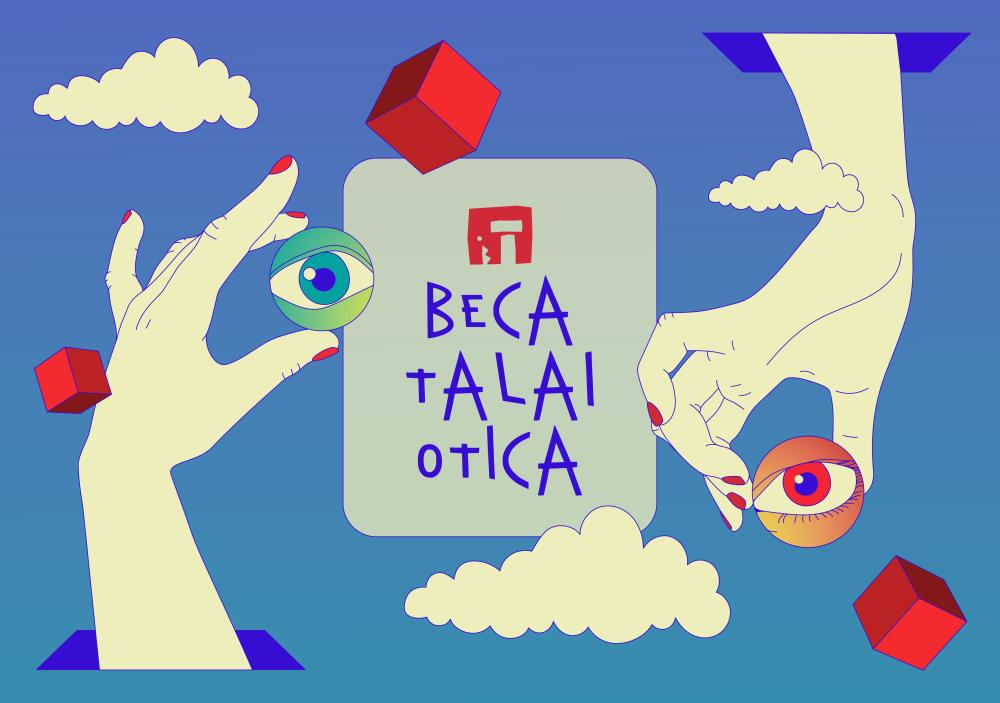 The eighth edition of the Becatalaiotica cultural competition kicks off today, April 2, with the start of the registration period, which will close on 2 June 2024 at 23:59. Those interested in taking part in the competition should fill in this form.
The main aims of Becatalaiotica are to give visibility to young talent, to vindicate Menorca's landscape as a source of inspiration and to imagine new ways of inhabiting the island's prehistoric sites. The cultural project, an original project of the Associació d'Amics del Museu de Menorca, has been financially supported by the Consell Insular de Menorca (Island Council of Menorca) and has the collaboration of the Fundació Illes Balears.
Becatalaiotica is aimed at people between the ages of 18 and 28, residents of Spain, who are studying or planning to study any type of training. The aim of the competition is to create free, innovative and original events or activities at different sites in Talayotic Menorca. The best-valued contestant will receive a 2,000 euros study grant.
The competition calendar
A jury of professionals linked to cultural heritage, teaching, fine arts and communication in Menorca will be responsible for selecting ten forms from among all those received. The next phase will consist of shaping a proposal for an event at one of the sites of Talayotic Menorca, with the tutoring of members of the Becatalaiotica team. Both the theme of these proposals and the method of expression are completely free, as long as they are related to Talayotic Menorca: scientific and/or cultural dissemination, dance, performance, any artistic discipline, current affairs speeches, monologues on any topic...
The professional jury, together with members of the Becatalaiotica organisation, will evaluate the ten proposals and choose the five most original, innovative and compatible formats. These five event proposals will be the ones that will take place in Menorca during the months of September and October 2024.
Only five contestants will have the opportunity to come to Menorca to stage their proposal, with travel and accommodation expenses covered by the organisation. The public attending the events will be of paramount importance, as they will be in charge of assessing the originality, content and suggestive capacity of the different proposals. The contestant who receives the best evaluation will be awarded a 2,000 euro scholarship.
More information: beca@menorcatalayotica.info o tel. 617 84 02 04.
|
"One of the current challenges is the adaptation of some sites to be visited outside the tourist routes”
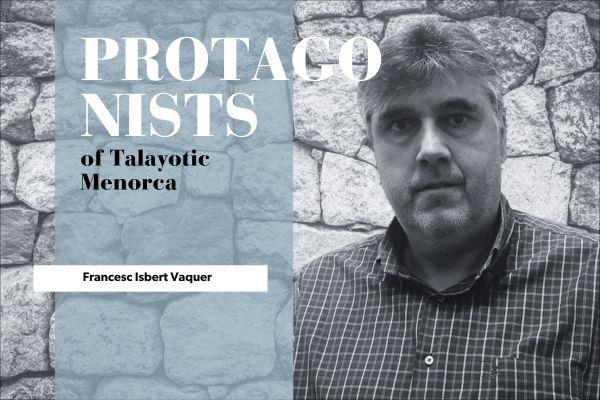 Francesc Isbert Vaquer holds a degree in Fine Arts, specialising in Restoration from the University of Barcelona (1988). Born in Montuïri (Mallorca), he carries out his professional activity in the field of safeguarding and studying Menorcan artistic heritage, painting, sculpture and movable goods in general, with special dedication to archaeological restoration. He has participated in and directed several projects in Torre d'en Galmés, Trepucó, Binisafullet, Biniai Nou, Son Catlar, Talatí, Montefí, Torralba d'en Salort, Morella, Naveta des Tudons and Torrellissar.
A member of the Institut Menorquí d'Estudis and the association of Amics del Museu de Menorca, he has also formed part of the commission that promoted the candidacy of Talayotic Menorca as a UNESCO World Heritage Site. In 2019 he received the Order of Civil Merit for his personal commitment and social contribution.
What prompted you to dedicate yourself to heritage restoration and conservation?
You could say it was an unforeseen event. I was studying Fine Arts in Barcelona with the idea of doing sculpture, but a disagreement with a professor of this subject made me change my initial plans. After making contact with all the specialities at the faculty, I decided to go into restoration.
And what attracted you to the study of Menorcan Talayotic culture?
It was all a coincidence. I finished my Fine Arts degree in 1988, but in the summer of the previous year I had worked as an intern in Mallorca restoring archaeological material from an excavation in Sa Mesquida (Calvià), under the direction of Margarita Orfila. It turned out that in the summer a congress on early Christian archaeology was held in Maó, in which Margarita Orfila also participated, and the management of the Museu de Menorca asked her if she knew of any restorer to cover a three-month contract that the Balearic Government's Department of Culture had announced. She said she knew someone who had finished his degree; I started on October 1, and have been working there ever since. The fact of having worked for almost twenty years in the museum with most of the Talayotic material on display today, as well as participating in excavations and projects, whether you like it or not, created a bond with everything related to Menorcan Talayotic culture that continues to this day.
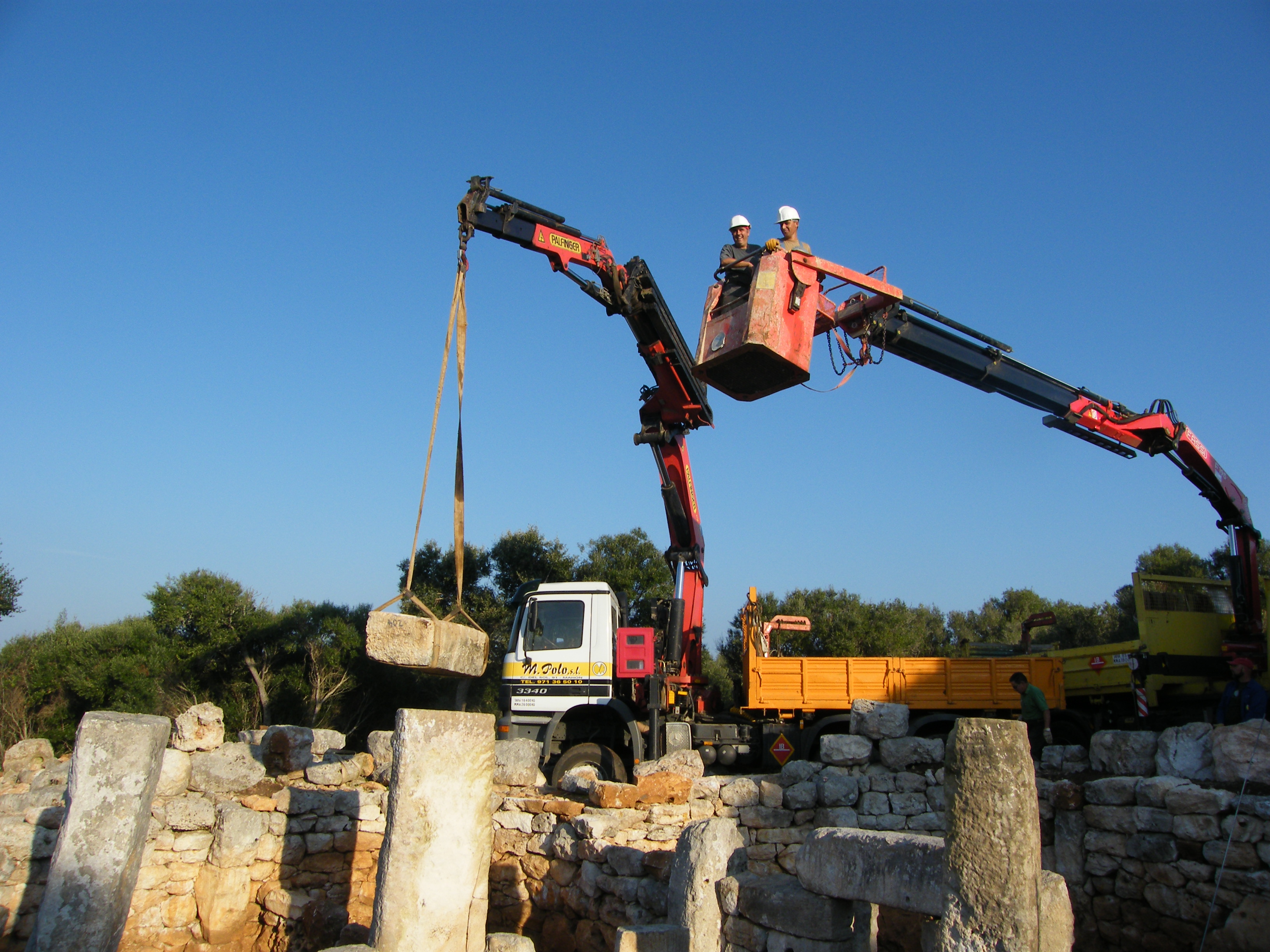 In your extensive career as a restorer, you have worked "in situ" on archaeological sites and monuments all over Menorca. Which are the ones that have had the greatest impact on you or have been a turning point in your career? In your extensive career as a restorer, you have worked "in situ" on archaeological sites and monuments all over Menorca. Which are the ones that have had the greatest impact on you or have been a turning point in your career?
Each intervention is a challenge, because although in general everything is "stones", each site and monument is unique, each one with its own problems. But if I had to choose one of them, it would be the restoration and raising of the Binissafullet taula, and the raising and restoration of the Cartailhac circle at the Galmés tower site.
The taula because it was the first intervention on a monument of these characteristics that I carried out in Menorca and which involved raising the only taula to date outside of those raised in the Talayotic period. The Cartailhac circle because it is a very spectacular Talayotic habitat that before the excavation was just a large pile of stones and, in the end, the result was the most spectacular and best preserved circle in Menorca.
What projects are you currently involved in?
Every summer I participate as co-director in the Amics del Museu de Menorca excavation of the north house of Torre d'en Galmés, coordinating the conservation and restoration of the structures and the archaeological material that may come out, as well as the restoration students who also participate. The last intervention I directed was the restoration of the naveta of Torrellissar Vell, which was in danger of collapsing.
You have been closely involved in the different stages of the preparation of Menorca's candidacy for World Heritage status. How have you experienced the whole process?
I think that everyone who has participated has contributed what they could within their reach, living it with intensity and as a challenge, especially when the candidacy was withdrawn; although it was a setback, the island's administrations continued and rebuilt themselves to finally achieve the award of the Talayotic Menorca as World Heritage.
With your experience as a restorer and in the field of conservation, what challenges do you see for Talayotic Menorca now that it is a World Heritage Site?
The range of challenges can be very wide and, in the case of Menorca, it is even greater due to the large number of sites and monuments. To list just a few, I would highlight the need to make some of the lesser-known sites that are off the tourist routes more suitable for visits, conservation and maintenance, planning new excavations and maintaining those already programmed...
|
New "plec de lectura" dedicated to Lluís Plantalamor
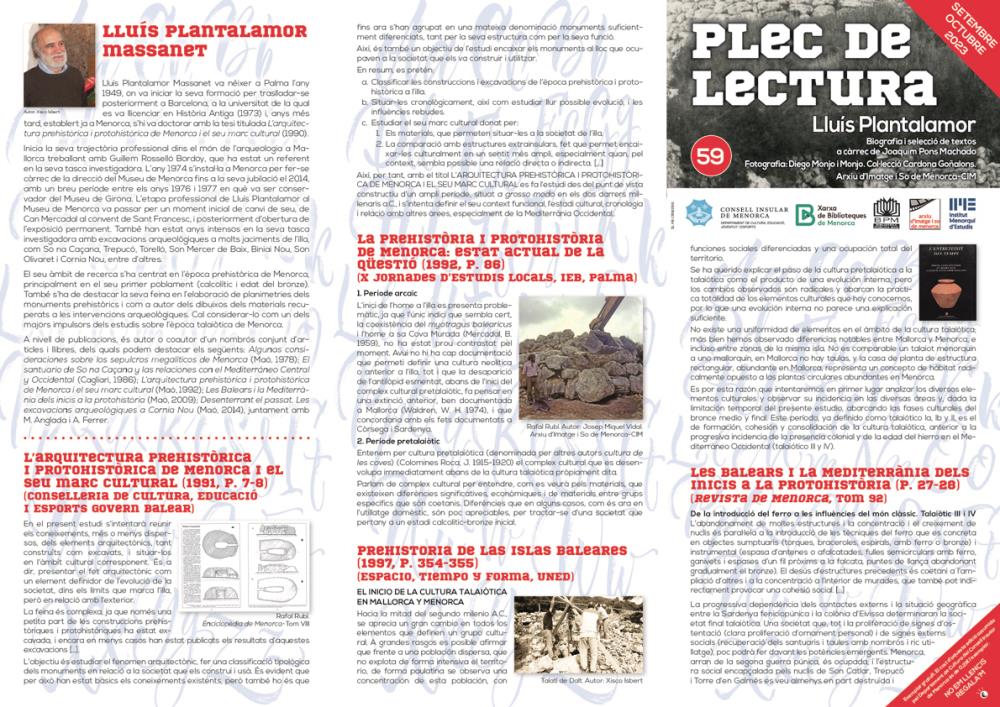 The new "plec de lectura" of the Xarxa de Biblioteques de Menorca is dedicated to Lluís Plantalamor, one of the archaeologists who promoted studies on the Talayotic period in Menorca. Lluís Plantalamor Massanet was born in Palma in 1949, where he began his training and later moved to Barcelona, where he graduated in Ancient History (1973). Years later, after settling in Menorca, he obtained his doctorate with a thesis entitled La arquitectura prehistórica y protohistórica de Menorca y su marco cultural (Prehistoric and protohistoric architecture in Menorca and its cultural framework) (1990). This year the Xarxa de Biblioteques de Menorca produced some triptychs dedicated to key figures that led to the declaration of World Heritage. The new "plec de lectura" of the Xarxa de Biblioteques de Menorca is dedicated to Lluís Plantalamor, one of the archaeologists who promoted studies on the Talayotic period in Menorca. Lluís Plantalamor Massanet was born in Palma in 1949, where he began his training and later moved to Barcelona, where he graduated in Ancient History (1973). Years later, after settling in Menorca, he obtained his doctorate with a thesis entitled La arquitectura prehistórica y protohistórica de Menorca y su marco cultural (Prehistoric and protohistoric architecture in Menorca and its cultural framework) (1990). This year the Xarxa de Biblioteques de Menorca produced some triptychs dedicated to key figures that led to the declaration of World Heritage.
In 1974 he moved to Menorca to take over the direction of the Museu de Menorca until his retirement in 2014, with a brief period between 1976 and 1977 when he was curator of the Museu de Girona. Lluís Plantalamor's professional period at the Museu de Menorca was initially marked by a change of venue, from Can Mercadal to the convent of Sant Francesc, and later by the opening of the permanent exhibition. These have also been intense years in his research work with archaeological excavations at many sites on the island, such as So na Caçana, Trepucó, Torelló, Son Mercer de Baix, Biniai Nou, Son Olivaret and Cornia Nou, among others.
His field of research has focused on Menorca's prehistoric period, mainly on its first settlements (Chalcolithic and Bronze Age). His work in the elaboration of planimetries of prehistoric monuments and as the author of the drawings of the materials recovered in archaeological interventions should also be highlighted. It is necessary to consider him as one of the major promoters of studies on the Talayotic period in Menorca.
|
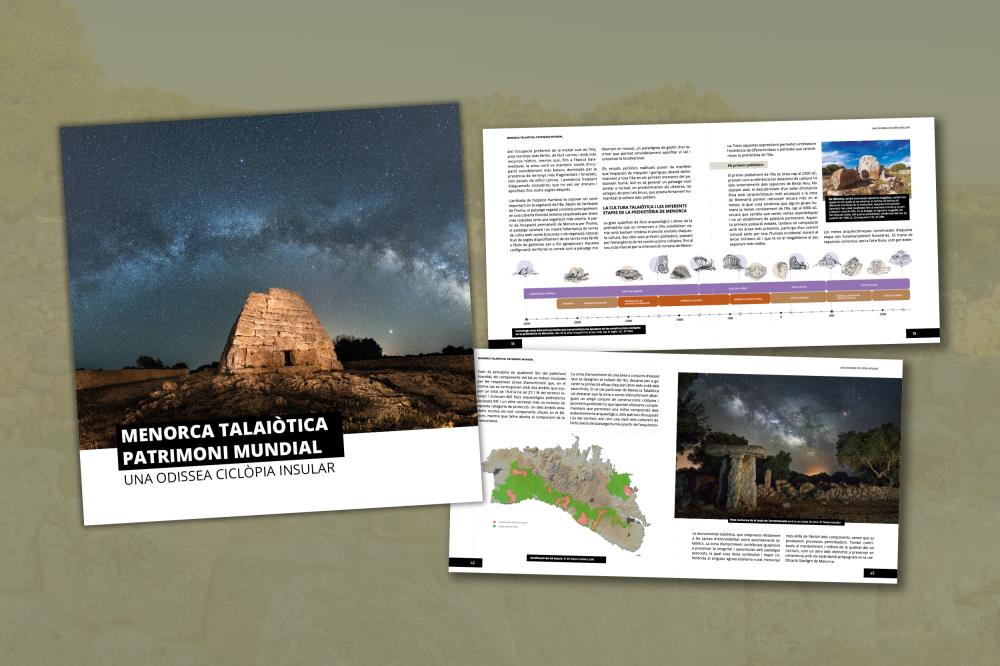
Presentation of the new book in the Sitjot collection "Talayotic Menorca, World Heritage"
¿¡[AQUI]¡¿The book Talayotic Menorca, World Heritage. An insular cyclopean odyssey, the eighth in the Sitjot collection, was presented this afternoon, March 2, at the Cercle Artístic de Ciutadella, as part of the programme to celebrate the Day of the Balearic Islands. It was attended by the authors, Joaquim Pons Machado and Cipriano Marín (telematically); the conseller of Cultural Affairs, Joan Pons Torres, and the director of the Talayotic Menorca Agency, Antoni Ferrer Rotger.
This new edition of Sitjot is a journey through the long process of Talayotic Menorca's candidacy, which culminated successfully on September 18 2023 with its inscription on the UNESCO World Heritage List. It contains a large number of maps and images in colour that help the reader to understand the key aspects of Talayotic Menorca.
"The Consell Insular de Menorca is very pleased to present the first book following the proclamation of Talayotic Menorca as a World Heritage Site, an international recognition of the archaeological heritage that our ancestors have preserved from generation to generation," said the conseller of Cultural Affairs.
Pons Torres took the opportunity to announce one of the most important projects of the Talayotic Menorca Agency in the short term: the creation of the Talayotic Menorca Interpretation Centre at the Consell Insular headquarters in Ciutadella, which is expected to become a reality in 2025. This centre, already contemplated in the Management Plan, will be a reference point with all the information on the sites of Talayotic Menorca, and will be located next to the Agency's offices.
Both authors have been closely linked to the candidacy: Joaquim Pons Machado as technical director of the Talayotic Menorca dossier and archaeologist of the Consell Insular for almost four years, and Cipriano Marín as coordinator of the candidacy and of the dossier that was presented to UNESCO.
During their speech, the authors highlighted the synthesis work carried out in the writing of this book, as it should be taken into account that the nomination dossier is 630 pages long and Sitjot's book is only 78. The aim was to explain clearly and concisely in a small format book the main features of the dossier: the outstanding universal value, the components of the serial property and the main attributes and values that have led Menorca to be included on the World Heritage List.
The authors also wanted to include in their publication a first chapter to introduce people to UNESCO and the World Heritage Convention. To close the book, they have looked to the future after the inscription, with the role to be assumed by the Talayotic Menorca Agency and with the Management Plan as the main working document.
For his part, the director of the Talayotic Menorca Agency emphasised that the book was written by the coordinator of the dossier and by one of the technicians who were involved in the technical management, making them two of the people who know the subject best.
The Sitjot collection
Sitjot aims to disseminate the wealth of Menorca's historical and archaeological heritage among a non-specialist public. With a markedly informative character, but always respecting scientific rigour, these monographs incorporate illustrations and other visual resources to make the information more comprehensible. Talayotic Menorca, World Heritage. An island cyclopean odyssey is also available in Spanish and English, like the rest of the collection.
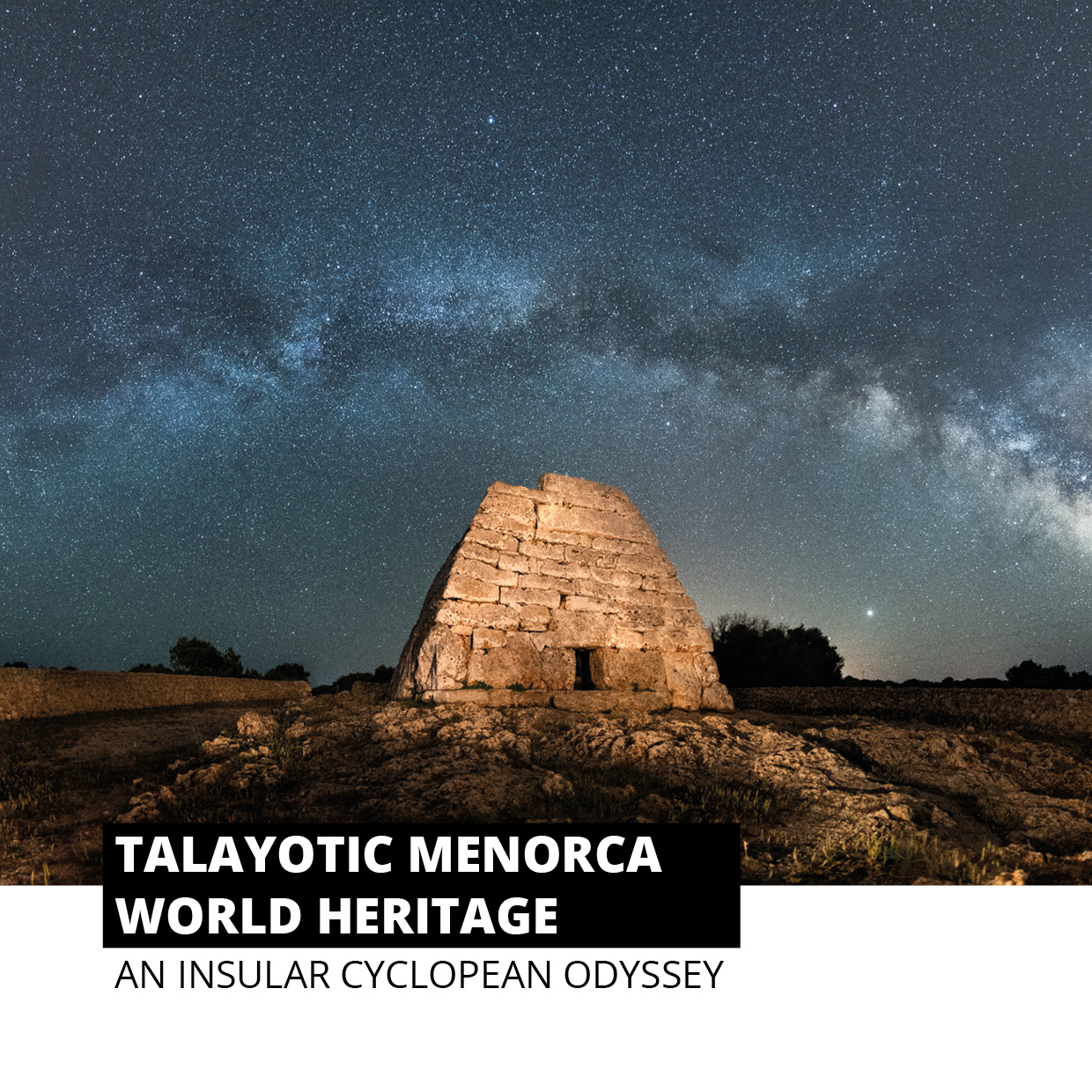 The intention is that these monographs may be of interest not only to Menorcans, but also to tourists who come to the island, especially those who visit the museums. This is why the collection is available at the Museu de Menorca and Can Saura.
The other seven titles in the collection
The Sitjot collection started in 2018 with Torre d'en Galmés. Territorial control of prehistoric Menorca, an update of the book with the same title published by the Consell Insular de Menorca in 2007. This new edition, also edited by archaeologists Carmen Lara, Joaquim Pons, Gustau Juan and Antoni Ferrer, presents the findings of the excavations carried out up to 2018 in Torre d'en Galmés.
In Es Tudons naveta. Monuments and funeral rites during the final bronze age in Menorca, the author Simón Gornés compiles the current understanding about this type of buildings, exclusive to Menorca. Another of Sitjot's volumes is also dedicated to funeral rituals, but with a transversal vision that embraces the Prehistory and history of the island. This book, which is entitled May the earth rest lightly on you. A story of death in Menorca, is based on the exhibition that can currently be seen in Can Saura (Ciutadella). The authors are Elena Sintes and María José León.
The title Promontories and fortifications. Coastal settlements of the bronze age in Mallorca and Menorca is also related to an exhibition. In the book, the new data collected in the excavations of Cala Morell (Ciutadella) and sa Ferradura (Manacor, Mallorca) settlements are disclosed. Montserrat Anglada, María José León, Damià Ramis and Magdalena Salas coordinated the edition.
Sitjot's fifth book was Torralba d'en Salort. Taula enclousures, the iron age sanctuaries of Menorca, presented in 2020, where readers can discover the world of these unique monuments that can only be found in Menorca. Archaeologists Irene Riudavets and Cristina Bravo take a look at the different archaeological interventions in taula enclosures, their architectural characteristics and the associated religious cults and rituals. Finally, the authors focus on Torralba d'en Salort, with a detailed description of its main points of interest and the history of research on the settlement.
Discover Talayotic Menorca with Laia and Tau, the sixth in the Sitjot collection and the first one aimed at children, is intended to be a first contact with the Talayotic culture for the youngest readers. It is a journey through Menorca's prehistory accompanied by Laia and Tau, from the first settlers to the conquest of the island by the Roman army.
The book Torre d'en Galmés: How did they control the territory in prehistoric Menorca, adapted for easy reading, was the seventh in the collection, following the line of Menorca Talayotic as a transversal and inclusive project.
Here you can see the complete collection.
|
Menorca Talayotic receives the Ramon Llull Award
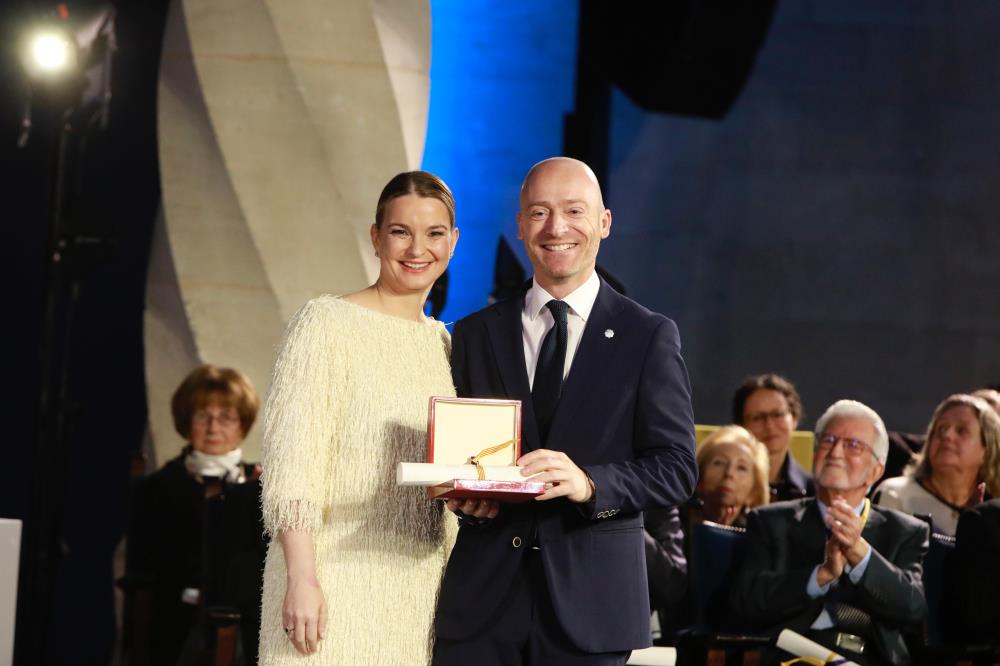 The president of the Consell Insular de Menorca, Adolfo Vilafranca, received the Ramon Llull award for Talayotic Menorca yesterday from the president of the Government of the Balearic Islands, Marga Prohens. The awards ceremony was held at the Llotja de Palma. The Gold Medal, awarded to Her Majesty Queen Sofia of Greece, and the Ramon Llull awards are the highest recognition given by the autonomous community. The president of the Consell Insular de Menorca, Adolfo Vilafranca, received the Ramon Llull award for Talayotic Menorca yesterday from the president of the Government of the Balearic Islands, Marga Prohens. The awards ceremony was held at the Llotja de Palma. The Gold Medal, awarded to Her Majesty Queen Sofia of Greece, and the Ramon Llull awards are the highest recognition given by the autonomous community.
The Balearic Government considers that the inscription of Talayotic Menorca on the UNESCO World Heritage List highlights the rich heritage of the Balearic Islands and is a sign of the commitment of citizens and institutions to its conservation.
The institutional ceremony for the Day of the Balearic Islands, which was attended by almost 700 people, began with a performance by musicians and dance groups representing the four islands. It began with the Es Broll group of dancers from Ibiza; from Formentera, the Es Xacoters and Es Pastorells groups; the Arrels de Sant Joan group from Ciutadella, dancers from Menorca; and the dancers and musicians from the Mallorca School of Music and Dance. The gala also included a musical performance by the singer Júlia Colom, with a rendition of the song Olivera. To conclude, the event ended with a performance by the string quartet of the Symphony Orchestra of the Balearic Islands, which played three pieces by Enrique Pastor.
Her Majesty Queen Sofia received the Gold Medal and the sixteen Ramon Llull laureates were: Enric Benito Oliver, a doctor specialising in palliative care; Beatriz Morales-Nin, a marine ecologist and professor at IMEDEA; José Antonio Fayas Janer, an engineer and expert in water resources; Mater, a social organisation dedicated to the education, training and social and occupational integration of people with disabilities, for its 60 years of work; the Talayotic Menorca, a UNESCO World Heritage Site; the Es Baluard Museum of Contemporary Art, for its 20th anniversary; the Ibizan historian Joan Planells Ripoll; the Xavier Fiol Gallery, for its 35th anniversary; the singer Lorenzo Santamaría, for his 50 years of musical career; the Palma Futsal Balearic Islands team, for its sporting achievements in 2023; the Mallorcan women's football World Cup champions with the Spanish national team Mariona Caldentey and Cata Coll; and the designer Sebastià Pons. Three Ramon Llull prizes were also awarded posthumously: to the businessman Gabriel Sampol, to the teacher and founder of Formentereros Solidarios Teresa Costa, and to the historian María José Massot.
|
"Without research, being World Heritage would be meaningless, because it is the knowledge of the monuments that really gives them value"
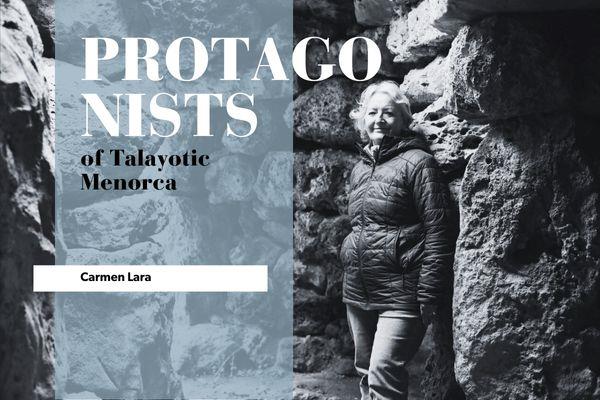 Carmen Lara Astiz, born in Estella-Lizarra (Navarre), is an archaeologist with extensive experience linked to Talayotic Menorca. She studied Geography and History and specialised in Prehistoric Archaeology at the Autonomous University of Barcelona. Her experience has led her to participate in excavations in various places such as Menorca, Navarre, Catalonia, France and Cyprus. Carmen Lara Astiz, born in Estella-Lizarra (Navarre), is an archaeologist with extensive experience linked to Talayotic Menorca. She studied Geography and History and specialised in Prehistoric Archaeology at the Autonomous University of Barcelona. Her experience has led her to participate in excavations in various places such as Menorca, Navarre, Catalonia, France and Cyprus.
Now retired, she worked in the Department of Prehistory at the Autonomous University of Barcelona (UAB) for twelve years, and from 2003 to 2009 as head of the archaeological brigades of the Heritage Service of the Consell Insular de Menorca. Between 2009 and 2010, she was archivist at the Historical Archive of Maó, and worked at the Fundació Foment del Turisme de Menorca from 2010 to 2022 as head of cultural tourism. She has published several research articles and has given several conferences throughout Spain and France. She is a member of IME (Institut Menorquí d'Estudis) and GRAMPO (Grupo de Investigación Arqueológica del Mediterráneo y Oriente Próximo) of the UAB.
She arrived on our island to collaborate in the excavations at Talatí de Dalt with colleagues from the Museu de Menorca. Since then, she has participated in projects such as Biniai Nou, Son Olivaret, Fort Marlborough, Torre d'en Galmés -a project she co-directed for fifteen years-, or the documentation of the Cova des Càrritx, among other archaeological interventions. She has also directed a large number of archaeological controls at various sites on the island, in actions promoted by the Consell Insular de Menorca.
Why did you choose archaeology? How did your interest in this discipline begin?
Ever since I was a child I had been attracted by everything I could read about excavations all over the world, and I was also very interested in Geology. I started by excavating medieval remains in my village, but when I went to the first prehistoric excavation, the Palaeolithic, in Berga, I knew I wanted to dedicate myself to this.
What interested you about the Talayotic archaeology of Menorca?
The first time I came to Menorca was to excavate, but I always had the memory of the Naveta des Tudons on the cover of my third-year Baccalaureate book, so my curiosity was first towards the navetas; however, in the end I was interested in everything. Everything was different from what I had excavated until then and very interesting because it was unique.
You have participated in archaeological interventions in Talatí de Dalt and Biniai Nou, and in the documentation of the Cova des Càrritx. Which is the project that has had the greatest impact on you as a researcher?
The Cova des Càrritx was very different because of the archaeological remains that were documented with such an unknown burial ritual. In any case, I didn't excavate, but what I did was the planimetry, specifically the sections of the interior and the floor plan and sections of the exterior of the cave. I also drew all the bone and metal material that was documented in the cave, so I enjoyed and learned a lot.
Your field of study is the combustion structures of the Talayotic period: fires, hearths, ovens. What information can they give us about our ancestors?
It is a subject that I am very passionate about, as well as other types of domestic material built on land. As for the combustion structures, the information they give us is related to the customs, types of habitat and the way of eating of the people who inhabited the domestic spaces, or they are also related to their economy. For example, in Torre d'en Galmés, inside the houses (known as circles), we have documented fireplaces where food was cooked, where we documented ceramic hearths, very common in peninsular prehistory.
We also identified the remains of carbonised cereal seeds. Ovens have also been documented, which would have been used to make pottery, or combustion points with the remains of metal slag, evidence of metallurgical work. A very interesting discovery was made inside a circular house: a brazier built in the earth, with a rubefacted hearth, where the coals must have been placed to be transferred from the bonfire, located in the courtyard of the house, to the rest room to heat and illuminate it. All this information, together with other material remains that have been documented and the architecture of the houses themselves, gives functionality to the different spaces that make up the house, and informs us about the way of life of these people who lived in the prehistoric times of the island.
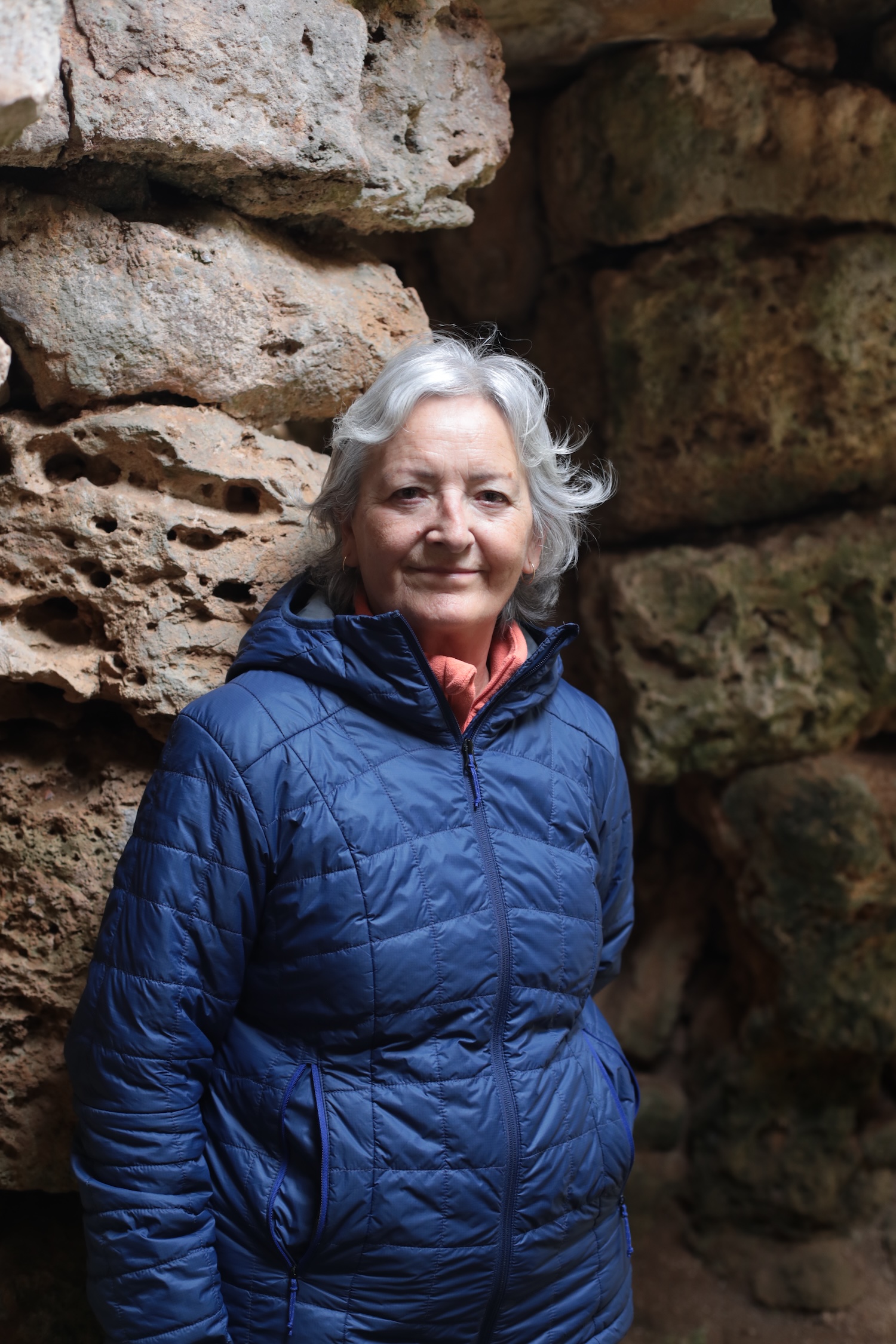 Which of the projects that are currently underway arouse your interest the most? Which of the projects that are currently underway arouse your interest the most?
In my opinion, they are all very interesting because they all contribute a great deal to our knowledge of Menorca's prehistory, but without a doubt, what I am most interested in is the excavation of the taulas. A team of archaeologists has been excavating one of these buildings for years now and they can provide a lot of information that we are still missing. So we will be looking forward to what they have to say about their research.
You participated intensely in the different stages of preparation of Menorca's Talayotic candidacy for World Heritage status. How have you experienced the whole process?
Well, with great enthusiasm. I was on the technical committee from the first dossier until now that we are a World Heritage Site. It has been a very long but intense journey. We have always worked without letting our guard down, with the participation of many people doing the various studies for the dossier, with a lot of enthusiasm, and it has been worth it because the reward has been really great. Menorca deserves it because it has a unique archaeological heritage with exceptional conservation.
What challenges do you see for Talayotic Menorca now that we are a World Heritage Site?
Now is when the important stage of management begins, through the Talayotic Menorca Agency. There are many challenges; we are a World Heritage Site and we must not lose our focus. Now is the time when we have to carefully enhance the value of what we have: the maintenance of the monuments and their conservation comes first. Good management in terms of visits, continuing with the pedagogy that is carried out with the programmed excursions aimed at the population of Menorca, at schools.... And also very important is research, which is what will fill the knowledge about the sites with content and which is the basis of Talayotic Menorca. Without research, being World Heritage would be meaningless, because it is the knowledge of the monuments that really gives them value and is what gives response to the remains that make up this landscape, which in turn is the day to day of what the Menorcans and the people who visit us see.
From your experience in historical heritage management, how do you think the relationship between Talayotic Menorca and tourism should be approached?
To spread the word but with a clear head, that is to say, to control what we are selling. We must always think about the pressure of tourism on the monuments and that is what must be controlled, the monitoring of the sites, which is the tool that forms part of the management plan. In this way we control the site and at any given moment we can activate the plan required by each situation, in order to correct it as quickly as possible and avoid undesired effects on the monuments. It is also important that the type of information we transmit to the tourist is pedagogical, that it teaches them to enjoy the site they are visiting with respect.
|
Talayotic Menorca, Ramon Llull 2024 prize-winner
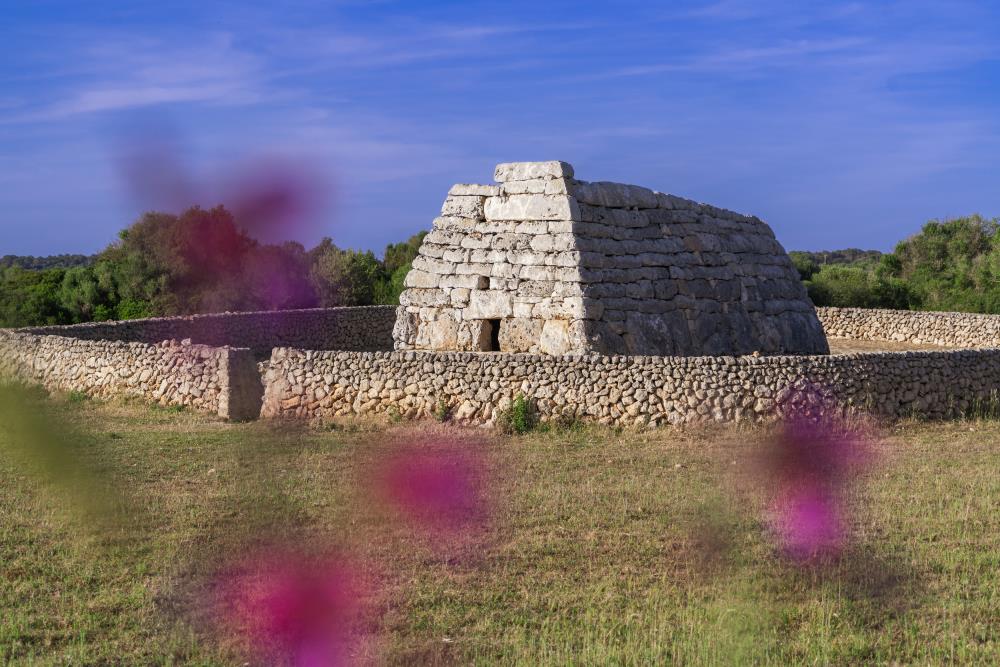 The Balearic Government announced today that Talayotic Menorca is one of the recipients of the Ramon Llull 2024 award, as its inclusion on the UNESCO World Heritage List highlights the rich heritage of the Balearic Islands and is a sign of the commitment of citizens and institutions to its conservation. The Gold Medal, awarded to Her Majesty Queen Sofia of Greece, and the Ramon Llull awards are the highest prizes awarded by the autonomous community and will be presented at a ceremony on 29 February at the Llotja de Palma. The Balearic Government announced today that Talayotic Menorca is one of the recipients of the Ramon Llull 2024 award, as its inclusion on the UNESCO World Heritage List highlights the rich heritage of the Balearic Islands and is a sign of the commitment of citizens and institutions to its conservation. The Gold Medal, awarded to Her Majesty Queen Sofia of Greece, and the Ramon Llull awards are the highest prizes awarded by the autonomous community and will be presented at a ceremony on 29 February at the Llotja de Palma.
During the Governing Council meeting held this Friday, they annouced the awarding of fifteen more Ramon Llull prizes, a distinction whose purpose is to honour and distinguish, individually and collectively, individuals and legal entities that have stood out in the Balearic Islands for services rendered in the cultural, sporting, business, social, research or teaching spheres. The other award winners are: Enric Benito Oliver, Beatriz Morales-Nin, José Antonio Fayas Janer, Mater Misericordiae, Es Baluard, Juan Planells Ripoll, Galería Xavier Fiol; Lorenzo Rosellón Horrach and Lorenzo Santamaría; Islas Baleares Palma Futsal; Mariona Caldentey and Cata Coll; Sebastian Pons.
|
Menorca promotes its World Heritage status in FITUR
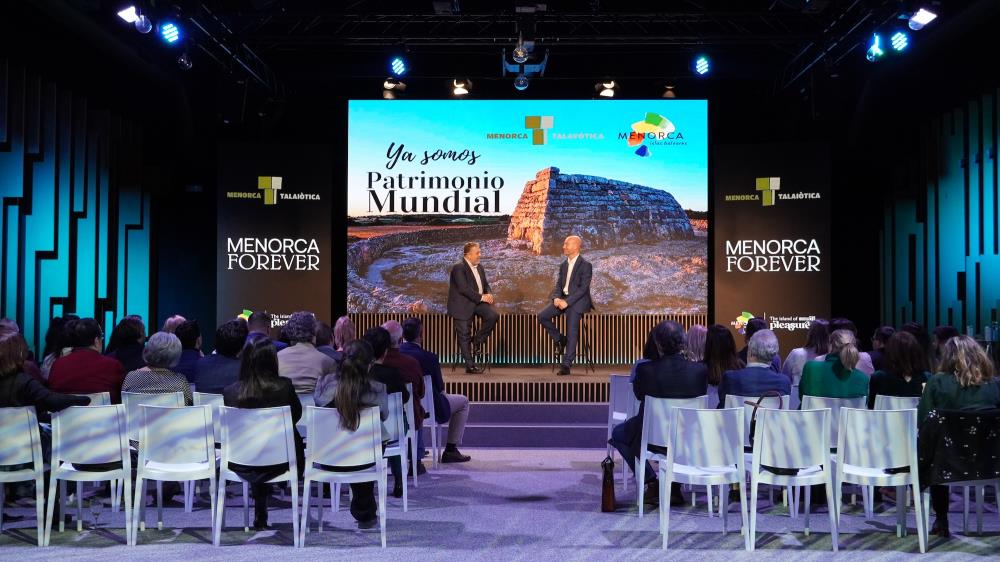 The Fundació Foment del Turisme de Menorca (FFTM), led by the president of the Consell Insular Adolfo Vilafranca, promoted Menorca as a UNESCO World Heritage Site this Tuesday in FITUR, Madrid. The event, where the president also shared some of the island's cultural options, was attended by more than 50 media and agents specialising in cultural tourism who gathered at the Espacio Zénit The Studio. The Fundació Foment del Turisme de Menorca (FFTM), led by the president of the Consell Insular Adolfo Vilafranca, promoted Menorca as a UNESCO World Heritage Site this Tuesday in FITUR, Madrid. The event, where the president also shared some of the island's cultural options, was attended by more than 50 media and agents specialising in cultural tourism who gathered at the Espacio Zénit The Studio.
The event, which forms part of the promotional campaign designed by the FFTM for FITUR, was an opportunity for Vilafranca to highlight the importance of the island's Talayotic heritage, providing a few glimpses of its history. He underlined the privilege of having more than 1,500 open-air archaeological sites in approximately 700 square kilometres, making Menorca an open-air museum and a relevant attraction for the cultural tourism market.
"This event has served to highlight aspects appreciated by UNESCO, such as the coexistence of the archaeological sites with the beauty of the landscape," Adolfo Vilafranca explained, adding that "we have also shared the island's cultural agenda with the aim of publicising the cultural Menorca that will allow us to extend the season. Culture is one of Menorca's attractions and is present all year round".
|
The first edition of the programme "Ja som patrimoni mundial" begins
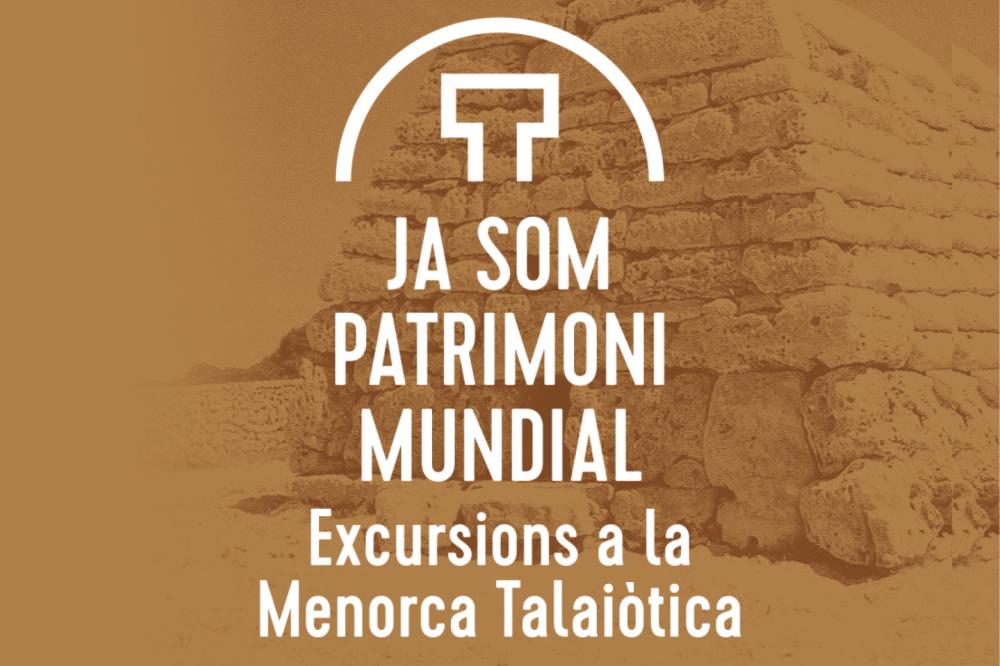 The Department of Cultural Affairs of the Consell Insular de Menorca and the Talayotic Menorca Agency are organising the first edition of the outreach programme "Ja som patrimoni mundial", to commemorate the inclusion of Talayotic Menorca in the UNESCO World Heritage List. The programme offers activities, outings and guided tours that will allow visitors to learn about the social, cultural and environmental values of our heritage. The outings are aimed at all ages and profiles with different interests, and will take place one weekend a month, from January 2024 to December 2024, except July and August. The Department of Cultural Affairs of the Consell Insular de Menorca and the Talayotic Menorca Agency are organising the first edition of the outreach programme "Ja som patrimoni mundial", to commemorate the inclusion of Talayotic Menorca in the UNESCO World Heritage List. The programme offers activities, outings and guided tours that will allow visitors to learn about the social, cultural and environmental values of our heritage. The outings are aimed at all ages and profiles with different interests, and will take place one weekend a month, from January 2024 to December 2024, except July and August.
The first activity will be on Sunday January 14 in Montefí and in the naveta des Tudons, as part of the Diada del Poble de Menorca. We will walk along the camí Reial (camí Vell) to discover two prehistoric landscapes (Montefí and the naveta des Tudons). We will learn about the life and death of its inhabitants during prehistoric times and we will also take a leap in time to explain the events that took place in the naveta in 2018 and find out how the monument was recovered. Collaborators: Es Tudons SRM, Xisco Isbert and Lina Torres.
In the 10 activities programmed throughout 2024 we will be able to see our island's heritage from different perspectives. In all of them we will be accompanied by an archaeologist to explain the site in question, but we will also be accompanied by different specialists, such as biologists, geologists or even the owners of the site, who will complement the contents, so that we can understand the plurality of the island's heritage. Because it is not only the sites themselves that are important, but also, as stated in the World Heritage declaration, the surrounding landscape, the place where they are located geologically or the efforts made by the owners to maintain the heritage and the current landscape, mainly agricultural, are also of great importance.
The cost of this activity is covered by the Talayotic Menorca Agency. Capacity is limited and it is necessary to sign up a few days in advance through this link. Registration will open two Mondays before the activity. Each person can book a ticket for a maximum of two adults and three children. Those interested will receive an email with information about the starting point and meeting time. For any questions you can call or send a whatsapp to 689 33 28 88.
The scheduled excursions are as follows:
- Sunday, January 14: A LANDSCAPE IN THE THREAD OF TIME. From Montefí to the naveta des Tudons along the Camino Reial.
- Sunday, February 25: THE TALAYOT IN THE MENORCAN LANDSCAPE. From San Climent to Cornia.
- Saturday, March 9: THE TAULA ENCLOSURES, UNIQUE IN THE WORLD. Torralba d'en Salort.
- Saturday, April 13: THE CYCLE OF LIFE IN THE BINIGAUS RAVINE. From Binicodrell to the Binigaus ravine.
- Saturday, May 25: DOP ARCHAEOLOGY OF MENORCA. From Ferreries to Son Mercer de Baix.
- Saturday, June 8: THE STARS OF PREHISTORY. The Son Catlar site.
- Saturday, September 21: WORLD HERITAGE AMONG AGRICULTURAL FARMS. In Talatí de Dalt along the old road.
- Sunday, October 20: THE FIRST OF MANY. Trepucó site.
- Sunday, November 17: THE PREHISTORY OF AN ISLAND WITHIN AN ISLAND. From Es Grau to the Rambla tower following the Camí de Cavalls.
- Saturday, December 14: TALAYOTIC LIFE AND RITUALS. Ciutadella Museum.
|
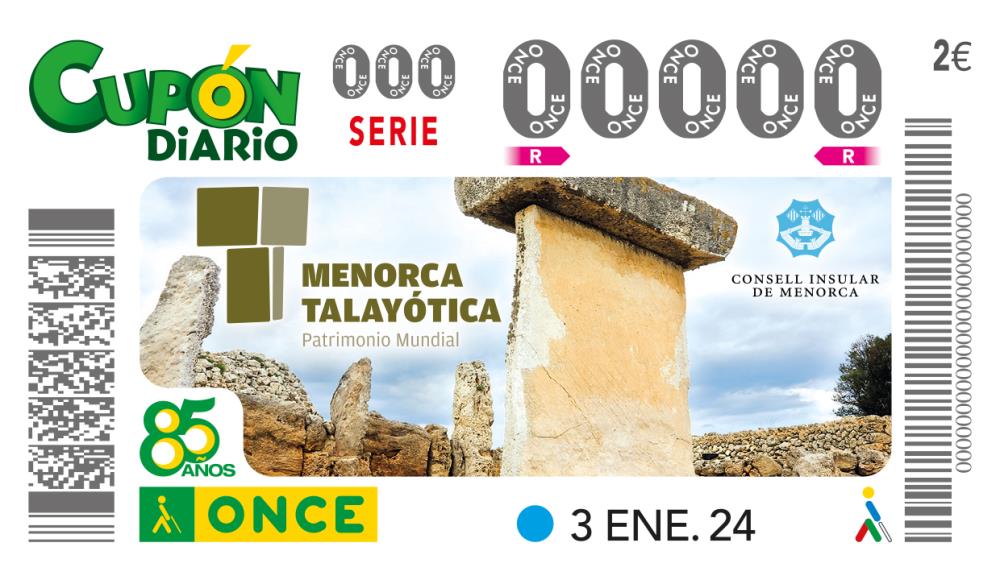
Talayotic Menorca will be featured on the ONCE coupon on January 3
¿¡[AQUI]¡¿Talayotic Menorca will be featured on the ONCE coupon for Wednesday, January 3. In total, five million coupons will be distributed throughout Spain.
The coupon was presented this Thursday, December 27, in the site of Trepucó in the presence of Joan Pons, Menorca's conseller of Cultural Affairs, Education, Youth and Sports, and Higinio Sanchís, director of the ONCE Agency in Menorca.
Talayotic Menorca was inscribed on the UNESCO World Heritage List on September 18, during the 45th Session of the World Heritage Committee held in Riyadh (Saudi Arabia), as the island was considered a unique testimony to a prehistoric island culture with an exceptional repertoire of monuments illustrating the different stages of prehistory.
The high density of prehistoric sites, their unusual level of conservation and the unique constructions on Menorca are considered by UNESCO to be an exceptional example of cyclopean architecture and its evolution over 1,500 years.
Pons thanked ONCE for its initiative, as it will help to disseminate Menorca's archaeological heritage. ONCE explained that the coupons are sold by the organisation's more than 19,000 salesmen and saleswomen.
|
New "plec de lectura" dedicated to Margaret Murray
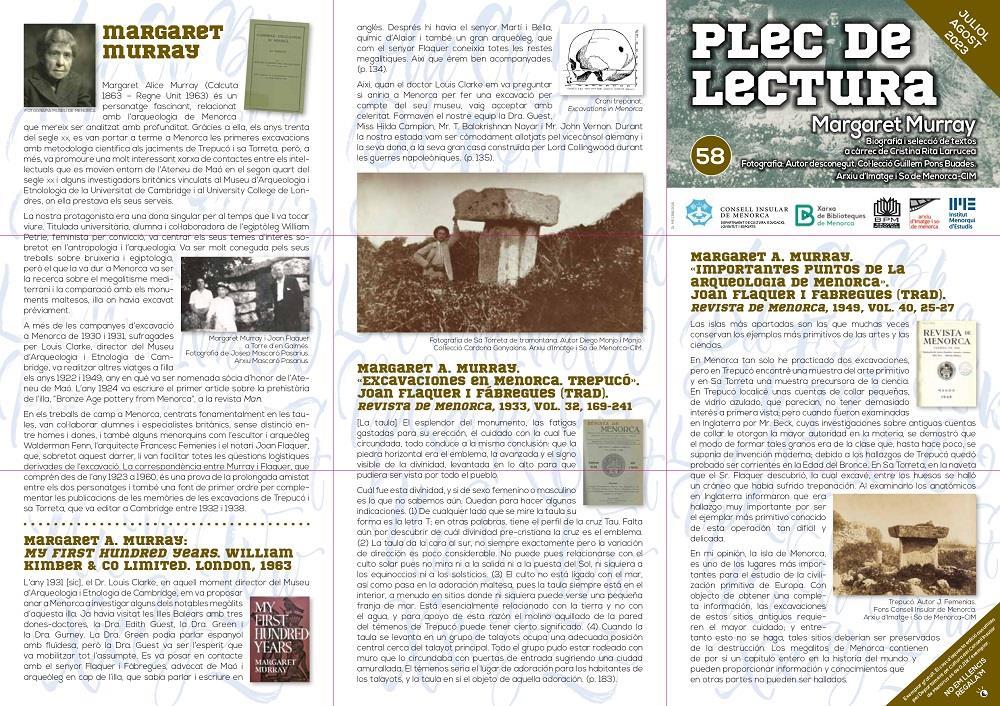 The Plec de lectura is dedicated to Margaret Murray, the first archaeologist to study the remains of the Talayotic period in Menorca. This year these triptychs will be dedicated to important figures that have led to the declaration of World Heritage. The Plec de lectura is dedicated to Margaret Murray, the first archaeologist to study the remains of the Talayotic period in Menorca. This year these triptychs will be dedicated to important figures that have led to the declaration of World Heritage.
Margaret Alice Murray (Calcutta 1863 - United Kingdom 1963) is a fascinating character related to the archaeology of Menorca that deserves to be analysed in depth. Thanks to her, in the 1930s, the first excavations were carried out in Menorca using scientific methodology at the Trepucó and Sa Torreta de Tramuntana sites, but she also promoted a very interesting network of contacts between the intellectuals who moved around the Ateneu de Maó in the second quarter of the 20th century and some British researchers linked to the Museum of Archaeology and Ethnology at the University of Cambridge and University College London, where she worked.
The protagonist of this triptych was a unique woman for the times in which she lived. A university graduate, student and collaborator of the Egyptologist William Petrie, a feminist by conviction, she focused her interests above all on anthropology and archaeology. She was well known for her work on witchcraft and Egyptology, but what brought her to Menorca was her research on Mediterranean megaliths and her comparison with Maltese monuments, an island where she had previously excavated. The photograph that accompanies Margaret Murray's texts is by an unknown author and shows the taula and talayot of Trepucó before its excavation. It belongs to the Guillem Pons Buades collection deposited in the Arxiu d'Imatge i So de Menorca.
|
The Consell Insular 2024 calendar, a tribute to the World Heritage of Talayotic Menorca
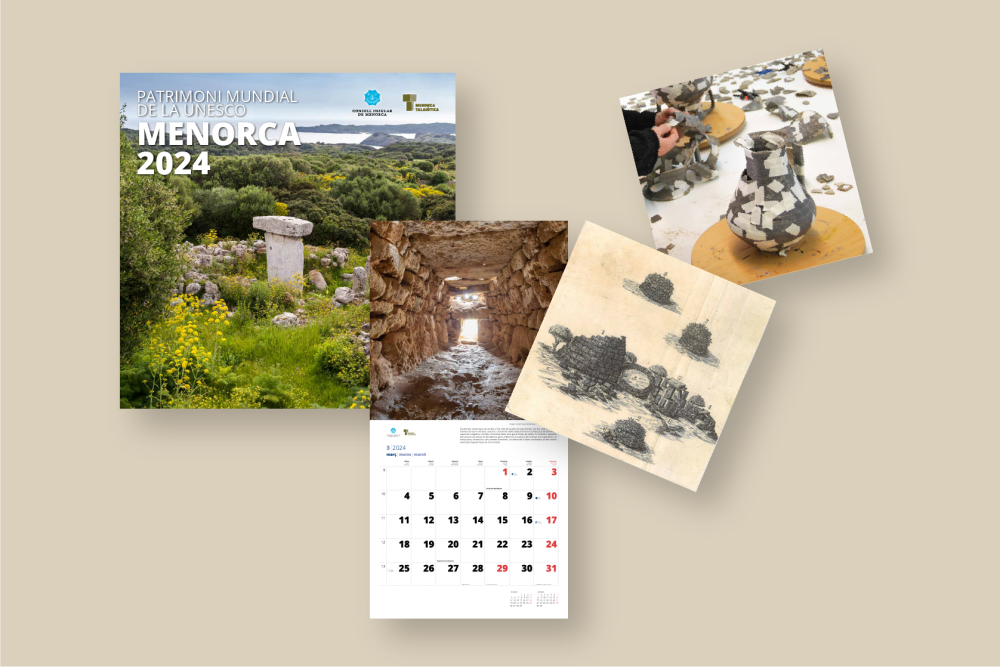 For yet another year, the Consell Insular has made available to the public the new wall calendar for the coming year. This year 2024 is dedicated to Talayotic Menorca and its inscription on the UNESCO World Heritage List last September 18 in Riyadh. From tomorrow, December 22, anyone interested can pick it up free of charge at the two offices in Maó and Ciutadella, as well as at the town halls on the island. For yet another year, the Consell Insular has made available to the public the new wall calendar for the coming year. This year 2024 is dedicated to Talayotic Menorca and its inscription on the UNESCO World Heritage List last September 18 in Riyadh. From tomorrow, December 22, anyone interested can pick it up free of charge at the two offices in Maó and Ciutadella, as well as at the town halls on the island.
The Talayotic Menorca Agency has been in charge of creating the calendar, a summary of the elements that have made it possible to receive the UNESCO distinction. "The aim is to encourage all Menorcans to learn more about our archaeological heritage, because, as the saying goes, only what is known is appreciated", explains the first page of the calendar.
On the cover, a photograph of Sa Torreta de Tramuntana, illustrates a fundamental aspect of Talayotic Menorca: the enhancement of the island's landscape heritage. An engraving from the book Celtic Antiquities of the Island of Menorca, by Joan Ramis y Ramis, published in 1818, opens the calendar, a sign that interest in the prehistory of our island goes back a long way. The taula of Trepucó, the naveta of Es Tudons and the Cartailhac circle are some of the emblematic monuments of the World Heritage Site of Talayotic Menorca that also appear in the calendar. Each of the images chosen has a brief explanatory text.
|

The Sant Agustí Vell team begins a new five-year project
¿¡[AQUI]¡¿The Sant Agustí Vell Archaeological Project has begun a new five-year project that has been presented today, December 20, in the same Talayotic settlement of Sant Agustí, Es Migjorn Gran.
Project co-directors Montserrat Anglada and Damià Ramis detailed the progress of this first campaign, which was carried out during the months of November and December. The work has focused on finishing the excavation of the room attached to the South Building of Talayot 1, known as the Talayot of Ses Bigues de Mata because it preserves the wild olive tree beams that are more than 3,000 years old.
The event was attended by the conseller for Cultural Affairs, Joan Pons Torres; the director of the Talayotic Menorca Agency, Antoni Ferrer Rotger; the city councillor for Cultural Affairs of the Es Migjorn Gran Town Council, Tamara Rotger; and a representative of the ASMAR-Catalina Mercadal Foundation. Sant Agustí Vell is one of the UNESCO World Heritage sites, located in Component 4 of the Talayotic settlements in the Migjorn ravine area of the island.
In the current situation of the project, we can drawn some conclusions:
- The space around the South Building underwent a late occupation during the Iron Age, which lasted until approximately 300 BC, according to the typology of the imported ceramics recovered both in the access corridor to the talayot and in the demolition levels of the exterior room that adjoins the façade of the South Building.
- The character of this occupation is clearly domestic, according to the materials recovered. The building's corridor gave access to the interior of the talayot, although its function cannot yet be precisely defined. Given the large number of amphora fragments found, mainly from Ibiza, it is possible that it was used as a dunghill once its original function had been depreciated. The other hypothesis is that the remains discovered came from inside the talayot or from the other rooms of the building, where possible storage areas could have been located.
- On the other hand, different fragments of molones have been recovered, as well as a stone mortar, which together with the quantity of cereal seeds recovered during the sieving of the sediment from the excavation, may lead us to think of a work related to the processing of these seeds to transform them into food, perhaps a communal work.
- These studies will provide new data that will help us to better understand what the human communities that inhabited the Sant Agustí settlement at the end of the Talayotic period were like.
The excavation of these areas of the building, the access corridor to the talayot and the interior room is revealing its majesty with architectural structures of great monumentality. The façade is impressive, with a height of more than 3 metres, and in the middle of it there is a central portico that still has part of its roof. This entrance is advanced with respect to the façade line with a porch-like construction, which is an architectural solution that is not very well known until now in Balearic prehistory.
Within the framework of the five-year project, the intention is to continue excavating the exteriors to delimit the South Building, as well as its interior, which could conserve part of the slab roof, and to carry out conservation work.
The excavation has been carried out by the Asociación Arqueología y Patrimonio under the direction of Damià Ramis, Montserrat Anglada and Ismael Moll Pelegrí, with the financial support of the Consell Insular de Menorca, the Es Migjorn Gran Town Council, the Fundación ASMAR-Catalina Mercadal and the logistical support of the Museu de Menorca.
|
"It is essential that we are very careful in the sustainable management of our heritage and, in general, of Menorca's territory"
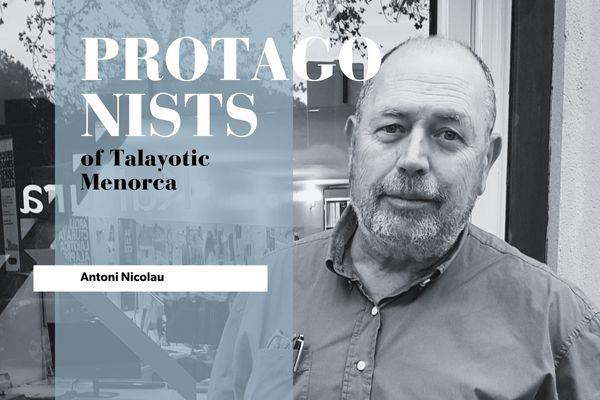 The historian and museologist Antoni Nicolau is the drafter of the Management Plan for the Assets of Talayotic Menorca, which establishes the mechanisms to guarantee the conservation of its exceptional universal value. He has an extensive career in cultural management: for fourteen years he was director of the Museum of the History of the City of Barcelona; he was also project director of the Spain-USA Foundation and is the driving force behind the company Kultura. He has also been in charge of Spanish cultural and scientific cooperation policy and of programmes to promote Spanish culture abroad as Director of Cultural and Scientific Relations at the Spanish Agency for International Development Cooperation. The historian and museologist Antoni Nicolau is the drafter of the Management Plan for the Assets of Talayotic Menorca, which establishes the mechanisms to guarantee the conservation of its exceptional universal value. He has an extensive career in cultural management: for fourteen years he was director of the Museum of the History of the City of Barcelona; he was also project director of the Spain-USA Foundation and is the driving force behind the company Kultura. He has also been in charge of Spanish cultural and scientific cooperation policy and of programmes to promote Spanish culture abroad as Director of Cultural and Scientific Relations at the Spanish Agency for International Development Cooperation.
On some occasions you have commented that cultural heritage does not exist, that it is a social category, and that we are the ones who decide what is heritage. Now that Talayotic Menorca is a World Heritage Site, what does this recognition mean for Menorca?
Indeed, heritage status is granted by each society to those assets that represent something important for the majority of its members. Buildings, objects from the past, traditions... were never made or designed to be heritage, but rather to have a specific social function in each historical society. But today's societies consider many of these assets as essential elements of our identity as a people and we call this heritage, which has come down to us from previous generations and which we have a moral duty to pass on to next generations. For this to become a reality, we need to regulate it, create instruments for its protection, conservation, research and dissemination, and Menorcan society has been doing all this for many years.
Now UNESCO recognises it as an essential site to protect and conserve in order to safeguard the values of world heritage. This is a great recognition and at the same time a great responsibility, but I believe that Menorcan society is prepared to tackle it.
What are the most important challenges that Talayotic Menorca must face from now on?
I think the most important challenge is knowing how to balance the island's economic and social growth while preserving the values and assets that make up our collective heritage. Now there will be more eyes watching to ensure that we fulfil this duty and, at the same time, more people will get to know this heritage and enjoy it. It is essential that we are very careful in the sustainable management of our heritage and, in general, of Menorca's territory so that we do not exceed the island's sustainability threshold and, as they say, die of success.
We have instruments to do so, such as the declaration itself, the Management Plan, the cultural heritage laws, the declaration of the Biosphere Reserve and the legal instruments that regulate it, the Island Territorial Plan (ITP)... All of this is important, but it will be of no use if the whole of Menorcan society is not the first guarantor of the protection of our environment.
One of the important tools for managing this world heritage site is the Talayotic Menorca Management Plan, for which you are one of the main people responsible. What are the main mechanisms and objectives established by this plan?
The Management Plan, like the candidacy as a whole, was a collective work in which many professionals and citizens contributed their own knowledge. Some of us had to coordinate parts of it, but in all honesty it is a collaborative effort.
The Management Plan articulates a system that provides instruments to organise the work to be carried out in the coming years to achieve the objectives of protection, conservation, research and dissemination of all the declared sites. In fact, it is a sort of road map that foresees a series of projects organised into 22 action plans that are deployed along the different lines described above. In addition, the Management Plan creates the instruments to do so: the Talayotic Menorca Agency as the management body responsible for developing the programmes, the contracts for the custody and enhancement of the heritage, the Forum of Owners and Managers, as a participatory body for the owners, the master plans for the sites, and a financing system.
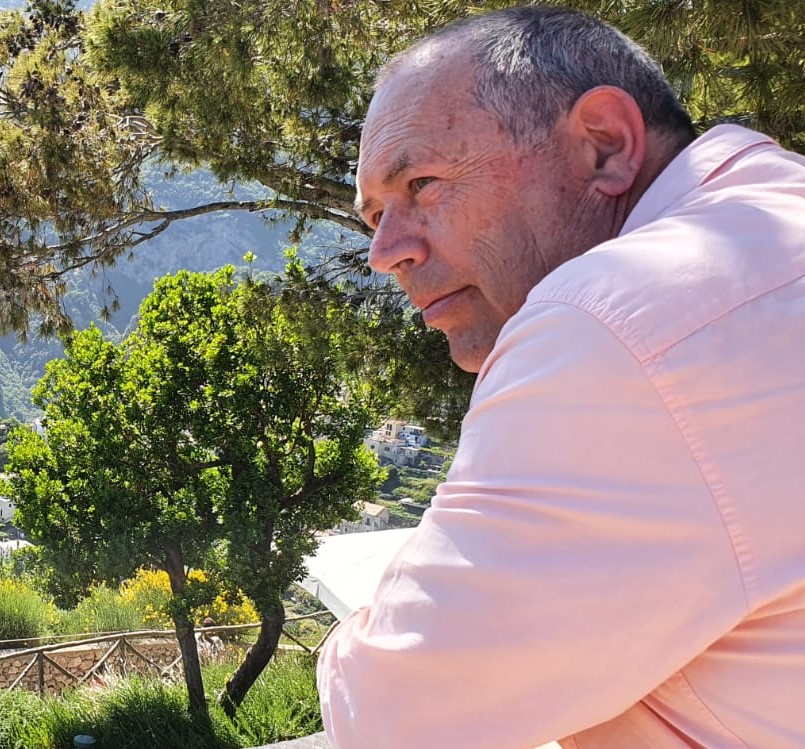 What was the process of elaborating the Management Plan and what aspects were taken into account the most? What was the process of elaborating the Management Plan and what aspects were taken into account the most?
As mentioned above, the Management Plan was drafted by an interdisciplinary team that worked intensively for more than a year. The work coincided with the Covid pandemic, which made the drafting of the various documents even more difficult.
An analysis of the situation of the nominated sites and the associated landscape was carried out in order to formulate the appropriate organisational and programmatic proposals. Throughout the process, consultations were held with professionals from different disciplines and with interested citizens, and coordination meetings were held with the Consell Insular.
Should be highlighted the work carried out by Teresa Marot in the section on dissemination and enhancement, Dr. Rafael Mata in the aspects related to the landscape and the relationship between the Management Plan and the ITP, and Lídia Font in everything related to preventive conservation and restoration.
There is a part of the Plan focused on strengthening the relationship between the assets of Talayotic Menorca and the local community. What shortcomings did you detect and what are the lines of work to be followed to improve this identification with the heritage?
In the diagnosis carried out, it was found that the Menorcan population is very involved with the cultural heritage in general and more specifically with that of the Talayotic period. However, during the long road of the candidacy there has been an increase in the Menorcans' knowledge of their own heritage, but as I have already said, we are convinced that for the protection and enhancement of heritage to work well it is necessary for the local population to be actively involved. That is why the Management Plan includes initiatives to maintain and increase public involvement.
The Forum of Owners and Managers regulates the participation of all owners in the management of cultural heritage, but this is not all; the Management Plan provides for the Talayotic Menorca Agency to be equipped with a Social Council, participation mechanisms are proposed through social networks and dissemination programmes that involve the active participation of associations, a volunteer training programme and a series of programmes with schools to increase the number of young people committed to the conservation and dissemination of heritage.
The relationship with tourism is also one of the key points in the preservation of Talayotic Menorca. How can we achieve a balance between tourism and heritage?
This is one of Menorca's major challenges with regard to the UNESCO declaration. Menorca today lives mainly from tourism and this will continue to be the case, but it is essential that we are all capable of maintaining a diversity in the island's economic activity if we want to continue to maintain our landscape and our way of being. In this sense, it is necessary to continue working for a Menorcan countryside in which agricultural and livestock activity goes hand in hand with technological development that helps the profitability of the production units.
This is essential to maintain a balance between tourism, heritage and landscape. Menorca's cultural heritage is an important attraction if we want to contribute to the deseasonalisation of tourist visits, but we must be careful not to exceed the limits of what the heritage, the landscape and the citizens can bear. One of the ways proposed in the Management Plan is a certain reconversion of the type of tourism from sun and beach holidays, which are concentrated at the peak of the summer, to cultural and nature tourism spread throughout the year.
|
Celebrating the Talayotic winter solstice: the solar hierophany of So na Caçana
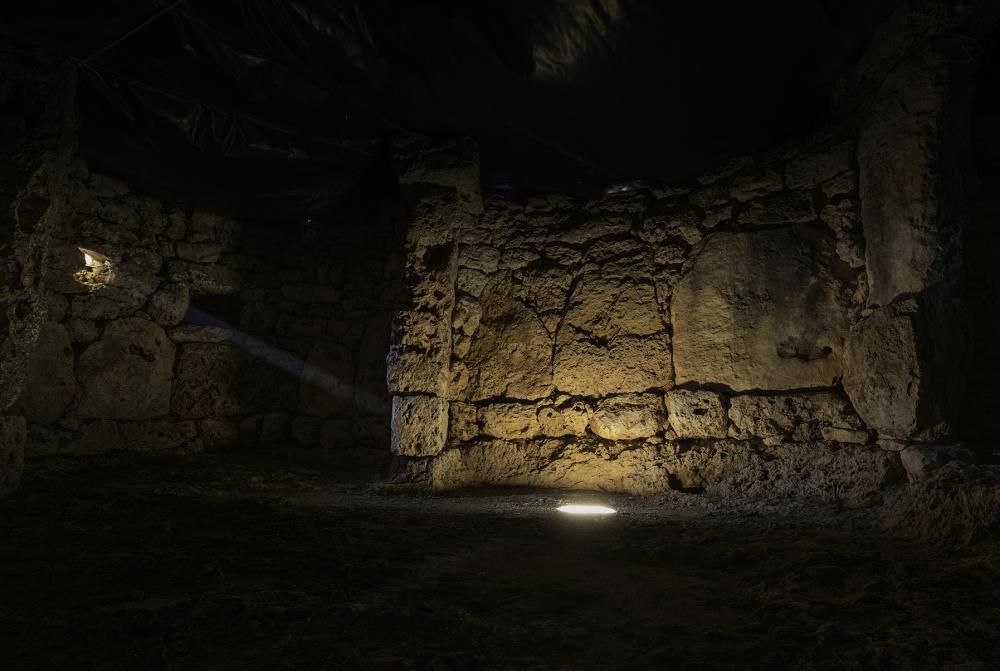 The Talayotic Menorca Agency and Nurarq are organising three guided visits to the west taula enclosure of So na Caçana on the 21st, 22nd and 23rd of December, when a very special archaeo-astronomical event will take place that could indicate that the sun was one of the divinities of the Talayotic pantheon. The activity will recreate the original internal environment of the sanctuary, during the midday of the winter solstice. Due to the small size of the site, the number of participants is limited and tickets will be allocated by lottery. The deadline for participation begins on December 5 and ends on December 12. The Talayotic Menorca Agency and Nurarq are organising three guided visits to the west taula enclosure of So na Caçana on the 21st, 22nd and 23rd of December, when a very special archaeo-astronomical event will take place that could indicate that the sun was one of the divinities of the Talayotic pantheon. The activity will recreate the original internal environment of the sanctuary, during the midday of the winter solstice. Due to the small size of the site, the number of participants is limited and tickets will be allocated by lottery. The deadline for participation begins on December 5 and ends on December 12.
On these dates, the sun's rays enter the building through a small window and illuminate a special place inside this taula enclosure where the figures of the divinities were located. For the Menorcans of the Talayotic period, this would represent a hierophany. In other words, the sun was one of the main divinities of the Talayotic pantheon and the penetration of its rays into the taula enclosure represented a manifestation of this divine entity.
Once the participants enter the taula enclosure, a detailed explanation of the phenomenon will be given, and its development will be observed with the accompaniment of one of the members of the team that discovered and documented this event. They will also explain what a taula enclosure is, what rituals have been documented inside it and the latest research and hypotheses on the symbolic world of the late Talayotic period.
During the course of the activity, we will have the opportunity to taste the winning dessert of the "El dolç talaiòtic" competition, inspired by the natural environment of Talayotic Menorca.
Scientific study
Earlier this year a team of researchers from Menorca published a scientific article on this phenomenon in Spal. Revista de Historia y Arqueología, of the University of Seville. The study describes this archaeoastronomical event in the western taula enclosure of So na Caçana, a phenomenon that had not been detected until now.
The authors of this study are Irene Riudavets González (PhD student at the University of Barcelona/Nurarq SC/Institut Menorquí d'Estudis), Antoni Ferrer Rotger (director of the Menorca Talayotic Agency), Sebastià Barceló Forteza (Dept. of Theoretical Physics and Cosmology of Menorca) and Sebastià Barceló Forteza (Dept. of Theoretical Physics and Cosmology of Menorca). de Física Teórica y Cosmología de la Universidad de Granada), Gerard Remolins Zamora (Università di Bari/ReGiraRocs SLU), Antoni Cladera Barceló (PhotoPills SL) and Cristina Bravo Asensio (Institut Menorquí d'Estudis/Nurarq SC).
The phenomenon was recorded by photographer Antoni Cladera: https://www.youtube.com/watch?v=9bO4HPCFiwE
How to participate in the draw
Tickets to attend the So na Caçana archaeoastronomical event will be allocated in a raffle open to all citizens. Those interested in participating should send an e-mail to solsticitalaiotic@gmail.com indicating the day they would like to attend the activity and explaining very briefly the reason for doing so. The deadline for participation begins on December 5 and ends on December 12 at midnight.
Only one participation request per person will be accepted and each winner will have two tickets. Important: applications that do not indicate date and reason will not be entered into the draw.
The draw will be made in a public ceremony at the headquarters of the Consell Insular de Menorca, at Plaza Biosfera, 5, on December 13 at 12 p.m. There will be three separate draws, one for each day.
Each participant will be assigned a number which will be communicated by e-mail. If a winner is unable to attend, the next person on the draw list will be notified.
|
Women in Talayotic Menorca
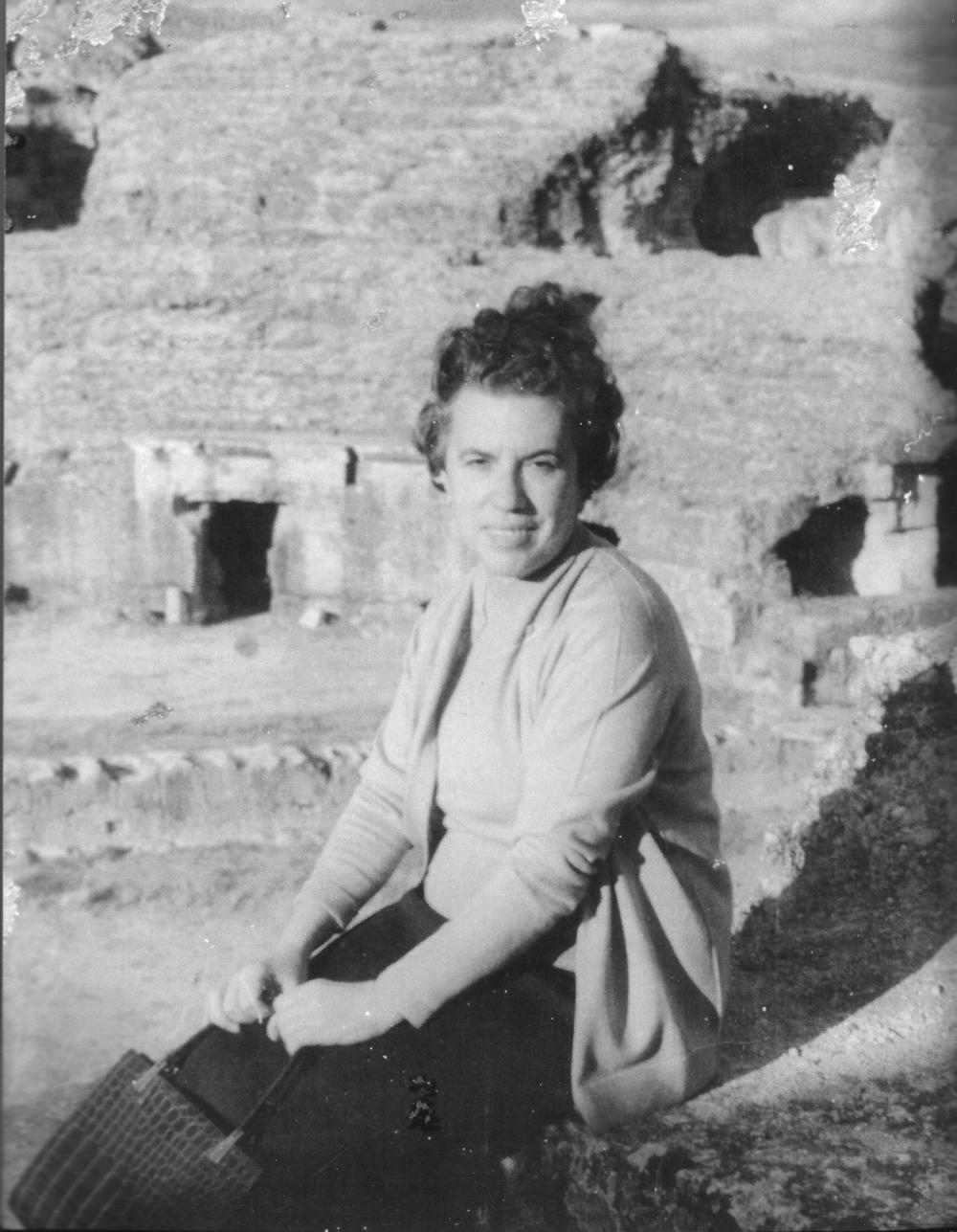 The association Women for Dialogue and Education and its project "Women in the World Heritage of Spain" dedicate a space to the role of women in Talayotic Menorca this November. Its president, Giovana G. Calderón, has interviewed Antoni Ferrer, director of the Talayotic Menorca Agency, on the programme "Marca España" on Radio Exterior de España, where they delve into the life of women in these island societies and the contribution of women archaeologists to the discovery of our prehistoric legacy. The association Women for Dialogue and Education and its project "Women in the World Heritage of Spain" dedicate a space to the role of women in Talayotic Menorca this November. Its president, Giovana G. Calderón, has interviewed Antoni Ferrer, director of the Talayotic Menorca Agency, on the programme "Marca España" on Radio Exterior de España, where they delve into the life of women in these island societies and the contribution of women archaeologists to the discovery of our prehistoric legacy.
As Calderón explains on the "Women in the World Heritage of Spain" website, there is still not much information on the role of women in Talayotic Menorca, but some studies will soon provide us with more data. According to Antoni Ferrer, as the burials were collective, the bones are not usually found in anatomical connection. Therefore, in many cases we don't know whether a specific bone belonged to a man or a woman. Likewise, the absence of grave goods or ornaments is another problem when it comes to identifying these remains.
On the other hand, no differences have been documented between the sexes in terms of intense physical effort, but it's unknown whether this lack of differences may be due to the reason mentioned above. Perhaps genetic analyses, which can differentiate the sex of the individual, may provide data in this regard in the near future.
What is known is that men had a longer life expectancy. Fewer adult females appear in burial sites, suggesting that they died before reaching adulthood in a higher proportion than males. It has been suggested that women may have been less well nourished and/or cared for during childhood.
On the other hand, pregnancies were physically demanding for women, which could also influence their shorter life expectancy. In any case, between the ages of 15 and 20, there was a higher mortality rate among women, linked to complications during the first pregnancy.
Pioneering women archaeologists
Among the pioneering archaeologists in the research of Talayotic Menorca, Margaret Alice Murray (1863-1963), an Anglo-Indian anthropologist and the first woman Egyptologist, stands out. She was appointed professor of archaeology in the United Kingdom and worked at University College London (UCL) from 1898 to 1935. Unable to return to Egypt due to World War I, she focused her research on the witch cult hypothesis. Murray also became closely involved in the suffragette movement, joining the Women's Social and Political Union of England (WSPUS) and devoting much time to improving the status of women at UCL. From 1921 to 1931 Murray worked in prehistoric sites in Malta and Menorca.
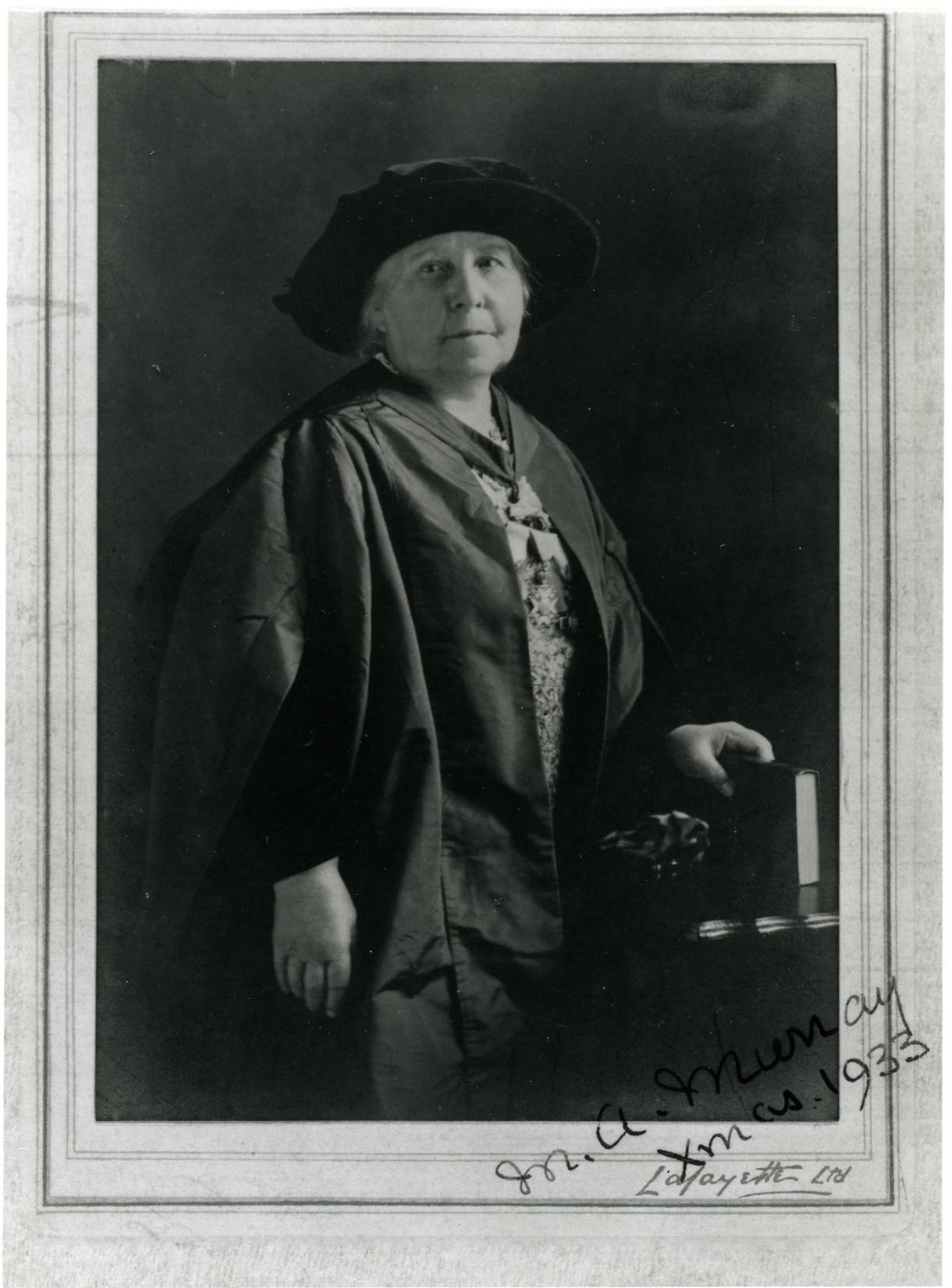 She lived in Menorca between 1930 and 1931 where she developed her interest in folklore and was the first person to undertake a modern archaeological excavation in Menorca. This first scientific excavation of a Menorcan site was commissioned by the Museum of Ethnology at Cambridge University. The work was compiled in three fundamental volumes for the study of prehistoric archaeology, Cambridge Excavations in Minorca (1931-34), which included more than one hundred pages with images and photographs.
She returned years later to explore the island of Lazareto. Margaret Murray wrote independently and, even when she was 100 years old, published a final work, her autobiography titled My First Hundred Years (1963). Later that same year she died of natural causes.
Another pioneer was the Menorcan archaeologist Maria Lluïsa Serra Belabre (1911 - 1967), who carried out her research between the 1950s and 1960s. She was also a historian, archivist and librarian and dedicated her life to the cultural heritage of the island where she was born. She was director of the Casa de Cultura in Maó (Menorca), among many other responsibilities. She studied the history of Menorca through its archives, libraries and archaeological sites.
Of all the sites she studied, Sant Vicenç d'Alcaidús (Alaior, Menorca) stands out as the key to her theories on the Talayotic dwellings. One of her main contributions to research was the systematisation of the island's prehistoric domestic units, known as circles. She also directed numerous field interventions on the island, including the discovery of the early Christian basilicas of Es Fornàs de Torrelló and Isla del Rey, and the excavations of, among others, the naveta of Biniac.
With Luis Pericot, she co-directed an ambitious project with a grant from the March Foundation that included the archaeological excavation of numerous settlements, the preparation of topographies and planimetries, and the restoration of the famous naveta des Tudons.
Serra disseminated Menorca's rich heritage through various scientific and informative publications, in addition to her participation in countless national and international congresses. She placed Menorca at the centre of the scientific scene, the highlight of which was the organisation of the 10th National Archaeology Congress on the island (1967). She left unfinished a major project, La historia de Menorca (The History of Menorca). The short strory of this work was recounted in the Revista de Menorca years later, in 1973.
|
Talayotic Menorca at the first congress "Sardinia, the island of the Nuraga" and at the XVII Meeting of World Heritage Managers
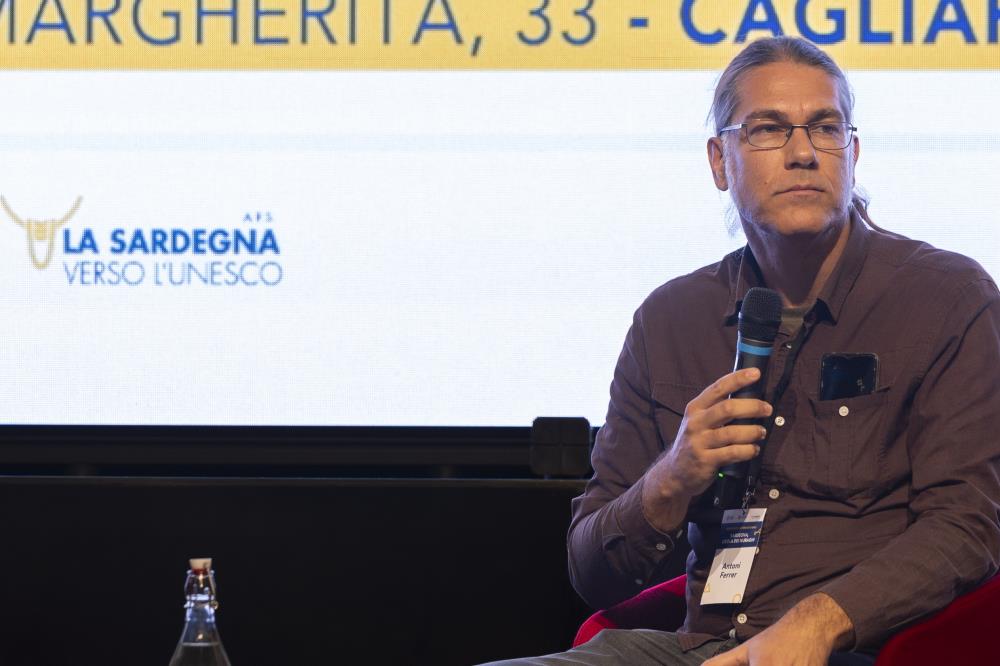 Antoni Ferrer, director of the Talayotic Menorca Agency, took part in the first international congress "Sardinia, the Island of the Nuraga", which brought together a large group of international experts on the Italian island on 16th and 17th November. Focused on promoting the candidacy of the Sardinian nuragic heritage for UNESCO World Heritage, the organisers wanted to count on Ferrer's participation to delve into the experience of Talayotic Menorca. Antoni Ferrer, director of the Talayotic Menorca Agency, took part in the first international congress "Sardinia, the Island of the Nuraga", which brought together a large group of international experts on the Italian island on 16th and 17th November. Focused on promoting the candidacy of the Sardinian nuragic heritage for UNESCO World Heritage, the organisers wanted to count on Ferrer's participation to delve into the experience of Talayotic Menorca.
Under the title "Island sites: characteristics and management. The case of Menorca, a new UNESCO property 2023", the director of the agency highlighted the uniqueness of Menorca as an archaeological treasure, as well as going into the achievements and the challenges that Menorca Talayotica faces from now on. Ferrer highlighted three key points: guaranteeing the proper conservation of sites that do not have access control or surveillance systems, avoiding that the incription as a World Heritage Site contributes to the overcrowding of the island, and establishing a stable system of collaboration between the agency and the owners of the assets.
The conference panel consisted of archaeologists, economists, marketing experts, managers, anthropologists and geneticists with the aim of making the point that the help of various sciences and professionals is necessary to communicate the immense value of an ancient civilisation.
Nuraxi of Barumini
At the beginning of the second millennium BC, in the Bronze Age, a type of defensive structure called nuraghi, circular towers in the form of truncated cones, built with large ashlars, was created on the island of Sardinia. The most beautiful and complete example of this remarkable prehistoric architectural construction is the Barumini complex, which was enlarged and reinforced in the first half of the first millennium BC under pressure from the Carthaginians.
This archaeological site comprises a nuraghe complex and an important hut settlement, a unique site, which was declared a UNESCO World Heritage Site in 1997. The archaeological site was brought to light in the fifties of the last century thanks to the excavations carried out by Giovanni Lilliu. From 2021, Sardinia is seeking UNESCO recognition of its entire territory as an "open museum" and cultural landscape.
17th Meeting of World Heritage Managers
 On the other hand, the head of the Historical Heritage Service of the Consell Insular, Joana Gual, took part on November 17 in the XVII Meeting of World Heritage Managers held in Madrid last week.
At the round table on citizen participation, Gual explained the long process to achieve World Heritage status for Talayotic Menorca, explaining the awareness-raising initiatives carried out by the Consell Insular, the participatory activities organised within the framework of three international congresses of good practices, the proposals and actions implemented by both public and private entities, and the challenges that have been faced over the years in different areas of participation.
This annual forum, created in 2007 by the Ministry of Cultural Affairs and Sports, analyses and debates initiatives and projects for the management of sites inscribed on the UNESCO World Heritage List. It is a highly valued meeting among managers because it allows them to share experiences, learn about different guidelines for action and compare criteria that contribute to better management.
|
"These last fifteen years of archaeological research have been key to giving a coherent theoretical basis to the Talayotic Menorca dossier"
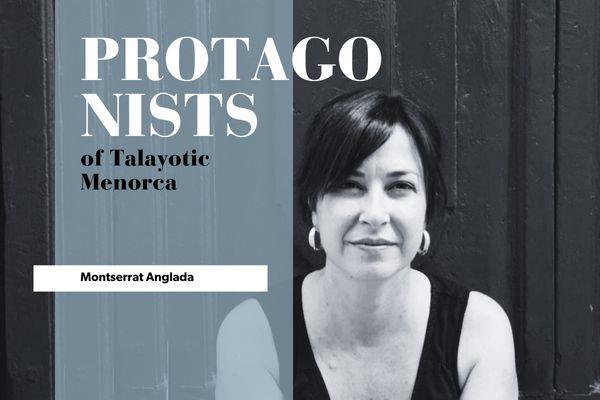 Montserrat Anglada is an archaeologist specialising in historical heritage conservation and works as a technician at the Museu de Menorca. She is a member of the Governing Council of the Talayotic Menorca Agency. Since 2001 she has worked on various archaeological projects in Menorca, Mallorca and Catalonia. Her research has focused on the prehistory of Menorca and she has been part of the management teams of the of Cornia Nou project (Maó), Projecte Entre Illes (Es Coll de cala Morell in Ciutadella and sa Ferradura in Porto Cristo), Sant Agustí Vell (Es Migjorn) and the hypogeum of sa Mola (Alaior). He has also co-directed the projects of Sa Cudia Cremada (Maó) and Talaies de Can Jordi (Santanyí) until 2018. Montserrat Anglada is an archaeologist specialising in historical heritage conservation and works as a technician at the Museu de Menorca. She is a member of the Governing Council of the Talayotic Menorca Agency. Since 2001 she has worked on various archaeological projects in Menorca, Mallorca and Catalonia. Her research has focused on the prehistory of Menorca and she has been part of the management teams of the of Cornia Nou project (Maó), Projecte Entre Illes (Es Coll de cala Morell in Ciutadella and sa Ferradura in Porto Cristo), Sant Agustí Vell (Es Migjorn) and the hypogeum of sa Mola (Alaior). He has also co-directed the projects of Sa Cudia Cremada (Maó) and Talaies de Can Jordi (Santanyí) until 2018.
What made you decide to study the Talayotic culture?
Honestly, I had no particular predilection for Talayotic culture until I returned from Barcelona, where I studied and then worked. Once I settled in Menorca, I came into contact with the Museu de Menorca and its team. Stimulating projects such as Cornia Nou began to emerge, and I was completely hooked. Nowadays, I am more dedicated to the dissemination and divulgation part of my work as a technician at the Museu de Menorca.
During your career you have worked on several projects related to the Talayotic culture both in Menorca and Mallorca. How important is it to understand the connection between the Mediterranean islands from an archaeological point of view?
Very important. The connection between the Mediterranean islands is a well-known topic in the last centuries of the late Talayotic period. However, there is still a lot of work to be done to find out about the population flows that moved between islands, to what extent Menorca participated in the trade networks of the Bronze Age and the Early Iron Age, and how intensely these exchanges took place. What is clear is that during the Bronze Age, the material culture and architecture of Mallorca and Menorca were very similar, and from 1200-1100 BC, with the beginning of the Talayotic culture, each island began to have its own well-defined characteristics. For example, the talayots of Mallorca and Menorca are very different, or, for example, funerary navetas are built here, while in Mallorca they do not exist. However, we do know, through studies of materials such as metals, that there were commercial exchanges, above all related to the raw materials used to make metal tools. This is a complex subject and there are several teams working on it.
What are the most recent contributions of archaeological research to our understanding of Talayotic Menorca, and which do you find most remarkable?
There are a great many. We have to think that there are currently a dozen research teams on the island carrying out excavation campaigns every year. A few years ago, I would never have thought that was possible! This means that a great deal of progress is being made in our knowledge of the Talayotic culture. I think that the last fifteen years have been key to providing a coherent theoretical basis for the Talayotic Menorca dossier, and there are many researchers from many disciplines who have collaborated. Therefore, the greatest contribution to Talayotic Menorca, in my opinion, has been the archaeological research projects. Without data collection, there are no studies. Nowadays, the number of articles on the prehistory of Menorca has multiplied; some of them can be found in highly respected journals, and this is also an international projection for Talayotic Menorca.
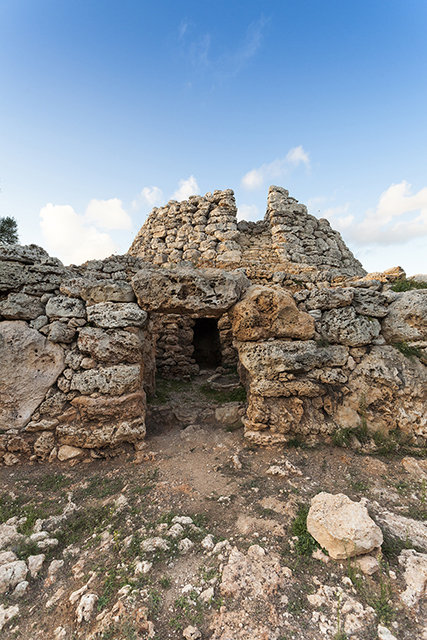 What is the archaeological importance of Cornia Nou in the context of Talayotic Menorca? What is the archaeological importance of Cornia Nou in the context of Talayotic Menorca?
Cornia Nou is a key site for understanding the early phases of the Talayotic culture on the island. But I would like to highlight three issues: firstly, it has been possible to document how a talayot was built based on the excavations carried out in 2014 on the upper platform of the western talayot. Secondly, a new type of monumental building for the management and processing of food by an entire Talayotic community was discovered, which has given rise to very interesting studies. And finally, we have dates that place the western talayot between 1200 and 1100 BC, and which have allowed the Cornia Nou team to postpone the beginning of the Talayotic culture to the end of the 2nd millennium, which proposes a new chronological framework for the prehistory of Menorca.
Regarding the Entre Illes project, what are the most important advances that have been made this year?
The Entre Illes project is part of a shared project between researchers from Menorca and Mallorca. We are analysing two prehistoric sites on the coast of the islands: Sa Ferradura (Porto Cristo) and Es Coll de Cala Morell (Ciutadella), both of which are located on walled promontories. In the navetas settlement of Es Coll de Cala Morell this year we completed the excavation of the set of cisterns or water collection basins located in the centre of the settlement. This is the first time such an ancient structure has been excavated - a true work of engineering that is more than 3,500 years old!
How have these two projects contributed to our understanding of Talayotic history?
On the one hand, Es Coll de cala Morell has allowed us to discover an exceptional navetas settlement in an inhospitable place, where a community lived in quite difficult conditions, to protect themselves from other communities living in Menorca. This settlement indicates possible moments of instability between different human groups between 1600 and 1200 BC, when we have dated the abandonment of the settlement. It has been seen that this is not the only navetas settlement that was located in an easily defendable site. In the Algaiarens area there are several navetas settlements on top of hills with defensive walls. There’s still a lot to discover!
On the other hand, Cornia Nou is changing the paradigm and places the beginning of the Talayotic culture around 1200 and 1100 BC. From that same period we have a good funerary record thanks to the Cova des Càrritx, Cova des Pas and now also Biniedrís. With Cornia Nou we have discovered a complex of buildings related to the living spaces of the early Talayotic period (1200-600 BC).
At the end of November a new campaign will start in Sant Agustí. What are your long-term objectives?
This year marks the beginning of a new five-year period, and a room that is being excavated just before the entrance to the corridor that leads to the interior of the "ses vigas de mata" talayot must be finished. In the long term, the project's plan is to excavate the South Building attached to the talayot, which preserves part of the roof. Fascinating!
Now that we are a World Heritage Site, what challenges do you think lie ahead for Talayotic Menorca?
Basically the management of this World Heritage Site, which is the work that UNESCO has entrusted to us, not only to the institutions but to Menorca as a whole. We must also see how it can be instrumentalised in relation to cultural tourism. On the other hand, the archaeological research teams are working quite precariously; there is a lack of infrastructure. In this sense, the Talayotic Menorca Agency should play a key role.
|
The five-year project at the coastal settlement of Coll de Cala Morell comes to an end
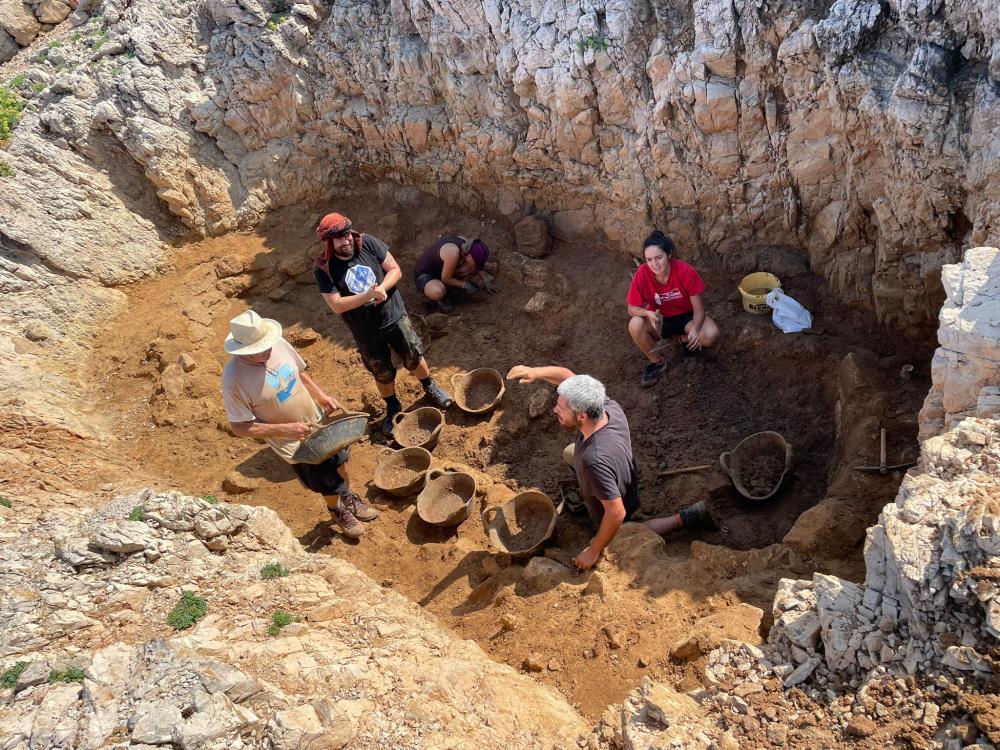 Over the first three weeks of October, a new archaeological campaign was carried out at the navetas settlement of Es Coll de cala Morell, focusing on the excavation of the so-called Alberca Sur (South Tank). This artificial depression is part of a unique hydraulic structure in Balearic prehistory, formed by a set of two tanks for collecting rainwater located in the centre of the promontory. Over the first three weeks of October, a new archaeological campaign was carried out at the navetas settlement of Es Coll de cala Morell, focusing on the excavation of the so-called Alberca Sur (South Tank). This artificial depression is part of a unique hydraulic structure in Balearic prehistory, formed by a set of two tanks for collecting rainwater located in the centre of the promontory.
This 2023 intervention concludes the five-year project (2019-2023) at es Coll de cala Morell, during which navetas 14 and 15 and the South Tank have been excavated, in addition to various restoration and adaptation works at the site.
The settlement of Es Coll de cala Morell is made up of some 15 navetas. These constructions are the typical dwellings of much of the Bronze Age in Menorca and Mallorca. The settlement also has a defensive wall and a building of uncertain function in the highest part of the settlement. The site was occupied between 1600 and 1200 BC, before the Talayotic period.
The construction of the south tank began with the excavation of the natural rock, leaving a cut-out in the shape of an elliptical cylinder, with approximate dimensions in plan of 8 m and 4 m in greatest and smallest diameters, respectively. Given that the surface of the promontory has a significant slope, the depth of the excavation is variable, reaching more than 3 m at the southern end. The entire interior cut-out is covered by an isodome wall, a very rare construction technique in the Bronze Age in Menorca. This wall combines ashlars from three different geological formations: Jurassic dolomites from the promontory's own substratum, but also Miocene limestone and Quaternary calcarenites brought from the interior.
The space between the rock cut-out and this wall was filled with clay, possibly to waterproof the side of the tank. The bottom of the tank was also formed by a layer of clay, in this case deposited on top of a very carefully made tiling.
The excavated levels inside the tank were basically made up of filling material. There were very few finds. The team found a globular container of the pitoid type resting on the layer of clay at the bottom of the tank. This vessel was very fragmented but retained its full volume. Unfortunately, when it was half excavated, it was vandalised and, one morning, the entire upper part of the piece was found to have been mixed up. This will make the work of restoring the container extremely difficult, if not impossible.
This intervention is part of the Entre Illes project, which also includes the excavation of the Sa Ferradura site (Manacor, Mallorca) and is promoted by the Manacor History Museum, the Association of Friends of the Museum and the Ciudadela-Can Saura Municipal Museum. The excavations at Es Coll de Cala Morell are financed by the Consell Insular de Menorca and the Ciutadella Town Council.
|
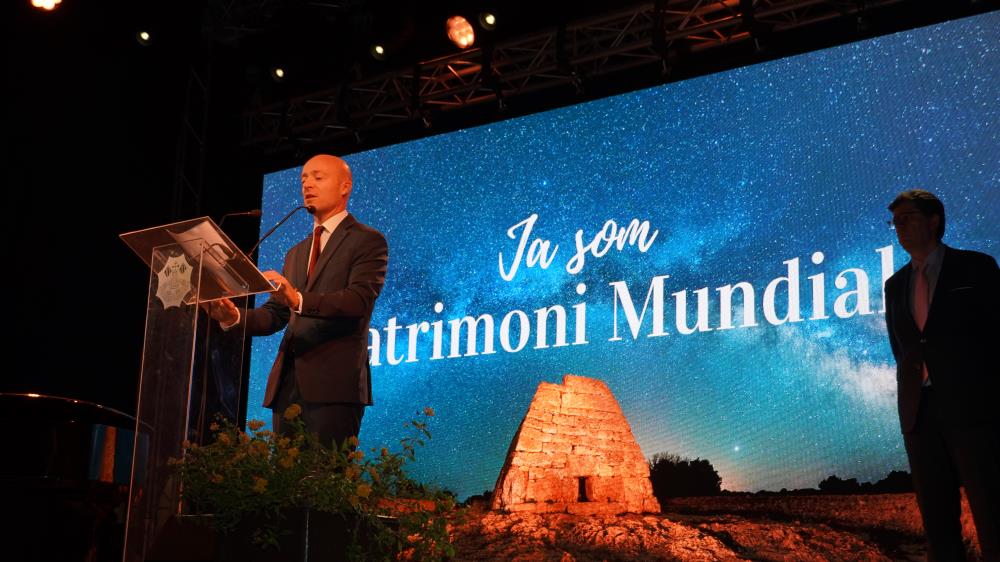
Menorca celebrates World Heritage inscription
¿¡[AQUI]¡¿The celebration of Talayotic Menorca as a World Heritage Site has brought together half a thousand people in the Talayotic settlement of Son Catlar (Ciutadella), in a night full of emotion and Menorcan talent.
Led by the president of the Consell Insular de Menorca, Dolfo Vilafranca, the entire government team attended the event. The conseller of Tourism, Jaume Bauzà, was the representative of the Balearic Government. In his speech, Bauzà thanked the Menorcans for "having been able to conserve this impressive heritage, which is the pride of all of you when thousands of visitors come and are amazed". Quoting the Menorcan writer Àngel Ruiz i Pablo, he added: "The majesty of Talayotic Menorca amazed Ruiz i Pablo and still amazes us today. May this UNESCO declaration serve to encourage many more to do so from now on."
For his part, Vilafranca said: "We have returned from Riyadh with the UNESCO distinction because we have a valuable and unique heritage at local and world level, because we have the will to preserve it for posterity, to investigate it and to make it known to the society."
The opposition was represented by Bárbara Torrent (PSOE) and Josep Mercadal (Més por Menorca), among other political representatives. Also present at the event were the three former consellers of Cultural Affairs, Miquel Àngel Maria, Joan Lluís Torres and Maruja Baíllo, as well as the former president of the Consell Marc Pons. The mayoress of Ciutadella, Juana Mari Pons; the mayor of Maó, Héctor Pons, and Pedro Pons Huguet, mayor of Ferreries, also attended the event.
A night of music
With the artist Àngels Anglada as master of ceremonies, the evening began with a glosa by Moisès Coll and Miquel Llufriu on guitar, and ended with a performance by the Menorcan baritone Simón Orfila and the soprano Rosalía Cid, accompanied on piano by Alejandro Calafat. The repertoire performed by Orfila and Cid included operatic pieces such as "La Calunnia", from Rossini's Il Barbiere di Siviglia, and popular classics such as "Sa balada d'en Lucas", by Ortega Monasterio.
|
"Entre el cel i la mar" at Trepucó on October 6
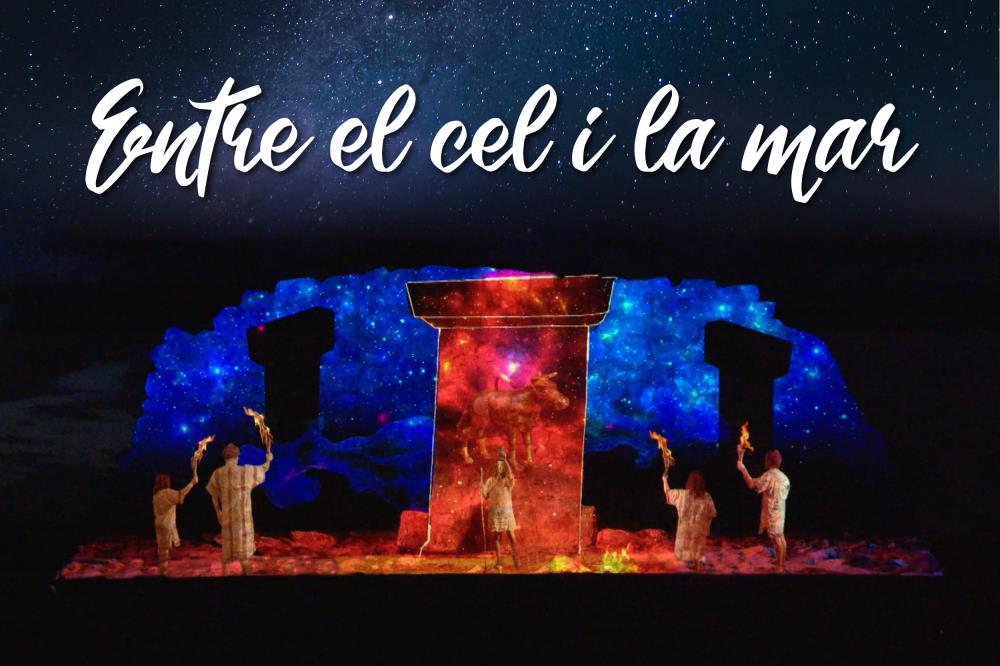 "Entre el cel i la mar" is the title of the show produced by the Talayotic Menorca Agency and the company iluminaM that will take place on October 6 in Trepucó, Maó. The event will consist of three projections, free of charge, scheduled for 8:30 pm, 9:15 pm and 10:00 pm. This mapping of light and music is part of the actions to celebrate the recent inscription of Talayotic Menorca on the UNESCO World Heritage List. "Entre el cel i la mar" is the title of the show produced by the Talayotic Menorca Agency and the company iluminaM that will take place on October 6 in Trepucó, Maó. The event will consist of three projections, free of charge, scheduled for 8:30 pm, 9:15 pm and 10:00 pm. This mapping of light and music is part of the actions to celebrate the recent inscription of Talayotic Menorca on the UNESCO World Heritage List.
The show will trace the genesis and evolution of Menorca's Talayotic culture, from the Bronze Age to its decline with the Roman occupation of the island (123 BC), and will end by explaining the historical legacy that survives today. This is the story of an exceptional prehistoric civilisation - now recognised as a World Heritage Site - that developed on this island, trapped between the sky and the sea, and which forever marked our landscape with its monumental constructions.
The mapping has a soundtrack composed by David Prats. The audiovisual show production company iluminaM specialises in mapping and large-format projections, and is headed by Kodomos, creative director, and Tomeu Fiol, technical director and producer.
Trepucó is one of the largest Talayotic settlements in Menorca, with an area of more than 4 ha, and was originally walled. Today only a small part of the settlement remains: some sections of the wall with two square towers, two talayots, the taula enclosure and some perfectly visible remains of dwellings.
The main talayot, where the projections will be shown, and the taula are located in the centre of a star-shaped fortification, built in dry wall during the 18th century by the Spanish troops who besieged the British-held Sant Felip Castle.
Practical information
The screenings are free and aimed at audiences of all ages. Capacity is limited and it is essential to register in advance by sending an email to info@menorcatalayotica.info. Please indicate your name, surname and ID number, as well as the screening you wish to attend (8:30 pm, 9:15 pm or 10:00 pm).
Access to the site must be through the entrance located in the Bintaufa area. Cars can be parked in the area of the Pasqual Calbó and Cap de Llevant secondary schools and the Menorca pavilion. Once there, follow the marked route until you reach the main talayot of Trepucó, where the three sessions will be held (information map attached). The route to the talayot will be illuminated to make it easier to walk. It is recommended to wear suitable footwear for walking on unpaved paths.
|
Talayotic Menorca declared a UNESCO World Heritage Site
Talayotic Menorca has been officially inscribed on the UNESCO World Heritage List this September 18 during the 45th Session of the World Heritage Committee held in Riyadh (Saudi Arabia), thus recognising its exceptional universal value.
This inscription also demonstrates the good conservation of the island's prehistoric heritage and the capacity of the competent administration to guarantee its integrity in the future. In this regard, it should be noted that the Consell Insular de Menorca, as the institution with jurisdiction over the island's historical heritage, has played a leading role, always with the support and advice of the Government of the Balearic Islands and the Spanish Ministry of Cultural Affairs and Sport.
"With this recognition Menorca once again occupies a prominent place on the world stage. Menorca's heritage is now recognised by UNESCO as a representative of universal values, as an example of authenticity and integrity. We are a benchmark of good management and conservation of natural and archaeological heritage. 30 years after Menorca was declared a Biosphere Reserve, the island is once again an international protagonist. Few places in the world have this double recognition from UNESCO. We can be very proud of what we are and what we have achieved," said the president of the Consell Insular de Menorca, Adolfo Vilafranca.
Menorca, World Heritage
As a UNESCO World Heritage Site, Talayotic Menorca is considered the unique testimony of an island prehistoric culture with an exceptional repertoire of monuments illustrating the different stages of prehistory.
The high density of prehistoric sites, their unusual level of conservation and the unique constructions of Menorca - the funerary navetas, circular houses and taulas, together with the talayots and other structures - are considered by UNESCO to be an exceptional example of cyclopean architecture and its evolution over 1,500 years, which represents an important source of knowledge about the life of the Talayotic people.
The declaration of Talayotic Menorca is an outstanding contribution to the recognition of the islands on the World Heritage List, specifically with regard to their prehistory and more specifically to the Bronze and Iron Ages. This inscription fills a gap in the world's ancient island cultures, helping to forge a more representative and balanced list of world heritage.
The distinction achieved will be an incentive for the dissemination of Menorca's prehistoric heritage, which is still not sufficiently well known at an international level. On the other hand, it is hoped that the inscription will help to attract new resources for the conservation and scientific research of the vestiges of the Talayotic culture.
Chronology of the candidacy
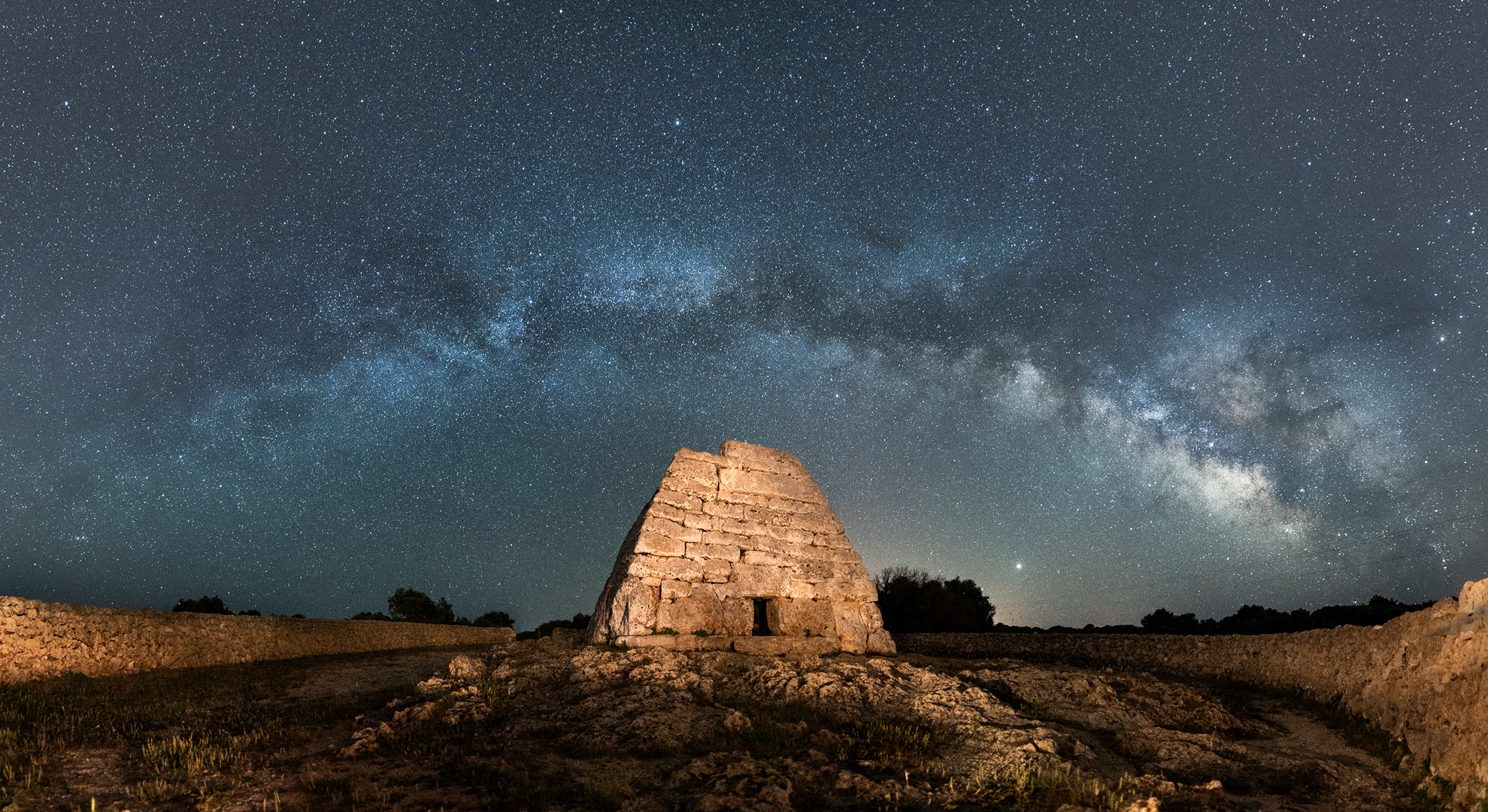 The first steps were taken in 2009, when the Institut Menorquí d'Estudis proposed to the Consell Insular de Menorca to begin the procedures to obtain UNESCO recognition. In 2010, the plenary session of this institution unanimously approved the initiation of the process, and in 2011 the drafting of the dossier began.
In January 2013, Talayotic Menorca was inscribed on the Ministry of Cultural Affairs' Tentative List, and in 2015 it became Spain's official candidacy. In 2016 a first dossier was submitted to UNESCO, but ICOMOS recommended reformulating the document and submitting the candidacy to a new cycle of evaluation, a criterion that was ratified at the 41st World Heritage Committee, held in Krakow in 2017.
From that moment on, the process of reformulating the dossier began, following the recommendations of ICOMOS, the most important of which referred to the need to introduce landscape aspects and the creation of a specific body for the management of the properties.
The new document was submitted to UNESCO in 2021, and the inscription was to be raised at the 2022 World Heritage Committee, which was to be held in Kazan (Russia). However, the Russian invasion of Ukraine led to the cancellation of that meeting. After a period of uncertainty, the 45th Committee was convened in Riyadh (Saudi Arabia) and it is at this meeting that Talayotic Menorca has been inscribed on the World Heritage list.
Now, the Talayotic monuments and their associated landscapes have been recognised as of today as a legacy of humanity to be preserved for future generations.
|
Celebration event at Son Catlar on September 29
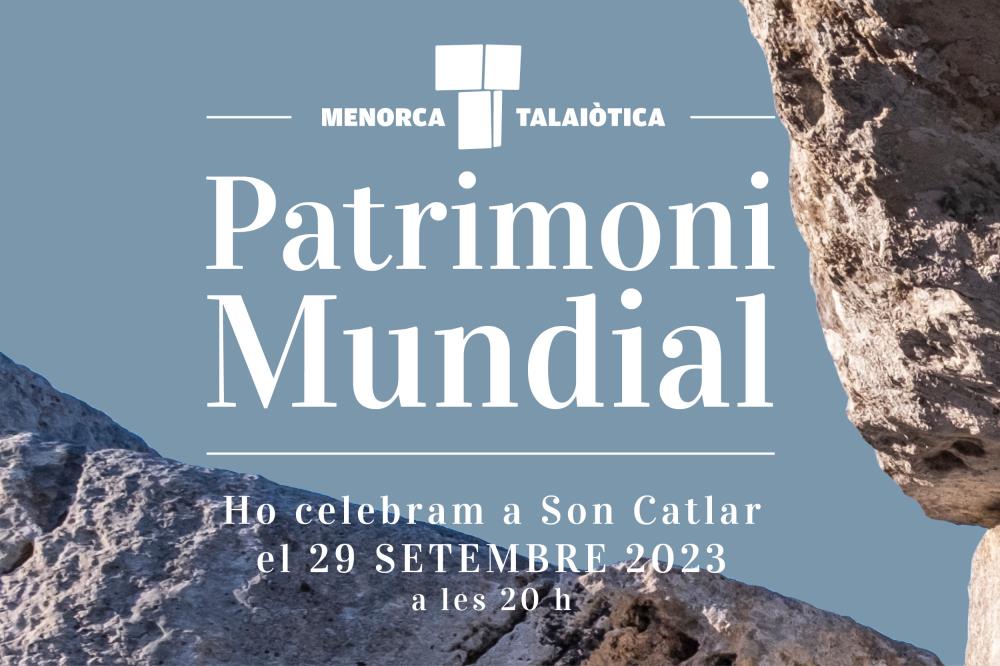 The Talayotic settlement of Son Catlar, in Ciutadella, will be the setting for the official ceremony to celebrate the nomination of Talayotic Menorca as a UNESCO World Heritage Site on September 29 (8 pm). The Consell Insular de Menorca is organising this event, which is open to everyone and free of charge. The Talayotic settlement of Son Catlar, in Ciutadella, will be the setting for the official ceremony to celebrate the nomination of Talayotic Menorca as a UNESCO World Heritage Site on September 29 (8 pm). The Consell Insular de Menorca is organising this event, which is open to everyone and free of charge.
Access will only be possible by bus from the different towns on the island with the corresponding ticket, which will be available to the public from September 20 at 12 pm on this link.
The event will feature musical performances by Moisès Coll, glosador, and Miquel Llufriu, guitar; and baritone Simón Orfila, accompanied by soprano Rosalía Cid and Alejandro Calafat on piano. You can watch it live on the Consell Insular de Menorca's YouTube channel.
The bus departures from each village are scheduled according to the timetables below. It is recommended to arrive 15 minutes in advance:
- Departure from Sant Lluís at 6:15 pm. Bus stop next to the tennis courts.
- Departure from Es Castell at 6:15 pm. Bus stop in front of the Roser church.
- Departure from Maó at 6:30 pm. Bus station.
- Departure from Alaior at 6:30 pm. Bus stop in front of IES Josep Miquel Guardia.
- Departure from Es Mercadal at 6:45 pm. Regular bus stop at Av. del Mestre Garí.
- Departure from Es Migjorn Gran at 6:45 pm. Bus stop at Los Nogales football ground.
- Departure from Ferreries at 7 pm. Regular bus stop at Av. de Jaime Mascaró.
- Departure from Ciutadella at 7 pm, from the Via Perimetral de Ciutadella, in front of the old cemetery.
Main recommendations:
- The event is scheduled for September 29, but in case of bad weather it will be moved to another day on the same weekend. The CIM will inform of possible changes through the different official, public and private channels (by email to those who have purchased tickets online). Reserved tickets can also be used in the event of a change for another day.
- Tickets can only be reserved online from September 20 at 12 pm at this link: https://www.nanventura.es/ca/activitats/menorca-talaiotica-patrimoni-mundial-ho-celebram-a- son-catlar/6199?d=2023-09-29.
- Each registered person can reserve up to 5 tickets at the time of booking.
- On the platform you will find different pictures of the event with the name of the village from where the buses will leave. Make sure you choose the right bus and village.
- Access to Son Catlar will only be possible with the corresponding ticket and by bus. Access by private car will not be allowed. The ticket will be used to access the bus.
- Please reserve the number of tickets you are sure to use. If you reserve a ticket that you will not use, you can give it to someone else or send a message to nan@nanventura.es with a request to cancel your booking. Returned tickets will be made available to the public again.
- Disabled persons, wheelchair users or those with specific needs who wish to attend, should contact the organisers at nan@nanventura.es before September 25 at 12 noon. These people should not reserve tickets through the normal procedure.
- Seats will be numbered. Therefore, the public should have their ticket ready so that they know exactly where their seat is.
|
Everything is ready for the trip to Riyadh
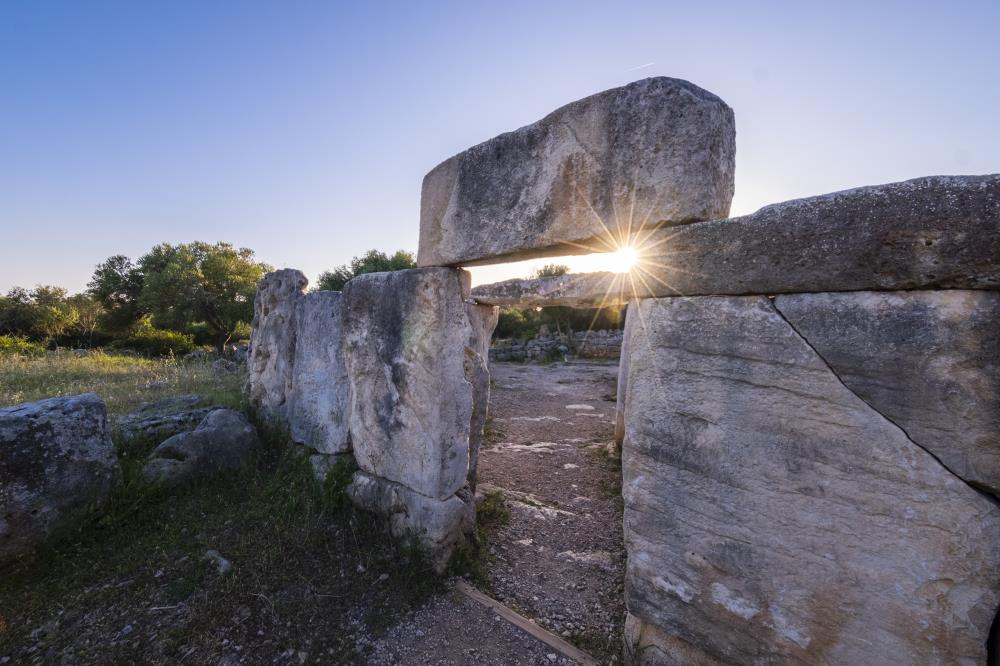 Led by the president of the Consell Insular de Menorca, Adolfo Vilafranca, the Menorcan delegation will begin its journey to participate in the 45th World Heritage Committee on September 15 via Barcelona and Doha, arriving in Riyadh (Saudi Arabia) on the night of the September 16. Once the possible inscription of Menorca on the UNESCO World Heritage List has materialised, they will begin their return journey on the September 20, arriving on the island on the 21st. Led by the president of the Consell Insular de Menorca, Adolfo Vilafranca, the Menorcan delegation will begin its journey to participate in the 45th World Heritage Committee on September 15 via Barcelona and Doha, arriving in Riyadh (Saudi Arabia) on the night of the September 16. Once the possible inscription of Menorca on the UNESCO World Heritage List has materialised, they will begin their return journey on the September 20, arriving on the island on the 21st.
Vilafranca will be accompanied by the second vice-president and conseller for the Environment, Simón Gornés; the conseller for Cultural Affairs, Joan Pons Torres, as well as Cipriano Marín, who since 2017 has coordinated the team in charge of reformulating the Talayotic Menorca candidacy. The president of the Government of the Balearic Islands, Margalida Prohens, will also be present at the Committee.
With the work to achieve the inscription already completed, the fundamental role of the delegations of the Consell Insular de Menorca and the Balearic Government will be that of institutional representation and participation in the 45th World Heritage Committee.
At the same time, the Menorcan delegation will establish contacts with other delegations to raise awareness of Talayotic Menorca in other countries and with a view to the future exchange of knowledge and experiences with places that have world heritage sites with similar characteristics and problems to those of Menorca.
"We are going to Riyadh with the conviction of a job well done by the Consell Insular and with the feeling that decisive days are approaching for a project, which has been developed over more than a decade based on consensus and enthusiasm", explains Vilafranca.
Inscription on the World Heritage List
The Committee has been underway since the September 10 and will continue until the 25th of this month. From the 16th, it will begin to examine the nominations for inscription on the UNESCO World Heritage List, starting with the nominations that could not be examined last year, such as that of Menorca. The full list can be consulted here.
The discussion of nominations for inscription on the World Heritage List begins on September 16 at 4:30 pm and runs until September 20. It is not possible to know exactly when Menorca will be nominated; the official nomination may take place between September 17 and 19. Sessions begin at 10 am and end at 6 pm, with a 2-hour lunch break (1 1 pm - 3 pm).
The order starts with the 2022 nominations and then continues with the 2023 nominations. They are in alphabetical order (in English) of the nominating States Parties. In any case, the sessions can be followed live on the UNESCO World Heritage website in English, French and Arabic.
Functioning of the Committee
The World Heritage Committee is composed of 21 members representing States Parties, which rotate every 2-4 years. The States that make up the current Committee are: Argentina, Belgium, Bulgaria, Egypt, Ethiopia, Greece, India, Italy, Japan, Mali, Mexico, Nigeria, Oman, Qatar, Russia, Rwanda, Saint Vincent and the Grenadines, Saudi Arabia, South Africa, Thailand and Zambia.
All of these States are entitled to vote on decisions. The decision to inscribe on the World Heritage List is put to a vote, or the Chairperson of the session may call for a favourable decision by general assent without a vote.
Only State delegations may be present at the Plenary Session of the World Heritage Committee. The rest of the guests, including the Balearic delegation, will be in the audience, except for the time when the inscription is being discussed.
|
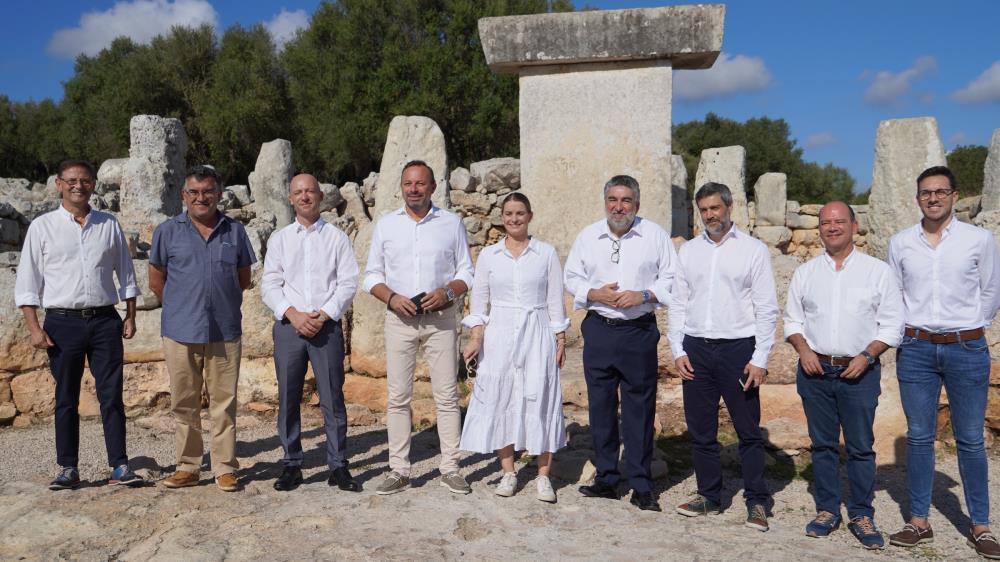
Visit of the Spanish Ambassador to UNESCO to Menorca
¿¡[AQUI]¡¿Spain's permanent delegate ambassador to UNESCO, José Manuel Rodríguez Uribes, and the president of the Government of the Balearic Islands, Margalida Prohens, visited the Talayotic site of Torralba d'en Salort today as the "final push" for Menorca's candidacy for UNESCO World Heritage status.
The 45th World Heritage Committee will be held from tomorrow in Riyadh (Saudi Arabia), although Menorca could receive official recognition between the 17th and 19th of September.
Prohens and Uribes made the visit accompanied by the president of the Consell Insular de Menorca, Adolfo Vilafranca, among other authorities.
"We will meet in Riyadh with the firm conviction that we will return with good news and be able to celebrate the fact that Talayotic Menorca is now a World Heritage Site," said Prohens, who pointed out that after the favourable report from ICOMOS there should be no obstacles to achieving this.
For his part, Vilafranca stated that "this visit reinforces Talayotic Menorca, a candidacy that began in 2009, a project of all Menorca and all Menorcans. The proclamation is just the starting point and we will provide the Talayotic Menorca Agency with more resources to boost management and research".
Group photo (left to right): Jaime Reurer, insular director of Cultural Affairs; Joan Simonet, conseller of Agriculture of the GOIB; Adolfo Vilafranca, president of the CIM; José Luís Benejam, mayor of Alaior; Margalida Prohens, president of the GOIB; José Manuel Rodríguez Uribes, Spanish ambassador to UNESCO; Isaac Sastre de Diego, director general of Cultural Heritage and Fine Arts of the Ministry of Cultural Affairs; Simón Gornés, conseller of Environment of the CIM; Joan Pons Torres, conseller of Cultural Affairs of the CIM.
|
Meeting with the Spanish Ambassador to UNESCO
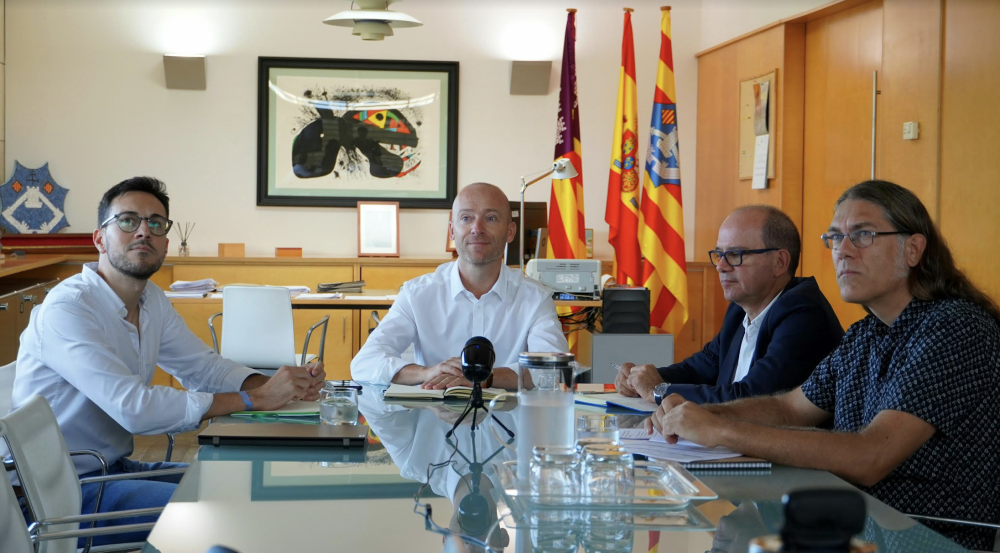
The president of the Balearic Government, Margalida Prohens, and the president of the Consell Insular de Menorca (CIM), Adolfo Vilafranca, met yesterday, 31st August, with the Spanish ambassador to UNESCO, José Manuel Rodríguez Uribes, to prepare for the Balearic delegation's participation in the World Heritage Committee to be held this September in Saudi Arabia.
Talayotic Menorca could receive official recognition from UNESCO as a World Heritage Site between 17 and 19 September. Prohens reiterated the Government's support for Menorca's candidacy.
Also taking part in the telematic meeting were the permanent delegate of the Spanish Embassy to UNESCO, Maria Palacio; the member of the Delegation and expert on the subject, Marta Senar; the Deputy Director for the Management and Coordination of Cultural Heritage of the Ministry of Cultural Affairs, María Agúndez; the coordinator of the Talayotic Menorca candidacy, Cipriano Marín; the first vice-president and conseller of Environment of the CIM, Simón Gornés; the conseller of Cultural Affairs of the CIM, Joan Pons Torres; and the director of the Talayotic Menorca Agency, Antoni Ferrer.
The Spanish ambassador to UNESCO has valued through his social networks "the good work and unity of everyone during this time. First of all, the Menorcans and the promoters of the candidacy. Also all the political parties, cultural organisations and the governments of Menorca, the Balearic Islands and Spain". Rodríguez Uribes also recalled that if the recognition of Talayotic Menorca becomes a reality, Spain will have 50 World Heritage Sites, the third country in the world behind Italy and China: "50 sites in little more than half a century, since the Convention in 1972”.
|
"Making Menorca a benchmark in the management of archaeological heritage is one of the agency's main objectives"
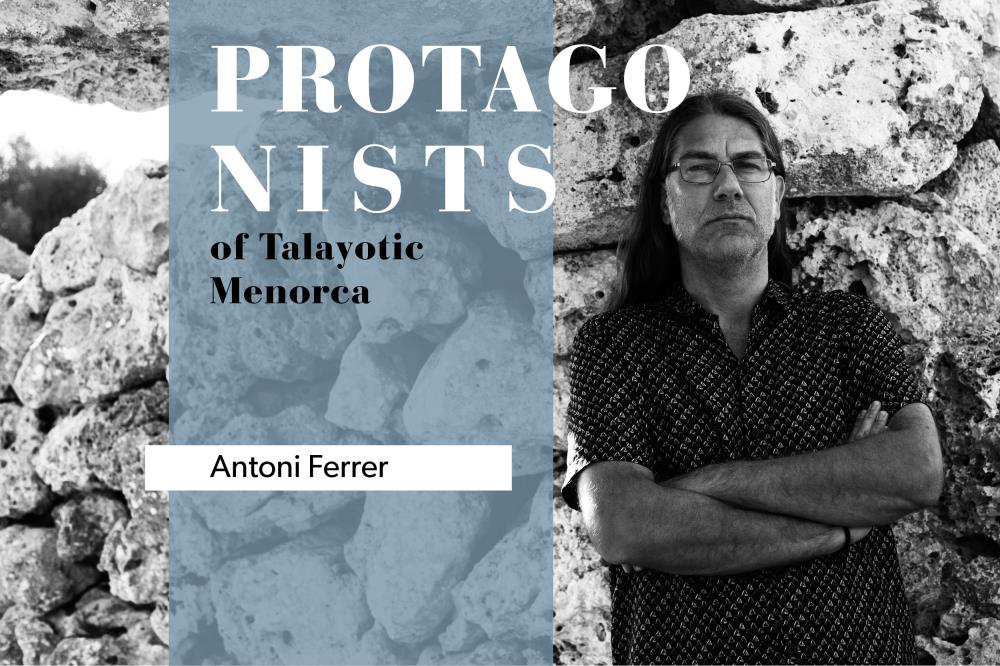 Antoni Ferrer Rotger is an archaeologist, specialising in the prehistory and protohistory of the Balearic Islands. With a long career in the field of research, he has co-directed research projects at the sites of Cornia Nou, Cala Morell and Torre d'en Galmés (Menorca), and at Sa Ferradura (Mallorca). Antoni Ferrer Rotger is an archaeologist, specialising in the prehistory and protohistory of the Balearic Islands. With a long career in the field of research, he has co-directed research projects at the sites of Cornia Nou, Cala Morell and Torre d'en Galmés (Menorca), and at Sa Ferradura (Mallorca).
He is currently the director of the Talayotic Menorca Agency, the body responsible for the management of Talayotic Menorca and the conservation of its outstanding universal value.
You have been linked to the candidacy for a long time, as you have been one of those responsible for its reformulation since 2017. How are you facing this new phase as the head of the TM Agency?
Actually, my involvement with the candidacy goes back even further. In 2013, as a freelance archaeologist, I did some work related to the preparation of the dossier and gave some informative talks on the candidature. On the other hand, I have been working professionally on Menorca's prehistory for about twenty years: excavating, publishing, carrying out educational activities, setting up exhibitions, giving talks... Therefore, in my new position I am working in an area I know well, although from a new perspective, to a certain extent.
As we were saying, a new path is also opening up for Talayotic Menorca with the leading role of the TM Agency. What objectives have you set for the agency in these first years of its existence?
In general, my aim is for the agency to reach five years of life having incorporated the staff necessary for it to function properly. On the other hand, during these years we must create and consolidate the technical work structure of the agency and establish permanent collaboration links with other institutions, such as the Biosphere Reserve Agency, the Institut Menorquí d'Estudis (IME) or other research centres that develop projects linked to the prehistory of Menorca.
I believe that one of the long-term objectives must be to make Menorca a benchmark in terms of archaeological heritage management. In this sense, it is very important to give greater stability to existing research projects, as well as to support new projects in which research centres outside the island are involved, capable of providing their own resources. I also believe that we must continue working to ensure that Menorca's prehistoric heritage occupies a prominent place among the island's most important assets, both for residents and visitors.
Finally, these first years must also help the Menorcan population to appreciate the work of the TM Agency, as it will be this institution the one responsible for guaranteeing the conservation of our prehistoric heritage for future generations.
In terms of lines of work, in what direction will efforts be focused?
To fill the position of director of the TM Agency, a selection process was carried out in which each candidate was asked to draw up a project for the next five years. In this document, which will soon be available on this website, I set out a large number of lines of work. It is impossible to summarise them all, but I would like to highlight three.
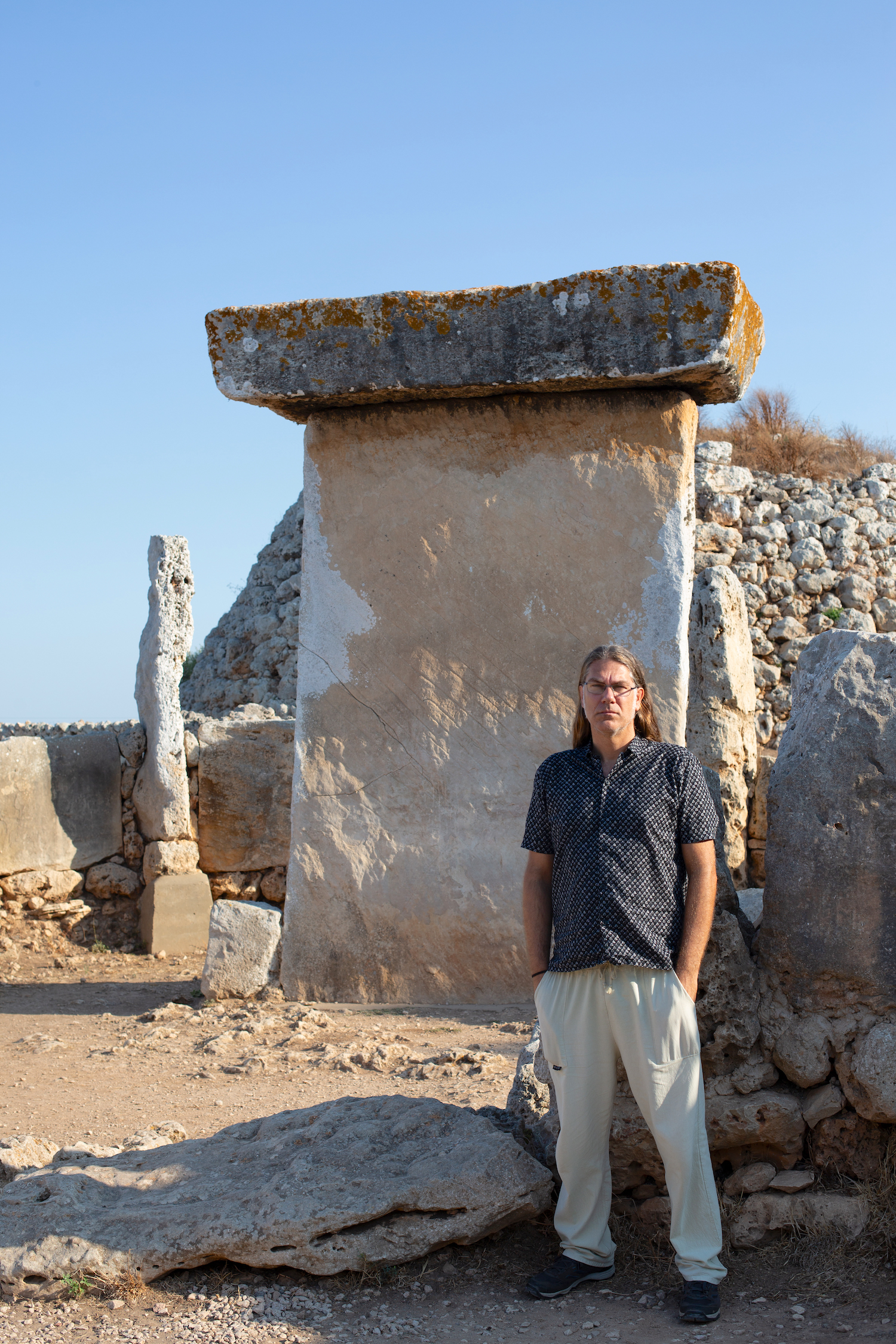 One of the most important aspects is the collection of data that will allow us to plan actions with full knowledge of the facts. At the moment we do not have precise data on the number of visitors to the archaeological sites each year, as these are only counted during the summer at a few sites. Nor do we know how satisfied visitors are, what aspects they would like to know more about, etc. Knowing this data is essential for the correct planning of conservation, adaptation and dissemination actions. Therefore, it will be necessary to implement a whole system for the collection and statistical processing of data, in collaboration with the OBSAM (Socio-environmental Observatory of Menorca). One of the most important aspects is the collection of data that will allow us to plan actions with full knowledge of the facts. At the moment we do not have precise data on the number of visitors to the archaeological sites each year, as these are only counted during the summer at a few sites. Nor do we know how satisfied visitors are, what aspects they would like to know more about, etc. Knowing this data is essential for the correct planning of conservation, adaptation and dissemination actions. Therefore, it will be necessary to implement a whole system for the collection and statistical processing of data, in collaboration with the OBSAM (Socio-environmental Observatory of Menorca).
Another aspect to be highlighted is that of scientific research. In recent years, more and more academic institutions outside the island have been participating in research projects led by local teams, or local archaeologists have been involved in projects promoted by foreign centres. This network is very positive, and should be encouraged and consolidated through collaboration agreements between the TM Agency and the research centres.
On the other hand, it should be borne in mind that many of the sites that make up Talayotic Menorca are privately owned. The owners must become actively involved in conservation, and the Custody Contracts programme developed by the Consell de Menorca aims to encourage this involvement, with the support of the public administration.
Everything seems to indicate that in September Talayotic Menorca may be named World Heritage during the next UNESCO World Heritage Committee in Riyadh. What should this distinction mean for Menorca?
The inscription on the UNESCO World Heritage List should be a stimulus for Menorcans in the conservation, research and dissemination of archaeological heritage. Obviously, an important part of the work corresponds to the managers, researchers and restorers, but the preservation of this heritage that we have received from our ancestors is everyone's responsibility. From a more pragmatic perspective, being on the World Heritage List can serve to make it easier to obtain economic resources from outside the island to invest in historical heritage. This will undoubtedly be positive, due to its capacity to generate jobs and new knowledge.
And how do you see the future of Talayotic Menorca, what are the main challenges to be faced?
There is one fact that I think makes it clear to what extent Menorcan society has assumed the Talayotic Menorca candidacy as its own: the project has been maintained throughout five terms of office of the Consell, with different political parties, since 2009 when the IME proposed this initiative. Possibly in the future we will have to maintain this persistence and unity to face challenges that we cannot foresee today. Since we started the candidacy process, we have experienced a financial crisis, several humanitarian crises and a health crisis. Now experts are warning us that we are at risk of a climate crisis and an energy crisis.
In this context, perhaps the greatest challenge for Talayotic Menorca, and for historical heritage managers in general, is to vindicate the value of a sector that allows us to generate economic growth without generating waste or pollutants, and without high consumption of energy or raw materials; that does not allow speculation or the relocation of businesses; that creates stable, quality employment and, finally, that fosters knowledge and reflection on our past and our future. There are few areas of human activity that bring together so many positive aspects and are so closely linked to the fight against the problems that currently threaten us.
|
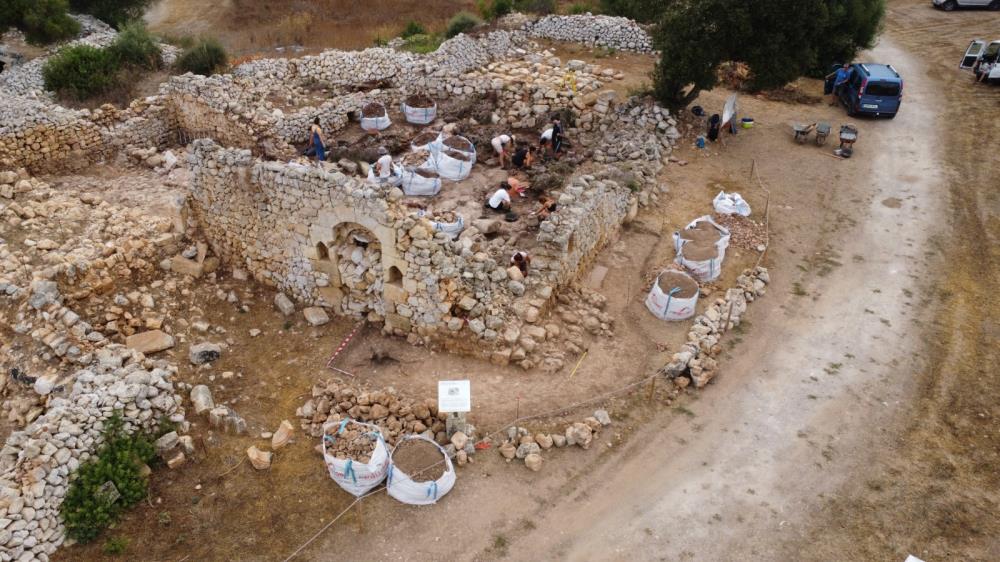
Second excavation campaign of the late-medieval structure of Torralba d'en Salort
¿¡[AQUI]¡¿The Amics del Museu de Menorca team is currently working on the second excavation and restoration campaign of the late medieval structure of Torralba d'en Salort. The team has found the remains of a rural dwelling from the 15th and 16th centuries with later reuses.
This is a programmed excavation which makes it possible to document through archaeology what rural life was like for the Christian repopulators of the island after the conquest of 1287 and, therefore, the origin of a large part of the Menorcans of today. On August 24, at 7 pm, a visiting day will be held there and the researchers will explain in detail the progress of the project.
The area of the intervention is a structural complex located on the western edge of Torralba, of which only a depreciated doorway with two chapels on the sides crowned by two incised Latin crosses could be identified.
Eclipsed by the monumental archaeological remains, historians and archaeologists who have written about the site (Mascaró-Pasarius, Fernández-Miranda, Gornés or Riudavets and Bravo, among others) had suggested that it could be the rubble of the old houses of Torralba or, perhaps, of a rural hermitage. The peasants who lived in the area generally referred to this rubble as "the old houses of Torralba".
The excavation and restoration work was entrusted to a team of specialists from Amics del Museu de Menorca (Friends of the Museum of Menorca), who determined that if the history of this structure was to be known in depth, it was necessary to approach it not only from the study of the archaeological remains - which must be preserved and made comprehensible to the public - but also with an in-depth study of the documentation on Torralba kept in the island's historical archives. To this end, a team was formed, co-directed by Borja Corral and Carlos de Salort, with the collaboration of restorers and conservators such as Francesc Isbert and Cecília Ligero and the historian specialising in the medieval period Jordi Saura, among others.
Campaign 2023
This is the second campaign of intervention on the structure and will last until August 25. Eight students and university graduates from Valencia, Seville and Madrid are taking part, as well as several volunteers living in Menorca. The project is largely funded by the Fundació Illes Balears and the aid for actions to improve historical knowledge of Menorca from the Department of Culture, Education, Youth and Sports of the Consell Insular de Menorca.
The previous campaign, in August 2022, served to rediscover under the vegetation a structural complex of some 300 m2 and to dismantle a large stone structure from the contemporary period: more than 50 tons of stones under which a large part of the late medieval building was found. The construction of this building - distribution of the areas, materials used, etc. - are very similar to those of the old llocs with stone and mortar walls, remains of arches, marés vaults, Arab tiles, lime mortar plastering, lime whitewashing, etc. It certainly seems to be a rural dwelling, the house of an abandoned lloc.
The nature of this type of construction, thin walls, made with two courses of stones and poor quality earth mortar, has obliged archaeologists and restorers to intervene practically at the same time: the areas that are excavated are immediately consolidated in order to minimally compromise the integrity of the old building and to make it comprehensible to the public.
Materials recovered
During these weeks, the archaeologists have been recovering objects that speak of the life of the inhabitants of Torralba. As usual, fragments of crockery, pottery and glass are the most frequent in the material repertoire, especially crockery from the 16th, 17th and 18th centuries. Some of these fragments are imported, a testimony to how the commercial and consumer relations that Menorca maintained with different European countries reached the countryside.
As could not be otherwise, locally manufactured crockery has also been recovered, pieces that can still be found on display in many Menorcan homes. Remains related to habits and practices that have been present in Menorca for centuries, such as religion or pipe smoking, have also been recovered. Some of them well known but curious, such as board games.
Both the material remains and the documents suggest that this was someone's home during the 15th and 16th centuries. Based on the emptying of fadigas books, capbreus and notarial documentation, the possession or possessions of Torralba must be associated with a few families of repopulating settlers from the Catalan-Aragonese crown with surnames as recurrent in Menorca in the 15th and 16th centuries as in the 20th and 21st centuries, such as Gonyalons, Marqués or Villalonga. Furthermore, for the moment, everything suggests that the house was abandoned in the 17th century for reasons that are still unknown. However, at the end of the 18th century or during the 19th century, the structure was modified, although it is not yet known whether it was used as a dwelling or for another purpose.
|
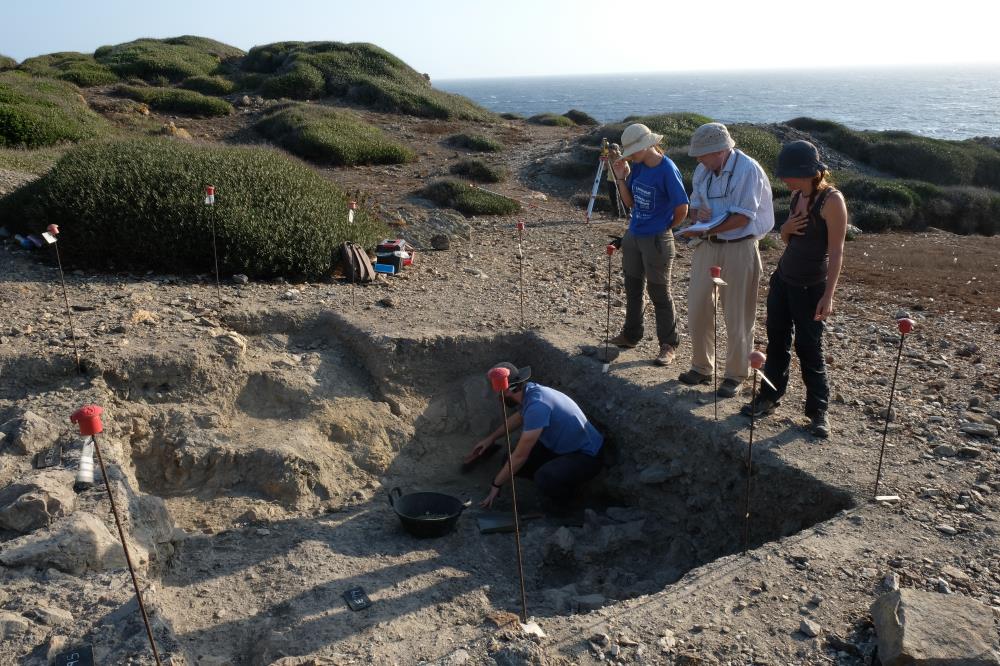
The seventh campaign in Sa Mitja Lluna ends
¿¡[AQUI]¡¿The 2023 archaeological excavation campaign at Sa Mitja Lluna ended this week. This Bronze Age copper mine located on Illa d'en Colom is one of the few mining sites of its kind in southern Europe, as the absence of subsequent relevant mining works has allowed for the excellent preservation of the prehistoric mine. Its exceptional nature has made it a key element in the UNESCO World Heritage candidacy.
This is the seventh campaign that has been carried out since its discovery, under the co-direction of the archaeologists Laura Perelló, Bartomeu Llull and María Calderon (ArqueoUIB group, University of the Balearic Islands) and Mark Hunt (University of Seville). As in previous years, the intervention has been financed by the Consell Insular de Menorca.
All the work carried out to date indicates that we are dealing with a copper mining site that spans the entire Bronze Age (1800-900 BC). Therefore, certain prehistoric communities in Menorca extracted copper minerals (malachite, azurite, chalcopyrite) from the mine for around 900 years.
The research allows us to reflect on the exploitation strategies of the communities that frequented the mine, and there is no doubt that it was exploited for generations, although not continuously. The researchers think that perhaps it was a temporary work that was adapted to other work in the field at certain times of the year, perhaps conditioned by the meteoromarine conditions or the needs of the community.
Among the archaeological materials recovered, lithic tools stand out. They range from small mortars used to crush and select the ore, to large miner's mallets used to break up the rock where the ore veins are found. They come in many sizes, depending on the work they were intended for. In the Bronze Age, copper ores were essential for creating metal tools, but it was more important the symbolic value of these objects.
Analyses of provenance and distribution using lead isotopes have made it possible to propose possible relationships between the minerals from the Illa d'en Colom and metals found in Menorcan funerary deposits of similar chronology. But the question does not end here; studies carried out on metal pieces on the other islands of the Balearic archipelago show their relationship with Menorcan minerals. This tells us about the great movement of objects and people that existed in the Balearic Bronze Age.
From the beginning, researchers saw that the Sa Mitja Lluna copper mine had two distinct working areas. In the northern area there seemed to have been a greater movement of material. Work in this area of the site revealed the existence of a trench excavated in the rock, following a copper vein that ran more or less parallel to the cliff, in a N-S direction. It is not to be ruled out that in future interventions there may be surprises in this area, such as the discovery of shafts or galleries dug by the former miners.
Campaign July 2023
For the last two years, archaeologists have been working on excavating the southern part of the site. Initially, the intervention in this area of the mine was envisaged as a one-off action to assess the potential scientific interest. At present, understanding this sector of the site is a priority, and it is thought that the archaeological information provided will be key to understanding the workings of the mine and, more importantly, the people who frequented this area.
Three peculiarities characterise this southern area:
- Hidden beneath the mine tailings, the researchers documented a trench with similar characteristics to those observed in the north of the site, with the difference that in the north there had been a large movement of materials, whereas in the south this has not been detected until its excavation. This trench was dug by the miners in a west-east direction, following the vein of ore. The actual dimensions of the trench are not yet known, but all indications are that the workings are larger than previously thought.
- In this area of the site, more ceramic remains have been documented than in the north, as well as the remains of fires. Although no hearths or other types of combustion structures have been found, these remains are evidence that other work was carried out at the foot of the mine, such as cooking or storing water, as the types of ceramic pieces seem to indicate.
- In some of the deeper stratigraphic units, lithic tools are more abundant and large miner's mallets are more frequent than in the northern part of the site, in many cases weighing more than 15 kg.
From all this it can be concluded that the dimensions of the mine workings in the southern area may be the same or more noticeable than in the northern area. In addition, there is evidence of pottery remains dumped with the mine tailings, showing evidence of subsistence practices at the foot of the mine.
Bearing in mind that no permanent habitat structures have been found at Illa d'en Colom either, the idea of the seasonality of the prehistoric work makes even more sense: a small group that moved to this site for a few days would leave practically no archaeological evidence. Until recently, only the results of strictly mining work had been seen, but it seems clear that Sa Mitja Lluna is still full of surprises waiting to be unearthed.
|
New human remains found in Torre d'en Galmés
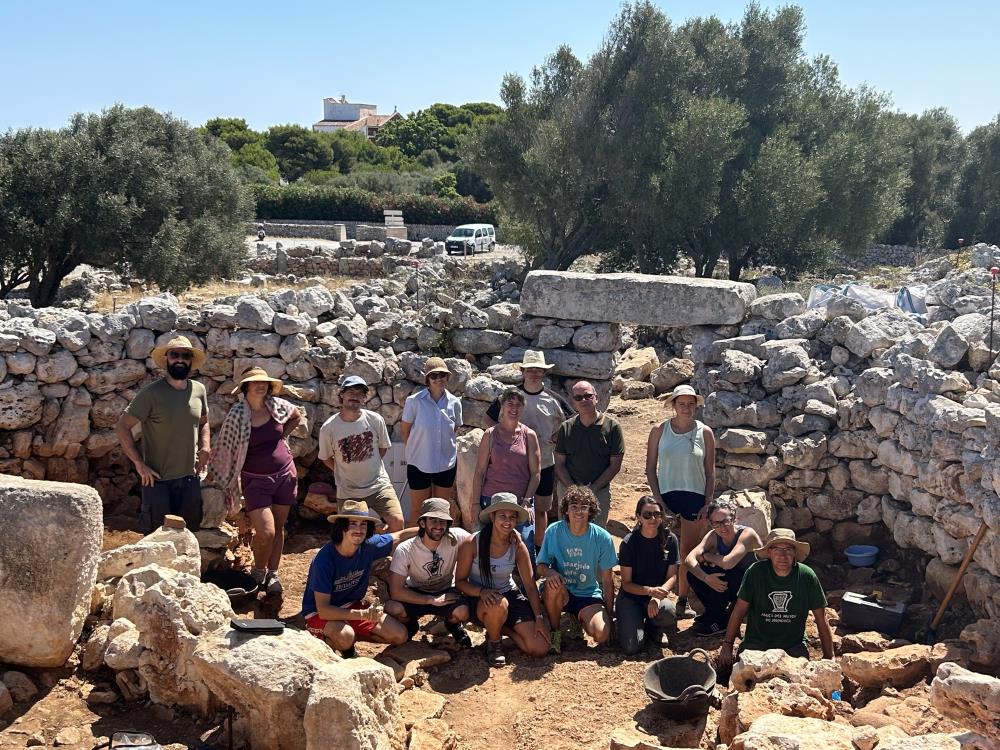 Amics del Museu de Menorca presented the new features of the 2023 excavation campaign in Torre d'en Galmés, the fifth in the northern part of the settlement. Between the 3rd and 21st of July, the team is working in this area together with students from different universities in Spain and volunteers from Menorca. Simón Gornés, conseller for the Environment, Biosphere Reserve and Cooperation, and the councillor for Cultural Affairs of Alaior Town Council, Eva Petrus, were the authorities present. They were accompanied by the directors of the project, the archaeologists Carlos de Salort and Borja Corral, and the president of Amics del Museu de Menorca, Cecília Ligero. Amics del Museu de Menorca presented the new features of the 2023 excavation campaign in Torre d'en Galmés, the fifth in the northern part of the settlement. Between the 3rd and 21st of July, the team is working in this area together with students from different universities in Spain and volunteers from Menorca. Simón Gornés, conseller for the Environment, Biosphere Reserve and Cooperation, and the councillor for Cultural Affairs of Alaior Town Council, Eva Petrus, were the authorities present. They were accompanied by the directors of the project, the archaeologists Carlos de Salort and Borja Corral, and the president of Amics del Museu de Menorca, Cecília Ligero.
The excavation project at Torre d'en Galmés is focused on a group of domestic spaces and annexed structures located in the northern part of the settlement, between two of the three talayots, which bear witness to the oldest phase of occupation of the settlement. Since 2021, the occupation levels of one of these domestic structures, the most fertile in terms of material remains that belonged to the last inhabitants of the house, have been excavated. Although several houses have already been excavated in the settlement with a well-defined pattern, this one has a slightly different distribution and shape to those that have been documented.
The different summer campaigns in this house have been marked by recurrent findings of human remains that have been exhumed by the archaeologist Elena Sintes. At the moment, they are in the process of being studied and it is impossible to specify anything. Between the five archaeological campaigns, the remains of between five and six individuals have been located, the last one this year.
It is clear that finding human skeletons inside a domestic space without any kind of burial is not something normal. These would be people of different genders and ages, and their specific study will make it possible to refine how and when the final episode of the dwelling took place. For the moment, while awaiting these results, only one of the skeletons found has been dated, indicating that it died between 370 and 201 BC.
It should be noted that this is not the first time that Amics del Museu has found human remains. Between 2005 and 2010, in one of the houses in the southern part of the settlement, Circle 7, a group of individuals who died in anomalous circumstances in the 3rd century BC were also documented. These dates would mark the abandonment of the dwelling until the present day, with the exception of some specific occupations that need to be analysed in greater detail.
Indigenous crockery and silos
In addition to these surprising human remains, a very interesting collection of indigenous and Punic Ebusitan crockery has been found. During the 4th and 3rd centuries BC, the everyday life of the Menorcans was marked by trade with the Carthaginians, especially from Ebusus, modern-day Ibiza.
Also of great interest is the discovery of different silos or deposits excavated in the rock, which are in the process of being excavated and which could provide a great deal of information on the earlier phases of use of the area. All these findings will be presented at the visiting day on Thursday, July 20, at Torre d'en Galmés.
The archaeological project of Amics del Museu de Menorca is possible thanks to the funding of the Consell Insular de Menorca, the Alaior Town Council and the members of the association. It also has the scientific support of Boston University, the Royal Institute for Cultural Heritage of Belgium, the Escuela Superior de Conservación y Restauración de Bienes Culturales de Cataluña, among others.
|
Raquel Roldán, winner of Becatalaiotica 2023
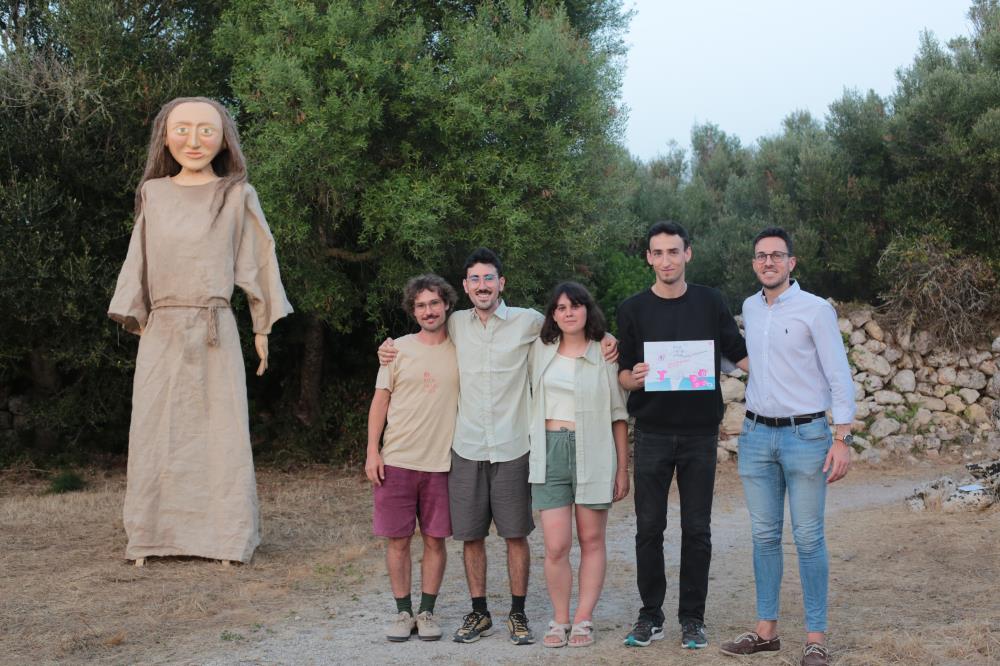 The violist Raquel Roldán is the winner of Becatalaiotica 2023 with "Mort d'una ànima". This was announced during the closing ceremony of the seventh edition of the competition, which took place today, July 10, in Torralba d'en Salort. Roldán, who was unable to collect the award in person, wins a 2,000-euro grant, the prize of this competition organised by the Associació d'Amics del Museu de Menorca with the support of the Department of Cultural Affairs of the Consell Insular and the collaboration of the Fundació Illes Balears. The event was attended by the conseller of Cultural Affairs, Joan Pons Torres, who gave the award to Miquel López, representative of Roldán and winner of Becatalaiotica 2022. The violist Raquel Roldán is the winner of Becatalaiotica 2023 with "Mort d'una ànima". This was announced during the closing ceremony of the seventh edition of the competition, which took place today, July 10, in Torralba d'en Salort. Roldán, who was unable to collect the award in person, wins a 2,000-euro grant, the prize of this competition organised by the Associació d'Amics del Museu de Menorca with the support of the Department of Cultural Affairs of the Consell Insular and the collaboration of the Fundació Illes Balears. The event was attended by the conseller of Cultural Affairs, Joan Pons Torres, who gave the award to Miquel López, representative of Roldán and winner of Becatalaiotica 2022.
The proposal by Roldán (Tarragona, 2000) consisted of a solo viola concert in the necropolis of Cala Morell, which brought together some sixty people who enjoyed a magical spectacle. The passage of time, life and death were the guiding threads of the musical programme of eight classical pieces presented by the violist, a study of anachronisms between space and sonority.
Around fifty people were able to enjoy the closing event, which included an exhibition of the objects used in Becatalaiotica 2023 and the repetition of the winning event of 2022: "Tala-tic-tac", by Miquel López. This student of Archaeology at the University of Barcelona and musician has brought us closer to a new way of disseminating the history of a stone that has lived in silence the passage of time.
Becatalaiotica is a cultural project of Amics del Museu de Menorca that aims to reclaim the island's landscape as a source of inspiration and to discover new ways of experiencing and disseminating it. People between the ages of 18 and 28 who are studying or who want to study are eligible to apply. The aim is to create free, innovative and original events or activities at different sites in Talayotic Menorca. The public attending the events is responsible for evaluating and voting on the proposals; the winner receives a €2,000 study grant.
|
Closing ceremony of Becatalaiotica 2023 in Torralba d'en Salort
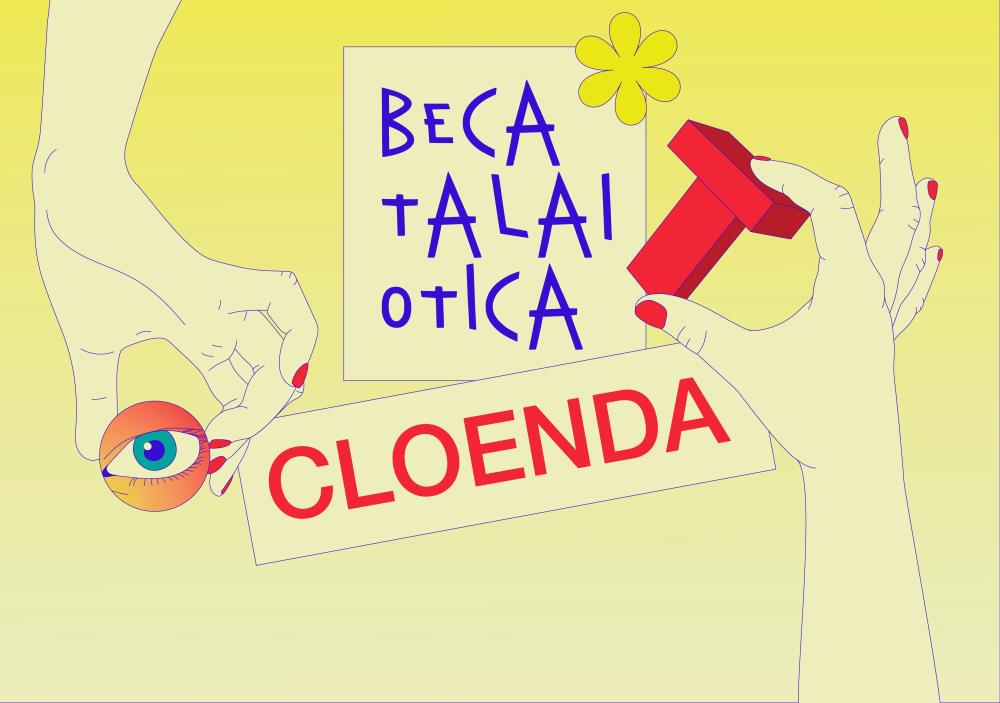 Becatalaiotica will close its seventh edition on July 10, starting at 7.30 pm, with a closing ceremony at the Torralba d'en Salort site. The winner of a 2,000-euro grant will be announced. This contest is organised by the Associació d'Amics del Museu de Menorca and the Department of Culture of the Consell Insular de Menorca, in collaboration with the Fundació Illes Balears. Becatalaiotica will close its seventh edition on July 10, starting at 7.30 pm, with a closing ceremony at the Torralba d'en Salort site. The winner of a 2,000-euro grant will be announced. This contest is organised by the Associació d'Amics del Museu de Menorca and the Department of Culture of the Consell Insular de Menorca, in collaboration with the Fundació Illes Balears.
The closing ceremony will include an exhibition of the objects used in the Becatalaiotica 2023 events, and the winning event from last year's edition will be repeated: "Tala-tic-tac", by Miquel López. The name of the winner will be announced at around 8.30 pm. Music and snacks will complete the evening.
This year, five groundbreaking proposals from different fields have taken part. Paula Planas (Barcelona, 1998), a professional dancer, presented a dance performance in Talatí de Dalt, where she then taught the audience how to dance polka and fandango. Maria Casadellà (Baix Empordà, 1997), exhibition designer and member of a group of giants, created the first Talayotic giganta and presented it in Torre d'en Galmés accompanied by the group of giants and grallas of Es Castell.
Irene Trapote (Gijón, 1998), a multidisciplinary artist, invited us to reflect on the landscape and the ways of managing it through a journey with different artistic installations around Torrellafuda. Kitty Vollmer (Philadelphia, 1994), architect, left us open-mouthed with a nocturnal installation in Torralba d'en Salort where she created a network of bioluminescent pieces inside the taula enclosure. And finally, Raquel Roldán (Tarragona, 2000), violist, delighted us with the first solo viola concert in the necropolis of Cala Morell.
Becatalaiotica is a cultural project of Amics del Museu de Menorca that aims to vindicate the landscape of Menorca as a source of inspiration and to discover new ways of experiencing and disseminating it. People between 18 and 28 years old who are studying or who want to study any kind of studies can apply. The aim is to create free, innovative and original events or activities at different sites in Talayotic Menorca. The public attending the events is responsible for evaluating and voting on the proposals; the winner receives a €2,000 study grant.
|
"The inscription on the World Heritage List is not the end of the road, it’s just a point and a break and the real work begins now”
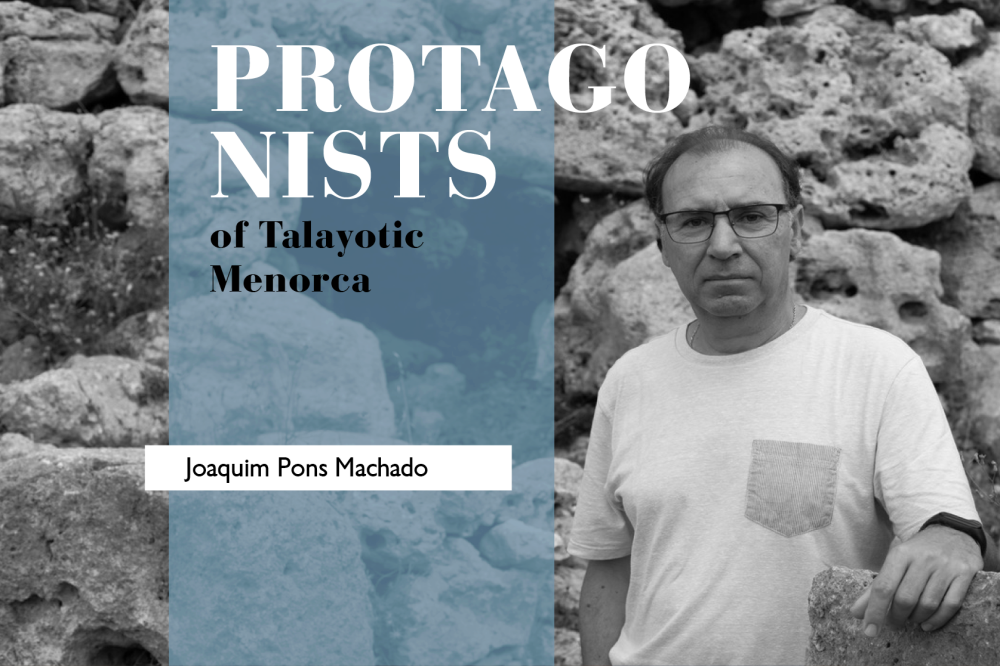 Joaquim Pons Machado holds a degree in History from the University of Barcelona and a PhD in Prehistoric Archaeology from the Autonomous University of Barcelona with the thesis "Characterisation of the space of the protohistoric habitat on the island of Menorca: the circular talayotic houses". With an extensive career as a researcher in the field, among others, he has directed and coordinated the archaeological work camps of the Associació Amics del Museu de Menorca at the site of Torrre d'en Galmés (Alaior), an entity of which he has been the secretary since 2005. Joaquim Pons Machado holds a degree in History from the University of Barcelona and a PhD in Prehistoric Archaeology from the Autonomous University of Barcelona with the thesis "Characterisation of the space of the protohistoric habitat on the island of Menorca: the circular talayotic houses". With an extensive career as a researcher in the field, among others, he has directed and coordinated the archaeological work camps of the Associació Amics del Museu de Menorca at the site of Torrre d'en Galmés (Alaior), an entity of which he has been the secretary since 2005.
From 2019 to the beginning of 2023 he has been the technician of Talayotic Menorca in the Consell Insular de Menorca, being one of those responsible for the new candidacy dossier that has recently received the endorsement of ICOMOS.
How did your interest in archaeology begin?
Through the family circle. When we were young, my father used to take us on walks around Menorca and one of the places we used to visit were the archaeological sites. This aroused the interest in archaeology of both my brother, Octavi Pons, and myself. And to complete the picture, my wife, Carmen Lara, is also an archaeologist. Therefore, it has been an interest that has come from various sides and at different times that has led me to devote myself to archaeology.
And what made you decide to study the Talayotic culture?
Proximity, as it is the prehistoric culture that exists on the island. Despite having lived for some years in Catalonia and having participated in some projects there, I always maintained a link with my work in Menorca, and when it was time to plan both my third cycle work and my doctoral thesis, I had no doubt that they would be about Menorca. Thus, my dissertation was on the excavation we did with Amics del Museu de Menorca in Talatí de Dalt, and the doctoral thesis was on the circular Talayotic houses, structures that we excavated in Torre d'en Galmés.
In your career as a researcher, what are the projects that have had the greatest impact on you?
Without a doubt, the two I mentioned a moment ago. Although I had already participated in some other excavations before, such as the Trebalúger talayot, the Talatí de Dalt excavation was very important for me, as it was the first time I took part in a programmed excavation and all the work associated with it. Moreover, the last campaign we carried out there was the first time I directed an archaeological excavation. With all the subsequent work we were able to put on a small exhibition at the Museu de Menorca, publish a book on the excavation (together with Gustau Juan) and it helped me to do my third cycle project for my Master's degree in Prehistoric Archaeology.
The other project was the excavation of the Talayotic circles of Torre d'en Galmés that we did with the Associació d’Amics del Museu de Menorca. We were able to excavate two houses and also a couple of front courtyards, and all this work served as the basis for my doctoral thesis on the final Talayotic houses.
And which of the projects that are currently underway arouse your interest the most?
It is difficult for me to choose a specific one, as I think that this is a very interesting moment in Menorca's archaeology. Because of the continuity with the work I did, the Amics del Museu project in the northern area of Torre d'en Galmés seems very interesting to me, as it seeks to document the early Talayotic habitat. But also all the work of Boston University with the documentation of the Islamic occupation is providing a lot of information on how this use was developed and organised.
Other projects worth mentioning are those of Cornia Nou and Sant Agustí, with all the information they are providing on the early Talayotic world, the navetas of Cala Morell with the documentation of the naviform habitat, sa Mitja Lluna on prehistoric mining, the study of the taulas with the excavation of Sa Cudia Cremada...
As I said, it is a very interesting time with many open lines that will surely provide a lot of information to improve our knowledge of Menorca's prehistory.
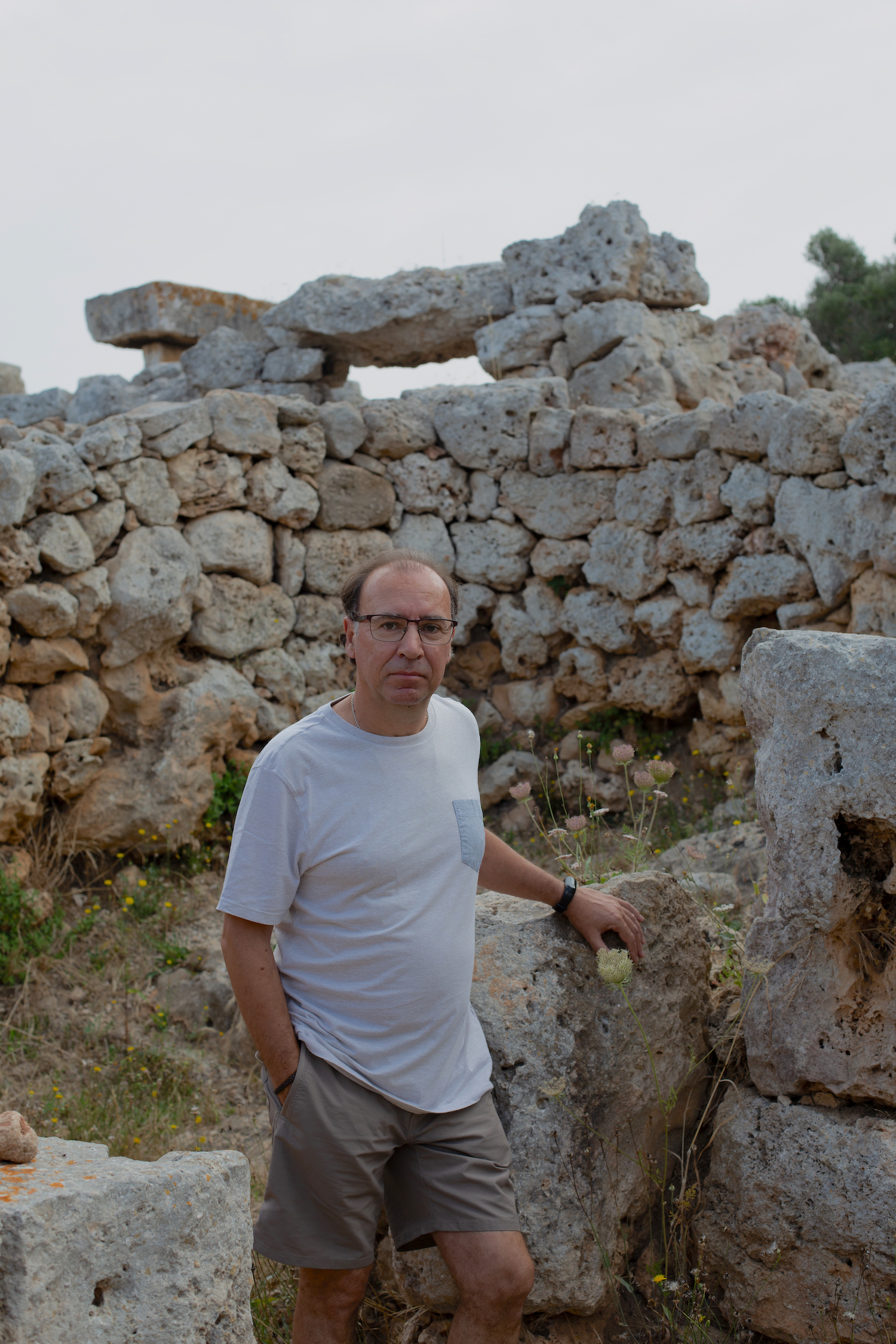 Both because of your work as an archaeologist and your role as a Talayotic Menorca technician, your career has been closely linked to the candidacy. Now that ICOMOS has given the green light, what is your assessment of this period? Both because of your work as an archaeologist and your role as a Talayotic Menorca technician, your career has been closely linked to the candidacy. Now that ICOMOS has given the green light, what is your assessment of this period?
It is a very positive balance, both personally and professionally. The fact of being able to work on a project like Talayotic Menorca, with the aim of achieving its inscription on the World Heritage List, is a privilege. It is a unique occasion, as it will be very difficult to submit any other Menorcan heritage site to UNESCO.
From a personal point of view, it has been another key project, along with the two I have already mentioned. As I said, it is a privilege to have been able to work on the candidacy and to be able to do so with all the people who have participated. Working with someone like Cipriano Marín has been a luxury from whom I have been able to learn a lot. But it has also been a privilege to work with many people who have been involved in the project. The list is very long, as can be seen in the acknowledgements of the dossier, and many of them have been interviewed before me in this section of Protagonists.
Therefore, I am very satisfied with this stage since the main objective has been achieved, which is the inscription of Talayotic Menorca on the World Heritage List, and I am very happy for all that it has given me on a personal level.
Bearing in mind that you are an important actor in the elaboration of this new dossier, what was the whole process of reconstructing the candidacy like?
It was a complex process. Initially, it is worth highlighting the work carried out by Antoni Ferrer, at that time the island's director of Cultural Affairs and Heritage, together with the incorporation of Cipriano Marín in the role of coordinator. They made the initial proposal of the components of Talayotic Menorca.
I joined the project in May 2019, when this initial proposal was put on the table. From that moment on, the work of discussion with the collaborators of the candidacy began in order to adjust this proposal to criteria that were more realistic and that could be accepted by ICOMOS and UNESCO.
The work was intense, as trying to combine heritage and landscape, as requested in the 2017 ICOMOS report, was not easy. But, fortunately, we had the support of great collaborators who helped us in this process to link the discourse and the approach that can be seen in the Talayotic Menorca dossier.
Despite being clearly positive, the ICOMOS report also points out some recommendations to be implemented. What do you think should be the priorities from now on?
As the conseller of Cultural Affairs Miquel Àngel Maria has already repeated in the presentations we made of the Talayotic Menorca documentary, inscription on the World Heritage List is not the end of the road. Quite the contrary, it is just a point and a break and the real work with Menorca Talayotic begins now. We have put the instruments on the table, the Talayotic Menorca Agency and its management plan, so that from now on they can begin to be developed.
One of our priorities is the development of heritage custody contracts. This is one of the key tools of the management plan and through which the Talayotic Menorca Agency must establish the framework for relations with the owners and managers of the properties included in the World Heritage declaration.
The monitoring of the property is also a very important point. UNESCO periodically requests reports on the state of World Heritage properties, so the structure for collecting information must be created to comply with these requests.
And we must be clear that the inscription of Talayotic Menorca on the World Heritage List is a commitment to the future. It is Menorca's commitment to the rest of the world to conserve its prehistoric heritage so that it can be passed on to future generations in at least the same state as it is in today. And as far as possible, to improve it and broaden our knowledge of it.
The Menorca Talayotic Agency is key to the future of the candidacy, beyond the probable nomination as a World Heritage site. What role should it play?
Its role is key. I have already mentioned in the previous question some of the challenges it faces beforehand. But as you can see from the management plan, they go far beyond the few things I have said. The role of the agency will be crucial, as it is the body that has to develop this document, which is just its roadmap for the future.
Therefore, the Agency, under the direction of Antoni Ferrer, faces the challenge of developing this management plan so that Talayotic Menorca can be a real and useful instrument. Menorca's archaeological heritage is impressive, both in terms of quantity and quality, and Talayotic Menorca should be its ambassador to the world through this World Heritage declaration.
There is a sector of people who are interested in cultural heritage and who are attentive to UNESCO and its list, so Menorca will be taken more into account as a cultural destination. Thus, the role of the agency, among other aspects, will be to ensure that the expectations created are rewarded when these visitors come to Menorca.
But it must also work on the involvement of the local population. This has to do both with the knowledge that the people of the island may have about world heritage, which will have an impact on its respect and conservation, and with the possibilities that open up in relation to the cultural industry.
Well, we could go on, because as I said, I believe that the role of the agency is fundamental for the future and we hope that it can be fully developed in order to achieve the objectives set out in the management plan.
|
Antoni Ferrer, director of the Talayotic Menorca Agency
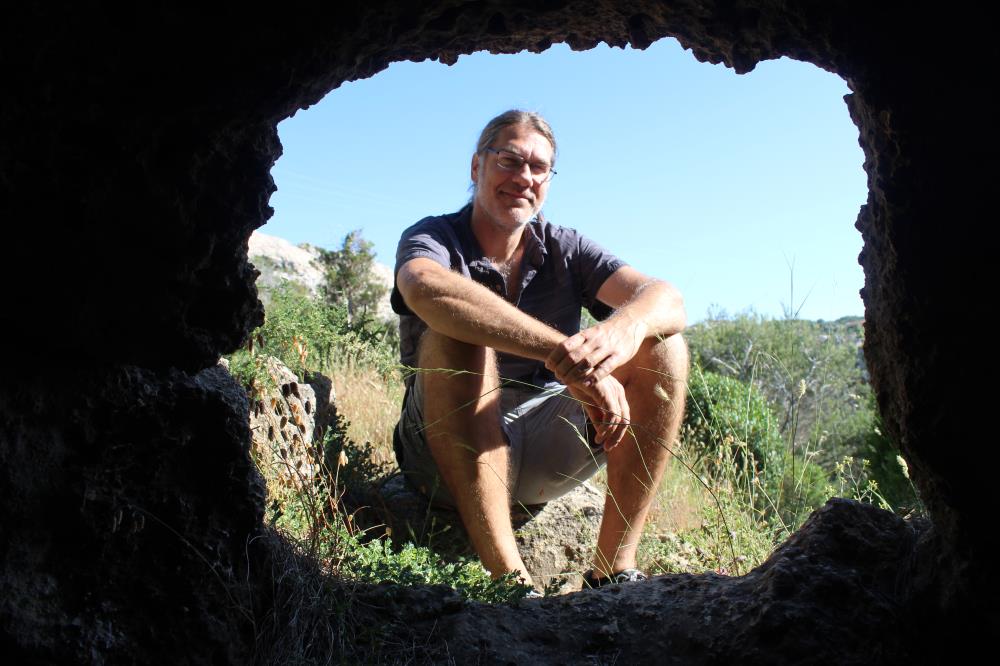 The archaeologist Antoni Ferrer has been proposed as director of the Talayotic Menorca Agency by the Governing Council of this organism, after having obtained the unanimous vote of the Evaluation Commission, following the regulated procedure. The proposal was made effective today, 16th June, at the agency's Governing Council, and will take effect as soon as the decree of appointment is signed by the president of the Consell Insular de Menorca, Susana Mora. The archaeologist Antoni Ferrer has been proposed as director of the Talayotic Menorca Agency by the Governing Council of this organism, after having obtained the unanimous vote of the Evaluation Commission, following the regulated procedure. The proposal was made effective today, 16th June, at the agency's Governing Council, and will take effect as soon as the decree of appointment is signed by the president of the Consell Insular de Menorca, Susana Mora.
Ferrer is one of the architects of the reformulation of the Talayotic Menorca candidacy from 2017. Specialised in the prehistory and protohistory of the Balearic Islands, he was the island director of Culture and Heritage of the Consell Insular de Menorca between 2015 and 2019. With a long career in the field of research, he currently co-directs the projects of the sites of Cornia Nou and Cala Morell (Menorca), and that of Sa Ferradura (Mallorca).
From now on, Antoni Ferrer will be responsible for directing and managing the agency so that it fulfils and achieves the objectives attributed to it by its statutes, and to guarantee the coherence of this management with the requirements of the inscription of Talayotic Menorca on the UNESCO World Heritage List. The duration of his contract as director of the agency will be five years, subject to ongoing evaluation and not linked to the mandate of the Governing Council. The Talayotic Menorca Agency is the body through which all actions and measures affecting the management of the property and the conservation of its outstanding universal value are channelled and coordinated, especially those included in the Talayotic Menorca Management Plan.
The Evaluation Commission for this selective process was made up of:
PRESIDENCY:
Titular: Ms. Carolina Desel González, Director of the Museu de Menorca.
Substitute: Mr. Francisco Javier Patiño García, member of the Institut Menorquí d'Estudis.
VOCAL MEMBERS:
Titular: Mr Rafael Mata Olmo, member of the Scientific Council of the Talayotic Menorca Agency.
Substitute: Ms. Margarita Orfila Pons, member of the Scientific Council of the Talayotic Menorca Agency.
Titular: Ms. Cristina Rita Larrucea, president of the Scientific Council of the Institut Menorquí d'Estudis.
Substitute: Ms. Maria Gràcia Salvà Picó, Director of the Museu de Mallorca.
Titular: Mr Felipe Criado Boado, Director of the Institute of Heritage Sciences (INCIPIT-CSIC).
Substitute: Mr Josep Maria Fullola Pericot, Professor of the Department of Prehistory, Archaeology and Ancient History of the University of Barcelona.
Member: Ms. Carmen Cabrera Lucio-Villegas, Head of the UNESCO Conventions Department, Ministry of Cultural Affairs.
Substitute: Ms. Laura de Miguel Riera, Head of the World Heritage Service, Ministry of Cultural Affairs.
Titular: Mr. Aleix Sintes Piris, Management Technician, Department of Cultural Affairs, Consell Insular de Menorca.
Substitute: Ms. Pilar Vinent Barceló, Head of the Language Normalisation Service, Department of Cultural Affairs, Consell Insular de Menorca.
Titular: Ms. Catalina Ferrando Ballester, Directorate General of Cultural Affairs, Government of the Balearic Islands.
Substitute: Ms. Francesca Tugores Truyol, Directorate General of Cultural Affairs, Government of the Balearic Islands.
|
"The real challenge lies in ensuring that the benefits of collective treasures are equally collective"
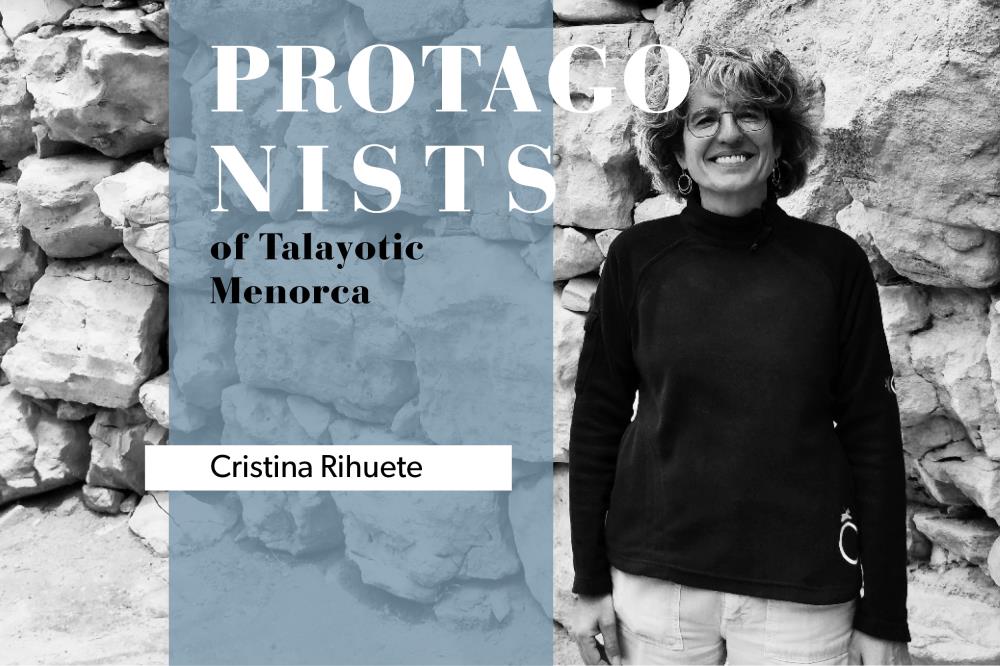 Cristina Rihuete is a lecturer in Prehistory at the Autonomous University of Barcelona. She studied archaeology at the University of Barcelona and a postgraduate degree in Chicago, specialising in physical anthropology with her thesis on the Es Càrritx Cave. Cristina Rihuete is a lecturer in Prehistory at the Autonomous University of Barcelona. She studied archaeology at the University of Barcelona and a postgraduate degree in Chicago, specialising in physical anthropology with her thesis on the Es Càrritx Cave.
Together with Vicente Lull, Roberto Risch and Rafael Micó, they form the research group ASOME-Mediterranean Social Archaeoecology, whose main goal is the reconstruction of the social, economic and ecological dynamics of the societies that inhabited the western Mediterranean basin during the Late Prehistoric period, between the 3rd and 1st millennium BC. Their research has focused mainly on the Balearic Islands and the southeast of the Iberian Peninsula. Among the sites investigated are the Talayotic settlement of Son Fornés (Mallorca), the Talayotic caves of Es Càrritx, Es Musol and Es Forat de ses Aritges (Menorca), the funerary naveta of Ses Arenes de Baix (Menorca), and the Argaric settlements and cemeteries of Gatas and Fuente Álamo (Almería) and La Bastida, Tira del Lienzo, Cerro del Morrón and La Almoloya (Murcia).
Was it always clear to you that you wanted to be an archaeologist? How did your passion for this discipline arise?
In my family, as in so many others at the time, no one had gone to university. My mother did everything she could to put an end to that, instilling in us a passion for knowledge and discovery. And archaeology is that in its purest form. It was the pyramids of Egypt that got me hooked when they appeared on the school syllabus.
How did the connection with Menorca's Talayotic culture come about?
My links with Son Fornés since the late 1980s led me to become interested in Menorca's prehistory, which is so similar to and, at the same time, so different from that of Mallorca.
You were part of the team that carried out the excavations at Es Càrritx Cave after its discovery, and you did your doctoral thesis on this burial cave. How do you remember those moments?
The work in Es Càrritx Cave was a fabulous challenge for our team. It is very rare to find a funerary deposit that is practically intact, with such exceptional archaeological objects that are so wonderfully preserved. It forced us to design an excavation methodology to match the uniqueness of the cave and also to try new ways of analysing and conserving the archaeological materials in collaboration with specialists from disciplines as diverse as geology, biochemistry and genetics. The four years I lived in Ciutadella were of a formidable intensity. A quarter of a century has passed, but the memories of that time are still electrifying.
Although it was discovered in 1995, Es Càrritx is very topical with your latest study, which has resulted in the first direct human proof of the use of psychoactive substances in Europe. What was the process of this study like? How long has it been going on?
Es Càrritx gained international fame for the deposit of human hair preserved in one of its most hidden rooms, together with the instruments used in a complex funerary ritual based on the combing, dyeing and cutting of tresses that were kept in fascinating little boxes made of wood, bone and horn. We learned many things from this deposit, but many others remain an enigma, such as the number of people to whom the locks belong to, their sex and age, or the very substance with which the dye was made.
We owe the possibility of using the hair to investigate drug use to Elisa Guerra Doce, from the University of Valladolid, who is an authority on the subject. It was in 2015 when she proposed that we try on the hair from Es Càrritx the procedures that Hermann Niemeyer, from the University of Chile, had successfully tested on samples from Andean archaeology. The time that has elapsed shows the difficulty and complexity of the study, as in addition to identifying specific alkaloids, it was necessary to ensure that the analyses could be replicated.
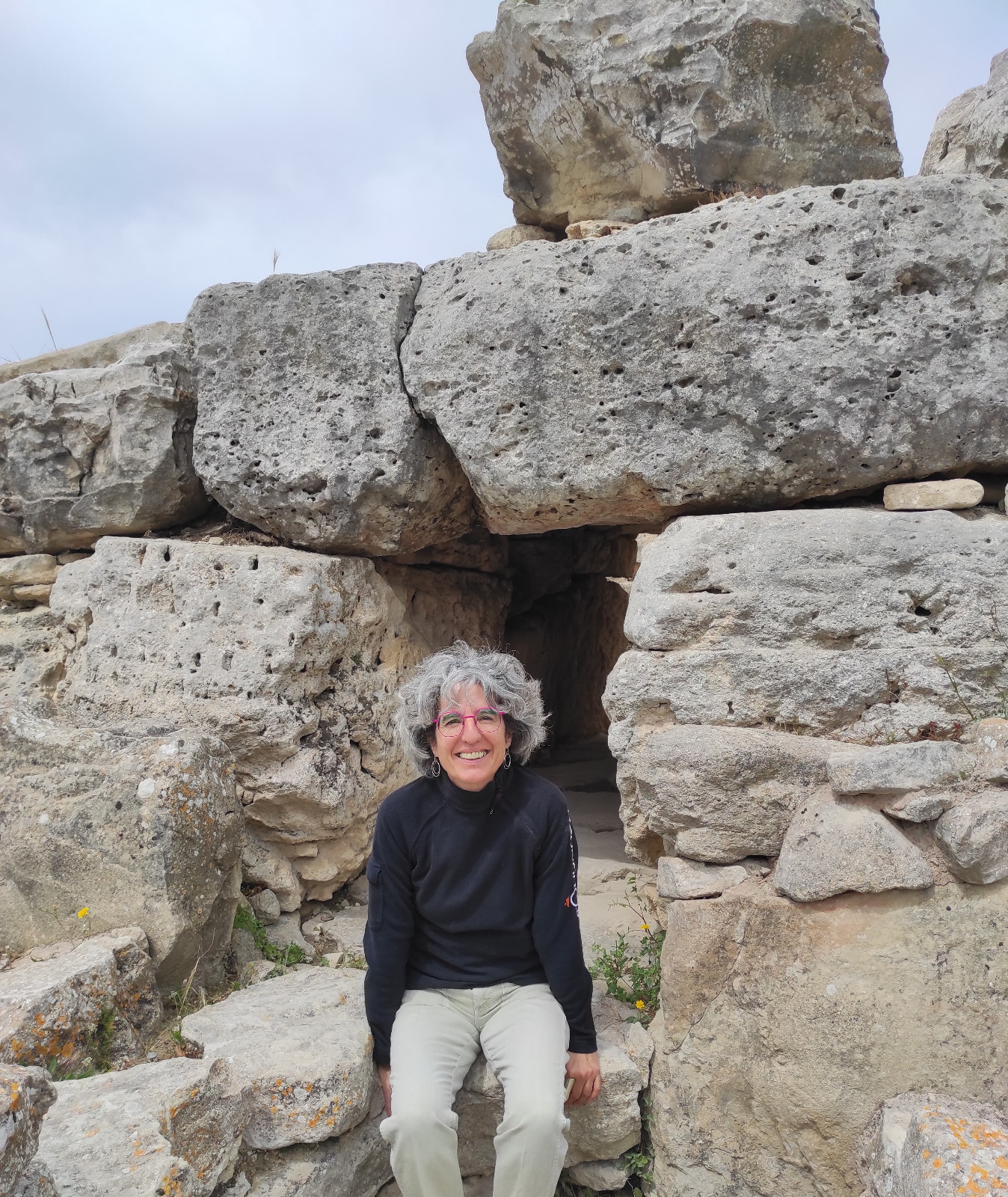 What led you to think that it might be the hair of a shaman? What led you to think that it might be the hair of a shaman?
The hypothesis is based on several lines of evidence. On the one hand, two of the three substances identified are potent hallucinogens that act on the central nervous system, altering perception, mood, cognition and behaviour. We also know that their consumption was continuous and, given the toxicity of these substances, we can imagine a very specialised knowledge in the deliberate induction of altered states of consciousness, which is a characteristic of shamanism. In Menorca we have evidence of the ritual use of caves whose access could be extremely dangerous, such as the Es Mussol Cave, and which denote divinatory or propitiatory ceremonies involving figurines with a hybrid form, half human, half animal, that we can also relate to shamanic practices.
Finally, the small box from the Es Càrritx Cave that contained the hair we analysed was decorated with concentric circles, also typical of other archaeological groups from different periods, and which are usually interpreted as a symbol of the dilation of the pupils produced by ingesting substances that allow us to "open the eye", to open perception or inner knowledge, and which, once again, we can relate to shamanism.
Do you have any hypothesis as to why the Talayotic people hid their hair after painting and cutting it?
We believe that the concealment of the elements of this peculiar funerary ritual is due to a profound crisis in the belief systems of Menorcan society that coincided with the cessation of ancestral funerary ceremonies.
What other lines of study about the Talayotics does your research open up?
We hope that this type of analysis can be replicated in other research projects that, after Es Càrritx, have also recovered hair, such as the Es Pas Cave and, more recently, the Biniedrís Cave, where it has been possible to determine that the locks were dyed with ochre. The diversity of contexts and, where appropriate, chronologies, could enrich the perspectives opened up by this line of research.
As a researcher, which archaeological projects in Menorca do you follow most closely?
In terms of scale, complexity and historical justice to Menorcan cyclopeism, I would undoubtedly highlight Cornia Nou and the work in the different circles of Torre d'en Galmés. Also worthy of special attention is the recent research in Cala Morell, which we owe to the originality and good work of the Entre Illes project, as well as the interesting perspectives opened up by the campaigns carried out in Sa Cudia Cremada.
At the beginning of this month we received the news that ICOMOS had endorsed the candidacy of Talayotic Menorca, clearing the path for its declaration as a World Heritage Site. What challenges do you think lie ahead for Menorca, beyond achieving this recognition?
The same challenge we have as a society: to preserve the legacy of the people who came before us so that future generations can continue to learn from it. Our species has an unlimited treasure that lies in the ability to create and to know ourselves, to live several lives thanks to our ability to know and pass on knowledge. This is wealth and inheritance of the good kind. And not only intangible, but also material. Seen in this light, the real challenge lies in ensuring that the benefits of collective treasures are equally collective.
|
Success of Talayotic Menorca at Tarraco Viva
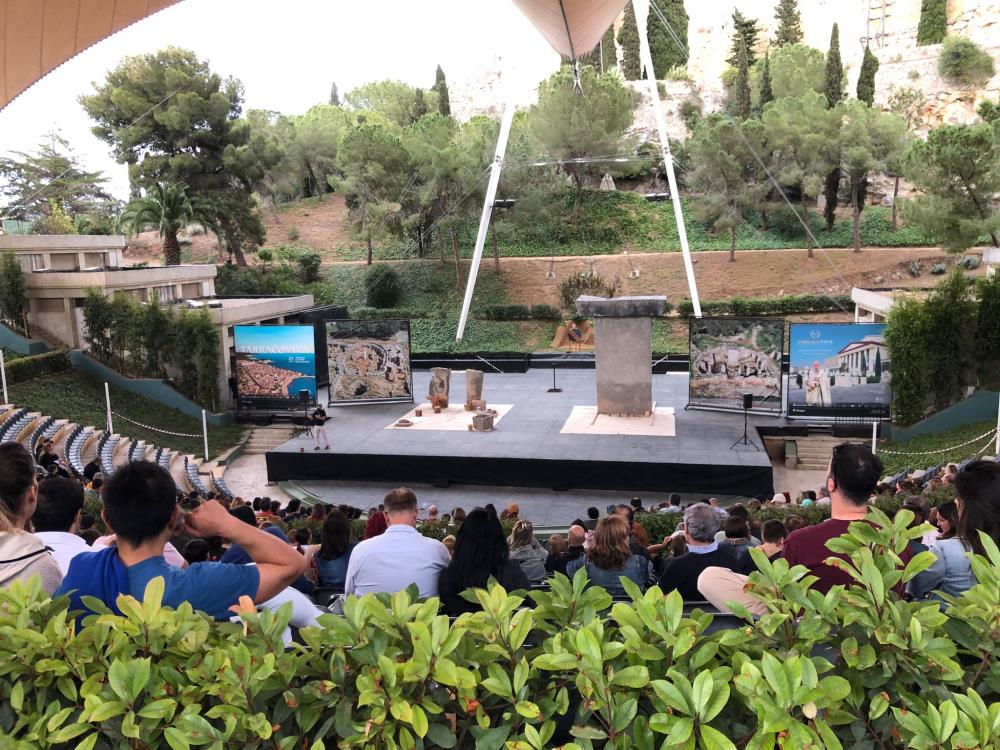 Talayotic Menorca took part in the Tarraco Viva historical reenactment festival with great success. The Menorcan candidacy organised various activities to raise awareness about Menorca's prehistoric heritage on the 20 and 21 of May, attracting some 1,500 people in total between the historical re-enactments, the sling workshop and the Talaiòtica beer tasting-talk. Talayotic Menorca took part in the Tarraco Viva historical reenactment festival with great success. The Menorcan candidacy organised various activities to raise awareness about Menorca's prehistoric heritage on the 20 and 21 of May, attracting some 1,500 people in total between the historical re-enactments, the sling workshop and the Talaiòtica beer tasting-talk.
The Talayotic Menorca stand at the Museum Fair also registered a constant influx of visitors, providing information about the candidacy, the archaeological projects underway and the museums in Menorca, as well as being a point of sale for books from the Sitjot collection, ceramic replicas and Talaiòtica beer.
The two performances of the historical re-enactment "Funditores Baleares. Los guerreros de las Islas Baleares" that took place on Saturday May 20 filled the Camp de Mart theatre auditorium with 650 people in the morning and around 750 in the afternoon show. Organised by Amics del Museu de Menorca and the Federació de Tir de Fona-Unió Excursionista de Menorca, the stage was set up with a replica of a domestic space from Torre d'en Galmés and the taula of Torralba d'en Salort, with a taula of the same dimensions as the original. The archaeologist Borja Corral situated the public in the context of the late Talayotic period, while a Talayotic family and the slingers performed actions to "illustrate" some of the domestic tasks or rituals that might have taken place at that time.
Meanwhile, the sling-making workshop run by Lluís Pons Livermore of Honderos de la Menor and the Federació de Tir amb Fona Balear - Unión Excursionista de Menorca, with a limit of 20 places, had 15 participants on Saturday and 20 on Sunday.
The talk and tasting of Talaiòtica beer and Menorcan cheese also exceeded the established capacity, bringing together around fifty people. This historical tour of Menorcan gastronomy was given by archaeologist Borja Corral and Roger Vila, master brewer at Grahame Pearce.
Tarraco Viva is a historical re-enactment festival that was born in 1999 as an activity to support the city of Tarragonas candidacy for its inscription in the UNESCO World Heritage list. This year it has celebrated its 25th anniversary as a festival fully rooted in the city and a benchmark among these festivals in Spain.
|
Summer course about Talayotic Menorca at UNED
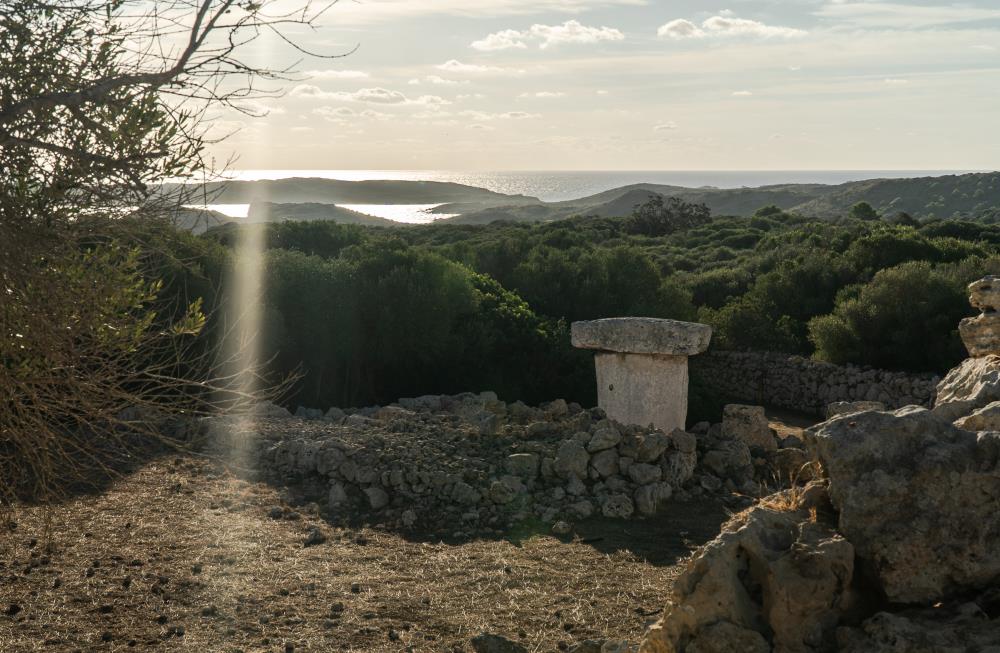 “Where the stones rise. The surprising Talayotic culture of Menorca, candidate for World Heritage” is the title of the new course that the UNED will teach on July 4 and 5 in Maó. The coordinator of the Talayotic Menorca candidacy, Cipriano Marín, and archaeologists such as Margarita Orfila, Antoni Ferrer, Montserrat Anglada, Irene Riudavets and Cristina Bravo will be some of the speakers. The course seeks to present a broad and multidisciplinary view of Talayotic culture. “Where the stones rise. The surprising Talayotic culture of Menorca, candidate for World Heritage” is the title of the new course that the UNED will teach on July 4 and 5 in Maó. The coordinator of the Talayotic Menorca candidacy, Cipriano Marín, and archaeologists such as Margarita Orfila, Antoni Ferrer, Montserrat Anglada, Irene Riudavets and Cristina Bravo will be some of the speakers. The course seeks to present a broad and multidisciplinary view of Talayotic culture.
The objectives are: get to know the fundamental and differentiating features of the Talayotic culture of Menorca; register these manifestations in the field of megalithism in the Mediterranean; relate the cultural manifestations of prehistory with their mythical aspects and their recreations in fiction; and relate heritage values to a new concept of sustainable tourism.
Inscriptions will open on May 17. Assistance can be face-to-face or online (live or deferred).
Program
Tuesday, July 4
09:30-11:30 a.m. Art and symbolism during Late Prehistory in the western Mediterranean. By Martí Mas Cornella. Professor of Prehistory. UNED.
12 p.m.- 2 p.m. Talayotic culture in Menorca and Mallorca.
By Montserrat Anglada Fontestad. Archaeologist. Museu de Menorca.
4:30 p.m.-6:30 p.m. Other tourism is possible. The candidacy of Menorca Talayotica for a World Heritage Site.
By Cipriano Marin Cabrera. Coordinator of Talayotic Menorca candidacy. Unesco.
6:30 p.m. - 8:30 p.m. The stones speak. Myth, magic and legend.
By Carlos Garrido Torres. Journalist and writer.
Wednesday, July 5
09:30-11:30 a.m. The peculiarities of the Talayotic culture in Menorca. Navetas, taulas and circles.
By archaeologists Irene Riudavets González and Cristina Bravo Asensio.
12 p.m.-2 p.m. The Balearic slingers, the lords of slinging.
By Margarita Orfila Pons. Emeritus Professor of Archaeology. University of Granada.
4:30 p.m.-6:30 p.m. Juan Ramis i Ramis, pioneer of studies on Prehistory in Spain.
By Antoni Ferrer Rotger. Archaeologist.
6:30 p.m.-8:30 p.m. The unheard of monolith. Prehistory in literature, cinema and comics.
By A. Francesc Mesperuza Rotger. Journalist and Professor Tutor. UNED Balearic Islands.
|
Talayotic Menorca recommended for UNESCO World Heritage List
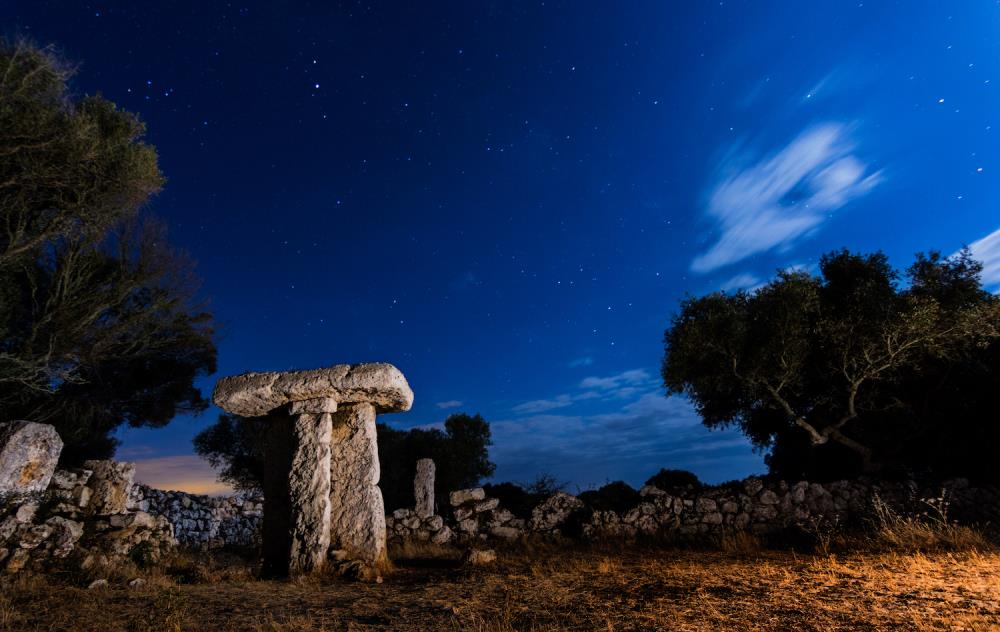 The path of Talayotic Menorca towards its recognition as a World Heritage Site receives the decisive support of ICOMOS, which in its final report recommends to UNESCO the inclusion of the Menorcan candidacy in its World Heritage List. After this last step, it will be the World Heritage Committee who will finally decide about its inscription during the 45th session to be held in Riyadh, Saudi Arabia, in September. In this case, the decisions of the Committee are made based on the reports and recommendations of ICOMOS. Now, nothing stands in the way of Talayotic Menorca to be a World Heritage Site. The path of Talayotic Menorca towards its recognition as a World Heritage Site receives the decisive support of ICOMOS, which in its final report recommends to UNESCO the inclusion of the Menorcan candidacy in its World Heritage List. After this last step, it will be the World Heritage Committee who will finally decide about its inscription during the 45th session to be held in Riyadh, Saudi Arabia, in September. In this case, the decisions of the Committee are made based on the reports and recommendations of ICOMOS. Now, nothing stands in the way of Talayotic Menorca to be a World Heritage Site.
According to the report, made public on May 10, Talayotic Menorca meets the required criteria III and IV, being the unique testimony of an insular prehistoric culture with an exceptional repertoire of illustrative monuments from the different stages of prehistory. The high density of prehistoric sites, their unusual level of conservation, and the unique constructions of Menorca —funeral navetas, circular houses and taulas, along with talayots and other structures—illustrate the evolution of the occupation of the island and represent an important source of knowledge about life during this period.
For ICOMOS, the distribution of the prehistoric sites in the agropastoral landscape of Menorca illustrates a spatial organisation that, due to the preservation of large amounts of evidence, is still readable to a large extent, showing visual interconnections between cyclopean structures as well as potential sacred, symbolic and political connotations.
Positive reformulation of the candidacy
ICOMOS appreciates the substantial work done by the State Party to reformulate the previously submitted nomination, as requested by the World Heritage Committee in 2017. According to the report, the research and documentation in support of the nomination is thorough, including the rationale for selecting the serial component parts, the delineation of the nominated property’s boundaries and the creation of extensive buffer zones, all of which were key concerns of the World Heritage Committee in 2017.
ICOMOS also recognizes the “evident commitment to the conservation of this property by the State Party (Spain) and the local community”, positively assessing the state of conservation of the sites and the legal protection they have, based on heritage designations, protected natural areas and the insular territorial ordering system.
The management system based on the creation of a participatory and inclusive coordinating entity, the Talayotic Menorca Agency, and the recently approved management plan for the nominated serial property provide a basis for the appropriate management of the nominated property, according to ICOMOS.
ICOMOS is one of the advisory bodies on which the World Heritage Committee relies in the fulfillment of its functions. It is in charge of evaluating the new applications, as has been the case of Talayotic Menorca, and monitors the state of conservation of the properties.
|
Archaeological excavation work begins at Montefí
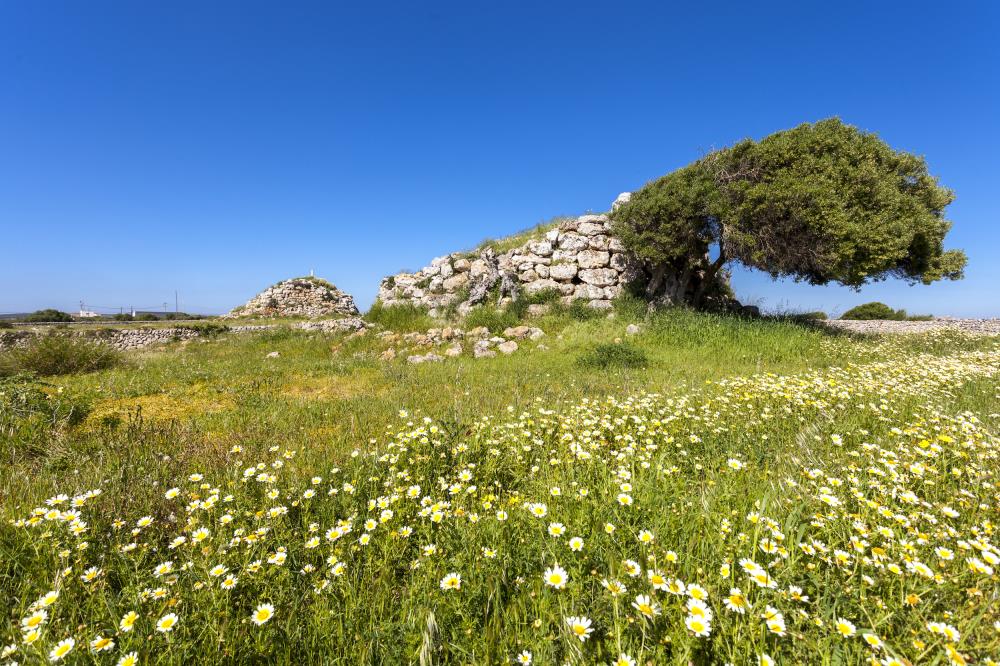 The archaeological work begins on May 15 for the restoration and consolidation of talayot 2 and cave 4 at the Montefí Talayotic site in Ciutadella. The project is financed with European Funds drawn from the Next Generation EU Recovery and Resilience mechanism, and is intended to improve visitor conditions at the site. The company Catarqueòlegs, SL, has the task of conducting the excavations. The state of conservation reveals deficient structural stability which hampers visits to the site, in particular talayot 2. The aim of this intervention is to resolve these issues and so improve the visitor experience. The archaeological work begins on May 15 for the restoration and consolidation of talayot 2 and cave 4 at the Montefí Talayotic site in Ciutadella. The project is financed with European Funds drawn from the Next Generation EU Recovery and Resilience mechanism, and is intended to improve visitor conditions at the site. The company Catarqueòlegs, SL, has the task of conducting the excavations. The state of conservation reveals deficient structural stability which hampers visits to the site, in particular talayot 2. The aim of this intervention is to resolve these issues and so improve the visitor experience.
In 2015 the Department of Cultural Affairs and Heritage of the Consell Insular de Menorca called for a series of technical proposals to draw up the Consolidation Project for talayot T2 and cave C4 at Montefí. The E. ARQ Ingeniería-Arquitectura SLP practice was ultimately commissioned to author these projects. Subsequently, in October 2017, a preliminary project was drawn up to apply for grants from the Spanish state to perform the work.
The Montefí archaeological site is currently owned by the Consell Insular de Menorca. The land acquired by the public authority covers an area of 43,187 m2, including the part which is home to most of the remaining structures at the archaeological site.
Montefí settlement
Montefí is a Talayotic settlement covering a large area, currently housing numerous monumental remains visible on the ground, above all the three talayots. The works are intended to conserve the settlement, while also raising the profile of the site and making it accessible to the public, and will involve:
- Consolidation of the archaeological remains to achieve their conservation.
- Adaptation of the building to improve visits and interpretation.
- Activation of the site within the historical heritage network of Menorca open to visitors.
- More in-depth knowledge gathered through the archaeological intervention.
Characteristics of the intervention
Since taking any action will alter the current configuration of the monument, and consolidation of the structure of talayot 2 requires a part to be dismantled, a prior excavation will be conducted of the upper platform of the building to allow a study of the construction system used, and if necessary, to adapt the proposed intervention techniques in line with the new data obtained.
Work will likewise be performed on the immediate vicinity of talayot 2 and cave 4, since it may prove possible to recover displaced architectural elements of the building. Taking into account both talayot 2 and cave 4, the intervention zone will be large enough to include the area comprising the cave, with the aim of uncovering its original entrance. Meanwhile, the excavation will allow historical data to be scientifically gathered, providing the basis to create resources to explain the site to visitors (information panels, etc.) with academic rigour.
In the case of cave 4, excavation may not be needed, strictly speaking, since we have records that it was used as a storage tank in recent times, and would therefore not contain any archaeological levels. If this reuse is confirmed, an archaeological inspection will be conducted to evaluate the type of intervention, by agreement at all times with the Heritage Service of the Consell Insular de Menorca.
|
Becatalaiotica 2023 starts May 13
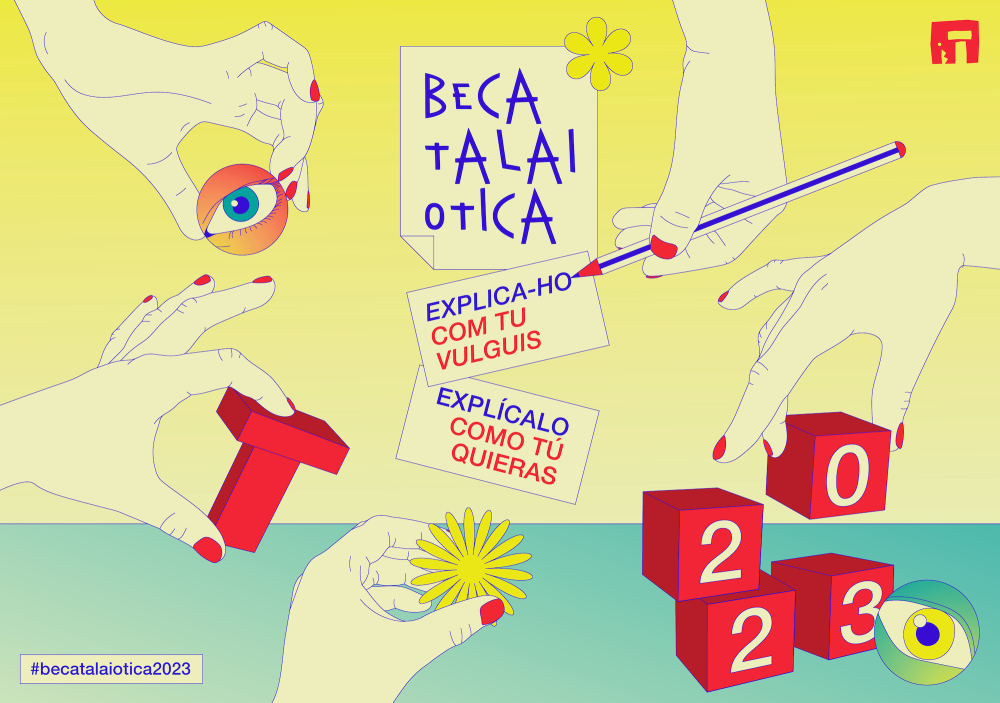 The Becatalaiotica 2023 is here. The contest, organized by the Associació d’Amics del Museu de Menorca with the support of Consell Insular de Menorca, is celebrating its 7th aniversary. The staging of Becatalaiotica will take place at the different Talayotic Menorca archaeological sites on May 13, June 4, 11 and 17, and July 1. The Becatalaiotica 2023 is here. The contest, organized by the Associació d’Amics del Museu de Menorca with the support of Consell Insular de Menorca, is celebrating its 7th aniversary. The staging of Becatalaiotica will take place at the different Talayotic Menorca archaeological sites on May 13, June 4, 11 and 17, and July 1.
Becatalaiotica is a cultural project created by the Amics del Museu de Menorca association with the aim of giving visibility to young talent, of claiming the inspiring value of the landscape and promoting the Talayotic Menorca candidacy for World Heritage among new audiences.
Five events, five participants, five sites. By converting the sites into open-air stages, the five finalists - young students between between 18 and 28 years of age - aim to create a free nature event, in which any method of expression is valid to transmit their vision about Menorca’s heritage or propose new ways of understanding it.
The assisting audience, apart from enjoying the event, must evaluate the proposals, assessing their originality, content and evocative power. The finalist who achieves the best evaluation will be granted a 2.000 € scholarship.
The dates and locations for each event are as follow:
Saturday, May 13 at 11 a.m. in Talatí de Dalt:
"Terra endins", a traditional Menorcan dance show and workshop with Paula Planas (Barcelona, 1998).
Sunday, June 4 at 10 a.m. in Torre d'en Galmés:
“La geganta talaiòtica”, a party and storyteller of giants with Maria Casadellà (Baix Empordà, 1997).
Sunday, June 11 at 10 a.m. in Torrellafuda:
“Tantos pasos como piedras”, an excursion and collective intervention in the landscape with Irene Trapote (Gijón, 1998).
Saturday, June 17 at 9:00 p.m. in Torralba d'en Salort:
“Light defense”, an art installation with Kitty Vollmer (Philadelphia, USA, 1994).
Saturday, July 1 at 8:00 p.m. in Cala Morell:
"Mort d'una ànima", a solo viola concert with Raquel Roldán (Tarragona, 2000).
Previous registration is required. To attend the events you must fill out this form, send an email to beca@menorcatalayotica.info or call / send a whatsapp to 608 16 39 34. The entrance is free. The cost of this activity is assumed by the Department of Cultural Affairs of the Consell Insular de Menorca.
|
Now available a look at the “Entre el cel i la mar” premiere in Montefí
Take a look at the Entre el cel i la mar premiere in Montefí, Ciutadella. The show was produced by the Talayotic Menorca Agency and the company iluminaM. This light and music event is another one of the actions carried out by the Department of Cultural Affairs, Youth, Education and Sports to continue the dissemination of Talayotic Menorca among the general public, emphasizing that next September the the World Heritage Committee will decide about its inscription on the UNESCO World Heritage List.
The show will cover the genesis and evolution of the Menorcan Talayotic culture, from the mid-Bronze Age to its decline with the Roman occupation of the island (123 BC), ending with the historical legacy that currently survives. It is the story of an exceptional prehistoric civilization that developed in this island territory trapped between the sky and the sea, forever marking the landscape of our island with its monumental buildings.
In this sense, the title chosen, meaning “Between the sky and the sea", refers to the candidacy’s file, given that Menorca Talayotica also provides exceptional testimony of an insular prehistoric culture associated with the sky. Certain monuments allow us to illustrate the vigorous relationship they had with the skyscape. Such is the case of the funerary navetas and the taulas, which show unique orientation patterns that distinguish the Talayotic people from other contemporary cultures with similar characteristics. It is the odyssey of an insular culture trapped between the sky and the sea.
|
"The big question is what brought about the crisis in the naveta settlements, which were then replaced by a culture focused on building monumental towers"
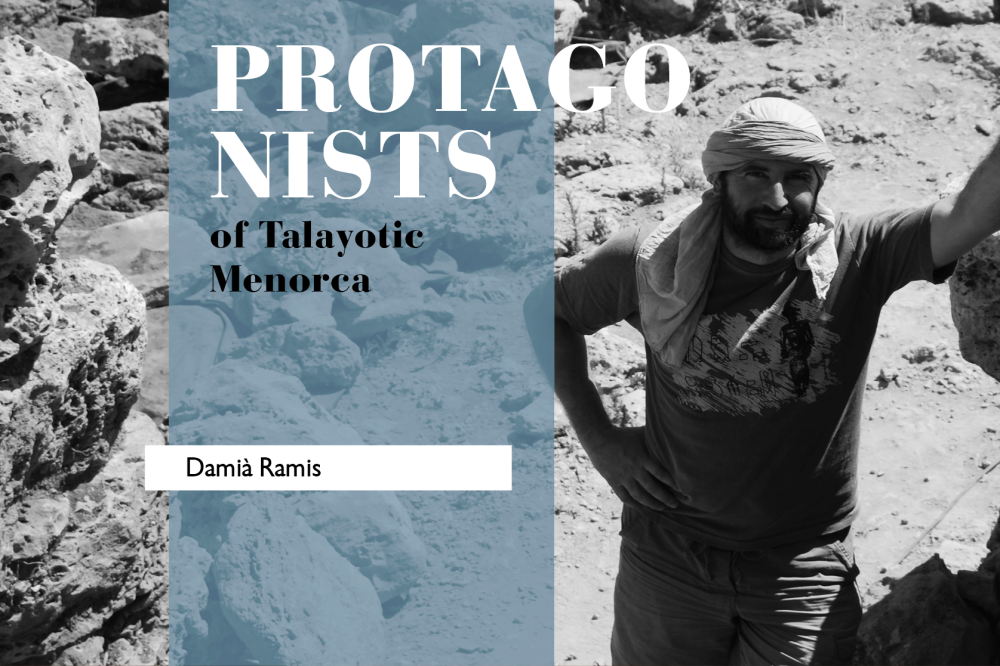 Damià Ramis holds a degree in History from the University of the Balearic Islands, a doctorate in Prehistory, and the Extraordinary Doctorate Award of the UNED. He is a member of the Scientific Council of the Talayotic Menorca Agency. At the Mediterranean Institute of Advanced Studies, he specialised in Archaeozoology, writing his doctoral thesis on the Faunal study of the initial phases of the Prehistory of Mallorca. Since 2003 he has worked as an independent archaeologist, directing or co-directing 77 archaeological digs, all in the Balearic Islands and Sardinia. He is the author or co-author of 150 scientific publications in the field of archaeology. Damià Ramis holds a degree in History from the University of the Balearic Islands, a doctorate in Prehistory, and the Extraordinary Doctorate Award of the UNED. He is a member of the Scientific Council of the Talayotic Menorca Agency. At the Mediterranean Institute of Advanced Studies, he specialised in Archaeozoology, writing his doctoral thesis on the Faunal study of the initial phases of the Prehistory of Mallorca. Since 2003 he has worked as an independent archaeologist, directing or co-directing 77 archaeological digs, all in the Balearic Islands and Sardinia. He is the author or co-author of 150 scientific publications in the field of archaeology.
Currently he is co-directing the Cornia Nou, Coll de Cala Morell and Sant Agustí Vell projects in Menorca; and s'Hospitalet Vell, Sa Ferradura and Las Atalayas de Can Jordi in Mallorca. He is also a member of the project team excavating the S'Urachi Nuragic settlement in Sardinia.
What first aroused your interest in archaeology?
I was keen on history and archaeology from a young age. When I began studying for my History degree in Palma a number of circumstances arose: first of all, there was a small group of us in the same year all with an interest in archaeology, and we would encourage one another as we went along. And also back then, in the mid-90s, the archaeological projects in Mallorca started up again, which gave us the chance to take part in plenty of digs as volunteers. We got to know archaeologists and also amateurs who had been involved in the digs for many years. Working with them and hearing their stories gave me an insight into a whole world which I found really appealing.
And what prompted you to choose to study the Talayotic culture?
I actually began at the opposite end of Balearic prehistory, studying aspects of the first settlers of the islands. I never particularly specialised in studying the Talayotic era, but for circumstantial reasons I have ended up spending more and more of my time working on this period. I joined existing excavation projects at Talayotic sites, and we started others, but we are still working on settlements from the previous era. I'm fascinated by this development of an initial autochthonous island culture, in the form of the naveta dwellings. Now, these villages end with the start of the Talayotic, which shows us that there is an ongoing strand linking the whole of Menorca's prehistory, and that only by seeing the bigger picture can we address the major topics. And the big question in this regard about the prehistory of Menorca and Mallorca is what brought about the crisis in the naveta settlements, which were then replaced by a culture focused on building monumental towers.
As a researcher, you have worked on archaeological projects throughout the Mediterranean, in particular in Mallorca and Menorca. What makes Menorca's Talayotic culture stand out from others of the same period?
Menorca's Talayotic culture doesn't reveal such monumental, rich or creative expressions as Sardinia's Nuragic culture, and furthermore exhibits very clear similarities with the Talayotic world of Mallorca. The Menorca Channel was always a transit route for people, objects and ideas between the two islands, but also served as a barrier. This tension between a shared origin and clear links to Mallorca, on the one hand, and a distinctive sense of island identity, on the other, can clearly be seen when looking at Talayotic cultural expressions. Menorca's Talayotic culture is in this regard original and unique, since it reflects the whole of the end part of the process of forging a distinctive identity on the part of a people who established themselves some four thousand years ago on a virgin island, and then suddenly disappeared, without leaving any element of continuity behind, shortly after the Roman conquest.
In your career as a researcher, which projects have made the biggest impression on you, or marked a turning point in your work?
That would undoubtedly be the first project, or set of projects, that I was involved in from 1998 onwards, over the course of a decade, and which involved reviewing the earliest human settlement of the Balearics. It was research that gave rise to debate, controversy and clashes. That was the context within which I came of age as a researcher and produced my doctoral thesis. It also made considerable waves internationally. That brought me into contact with archaeologists and other specialists from all round the world, some of whom I ended up working with later. It was Lluís Plantalamor himself who suggested that I come and work in Menorca.
On the Entre Illes Project you began excavating from scratch. Thanks to the efforts of your team, we now know that the population were farmers, who engaged in metalworking. What other singularities does the settlement, in such an inaccessible and inhospitable location, have to show us?
Our initial hypothesis, when we began our dig in 2011, was that Coll de Cala Morell was a settlement linked to sailing and overseas trade networks at the end of the Bronze Age. After twelve years of research, we have found no evidence of sailing, maritime trade or fishing. The sea was not a major factor in founding the settlement. Instead, as you said, this was a village inhabited by a farming community. It has two large tanks to collect rainwater, which leave no room for doubt as to the stable nature of this occupation. Nor is the chronology as initially presumed, since as with the other naveta settlements studied in Menorca, Coll de Cala Morell was abandoned around 1200 BC, coinciding with the earliest evidence of the construction of talayots on the island.
And so the most plausible interpretation based on the settlement's location is its inhabitants' defensive concerns. Bearing in mind that the enclosing wall protects access from terra firma, this all suggests that there was some degree of perhaps low-level conflict going on. It is a complex issue, because Coll de Cala Morell coexists with other nearby settlements, such as de Clariana, located on flat land without any visible defensive elements. In the Valley region, meanwhile, there are various naveta settlements standing on hills and with surrounding walls, such as Sa Bassa Verda.
The Cornia Nou project also arouses considerable interest, season after season. What advances has it brought about in our understanding of the Talayotic peoples? Are we any closer to being able to determine the function of the talayots?
Cornia Nou stands out in particular for its contributions to the initial phase of Talayotic culture, which were previously unknown, above all on the basis of the funerary sites. The digs over the past fifteen years have provided very valuable information about the farming community which lived there between 1000 and 500 BC. They have served to define the type of agriculture, livestock and the grazing strategies that they practised, within the context of a complex society, with a community-based means of organising labour within and around the excavated buildings. We have been able to determine that the large talayot at the site formed part, perhaps from its very conception, of an architectural complex with two large buildings abutting it, which were used to process and store agricultural and livestock produce.
Within this context, furthermore bearing in mind the substantial investment of labour in its construction, the talayot was clearly of social and symbolic significance. However, as to the specific activities which took place on the upper platform of the large, solid talayots, we remain in the realm of speculation, since unfortunately this floor has not been preserved. It is, however, likely that the talayots had a range of functions. In this regard, the small talayot at Cornia Nou is in truth the monumental gateway providing access to a fortified enclosure standing on a hill. Our aim over the coming years is to investigate this defensive wall linked to the talayot, which belongs to a point in time when one would not expect to come across a fortified settlement. Cornia Nou never ceases to surprise.
A date has now been scheduled for the World Heritage Committee in September. What challenges do you think that TM faces in achieving this international recognition?
My belief is that what has ultimately been defined as Talayotic Menorca needs to be seen as the representative part of a much larger reality, namely the archaeological heritage of the island as a whole. It may be that my vision regarding the overall motivations behind the nomination is incomplete or skewed, but I feel that the fundamental long-term aims must be the conservation and understanding of all this heritage. And these are the aspects which have attracted such huge effort over the years spent preparing the nomination. Fifteen years ago, no one would have imagined that we would now stand in such a favourable position. The knowledge, awareness and interest on the part of the population of Menorca has increased considerably, and there has also been greater dynamism in archaeological research. I think that the future challenges lie above all in consolidating and underpinning our achievements.
In terms of scientific research, it would be of interest to incorporate Menorca within work at the international level, such as studies into ancient human DNA, which have been offering some really significant and well-publicised results over recent years around the Mediterranean. And from the local perspective, there are specific topics that require more in-depth study in particular, such as what we refer to as the origin of Talayotic culture, and also its end. This latter aspect inevitably requires a more dynamic approach to the traditional archaeology of the era, serving to explain the process of romanisation of the island, and the disappearance of the whole previous substrate. All in good time.
|
Talayotic Menorca in Tarraco Viva 2023
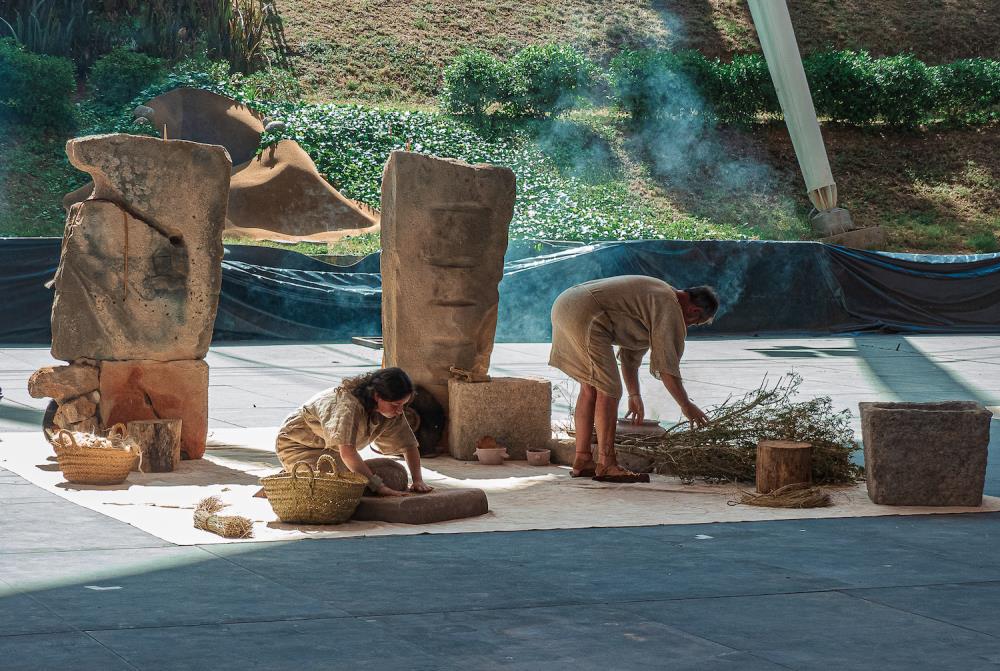 Talayotic Menorca will participate again this year in the Tarraco Viva historical re-enactment festival. The Menorcan candidacy will present various activities between May 19 and 21 in a unique setting to publicize Menorca's prehistoric heritage. The aim is to continue disseminating Talayotic Menorca at a national level, as contemplated in the MT Communications Plan. The Menorcan delegation will be made up of 14 people including organizers, slingers, participants in the historical recreation and the Grahame Pearce's brewmaster. Talayotic Menorca will participate again this year in the Tarraco Viva historical re-enactment festival. The Menorcan candidacy will present various activities between May 19 and 21 in a unique setting to publicize Menorca's prehistoric heritage. The aim is to continue disseminating Talayotic Menorca at a national level, as contemplated in the MT Communications Plan. The Menorcan delegation will be made up of 14 people including organizers, slingers, participants in the historical recreation and the Grahame Pearce's brewmaster.
Tarraco Viva is a historical re-enactment festival that was born in 1999 as an activity to support the candidacy of the city of Tarragona to be inscribed on the UNESCO World Heritage List. This year it will celebrate its 25th anniversary as a festival fully rooted in the city and a benchmark within the festivals that take place in Spain.
The activities related to Talayotic Menorca are the following:
1.- Historical re-enactment Funditores Baleares, The warriors of the Balearic Islands.
The Romans knew Menorca and Majorca because the slingers born on these islands threw stones more skillfully than anyone else. Nothing strange, since in the insula Balearis Minor there are more stones than any other resource, so the life of its inhabitants was never easy. The settlements of that time that are still preserved in the Menorcan landscape tell us about an exceptional culture -the Talayotic-, with constructions made of stone that are unique such as the navetas, the taula enclosures and the circular houses.
The show will stage a historical recreation complemented by the explanations of the archaeologist Borja Corral, which will place the public in the context of the final Talayotic period. In turn, a Talayotic family and some slingers will "illustrate" some of the domestic tasks or rituals that could have taken place during that time. Organized by Amics del Museu de Menorca with the collaboration of Honderos de la Menor and the Federació de Tir amb Fona Balear - Unió Excursionista de Menorca.
-Location:
Auditorium Theater of the Camp de Mart Gardens.
-Schedules:
5/20/23: 1:00 p.m. (Catalan)
5/20/23: 7:30 p.m. (Spanish)
2.- Sling making workshop. The Balearic slingshot, learn to make your own slingshot.
By Lluís Pons Livermore from Honderos de la Menor and the Federació de Tir amb Fona Balear - Unió Excursionista de Menorca. The slingshot is one of the oldest weapons, whose use is documented in many places around the planet. It is especially linked to people dedicated to grazing and hunting, where it can cover multiple needs. The talayotics enrolled as mercenaries in the Carthaginian and Roman armies, and used the sling as a dangerous weapon. They went into battle with three slingshots braided with esparto grass or hemp: a long-distance one firmly at the waist, a short-distance one at the head or neck, and an intermediate-range one in the hand.
In this workshop, one of the best shooters in the world will show various types of slingshots and projectiles, will teach how to weave a slingshot and use it with the Menorcan slingers technique (tennis balls).
-Location:
Auditorium Theater of the Camp de Mart Gardens.
-Schedules:
5/20/23: 11:00 a.m. (Catalan)
5/21/23: 11:00 a.m. (Spanish)
3.- Chat and tasting. Beer and cheese from Menorca. A historical journey through Menorcan gastronomy.
The archaeologist Borja Corral will talk about gastronomy in Talayotic and Roman times in Menorca. They will pay special attention to products such as wine, beer and cheese. It will be linked to the explanation of these products in modern times and a tasting of Talaiòtica beer and Maó cheese. By Roger Vila, Grahame Pearce's brewmaster.
-Location:
Presentation tent of the Camp de Mart Gardens.
-Schedules:
5/20/23: 1:00 p.m. (Catalan)
|
Direct evidence of the use of multiple drugs 3,000 years ago in Cova des Càrritx
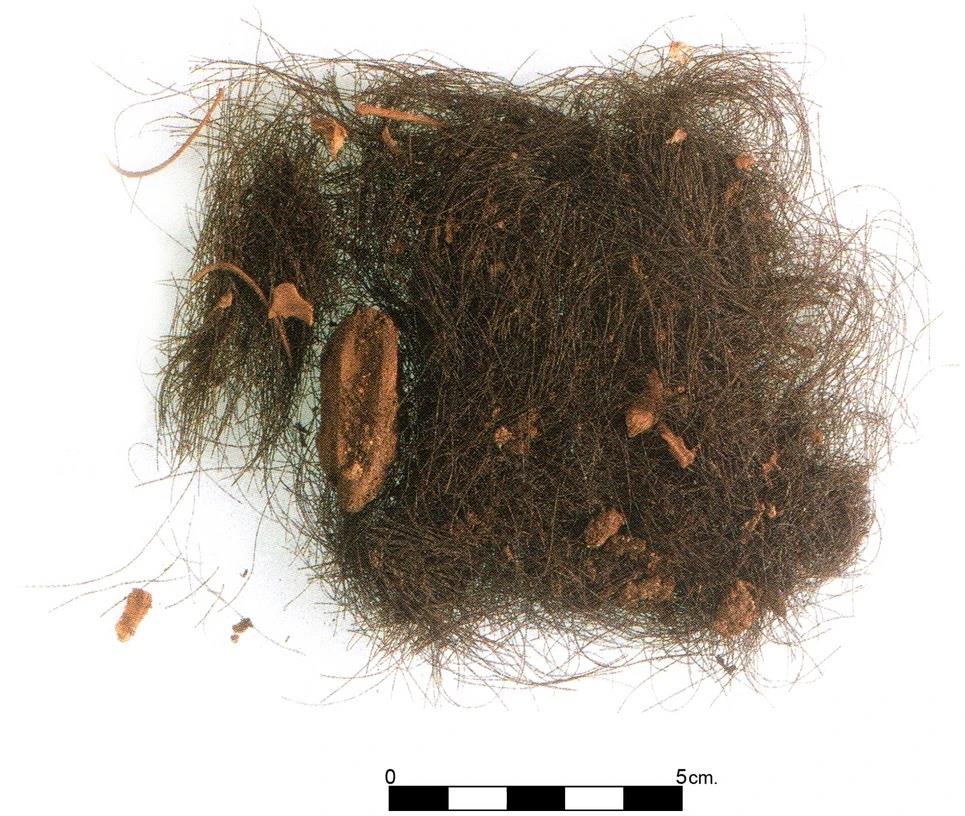 Discovered 28 years ago, the exceptional finds in the Cova des Càrritx continue to provide valuable information about the habits and customs of the prehistoric population of our island. The unusual discovery, at the time, of human hair in this burial cave from the Naviform period has provided a unique opportunity to delve into the medicinal practices and rituals of the Talayotic people. The result: the first direct evidence of the use of psychoactive substances found in humans in Europe. Discovered 28 years ago, the exceptional finds in the Cova des Càrritx continue to provide valuable information about the habits and customs of the prehistoric population of our island. The unusual discovery, at the time, of human hair in this burial cave from the Naviform period has provided a unique opportunity to delve into the medicinal practices and rituals of the Talayotic people. The result: the first direct evidence of the use of psychoactive substances found in humans in Europe.
The team responsible for this study has been Elisa Guerra, University of Valladolid; Cristina Rihuete, Rafael Micó, Roberto Risch and Vicente Llull from the Autonomous University of Barcelona; and Hermann M. Niemeyer from the University of Chile. The team published "Direct Evidence of Multiple Drug Use in Bronze Age Menorca (Western Mediterranean) from Human Hair Analysis" in Scientific Reports, an open access journal that disseminates original research from all over the world.
This work has provided direct evidence for the use of drug plants and, most interestingly, has revealed the use of multiple psychoactive species 3,000 years ago. In a sample of the hair from Cova des Càrritx they detected, among others, ephedrine, atropine and scopolamine. The researchers concluded that the consumption of these three substances was continuous and prolonged over time.
Combing the dead
Discovered intact by speleologists Pere Arnau and Josep Márquez in 1995, the excavations and subsequent investigation of the Cova des Càrritx was carried out by ASOME (Research Group in Mediterranean Social Archaeology) as part of the Autonomous University of Barcelona, thanks to the sponsorship of the Consell Insular de Menorca and the Rubió Foundation. These works allowed for the reconstruction of the ritual that involved the combing, dying and cutting of locks of hair, as well as the discovery and funerary applications of several objects.
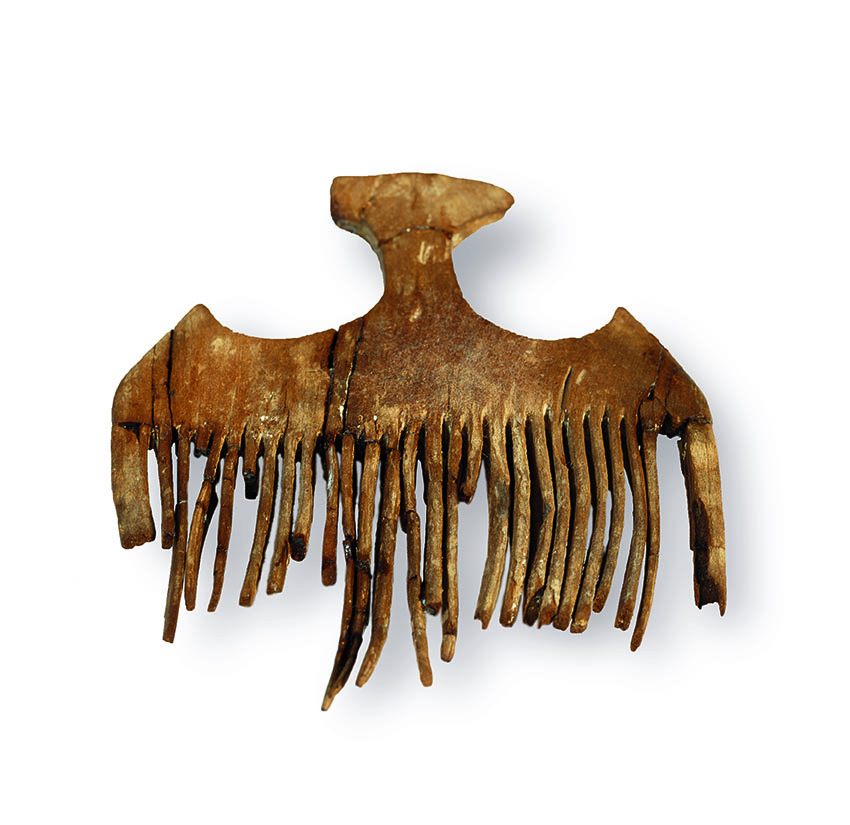 And what did this singular ritual consist of? At the Cova des Càrritx, but also at other burial sites in Menorca (e.g., Cova des Pas, some of the hypogea at the Calescoves cemetery, Biniedrís cave, the naveta of Es Tudons), there is evidence that during a 300-year period before the final use of these tombs (between ca. 1100 and 800 cal BCE, according to radiocarbon dating results) a singular post-mortem treatment took place involving part of the deceased individuals’ hair.
After the corpses were deposited, strands of hair were intentionally dyed or anointed red in situ. Some locks of hair were combed, cut out, and finally introduced into tubular containers made of wood or antler provided with bases and lids which sealed the hair strands inside. The lids, often decorated with carved series of perfect concentric circles, held opposing perforated lugs that served to secure the containers with the aid of strings. Once the ritual was completed, the tubes containing hair were usually left nearby the deceased. The hair strands analyzed were found inside a container from Chamber 5.
Psychoactive substances
Hair testing has revealed itself as an effective method to detect the consumption of certain drugs and is a widely-accepted technique in the field of Forensic Toxicology. The study of drug use in Prehistoric Europe has mainly been based on indirect evidence, such as archaeobotanical remains of drug plants, artistic depictions, and occasionally the detection of drug alkaloids in certain artefacts. The unusual finding of human hair in the Cova des Càrritx provided the opportunity to obtain direct evidence for the use of plant drugs by Late Bronze Age people.
Tropane alkaloids are highly psychoactive, exerting multiple effects on the central nervous system. Rather than just being hallucinogens, atropine and scopolamine belong to the group of deliriant drugs, i.e., they induce delirium characterized by extreme mental confusion, strong and realistic hallucinations, disorientation, alteration of sensorial perception, and behavioral disorganization. Out-of-body experiences and a feeling of alteration of the skin, as if growing fur or feathers, are usually reported. In Europe, tropane containing Solanaceae have a long history of use as medicines, poisons, and intoxicants, but they have achieved their most notorious reputation in association with European witchcraft during the Middle Ages/Early Modern period. The powerful mental and behavioral effects of these plants have made them indispensable ingredients in the botanical preparations used by shamans worldwide in rituals for divination, prophecy, and ecstasy.
On the other hand, ephedrine exerts a sympathomimetic action similar to that of adrenaline, i.e., excitement and enhancement of mental alertness and physical activity, reduction of fatigue, improvement of concentration, and suppression of hunger. It has also served as a remedy to treat colds, asthma, and hay fever among other medical purposes.
Shaman hypothesis
The researchers emphasize that the psychoactive substances detected in this study are not suitable for alleviating the pain involved in severe palaeopathological conditions attested in the population buried in the Cova des Càrritx, such as periapical abscesses, severe caries and arthropathies. Considering the potential toxicity of the alkaloids found in the hair, their handling, use, and applications represented highly specialized knowledge, according to Guerra's team. That’s why those responsible for the study point out that the hair analyzed could be from a shaman, since he was able to control the side effects of plant drugs through ecstasy that made diagnosis or divination possible.
They also establish a parallelism with the series of concentric circles carved on the lids of the tubes found in the Cova des Càrritx. Given the mydriatic effect of the alkaloids detected in the hair samples, the researchers interpret these circles as eyes, which somescholars have considered as a metaphor of inner vision, in some cases related to altered states of consciousness and visionary experiences under the influence of hallucinogens. The recent discovery that two Late Pre-Columbian ceramic containers from the Central Arkansas River Valley which tested positive for atropine, were decorated with spiral motifs supports this interpretation.
The team headed by Guerra adds that by 800 BC, populations of the Balearic Islands underwent a transformation of their social structures. Archaeological evidence points to population growth, the abandonment of burial sites, and a slight decline in extra-island contacts. In this context, the researchers believe that it is possible that, in the Cova des Càrritx, individuals reluctant to abandon ancient traditions hid a collection of ritual objects belonging to certain members of the community, possibly shamans, in the hope that the former social order could be re-established in the future.
|
"The celestial orb was for the ancient societies as important as the land and sea around them"
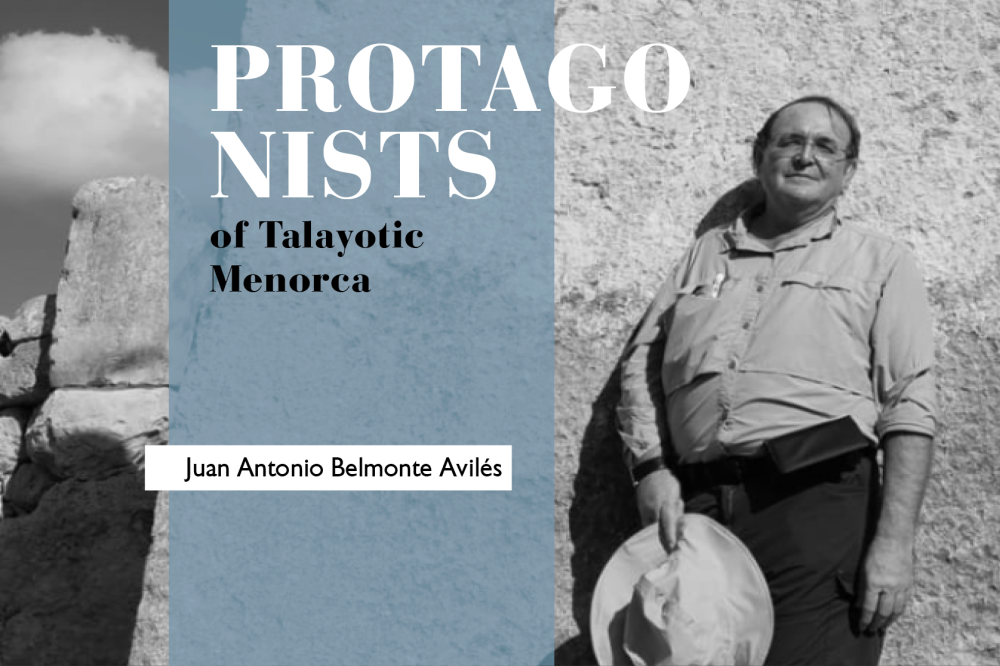 The astronomer Juan Antonio Belmonte Avilés is a member of the Scientific Council of the Talayotic Menorca Agency, and one of the authors of Menorca's UNESCO World Heritage nomination dossier. With a Degree in Physical Science from Barcelona University and Doctorate in Astrophysics from La Laguna University, he holds the position of Research Professor at the IAC (Canary Islands Institute of Astrophysics), where he conducts research in exoplanetology and archaeoastronomy. The astronomer Juan Antonio Belmonte Avilés is a member of the Scientific Council of the Talayotic Menorca Agency, and one of the authors of Menorca's UNESCO World Heritage nomination dossier. With a Degree in Physical Science from Barcelona University and Doctorate in Astrophysics from La Laguna University, he holds the position of Research Professor at the IAC (Canary Islands Institute of Astrophysics), where he conducts research in exoplanetology and archaeoastronomy.
Over recent decades he has focused his research on the astronomic traditions of the ancient cultures of the Mediterranean. He currently chairs the "World Heritage and Astronomy" commission of the IAU (International Astronomical Union).
This scientific task further adds to his extensive track record in teaching and scientific outreach: he has published some fifteen books and written more than two hundred articles about these subjects, in both scientific journals and popular science magazines. He holds an associate position at the Department of Astrophysics of La Laguna University, where he has taught classes in the History of Astronomy and Archaeoastronomy, and also teaches Habitability and Astrobiology. He has likewise served as Director of the Tenerife Museum of Science and the Cosmos (1995-2000), chaired the SEAC (European Society for Astronomy in Culture, 2005-2011) and the CAT (Time Allocation Committee) of the Canary Islands observatories (2003-2011).
Let's begin by finding out a little of your personal background. What led to your interest in studying the stars?
At difficult times in your teenage years, you reach decisions without really understanding why. My passion was history and geography, my family was full of doctors, and fate seemed to be pushing me towards that specialist field. In the late Seventies history didn't offer much of a future, aside from teaching. And then all of a sudden, I discovered astronomy. And to be an astrophysicist you had to study Physics, which wasn't available as a course in Murcia, my home town.
My siblings kept telling me that I needed to get away from home, and so I always joke that if there had been a Physics course in Murcia, I would be an architect. It was just after my 18th birthday that I took the decision. I headed off to Barcelona, but never forgot my passion for history, ancient languages, architecture, cosmography. Egypt, Assyria and Rome were to be a constant in my life.
And that passion gave rise to a profession: how did you end up specialising in archaeoastronomy?
When I finished my studies specialising in Astrophysics in Barcelona, I went off to the IAC, in Tenerife, which at the time was a new institution, with little experience but plenty of promise and enthusiasm. I began a thesis in stellar physics, and would most likely still be studying the interior of stars, through astroseismology, if a series of chance happenings hadn't brought me face to face with a discipline that I was completely unaware of, but which offered me the perspective I had dreamed of, to combine all my passions: archaeoastronomy.
There wasn't, and still isn't in Spanish at least, any formal course of education allowing you to study such a trans-disciplinary subject, which didn't fit in with any classification. And so you could say that I am self-taught. I read all there was to be read, and invited the leading lights in archaeoastronomy from all round the world to teach part of the doctorate course in the History of Astronomy that I had taken on. Anthony Aveni from Colgate, Michael Hoskin from Cambridge, Clive Ruggles from Leicester, Ivan Sprajç from Ljubliana, Stanislaw Iwanizewski from the INAH in Mexico, Rolf Krauss from Berlin, among others, all visited the IAC, and along with my students, I gradually soaked up their knowledge and know-how.
The change of century was a golden age in that regard. In 2005, with projects in progress in Egypt, the Iberian Peninsula, the Mediterranean islands and North Africa, almost without realising it, I was elected as President of the SEAC. Archaeoastronomy, which is more well-known and better cited these days, as cultural astronomy, had gone from being a passion to a profession. My guiding light as a researcher from that time onwards, along with exoplanets, the umbilical cord linking me to astrophysics.
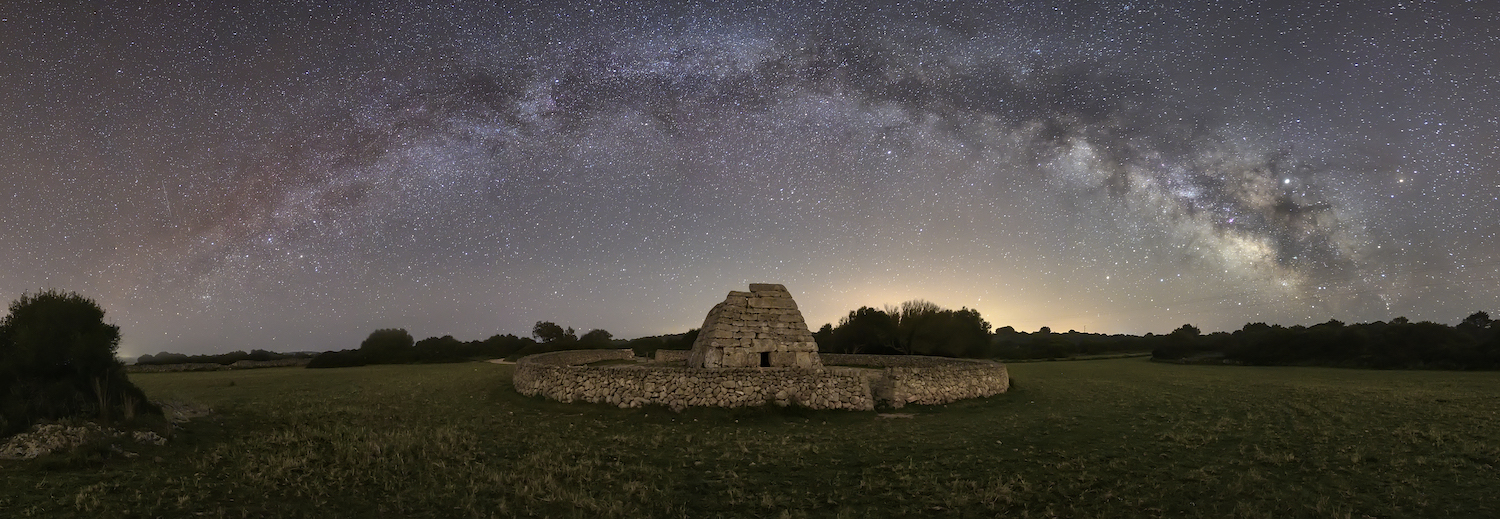 What data does archaeoastronomy provide in explaining an ancient culture such as the Talayotic civilisation? What data does archaeoastronomy provide in explaining an ancient culture such as the Talayotic civilisation?
Archaeoastronomy is a form of archaeometry more connected with the archaeology of the landscape. We mustn't overlook what is going on above the horizon if we want to understand the societies of the past. The celestial orb was for them as important as the land and sea around them, the landscape. And astronomy is also the only discipline which could position us in time and space, before mankind invented the compass, GPS or atomic clocks. The heavens, with their regular movements and apparent immutability, also offered patterns which helped to create a cosmological vision and eschatology which, although they were (almost) beyond all comprehension, generated hope.
Which is why buildings pointed towards the stars above, and were fitted into the landscape without overlooking the corresponding celestial sphere. The patterns that were established remained in place for centuries. Calendars were created by observing the sun, the moon and the stars to keep track of time. The heavens were mapped to provide a guide, above when navigating stormy seas or inhospitable deserts. These are all the data analysed by cultural astronomy, and in particular archaeoastronomy, with reference to ancient buildings. Menorca is a paradigm in this regard.
What was it that prompted you to study Talayotic culture, and how did your relationship with Menorca begin?
That was down to my mentor, Prof Michael Hoskin of Cambridge University. Michael had pioneered archaeoastronomy studies in Spain, specifically in Menorca, working in the late Eighties on the island's taulas, navetas and megalithic sepulchres. In 1993, thirty years ago now, I got in touch with him to ask if he wanted to contribute to a collective work, "Hispanic Archaeoastronomy", which was to be brought out by Equipo Sirius, the publishing house of the journal [Tribuna de] Astronomía back then. His reply was enthusiastic.
It fell to me to translate and edit his chapters, including the one dedicated to Talayotic culture, which was my first contact with Menorca. In the late Nineties I spent a long time on the island, and fell in love with it. A little later I worked in Mallorca, and Talayotic culture became another of my lines of research, which I also linked in with my work on the island of Sardinia, so different but at the same time so similar to Menorca.
What was the relationship between the Talayotic people and the heavens?
Archaeoastronomy studies show that the population that arrived in the Balearic Islands a little over 4,000 years ago brought with them their customs of funerary orientation, which suggest that these people originated on the coasts of the Gulf of Lion.
Meanwhile, their elaborate rituals, represented by the taula enclosures, suggest the need to observe the sky against open horizons, revealing patterns, asterisms (constellations) that are today invisible from the island of Menorca. The direct connection between these and the rituals evades us, but it is particularly striking to note that when those stars disappeared from the skies above Menorca, they stopped building the taulas. Although the cause-effect relationship cannot be proven, it nonetheless remains indicative.
And what tools or knowledge did the Talayotic people use to steer by the constellations?
We do not know for certain which constellations the peoples of the Balearic Islands were familiar with. As they weren't sailors, we don't know if they mapped the skies for this purpose. Nor do we know they used particular asterisms to position themselves in time, as many other contemporary Mediterranean peoples did. And we also know nothing of whether they revered any particular star, planet or constellation.
What is striking, however, is to note that Sirius, the brightest star in the sky towards which the Torralba taula points, was a seasonal marker of the first order in Egypt, for example, where it was also an avatar of the goddess Isis. The discovery of Egyptian artefacts in the excavations, or the mention of Caelestis at Son Catlar, suggests something, but we cannot go much further.
There has also been much talk of the possible relationship between the cyclopean cultures of Menorca and Sardinia, and so the fact that landmark buildings of both these civilisations point towards the same groups of stars, such as the Southern Cross and the lucidae of Centaurus, raises some intriguing enigmas.
Highlighting the importance of Michael Hoskin as a figure, what are the main conclusions of his research on Menorca to which you contributed?
My collaboration with Michael culminated in the publication in 2001 of Reflection of the Cosmos, which we wrote together. By then I had already assimilated all his findings in the Balearic Islands and Iberia, and espoused them, to a certain extent. That friendship and collaboration continued over the next two decades, up until his death in 2021 at the age of 91.
By then I was already the leading proponent of his work, intermingling it with my own. His earliest hypotheses were backed up by later findings, and even survived certain paradigm shifts, such as the new datings of the taulas, indicating they were closer in time.
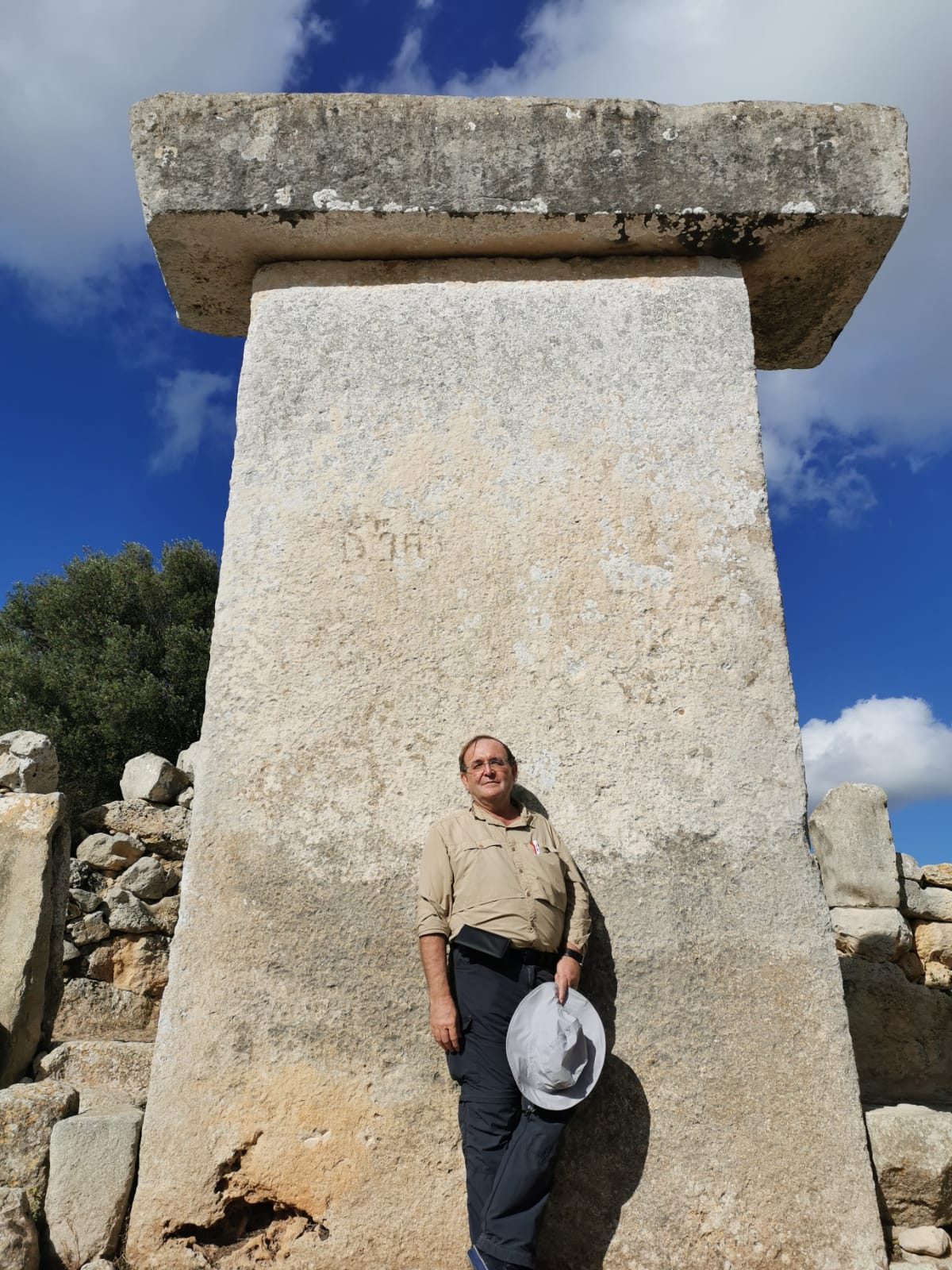 What hypothesis do you consider to be the most plausible to explain the orientations of the Talayotic monuments? What hypothesis do you consider to be the most plausible to explain the orientations of the Talayotic monuments?
Given all that I said earlier, when the possibility came up of incorporating studies into cultural astronomy as an additional element in Talayotic Menorca's World Heritage nomination, and given Michael's advanced age, I found myself in the perfect position to serve as ambassador for the skies of Menorca as a cultural landmark of the first order, characterising the attributes and underpinning their universal and exceptional value.
We considered what could be the most important features characterising the island and making it distinctive, in addressing the vital comparative analysis with its potential rivals, including Sardinia and Malta. And so we went back to the hypotheses as to the orientation of the dolmens, the navetas and taulas, that we had considered earlier.
The funereal monuments seems to correspond to a lunar pattern. The taulas, a stellar pattern. The sun has not for the moment offered irrefutable evidence, but the effects of light and shadow inside some of the funereal caves suggest interesting perspectives for the future.
What is for you the monument that best represents the cosmological vision of the Talayotic people?
A hard question to answer. My favourite is the taula complex at Torralba d’en Salort, but then again it is the exception to the rule, as it is not the most representative structure.
In that regard, the outstanding complex at Torre d’en Galmes is unrivalled. Everything is represented there: talayots dominating the landscape, a taula facing the sea and the Southern Cross, and in the vicinity a dolmen (Ses Roques Llises), evoking the migrations of the past. I could go on…
How have your and Michael Hoskin's studies help to distinguish the Talayotic culture of Menorca with a view to the possible World Heritage listing?
After this exasperating uncertainty, if the World Heritage declaration proves successful in Riyadh in a few months' time, which is what we all hope and wish, this will be the third time that archaeoastronomy has played a key role in the inclusion of a Spanish site on the list. The previous examples were Antequera and the peaks of Gran Canaria. I found myself involved in all of them, and I think that my participation marked one of the proudest moments of my career as an archaeoastronomer.
Without Michael, neither Antequera nor Menorca would have included the heavens and their interaction with the landscape as a fundamental element in the exceptional universal value of the nomination's attributes. In Menorca, its situation, a land enclosed by sky and sea, the observation of the heavens and their interaction with the landscape proved a fundamental element. Which is what made it so important for them to be represented in the nomination dossier, and based on my experience in the evaluation process, in which it was a pleasure and an honour to take part, although I do not want to get ahead of events, it was a factor which really helped to showcase our bid and give it sex appeal.
Michael lived to see the dolmens of Antequera declared a World Heritage site, and I am sure that wherever he is, even if only in our memory, he will be really proud when Talayotic Menorca achieves this too.
|
Premiere of “Entre el cel i la mar” in Montef
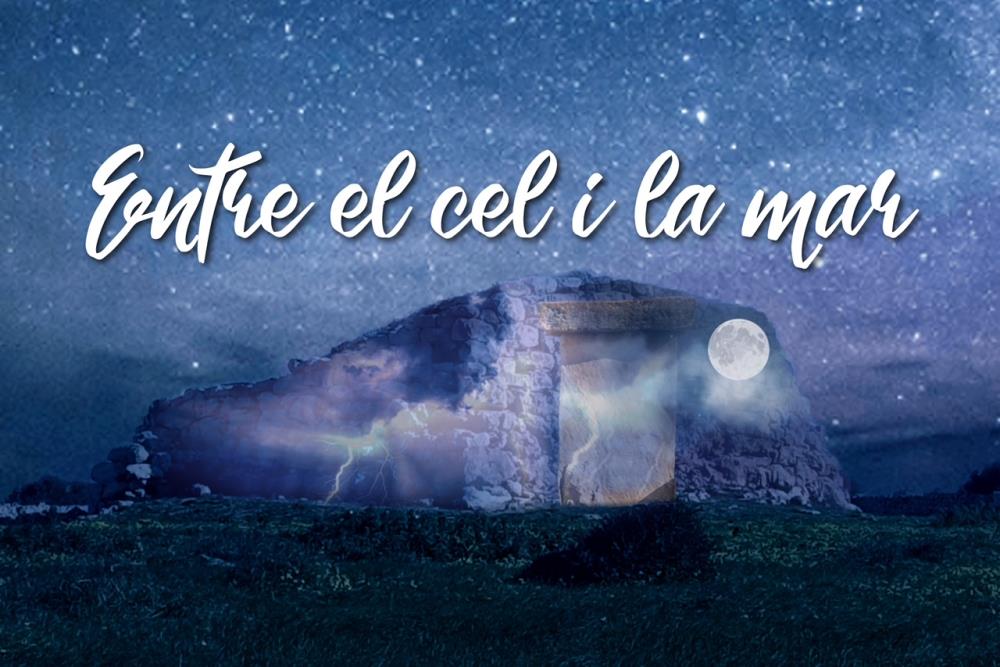 Entre el cel i la mar is the title given to the show produced by the Talayotic Menorca Agency and the company iluminaM that will premiere on April 15 at the Montefí site, in Ciutadella. The light and music event is another one of the actions carried out by the Department of Cultural Affairs, Youth, Education and Sports to continue the dissemination of Talayotic Menorca among the general public, emphasizing that next September the the World Heritage Committee will decide about its inscription on the UNESCO World Heritage List. Entre el cel i la mar is the title given to the show produced by the Talayotic Menorca Agency and the company iluminaM that will premiere on April 15 at the Montefí site, in Ciutadella. The light and music event is another one of the actions carried out by the Department of Cultural Affairs, Youth, Education and Sports to continue the dissemination of Talayotic Menorca among the general public, emphasizing that next September the the World Heritage Committee will decide about its inscription on the UNESCO World Heritage List.
As the Vice President and conseller of Cultural Affairs, Miquel Àngel Maria, has always stated, Talayotic Menorca is a living project that must continue to be promoted regardless of the fact that we are now waiting for the Committee to be held in September.
The event will consist of two free screenings scheduled for 9:00 p.m. and 9:45 p.m. The show will cover the genesis and evolution of the Menorcan Talayotic culture, from the mid-Bronze Age to its decline with the Roman occupation of the island (123 BC), ending with the historical legacy that currently survives. It is the story of an exceptional prehistoric civilization that developed in this island territory trapped between the sky and the sea, forever marking the landscape of our island with its monumental buildings.
In this sense, the title chosen, meaning “Between the sky and the sea", refers to the candidacy’s file, given that Menorca Talayotica also provides exceptional testimony of an insular prehistoric culture associated with the sky. Certain monuments allow us to illustrate the vigorous relationship they had with the skyscape. Such is the case of the funerary navetas and the taulas, which show unique orientation patterns that distinguish the Talayotic people from other contemporary cultures with similar characteristics. It is the odyssey of an insular culture trapped between the sky and the sea.
Montefí is a Talayotic settlement from the 10th century B.C. It was used until Roman times. At its peak, it was one of the largest towns in the area near the port of Ciutadella. Montefí is unique because it doesn’t have a taula enclosure, although it cannot be ruled out that it originally did.
The mapping’s soundtrack was composed specially for the occasion by the Menorcan composer David Prats. iluminaM is an audiovisual production company specializing in mapping and large-format projections headed by Kodomos, creative director, and Tomeu Fiol, technical direction and production.
Practical information
The screenings are free and aimed audiences of all ages. It is recommended to leave the car in the parking lot of the same site and, if full, near the New Cementery of Ciutadella. Once there, you must follow the marked route until you reach the north talayot of Montefí, where the show will take place. The itinerary to the north talayot will be illuminated.
This Talayotic settlement is located next to the Me-1 main road from Maó to Ciutadella, at kilometer 42. Access is from the south, via Camí Vell de Ciutadella.
|
Evidence of winter solstice celebrations in the Talayotic era
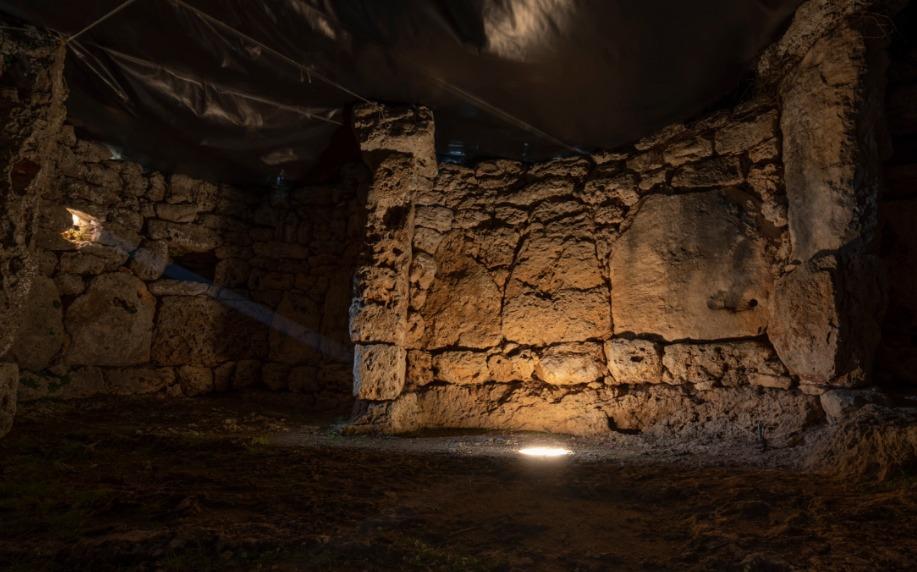 A scientific article was published this week in Spal. Revista de Historia y Arqueología de la Universidad de Sevilla, describing an archaeo-astronomical event in a Talayotic building in Menorca that had not previously been uncovered. The study was conducted at the shrine of the Western taula in the settlement of So na Caçana (Alaior). During the winter solstice, the sun's rays enter the building through a small window, lighting up a special place within the enclosure. The authors of the article suggest that this event would, for the people of Menorca in the Talayotic era, have represented a hierophany. In other words, that the sun would constitute one of the main divinities of the Talayotic pantheons, and its rays entering the taula enclosure would represent a manifestation of this divine entity. A scientific article was published this week in Spal. Revista de Historia y Arqueología de la Universidad de Sevilla, describing an archaeo-astronomical event in a Talayotic building in Menorca that had not previously been uncovered. The study was conducted at the shrine of the Western taula in the settlement of So na Caçana (Alaior). During the winter solstice, the sun's rays enter the building through a small window, lighting up a special place within the enclosure. The authors of the article suggest that this event would, for the people of Menorca in the Talayotic era, have represented a hierophany. In other words, that the sun would constitute one of the main divinities of the Talayotic pantheons, and its rays entering the taula enclosure would represent a manifestation of this divine entity.
The authors of the study are Irene Riudavets González (postgraduate student at the Universitat de Barcelona/NURARQ SC/Institut Menorquí d’Estudis), Antoni Ferrer Rotger (Institut Menorquí d’Estudis), Sebastià Barceló Forteza (Department of Theoretical Physics and Cosmology, Universidad de Granada), Gerard Remolins Zamora (Università di Bari/ReGiraRocs SLU), Antoni Cladera Barceló (PhotoPills SL) and Cristina Bravo Asensio (Institut Menorquí d’Estudis/NURARQ SC).
Taula enclosures
Taula enclosures are religious spaces exclusive to Menorca, which were in use during the late Talayotic period, between 600/500 BC and the 1st century BC. Although the most well-known element of these buildings is the taula itself, a large T-shaped construct comprising two large slabs, these are complex structures, which are always built to the same format.
They have a horseshoe-shaped layout and a slightly concave façade, with the entrance located in its centre. The taula is positioned more or less centrally, facing the door. In the space in front of the taula on the right-hand side, the traces of a hearth are normally found. On the left, a little behind the taula and embedded into the wall of the enclosure, there is typically a pilaster built with a large slab. It is opposite the pilaster that representations of divinities have been found in some taula enclosures. This is the case at Torre d'en Galmés, where a figurine representing the Egyptian God Imhotep was found, and Torralba d'en Salort, where a figurine of a bull, three horse's hooves and two lamps for burning aromatic substances representing the Punic goddess Tanit were recovered.
So na Caçana
When the Western taula enclosure at So na Caçana was excavated in the 1980s, it was confirmed that there remained no representation of divinities within the enclosure. A flat pilaster could nonetheless be seen to the left of the taula. Its characteristics and location suggest it was equivalent to the position where the divinities were placed in the Torre d'en Galmés and Torralba d'en Salort enclosures. It would make sense, then, to suppose that if the enclosure at any time contained figures of gods, they would have been placed here.
 Meanwhile, some authors had some time ago described the existence of a small window in the façade of the Western taula enclosure at Son na Caçana, although no specific hypothesis as to its function had been put forward. This opening measures some 20 cm in height and 15 cm in width, positioned some 2 m above the ground. It is on the left-hand side of the façade, facing the pilaster where we know that representations of divinities were found in some taula enclosures.
“In 2020, during a visit to the site we saw that the orientation and inclination of this opening could be linked to the position of the sun during the winter solstice," mentions Irene Riudavets, the lead researcher of the article. An initial test was conducted with the mobile app Photopills, used to plan photographs of astronomical events, with a positive outcome: they confirmed that around midday on the winter solstice the rays of the sun would enter the building and light up the front part of the pilaster where representations of divinities were positioned.
2020 studies
It nonetheless had to be confirmed that this event also occurred two thousand years ago, since changes in the inclination of the Earth's rotational axis over the millennia could have made a difference between the present day and the Talayotic era. To investigate this, a 3D survey was conducted of the building, using the photogrammetry technique. This digital model of the enclosure was then used to conduct simulations by means of the computer program Stellarium 0.21.2, capable of calculating the location of the stars at any specific time over the course of past millennia.
These approximations served to confirm that the phenomenon also occurred in the Talayotic era. During the weeks prior to the winter solstice, the sun began to enter via the opening in the middle part of the day. As the date of the solstice approached, the rays of light extended deeper into the building. During the shortest days of the year, then, the sun's rays finally lit up the area positioned in front of the pilaster where representations of divinities would be placed.
"The phenomenon is perfectly observable right now," says Irene Riudavets. "We confirmed this during the winter solstice in 2022, during which we covered this part of the building over with opaque plastic, to recreate the roof which the enclosure would originally have had, so as to generate the required darkness. The ray of light was very clearly visible, as may be seen in the time-lapse recordings that were taken".
The published work suggests that the ability to position the winter solstice in time would be particularly important for the Talayotic communities of Menorca, since alongside livestock farming, grains provided another subsistence crop in the area. During past eras, the winter solstice marked the end of the wheat sowing season on the island, and the agricultural cycle in the Talayotic period was similar.
"Studies like this show that since ancient times, humanity has raised its eyes to the sky, admiring its beauty, immensity and utility," according to the astrophysicist Sebastià Barceló Forteza, co-author of the study. This researcher is also the head of the Es Nostro Cel team, who are on the point of naming a star system after figures from Balearic culture. "All round the world, the heavens have provided a canvas for stories, myths and legends. And the same is true in the Balearic Islands, as we can see in their cultural and archaeological heritage," Barceló adds.
|
Sonia Carbonell's new hypothesis about late Talayotic society
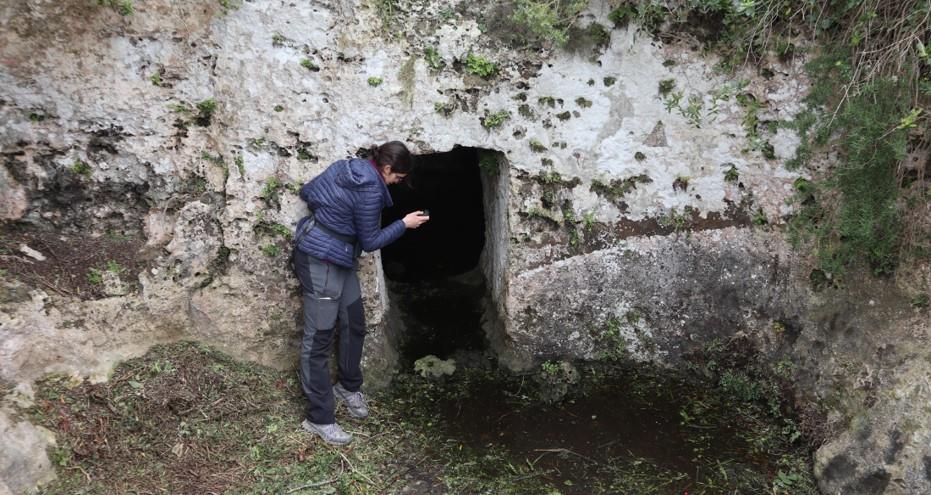 Historian and archaeologist Sonia Carbonell recently presented her thesis at the University of Alicante, entitled Social complexification and processes of change in the 1st millennium BCE. An analysis of Menorcan society based on the funerary record, in which she proposes a new hypothesis as to the evolution of late Talayotic society. Historian and archaeologist Sonia Carbonell recently presented her thesis at the University of Alicante, entitled Social complexification and processes of change in the 1st millennium BCE. An analysis of Menorcan society based on the funerary record, in which she proposes a new hypothesis as to the evolution of late Talayotic society.
In the eyes of Carbonell, the changes documented in the Talayotic societies of Mallorca and Menorca were the consequence of their inclusion within the orbit of Punic power on Ibiza. The fact is that the Balearic Islands were a strategic point for sailors, which is why groups from the Carthage region settled on these islands. This event triggered economic transformation and change at the social level, reflected in the funerary sphere through a new concept of space, the introduction and/or adaptation of certain architectural elements, and specialised administration of necropolises.
In her study, the historian covers the evolution of Menorcan society over the course of the first millennium BCE, taking into account contact with these foreign groups, and determining how the interaction took place: if it resulted in an adoption, adaptation or rejection of ideas.
Study of the necropolises
The main object of study corresponds to the necropolises comprising artificial caves or hypogea in the late Talayotic period, in the sense of archaeological objects. An empirical observation of these elements offers information as to the social relationships and activities which gave rise to them. As they have in most cases been plundered and reused, what Carbonell did was to study these spaces from an architectural perspective.
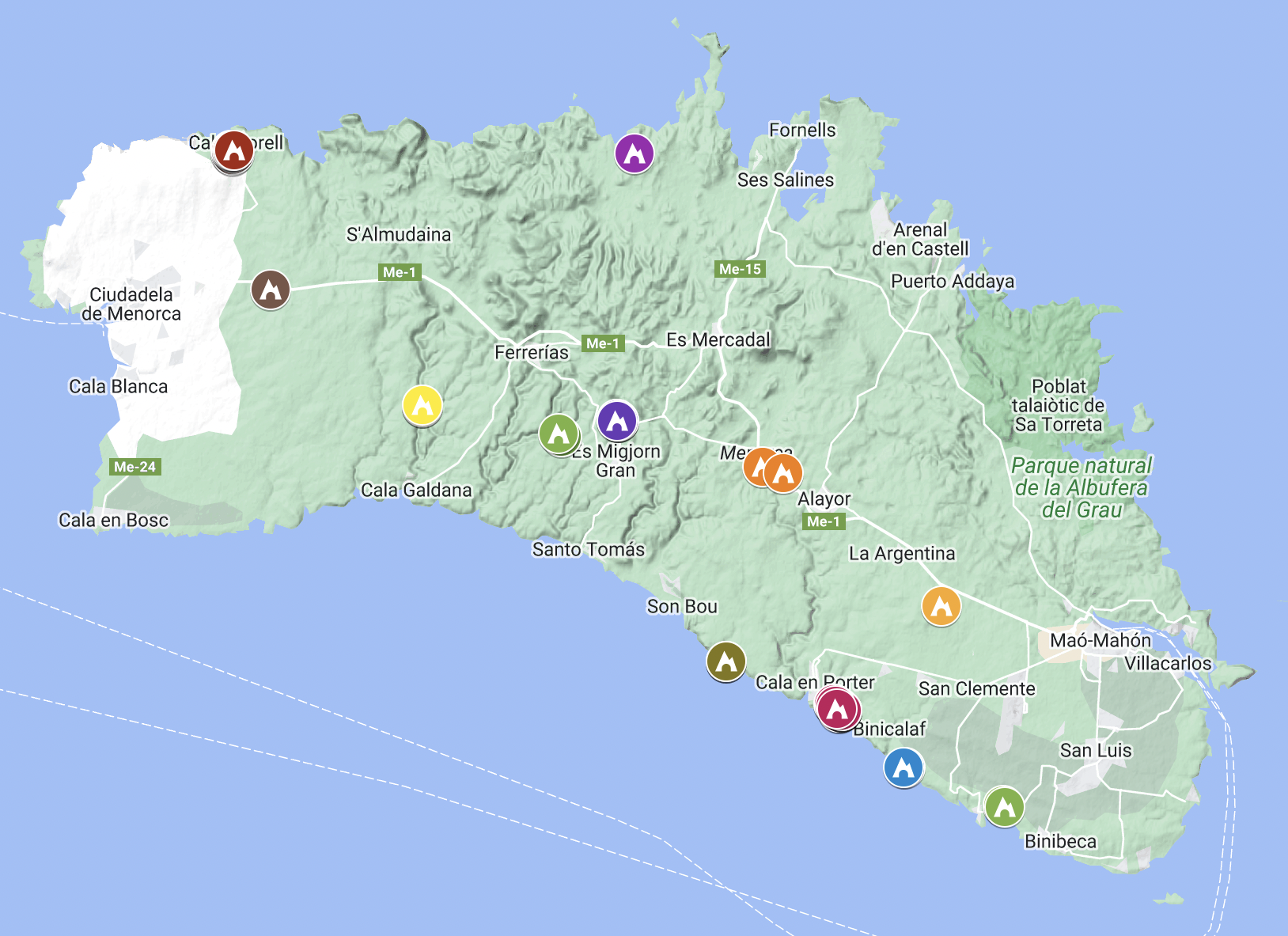 Her work involved documenting 28 sets of caves/hypogea located throughout the island, in order to analyse the formal and metrical variability of the different architectural elements, such as pillars, pilasters, niches, etc. to be found within. This detailed study served to reconstruct how these spaces were built, and the functional role of this task in Talayotic life during the second half of the 1st millennium BCE.
To compile all this documentation, the Alicante-based archaeologist visited each necropolis, positioning each of the caves/hypogea with a GPS device, creating 3D models and descriptive record sheets, and taking measurements and detailed photographs of the architectural elements. With all this information she was able to determine that these tombs were built by workers with specialist knowledge of the stone and stone-cutting techniques.
Meanwhile, as these caves/hypogea are spaces built artificially by hand, they differ from other, older funerary manifestations, such as walled caves and burial navetas. This was her premise in addressing the question of why the tombs change, and whether this change could be connected with the integration with Punic groups.
|
New podcast “Talayotic Menorca”
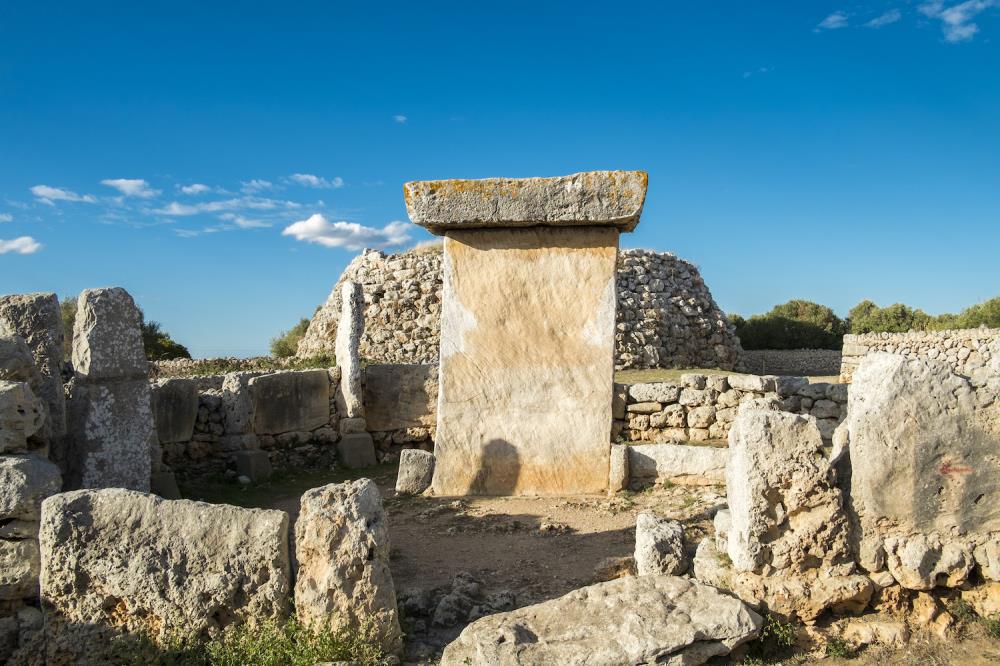 The Talayotic Menorca Agency and Radio Menorca-SER launch today, March 9, the first chapter of the podcast “Talayotic Menorca", a series on the most outstanding sites of the candidacy, stories and curiosities of a unique heritage. The aim is to continue disseminating Talayotic Menorca among the general public, especially this year, when in September the World Heritage Committee will make its final decision about the Menorcan inscription on the UNESCO World Heritage List. The Talayotic Menorca Agency and Radio Menorca-SER launch today, March 9, the first chapter of the podcast “Talayotic Menorca", a series on the most outstanding sites of the candidacy, stories and curiosities of a unique heritage. The aim is to continue disseminating Talayotic Menorca among the general public, especially this year, when in September the World Heritage Committee will make its final decision about the Menorcan inscription on the UNESCO World Heritage List.
All the chapters will be available free of charge in the Cadena SER website, Ivoox and Spotify; and will be published on the first Thursday of every month. The podcast will also be broadcast in the daily program "Hoy por Hoy Menorca".
The first episode is an introduction to the candidacy, under the title "What is Talayotic Menorca and what does it contain?". The second chapter will be a chronological tour: ”Talayotic Menorca in the line of time". "Singularities of Talayotic Menorca", "Digging up answers, the archaeological work" and "The path to becoming a World Heritage Site" are the other titles.
You can listen to the first podcast here.
|
"The efforts to protect and research our heritage are now better understood thanks to the Talayotic Menorca candidacy"
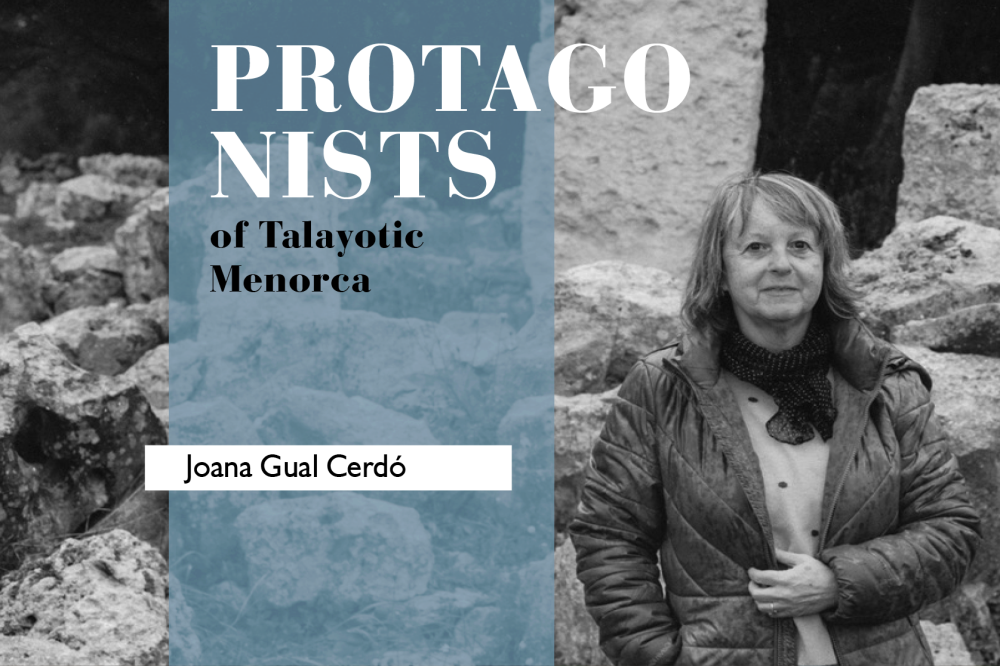 Mallorcan archaeologist Joana Gual Cerdó is a member of the Scientific Council and of the Governing Council of the Talayotic Menorca Agency. She earned her degree in History at the University of the Balearic Islands with a study of "Bronze figures in the protohistory of Mallorca", and also holds a postgraduate qualification in archaeological heritage management from the Open University of Catalonia. She has been a member of the History and Archaeology Section of the Institut d’Estudis Menorquins since 1989, serving as a member of the Scientific Committee of the Menorca Biosphere Reserve Consortium between 1996 and 2004. Mallorcan archaeologist Joana Gual Cerdó is a member of the Scientific Council and of the Governing Council of the Talayotic Menorca Agency. She earned her degree in History at the University of the Balearic Islands with a study of "Bronze figures in the protohistory of Mallorca", and also holds a postgraduate qualification in archaeological heritage management from the Open University of Catalonia. She has been a member of the History and Archaeology Section of the Institut d’Estudis Menorquins since 1989, serving as a member of the Scientific Committee of the Menorca Biosphere Reserve Consortium between 1996 and 2004.
Aside from her research work, at the start of her career she worked at the Mallorca Museum and the Menorca Museum from 1986 to 1995, when she took up a position as archaeologist at the Consell Insular de Menorca, serving as head of the Historical Heritage Service during the periods 2007-2015 and 2019-2022.
How did you first become interested in archaeology?
I always enjoyed history when I was little, and as a youngster I read a book we had at home, Gods, Graves and Scholars by C.W. Ceram, which made an impression on me above all through the account of the discovery of Tutankhamen's tomb. I am hardly the first in that! During my time at university, I joined the archaeological dig that Prof Guillem Roselló-Bordoy organised with the Mallorca Museum, of which he was the director, and focused on archaeology for my graduation thesis.
And what attracted you to the study of Talayotic culture?
My answer is that of an archaeologist already established in Menorca. When I arrived, I was thrilled to see the first taula, Torralba d'en Salort. I hadn't imagined anything so big and impressive, and that emotion is still with me today, although I have been familiar with them for years. I have an interest in all aspects of knowledge about Talayotic culture, so am not drawn to any particular feature, but my professional career has also pushed me towards the taulas because in the early 1990s I formed part of the team running the research into the small taula at Binissafullet, alongside staff from the Menorca Museum. We were able to document and understand the rituals held there, and a potential timeframe for its use.
Over your long career as a researcher, you have headed various archaeological projects. Which made the biggest impression on you, or marked a turning point in your career?
I would say the first archaeological dig on which I had a senior role: the ceramic workshop close to the talayot at Can Jordi, in Santanyí, Mallorca, because it gave me an understanding of what the job involved in terms of the scientific interpretation, document registration and methodology demanded in archaeological intervention. And then after I moved to Menorca, aside from Binissafullet, I was also particularly drawn to the digs at the Trebalúger talayot and hypogeum XXI at Calescoves. The smallest projects I have taken part in also had their own appeal: Son Catlar, So Na Caçana, Trepucó, Punta de S’Escullar ...
In truth, there is no one turning point in my career as a researcher. I began working at the Consell quite early on, and that changed what research meant for me. Working at the Historical Heritage Service I had some unforgettable experiences. The most impressive was abseiling down to the Cova del Mussol, a cliff above the sea, with Pere Arnau alongside as my guide, because I had never done anything like that. I am proud to say that I was the first female archaeologist to reach the cave! It was also exciting to spend time in the dark in the secret chamber at Cova des Càrritx waiting for the light to return, and heading back along the shore at Calescoves with a bag full of human bones.
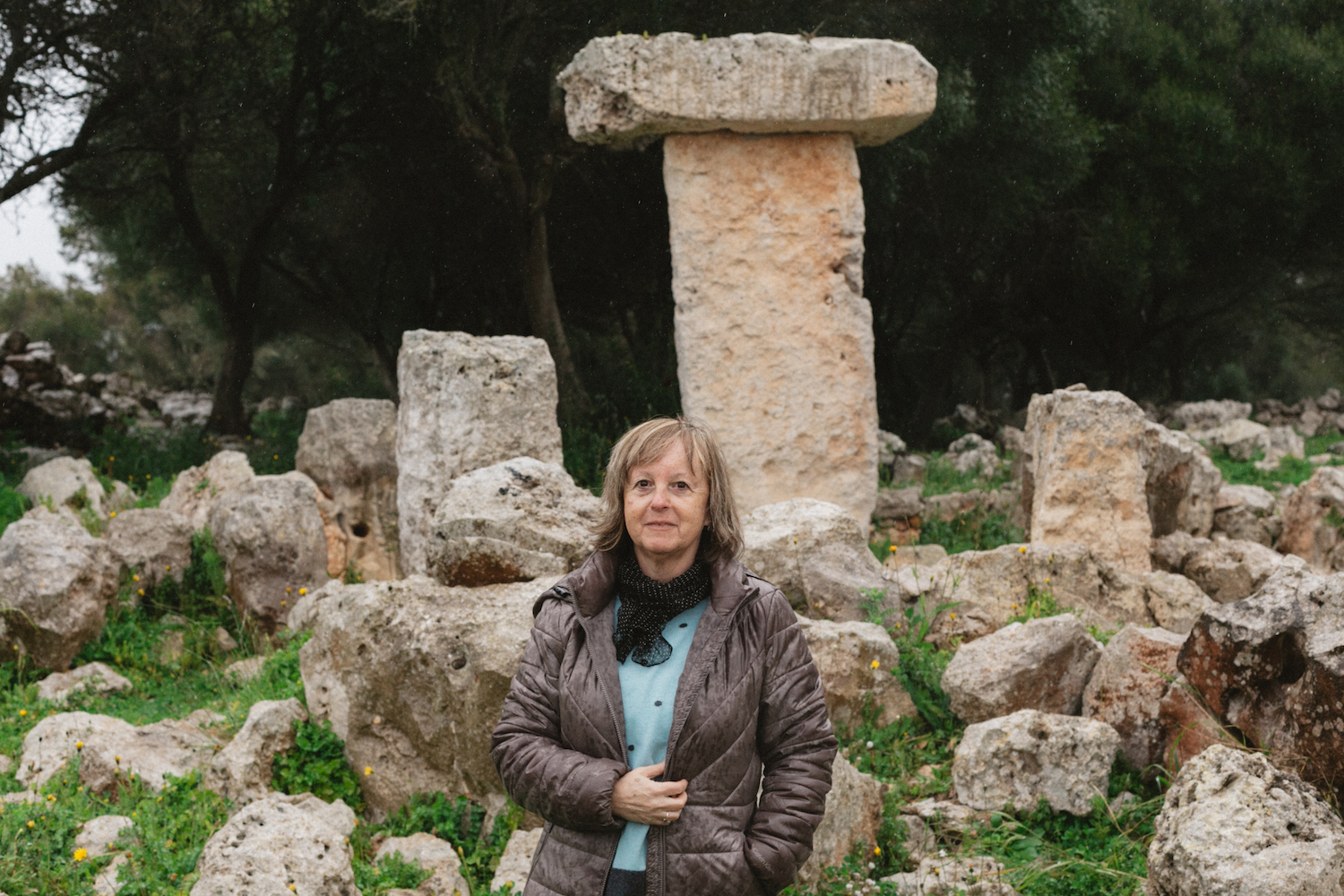 Of the archaeological projects now underway in Menorca, which of them most arouses your interest in terms of its possible implications for our understanding of Talayotic culture? Of the archaeological projects now underway in Menorca, which of them most arouses your interest in terms of its possible implications for our understanding of Talayotic culture?
In my role I have to keep track of almost all the projects, as our department is responsible for authorising all archaeological interventions and ensuring that the rules of good professional practice are followed. There can be no doubt that the whole nomination process has given the incentive to gather more resources for research, so as to provide content for the dossier in terms of greater knowledge of the island's prehistory, and there have been more projects because of that.
I couldn't highlight any one project, because they all help to extend that knowledge. I do think, though, that the Cornia Nou project demands recognition, as it showed for the first time the structure of the internal construction of a large talayot, and revealed a series of contemporaneous rooms connected to it, which is probably a pattern repeated in other villages.
Mention should also be made of the research at the Sa Mitja Lluna mine on Illa d’en Colom, as the first discovery of mine workings in the island's prehistory; and the research into the late Talayotic houses at Torre d'en Galmés conducted by different teams, which also allowed the recovery of spectacular architectural spaces which hugely enrich the site for visitors.
You belong to the Governing Council and Scientific Council of the Talayotic Menorca Agency. What has your experience been of how the nomination has developed?
The most intense experience came at the start, because I and the other archaeologists at the Heritage Service (Simó Gornés, Cristina Rita, Toni Ferrer and Quim Pons) were involved in preparing the dossier and the stages of the administrative process.
During the early years, working on the initial project with the coordinator of the dossier, the Cuban architect and ICOMOS member Ángela Rojas; going through all the review stages in Spain, which were a real success, up to the meeting in November 2016 at the UNESCO headquarters in Paris, where we presented a fairly good defence of Talayotic Menorca, but felt that we still had some way to go, as the Committee informed us a few weeks later. Although we continued our work, it was not enough, and in the end, following the instructions of ICOMOS, we began a new dossier and approach, coordinated by Cipriano Marín.
The fact is that a process lasting so many years includes a little of everything. A lot of positive and gratifying moments, but also times when you feel discouraged. As a whole, though, I see the nomination as a positive for our archaeological heritage, because the recognition of its value has taken hold among the island's population, the efforts to protect and research our heritage are now better understood. It has started a journey which will undoubtedly continue.
Now that a date has been set for the World Heritage Committee in September, what are your feelings? Are you optimistic as to inclusion on the World Heritage List?
I have a good feeling and am optimistic because we have been working hard to include in the dossier all the technical considerations that were pointed out. I must nonetheless strike a note of caution, because we cannot be certain; we can't break out the champagne until the Committee has issued its opinion.
With your experience as an archaeologist, and in the field of historical heritage management, what challenges do you see for Talayotic Menorca, beyond obtaining this international recognition?
There are plenty of challenges. The most immediate is to keep the Talayotic Menorca Agency up and running, as it needs to develop the Management Plan for the sites included in the nomination. I would highlight a few aspects of this management role:
- Guarantee the conservation of archaeological heritage, with pressure from visitors and tourists expected to increase if the World Heritage nomination is successful.
- Have professional specialists in place for the different types of archaeological intervention found on the island.
- Reach out to universities and research centres regarding the island's projects, as such bodies are essential for their development.
- Obtain economic resources to fund publications and editions of explanatory reports and studies produced in archaeological interventions.
- Find incentives to encourage private owners or administrators to participate in proper management.
- Promote the island's museums as sites responsible for the safekeeping, conservation, research and presentation of the archaeological heritage sites included in the nomination.
|
The northern talayot of Sant Agustí Vell in 3D
The company REM Experience, which was awarded the minor contract to produce the photogrammetry and 3D studies of six monuments on the island, has presented all the documentation produced, most notably the 3D reproduction of the landmark northern tayalot of Sant Agustí Vell, one of the sites included in the Talayotic Menorca nomination. The new digital content will be used to facilitate the conservation, research, cataloguing, restoration and showcasing of this element of Menorca's historical heritage.
The documentation efforts were financed with Next Generation EU funds transferred from the State to the Autonomous Region of the Balearic Islands, and then passed on to the Consell Insular de Menorca (CIM), which has responsibility for administering the island's historical heritage.
The goal of the project was to obtain as lifelike as possible a digital replica, and the digitalisation process (from the taking of photographs to the audiovisual production) therefore employed a series of methodologies serving to achieve the intended photo-realistic finish for each of the sites. Some of the projects involved more than 3,000 photographs being taken, and then processed in high-quality models. The end result comprised photogrammetric models of between 60 and 200 million polygons, depending on the model.
Sant Agustí Vell
The northern talayot of Sant Agustí or Ses Bigues de Mata (declared a Site of Cultural Interest) is one of the talayots that has aroused the greatest interest over the course of contemporary history, thanks to the monumental nature of its internal chamber, which is unusual on Menorca.
With a circular layout and truncated conical profile, it was built in courses of blocks which are much larger and more regular at the base than higher up. The interior was emptied out in days gone by for farming use, and its original function cannot therefore be determined.
However, given its form and a number of the adjacent structures, the interpretation is that it was a distinctly public building of symbolic meaning for the community. It is located at the prehistoric settlement of Sant Agustí, included in Component 4 of Talayotic Menorca, where a number of other structures also still stand, such as houses, shrines and areas for work and leisure.
The other four prehistoric monuments documented by REM Experience in 3D are: the hypostyle hall of Torre Vella, the hypostyle hall of Es Lloc Nou (Alaior), the talayot of Rafal Roig (Es Mercadal) and the talayot of Torre Vella d’en Lozano (Ciutadella); as well as the Drill Hall of Santa Águeda Council (Ferreries).
|
The eight edition of "Som Talaiòtics?” begins
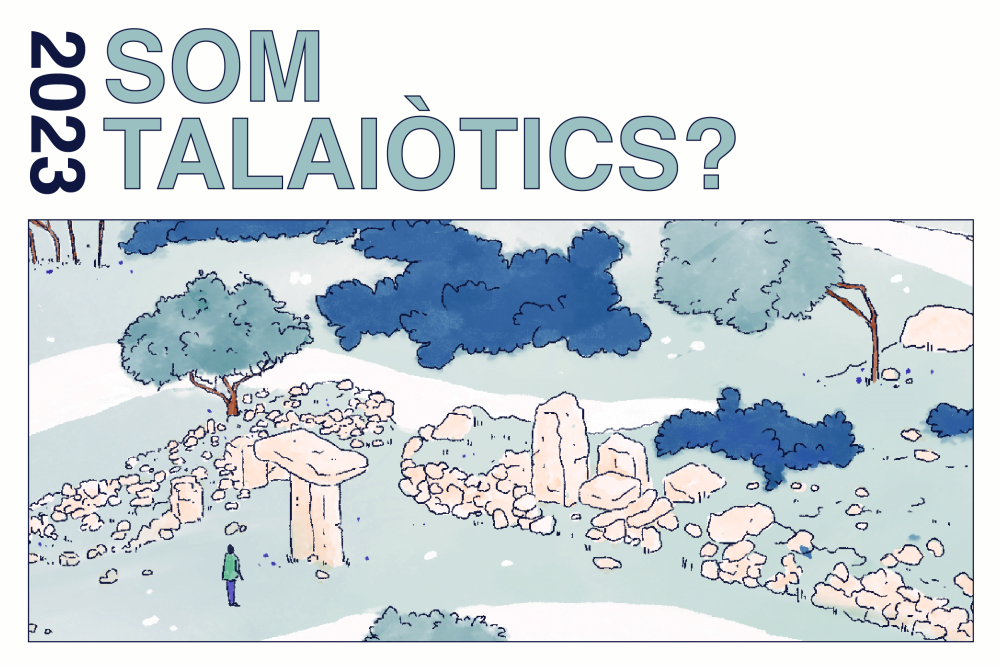 The Department of Culture of the Consell Insular de Menorca, together with the GOB Menorca and Amics del Museu de Menorca, gives new impetus to the excursion program "Som Talaiòtics?" with the aim of creating awarness about Talayotic Menorca among the population of the island. For the first time, this year there will be the collaboration of the Association of Deaf People of Menorca (ASSORME), which in some of the visits will offer simultaneous translation in sign language. The Department of Culture of the Consell Insular de Menorca, together with the GOB Menorca and Amics del Museu de Menorca, gives new impetus to the excursion program "Som Talaiòtics?" with the aim of creating awarness about Talayotic Menorca among the population of the island. For the first time, this year there will be the collaboration of the Association of Deaf People of Menorca (ASSORME), which in some of the visits will offer simultaneous translation in sign language.
The first visit will be on Sunday, February 12, in Torretrencada (Ciutadella), a great Talayotic settlement of western Menorca that stands out for its impressive taula. Starting from Ferreries, the excursion will take the Barranc d’Algendar until we reach Torretrencada. There, a couple of archaeologists will give a guided tour of the site. This excursion will be assisted by ASSORME, both during the route and the guided tour, with simultaneous translation in sign language.
What unites us and what separates us from the Talayotic culture? Visitors will find out all about the Talayotic Menorca candidacy and how its components or territorial areas are articulated. The Talayotics’ relationship with architecture, agriculture the stars or even death will complete a fascinating journey to the extraordinary heritage they bequeathed us.
The program “Som Talaiòtics?” is a fundamental tool to publicize the candidacy of Talayotic Menorca, especially this year, when in September the World Heritage Committee will make a decision about its inscription on the UNESCO World Heritage List.
The cost of this activity is assumed by the Department of Cultural Affairs of the Consell Insular de Menorca. Capacity is limited and you must sign up a few days in advance at https://www.gobmenorca.com/excursions or by calling 971 35 07 62.
In all cases, the excursions involve a few kilometers walk. The excursions that have a bus service to return to the starting point has a cost of between 4 and 6 euros per person and must be paid at the time of boarding the bus.
The dates are as follows:
- Sunday, February 12: visit to Torretrencada. Bus service. Component 1.
- Sunday, March 5: visit to Rafal Rubí. Bus service. Component 6.
- Sunday, April 2: visit to Sant Agustí. Component 4.
- Sunday, May 7: visit to Calescoves and Castellàs des Caparrot de Forma. Component 6.
- Saturday, June 3: night visit to Cala Morell. Bus service.
- Saturday, September 2: night visit to Torralba d'en Salort. Bus service. Component 6.
- Sunday, October 1: visit to Trepucó, Cornia Nou and Santa Anna. Component 6 and 7.
- Sunday, November 5: visit to Son Catlar. Bus service. Component 2.
- Sunday, December 3: visit to Torrellisar Vell and So na Caçana. Bus service. Component 6.
Below you will find the complete “Som Talaiòtics? 2023” program.
|
"The naveta des Tudons is a world wonder that we are lucky to have at home"
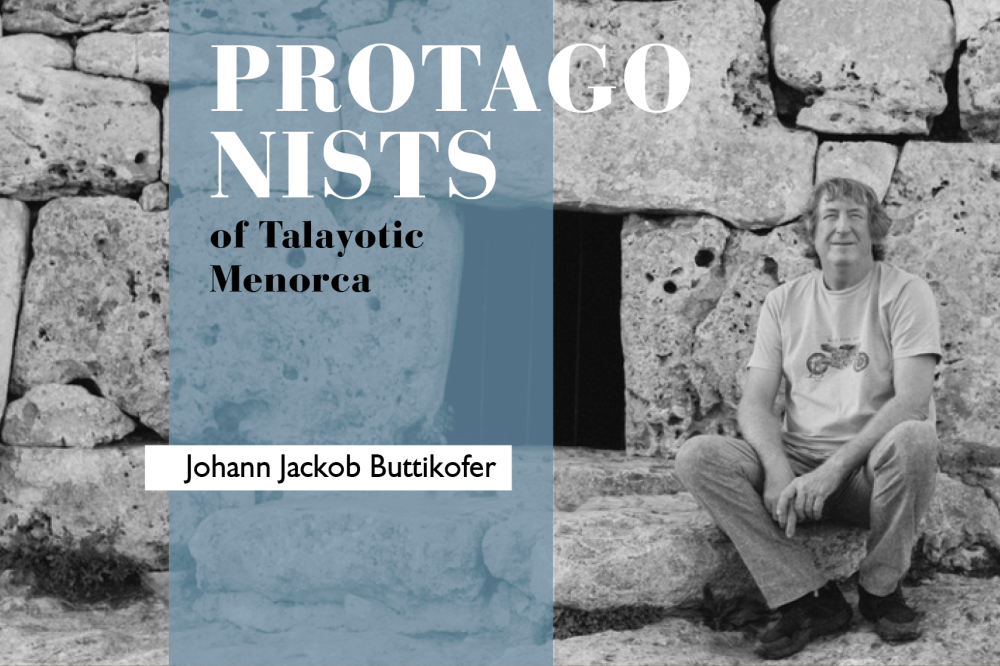 Johann Jackob Buttikofer is the most visible face of the family that manages the Naveta des Tudons site, owned by his maternal family for three generations. Being a professional gemologist, he's “done it all” during his carreer. Currently, he manages the Tudons and Torre Solí Vell estates together with his siblings. Johann Jackob Buttikofer is the most visible face of the family that manages the Naveta des Tudons site, owned by his maternal family for three generations. Being a professional gemologist, he's “done it all” during his carreer. Currently, he manages the Tudons and Torre Solí Vell estates together with his siblings.
What is the relationship of your family with the naveta des Tudons?
We have a matriarchal system here: my mother, Elisa de Olives, is the owner of the Tudons farm, where the naveta is located, and of the Torre Solí Vell farm, where we have an organic agriculture bussiness. My sibllings and I manage it all together, including this famous and spectacular site.
Since when is the naveta linked to your family history?
The Es Tudons estate already belonged to my grandfather, meaning that we are the third generation that manages it. Formerly the monuments were not taken care of, the cattle grazed where they wanted and everything was neglected. But my grandfather, to prevent further harm, had this dry wall built around the monument to preserve it. Somehow he already had the vision that he had to protect and take care of it.
What childhood memories do you have in the naveta des Tudons?
Well, when we were little we climbed it, we went inside… before there was no control or awareness. Nowadays, access is closed with a fence and climbing is prohibited for the conservation and protection of such an important monument.
And how did the idea of exploiting the site for tourism come about?
Tourists had always come here, excursions were organized by hotels, but there was no economic benefit for either the owners or the local administration. I think we were one of the first to exploit a prehistoric site in Menorca for tourism, and part of the money from the tickets went towards the conservation of Talayotic properties and archaeological research. This was 13 or 14 years ago, when we signed an agreement with the Consell Insular (Island Council) to organize visits, and we are very satisfied with the collaboration with them.
What happens is that more resources are needed for research and, above all, to recover all the great heritage that is deteriorating. There’s so much to do to fix all the monuments we have in the Menorcan countryside. The Consell has done a good job in recent years, but it must continue.
This is the most visited monument in Menorca, what does this mean to your family?
Well, it makes us proud, it’s an historical legacy and a world wonder that we are lucky to have at home. The most important thing is that everyone who wants to can enjoy it.
And in such an outstanding site, what challenges do you face to improve the visit?
Well, one of the improvements that could be made is to eliminate the disused electrical towers that we have on the property, it’s visual contamination. I think it is one of the pending issues.
|
Eight candidates to lead the Talayotic Menorca Agency
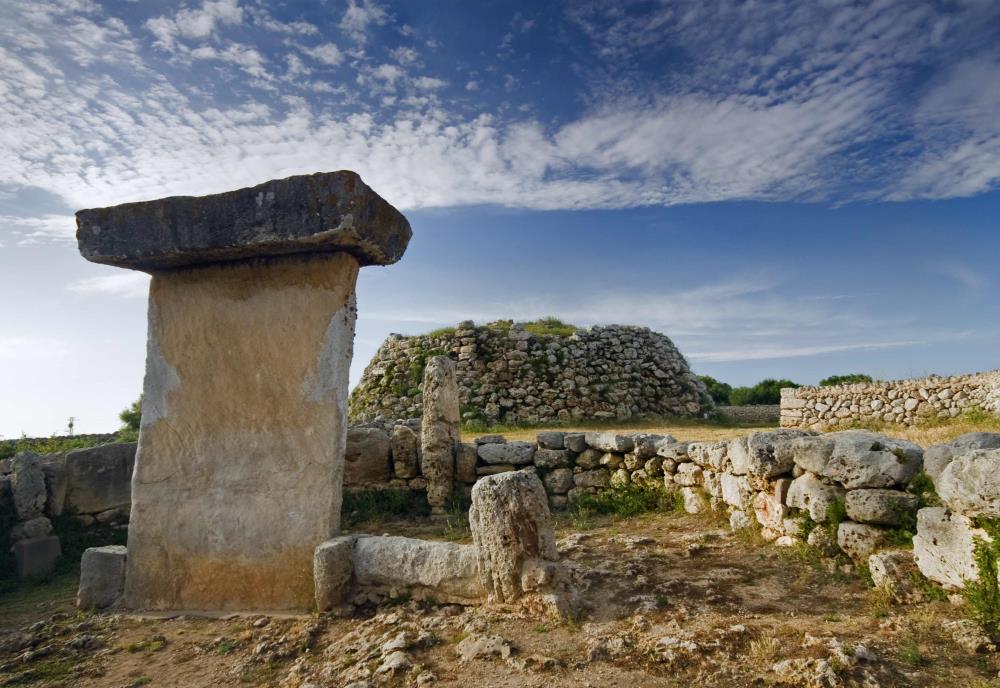 The process of selecting the director of the Talayotic Menorca Agency continues its course with the publication of the edict with the names of the eigt candidates applied to fill the position. The process of selecting the director of the Talayotic Menorca Agency continues its course with the publication of the edict with the names of the eigt candidates applied to fill the position.
The main duties of the winning candidate will be: to manage the Talayotic Menorca Agency so that it achieves the objectives set by its statutes, and to guarantee the consistency of this management with the registration requirements of Talayotic Menorca on the UNESCO World Heritage List. The agency director's contract will be for five years, dependent on ongoing evaluation, but not tied to the mandate of the Governing Council.
The Talayotic Menorca Agency is the body channelling and coordinating all actions and measures affecting the management of the cultural assets and conservation of their exceptional, universal value, in particular those included within the Talayotic Menorca Management Plan.
The full documentation is available here.
|
The 45th session of the World Heritage Committee will be held from September 10 to 25 in Riyadh
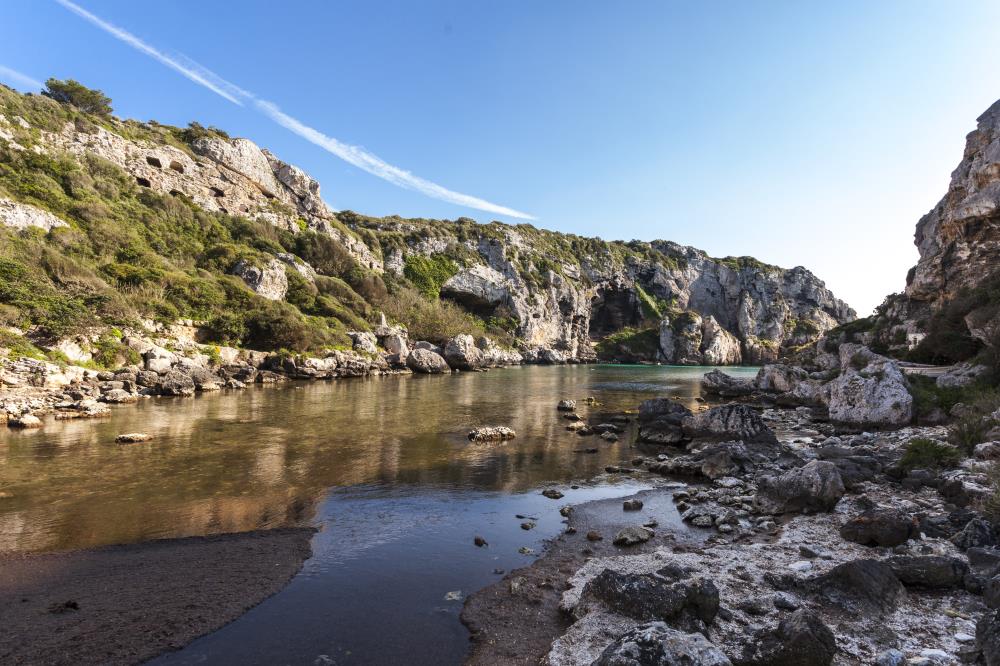 UNESCO has just set a date for the celebration of the 45th session of the World Heritage Committee, which will take place from September 10 to 25 in the city of Riyadh, Saudi Arabia. The meeting will decide if Talayotic Menorca is finally appointed as a World Heritage Site. This will be the end of a long road started in 2010, and a positive outcome would mean a recognition of the universality of Talayotic culture. UNESCO has just set a date for the celebration of the 45th session of the World Heritage Committee, which will take place from September 10 to 25 in the city of Riyadh, Saudi Arabia. The meeting will decide if Talayotic Menorca is finally appointed as a World Heritage Site. This will be the end of a long road started in 2010, and a positive outcome would mean a recognition of the universality of Talayotic culture.
The Vice President and Conseller of Cultural Affairs, Miquel Àngel Maria, has stated his satisfaction with the news. “The important thing is that we already have a date and place. The candidacy has been ready for a year. Now we just have to wait until September. I would have preferred the Committee to have been held between the end of June and the beginning of July, as usual, but the call in September is welcome”.
Vice President Maria recalled that, in accordance with the regulations of the World Heritage Committee, six weeks before the start of the meeting, the International Council on Monuments and Sites (ICOMOS) must send its final report to all nomnees. "This means that at the beginning of August we will receive this report, and we will already know if ICOMOS proposes the direct inscription of Talayotic Menorca on the World Heritage List, or if we will still have to fight for it during the September meeting.” In any case, Maria is confident that the good work done in recent years will be crowned with the inscription.
The Consell Insular de Menorca will send a delegation to Riyadh, whose composition will be decided according to the post-election calendar.
This announcement comes after a few months of uncertainty due to the invasion of Ukraine by Russia, something that caused the suspension of the first call of the 45th Committee that was to be held last July in Kazan, on Russian territory.
The complicated situation at UNESCO was unblocked at the end of November last year, with the resignation of the Russian ambassador as Chairman of the Committee. During the 17th extraordinary session of the World Heritage Committee, held on December 12, the ambassador of Saudi Arabia, Princess Haifa Al Mogrin, assumed the presidency of this body.
World Heritage Committee
The Committee is the intergovernmental body in charge of enforcing the Convention Concerning the Protection of the World Cultural and Natural Heritage signed in Paris on November 16th, 1972. It is tasked with elaborating, updating and publishing a list with the cultural properties that hold unique and exceptional universal value. The committee is formed by 21 member states or States Parties that are renewed periodically.
The States Parties are the 194 countries (Spain included) that, to this date, have ratified the World Heritage Convention. Each state identifies the properties susceptible of being included in the World Heritage List, verifies the state of preservation of the inscribed properties and propose a property from their territories to be included in the list, as the Spanish state has done with our candidacy for 2022.
Currently, the World Heritage List includes a total of 1,121 sites and monuments (869 cultural properties, 213 natural properties and 39 mixed) from 167 member states.
|
Saudi Arabia offers to host the 45th session of the World Heritage Comitee
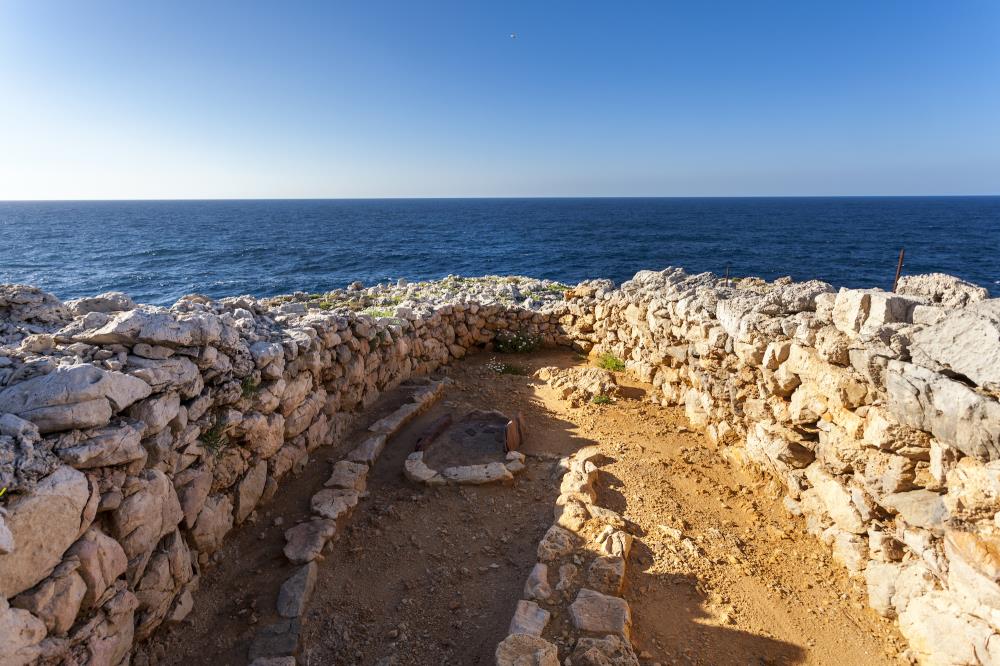 Saudi Arabia, current president of the World Heritage Committee, has offered to host the 45th session of the UNESCO World Heritage Committee in Riyadh. The dates proposed by the Saudi kingdom are from September 10 to 25. Saudi Arabia, current president of the World Heritage Committee, has offered to host the 45th session of the UNESCO World Heritage Committee in Riyadh. The dates proposed by the Saudi kingdom are from September 10 to 25.
On January 24, the rest of the member countries of this body will decide if they accept the proposal, during the 18th extraordinary meeting that will take place at the UNESCO headquarters in Paris.
This announcement comes after a few months of uncertainty due to the invasion of Ukraine by Russia, something that caused the suspension of the first call of the 45th Committee that was to be held last July in Kazan, on Russian territory.
The complicated situation at UNESCO unblocked at the end of November last year, with the resignation of the Russian ambassador as Chairman of the Committee. During the 17th extraordinary session of the World Heritage Committee, held on December 12, the ambassador of Saudi Arabia, Princess Haifa Al Mogrin, assumed the presidency of this body.
|
Extraordinary session of the World Heritage Committee on January 24
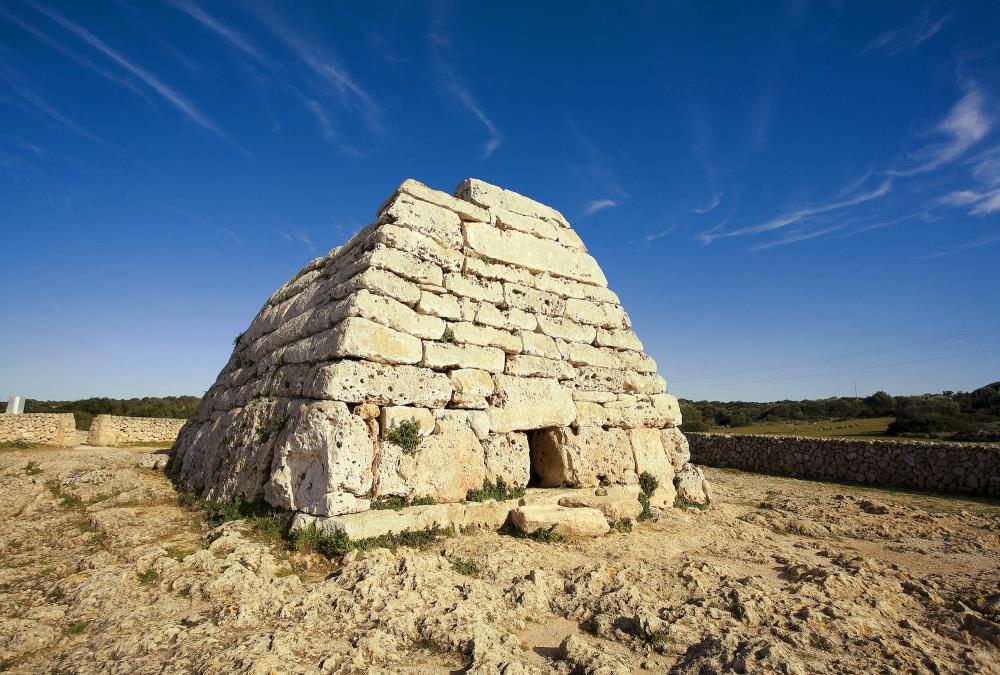 On January 24, a new meeting of the UNESCO World Heritage Committee will be held in Paris. In this meeting, as agreed on December 12, the date and place will be set for the celebration of the 45th Committee, where the future of the Talayotic Menorca candidacy will finally be decided. On January 24, a new meeting of the UNESCO World Heritage Committee will be held in Paris. In this meeting, as agreed on December 12, the date and place will be set for the celebration of the 45th Committee, where the future of the Talayotic Menorca candidacy will finally be decided.
The Consell Insular de Menorca expresses its satisfaction for the unblocking of the situation caused by the war in Ukraine, and congratulates the international community for finding a consensus solution.
The vicepresident and conseller of Cultural Affairs, Miquel Àngel Maria, expressed his confidence in a positive outcome for Talayotic Menorca.
|
Menorca lights up for Human Rights
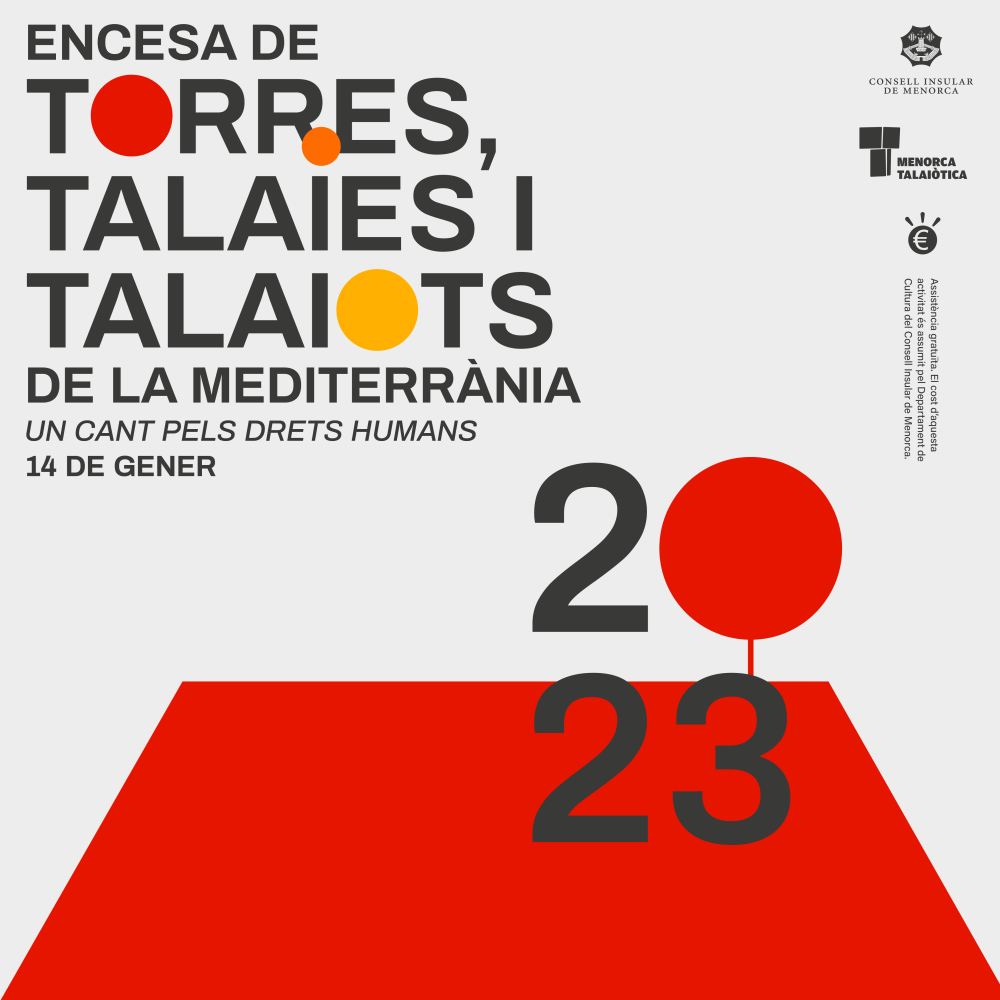 Next Saturday, January 14, Menorca will for the fifth year running be marking the Lighting of Towers, Watchtowers and Talayots of the Mediterranean: a Song for Human Rights, an initiative founded in Mallorca which aims to raise public awareness on behalf of Human Rights in support of refugees forced to emigrate in search of a new home. The event is open to the general public, and forms part of the programme of activities celebrating the island's patron saint, the Diada del Poble de Menorca, Sant Antoni 2023. Next Saturday, January 14, Menorca will for the fifth year running be marking the Lighting of Towers, Watchtowers and Talayots of the Mediterranean: a Song for Human Rights, an initiative founded in Mallorca which aims to raise public awareness on behalf of Human Rights in support of refugees forced to emigrate in search of a new home. The event is open to the general public, and forms part of the programme of activities celebrating the island's patron saint, the Diada del Poble de Menorca, Sant Antoni 2023.
Towers, watchtowers and talayots will be lit up simultaneously around the whole of the Mediterranean, with smoke flares during the day, and light flares at night. Various locations will be taking apart around the Balearic Islands and the Spanish mainland coast, as well as in Greece and North Africa.
In Menorca, the event will this year focus on two unique locations, one for each of the times scheduled for the lighting up:
- On Saturday, January 14, at 1:00 p.m. smoke flares will go off at the talayots at the Torre d'en Galmés site in Alaior. There will be a reading of the manifesto of the initiative, this year drawn up by Amnesty International, while Annabel Villalonga and Joan Carles Villalonga will accompany proceedings with the song Viatge a Ítaca [Voyage to Ithaca], by Lluís Llach. The ceremony will end with the staging of the micro-play Este sol, ¿está ahí para todos? [Is This Sun There for Everyone?].
- On the same day, at 5:00 p.m., the venue switches to Ciutadella, at the Montefí site, starting with a lecture by Assuès López entitled Migrations on the Mediterranean. This will be followed by a re-reading of the manifesto, and the song, while the event will end with flares lighting up the talayots at the site around 6:00 p.m.
This initiative by the Consell Insular de Menorca, supported by the Talayotic Menorca Agency, actively involves organisations including the Fons Menorquí de Cooperació and Amnesty International, as well as the Menorca Scouts and ASSORME.
All those wishing to take part in the event or support the initiative can attend the activities scheduled for January 14 free of charge (no prior registration is required).
|
Premier of "El dolç talaiòtic" video
Discover the new Talayotic cake and its creator. Aleix Cánovas Riudavets, aged 24, is the son and grandson of cake makers. He learned from a very young age to love the trade which he now continues through the family dynasty at Ca na Maru.
With tradition, creativity and innovation as his ingredients, he won the competition "El Dolç Talaiòtic" with a small cake which evokes the fresh, rocky landscape of Talayotic Menorca with every bite: almonds, lemon, local honey, figs and rosemary are the star ingredients.
|
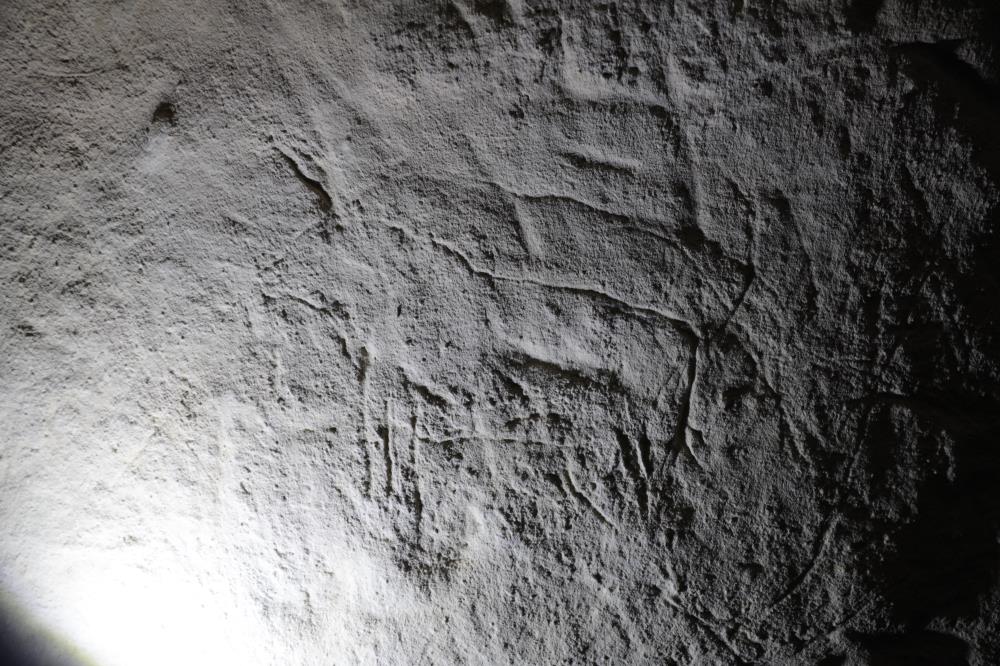
Agreement signed to restore Santa Anna hypogeum
¿¡[AQUI]¡¿The Consell Insular de Menorca and Maó City Council have finalised a partnership agreement to restore and adapt the Santa Anna hypogeum, a collective tomb dug into the subsoil in the municipality of Maó. Declared a Site of Cultural Interest under the 1985 legislation, it recently revealed a number of engravings of great archaeological value which require restoration, preparation and signage work at the monument to allow visitor access.
This morning, the vice-president and conseller of Cultural Affairs, Miquel Àngel Maria, and the deputy mayor and executive councillor for Cultural Affairs of Maó City Council, Conxa Juanola, visited the site together with the Head of the Historical Heritage Service, Simón Gornés.
Following an inspection of the finding by technical staff from the CIM, it was felt important to control and protect access to the interior of this hypogeum, leading to the installation of protective railings to prevent unauthorised access. The entrance, which has suffered the detachment of some material, will also be consolidated.
The CIM is responsible for restoring and refurbishing the internal and external structure of the monument, while its owner, Maó City Council, has responsibility for clearing and preparing the access route, which is currently blocked by overgrowth.
The Santa Anna engravings
The engravings discovered at Santa Anna are of great archaeological interest. Researchers Joan de Nicolas, Miquel Carreras and Vicente Ibanez Orts, in collaboration with Pere Arnau and another archaeologist, Mónica Zubillaga, have positioned the space between Punic culture and the Roman era, making it particularly significant.
The depictions can be divided into three groups:
- Complete bulls, whose physiognomy suggests they are of ancient origin (5th-4th-3rd century BC), given the form of the horns and body, and the artistic style of depiction.
- A second group of depictions of Tanit, goddess of fertility in the Punic era, found in the cave within the temples, or as isolated figures.
- And a third group of Punic engravings, in the form of betyls (long stones interpreted as a representation of divinity), directly connected with the funereal world. There are also just a few depictions of the Roman type.
|
Presentation of the results of the archaeological field season at Cornia Nou
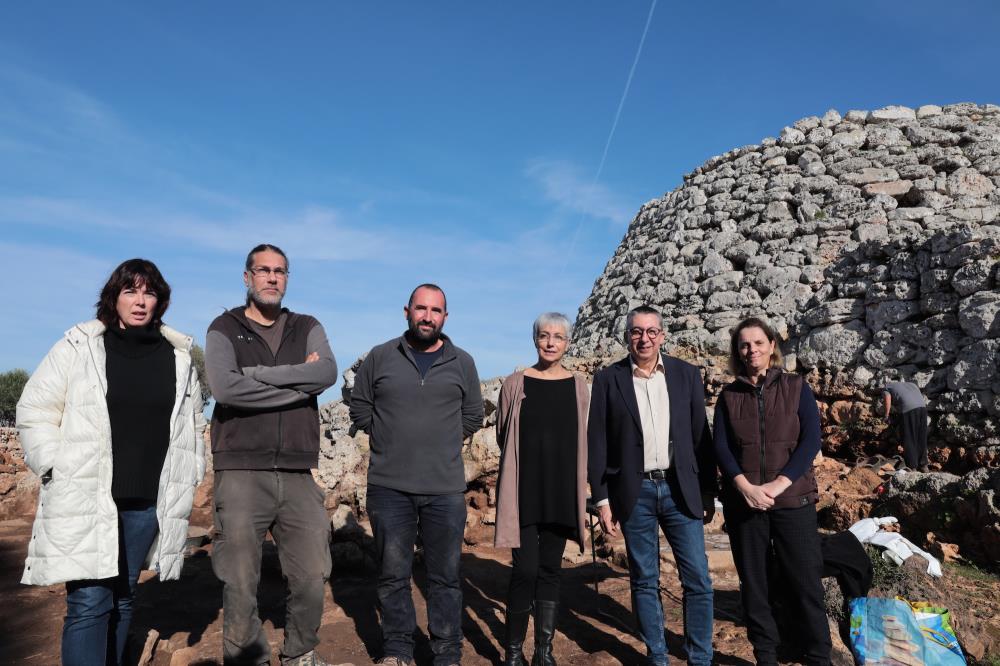 The Cornia Nou research project ended its 16th excavation field season with the presentation today, 20 December, of the latest advances at the site itself. The Cornia Nou research project ended its 16th excavation field season with the presentation today, 20 December, of the latest advances at the site itself.
The project's team of co-directors from the Associació Arqueologia i Patrimoni – comprising Damià Ramis, Muns Anglada, Antoni Ferrer and Lluís Plantalamor– were accompanied by the vice-president and conseller for Cultural Affairs, Miquel Àngel Maria; the deputy mayor and executive councillor for Cultural Affairs on Maó City Council, Conxa Juanola; and Carolina Desel, director of the Museu de Menorca.
This year work focused on excavating the exterior of the western building of the western sector Cornia Nou, where there is a large archaeological complex comprising a talayot and two monumental buildings alongside. These large buildings, which have been researched over the past 15 years, have been interpreted as centralised spaces for the administration, processing and storage of agricultural and livestock produce during the early phases of the Talayotic era (1100 to 600 BC). .
The 2022 field season served to identify a whole set of rooms, as well as the remnants of as many as three open-air combustion structures and four in the interior spaces, which could be connected with subsidiary functions ancillary to those performed inside the building.
Materials uncovered
The materials associated with the structures excavated comprise stone tools, such as two mortars, various manual mills, hammerstones; and bone tools, such as punches, but also remnants of handmade ceramic containers, including a fragments of a large containers, along with other materials which may be connected with food processing.
Today researchers have found a circular bone plug about 4 cm in diameter, with a perforation at each end. Although it is reminiscent of the stoppers of the cylindrical containers that have been found in funerary spaces such as Sa Cova des Càrritx, its function remains unknown at the moment.
Meanwhile, the adaptation work included removal of a dry stone wall built over one of the façades of this set of rooms when the property was subdivided, and which made it more difficult to establish an understanding of the archaeological unit. Various wild olive plants which were damaging the prehistoric structures were also removed. All these tasks will serve to open up a new space for visitors to the settlement.
The 2022 field season at Cornia Nou was made possible by funding from the Consell Insular de Menorca, through a grant for the archaeological work; the Museu de Menorca and Maó City Council, and authorisation granted by the owners of the land: the Osuna-Sard family and M.Polo.
|
Public tender: implementation of Montefí archaeological excavation project
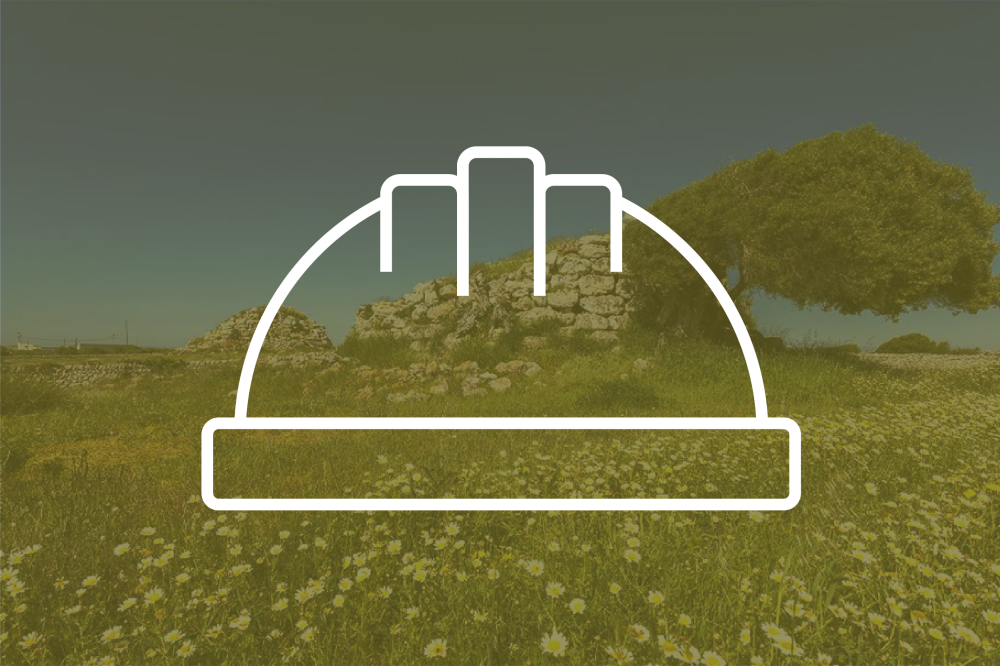 The Consell Insular de Menorca, through the Department of Cultural Affairs, Education, Youth and Sport, has published the tender specification for implementation of the archaeological excavation, restoration and consolidation project of talayot 2 and cave 4 of the Montefí Talayotic site in Ciutadella. The project is financed with European Funds drawn from the Generation EU Recovery and Resilience mechanism, and is intended to improve visitor conditions at the site. The Consell Insular de Menorca, through the Department of Cultural Affairs, Education, Youth and Sport, has published the tender specification for implementation of the archaeological excavation, restoration and consolidation project of talayot 2 and cave 4 of the Montefí Talayotic site in Ciutadella. The project is financed with European Funds drawn from the Generation EU Recovery and Resilience mechanism, and is intended to improve visitor conditions at the site.
The estimated contract budget is 259,067 euros. Companies or professionals wishing to be considered may submit their proposals up to 27 December via the State Procurement Platform.
The tasks to be performed are divided into works and services:
- The works will comprise the restoration and archaeological excavation of talayot 2 and cave 4.
- The services will focus on laboratory work and analytical reports to be conducted by specialists on any findings which may emerge, for the institutional purpose of the study.
In 2015 the Department of Cultural Affairs and Heritage of the Consell Insular de Menorca called for a series of technical proposals to draw up the Consolidation Project for talayot T2 and cave C4 at Montefí. E.ARQ Ingeniería-Arquitectura SLP was ultimately hired to author the studies. Subsequently, in October 2017, a preliminary project was drawn up to apply for grants from the Spanish state to perform the work.
At present, the Montefí has no access control, and scarcely any organised visitor route. The state of conservation, in particular the talayot covered by this project, reveals structural stability defects which hamper visitor access. This project is intended to resolve these problems so as to improve visitor conditions at the site.
Montefí settlement
Montefí is a Talayotic settlement covering a large area, currently housing numerous monumental remains visible on the ground, above all the talayots. In order to conserve the settlement, to publicise the site and make it available to the general public, the project is intended to address one of the three landmark buildings, talayot 2, by:
- Consolidating the archaeological remains for conservation purposes.
- Adapting the building to make it easier to visit and understand.
- Giving the site active status within Menorca's network of historical heritage open to visitors.
- Gathering more in-depth knowledge through archaeological intervention.
The Montefí archaeological site is currently owned by the Consell Insular de Menorca. The land acquired by the public authority covers an area of 43,187 m2, including the part which is home to most of the remaining structures at the archaeological site.
|
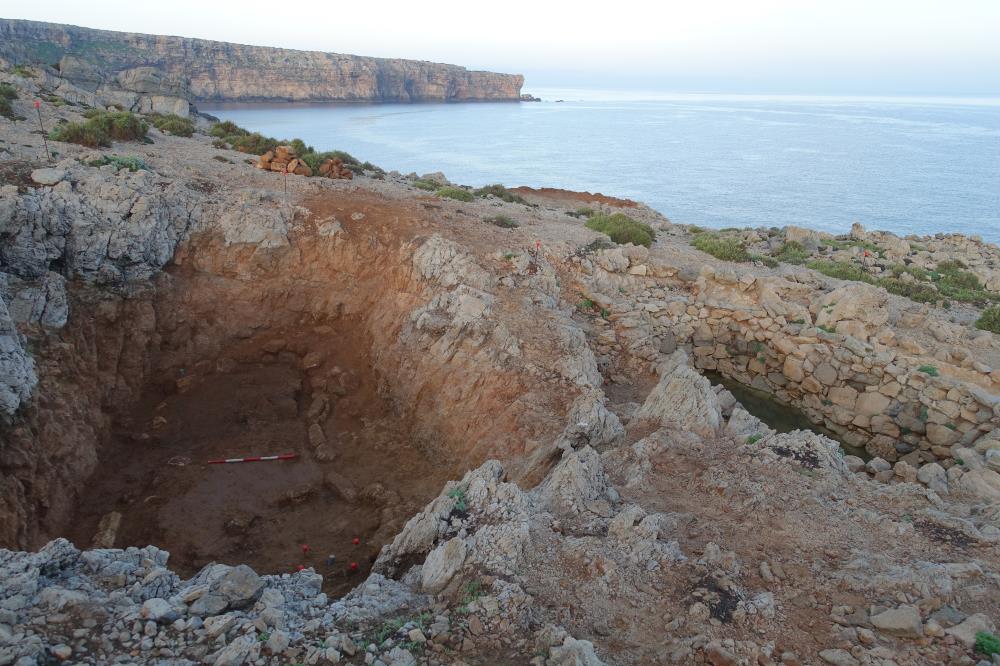
2022 field season at Es Coll de Cala Morell: a new cistern
¿¡[AQUI]¡¿When visitors arrive for the first time at the settlement of Es Coll de Cala Morell one question inevitably springs to mind: what did these people do up here? The fact is that the settlement has a fairly unusual location. It is a coastal headland which is hard to reach, standing on the north coast of the island. An inhospitable, rocky area, with scant vegetation, lashed by the tramuntana wind.
On stormy days, foam from the waves showers down on the fifteen homes which make up the settlement. The people who lived here between 1600 and 1200 BC, during the Bronze Age, also built a fortified wall to protect the settlement, and a construction of unknown purpose at the summit of the promontory.
The question which opens this article becomes even more significant if one bears in mind that the excavations conducted at Es Coll de Cala Morell have revealed that the population of the settlement had little to do with the sea. The vast majority of the objects found are made from local materials, and although there is some evidence of trading contact by sea, it is very slight. We furthermore know that the local population were engaged in livestock farming (raising goats, sheep, cows and pigs) and agriculture (growing wheat and barley). As at other prehistoric settlements which have been excavated on Menorca, it would seem that little or no fish or seafood was eaten.
The hypothesis of the archaeologists researching this settlement is that its location, at such an inaccessible and inhospitable site, would above all have been based on defensive needs, its proximity to the sea being a matter of coincidence. The inhabitants of Es Coll de Cala Morell thus enjoyed a settlement set apart from the more populous inland area, which was easy to defend in the event of an attack. Instead, they were forced to deal with other problems. To begin with, land suitable for crops and grazing began more than half a kilometre from the settlement, further inland. Meanwhile, the settlement needed a source of water, for which two large systems were constructed, hewn out of the rock, to collect rainwater.
 One of the two cisterns was excavated during a previous field season. The research work at this site already dates back some time: during the 1990s, archaeologists from the Museu de Menorca drew up plans of the structures visible on the surface, which had not yet been excavated. A great many constructions were already identified at this point, including the two cisterns. In 2011, based on the work performed in the 1990s, a team of archaeologists linked to the Museu de Ciutadella and the Museu d’Història de Manacor began archaeological excavations at the settlement, with economic support from the Consell Insular and Ciutadella local authority. One of the two cisterns was excavated during a previous field season. The research work at this site already dates back some time: during the 1990s, archaeologists from the Museu de Menorca drew up plans of the structures visible on the surface, which had not yet been excavated. A great many constructions were already identified at this point, including the two cisterns. In 2011, based on the work performed in the 1990s, a team of archaeologists linked to the Museu de Ciutadella and the Museu d’Història de Manacor began archaeological excavations at the settlement, with economic support from the Consell Insular and Ciutadella local authority.
Since then, four naveta rooms have been excavated, along with the construction located at the summit of the promontory and, as previously mentioned, one of the cisterns. The information provided by these interventions include the fact that the inhabitants of the site were farmers, and that metalworking was practised at the settlement, since a number of bronze objects and two casting moulds were found.
2022 field season news
This most recent field excavation season, undertaken during the month of October 2022, focused on the second cistern, which had not yet been excavated. The first cistern was dug into the rock, its walls covered with a layer of clay, supported on a dry stone lining.
This system, which has not been documented at any other Balearic prehistoric settlement, serves to waterproof the cavity and prevent the water from seeping downwards. It was so well made that today, more than 3,000 years later, it still holds rainwater.
The second cistern is apparently very similar to the first, but larger in size. The top is covered over by a considerable mass of sediment and stones, which had built up after the settlement was abandoned. This year's field excavation season essentially involved removing this huge build-up, which contained practically no archaeological material.
Excavation of this second cistern will probably be completed next year, allowing for a calculation of how much water could be stored at the settlement. This figure can then be related to the number of homes at the site, in order to give a better insight into how the inhabitants of Es Coll de Cala Morell lived.
Images
Cover: Final image of the 2022 campaign, with the second cistern partially excavated.
Text image: Detail of the interior of the second cistern. You can see the stone lining that supports the layer of clay that covers the walls for waterproof.
|
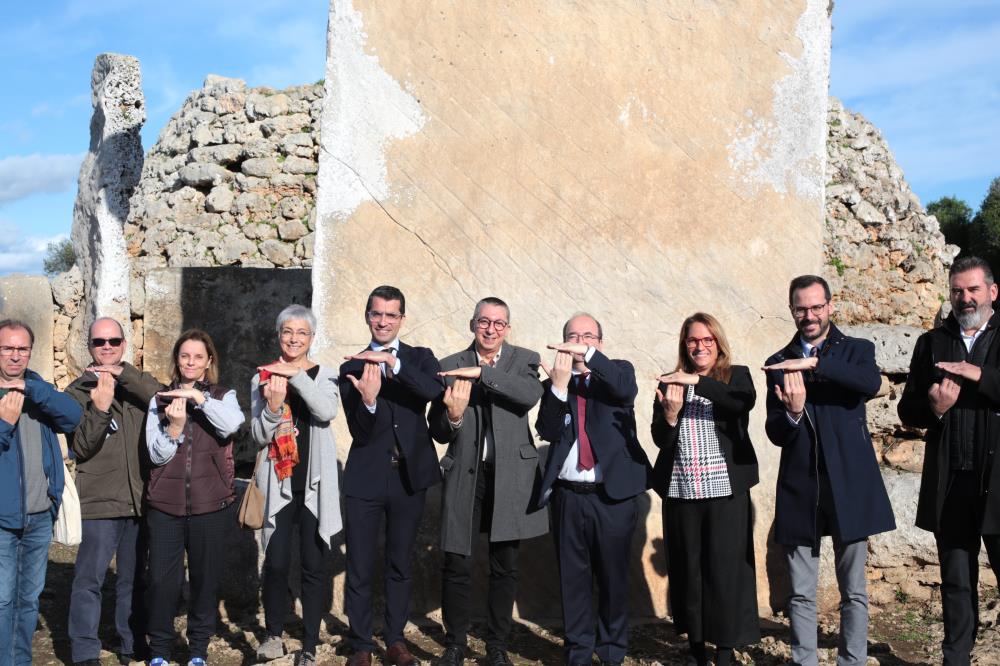
Culture minister Miquel Iceta visits Trepucó
¿¡[AQUI]¡¿Today, 12 December, the Minister of Culture, Miquel Iceta, visited the Trepucó Talayotic settlement, accompanied by the president of the Consell Insular de Menorca (CIM), Susana Mora, and the vice-president and conseller for Cultural Affairs, Miquel Àngel Maria. The visit represents further support for the nomination by Central Government, which this year awarded a grant of one million euros to the CIM to fund to archaeological interventions at Trepucó and Torre d'en Galmés.
Mr Iceta specifically had the opportunity to learn about the nature of the intervention scheduled at Trepucó, courtesy of the head of the CIM Heritage Service, the archaeologist Simón Gornés. The archaeological work will focus on the western sector of the settlement, which contains a talayot, a bastion of the fortified wall, and a domestic area.
The space was the focus of archaeological intervention conducted in the 1980s by the Museu de Menorca. The proposal is now to complete the excavation, and to restore and consolidate the structures of the habitation, while preparing the area for visitors, so as to be included in the tour of the site. The project has a budget of €629,700, while €370,000 will be assigned to Torre d'en Galmés.
Mr Iceta highlighted the great work and effort that has been made from Menorca to achieve recognition as World Heritage. “It is an offer that we make to the world so that it participates in the joy of having preserved this exceptional heritage. We are very optimistic about the nomination because Talayotic Menorca is worth it, it is an honor and responsibility”.
For his part, the conseller of Cultural Affairs was at pains to express his gratitude for the Minister's visit, as a public expression of national government support in the huge challenge represented by Talayotic Menorca's World Heritage nomination. "I have always emphasised the constant support from the World Heritage technical team at the Ministry of Culture, who helped us draw up a winning nomination, which we trust will very soon be recognised by UNESCO". The conseller recalled that such support has more specifically during this year taken the form of a contribution of one million euros for two archaeological interventions at Trepucó and Torre d'en Galmés, thanks to an amendment by the senator Vicenç Vidal to the General State Budget. "We today had the opportunity to explain to the minister how we will use these funds for our work at Trepucó, in an intervention which will help to conserve the site and add interest for visitors," Mr Maria added.
Following his tour of Trepucó, the minister received gifts comprising the book The Talayotic Culture of Menorca, by the local archaeologists Antoni Ferrer and Irene Riudavets; and a Talayotic Menorca pack.
Extraordinary UNESCO meeting
This morning, Paris was the venue for the 17th extraordinary session of the World Heritage Committee, at which the Saudi Arabian ambassador, Princess Haifa Al-Mogrin, took over the presidency of the body following the resignation of the Russian ambassador from his position as president of the Committee in late November.
The change could unblock the difficult situation at UNESCO following Russia's invasion of Ukraine, which led to the suspension of the 45th World Heritage Committee back in July. This was the meeting which was scheduled to reach a decision as to the inclusion of Talayotic Menorca on the World Heritage List.
All the signs would seem to be that a final date for the next session of the Committee will be scheduled during the month of January, at which a decision will be made as to the future of the Talayotic Menorca nomination. Culture minister Iceta confirmed the news "that should be a stimulus for the dissemination and conservation of a unique heritage."
Both the president of the Consell and conseller Miquel Àngel Maria took a positive view of this step. For Maria, “we must bear in mind that this is only the first step needed for a forthcoming meeting, at which a decision could be reached for a session of the World Heritage Committee finally to be held during 2023 to issue a declaration on those nominations which remain pending. We hope to be given a date and venue for the event soon, and have high hopes that Talayotic Menorca's time has now come".
|
Miquel López, winner of Becatalaiotica 2022
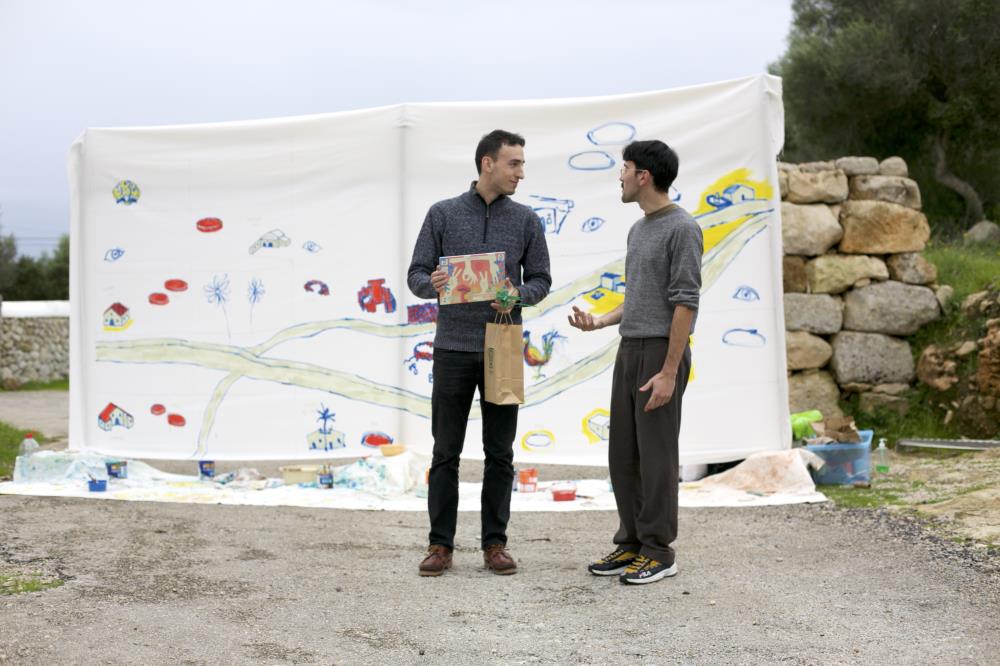 Becatalaiotica concluded its sixth edition today, 11 December, with an event held at the Torralba d’en Salort site, during which Miquel López was declared the winner of the €2,000 study grant, the prize awarded in this competition organised by the Associació d’Amics del Museu de Menorca with the support of the Department of Cultural Affairs of Menorca's Consell Insular. From tomorrow, 12 December, candidates for Becatalaiotica 2023 can submit their entries. Becatalaiotica concluded its sixth edition today, 11 December, with an event held at the Torralba d’en Salort site, during which Miquel López was declared the winner of the €2,000 study grant, the prize awarded in this competition organised by the Associació d’Amics del Museu de Menorca with the support of the Department of Cultural Affairs of Menorca's Consell Insular. From tomorrow, 12 December, candidates for Becatalaiotica 2023 can submit their entries.
Miquel López García (born in Mataró, 1998), a student on the Archaeology undergraduate course at Barcelona University and a musician, presented us with a new way of telling the story of a stone which has lived in silence throughout the years.
With an installation conceptualising time, he gave us an insight into twelve moments in the history of Talatí de Dalt, twelve soundtracks accompanied by different instruments. A "biography" of the site which served as the curtain-raiser for the Becatalaiotica 2022 events.
This year saw highly innovative and original entries, as well as the winning effort: the performance by Adela Lafuente; the reading and analysis of an ancient poem which could decipher the origin of the first inhabitants of Menorca, courtesy of Carlos Martínez, and two artistic interventions in the landscape by Maria Riera and Ariana Ruíz, which all made their mark.
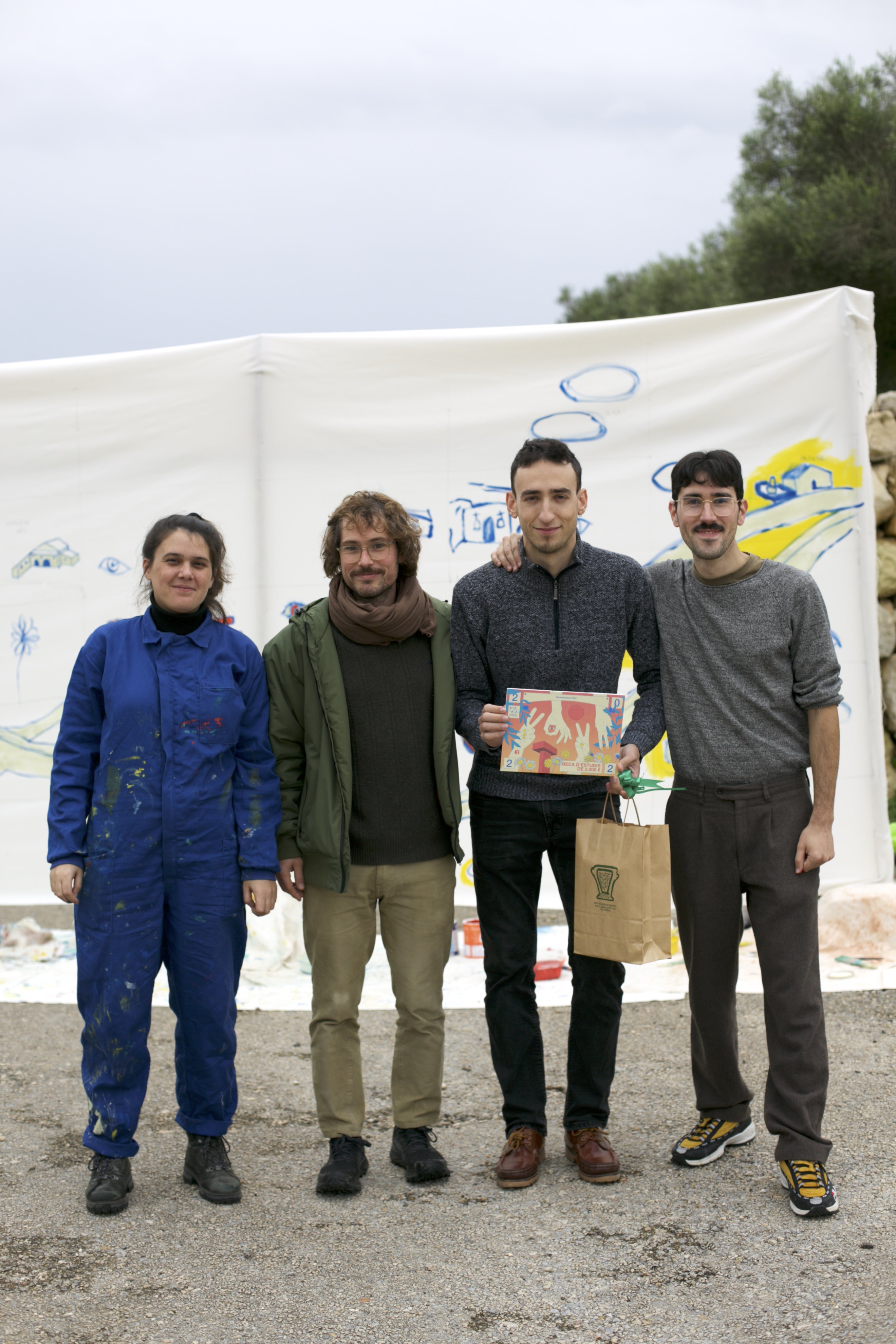 The audience cast their votes for each of these concepts, guided by the opinion and comments of a committee of Menorcan cultural experts comprising: Anna Gornés, cultural administrator; Martí Andreu, landscape architect; Carmen Lara, archaeologist; Cecilia Ligero, restorer; Quim Pons, archaeologist, and Maria Cardona, tour guide. The audience cast their votes for each of these concepts, guided by the opinion and comments of a committee of Menorcan cultural experts comprising: Anna Gornés, cultural administrator; Martí Andreu, landscape architect; Carmen Lara, archaeologist; Cecilia Ligero, restorer; Quim Pons, archaeologist, and Maria Cardona, tour guide.
Entries open for Becatalaiotica 2023
All those so wishing can register for the next edition of the competition by using the form to be published tomorrow, 12 December, on the Becatalaiotica social media profiles ( @becatalaiotica, on Instagram and Facebook) and on the Talayotic Menorca website.
A committee of cultural experts will select 10 of the entries received. The 10 shortlisted candidates will meet the organising team to create an event/activity of their choosing at a Talayotic Menorca site. From among these proposals, 5 will be chosen, to be staged in the months of May and June 2023.
Becatalaiotica is an original cultural project organised by the Associació d’Amics del Museu de Menorca, in which five people aged between 18 and 28 present a proposal for an alternative and original event or activity at different archaeological sites in Menorca.
The only condition placed on the entrants is that they use Talayotic Menorca as the background and source of inspiration for their work. The winner receives a €2,000 study grant funded by the Consell Insular and Fundació Illes Balears.
|
Closure of Becatalaiotica 2022
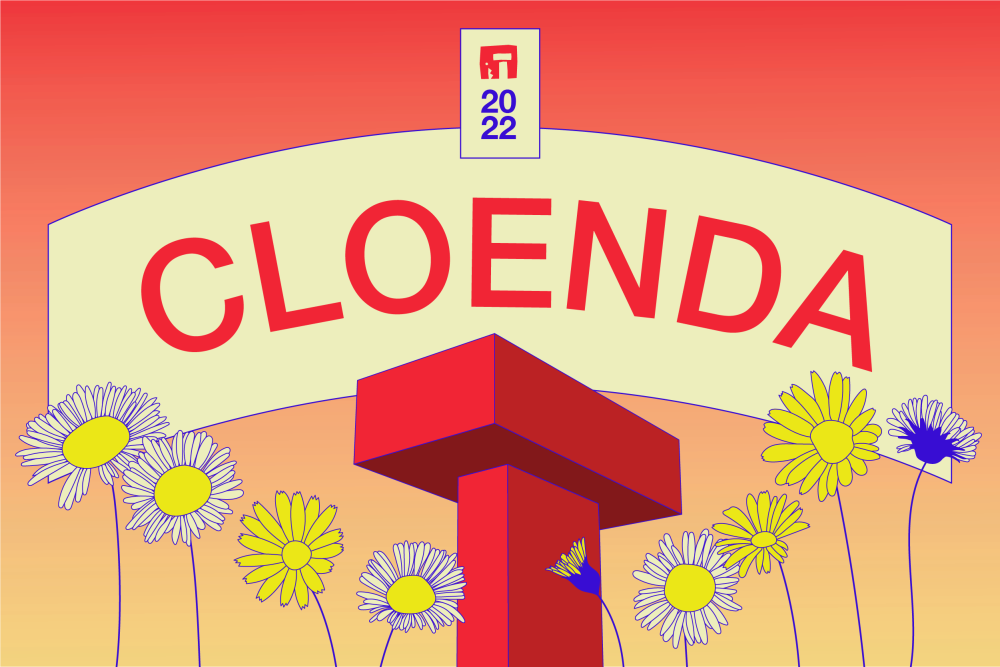 Becatalaiotica will close its sixth edition with a ceremony at the Torralba d'en Salort site where the winner of a 2,000-euro scholarship will be announced. A contest organized by the Associació d'Amics del Museu de Menorca with the support of the Department of Cultural Affairs of the Consell Insular de Menorca. Becatalaiotica will close its sixth edition with a ceremony at the Torralba d'en Salort site where the winner of a 2,000-euro scholarship will be announced. A contest organized by the Associació d'Amics del Museu de Menorca with the support of the Department of Cultural Affairs of the Consell Insular de Menorca.
Aside from revealing the name of the winner, other activities include:
- 11 a.m: Exhibition of the objects used in the Becatalaiotica 2022 events.
- 11 am: Live mural pinting where everyone is invited to participate which, will later be made into make tote bags.
- 11:30 a.m. to 12:30 p.m: Visit to the excavation of the "post-medieval" building of Torralba d'en Salort, one of the archaeological projects of the Associació d'Amics del Museu de Menorca.
- 12:45 p.m: Presentation of the Becatalaiotica 2022 award.
- 1:45 p.m. to 3:00 p.m: Music and snacks.
Becatalaiotica is an original cultural project of the Associació d'Amics del Museu de Menorca where five people between the ages of 18 and 28, after passing two previous selection phases, present an event or activity in different archaeological sites of Menorca.
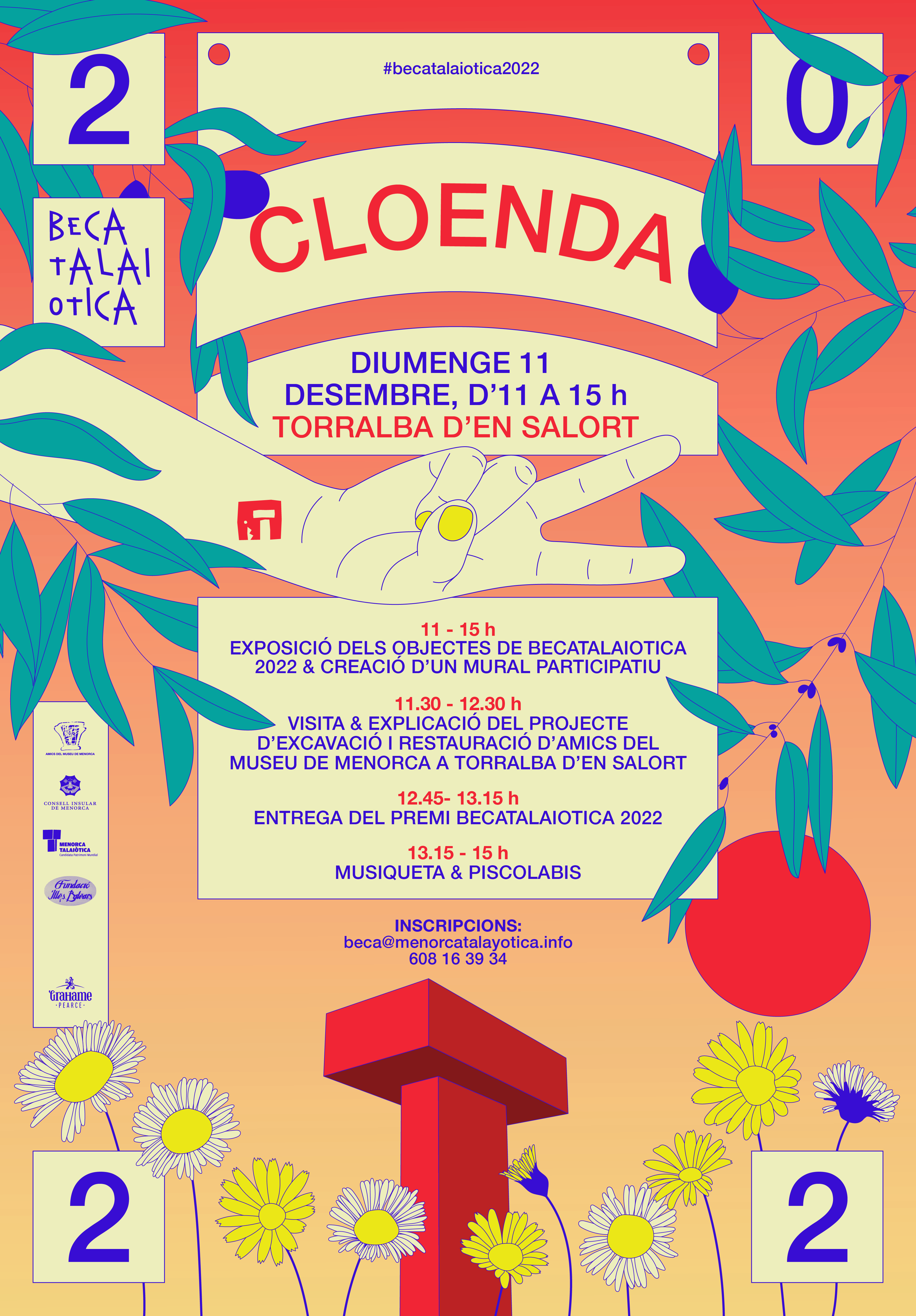 The only requirement is to use Talayotic Menorca as a backdrop and source of inspiration. The winner receives a €2,000 scholarship, financed by the Consell Insular de Menorca and the Fundació Illes Balears. The only requirement is to use Talayotic Menorca as a backdrop and source of inspiration. The winner receives a €2,000 scholarship, financed by the Consell Insular de Menorca and the Fundació Illes Balears.
This year there have been diverse, original and highly innovative proposals: the musical show by Miquel López; the performance of Adela Lafuente; the reading and analysis of an ancient poem by Carlos Martínez; and the two artistic landscape interventions by Maria Riera and Ariana Ruíz.
The audience has voted on each of these proposals, guided by the opinion and comments of a committee of experts in Menorcan culture formed by: Anna Gornés, cultural manager; Martí Andreu, landscape architect; Carmen Lara, archaeologist; Cecilia Ligero, restorer; Quim Pons, archaeologist; and Maria Cardona, tourist guide.
Registration opening for Becatalaiotica 2023
As a novelty, the same day the prize is awarded, the call to apply for Becatalaiotica 2023 will also be opened. All those interested may register through a form that will be published from December 12 on the contest's social networks ( @becatalaiotica, on Instagram and Facebook) and on the Talayotic Menorca website.
To attend the closing ceremony, you can sign up at beca@menorcatalayotica.info or via Whatsapp at 608 16 39 34.
|
"The cake evokes the fresh, rocky countryside of Menorca, a landscape which still remains more or less just as our prehistoric ancestors experienced it"
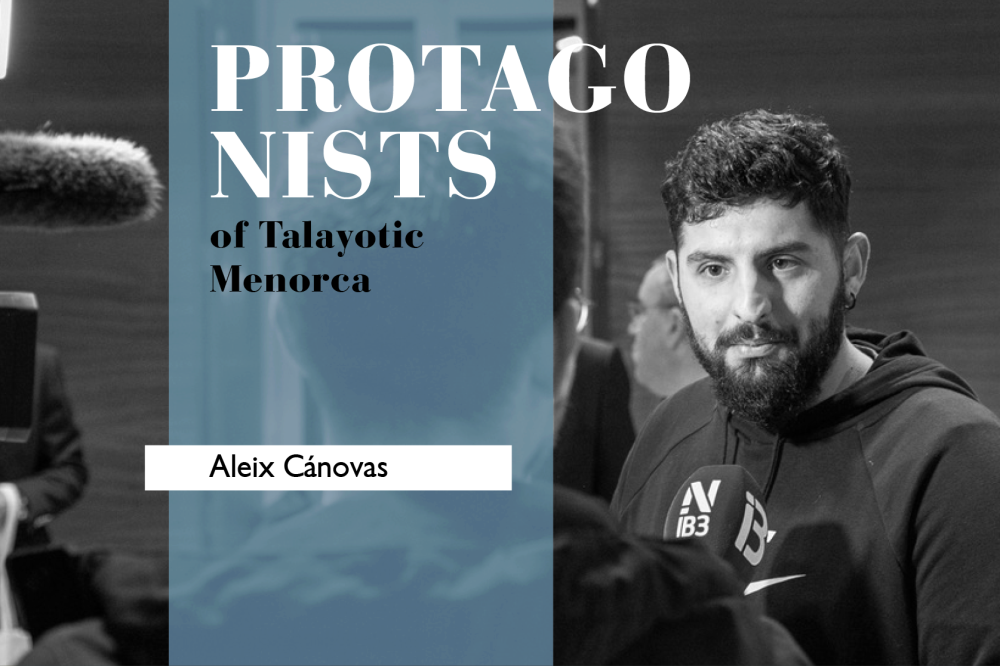 Aleix Cánovas Riudavets, aged 24, is the son and grandson of cake makers. He learned from a very young age to love the trade which he now continues through the family dynasty at Ca na Maru. With tradition, creativity and innovation as his ingredients, he won the competition "El Dolç Talaiòtic" with a small cake which evokes the fresh, rocky landscape of Talayotic Menorca with every bite: almonds, lemon, local honey, figs and rosemary are the star ingredients. Aleix Cánovas Riudavets, aged 24, is the son and grandson of cake makers. He learned from a very young age to love the trade which he now continues through the family dynasty at Ca na Maru. With tradition, creativity and innovation as his ingredients, he won the competition "El Dolç Talaiòtic" with a small cake which evokes the fresh, rocky landscape of Talayotic Menorca with every bite: almonds, lemon, local honey, figs and rosemary are the star ingredients.
Having trained as a chef at Barcelona's CETT, the lead university institution in the Tourism, Hospitality and Gastronomy sector, associated with Barcelona University, he spent time in the prestigious kitchens of Torralbenc and Santa Ponça, without ever neglecting the family bakery. A chef with a musical spirit (he is the drummer of Ses Bísties de Mongofre), who we will undoubtedly hear more of.
- Despite your youth, you already have plenty of culinary experience. Where did your passion for gastronomy come from?
I have been surrounded by baking all life, as my grandmother founded Ca na Maru and my mother continued the tradition. I breathed it all in from a young age. I always used to go to the bakery to spend time there, at home the conversation would be about cakes… And so I gradually learned the trade almost without realising. I have always really liked the whole business of baking and cuisine, as well as music. As I wasn't much of an academic, I decided to study cooking - intermediate level vocational training first in Ciutadella, and then advanced level at the CETT in Barcelona.
It is a job that really takes it out of you, but also gives you so much satisfaction. Taking a seasonal ingredient from your kitchen garden, cooking it and seeing how much diners enjoy it is priceless for me. I don't just enjoy the process of cooking, I also like to look after the kitchen garden and harvest my own ingredients.
- And how do you combine cooking with the family business?
Well, for the moment what I do is that during the high season, I work at small rural hotels. I spent four seasons at Torralbenc, where I started out as a kitchen assistant and ended up as chef de partie, and this year I was at Santa Ponça. In the winter I love coming back to Ca na Maru, working with my family in the bakery. There is always plenty of work to do in the build-up to Christmas, and so I lend a hand.
- Your cake was the favourite of the “El Dolç Talaiòtic” jury. How did you set about creating it?
It was my mother who gave me the opportunity to represent the family firm in the competition, and I spent all summer thinking about what we could do. In the end, bearing in mind that it had small and easily transportable, I decided that a little cake was the best option. The end result was this sponge cake glazed with white chocolate, and with almond, lemon, local honey, figs and rosemary.
- And what inspired you to choose those ingredients?
As it had to be a dessert inspired by Talayotic Menorca, the first thing I did was to look for ingredients from the island. At Santa Ponça we had a fig tree right alongside the kitchen, and one day I had an idea that I could do something with figs. Figat is a really traditional fig jam from Menorca. And then rosemary is one of my favourite herbs, and is also a plant that grows wild throughout the island, and I'm sure already existed in the Talayotic era. I included lemon because we always add a touch of lemon to our produce at Ca na Maru, and they are also home-grown, from the lemon tree we have at the bakery, which is laden with fruit every year.
The natural landscape of Menorca is a vital element of the World Heritage nomination, and so I felt that all these ingredients evoked the fresh, rocky countryside of Menorca, a landscape which still remains more or less just as our prehistoric ancestors experienced it. And to give it the final touch, the peanut crunch topping recalls the Talayotic stones, as does the whitish colour of the chocolate glaze.
- So what are the next steps from here?
Well, we are really delighted and satisfied to be representing Talayotic Menorca with this cake. We now need to set about producing and marketing it. The recipe already belongs to the APAME, and all the bakeries on Menorca that want to make it. I hope people really like it, and that everyone has the chance to try a little bit of our island.
|
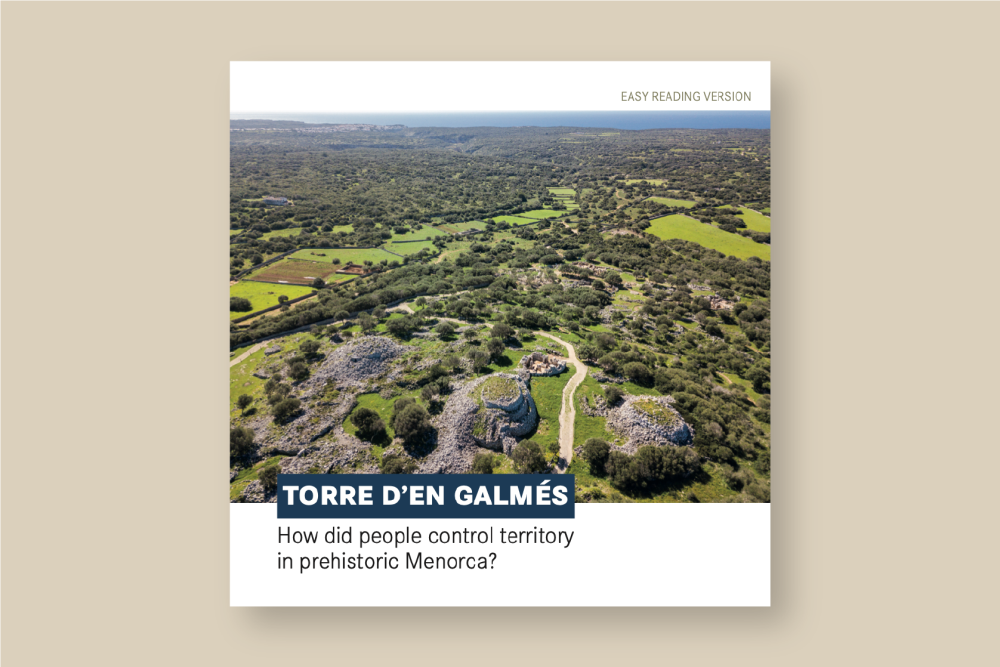
Sitjot book about Torre d’en Galmés adapted for easy reading
¿¡[AQUI]¡¿The book Torre d’en Galmés. How did people control territory in prehistoric Menorca?, In the Sitjot collection, is now available in a new easy-to-read version, continuing the principle of making Talayotic Menorca a universal and inclusive project.
The adaptation by Elisabet Serra, of the Asociación Lectura Fácil, was produced in accordance with the international guidelines of the IFLA (International Federation of Library Associations and Institutions) and Inclusion Europe as to language, content and form, to facilitate understanding.
The easy-to-read version will be presented this week in Ciutadella and Alaior, within the context of the 18th Menorca Local History and Cultural Heritage Seminars. Both events will be attended by Elisabet Serra and the authors of the original work: the archaeologists Antoni Ferrer and Gustau Juan, who will be taking part on Friday, 25 November, at the event to be held at Ciutadella Municipal Library (7 p.m.); and Carmen Lara and Joaquim Pons, at the second presentation on Saturday the 26th, at the Public Activities Room of Alaior Town Hall (6 p.m.).
Likewise within the context of the seminars, from 8:30 p.m. on Saturday there will also be a tasting of the new Talayotic cake, with its creator, Aleix Cànovas (Ca Na Maru).
The original book, Torre d’en Galmés. Control of territory in prehistoric Menorca, was the first publication in the Sitjot collection, presenting the latest findings from the excavations conducted at the site up until 2018. As with the rest of the collection, the easy-to-read version is available in Catalan, Spanish and English. It can be found at Menorca Museum and the island's libraries.
Sitjot has the aim of showcasing Menorca's wealth of historical and archaeological heritage among a non-specialist audience. Very much intended as an outreach initiative, while respecting scientific rigour, the monographs feature illustrations and other visual devices to make the information more understandable. The intention is that the works should prove of interest not only to the general public in Menorca, but also to tourists travelling to the island, in particular those visiting its museums.
|
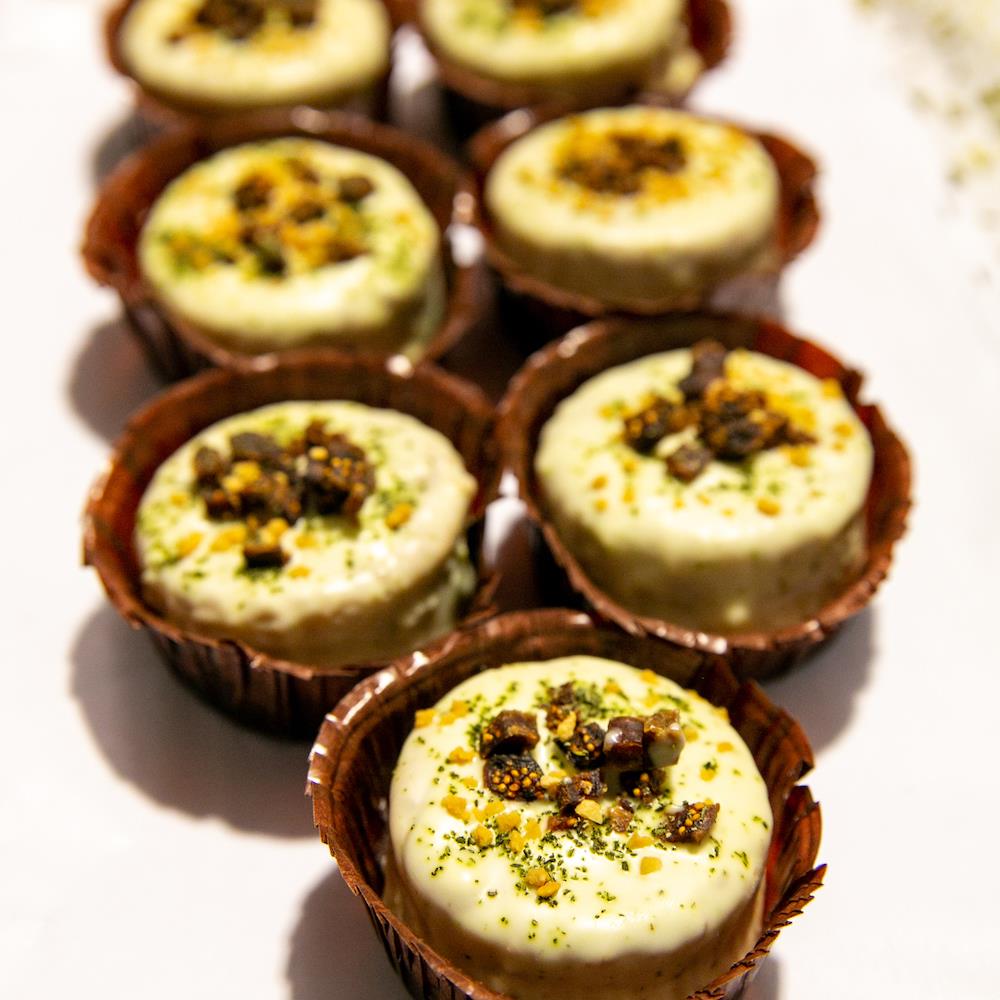
Ca na Maru, winner of "El Dolç Talaiòtic" contest
¿¡[AQUI]¡¿The cake shop Ca na Maru was chosen as the winner of the competition “El Dolç Talaiòtic”, with a small cake glazed with white chocolate, and made with almond, lemon, Minorca honey, local figat fig jam and rosemary. The vice-president and conseller for Culture, Miquel Àngel Maria, and the president of APAME (Menorca's Professional Association of Cake-making, Baking and Related Trades), Jose A. Jiménez, handed over the 5,000 euro prize to the winner at a ceremony held this afternoon at Menorca Museum.
The aim is for both residents and visitors to associate this new desert with Talayotic Menorca, and have the chance to buy it at cake shops around the island. The event was also attended by the conseller for Economy, Josep Pastrana, and the island's director of Culture, Raquel Marqués.
The jury highlighted the creativity and originality of the entry by Mariluz Riudavets and Aleix Canovas of Ca na Maru, as well as the use of flavours so redolent of Menorca's fresh, rocky landscape, such as rosemary, figat and lemon. The judges also appreciated the fact that it was a cake of appropriate size and consistency for transportation, as the contestants had to make provision for possible sale and shipment outside Menorca.
A total of five participants submitted desserts for the competition, all fulfilling the requirement that the dish should be an original creation that had not previously been put on sale. The other four finalists were El Diamante, Herbera Bakery, Pastisseria i Gelats Ca’n Sintes, and Pastisseria Artesana Lluís Febrer, each of whom received 500 euros and a Talayotic Menorca kit.
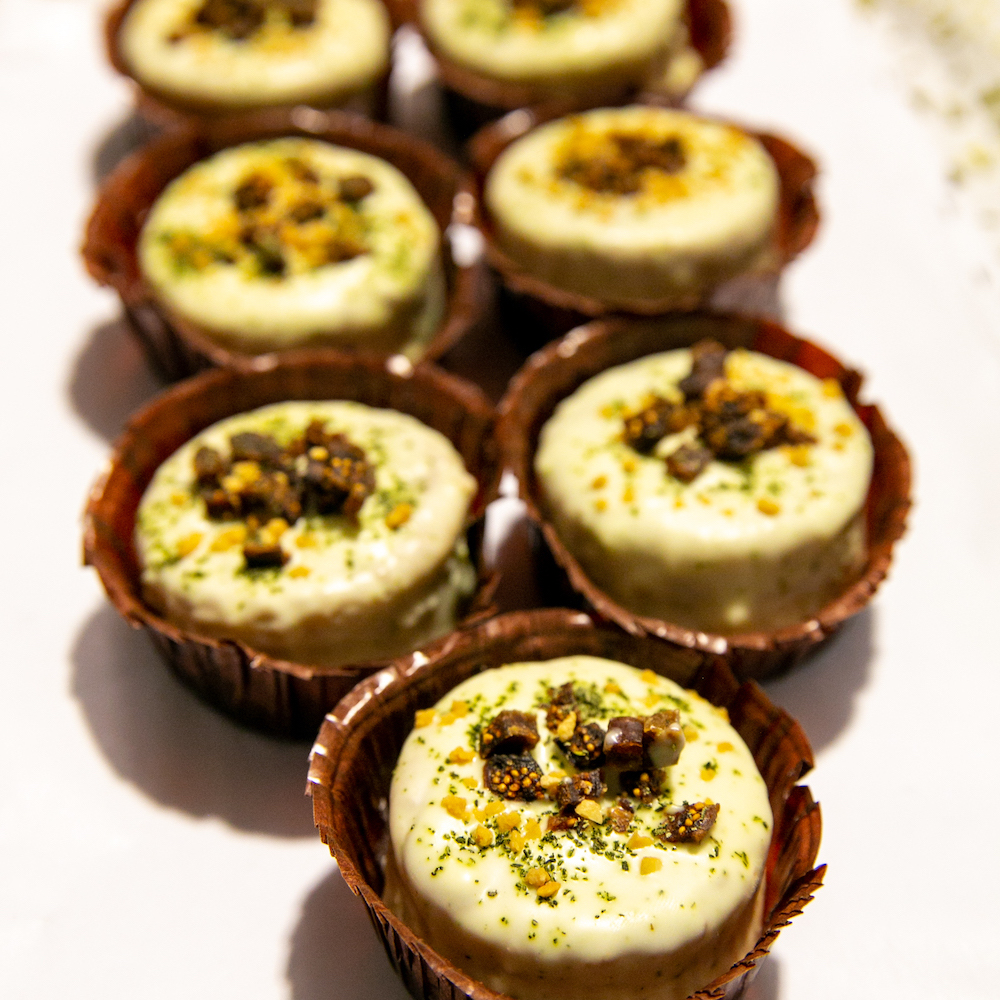 During the awards ceremony, the conseller of Culture wished to emphasise the importance of actions to publicise the Talayotic Menorca World Heritage nomination, beyond the specific field of archaeology and heritage conservation. "The nomination belongs to all of Menorca's society, and we are seeing an increasing number of public, business and institutional initiatives espousing the project and adding their own distinctive element to it. This Talayotic dessert is a new experience, destined to become a symbol of the way in which the whole of Menorca has signed up to this cultural venture," the conseller emphasised. During the awards ceremony, the conseller of Culture wished to emphasise the importance of actions to publicise the Talayotic Menorca World Heritage nomination, beyond the specific field of archaeology and heritage conservation. "The nomination belongs to all of Menorca's society, and we are seeing an increasing number of public, business and institutional initiatives espousing the project and adding their own distinctive element to it. This Talayotic dessert is a new experience, destined to become a symbol of the way in which the whole of Menorca has signed up to this cultural venture," the conseller emphasised.
For his part, the president of APAME stressed the technical quality of all the entries, and his hope that the initiative would help achieve Talayotic Menorca's World Heritage declaration by UNESCO. He also wished to thank all the participating businesses for their effort, as well as the altruistic contribution made by the jury members.
The event attracted a large crowd, and was rounded off with a family photo of the dignitaries and participants in the competition. The attendees then had the chance to sample Talaiòtica beer, an initiative courtesy of the nomination organisers, Menorca Museum and Grahame Pearce, derived from analysis and research into one of the most distinctive exhibits of Talayotic culture: the high-based beaker.
Jury members
The competition jury comprised: Pep Pelfort, researcher and director of the Gastronomic Study Centre; Marga Cursach, gastronomic researcher and member of the IME; Sonia Sintes, author of the gastronomic blog “Simfonia del meu rebost”; Santi Tadeo, manager of COINGA; Maria Mascaró; and Antoni Sansaloni, president of the Menorca Association of Cafeterias, Bars and Restaurants.
Organised jointly by APAME and the CIM, the competition “El Dolç Talaiòtic” represents a further initiative within the Talayotic Menorca Communication Plan. The winning desert will become the property of APAME, which will distribute the method and composition among all of its member organisations so that they can then put it on sale.
|
Start of the selection process for Talayotic Menorca Agency management
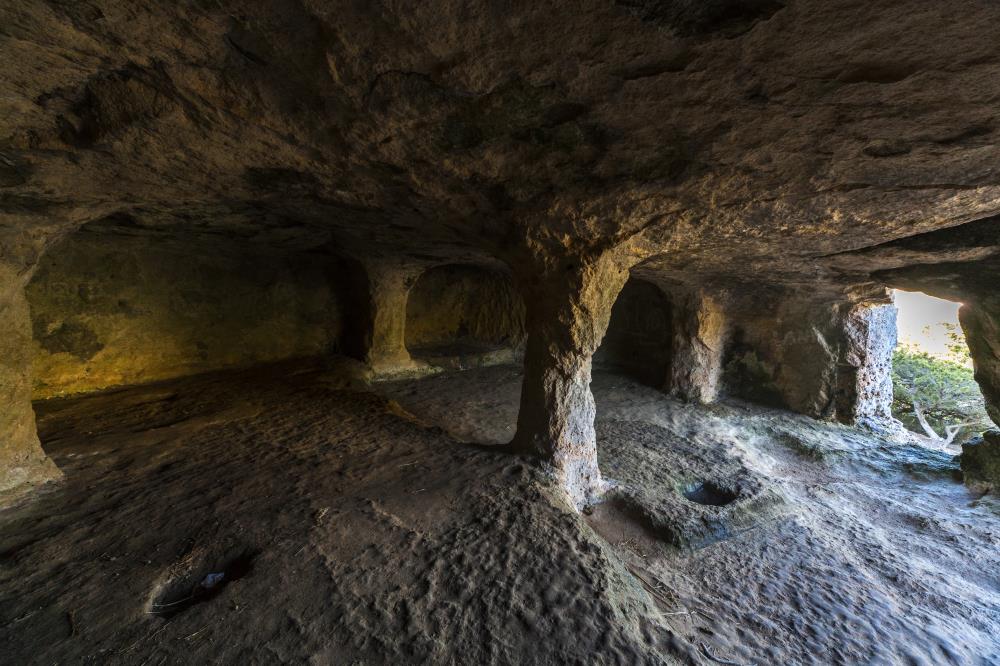 The process of selecting the director of the Talayotic Menorca Agency was launched today, 16 November, with the publication of the edict concerning the approval of the announcement and specifications for the position, which still remains pending publication in the Balearic Official Gazette. The process of selecting the director of the Talayotic Menorca Agency was launched today, 16 November, with the publication of the edict concerning the approval of the announcement and specifications for the position, which still remains pending publication in the Balearic Official Gazette.
The agency director's contract will be for five years, dependent on ongoing evaluation, but not tied to the mandate of the Governing Council. The time limit for applications to be submitted is twenty calendar days from the day following publication of the announcement in the official gazette.
The Talayotic Menorca Agency is the body channelling and coordinating all actions and measures affecting the management of the cultural assets and conservation of their exceptional, universal value, in particular those included within the Talayotic Menorca Management Plan.
The full documentation is available here.
|
The Talayotic Menorca documentary screening at the International Archeology Film Festival in Croatia
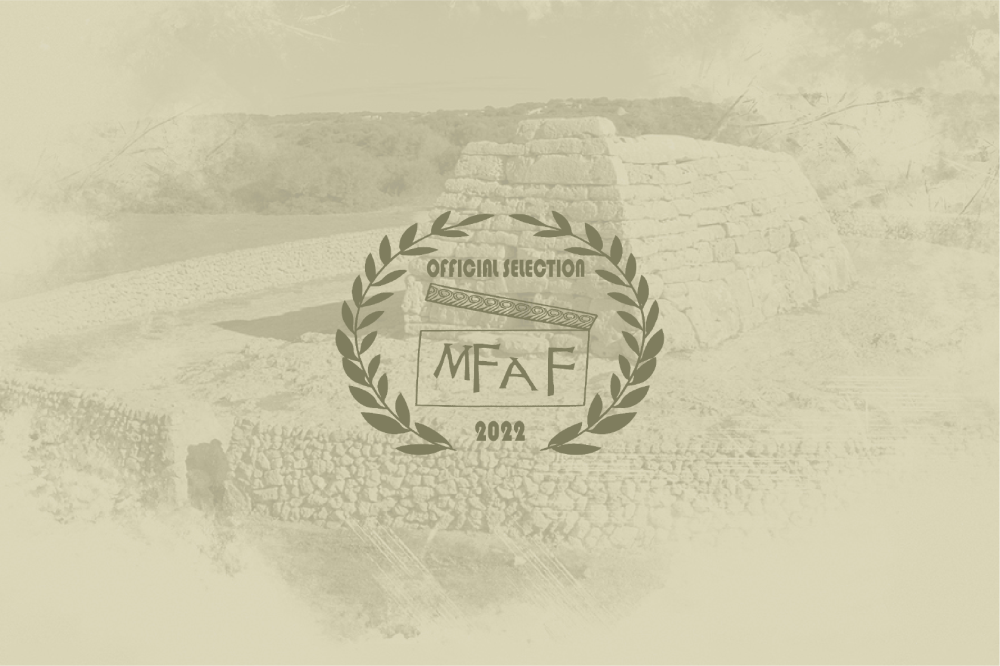 The Talayotic Menorca documentary increases its international echo by participating this Thursday, November 10, at the prestigious International Archeology Film Festival (MFAF), which takes place from November 10 to 12 in Split, Croatia. The Talayotic Menorca documentary increases its international echo by participating this Thursday, November 10, at the prestigious International Archeology Film Festival (MFAF), which takes place from November 10 to 12 in Split, Croatia.
Talayotic Menorca, an insular cyclopean odyssey is the only Spanish representative in a contest in which 21 cinematographic productions from Great Britain, France, Estonia, Portugal, Germany, Italy and Ireland are participating. Talayotic Menorca will compete for one of three prizes awarded by an expert jury of the seventh edition of the MFAF, and for the public prize.
Manu Balaguer, director of the documentary, will represent the Consell Insular de Menorca in Croatia. This biannual international documentary film festival on archaeology, cultural and historical heritage aims to disseminate the world's cultural and archaeological heritage and sensitize a wider audience about its protection.
The Consell Insular de Menorca promoted the production of this documentary in order to support the candidacy. The aim is to encourage people to get involved in the conservation of Talayotic heritage and discover our prehistoric ancestors culture.
Filmed by Espiral Producciones TV SL, Talayotic Menorca, an insular cyclopean odyssey was directed by Manu Balaguer, written by Laura Jurado and consulted by the archaeologist Amalia Pérez-Juez. This 38 minute long film is a journey through the history of our island, from Talayotic times to the present day. 17 testimonies from a diverse group of people, mostly archaeologists, are collected to detail the story surrounding Talayotic Menorca. A geologist, the owner of a site and the coordinator of the World Heritage candidacy file, Cipriano Marín, also participate in the film. The actress who gives voice to the documentary in Catalan and Spanish is Enka Alonso from Menorca.
Talayotic Menorca at the FICAB
The documentary will also participate in the XXII Bidasoa International Archaeological Film Festival (FICAB) on November 15. At the FICAB in Irún (Basque Country), the Talayotic Menorca documentary will compete for four prizes: the Grand Prize of the Festival, the Special Audience Prize, the Arkeolan prize for popular science, and the Educational Section prize. This festival seeks to bring archeology closer to society through the dissemination of films based on the results of archaeological research.
Talayotic Menorca, an insular cyclopean odyssey was presented for the first time outside of Menorca during the Firenze Archeofilm, the international archaeology, art and environment film festival in Florence, Italy.
|
What is the current status of Talayotic Menorca?
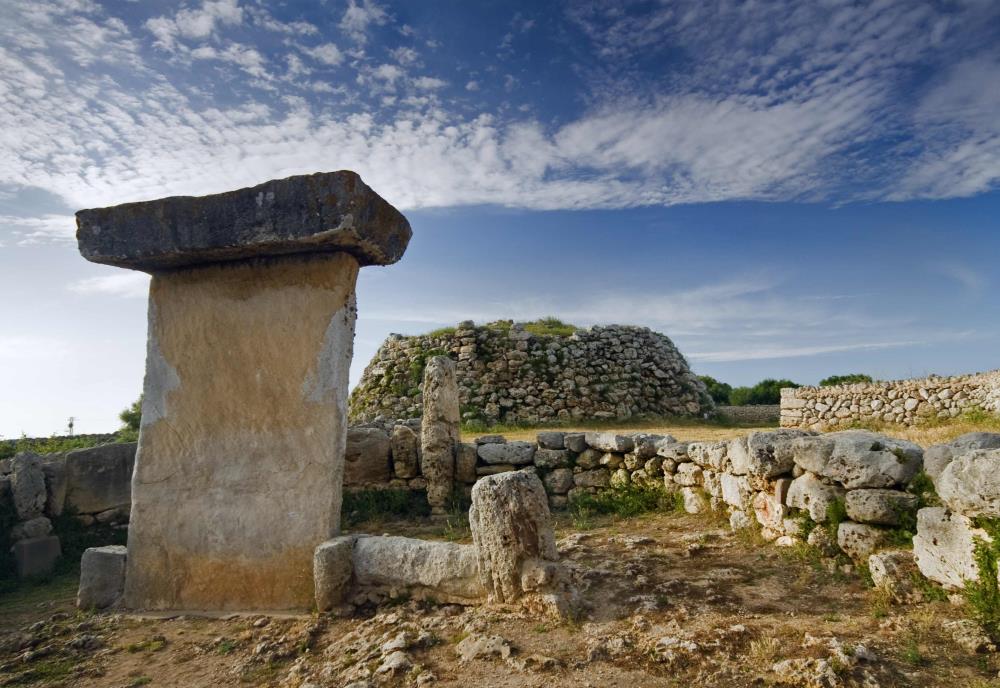 I can assure you that not a week goes by without someone asking me how long we will have to wait before UNESCO declares Talayotic Menorca to be a World Heritage Site. People ask me at meetings, out on the street, both locals and people from elsewhere. I can assure you that not a week goes by without someone asking me how long we will have to wait before UNESCO declares Talayotic Menorca to be a World Heritage Site. People ask me at meetings, out on the street, both locals and people from elsewhere.
I really appreciate this concern, because it means that the project, as we have so often said, is not an initiative of the Consell, but of our whole society. People have gradually made this phenomenal challenge their own, and are now eager to see it completed, like a runner in sight of the finishing line. And so I feel it is my duty to write an article setting out an update as to the situation, and sharing the information we now have.
In short: the situation at UNESCO is highly complex, but very simple to explain. The World Heritage Committee, which is the body which approves new nominations, meets once a year. In 2022 it should have met between 19 and 30 June in the Russian city of Kazan, under Russia's presidency. However, Russia's invasion of Ukraine in February led to fears that the committee's meeting would be suspended, as did indeed occur.
There has since then been considerable diplomatic contact the international level, but so far this has all proved fruitless. Ukraine's allies find it intolerable that the World Heritage Committee should be presided over by a country that has invaded another, and that, aside from the human victims, which are of course the most serious, is also destroying Ukraine's historical and cultural heritage with its bombs.
For the moment there is no sign of when the meeting of the World Heritage Council could be rescheduled. On the worst-case scenario, we would have to wait until Russia's presidency of the Committee ends, which will be in November 2023. It may be that the international community agrees an intermediate solution, and that the UNESCO meeting can be held in another country, under another country's presidency. But for the moment there is no clear sign of how things will develop. It is all up in the air.
And meanwhile, what can we do? The painter Picasso said that inspiration does exist, but it has to find you hard at work. Similarly, you could say that the World Heritage designation of Talayotic Menorca will arrive, but must find us hard at work. What does that mean?
If we turn the clock back to 2017, when UNESCO postponed the declaration of Talayotic Menorca, in its report it set out a series of recommendations. The most important: restructure the nomination to take into account the landscape surrounding the prehistoric sites, and not only the monuments themselves; draw up and approve a Menorca World Heritage Management Plan; create a specific management structure, separate from the World Heritage Service; and create a forum for owners and managers of privately owned archaeological sites. The good news is that all of this is already in progress:
- The new nomination, which has completed all the processes and has now been evaluated, comprises nine components or territorial areas, which include monuments and their associated landscape.
- In July 2021 the Consell Insular approved the Talayotic Menorca Management Plan, including the timeline of the work to be conducted over the next decade, which is already fully in force and operational.
- On 20 December 2021 the Consell created the Talayotic Menorca Agency, which is the structure responsible for managing World Heritage in Menorca. Since then, its participatory bodies have progressively been set up (scientific council, social council), as well as the bodies of governance (governing council and executive committee). And the process of hiring another person to handle the Agency's management has already begun, along with another figure for administrative services.
- Lastly, on 9 August 2021 the Association of Talayotic Menorca Owners and Managers was founded, and has now begun to stage gatherings of the owners and managers of private archaeological sites. And its president has been elected a member of the Governing Council of the Talayotic Menorca Agency.
Those involved with UNESCO state the increasing importance that a World Heritage nomination should demonstrate through acts, rather than simply an impressive dossier, that it is a serious-minded proposal, with rock-solid dedication. And so when UNESCO tells you what you need to do in order to resubmit your proposal to the World Heritage Committee, you have to get your homework done before you turn up, not simply give them a statement of intent.
Ultimately: we do not know when we will get the call from UNESCO, but when they call they will find that we have got the job done as regards the recommendations they gave us in 2017, with plenty of projects in progress. We still do not know when we will receive the World Heritage declaration, but we are going ahead as if we already had it, which gives us credibility and strengthens our chances, as the Ministry of Culture has repeatedly acknowledged.
Right now, aside from the regular administration of the nine components of the nomination, we have a highly ambitious investment plan for which we have received an allocation of European funds and from the Ministry of Culture, totalling more than a million and a half euros. Don't worry, they will find us hard at work. Full steam ahead.
I hope I have provided some clear and useful information for everyone with an interest in the subject. And of course, both I and the staff of the Talayotic Menorca Agency are here to help if there is anything you would like to ask, suggest or propose.
Author: Miquel Àngel Maria, conseller of Cultural Affairs and president of the Talayotic Menorca Agency.
|
"It is enriching for society that any area can work with the Talayotic culture"
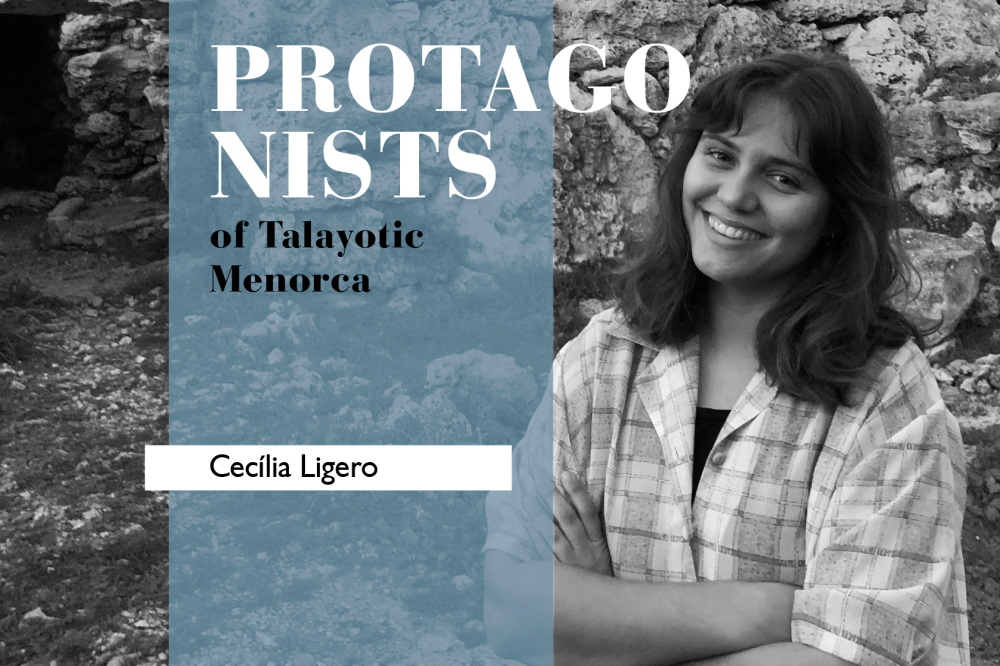 Cecília Ligero is a Menorcan restorer who has been president of the Amics del Museu de Menorca since 2016, and a member of their archaeological team since 2015, taking part in the excavation field seasons at Torre d'en Galmés and Torralba d'en Salort. Together with the archaeologist Carlos de Salort, she is the driving force behind the Becatalaiotica competition, a cultural project with the aim of promoting Talayotic Menorca's UNESCO World Heritage nomination among new audiences. Cecília Ligero is a Menorcan restorer who has been president of the Amics del Museu de Menorca since 2016, and a member of their archaeological team since 2015, taking part in the excavation field seasons at Torre d'en Galmés and Torralba d'en Salort. Together with the archaeologist Carlos de Salort, she is the driving force behind the Becatalaiotica competition, a cultural project with the aim of promoting Talayotic Menorca's UNESCO World Heritage nomination among new audiences.
- What prompted you to focus on heritage conservation and restoration?
I came from the field of art and sculpture, and had always had a real interest in archaeology, history, art history… Studying conservation and restoration allowed me to tie together a lot of different elements that I found of interest at the time, and still do. And so without setting aside the manual or creative part, and while extending my knowledge in the scientific and historical sphere, I got involved in this training to learn to preserve heritage.
I have specialised in the architectural area, both in material interventions (ceramics, glass, metal, stone…), and in situ structural interventions. I also really enjoy the educational side, explaining heritage and the work involved in conserving or restoring sites. As protecting heritage as a universal task, it is important for everyone to contribute to its preservation. And the first step towards conservation is to gain awareness, which is acquired through knowledge. Cultural outreach gives people that awareness: when you are aware of something, you understand it, and when you understand it, you love, care, value…
- You have now been president of Amics del Museu de Menorca for six years. What role does the association have in connection with the UNESCO nomination?
The main tasks performed by Amics del Museu de Menorca are research and cultural outreach about the history, pre-history, art and heritage of Menorca. The goal is to help in studying and showcasing Menorcan culture. Much of the work that the association performs focuses on Talayotic culture, and so both directly and indirectly contributes to and supports the nomination.
The association is a platform of opportunities, or a means of undertaking projects which enrich the island at the cultural level, which in all cases involves public participation or proximity. It is a network of people, of interdisciplinary work and professionals from different spheres, collaboration, volunteering… in short, citizens who value, work and care for Menorca's heritage.
- And what activities connected with Talayotic Menorca do you have planned for the coming months and for 2023?
We have the sixth edition of Becatalaiotica in progress: a competition intended for young students, with the goal of staging various events or performances, making use of a forum connected with Talayotic Menorca. The competition is currently in its final phase, with five students coming to Menorca to stage their concept at an archaeological site, before an audience who will rate each of the proposals. The best proposal, in the eyes of the audience, will receive a €2,000 study grant.
The archaeological team of Amics del Museu continues its project researching Talayotic domestic spaces and those of the late Talayotic period at Torre d'en Galmés (with over twenty years of experience in the area). The fieldwork of this year's archaeological season has already ended, and is planned to resume next summer.
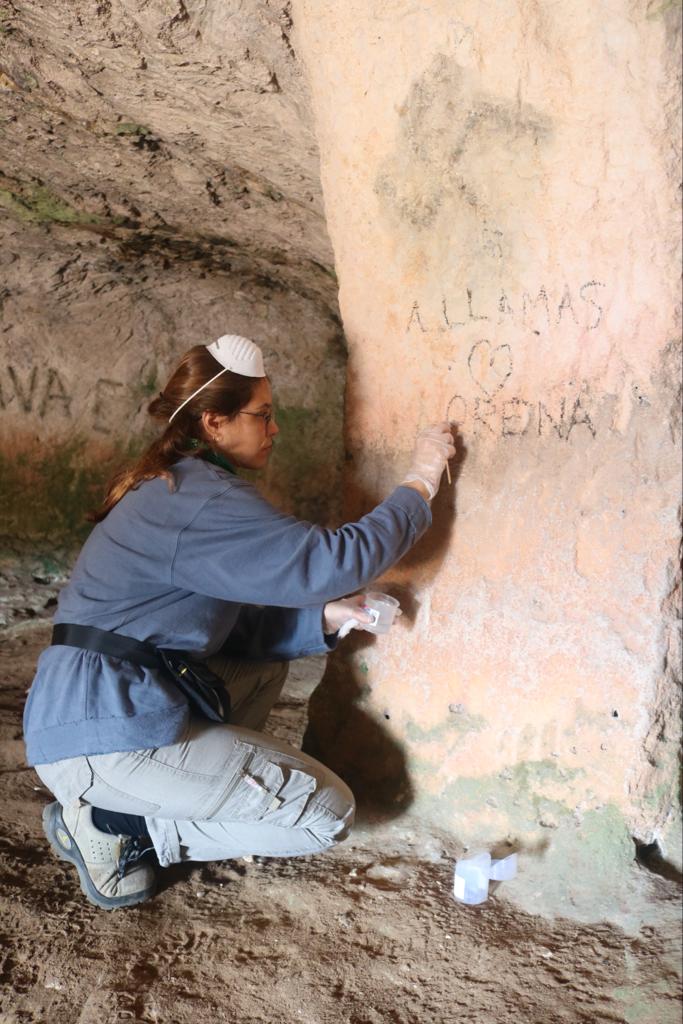 This year, a new archaeological research project has also been launched at Torralba d'en Salort. In this case, in a post-mediaeval building, with the aim of excavating the structures and restoring all that we can to consolidate and adapt the site for visitors over the coming years. And aside from the work on land, we also work under the sea, continuing the study of the underwater archaeological chart of Menorca for a further year. This year, a new archaeological research project has also been launched at Torralba d'en Salort. In this case, in a post-mediaeval building, with the aim of excavating the structures and restoring all that we can to consolidate and adapt the site for visitors over the coming years. And aside from the work on land, we also work under the sea, continuing the study of the underwater archaeological chart of Menorca for a further year.
Amics del Museu has contributed to the conceptualisation and coordination of visits within the Consell Insular and GOB Menorca "Som Talaiòtics?" programme in 2022. A programme which each month organises an outing on foot to various archaeological sites, accompanied by an archaeological explanation. This year we also included a tasting of some product of interest connected with the historical, artistic or culinary culture of Menorca, thereby supporting local and nearby produce, the initiatives of groups and companies from Menorca working in this area, etc.
Before the pandemic, volunteer days had been held over the course of five years to clean and clear scrub at Torre d'en Galmés. There have been requests to resume this project next year, following the hiatus. In this case it was the volunteers themselves who had taken part in the activities over so many years, who called for it to be resumed.
Meanwhile the association, specifically with Menorca Tir de Fona, has a historical re-enactment group of the Talayotic slingers: a re-enactment which has been staged on various occasions in Menorca and outside the island (such as to mark Tourism Day, or at the Roman historical re-enactment festival Tarraco Viva), which is to be repeated on future occasions. Aside from these projects, Amics del Museu de Menorca takes part each year in research or outreach seminars and conventions, organising or participating in guided tours, etc.
- You are one of a new batch of young professionals engaged in studying and conserving Menorca's historical heritage. What is it that most attracts you to the study of Talayotic culture?
I like to imagine what Menorca was like, or how it was in past eras. We have direct information about more recent periods, photographs, artworks, documents, oral sources… But for more ancient times we don't have that information, and instead have something else, something different: the megalithic remains that are so well preserved and integrated within Menorca's landscape. We have physical remains, which are furthermore of monumental scale. But however enormous they may be, that is not enough. We need more information, data allowing us to interpret and have a clear idea of what they were like and how they lived, these people that today we refer to as "Talayotic". Which is what makes the task of archaeological research and heritage education so important.
And each year there are more research teams making efforts to bring new data to light, giving us a better understanding and helping to shape the concepts we have. That's what it is all about. I think that one of the things that most attracts me is that however gradually, we are filling in the gaps and updating our perspective. It gives me satisfaction to know there is this concern, motivation and willingness to continue studying, and so to continue uncovering new information. The fact that there is in general that support, or to put it another way, that we feel there is increasing support on the part of public bodies. I am drawn to the opportunity to contribute to the task of continuing to put together the pieces of this jigsaw puzzle.
- As I mentioned earlier, you are one of the figures in charge of conservation and restoration tasks in the Amics archaeological projects at Torre d'en Galmés and Torralba. What is the current status of these two projects, and what is their importance for Talayotic Menorca?
Torre d’en Galmés, which is a truly exemplary Talayotic settlement, retains many structures which we link to the domestic sphere: houses, or circles. Amics del Museu has for a few years been excavating one of these buildings located at the foot of one of the talayots in the settlement, and there are still a few field seasons to go in order to complete the work. It won't be until we have completed these archaeological field seasons in situ that we will be able to try to restore the walls, consolidate them, or raise up displaced blocks, or any other intervention serving to adapt the space for its preservation, and to allow it to be safely visited.
So far a number of one-off consolidation interventions have been conducted on walls that were too unstable, to secure their integrity in time, as well as the personal safety of the team of archaeologists working beneath them, but we will need to wait for the forthcoming seasons before we can undertake any other intervention.
As for the laboratory work, during and after each intervention Francesc Isbert and myself, as co-directors of the conservation-restoration project, receive the materials and apply the necessary treatment so as to perform the least possible intervention (which is always reversible), guaranteeing their preventive conservation.
Meanwhile, in the intervention project on the post-mediaeval building at Torralba d'en Salort, in the sphere of conservation and restoration, so far a corner wall has been braced to secure its stability during the archaeological work. Over the coming field seasons, as work progresses on the excavations inside the building and around this wall, we will be able to do the necessary work to consolidate and stabilise it, without the need for bracing.
The expectation is that, once the archaeological work in situ is at a more advanced stage, walls can be raised, displaced elements replaced (provided that we have sufficient information as to their original placement), while also consolidating the structure to get it ready for visitors, and guaranteeing its preservation. Archaeological materials have been sent to us at the laboratory from this first field season (in particular ceramics), which we have worked on in accordance with the needs of each object or fragment. In both projects, conducting these archaeological and conservation-restoration tasks is vital in order to maintain the site and the studies conducted there, with a view to helping to better understand, preserve and showcase Talayotic Menorca.
- You are one of the figures behind Becatalaiotica. How did this cultural project arise?
Becatalaiotica arose out of Amics del Museu de Menorca's desire to undertake new (original) projects, and the need to address the lack of scheduled activities with reference to Talayotic Menorca that existed at the time to reach out to a younger population. With the support of the Consell Insular, we enabled a different way of visiting the sites from other perspectives, beyond the archaeological aspect; discovering heritage from an alternative point of view, and so giving an opportunity to a broader segment of the population, making it more inclusive. The idea being that heritage does not belong only to the cultural sphere, but is something where the whole population can find different approaches to enjoy it.
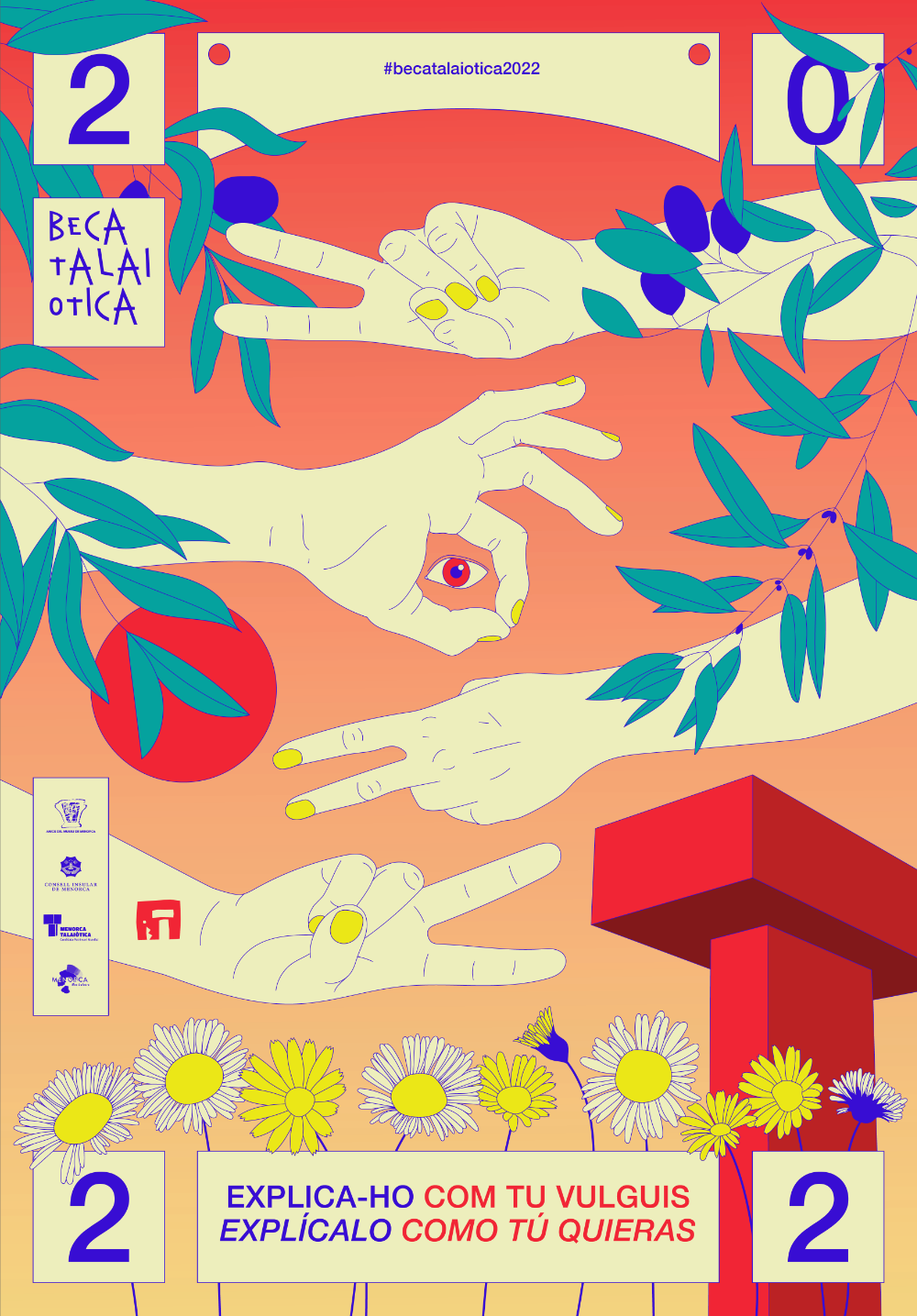 Becatalaiotica served, and still serves, to showcase Talayotic Menorca within and beyond the island, as the competition is open to students from throughout Spain. It is one way of showing that young people can have the skills to create, implement and convey ideas. A platform to encourage young people to believe in and demonstrate their skills, learning to speak in public, coordinate tasks and people, or empathise with audiences of different ages. Becatalaiotica served, and still serves, to showcase Talayotic Menorca within and beyond the island, as the competition is open to students from throughout Spain. It is one way of showing that young people can have the skills to create, implement and convey ideas. A platform to encourage young people to believe in and demonstrate their skills, learning to speak in public, coordinate tasks and people, or empathise with audiences of different ages.
Those of us who were behind the competition were fairly young when we created it (aged 25 and 21), and so I suppose that to some extent we could understand where most of the participants were coming from, an important factor in publicising or explaining the contest. There was a closeness between us, which made the whole thing approachable for the target audience, then and now.
- Do you think there is still to some extent a lack of understanding about the importance of Talayotic heritage among youngsters in Menorca? What do you think could be improved to arouse their interest?
Yes, I think there is something of a lack of understanding as to the importance of Talayotic heritage among young people in Menorca, but not only youngsters, across all sectors of the population. But I do nonetheless feel that we are doing more and more outreach work to educate people about the importance of heritage preservation. In the educational sphere, for example, to start with the basics: both at infant and primary schools, and also high schools, Talayotic Menorca increasingly has a place.
Nonetheless, we can't expect everyone to take an interest in culture, or in the case of Menorca, Talayotic culture and its legacy. People vary a great deal, in terms of their hobbies and interests, as well as their age. It is made easier by the fact that more and more initiatives are now taking place to showcase heritage and heritage protection. Reaching out to everyone isn't a straightforward task, and never will be, but we must aim to continue working along these lines.
To begin with, I don't think that you can get everyone to appreciate the value of this culture in the same way. And so it's important to work with different disciplines and organisations. The study, understanding and presentation of Talayotic culture covers many different spheres these days, and we have to take advantage of that. Not everyone enjoys guided tours, not everyone has an interest in cuisine, sport, art and sculpture, etc. But I do think that it enriches our approach if we can address Talayotic culture in any sphere, because that way more and more people have the chance to find a way of interacting with heritage. And however gradually, they are already appreciating it, and so directly or indirectly contributing to the preservation of these sites.
Right now, and this would undoubtedly have been unimaginable just a few years ago, there are a great many activities in different spheres, not exclusively heritage-based, that are in some way linked in with Talayotic culture: local Talayotic beer, pastisset pasty moulds in the form of sa Naveta des Tudons and the Talayotic baking competition, to give just a few examples. There are also sports races with routes that include heritage sites, musical concerts held at full moon alongside archaeological monuments, educational activities in the museum and out on the street, physical and/or visual art exhibitions or competitions addressing Talayotic Menorca, among others.
To encourage interest, I think that Talayotic Menorca, and hence all the people and organisations working on this, must be open to continued collaboration with such areas, as well as experimentation and exploration of other new fields.
|
"Our task has served to uncover a fair few previously undiscovered sites"
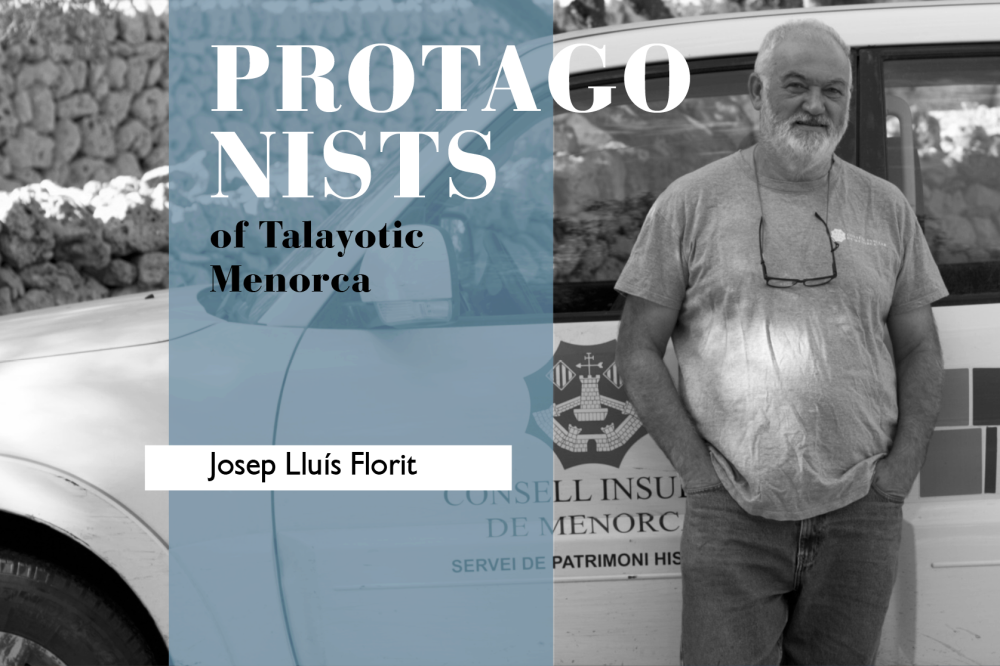 Josep Florit has spent 41 years working at the Consell Insular de Menorca, and has been one of the two Heritage Service supervisors for 21 years. A lover of Menorca's countryside, and with an innate curiosity, he knows every inch of our island. A year before he retires, he explains the experience of Talayotic Menorca on the ground. Josep Florit has spent 41 years working at the Consell Insular de Menorca, and has been one of the two Heritage Service supervisors for 21 years. A lover of Menorca's countryside, and with an innate curiosity, he knows every inch of our island. A year before he retires, he explains the experience of Talayotic Menorca on the ground.
What does your work as a Heritage supervisor involve?
Out of all the archaeological sites in Menorca, more than a thousand of them, 53 are covered by an agreement between the Consell and the local authorities to guarantee their maintenance. Not all of them are publicly owned. And so one of our tasks is to make sure they are properly maintained: check that the signs are in good condition, give the word if the vegetation has grown too much, if there is any dirt or act of vandalism… We report on what's there. There are two of us performing this job, and we split the territory of Menorca between us.
When someone applies for permission to lay a road or build a property development, we conduct an initial survey, and depending on what we find, an archaeologist will then pay an inspection visit. We also position any recorded traces on the ground. We note down anything connected with heritage, not just the Talayotic monuments: shelters, water tanks, wells, farmyards… to make sure people know it's there. We have an archive with more than 100,000 photographs of all these things.
On occasion, we also survey areas where there is little documentation, and the suspicion is that there could be valuable remains. This task has served to uncover a fair few previously undiscovered sites, such as some nave-type structures I discovered a short while ago near to the Ferreries chapel. We also recently found an unknown Talayotic cave in the Ciutadella region, and a few years ago, even a new talayot in Binillobet. We keep finding new things, and in fact in all these years I still haven't seen all of the Talayotic sites that there are in Menorca. Some are very difficult to get to.
And with your considerable experience on the ground, what do you see as Talayotic Menorca's main strength for inclusion on the World Heritage List?
For me one of the most important things is the quantity of sites that Menorca has, some of them highly distinctive, in such a small territory. I used to think that there was nothing in the northern region, but that's not true. My colleague, who was worked there more, has found plenty of traces. There is so much that the quantity itself is exceptional.
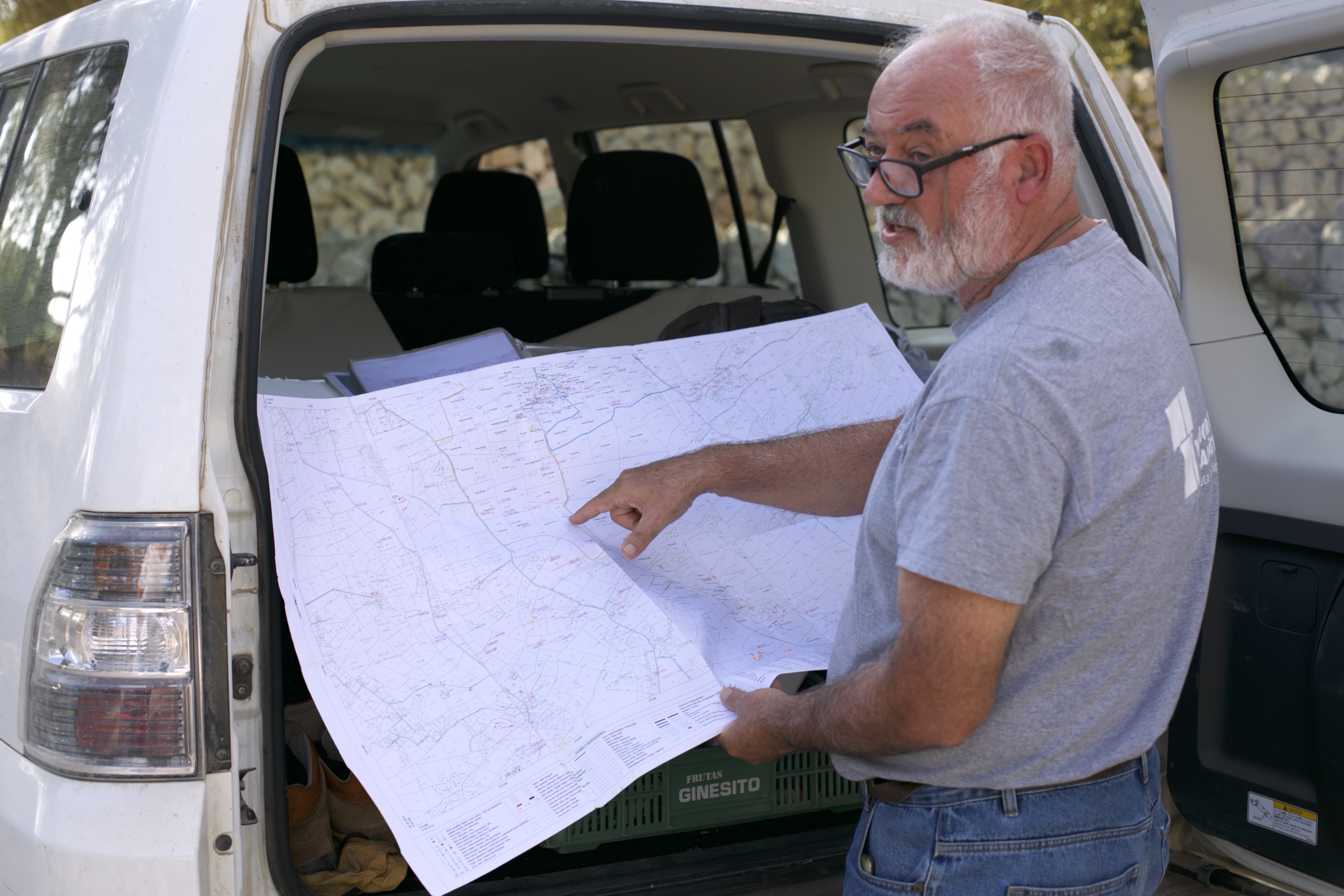 How would you say the perception of Talayotic heritage on the part of the general population has changed over all these years? How would you say the perception of Talayotic heritage on the part of the general population has changed over all these years?
It is given much more prominence today. People have always said that in Menorca we look after our island. When the Consell begins cleaning up the sites, that gives visibility to a series of spaces, and there has been a boom ever since the Talayotic Menorca submission was launched. The whole thing has taken on a previously unseen dimension.
There were some sites where you never used to see anyone, but now there are visitors all around, such as at Torrellafuda, for example. I mean that people pick up the guides, the information, and set out exploring. There has also been a big increase in curiosity among the local population of Menorca. Everyone is in the countryside, everyone heads out, and so there are many more people visiting the heritage.
And how do you think that being awarded World Heritage status could change things?
I think that most people in Menorca expect a World Heritage declaration, although if that doesn't happen, it wouldn't undermine its importance. But it would be a very important step for international recognition.
Given your experience as a supervisor, how do you see the balance between heritage conservation and tourism?
I think that without tourism, there will be no heritage conservation. It takes a lot of money. One of the things we are short of in Menorca is the excavation of talayots, because it's very costly. Striking a balance is another matter, but without tourism there's no money. What we need is to get more visitors to come outside of high season.
You know many unfamiliar places. If you had to choose one particularly spectacular site, which would it be?
Well, for example, the Es Tudons or Torre Vella settlements are fantastic, but you can't visit them. There are really spectacular burial complexes, such as Sa Serola, with around 15 Talayotic caves that are very difficult to access, right on the coast. And of those which are open to the public, my favourite is Na Comerma de Sa Garita.
|
Talayotic Menorca at the XVI Meeting of World Heritage Managers
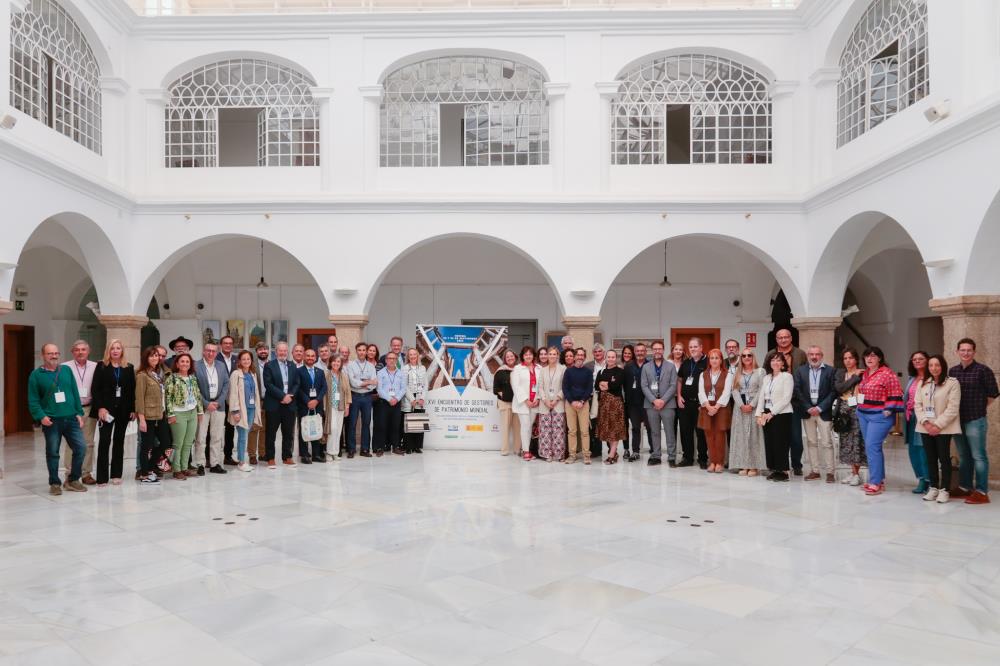 Talayotic Menorca has participated today in the XVI Meeting of World Heritage Managers, an annual forum created in 2007 by the Ministry of Cultural Affairs and Sports to analyze and debate initiatives and projects for the managing of World Heritage sites. Although Talayotic Menorca is not yet on the Unesco World Heritage List, our candidacy has been invited because of its relevance and projection. Talayotic Menorca has participated today in the XVI Meeting of World Heritage Managers, an annual forum created in 2007 by the Ministry of Cultural Affairs and Sports to analyze and debate initiatives and projects for the managing of World Heritage sites. Although Talayotic Menorca is not yet on the Unesco World Heritage List, our candidacy has been invited because of its relevance and projection.
The vicepresident and conseller of Cultural Affairs, Miquel Angel Maria, intervened this morning, September 29, with the presentation "The Talayotic Agency Agency and the association of owners and managers: a shared management of the archaeological heritage". While waiting for the celebration of the 45th World Heritage Committee, Maria explained the candidacy’s path nowadays: “We didn’t wait for the Comitee’s outocome to start the Management Plan, the Talayotic Menorca Agency and the Owners Forum. We have already created them and put them to work.” The Talayotic Menorca technician and archaeologist, Joaquim Pons, has also participated in the meeting.
Under the slogan "In the next 50 years: world heritage as a source of resilience, humanity and innovation for future generations", the Managers' Meeting has revolved around the 50th anniversary of the UNESCO World Heritage Convention and the challenges it faces, such as sustainable development and tourism management tools.
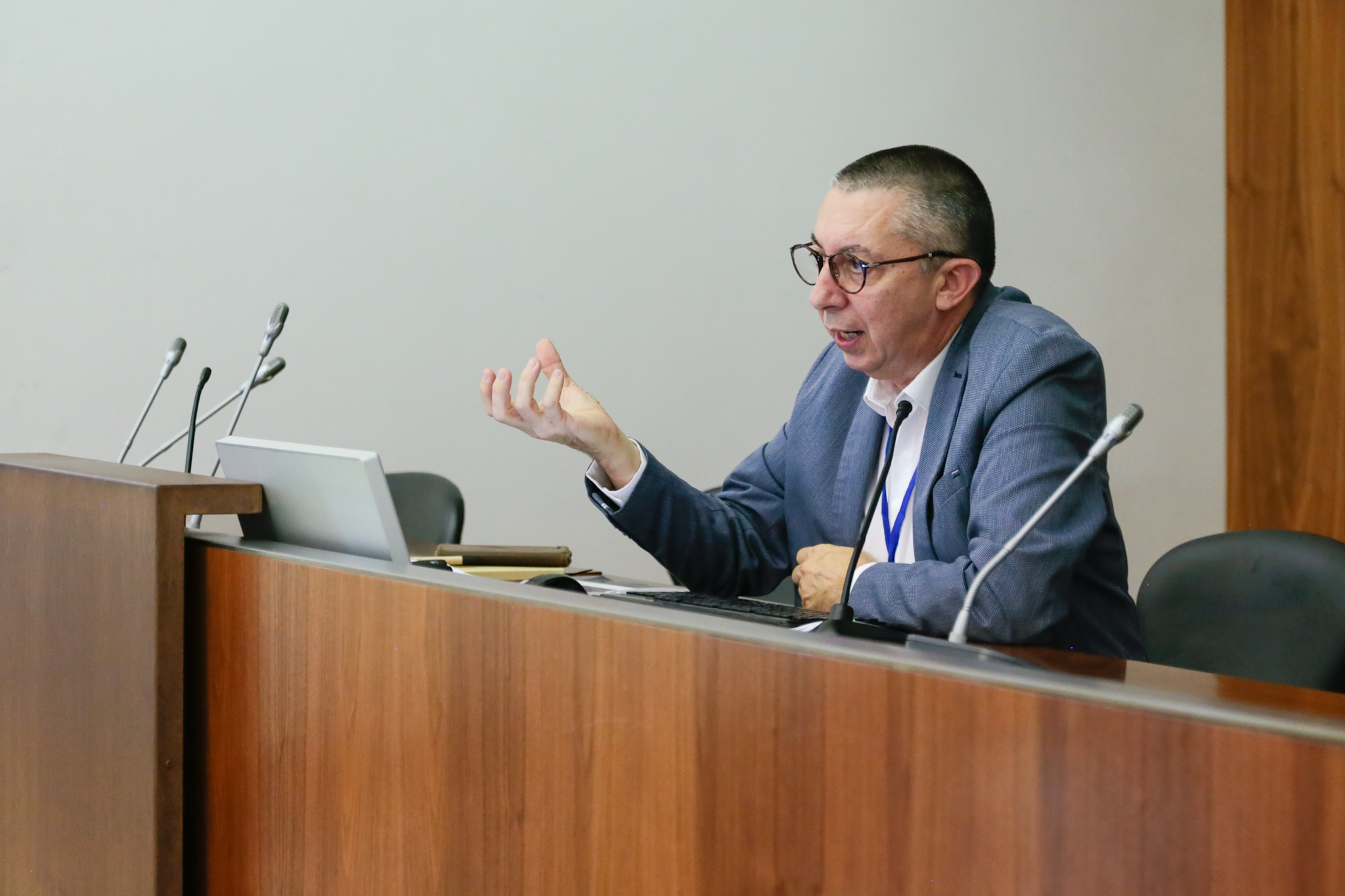 50th anniversary of the World Heritage Convention 50th anniversary of the World Heritage Convention
On September 28, the Group of World Heritage Cities of Spain and the Ministry of Cultural Affairs and Sports organized an institutional event at the National Museum of Roman Art in Mérida to commemorate the 50th anniversary of the UNESCO World Heritage Convention.
The Convention is an agreement adopted by countries in the UNESCO General Conference of 1972. The goal is to identify, protect, preserve, enhance and transmit to future generations the Outstanding Universal Value of natural and cultural heritage. Thanks to the ratification of the 194 States Parties (Spain included), it is currently the most recognised convention on earth dealing with heritage.
It is the most effective and outstanding tool of international cooperation dedicated to the protection of cultural and natural heritage that possesses outstanding value. Thanks to this agreement, it has been possible to protect sites with important value that otherwise would have deteriorated or disappeared due to lack of resources for their preservation.
|
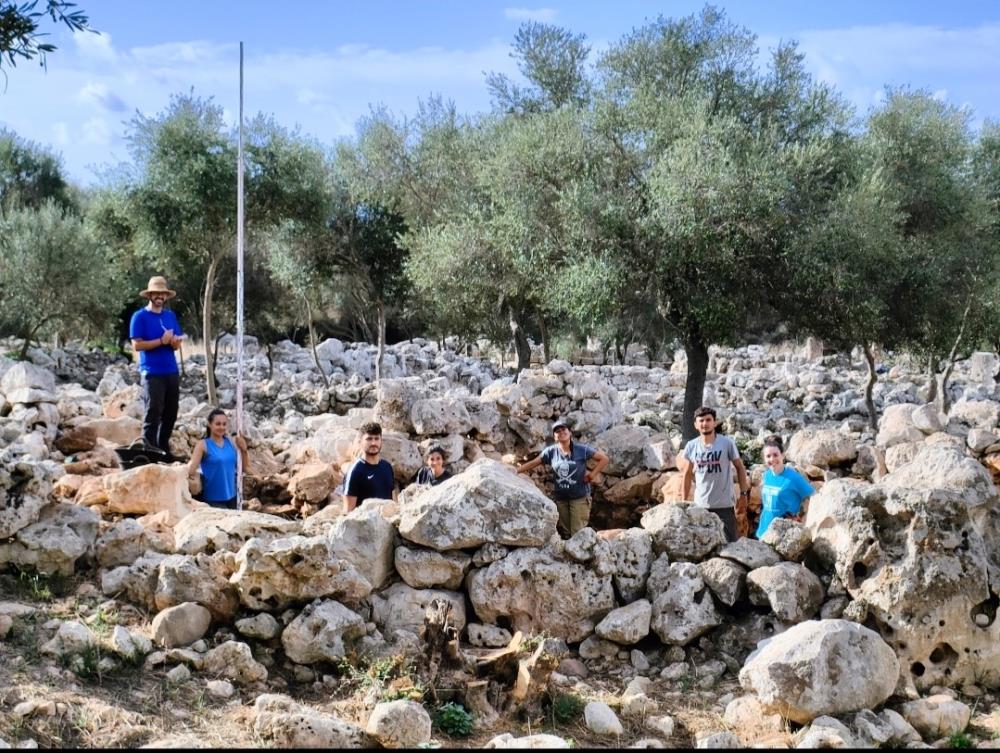
End of the fifth Heritage Recovery field season at Torre d’en Galmés
¿¡[AQUI]¡¿The Menorca Heritage Recovery association today completed fieldwork in the central zone of the Torre d´en Galmés archaeological site. This fifth field season was directed by the archaeologists Luis María Cobos Rodríguez, manager of the company ARQ Patrimonio, and Julia García González, professor of the University of Granada, together with their team made up of figures including the archaeologist Adrián Castro.
This year's efforts focused on the excavation of the quadrangular structure with an entrance to the south, where the team reached the bedrock, serving to clarify that the last occupancy of the space corresponds to a relative chronology at the end of the 3rd and 2nd centuries BC, as demonstrated above all by the ceramic materials found. The interior reveals a space divided into two zones by a lengthwise wall, supported on the geological level itself. In the more eastern zone, which has not yet been fully surveyed, a circular structure has been documented, and will be defined in the next field season.
Meanwhile, this quadrangular habitation structure would seem to form part of a larger complex of interconnected rooms: a structure tending towards a circular form, the flat arch gateway, the transit space, and an open section to the north which has still to be defined. Previous field seasons documented other Islamic rooms from the 10th to 13th centuries abutting this habitation complex, which made use of the Talayotic walls and form part of the Islamic occupation of the site.
Over the course of the coming months, the Heritage Recovery researchers will use these data to draw further information thanks to laboratory work and the study of the archaeological materials. In short, to conduct interpretation and then present their knowledge through heritage outreach.
|
The Talayotic Menorca documentary travels to Croatia
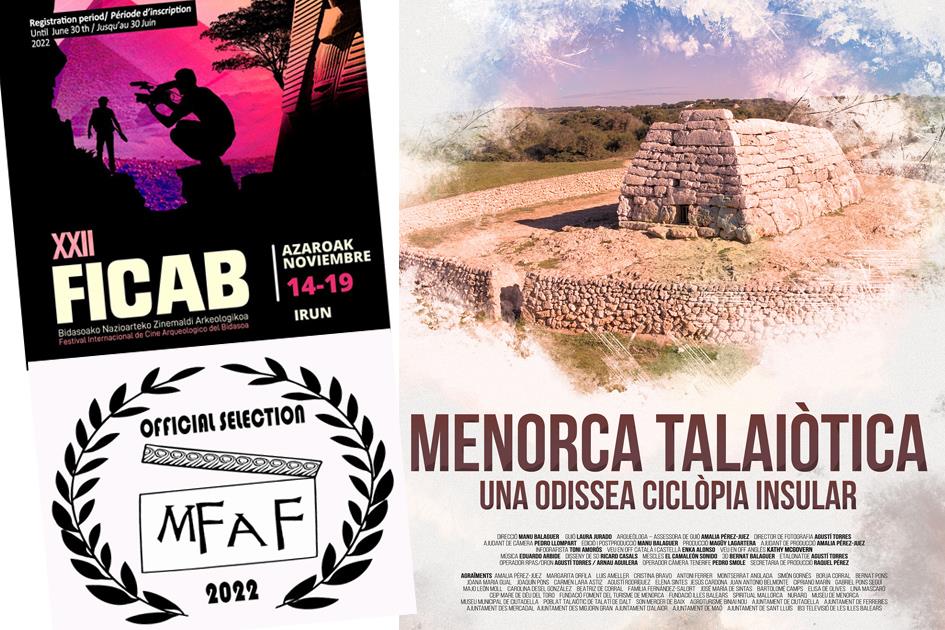 The Talayotic Menorca documentary increases its international echo by participating in two prestigious archeology film festivals this fall: the International Archeology Film Festival (MFAF), which will be held from November 10 to 12 in Split, Croatia; and at the XXII International Archaeological Film Festival of Bidasoa (FICAB), from November 14 to 19 in Irún, Basque Country. The Talayotic Menorca documentary increases its international echo by participating in two prestigious archeology film festivals this fall: the International Archeology Film Festival (MFAF), which will be held from November 10 to 12 in Split, Croatia; and at the XXII International Archaeological Film Festival of Bidasoa (FICAB), from November 14 to 19 in Irún, Basque Country.
Talayotic Menorca, an insular cyclopean odyssey will compete for one of the three prizes awarded by the expert jury of the seventh edition of the MFAF, and for the public prize. Manu Balaguer, director of the documentary, will represent the Consell Insular de Menorca in Croatia. This biannual international documentary film festival on archaeology, cultural and historical heritage aims to disseminate the world's cultural and archaeological heritage and sensitize a wider audience about its protection.
At the FICAB in Irún, the Talayotic Menorca documentary will compete for four prizes: the Grand Prize of the Festival, the Special Audience Prize, the Arkeolan prize for popular science, and the Educational Section prize. This festival seeks to bring archeology closer to society through the dissemination of films based on the results of archaeological research.
Talayotic Menorca, an insular cyclopean odyssey was presented for the first time outside of Menorca during the Firenze Archeofilm, the international archaeology, art and environment film festival in Florence, Italy.
|
Becatalaiotica 2022 Grand Finale starts October 22
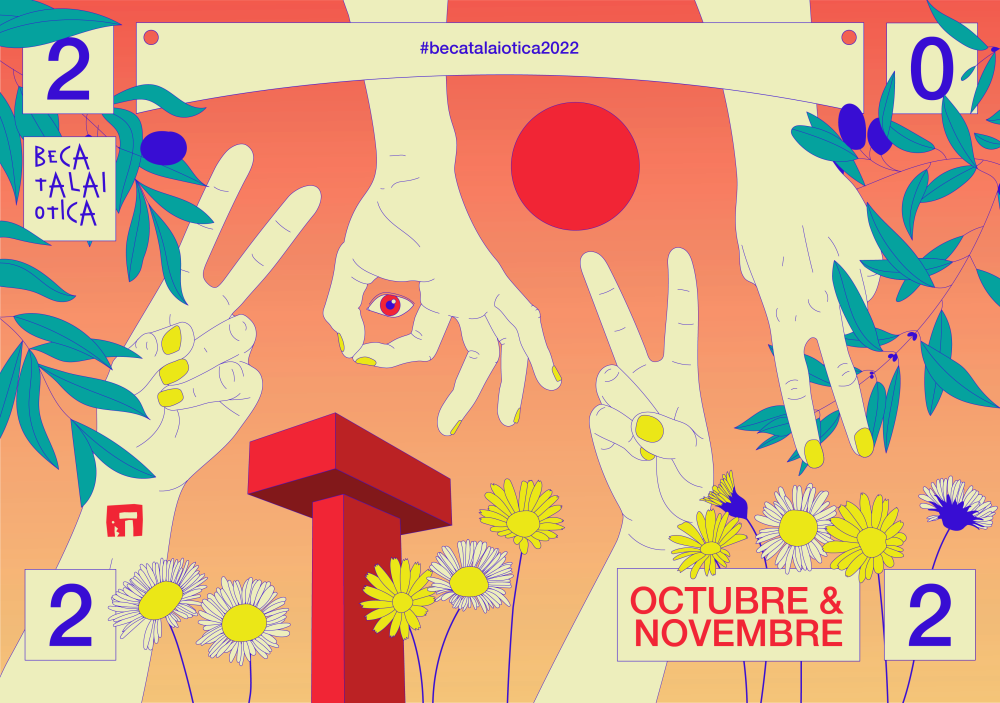 The Becatalaiotica 2022 Grand Finale is here. The contest, organized by the Associació d’Amics del Museu de Menorca with the support of Consell Insular de Menorca, is celebrating its 6th aniversary. The staging of Becatalaiotica will take place at the different Talayotic Menorca archaeological sites on October 22 and 29, November 5, 13 and 27. The Becatalaiotica 2022 Grand Finale is here. The contest, organized by the Associació d’Amics del Museu de Menorca with the support of Consell Insular de Menorca, is celebrating its 6th aniversary. The staging of Becatalaiotica will take place at the different Talayotic Menorca archaeological sites on October 22 and 29, November 5, 13 and 27.
Becatalaiotica is a cultural project created by the Amics del Museu de Menorca association with the aim of giving visibility to young talent, of claiming the inspiring value of the landscape and promoting the Talayotic Menorca candidacy for World Heritage among new audiences.
Five events, five participants, five sites. By converting the sites into open-air stages, the five finalists - young students between between 18 and 28 years of age - aim to create a free nature event, in which any method of expression is valid to transmit their vision about Menorca’s heritage or propose new ways of understanding it.
The assisting audience, apart from enjoying the event, must evaluate the proposals, assessing their originality, content and evocative power. The finalist who achieves the best evaluation will be granted a 2.000 € scholarship.
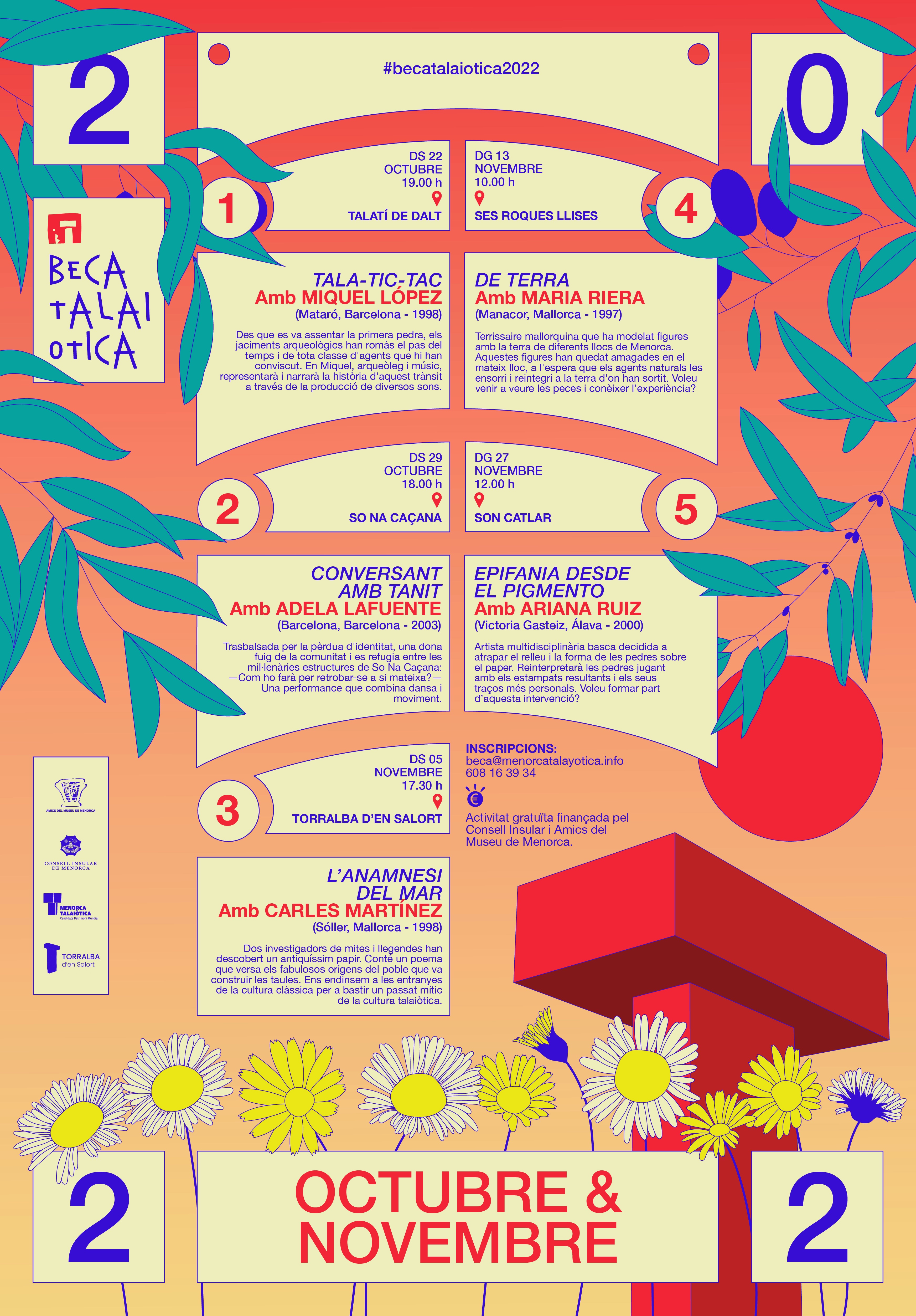 The dates and locations for each event are as follow: The dates and locations for each event are as follow:
- Saturday, October 22 at 7 pm in Talatí de Dalt: “Tala-tic-tac”, historical narrative through sound by Miquel López (Barcelona).
- Saturday, October 29 at 6 pm in So Na Caçana: "Conversing with Tanit", performance and dance show by Adela Lafuente (Caldes de Montbui, Barcelona).
- Saturday, November 5 at 5:30 pm in Torralba d’en Salort: "The anamnesis of the sea", essay and literary dialogue by Carles Martínez (Sóller, Mallorca).
- Sunday, November 13 at 10 am in Ses Roques Llises and Na Comerma de Sa Garita: “From the earth”, landscape intervention by Maria Riera (Manacor, Mallorca).
- Sunday, November 27 at 12 pm in Son Catlar: "Epiphany of the pigment", artistic intervention by Ariana Ruiz (Vitoria, Basque Country).
Previous registration is required. To attend the events you must fill out this form, send an email to beca@menorcatalayotica.info or call / send a whatsapp to 608 16 39 34.
The entrance is free. The cost of this activity is assumed by the Department of Cultural Affairs of the Consell Insular de Menorca.
|
"El dolç talaiòtic" contest extends its registration period
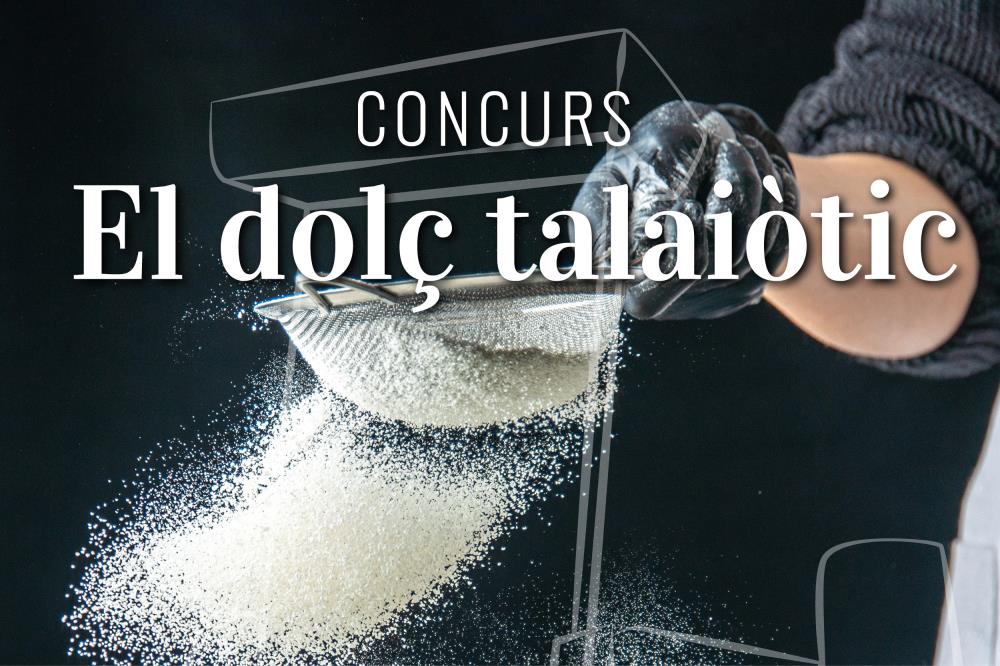 "El dolç talaiòtic" contest, organized jointly by the Asociación Profesional de Pastelería, Panadería y Afines de Menorca (APAME, Professional Association of Pastry, Bakery and Related Products of Menorca) and the CIM, extends its registration period until October 31 at midnight. "El dolç talaiòtic" contest, organized jointly by the Asociación Profesional de Pastelería, Panadería y Afines de Menorca (APAME, Professional Association of Pastry, Bakery and Related Products of Menorca) and the CIM, extends its registration period until October 31 at midnight.
This contest is one more of the actions included in the MT Communication Plan, so that both residents and visitors can link and identify the winning dessert with the candidacy. The awards ceremony will be held on November 19.
|
Talayotic Menorca Agency fully functional
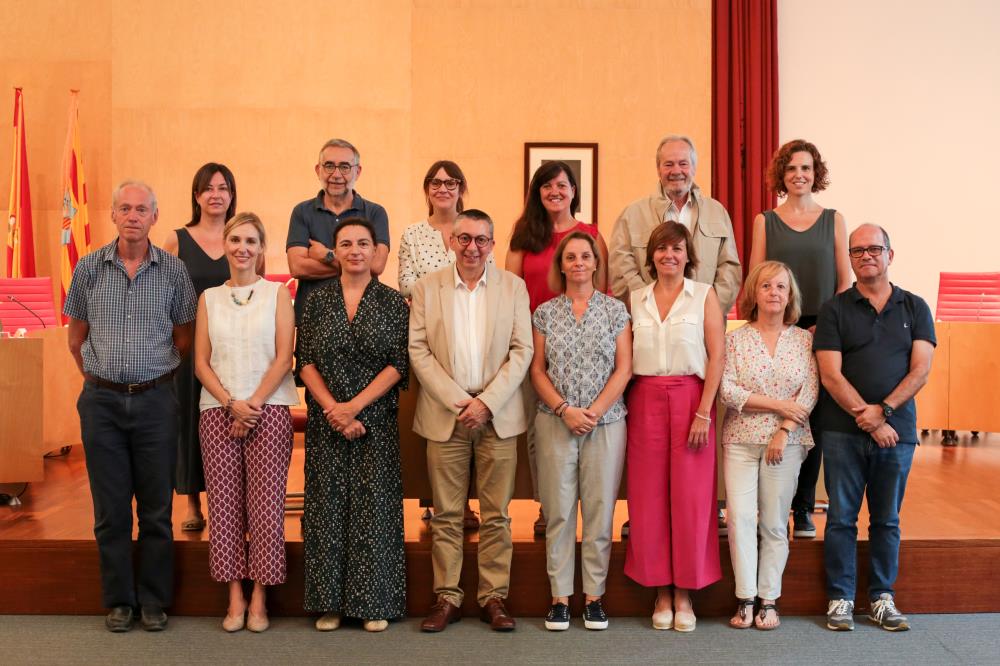 The Talayotic Menorca Agency is now fully functional as of today, 21 September, following the convening of the Governing Council, the highest decision-making body of the organisation responsible for the management, conservation and dissemination of the resources that make up the Talayotic Menorca nomination. The founding meeting was held this morning in the plenary chamber of the Consell Insular de Menorca, chaired by the vice-chairman and conseller of Cultural Affairs, Miquel Àngel Maria. The Talayotic Menorca Agency is now fully functional as of today, 21 September, following the convening of the Governing Council, the highest decision-making body of the organisation responsible for the management, conservation and dissemination of the resources that make up the Talayotic Menorca nomination. The founding meeting was held this morning in the plenary chamber of the Consell Insular de Menorca, chaired by the vice-chairman and conseller of Cultural Affairs, Miquel Àngel Maria.
Following on from the creation in July of the Social Council and the Governing Council, the organisational structure of the agency is now complete, pending the appointment of its director. The public tender specifications for the selection of this new position at the Talayotic Menorca Agency will be published over the coming weeks.
The conseller of Cultural Affairs stated that despite the lack of clear news from UNESCO as to the dates of the World Heritage Committee, the Consell Insular de Menorca is already working at full capacity on the proposed management system. "In practical terms, from the management perspective we are already operating as a World Heritage site. All that is missing is the formal declaration," the conseller of Cultural Affairs asserted.
The founding meeting involved all members of the Governing Council:
- Chair of the Talayotic Menorca Agency: Miquel Àngel Maria Ballester, conseller of Cultural Affairs and Education of the Consell Insular de Menorca.
- Vice-chair: Raquel Marquès Díez, island director of Cultural Affairs and Heritage.
- Héctor Pons Riudavets, mayor of Maó, primary member, representing the Committee of Presidents of Local Corporations of Menorca.
- Concha Juanola Pons, deputy mayor of Maó for Cultural Affairs and Environment, substitute member, representing the Committee of Presidents of Local Corporations of Menorca.
- Catalina Solivellas Rotger, director-general for Cultural Affairs, primary member, representing the conselleria of the Government of the Balearic Islands.
- Catalina Ferrando Ballester, head of the department of Cultural Affairs, substitute member, representing the conselleria of the Government of the Balearic Islands.
- Carmen Cabrera, head of the UNESCO World Heritage Conventions area, primary member, representing the Ministry of Culture of the Spanish Government.
- Laura de Miguel Riera, head of the World Heritage service, substitute member, representing the Ministry of Culture of the Spanish Government.
- Verónica Llufriu, primary member, island director for territorial regulation of the CIM.
- Mateu Martínez Martínez, substitute member, territorial regulation technician of the CIM.
- Francisca Teixidor Lozano, primary member, island director for tourism regulation of the CIM.
- Fernando Pons Juanico, substitute member, tourism regulation technician of the CIM.
- Irene Estaun Clarisó, primary member, director of the Menorca Biosphere Reserve.
- Félix de Pablo Pons, substitute member, technician of the Menorca Biosphere Reserve.
- José Simón Gornés Hachero, primary member, head of the CIM historical heritage service.
- Joaquin Pons Machado, substitute member, archaeologist of the CIM historical heritage service.
- Elena Costa Coll, primary member, director of the Foment del Turisme de Menorca Foundation.
- Francina Cardona Moll, substitute member, technician of the Foment del Turisme de Menorca Foundation.
- Marta Jordi Vidal, primary member, scientific coordinator of the IME.
- Antoni Ferrer Rotger, substitute member, head of the History and Archaeology section of the IME.
- Joana Gual Cerdó, primary member, representative of the Scientific Council of the Talayotic Menorca Agency.
- Cipriano Marín Cabrera, primary member, coordinator of the Talayotic Menorca nomination, representing the Scientific Council of the Talayotic Menorca Agency.
- Bernat Pons Pons, primary member, owner of Talatí de Dalt, representing the Social Council of the Talayotic Menorca Agency.
- Montserrat Anglada Fontestad, primary member, archaeologist, representing the Social Council of the Talayotic Menorca Agency.
Scientific and Social Council
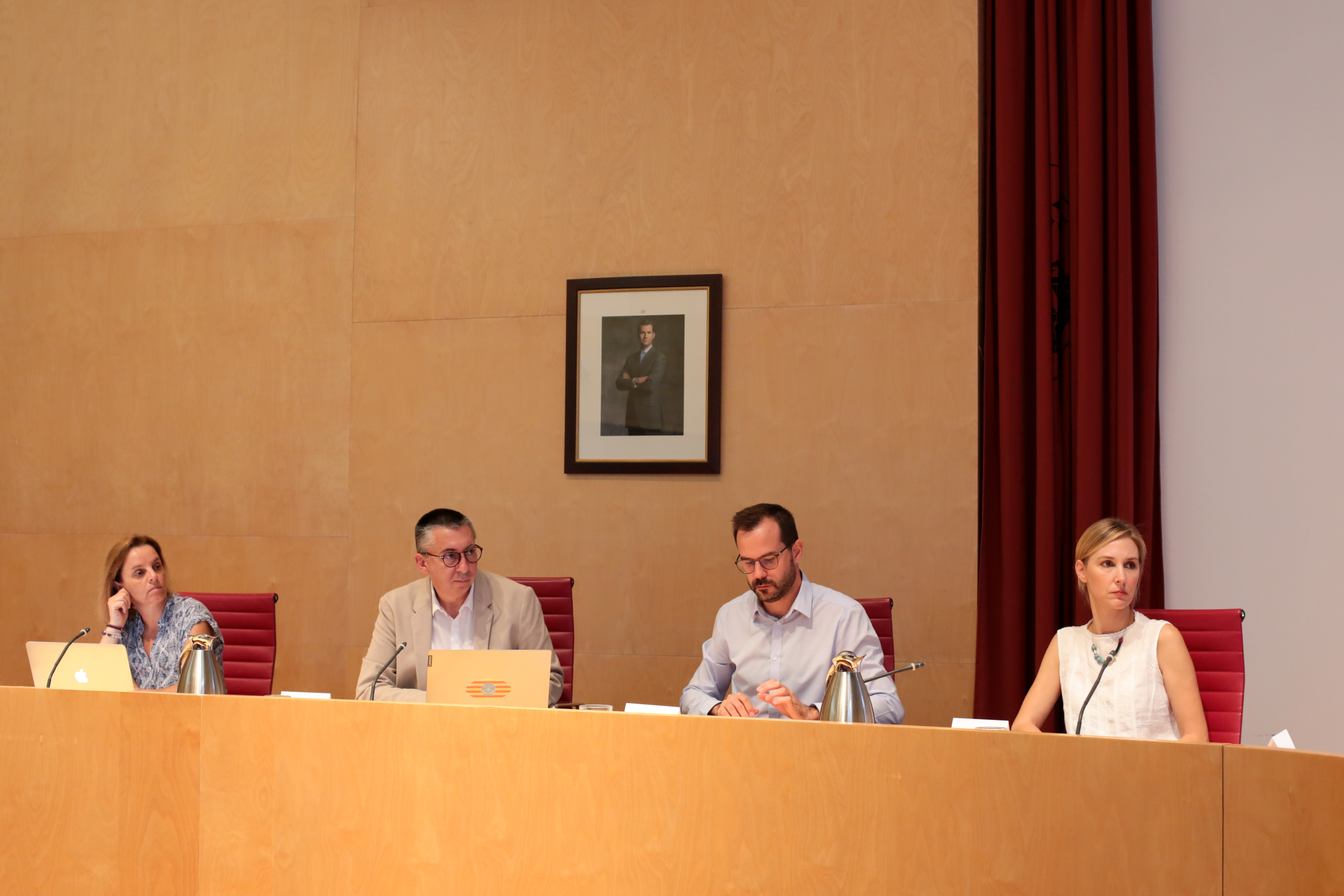 On 4 July the Scientific Council was created at a meeting held at the Institut Menorquí d’Estudis (IME). This council, made up of institutions and individuals of established standing, has the task of scheduling and supervising the agency's activities in the field of study, research, education and scientific outreach. It is also involved in preparing reports for UNESCO, and offers advice on matters within its responsibility.
Subsequently, on 7 July another of the key elements of the organisational structure of the TM Agency was set up: the Social Council. The meeting was held behind closed doors in the plenary chamber of the CIM, attended by representatives of the island's different political parties, business and cultural organisations. This council is required on to facilitate integration and participation by all the island's public authorities and the leading public, private and social organisations in the sphere of historical and cultural heritage management. Participation by society and citizens plays a central role in this function.
The TM Agency
The agency is responsible for the management, conservation and dissemination of the resources that make up the Talayotic Menorca UNESCO World Heritage nomination, so as to ensure they are passed on to present and future generations of Menorca's citizens. The CIM set up the Talayotic Menorca Agency on the recommendations of the report submitted in 2017 by ICOMOS (International Council on Monuments and Sites).
This new body coordinates the effective implementation of the Talayotic Menorca Management Plan, while also drawing up and submitting proposals to the different CIM bodies, helping to manage, conserve and publicise the values of the archaeological monuments and associated landscape, and fostering participation and social cooperation focused on conserving our prehistoric heritage. The agency's other aims also include driving the sustainable development of archaeological and landscape heritage and promoting scientific research, while furthermore encouraging public and private investment.
|
"The future lies in our hands, and demands that we raise heritage awareness"
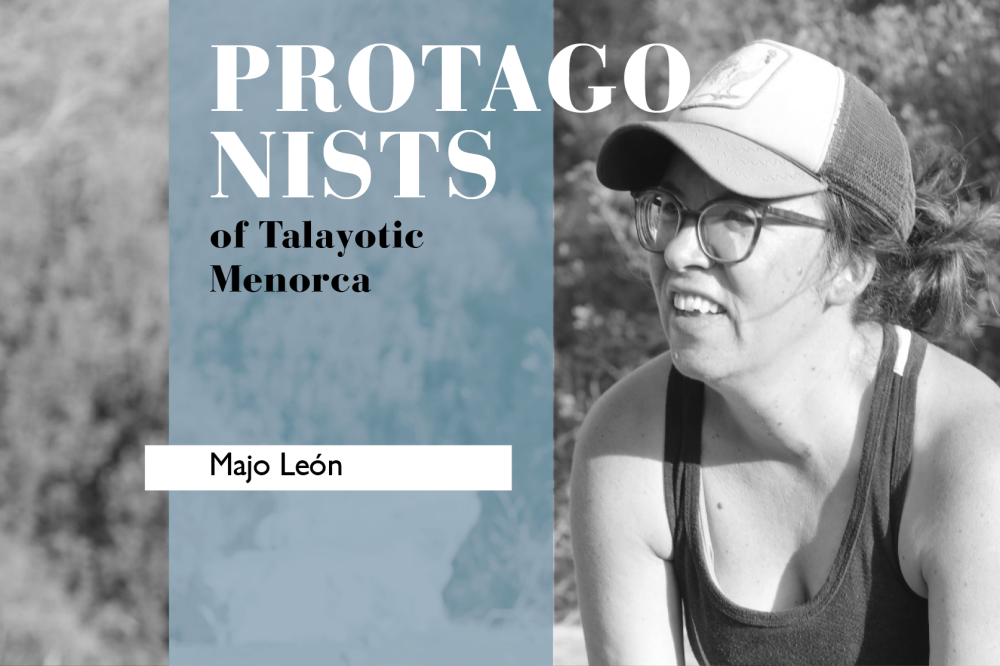 María José León Moll graduated in History from Barcelona University, before completing a doctorate in Archaeology, and a master's in Cultural Management. She is an archaeologist and director of Can Saura, the new Municipal Museum in Ciutadella. She is also a member of the Scientific Council of the Talayotic Menorca Agency, and as a researcher is co-director of the Modular project excavations at the Talayotic settlement of Son Catlar, as well as at the coastal site on the Cape of Cala Morell as part of the "Entre Illes" project. María José León Moll graduated in History from Barcelona University, before completing a doctorate in Archaeology, and a master's in Cultural Management. She is an archaeologist and director of Can Saura, the new Municipal Museum in Ciutadella. She is also a member of the Scientific Council of the Talayotic Menorca Agency, and as a researcher is co-director of the Modular project excavations at the Talayotic settlement of Son Catlar, as well as at the coastal site on the Cape of Cala Morell as part of the "Entre Illes" project.
Let's begin by learning a little about your background. What led you to focus on archaeology and the study of Talayotic culture?
That's a very easy question to answer. The landscape of Menorca played a large part. When I was a girl, we would spend family weekends visiting the sites, above all at Son Catlar. That made a real impression on my childhood. And then when I was little there was a really popular series of films, "Indiana Jones", and of course when I saw them that made me even more determined to become an archaeologist, although at the time I had a very different concept of what the science involved. A concept which over the years, and above all the different excavations I have undertaken, has gradually changed. But if I had to choose again, I would still opt for archaeology as my work and way of life.
What will a visitor with an interest in learning about this era of prehistoric Menorca find at Can Saura?
The new Can Saura museum is founded on a new concept. Can Saura is a city museum, in other words it focuses on telling the story of Ciutadella. This new concept of museum can be seen in all the exhibition rooms, including those dedicated to prehistory. Visitors will learn their about the particular aspects of Menorca's prehistory in the Ciutadella region. And so they can enjoy the findings from the Es Càrritx and Es Mussol caves, or see some of the materials recovered in the excavations of the naveta settlements of Es Coll de Cala Morell, or the burial navetas to be found within the municipal boundaries of Ciutadella, including the Es Tudons naveta. So I would very much recommend a visit to the new museum!
As you mentioned, the Municipal Museum of Ciutadella has a number of particularly valuable objects of Talayotic culture. How many exhibits are there at present from this period? And from your point of view, which are the most significant?
From my point of view, all the exhibits we have on display at the museum are valuable and relevant, irrespective of the historical period they belong to. With the new permanent exhibition we have made a real effort to put materials other than archaeological objects on display, as we believe that Menorca means much more than just archaeology.
The museum has around 250 exhibits (more or less) from Menorca's prehistory, divided into different rooms. Of these, the most significant objects we are able to display at Can Saura would be: first of all, the wooden carvings recovered from La Cova des Mussol; and then all the objects made of wood, bone, bronze, ceramics and human hair recovered from their hiding place at La Cova des Càrritx. The discovery of this group of objects in the Es Càrritx cave allowed us for the first time to document the funeral ritual known as "combing death", which we now know was also practised at other funereal sites in prehistoric Menorca, such as La Cova des Pas and La Cova de Biniedrís.
What activities has the museum scheduled for this year in connection with Talayotic culture?
This is still a year of trial and error for the museum. Right now we have plans to resume the school workshops within Ciutadella City Council's "Opening Doors" programme. Many of these workshops focus on prehistoric Menorca, with the aim of explaining the subject to local children through the museum, as an institution dedicated to informal education. The workshops involve guided tours of the museum, visits to sites such as Torre d'en Galmés and Son Catlar, and more hands-on workshops which take place in the educational room. And then in October, the museum has plans to develop the field season at the inhabited naveta dig site at the coastal cape of Cala Morell.
Modular Project
The excavations at Son Catlar of which you are co-director of one of the research projects that the museum is involved in. What new knowledge has this Modular project given us about Talayotic culture?
The Modular project began work on the island in 2014 with the main aim of characterising the colonial contact between the Phoenician-Punic communities of the Western Mediterranean and the peoples who inhabited Menorca during the second half of the 1st millennium BC.
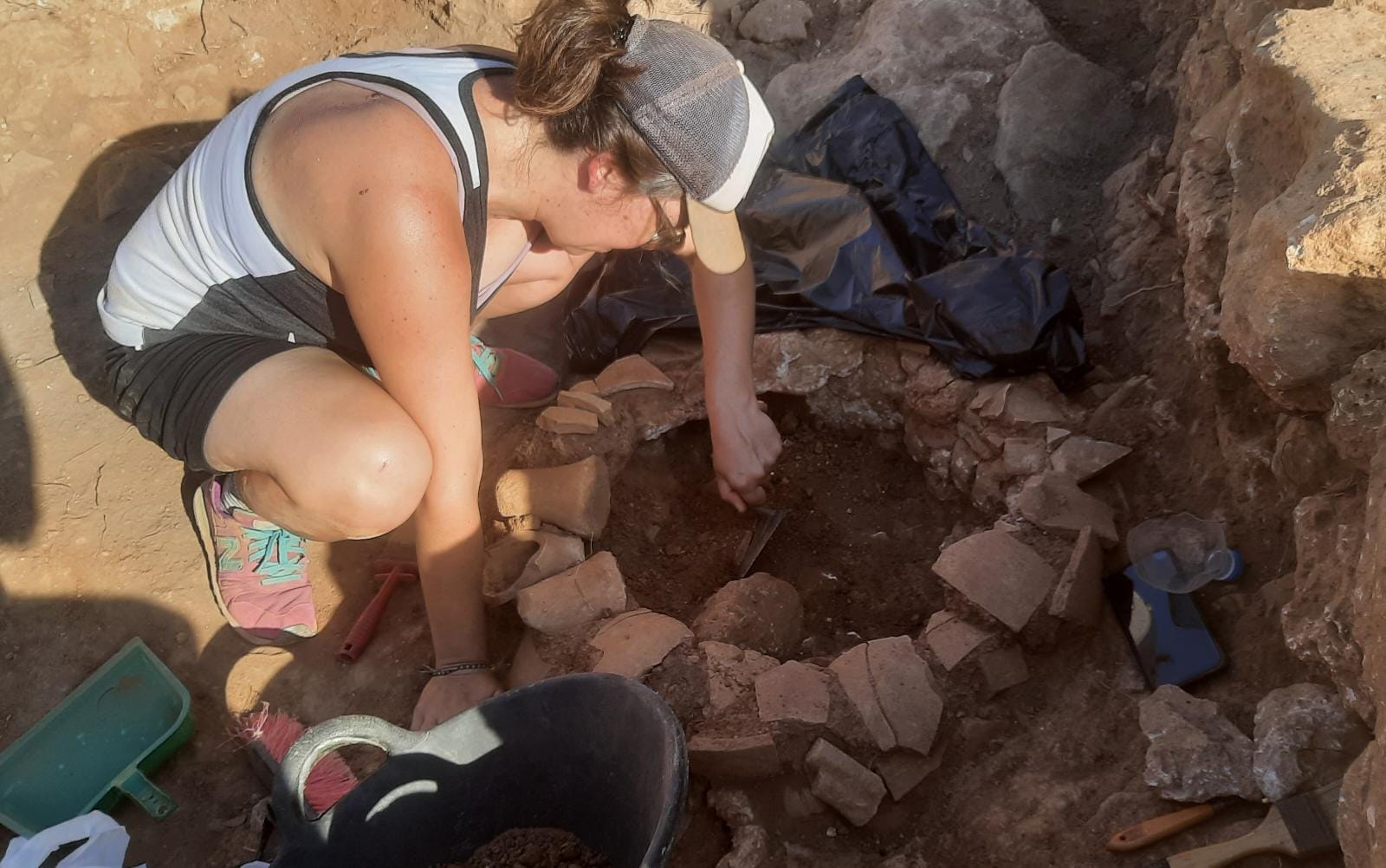 From 2017 onwards, the project focused on research into the Son Catlar settlement, characterised by impressive wall, measuring 900 metres in length and surrounding practically the entire settlement. A group of bastions and towers abutted this wall. Now, thanks to the Modular project's research, we know that these abutting structures were built around the 3rd century BC in order to fortify the settlement and adapt the wall to the new military landscape around the Mediterranean, which began to take shape from the 5th century BC onwards.
And so our project's research at the Son Catlar site has achieved the following:
- establish Menorca as an additional setting in the major conflict featuring Rome and Carthage (Second Punic War).
- see Menorca as a point of contact between the Phoenician-Punic world and the local communities.
- obtain a specific architectural and stratigraphic sequence of the main historical events experienced by the Son Catlar settlement.
- locate a second gateway to the settlement: the bent entrance, which is the only one of its kind on the Mediterranean.
- establish a construction timeframe for the fortification of the Son Catlar settlement, for the purpose of adapting the Talayotic walls to the new military landscape which took shape on the Mediterranean from the 5th century BC onwards.
- see the Punic influence in the construction of this whole fortification of the Son Catlar settlement.
Work on this year's field season ended a few weeks ago. What was the main progress made?
This year the excavation work focused on the bent entrance sector. Here, right on the urban perimeter of the settlement, we were able to locate a room annexed to the bent entrance access system, which would also have been built at the end of the 3rd century BC. This rectangular space could have had a military function, perhaps as a barracks. This year's excavation showed us that the structure was reused in the Roman era as a domestic setting. An oven has been documented within.
Meanwhile, we were also able to document two streets emerging from the bent entrance. One towards the east and another heading south. This year we were also able to work on the eastern street, where we managed to document the reuse of this area in the Roman era as a domestic setting. A second oven was also documented within.
Museum and heritage
What role should the museum play with a view to the possible inclusion of Talayotic Menorca on the World Heritage List?
As a permanent institution, open the public and at the service of society and societal development, it must play an active role in terms of the conservation, research and dissemination of Talayotic culture. The museum must act as a living forum where the local population and visitors can enjoy assets representing prehistoric Menorca. The island's museums must become a bulwark defending and showcasing Talayotic Menorca.
How do you see the future of our archaeological heritage?
The future of the island's archaeological heritage depends on the population. As museums and institutions, we need to appeal to heritage awareness. We must bear in mind that the archaeological heritage we now enjoy is a legacy left to us by our ancestors, and also a living record which we hand down to future generations. It is our duty as the inhabitants of this island to be aware of the rich heritage we have, to enjoy and know how to conserve it. Only by valuing this heritage will we be able to generate attitudes in support of conservation. And so the future lies in our hands, and demands that we raise heritage awareness.
|
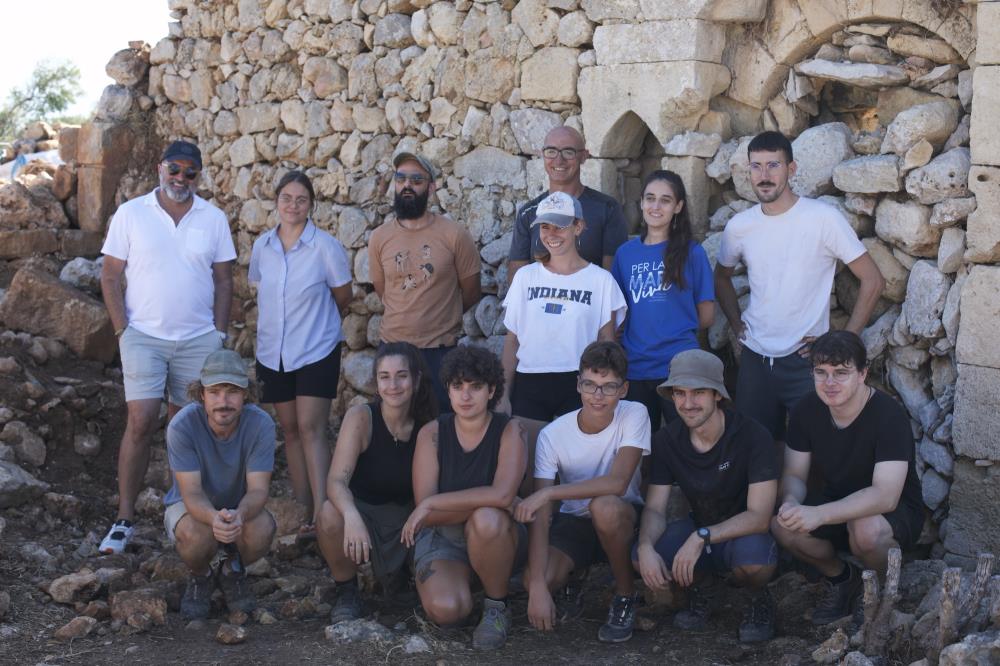
News of the first field season Amics del Museu de Menorca in Torralba d'en Salort
¿¡[AQUI]¡¿Amics del Museu de Menorca and the Illes Balears Foundation today, 19 August, presented the preliminary results of the first field season of the archaeological project covering the "post-mediaeval" building in Torralba d'en Salort, a project that will continue for a further four years, with the aim of ascertaining the origin and functionality of the building, and allowing it to be recovered and preserved.
During the month of August, the research team removed a total of 50 tonnes of stone, exposing part of the construction located in the west of the plot that the site occupies. The Amics del Museu team of archaeologists, historians and conservator-restorers will, working together with a dozen volunteers from the island and four students, continue their laboratory tasks up until the end of the month.
The structure measures some 250 m², comprising two abutting volumes, one of which has a notable northwest-facing doorway with two chapels at the sides. Two Latin crosses have been carved into the top of the two chapels, which are made of the local sandstone known as marés.
Although researchers and visitors to the settlement have suggested a series of hypotheses, both as to the era to which it might belong and also its functionality, the fact is that the history of the structure currently remains unknown.
A rustic home
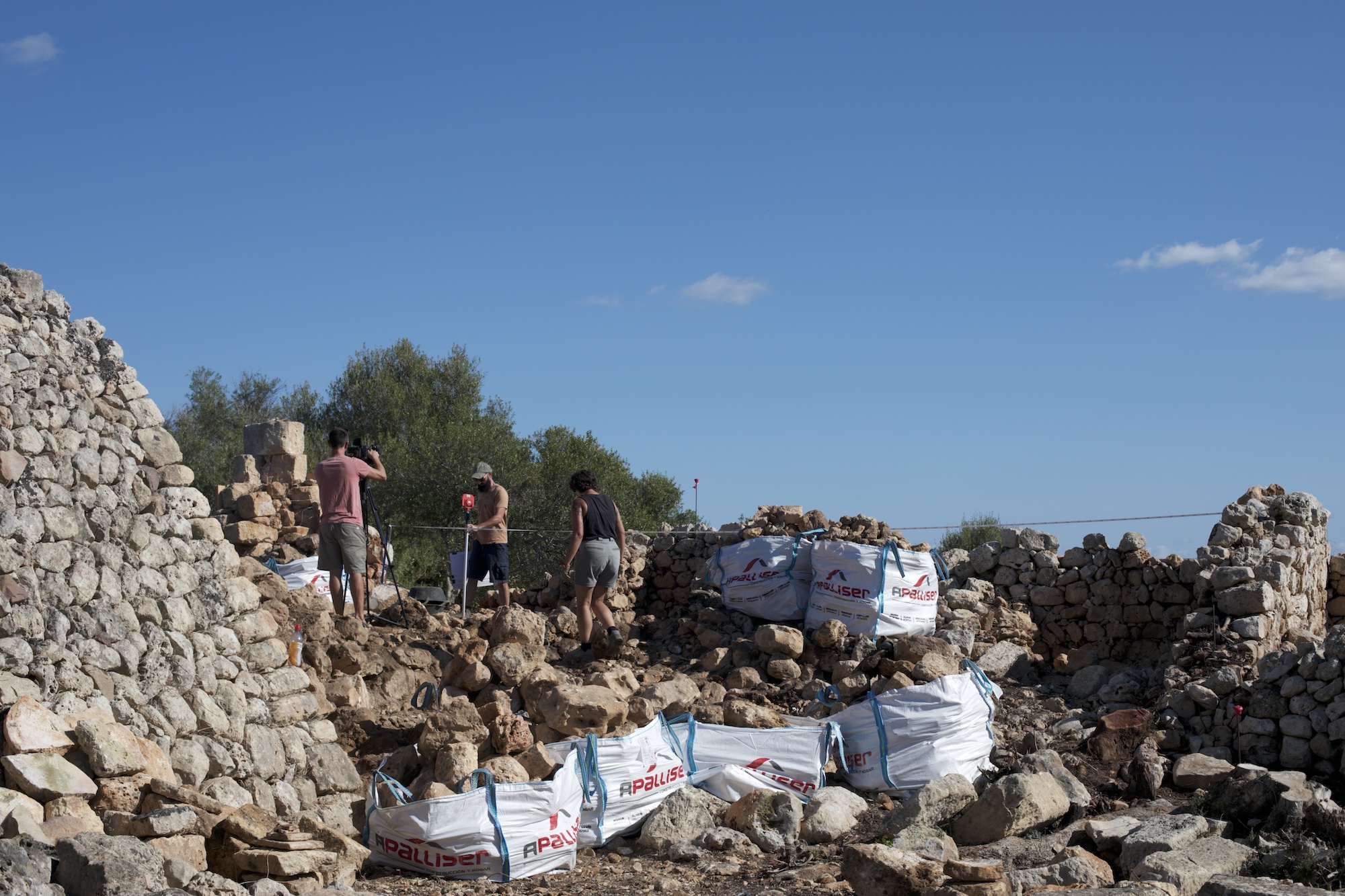 This year's field season focused on removing the rubble from one of the volumes of the building. In under three weeks, 50 tonnes of stone were removed: more than a hundred construction sacks filled with small backfill rocks, medium-sized stones and blocks of dressed marés sandstone. A crane truck was used on an almost daily basis for this purpose. Many of the stones were transferred to a designated area at the site itself, to be preserved for use in future stabilisation, consolidation and wall restoration work planned as part of the conservation-restoration project.
The quantity and location of the stones suggests to the researchers that this volume fell out of use in the contemporary era, once the original building had been completely abandoned. One of the most feasible hypotheses is that it was a rustic home in the modern era, between the 16th and 18th centuries, although as the project is at an initial stage, no further details can yet be offered.
Materials uncovered
Among all that stone, some ceramic materials were also uncovered: a number of kitchen materials or local earthenware, and a great many tiles. There are also some samples of 17th- and 18th-century ceramic materials imported from Italy and France. Numerous specific architectural elements of the building have been uncovered, such as possible parts of vaults, arch stones… Many blocks have Latin crosses carved into them, with one block notably bearing the engraved marks of a board game: an alquerque board, similar to today's noughts and crosses.
This research project involves not only archaeological excavation, but also archive searches. The goal is to establish a dialogue between the written history of Menorca's industrial past (13th-19th centuries) and the material remains that still exist. The idea is that the archaeological excavation of this building should cast light on how Menorca's countryside evolved, addressing material aspects which lie outside the scope of written history.
This new research project by Amics del Museu de Menorca has been made possible thanks to the Illes Balears Foundation, the company Pendent, Serveis i Gestió S.L. (which administrates the site), and funding from the Consell Insular de Menorca, Alaior Local Council, and the association's members.
|
The Talayotic Menorca documentary now on our website
You can now watch the full documentary Talayotic Menorca, an insular cyclopean odyssey on our website. As the transversal and inclusive project that is Talayotic Menorca, the medium-length film is available in Catalan, Spanish and English, also in sign language so that all citizens can enjoy this journey through the Talayotic civilization, still alive and present in every landscape of our island.
The adaptation to sign language has been possible thanks to the staff and volunteers of ASSORME (Association of Deaf People of Menorca) and the support and collaboration of the Service for Deaf People of the Foundation for People with Disabilities of Menorca.
The Consell Insular de Menorca promoted the production of this documentary in order to support the candidacy. The aim is to encourage people to get involved in the conservation of Talayotic heritage and discover our prehistoric ancestors culture.
Filmed by Espiral Producciones TV SL, Talayotic Menorca, an insular cyclopean odyssey was directed by Manu Balaguer, written by Laura Jurado and consulted by the archaeologist Amalia Pérez-Juez. This 38 minute long film is a journey through the history of our island, from Talayotic times to the present day. 17 testimonies from a diverse group of people, mostly archaeologists, are collected to detail the story surrounding Talayotic Menorca. A geologist, the owner of a site and the coordinator of the World Heritage candidacy file, Cipriano Marín, also participate in the film. The actress who gives voice to the documentary in Catalan and Spanish is Enka Alonso from Menorca.
Sign language adaptation
To adapt the documentary to Catalan, Spanish and international sign language, ASSORME has designated a person for each language. The original text has been adapted to a comprehensible format in sign language (with its own structure, etc.) This includes research for the pertinent vocabulary agreeing among the three languages on some specific signs related to Talayotic Menorca that are not commonly used.
It must be considered that the signing and the audio must coincide, which is not easy due to the speed of the oral language and, furthermore, because it is a text with specialized vocabulary.
|
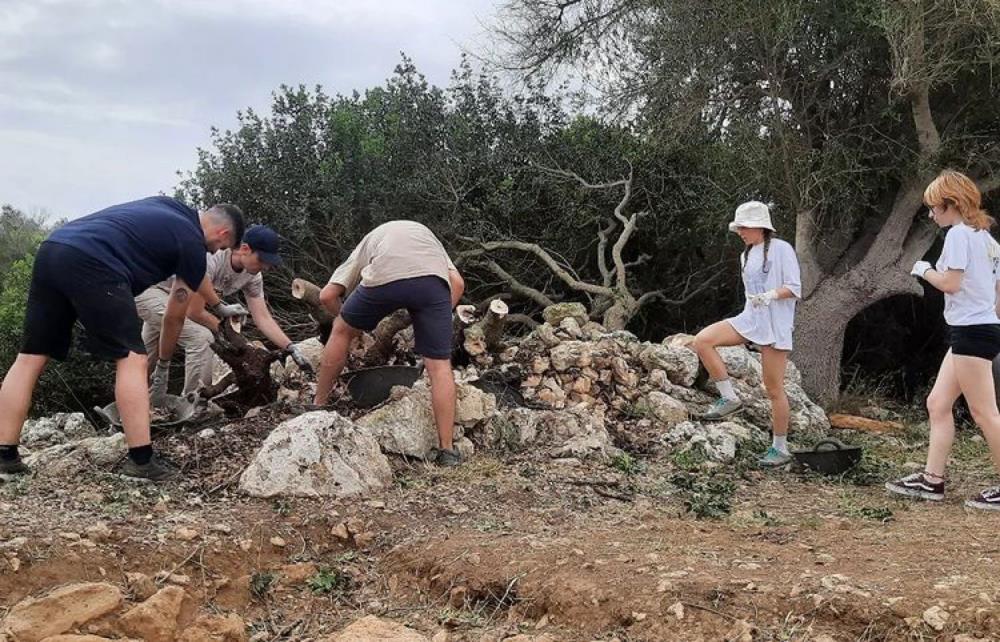
New discoveries in the “bent entrance” area of the Son Catlar settlement
¿¡[AQUI]¡¿The fifth archaeological field season in the Modular project at the Son Catlar settlement has now come to an end. Between 4 and 30 July the team of archaeologists led by Fernando Prados, M. José León, Helena Jiménez and Joan de Nicolás focused their efforts on the location where the bent entrance was discovered in 2017. Following excavation of both the outer part and the entrance, the team made plans to cover an extended area within.
During the 2021 excavation a deposit of materials from the Roman Republic period was found, which they linked to a sealed access ritual which occurred after the settlement was conquered. The materials serve to date this event to the late 2nd century BC or the early decades of the 1st century BC.
New discoveries
This year's field season extended the excavation sector and located significant structures annexed to the bent entrance system, erected at the same time as the gate, in other words in the late 3rd century BC during the Second Punic War. They documented a rectangular space here, which could potentially have had a military function. The space may have been a barracks forming part of the defensive system of the bent entrance. The structure was reused in the Roman era as a domestic area. An oven has been documented within. The bent entrance was furthermore found to be the starting point of two perfectly oriented roadways, one leading eastwards and the other southwards. The team was able only partially to excavate the eastern roadway. A wedge-shaped wall structure has been documented here, serving as a buttress supported on the perimeter wall of the barracks.
Supported on this wall, a small oven or mill has been documented, erected on an adobe base with an elevation made from fragments of amphora, which remains practically complete. Although it did not prove possible to finish excavating this zone, all the evidence is that it was likewise converted into one or more domestic areas in the Roman High Imperial period.
In this regard, we see it as particularly significant that, pending the detailed study of the findings which will take place over the coming months, no materials that could be dated beyond the 1st century of the period have been documented.
|
"Talayotic Menorca is an outstanding case of archaeological landscape and living monument"
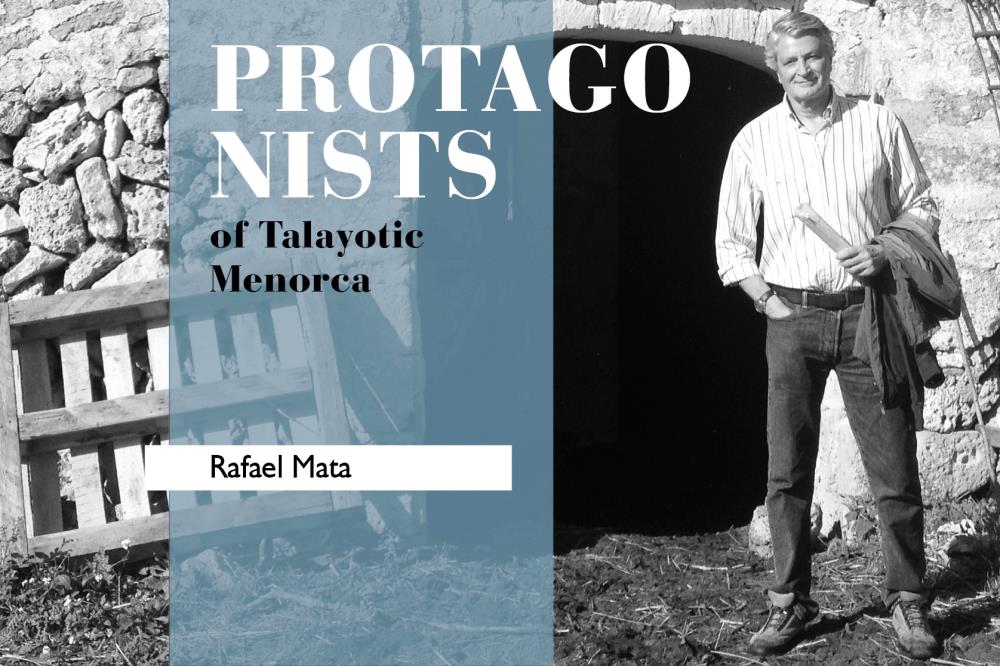 Rafael Mata is Professor of Geographical Analysis at the Universidad Autónoma de Madrid and a member of the Scientific Council of the Talayotic Menorca Agency. A specialist in the study of rural landscapes and systems, land regulation and nature conservation policies in Spain and Latin America, he has over the past twenty years been involved in drawing up various land regulation plans and landscape guidelines in a number of Spain's autonomous regions, including the Menorca Island Territory Plan (PTI, winner of the 2005 National Urban Planning Award and the 2006 Gubbio Prize awarded by ANCSA in Italy). Rafael Mata is Professor of Geographical Analysis at the Universidad Autónoma de Madrid and a member of the Scientific Council of the Talayotic Menorca Agency. A specialist in the study of rural landscapes and systems, land regulation and nature conservation policies in Spain and Latin America, he has over the past twenty years been involved in drawing up various land regulation plans and landscape guidelines in a number of Spain's autonomous regions, including the Menorca Island Territory Plan (PTI, winner of the 2005 National Urban Planning Award and the 2006 Gubbio Prize awarded by ANCSA in Italy).
A specialist in international borders (Geographer of the International Argentina-Chile Tribunal of the Organization of American States, 1994-1996) and adviser to the governments of Ecuador and Nicaragua (1996-1999) on continental and maritime borders, he has served as President of the Association of Spanish Geographers (2005-2009) and of the Spanish Committee of the International Geographical Union. He is now head of the Geography Department at the UAM and chairs Europarc-España Valle del Nansa & Peñarrubia, within the Botín Foundation's Heritage and Territory Programme (winner of the 2014 Hispania Nostra Award for "best landscape intervention").
What do you see as the characteristics that Talayotic Menorca fulfils in order to be proclaimed a world cultural heritage site?
Clearly, as the Talayotic Menorca nomination file very clearly sets out, the fact that the outstanding value of this distinctive prehistoric cultural expression lies in the huge density of cyclopean monuments, their diverse typology and the worldwide singularity of some of the constructions, which are found here in Menorca, and nowhere else. But these fundamental values and characteristics have to be seen in unison with the way they are rooted in the territory, and the intelligent adaptation of the most conspicuous Talayotic settlements and monuments, of the living and the dead, to the physical and environmental diversity of Menorca: to the small- and large-scale contrast in lithology and topography, to the diverse potential of the soil, the presence of water or different conditions of visibility and intervisibility of the apparently uniform plain of the Migjorn region.
The dense Talayotic territorial system in fact offers a beautiful and thrilling story, helping us to understand the past, but also to interpret and value the landscape of the present. And there is one last circumstance which to my mind is also fundamental for this well-deserved recognition of world heritage status: I refer to the outstanding state of conservation of the rich and abundant repertoire of constructions and archaeological sites of Talayotic culture and the way in which they have over thousands of years coexisted with a dynamic landscape shaped by humanity, in which the material records and spatial experience of Talayotic communities are not simply traces of a very distant past, but decisive elements of the palimpsest of Menorca's landscape, of the biography of its territory, and an essential part of the identity of those who have populated this Mediterranean island for millennia.
The new Talayotic Menorca file
What were the aims behind the reformulation of the new file in terms of landscape?
The original file itself included many valuable references to the landscape, based on the knowledge built up as to the patterns of distribution of the different types of Talayotic construction and settlement across the territory, and issues connected with the visibility of the most conspicuous monuments, the talayots, typically located on small topographical elevations on the plain of Migjorn.
The new file has moved on from addressing a series of cultural assets comprising a repertoire of outstanding monumental expressions which nonetheless cover only a small area, to considering a series of components at the territorial scale, allowing us to underpin the landscape dimension of this asset and its values. The new file emphasises that the asset as a whole, and each of the spectacular prehistoric constructions which it comprises, have their place at the island level within a mosaic Mediterranean landscape which has a number of features similar to those of the prehistoric era. The valuable landscape mosaic which harmoniously incorporates and surrounds the cyclopean constructions of the past is in fact the result of an ongoing symbiotic relationship with the natural world and with the landscapes inherited from Menorca's distinctive agricultural ecosystem which, from prehistory down to the present day, reveals an extraordinary capacity of resilience, guided by similar patterns of occupation and use of the territory and of its resources.
As also emphasised in the renewed file, the asset today represents an outstanding case of archaeological landscape and living monument, in which the huge diversity and density of prehistoric sites is expressed and coherently integrated within an internally diverse geographical context, allowing for a profound interpretation of the relationship between Talayotic culture and its surroundings. At the same time, today's Talayotic landscapes clearly show the visual connections and the system of spatial organisation which prevailed in prehistory, an aspect that has also been heightened in the renewed file, with a systematic and innovative study of intervisibility.
I think it is important lastly to emphasise that the rich repertoire of Menorca's current landscapes, as identified and characterised thanks to the studies which accompanied the generation of the 2003 PTI (Island Territory Plan), is very well represented in the nine components of Talayotic Menorca. They in fact represent an outstanding example of the island's diverse landscape, in particular the units which make up the landscape of Migjorn, where many of the settlements and signs of Talayotic culture are to be found, as well as one of the landscapes of the north-eastern Tramuntana region, where there are significant Talayotic remains. And so the considerable degree to which the components of the asset represent the landscape, highlights the meaningfulness of the landscape itself in selecting and justifying the sites included. Meanwhile, the different components, in the sense of territorial contexts of monumental attributes, make up patterns of landscape which make a decisive contribution to how we understand and value them throughout their long diachronic history.
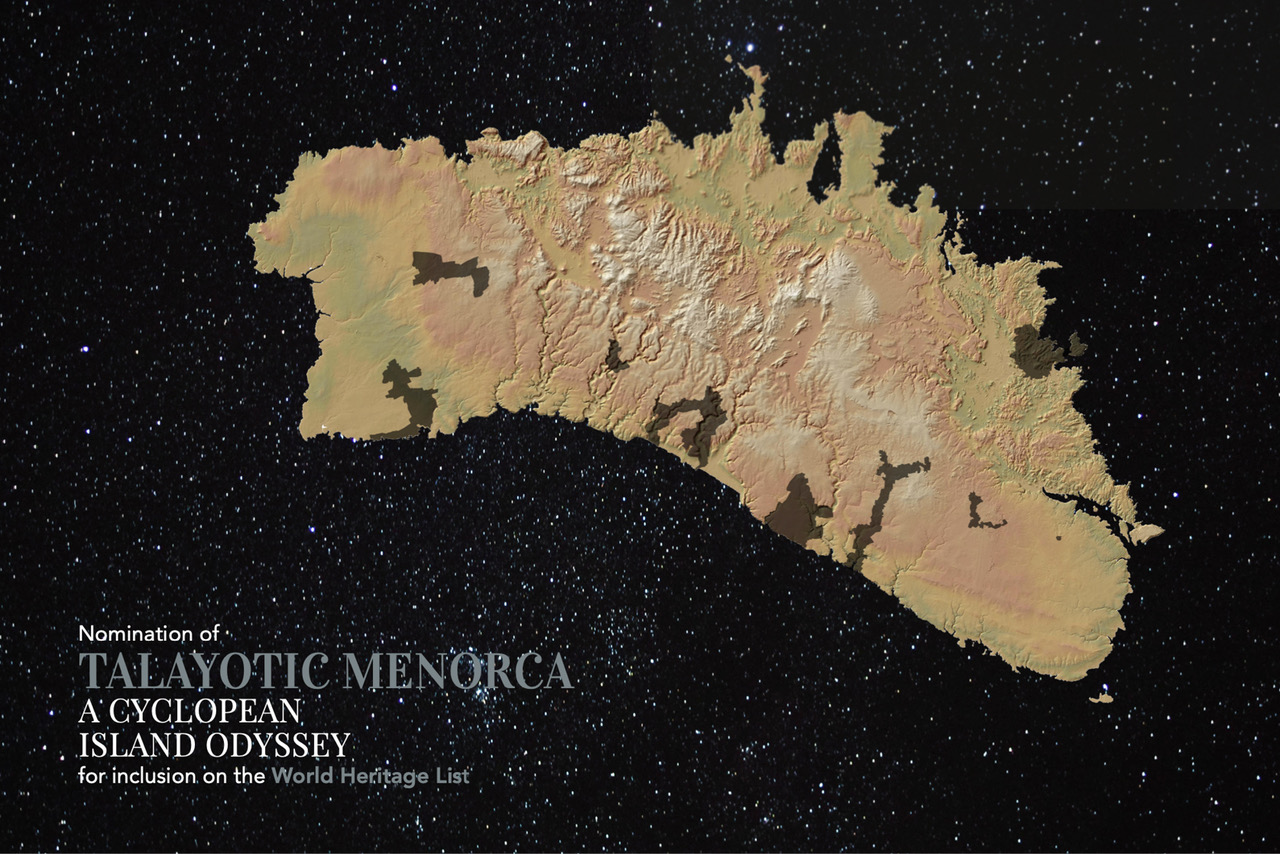 Could you explain the process of preparing the TM file in its geographical aspect? What challenges did you face? Could you explain the process of preparing the TM file in its geographical aspect? What challenges did you face?
More than challenges, I feel that the Talayotic Menorca file offered a great opportunity to make use of the material and perceptive expressions of Talayotic culture in interpreting the territory, through a broad understanding of Menorca's diverse physical and human geography.
The pronounced topographical, geological and geomorphological differences at the island level between the Tramuntana and Migjorn regions, studied as early as the second half of the 19th century by the French geologist Jean Ferdinand Hermite, reveal a sharp contrast in the patterns of distribution of Talayotic sites, which predominate in the south of the island. Within the Migjorn region itself, though, and at a more detailed scale, it is fascinating to see how the contrasts in micro-relief, lithology and soil on a highly karstic and apparently uniform limestone plain, were exploited differently by Talayotic villages and constructions, to the extent that their distribution casts light on Menorca's geological and geomorphological cartography, which is enhanced by this dense and exceptional system of cyclopean structures adapted to their environment. The gently contoured mounds of the Migjorn, often imperceptible in the landscape, are frequently marked by talayots, while some of the slightly concave karstic hollows (poljés), with their fertile, clayey soils and springs, provide the enclosed setting for monumental naveta tombs, such as those of Rafal Rubí and d'Es Tudons.
This fundamental geomorphological base of large and small contrasts underpins the distinctive mosaic of Menorca's flora, shaped by the tramuntana wind, with its outstanding significance in terms of both flora and ecology, bringing cropland, pasture and areas of natural vegetation into close contact. A mosaic which has over the centuries been managed by means of Menorca's agrarian system, incorporating within the landscape a fundamental feature of the island's geography: the dense and systematic presence of dry stone walls, which separate each and every one of the plots of land (tanques) into which Menorca's countryside is divided. The high density, diversity of stones, multi-functionality and good state of general conservation make this distinctive and omnipresent bocage of stone, with an estimated length of more than 11,000 km, one of the hugely valuable attributes of Menorca's landscape. The traditional system of settlements, another essential geographical structure, made up of historical municipal centres and the farmhouses (casats) of the estates (llocs), many of them close by the Talayotic settlements and monuments named after them, give Menorca a diverse and cohesive geography of contrasts at all scales, in which the Talayotic territorial system forged in prehistory represents a fundamental layer in our interpretation of the island's present-day geography.
Talayotic Menorca and the Menorca Territorial Plan
You belonged to the team that drew up Menorca's first Territorial Plan in 2003, and also the new text which is in the process of approval. What approaches are defined in terms of Talayotic Menorca?
The landscape, as defined in the Council of Europe Landscape Convention (2000) and its political agenda, represented the basis for our understanding and integrated appraisal of Menorca's territorial heritage in the 2003 PTI. In this regard, the terms of reference of the Plan included the highly dense network of Menorca's sites of cultural interest, in particular the territorial expressions of Talayotic culture. However, back then there was little integration of these elements into the characterisation and appraisal of the landscape, because at the time the emphasis was placed on the landscape expressions of Menorca's agricultural ecosystem, the traditional system of population, the physical configuration of the coastline and the main conditions of territorial visibility.
The revision of the Menorca Territorial Plan (PTI) gave us a wonderful chance to underpin the interpretation of the island's landscape and heritage with a decisive contribution from the components of Talayotic culture integrated within the territory, and perceived in terms of landscape, as a layer of outstanding value. At the same time, the approach to landscape in the revised PTI provided an excellent opportunity to give territorial structure to the components that make up the Talayotic Menorca nomination. This does not mean denying the specific Site of Cultural Interest protection afforded to the archaeological attributes included in the series, but the PTI has made an important contribution to safeguarding the territory of the components of Talayotic Menorca, as the contextual landscape of monumental attributes, protecting them under the Area of Landscape Interest category created by the Plan. This provides a guarantee the integrity of the assets and their broader context against possible processes of change, deterioration, impact or trivialisation of such important elements of the territorial heritage, which create an interpretative and visual dialogue between the archaeological monument and the landscape.
I would like to emphasise that all this has been made possible by the close cooperation between the island's territorial regulation authorities, who define the territorial model of the island by means of the PTI, and those responsible for historical and cultural heritage, who protect and manage cultural assets, in particular the components and attributes that make up Talayotic Menorca. These elements of the landscape are of outstanding interest and need to be safeguarded and showcased by moving beyond the essential concepts of historical and cultural heritage protection, drawing on the potential offered by territorial planning. I see this whole process as representing a highly positive experience of territorial good governance that the nomination process has facilitated, and which at the same time corroborates its strength and viability.
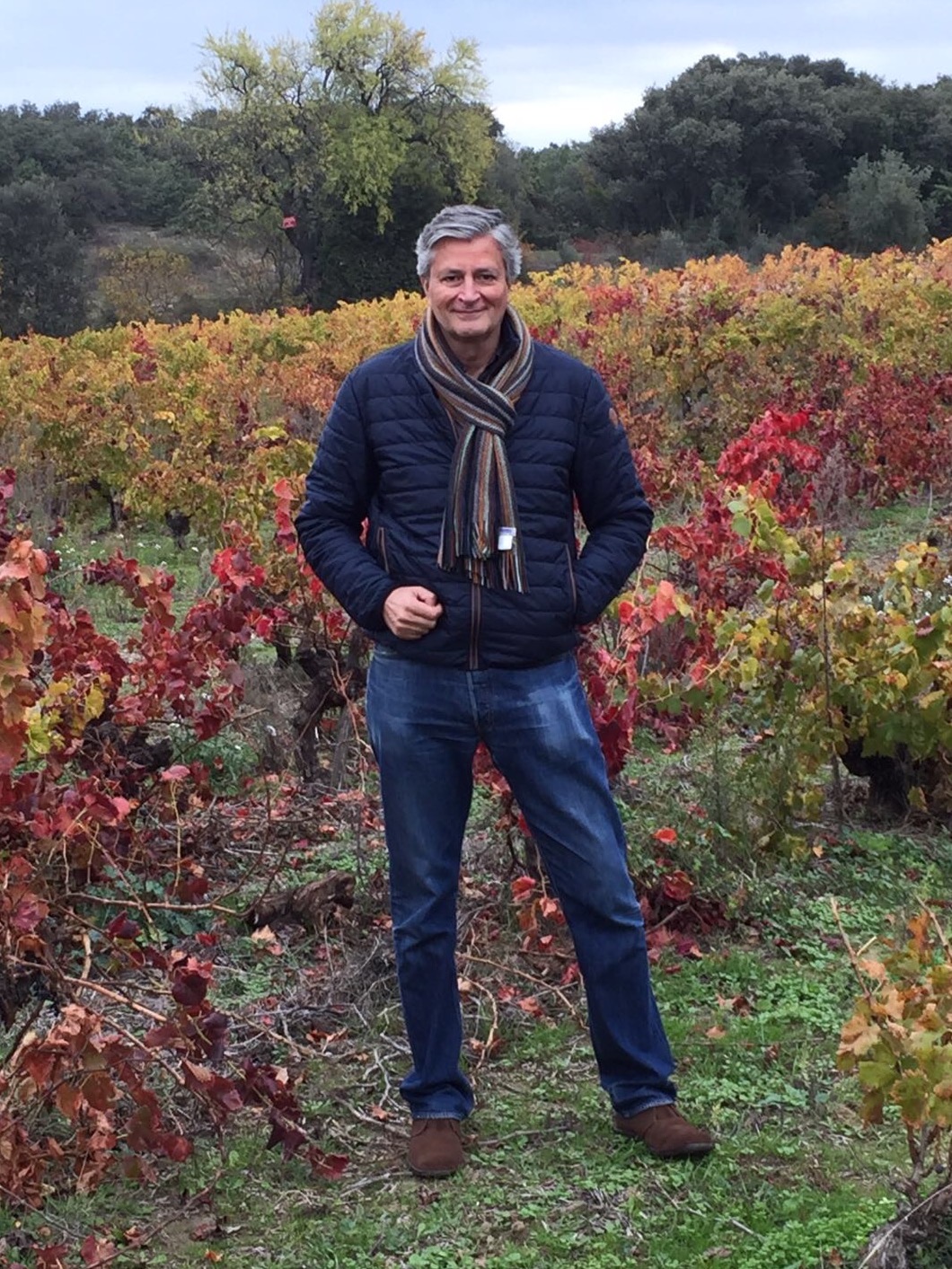 The relationship with tourism is another of the key points in preserving Talayotic Menorca. How can we strike a balance between tourism and respect for the landscape and heritage? The relationship with tourism is another of the key points in preserving Talayotic Menorca. How can we strike a balance between tourism and respect for the landscape and heritage?
Talayotic Menorca is above all a public and grassroots initiative to ensure that we safeguard the island's outstanding prehistoric heritage. However, in an established and accredited coastal tourism destination such as Menorca, with more than a million and a half visitors per year, in particular in the summer months, there can be no question that an asset as powerful as Talayotic Menorca, with the potential for inclusion on the World Heritage List, and which covers much of the island's territory, is a major attraction for visitors with an interest in archaeological and landscape heritage, who will be encouraged to visit following the declaration.
Such heritage-based, and specifically archaeological, tourism, if properly publicised and interpreted, represents a substantial resource to increase the number of tourists outside the summer season, during the many months of the year when a visit to Menorca's archaeological landscapes and monuments is more enriching and enjoyable. It will be very difficult to achieve the holy grail of "deseasonalised" tourism for as long as sun and sand destinations and the way in which holidays and tourism products are structured in source countries maintain their current profile, but we have to believe that such unseasonal, archaeological tourism, if properly promoted, will help to some extent to balance out the island's tourism cycle.
In any event, both such calm, archaeological and landscape tourism, and the more mass market, summer seaside tourism, also taking an interest in the Talayotic monuments, require intelligent and effective management to ensure that a visit to the sites of Talayotic Menorca is a culturally informed, civilising and sustainable experience. In my judgment, the Talayotic Menorca Plan proposes an interesting programme of co-efficiency and sustainability, committed to a responsible model of visits, in accordance with the acceptable footfall capacity of the different sites on the basis of three categories of monument, according to their scale, state of conservation, typology, accessibility, ease of interpretation, and archaeological and symbolic interest.
All of which goes hand in hand with a Landscape Preservation Plan, coordinated with the revised PTI, a Safety Plan and a Mobility Plan, in accordance with the commitments of Menorca's 2030 sustainability strategy, with the aim of helping to reduce travel by private, fossil fuel-powered vehicles, proposing a more energy-efficient system of access, incentivising communal mobility, the implementation of public transport or shuttle services to transfer visitors from park-and-ride facilities, and sustainable mobility, either by bike or walking trails. All of which likewise aims to free the landscape of visual and polluting impacts, for example by avoiding the presence of car parks directly alongside archaeological sites.
|
Talayotic Menorca in the digital edition of National Geographic international
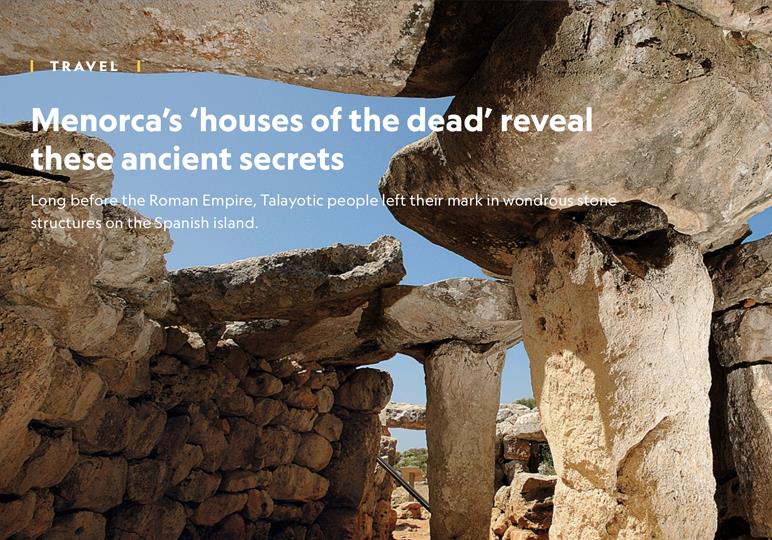 The interest in Talayotic Menorca on the international stage continues to grow, as demonstrated by the publication of the UNESCO World Heritage candidacy in the US digital edition of National Geographic. This article is a version of the one published in the April issue of the magazine’s Spanish edition, where the Menorcan candidacy was on the cover with an impressive 20-page interior report. This publication, carried out at the initiative of National Geographic, will undoubtedly contribute to expanding outreach about the candidacy in the world. The interest in Talayotic Menorca on the international stage continues to grow, as demonstrated by the publication of the UNESCO World Heritage candidacy in the US digital edition of National Geographic. This article is a version of the one published in the April issue of the magazine’s Spanish edition, where the Menorcan candidacy was on the cover with an impressive 20-page interior report. This publication, carried out at the initiative of National Geographic, will undoubtedly contribute to expanding outreach about the candidacy in the world.
National Geographic is one of the most prestigious magazines in the world, and has some of the best journalists and photographers as contributors. Specialized in outreach topics, the quality of its content is endorsed by great experts in disciplines such as archaeology, biology or anthropology. National Geographic Spain will celebrate its 25th anniversary this year.
National Geographic Media is a worldwide digital, social and print publisher, operating in over 170 countries, with several print and digital products and over a half billion followers on social media.
You can read the full article here.
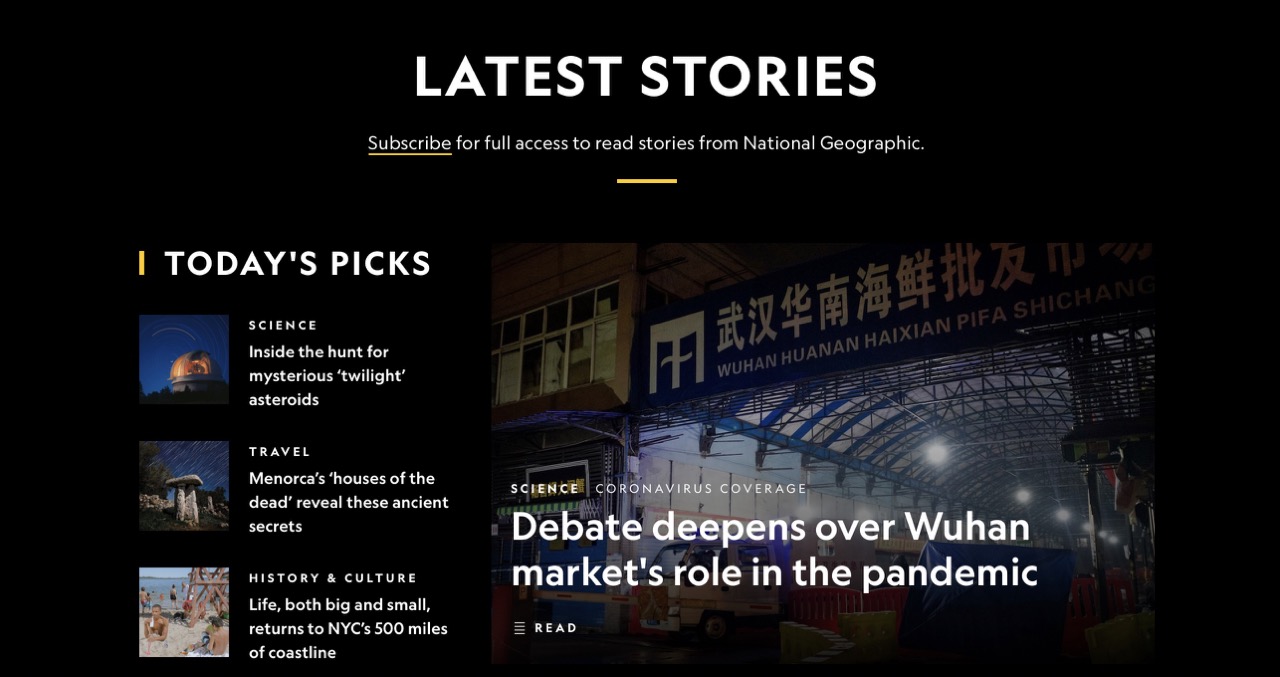
|
Consell Insular awards grants to research, conserve and safeguard historical heritage of Menorca
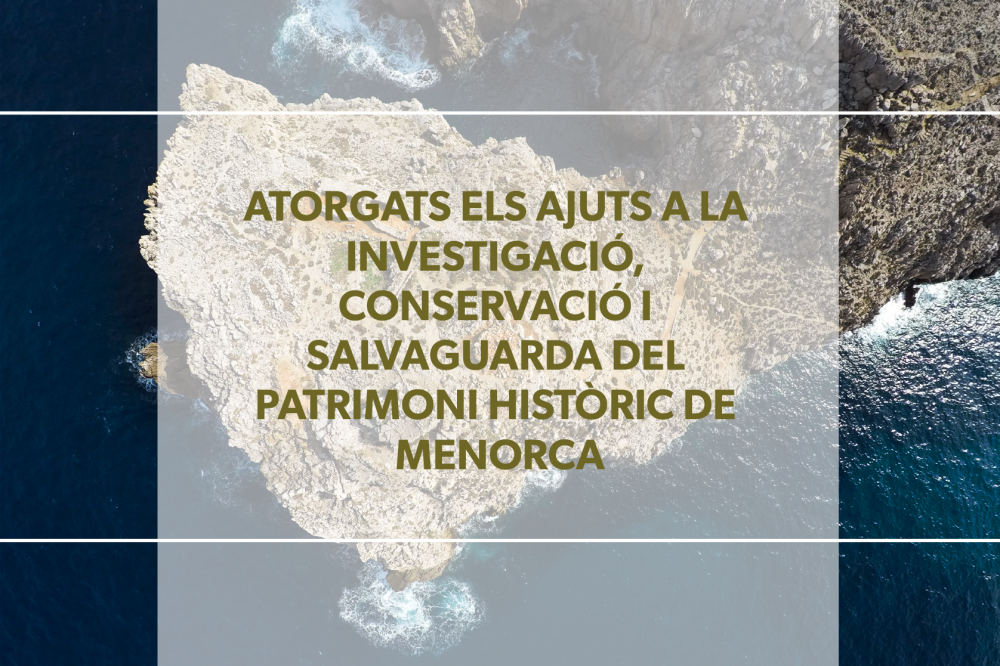 As every year, the Consell Insular de Menorca has issued a call for grant applications intended to promote better understanding and safeguarding of the island's historical heritage. The 2022 funding call also now features a new line to include within these grants actions promoting the safeguarding of intangible cultural heritage. As every year, the Consell Insular de Menorca has issued a call for grant applications intended to promote better understanding and safeguarding of the island's historical heritage. The 2022 funding call also now features a new line to include within these grants actions promoting the safeguarding of intangible cultural heritage.
With regard to line 1, then (Restoration of historical heritage assets), seven grants have been awarded, with an overall value of €60,000; in line 2 (Archaeological and palaeontological interventions), eleven grant awards have been made, totalling €132,178.05; in line 3 (Historical research), six applications have been approved, for a total of €29,050; in line 4 (Scientific publications), four grants have been awarded, totalling €6,000; in line 5 (Organisation and staging of seminars and outreach activities) three grants have been assigned, with a sum total of €13,171.95. As for line 6 (Intangible cultural heritage safeguarding, understanding and showcasing initiatives), four grants totalling €9,600 have been awarded.
Intangible cultural heritage
The Linguistic Policy and Intangible Cultural Heritage Service of the Department of Cultural Affairs, Education, Youth and Sport takes a positive view of the response to this new funding line, which it intends to consolidate in future years within the context of Heritage subsidies, as the four initiatives which applied for funding are considered to be of considerable interest in safeguarding Menorca's intangible heritage. The initiatives receiving support from the Consell Insular are: the Sonora project, to research and showcase oral recollection by means of the radio broadcaster promoted by Es Far Cultural; the project "The space of the breaker: tools and educational zone", to be undertaken at Lithica; the seminar "Glosa singing as an educational tool", to be organised by Soca de Mots, and the study project "Singing, songs and singers in festive contexts of Menorca", courtesy of the researcher Jordi Orell.
The Consell Insular de Menorca, through its Department of Cultural Affairs, Education, Youth and Sports, in partnership with the Institut Menorquí d’Estudis and the Menorca Biosphere Reserve Agency, has since 2017 been implementing the Action Plan for the generation of the Inventory of Intangible Cultural Heritage of Menorca (Ipcime), in fulfilment of its duty as a public authority to adopt operational approaches and specific grants to facilitate an understanding of the different inherent expressions of intangible culture in Menorca and to ensure their future survival, as established in Law 18/2019, on the safeguarding of the intangible cultural heritage of the Balearic Islands.
The full information published in the Official Gazette of the Balearic islands can be consulted here.
|
The Council of Ministers approves an extraordinary grant of one million euros to invest in the archaeological heritage of Talayotic Menorca
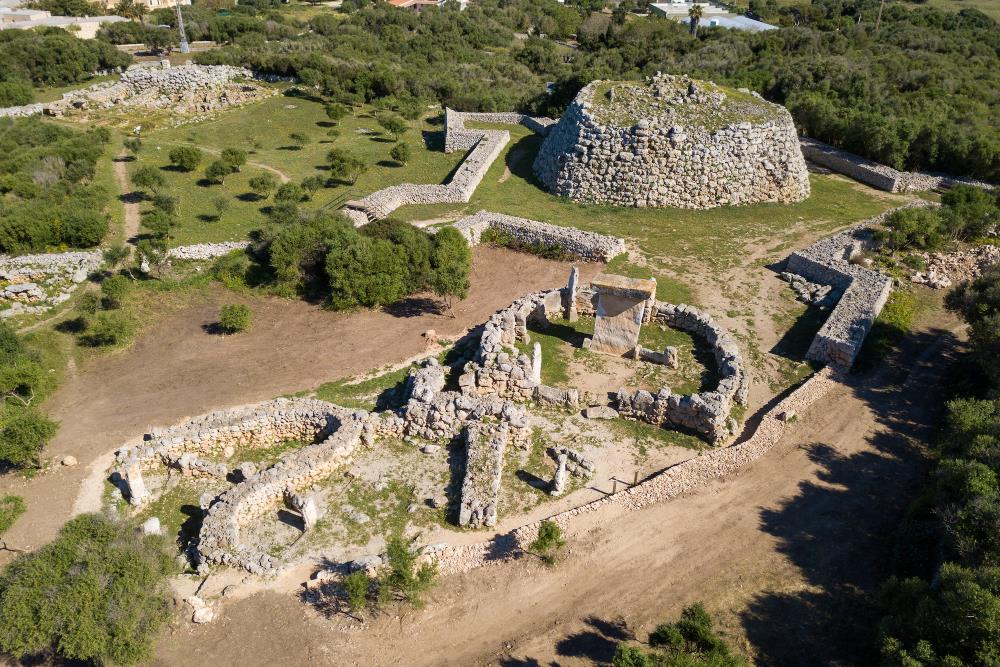 The extraordinary Council of Ministers held yesterday, July 26, approved the expenditure of an extraordinary aid of one million euros to the Consell Insular de Menorca (CIM) for financing two archaeological interventions in Talayotic Menorca sites. This is one of the actions included in Royal Decree 630/2022, published by today's BOE, which regulates the direct granting of subsidies to various institutions for the development of cultural projects. The extraordinary Council of Ministers held yesterday, July 26, approved the expenditure of an extraordinary aid of one million euros to the Consell Insular de Menorca (CIM) for financing two archaeological interventions in Talayotic Menorca sites. This is one of the actions included in Royal Decree 630/2022, published by today's BOE, which regulates the direct granting of subsidies to various institutions for the development of cultural projects.
The Vice President and Conseller of Cultural Affairs of the CIM, Miquel Àngel Maria, has informed that this grant will go entirely to excavation, restoration and consolidation projects in two of the most important publicly owned sites on the island: Torre d'en Galmés and Trepucó.
Projects in Trepucó and Torre d'en Galmés
In Torre d'en Galmés, the project proposes the excavation of the central talayot ??of the site and the structures attached to it. Subsequently, restoration and consolidation works will be carried out on the excavated structures. The aim is to include them in the guided tour of the site. The budget for this project is €450,000.
As for Trepucó, the project plans the intervention of the western sector of the site, the closest to the Bintaufa sports zone, where there is a talayot, a bastion of the wall and a domestic area. This space was the object of an archaeological intervention in the eighties of the past century by the Museu de Menorca. Now the project plans to complete the excavation, restore and consolidate the habitat structures and incorporate the area into the site’s visiting circuit. This project has a budget of €550,000.
The subsidy approved by the Council of Ministers derives from an agreement between the senator of the Balearic Islands, Vicenç Vidal, and the Ministry of Finance, signed on December 20, 2021, during the last phase of negotiation of the National Budget for 2022 in the Spanish Senate. Senator Vidal presented a series of amendments to the State Government for the specific financing of several projects in the Balearic Islands, which were accepted.
Miquel Àngel Maria thanked Vidal for his intervention as well as the positive response from the State Government, which adds significant financial aid to the constant support and collaboration of the Ministry of Culture to the Talayotic Menorca candidacy.
The full information published in the Official Gazette of Spain (BOE) can be consulted here.
|
Talayotic Menorca featured in cutting-edge archaeology and history videogame
The Consell Insular de Menorca is sponsoring Archaeologist, a cutting-edge educational computer game which takes Social Science study to another level through gameplay, both within and outside the classroom. Talayotic Menorca is one of the eight game settings, providing an insight into different aspects of prehistoric humanity and Menorca's Talayotic culture. This morning, 19 July, vice-president and conseller of Cultural Affairs, Miquel Àngel Maria, presented the project at the headquarters of the Consell Insular de Menorca (CIM), accompanied by the CEO of Archaeologist, Andreu Florit, and the archaeologist Borja Corral.
The company REM Experience has made this videogame intended for all secondary school students a reality with the support of the Ministry of Cultural Affairs and the CIM which, through its Department of Cultural Affairs, made a contribution of €4,840. Educational video games provide an immersive and motivating approach to various subjects, allowing students to expand their knowledge any time and anywhere they wish, without limitation, as well as learning through trial and error, memorising the concepts better through an enriching experience.
Mr Maria stated that the Department of Cultural Affairs is keeping a very close eye on the creation and development of educational resources helping to explain and appreciate archaeological heritage, and in particular Talayotic Menorca. “This game is a privileged tool because it combines the fun and adventurous aspect of a digital game with scientific and technical principles which mean that the players will not only enjoy themselves, but also learn as they play. I am full of praise for Andreu Florit and all his team for this initiative, and of course wish them every success with our younger population," the conseller added.
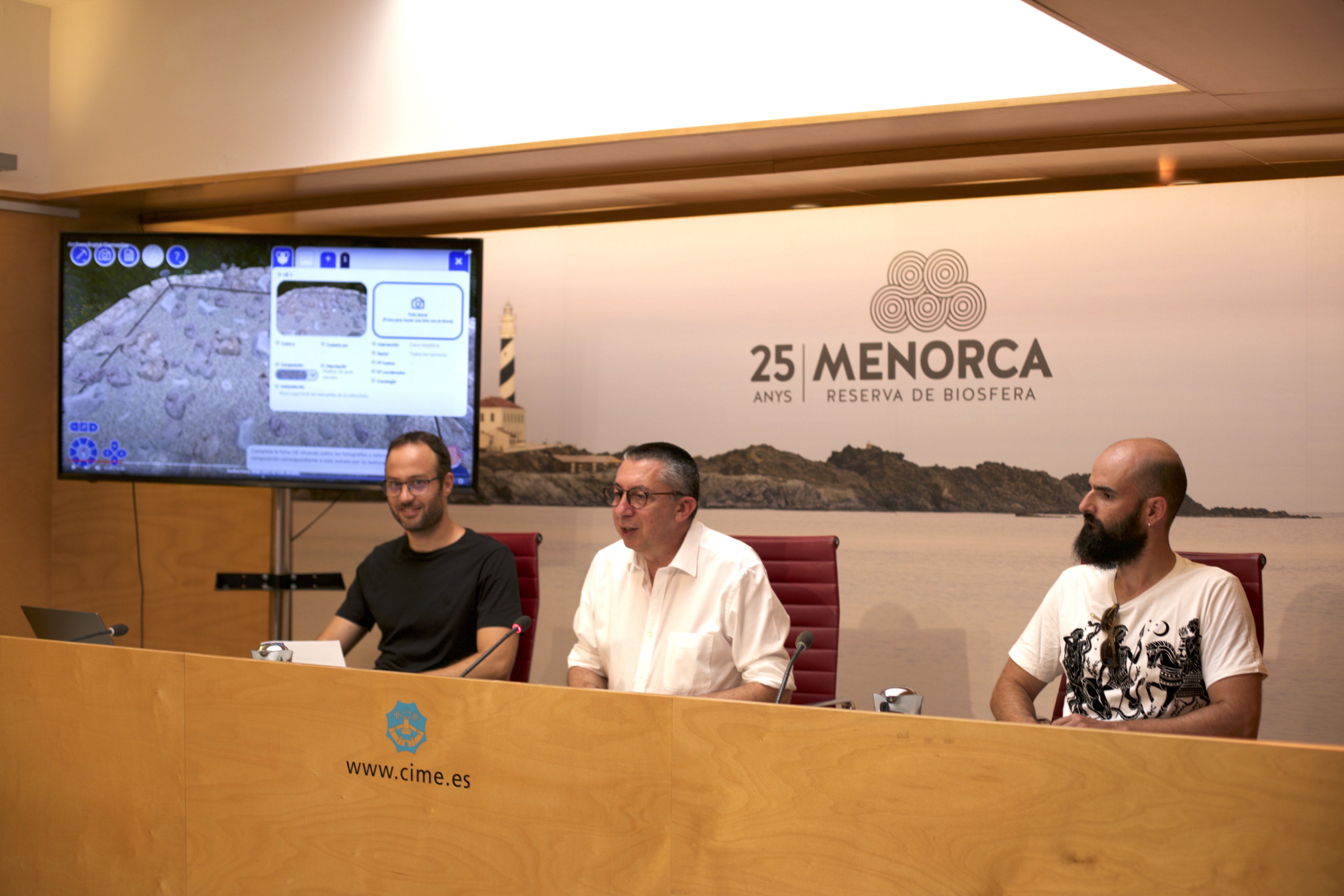 "The game puts you in the shoes of a real archaeologist who has to dig at different sites and analyse the findings in a laboratory to learn and understand different aspects of history and ancient civilisations through gamification," Mr Florit explains. "The game puts you in the shoes of a real archaeologist who has to dig at different sites and analyse the findings in a laboratory to learn and understand different aspects of history and ancient civilisations through gamification," Mr Florit explains.
Talayotic inspiration
Archaeologist is what is known as a serious game available in Catalan, Spanish and English, in which the players take on the role of an archaeologist and also acquire new knowledge about history, culture, science and language as they play. The videogame is divided into eight settings located in five different countries, giving players an insight into different historical periods. Among them, it highlights "The enigma of the Talayotic settlement" based on the Cartailhac Circle of Torre d'en Galmés, where users discover how our prehistoric ancestors lived, what their houses were like and the activities they undertook.
In accordance with archaeological methodology, users begin the game by excavating a site, a section in which the players learn the importance of marking out the dig site and documenting the materials, both the layers of terrain and the archaeological remains that they find while digging. They then enter the scientific laboratory, where they can classify and date the object they have found. Archaeologist offers four laboratories for this purpose: Archaeofauna, Physical Anthropology, Ceramics and Numismatics.
Renowned archaeologists
Over the course of each adventure, a renowned archaeologist accompanies users, giving them the data they need to understand and develop archaeological methodology and discover key historical aspects. These key figures include Menorca's Joan Ramis i Ramis, author of the first treatise on the Archaeology of Spain; and British archaeologist Margaret Murray, the pioneer of the scientific study of Talayotic culture. The players discover in the end what the site they have excavated was like when it was inhabited, and read the final report summarising all the historical information they have compiled thanks to their archaeological work.
Archaeologist forms part of a versatile educational platform suitable both for individual users and for teachers to deploy as a classroom activity: www.archaeologistgame.com. The game is entirely made up of 3D graphics, rendered with PVR technology. The graphics are designed to imitate reality, with realistic textures and forms, and with the detail needed to ensure optimal game performance.
Watch the full press conference here.
|
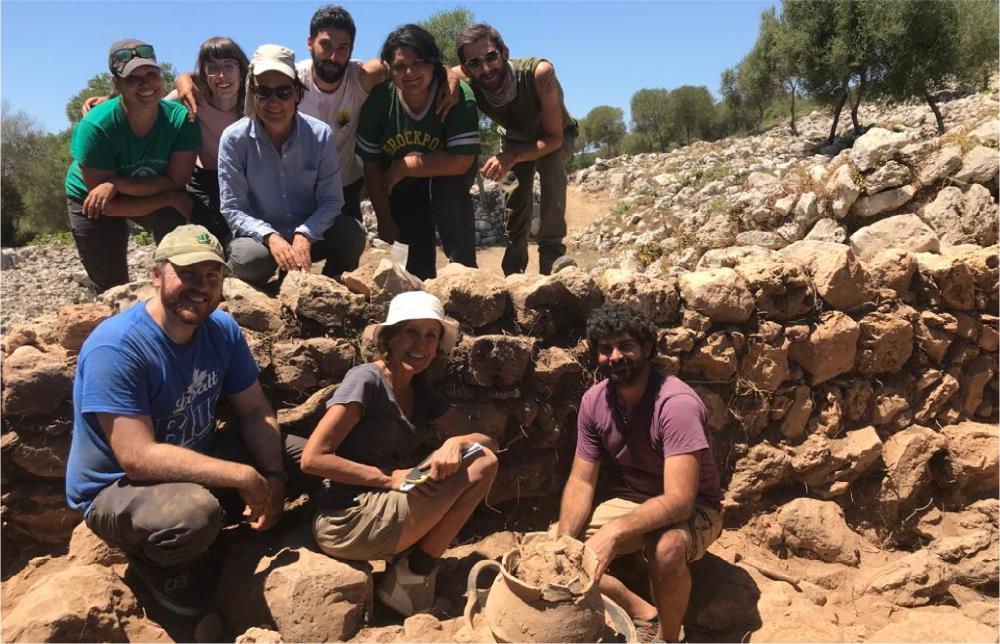
End of Boston University and SUNY Brockport field season at Torre d'en Galmés
¿¡[AQUI]¡¿Menorca Archaeological Project (MAP), headed by faculty members from Boston University and SUNY Brockport, today completed the 2022 field season at Torre d'en Galmés, where the team worked to establish a better understanding of the relationships between multiple Andalusian structures at the site.
The aim was to gain a deeper insight into the Andalusian settlement which existed in the village in the 12th and 13th centuries, and understand how they used and modified the Talayotic space. This involved continuing the documentation of mediaeval structures, grouped around open courtyards, along with completion of the excavation of two these buildings, with revealing results as to how the space was organised, how surrounding resources were used, and the space adapted to their own lifestyle. Meanwhile, sediment flotation was also performed in all areas, along with a seed and charcoal study to reconstruct the landscape and how it was managed.
2022 field season
First, the team completed the excavation of SPU 7, begun in 2021. Preliminary results suggest that the mediaeval structure was used as a dump for broken ceramics, bones and construction materials. This could be related to a nearby workspace, in front of a large domestic structure. Second, the team excavated SPU 6 and the adjacent patio. This structure shares characteristics with those previously excavated at the same site, including double walls whitewashed with lime and a beaten earth floor. Third, they located and mapped other Andalusian structures on the site, numbering around twelve, which may be part of eight discrete domestic units. In general, they are formed by one or two rooms around a courtyard, with a hallway that serves as an entrance.
On 10 July the MAP team organised a public open day, at which the co-directors, Amalia Pérez-Juez and Alexander Smith, presented some of the preliminary findings from this year's excavations They were accompanied by members of the team involved in the work, namely Kathleen Forste (Boston University); Emma Wagner and Dillion Cartwright (North Carolina State University); Guillem Castellsagué (Universidad Autónoma de Barcelona); José Manuel Galán (CSIC) and Isabel Molina (Universidad de Murcia). The project also involved other researchers from Boston University (Paul Goldberg) and Universidad Autónoma de Barcelona (Helena Kirchner).
|
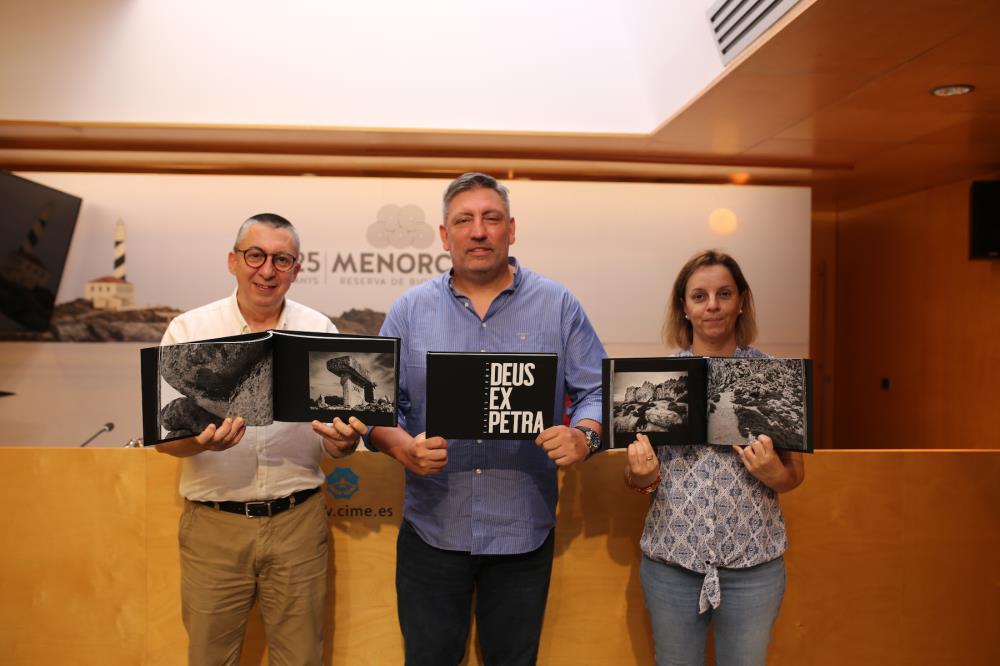
Presentation of "Deus ex petra", photographic book inspired by Talayotic Menorca
¿¡[AQUI]¡¿This morning, 14 July, saw the presentation of Deus ex petra, a photographic book inspired by Talayotic Menorca at the Consell Insular de Menorca. The event was attended by the author, Menorcan photographer Carlos Permuy; and the vice-president and conseller for Cultural Affairs of the CIM, Miquel Àngel Maria.
In Deus ex petra, “A God who descends from the stone”, Permuy aims to capture the spiritual footprint of our prehistoric ancestors through 102 black-and-white photographs of Talayotic monuments, accompanied by poems by Pons Ponç, Llucia Palliser, Pere Gomila and Damià Rotger. The foreword is courtesy of archaeologist Antoni Ferrer. The Department of Cultural Affairs has purchased 50 copies of the book, to be distributed around Menorca's various public libraries.
The photographer spent two years visiting the island's different archaeological sites to complete the project. The book is divided into two main sections of two chapters each: one concerning the world of the living, and the other, the world of the dead. Each chapter begins with real symbology found throughout Menorca, and four haikus by the four Menorcan poets.
Talayotics and art
In the words of the author, Deus ex petra aims to conceptualise the pursuit of light out of darkness, in the sense of the spiritual illumination which took place in the Neolithic, according to a new hypothesis as to Menorca's taula enclosures, suggesting they could be a gateway for communication with gods or ancestors. In his foreword, one of the authors of this theory, Antoni Ferrer, asks: "How did the Talayotic people express the spiritual dimension of the stone to one another? What metaphors did they use? We will probably never know, but this is an aspect we cannot overlook. In this regard, approaches to prehistory from the viewpoint of art help us to remember that life in the Talayotic era was not confined to functional aspects".
Vice-president Miquel Àngel Maria was keen to stress the importance of broadening our perspectives of Talayotic Menorca. “This is not simply an archaeological heritage project, nor solely a project of the Consell Insular. It involves all of Menorca's society, and society is diverse. It is particularly helpful to bring in other perspectives on our heritage, with the artistic viewpoint and sensibility being especially important. Carlos Permuy's book is a wonderful example of the opportunities that art offers to give us an insight into the archaeological heritage of Menorca and the landscape where our monuments stand, and to inspire our love," Mr Maria emphasised.
For his part, Mr Permuy underlined that "being from Menorca, I also see this book as a tribute to our land, with the hope that I can make some small contribution to the outstanding project that Talayotic Menorca represents".
About Carlos Permuy
Born in Maó in 1972, Permuy is director of the AGORA communication and digital marketing agency. A passionate photographer, he trained in this artistic discipline at Central Saint Martins in London and at the Barcelona School of Arts and Design.
In 2021 his photographic project The Romanian Files, about Romanian society, was chosen to celebrate the diplomatic relationship between Spain and Romania. A book of the same name was published this year, presented at the Spanish consulate in the Eastern European country.
Further information is available on his website. Here you can watch the presentation.
|
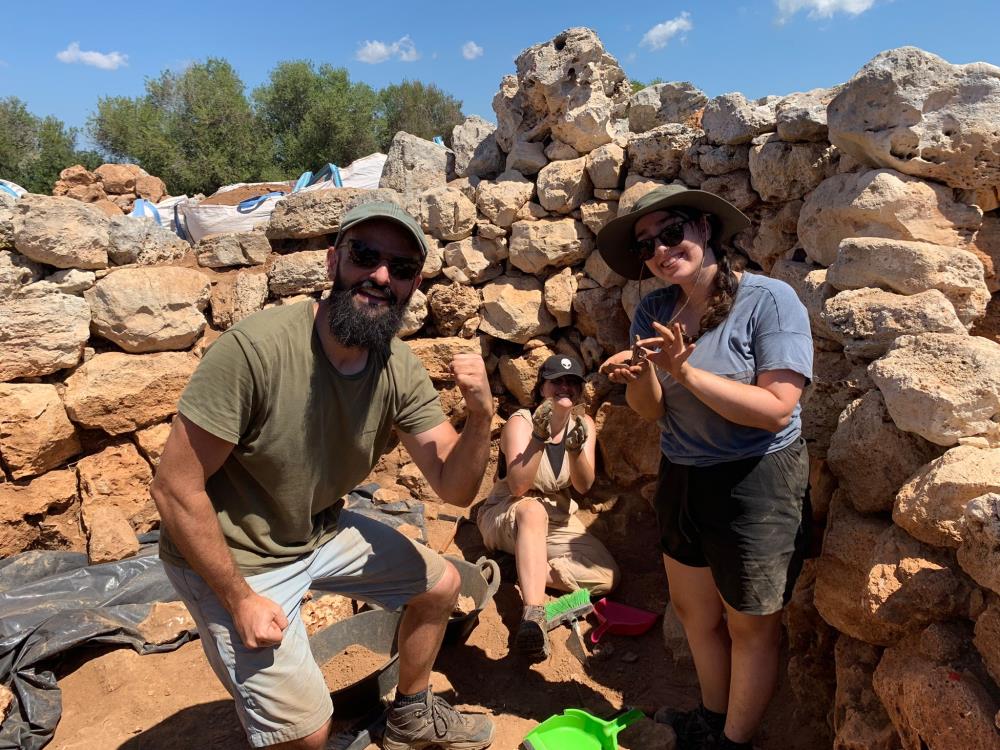
New human remains found at Torre d’en Galmés
¿¡[AQUI]¡¿Today, 13 July, Amics del Museu de Menorca revealed the news from the 2022 field season, the fourth undertaken in the northern part of the settlement. A visiting day is scheduled for 20 July 7:30 p.m. to explain to the public the preliminary results of the archaeological dig.
Since the 1990s, the Amics del Museu de Menorca association has been undertaking research, presentation and outreach work concerning the prehistory of Menorca and the Torre d’en Galmés site. Excavation is currently jointly headed by the archaeologists Borja Corral and Carlos de Salort. Restoration tasks are handled by the restorers and conservators Francesc Isbert and Cecília Ligero, while the project involves some twenty students from various Spanish universities, and volunteers from Menorca.
The 2022 season is divided into two phases: three weeks of excavation at the site between 4 and 15 July; and laboratory work up until 29 August at the association's premises in Maó. The excavation project focuses on a group of structures located in the northern part of the settlement, between two of the three talayots, which would undoubtedly correspond to the oldest stage of occupancy of the site.
Human remains
This year occupied levels were excavated in the central courtyard and some rooms of Structure 1. This was apparently a domestic space with different rooms covered over with a clay and mud roof. The distrbution of the rooms is slightly different from what has been documented previously in the other houses excavated at the settlement.
As in previous seasons, this year human remains were documented in two of the rooms, and are still being exhumed. One of the individuals is a an indeterminate adult, in other words the skeleton does not allow the text to be identified, given the lack of indicative features. Radiocarbon dating of the human remains found last year would place the death of the skeleton around the 3rd century BC. The human traces that have now been found would be expected to be from the same period.
Ceramic materials, fauna and other findings have been documented in the central space, which would be connected with the last phase of occupancy or initial abandonment of the house during the final phase of the island's prehistory.
This project has been made possible thanks to funding from the Consell Insular de Menorca, Alaior Local Authority, and the members of the Amics del Museu de Menorca association. It receives scientific support from Boston University, the Royal Institute for Cultural Heritage of Belgium, the Higher School of Conservation and Restoration of Cultural Artefacts of Catalonia, and the topography company TANIT SL, among others.
|
Talayotic Menorca Agency begins operations with creation of first two councils
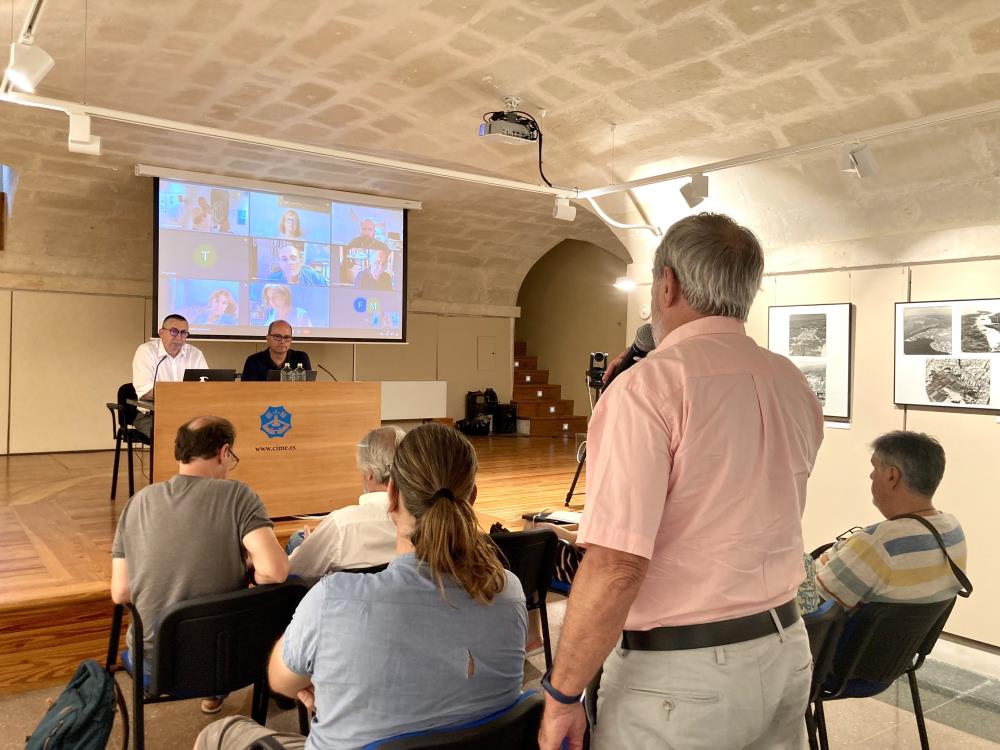 Today, 4 July, the Scientific Council of the Talayotic Menorca Agency was established at a meeting held this morning at the IME (Institut Menorquí d'Estudis-Menorcan Study Institute), attended by the chair of the agency and conseller of Cultural Affairs, Miquel Àngel Maria, the island director of Culture, Raquel Marquès, as vice-chair, and the acting director of the agency, Simón Gornés, head of the Heritage Service of the CIM (Consell Insular de Menorca-Menorca Island Council). Today, 4 July, the Scientific Council of the Talayotic Menorca Agency was established at a meeting held this morning at the IME (Institut Menorquí d'Estudis-Menorcan Study Institute), attended by the chair of the agency and conseller of Cultural Affairs, Miquel Àngel Maria, the island director of Culture, Raquel Marquès, as vice-chair, and the acting director of the agency, Simón Gornés, head of the Heritage Service of the CIM (Consell Insular de Menorca-Menorca Island Council).
This Scientific Council, made up of institutions and individuals of established standing, will have the task of scheduling and supervising the agency's activities in the field of study, research, education and scientific outreach. It will also be involved in drawing up reports for UNESCO, and will offer advice on matters within its sphere of responsibility. Aside from those members appointed on the basis of the position they hold, the inaugural meeting was also attended by other individuals and organisations connected with Talayotic heritage.
Another of the cornerstones of the TM Agency's organisational structure will be established on 7 July: the Social Council. The inaugural meeting will be held behind closed doors in the Plenary Chamber of the CIM, attended by representatives of the island's different political parties, business and cultural organisations. This council will be called on to facilitate integration and participation by all the island's public authorities and the leading public, private and social organisations in the sphere of historical and cultural heritage management. Participation by society and citizens will play a central role in this function. Each of these councils will provide two representatives to sit on the Governing Council of the TM Agency, as the highest decision-making body, which will begin operations after the meetings of the Scientific and Social Councils.
Agency calendar
The TM Agency is responsible for managing, conserving and publicising the assets that make up the Talayotic Menorca nomination, to ensure they are passed on to the island's present and future generations. The CIM set up the Talayotic Menorca Agency on the recommendations of the 2017 report by ICOMOS (International Council on Monuments and Sites).
This new body coordinates the effective implementation of the Talayotic Menorca Management Plan, while also drawing up and submitting proposals to the different CIM bodies, helping to manage, conserve and publicise the values of the archaeological monuments and associated landscape, and fostering participation and social cooperation focused on conserving our prehistoric heritage. The agency's other aims also include driving the sustainable development of archaeological and landscape heritage and promoting scientific research, while furthermore encouraging public and private investment.
On 19 July 2021 the Plenary of the CIM approved the initial draft bylaws of the agency. The draft underwent a 30-day public consultation period, during which arguments could be submitted. The different bodies involved were likewise consulted: public authorities, bodies connected with historical heritage and environmental conservation, among others. Following review and resolution of the arguments, the definitive bylaws were approved on 20 December.
We enclose the list of members of the Scientific and Social Council.
|
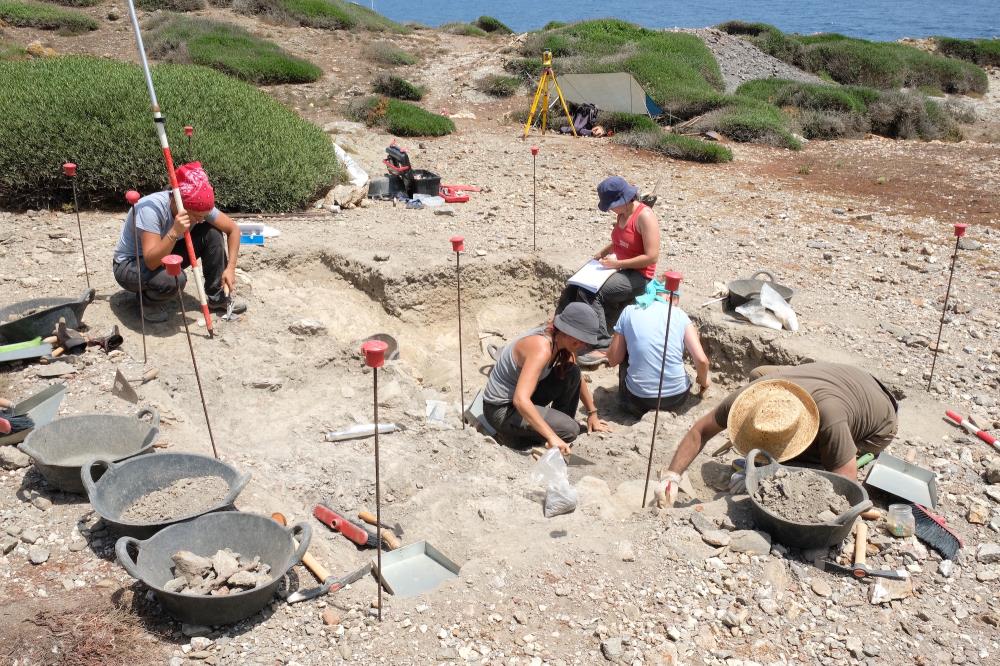
End of Sa Mitja Lluna archaeological season
¿¡[AQUI]¡¿Today saw the close of the 2022 season at Sa Mitja Lluna, the Bronze Age copper mine located on the Illa d’en Colom island. This is a particularly unusual site, containing no spectacular constructions such as talayots or navetas. It has nonetheless become one of the most significant Menorcan sites in the European scientific sphere because of its exceptional state of conservation, thanks to the absence of any substantial mine workings from later periods.
New radiocarbon dating has served to confirm that the mine was in use between approximately 1800 BC and 900 BC. Which means that the ancient inhabitants of Menorca were digging copper ores (malachite, azurite, chalcopyrite) from the mine for some 900 years. Generation upon generation of the population of Menorca must have worked at Sa Mitja Lluna, probably not continuously, but as temporary labour fitted in between other work in the fields at different times of the year.
Sixth season
This is the sixth season since the site was discovered, headed by the archaeologists Laura Perelló, Bartomeu Llull and María Calderón (ArqueoUIB group, University of the Balearic Islands) and Mark Hunt (University of Seville). They conducted their work with the permission of the agency that manages the s'Albufera des Grau nature park, and the current owner of the island, the doctor and businessman Víctor Madera, from Asturias, along with funding support from the Island Council of Menorca.
The researchers established from the outset that the mine had two separate operational areas. There has clearly been greater movement of material in the northern zone. The work in this area of the site revealed the existence of a trench dug into the rock, probably following a seam of copper running more or less parallel to the cliffs, in a north-south direction. Eye-opening discoveries should not be ruled out in future excavations, such as wells or shafts dug by the ancient miners.
Southern area of the mine
This year, the archaeologists focused their efforts on excavating the southern area, where they found a considerable amount of pottery and traces of fire. Although no hearths or other types of combustion structure came to light, the remains indicate that this area was used for other work indirectly connected with mining operations, and that they may have cooked and selected the minerals here. Until recently, only the results of mining work per se had been seen, but the Sa Mitja Lluna researchers are certain that the study and analysis of the material uncovered in the southern area during the current season will offer vital information, giving us a somewhat better insight into the people who made use of the mine, traces that are seldom found at other prehistoric mining sites.
The most notable archaeological materials recovered include lithic tools. From small mortars used to crush and select the mineral, to large mining mallets to break the rock containing the veins of ore. There are of many sizes, depending on the task for which they were used, some of them weighing as much as 16 kg.
Copper ore was essential in the Bronze Age to produce metal instruments, although its symbolic value was undoubtedly even more important. An analysis of provenance and distribution by means of lead isotopes has served to suggest possible connections between the minerals from Illa d'En Colom and metals buried at funereal sites of Menorca of a similar period. Studies conducted on metal items on other islands of the Balearic archipelago also indicate links to the ores of Menorca. This reflects the considerable movement of objects and people which took place during the Bronze Age.
|
Premiere of the Talayotic Menorca documentary on IB3 TV
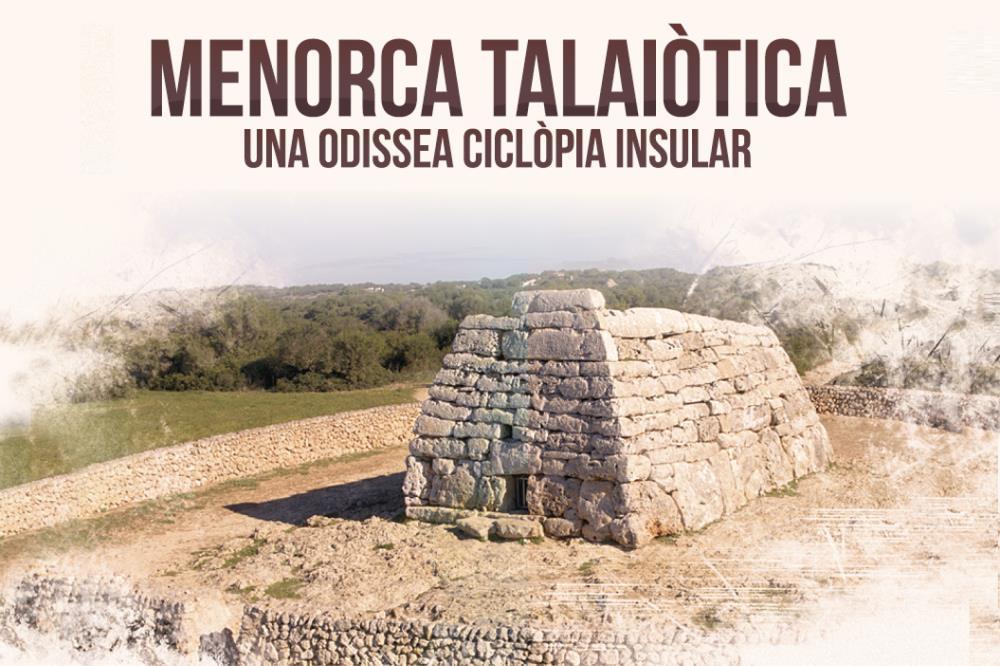 Talayotic Menorca, an insular cyclopean odyssey will air for the first time on IB3 Televisió this Sunday, July 3, at 7:50 p.m. After its premiere, the documentary will be aired again on future occasions on the regional channel. This is a collaboration between the Department of Cultural Affairs of the Consell Insular de Menorca and the public radio and television entity of the Balearic Islands. Talayotic Menorca, an insular cyclopean odyssey will air for the first time on IB3 Televisió this Sunday, July 3, at 7:50 p.m. After its premiere, the documentary will be aired again on future occasions on the regional channel. This is a collaboration between the Department of Cultural Affairs of the Consell Insular de Menorca and the public radio and television entity of the Balearic Islands.
The Consell Insular of Menorca promoted the production of this documentary in order to support the candidacy. The aim is to encourage people to get involved in the conservation of Talayotic heritage, discover and share the candiacy’s journey through a civilization that is still alive and present in every landscape of the island.
Filmed by Espiral Producciones TV SL, Talayotic Menorca, an insular cyclopean odyssey was directed by Manu Balaguer, written by Laura Jurado and consulted by renowned archaeologist Amalia Pérez-Juez. This 38 minute long film is a journey through the history of our island, from Talayotic times to the present day. 17 testimonies from a diverse group of people, mostly archaeologists and a geologist, are collected to detail the story surrounding Talayotic Menorca; the owner of a deposit; and the coordinator of the World Heritage candidacy file, Cipriano Marín, among others also participate. The actress who gives voice to the documentary in Catalan and Spanish is Enka Alonso from Menorca.
|
Round table "Circles, the protohistoric habitat of Menorca" on June 17 and 18
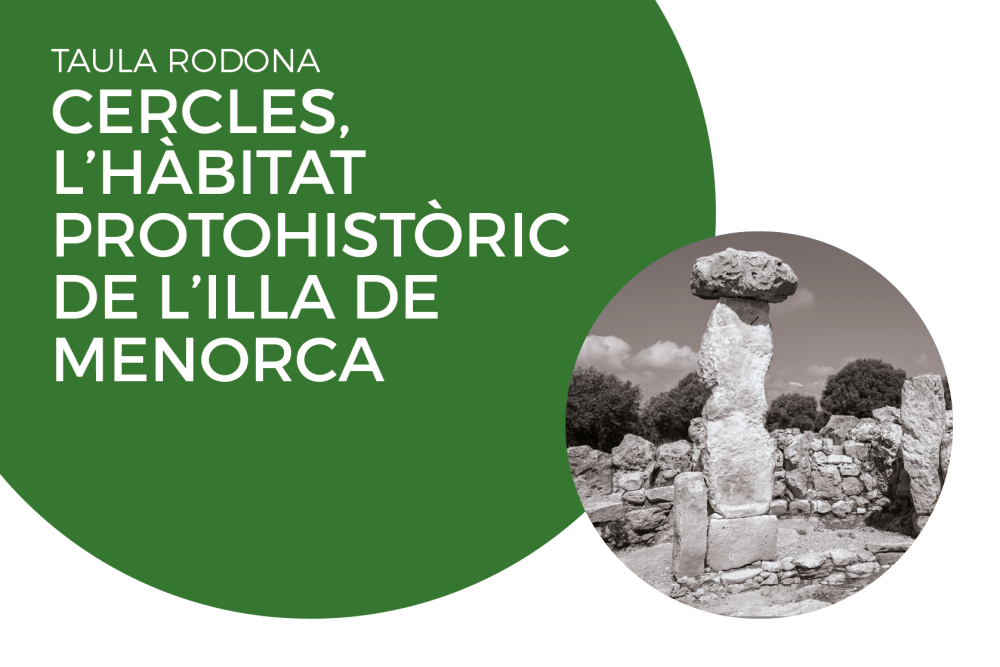 The Consell Insular de Menorca will host this June 17 and 18 the round table "Circles, the protohistoric habitat of Menorca", organized jointly by the Heritage Service and the archaeologists Amalia Pérez-Juez and Octavio Torres. This seminar will revolve around the island's protohistoric habitat and will be a space for debate and reflection on Menorcan circles as unique constructions in the world. The first block of introduction and current state of affaris will be held by the Vice President and conseller of Cultural Affairs, Miquel Àngel Maria, and will open the conference this Friday at 9:30 a.m. The Consell Insular de Menorca will host this June 17 and 18 the round table "Circles, the protohistoric habitat of Menorca", organized jointly by the Heritage Service and the archaeologists Amalia Pérez-Juez and Octavio Torres. This seminar will revolve around the island's protohistoric habitat and will be a space for debate and reflection on Menorcan circles as unique constructions in the world. The first block of introduction and current state of affaris will be held by the Vice President and conseller of Cultural Affairs, Miquel Àngel Maria, and will open the conference this Friday at 9:30 a.m.
Specialists from different institutions and origins will share their knowledge about these peculiar prehistoric constructions., The archaeologist Simón Gornés will intervene, with a presentation on symbology and sacred spaces in the Post-Layotic of Menorca on behalf of the Heritage Service; as will Joaquim Pons, with "The circles in the candidacy of Talayotic Minorca for World Heritage".
The conference will end on Saturday with a visit to Torre d'en Galmés, where the participants will be able to see the excavations of circles that teams of researchers such as the one from Boston University are carrying out in this Talayotic settlement. You can find the complete program here.
|
Talayotic Menorca inaugurates the Forum of Associations and Cultural Managers in Llatzeret
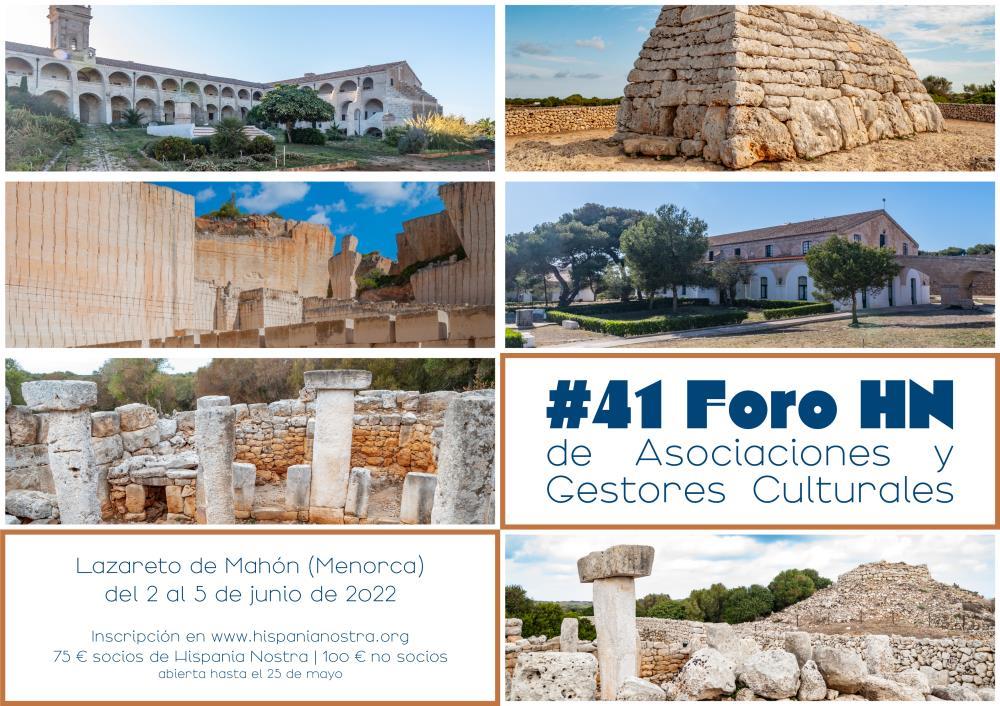 The 41st Forum of Cultural Associations and Managers: heritage and sustainability, will be held from June 2 to 5 in Llatzeret, Maó. These conferences are organized by Hispania Nostra, an association dedicated to the defense, promotion and appreciation of cultural and natural heritage. Cipriano Marín, coordinator of the Talayotic Menorca candidacy for UNESCO World Heritage, will open the Forum this afternoon (6:30 p.m.) with the conference “Heritage and sustainability. Menorca as a paradigm?”, an event that will be attended by the Vice President and conseller of Cultural Affairs, Miquel Àngel Maria. The 41st Forum of Cultural Associations and Managers: heritage and sustainability, will be held from June 2 to 5 in Llatzeret, Maó. These conferences are organized by Hispania Nostra, an association dedicated to the defense, promotion and appreciation of cultural and natural heritage. Cipriano Marín, coordinator of the Talayotic Menorca candidacy for UNESCO World Heritage, will open the Forum this afternoon (6:30 p.m.) with the conference “Heritage and sustainability. Menorca as a paradigm?”, an event that will be attended by the Vice President and conseller of Cultural Affairs, Miquel Àngel Maria.
The extensive program of conferences and activities includes guided visits to the Torre d'en Galmés, Torralba d'en Salort and Naveta des Tudons sites. On Saturday, June 4, the archaeologist and head of cultural tourism at the Fundació Foment del Turisme de Menorca, Carmen Lara, will moderate the round table "Forgotten Heritage”. Also on the same day, the conseller of Cultural Affairs will particpate in the round table "Shared co-responsibility in heritage management".
Hispania Nostra is a non-profit association, declared of public interest, created in 1976 to celebrate the Year of European Architectural Heritage. Its objectives are the defense, promotion and appreciation of cultural and natural heritage, considering them as a vector of social and economic development. With that aim, it carries out surveillance programs on endangered heritage; encourages good practices; promotes citizen collaboration between public and private institutions; and participates in educational activities about the social value of heritage.
You can follow all the conferences live through the Hispania Nostra YouTube channel. Here you will find the complete program.
|
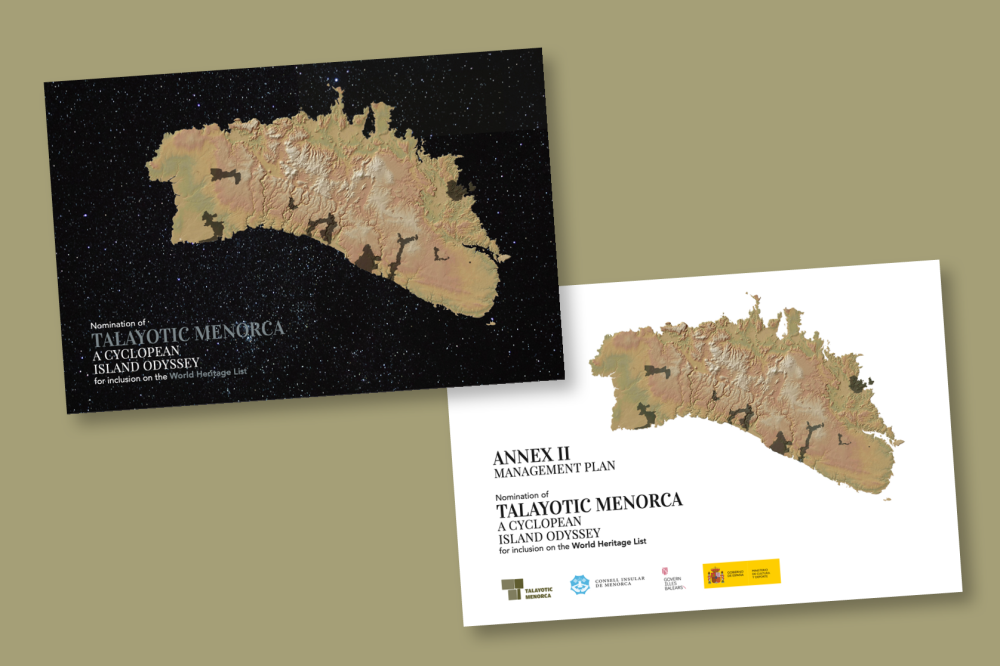
The candidacy file is now available on our website
¿¡[AQUI]¡¿The file submitted to UNESCO seeking to achieve recognition as World Heritage is now available on the Talayotic Menorca website, as well as the Management Plan for the property. With the title of Talayotic Menorca, a cyclopean island odyssey, this dossier —coordinated by Cipriano Marín— presents the story of a unique island culture trapped between the sky and the sea. For the cover design, the creative director of Vibra Design, Carlos Andreu, was inspired by the constellations that can be seen from Menorca.
Built around the integration and harmonious relationship of prehistoric monuments with the natural environment of the island, the candidacy is divided into nine territorial areas or components, which include 280 sites from the prehistoric period. They represent 21% of the archaeological sites in Menorca and an area of 3,527 hectors. These components show the most outstanding vestiges from the irruption of the Cyclopean constructions (1600 BC) until the decline of the Talayotic culture that coincides with the beginning of Romanization around 123 BC. Talayotic Menorca thus constitutes a unique expression of Cyclopean architecture integrated into the living landscape of the present, an exceptional and well-preserved testimony of Talayotic culture.
On the other hand, the Talayotic Menorca Management Plan, by the company Kultura, under the direction of Antoni Nicolau, lays out the mechanisms to guarantee the maintenance and improvement of the components, the authenticity and integrity of Talayotic Menorca’s assets and their state of conservation, as well how to strengthen the project’s relationship with the community.
All those interested in deepening their knowledge about Talayotic Menorca can consult both documents in the candidacy menu. Both the file and the Management Plan are available in Catalan, English and Spanish.
You will find them here.
|
“We, the guides, do the very important job of transmitting the cultural values of our territory"
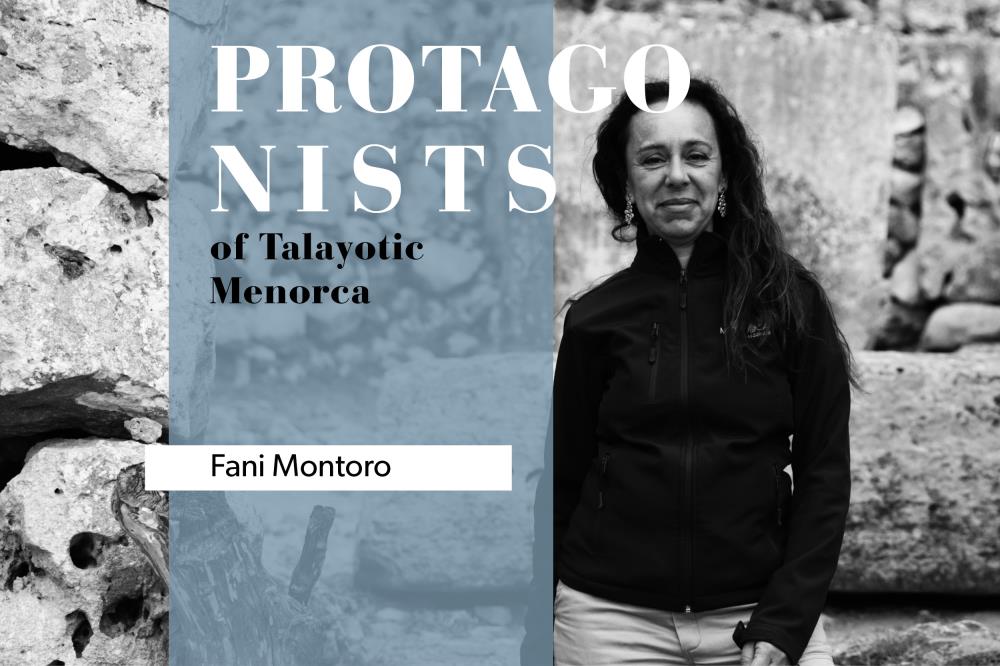 Fani Montoro has been a guide for the Fundació Foment del Turisme de Menorca since 2018, when she started working at Torre d'en Galmés. She has a degree in Tourism and is passionate about archeology and Talayotic culture. She’s part of the important team that contributes to spreading our prehistoric heritage, the legacy of a unique and exceptional past. Fani Montoro has been a guide for the Fundació Foment del Turisme de Menorca since 2018, when she started working at Torre d'en Galmés. She has a degree in Tourism and is passionate about archeology and Talayotic culture. She’s part of the important team that contributes to spreading our prehistoric heritage, the legacy of a unique and exceptional past.
You are passionate about archaeology, what brought you to this world?
I have always been very curious about ancient cultures, how different they were from us. As a child, I devoured historical novels. I liked to transport myself to distant times and imagine how people lived. When I arrived to Menorca was when I discovered prehistory up close, I had never been in direct contact with such a distant culture before. On this island, almost every stone you touch is brimming with history.
Plus, in the rest of Spain, you have to put a lot of imagination into most of the sites to see more than stones. Here it is the other way around, each site transports you to the past and stimulates your imagination. It is impossible not to be curious about why they made these huge constructions such as the talayots or the taulas, and to investigate the topic. When you do a little research, you discover very peculiar details, while there are also many hypotheses that exude certain mystery and makes you eager to continue investigating.
Had you ever thought about working on a site or did your interest in this discipline make you specialize in cultural tourism?
The truth is that it was all a bit of a coincidence. I studied Tourism because I like to travel. When I visit another place I like to go around the corners and pay attention to every detail. When I arrived to Menorca, I fell in love with the island and was looking for jobs that would help me get to know it better. In this way, I worked for the Environment department and also for the Heritage department. I learned many things, getting to know Menorca inch by inch. My studies, my interest and knowledge, and previous experience is what gave me the opportunity to start as a guide in a site. I like it very much, and I continued to specialize in cultural tourism.
Experience in Torre d'en Galmés
You have been working as a guide in Torre d'en Galmés for a few years, therefore, it is a site that you know very well. What would you highlight about its visit?
In my opinon, it’s the most complete site that exists in Menorca. The houses from the Final Talayotic period give a sense to the whole that the rest of the sites don’t have. The visit is especially interesting because you can see how people lived in the past, what their day-to-day life was like. How they cooked, what utensils they used, what animals they kept, etc. For most visitors it’s a trip to the past. You can also clearly see how history evolved, what the life of the initial settlers was like, what traces were left by other cultures that arrived to Menorca at that time, such as the Romans; and how other people, who also took advantage of what was here to make a living, such as the Muslims.
Surely you have many anecdotes after these years, is there one that you especially remember?
There is a funny one with a group of women who asked me if we had stones here with telluric energy. Many people think this is a very mystical place. I don't know if this kind of energy exists, but it is true that the way in which these stones have been preserved over the centuries is very special. Maybe all the attention, admiration and esteem that the people who work here put into the site, and the admiration of those who visit it can be felt in some way.
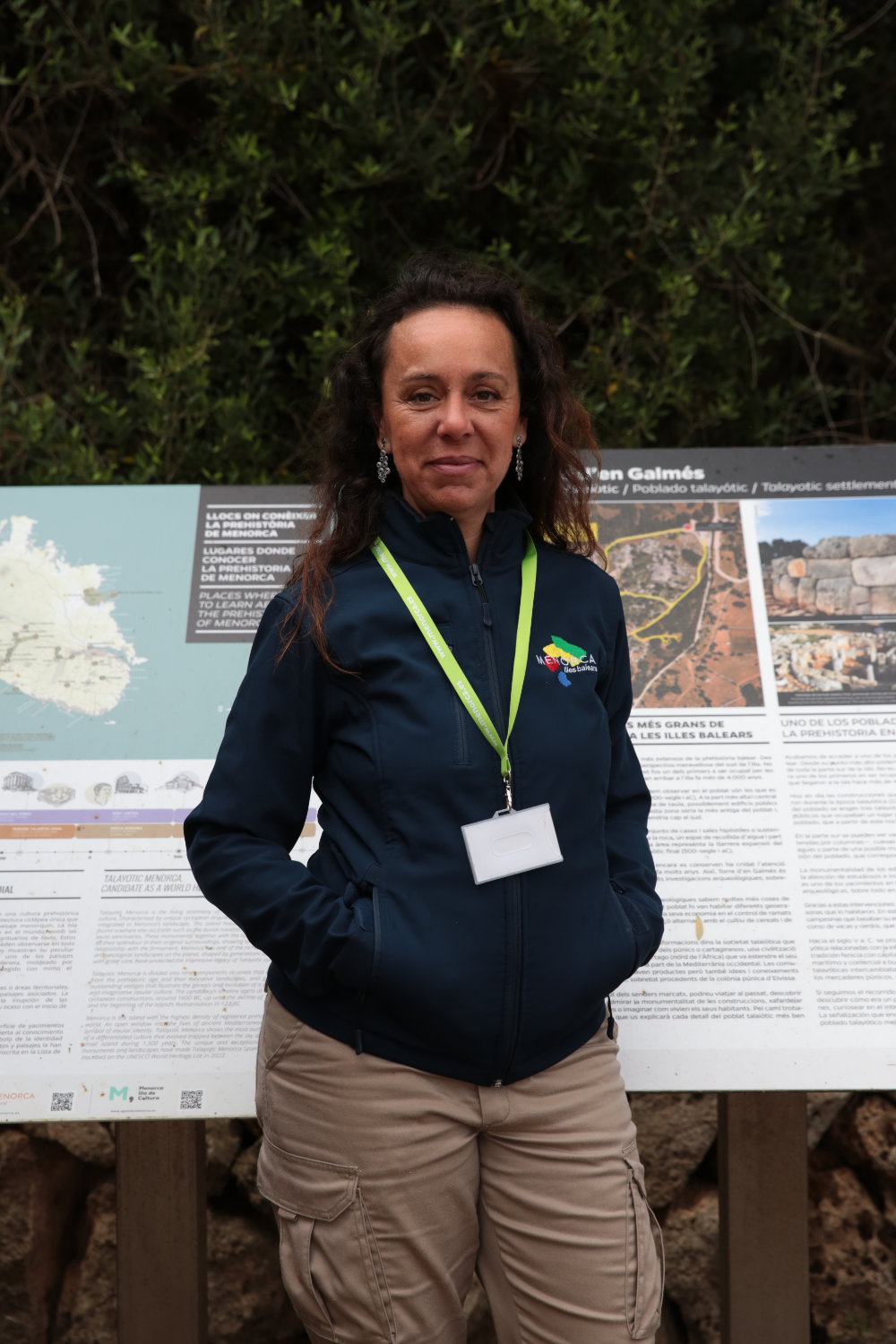 What surprises visitors of Torre d'en Galmés the most? Which is the site’s monument that arouses the most interest? What surprises visitors of Torre d'en Galmés the most? Which is the site’s monument that arouses the most interest?
The most striking thing is how they were able to make these constructions with such large stones and with the primitive means that existed at that time. It is a site with many structures: three talayots, in addition to the taula enclosure and many houses. You can see the real prehistoric city, and to imagine how they built all this is really amazing. The most pleasing monument is the circle of Cartailhac, it is surprising at an architectural level with the harmonious arrangement of its pillars and walls. The hypostyle hall also attracts quite a lot of attention, the stones on the roof are very large and it’s impressive.
Another thing that often surprises visitors is the fact that the site is open to the public day and night without surveillance, and still it is so well preserved, clean and cared for. For those of us who live here it’s a normal thing, but for people from outside the island, the respect for heritage is remarkable.
Heritage and tourism
Torre d'en Galmés is a living site, where several research projects are ongoing. What is the coexistence between tourists and archaeologists like?
Archaeologists work in the summer, the busiest months. Normally, the areas where the excavation works are carried out are separated from the visitor passage areas, since the itinerary is worked out beforehand. However, visitors can see the archaeologists working and they are happy to answer any questions they may have. In fact, depending on the type of visitor, they are expressly informed if there is any project underway in case they want to see how they work or ask for some information. Archaeologists know that this opening to the general public is very important, because it sparks interest about the site.
What challenges does your task as a guide of a Talayotic site have?
I believe that guides have the important task of transmitting the cultural values of our territory, which is essential for us to be valued for what we do. And a very important part of this culture is the prehistoric heritage, it’s so important that Talayotic Menorca is in the running for UNESCO World Heritage status. This milestone, which we have achieved with great effort, without the recognition of the external public - the tourists- would not make sense.
Our heritage has been hidden from the rest of the world for a long time, now is the time to show it. Making people understand that what we have in this sites is much more than just rocks is an important task. This is a legacy from the past in a unique state of conservation and there is nothing else like it in the world.
|
Talayotic Menorca returns to Tarraco Viva
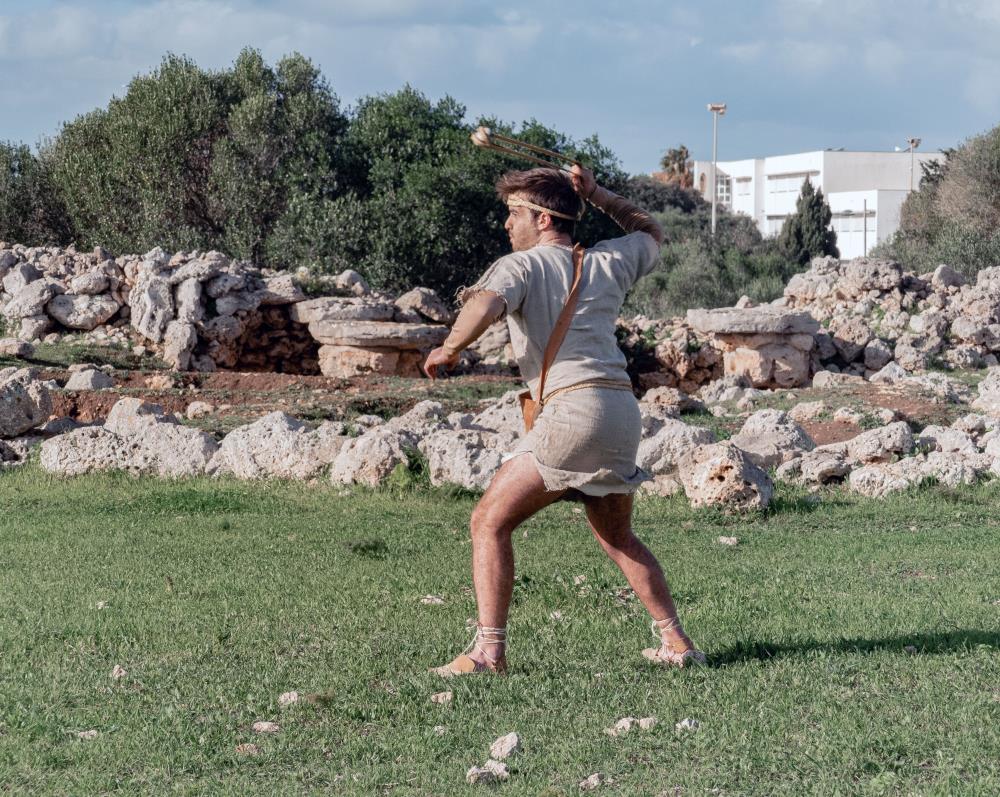 Talayotic Menorca returns this weekend, May 28 and 29, to the Tarraco Viva historical reenactment festival, after a two-year stoppage due to the pandemic. This is a unique setting to present the candidacy and the prehistoric heritage of Menorca, a consolidated festival with a large number of visitors. The aim is to continue disseminating Talayotic Menorca at a national level, as contemplated in the MT Communications Plan. The Menorcan delegation will be made up of 13 people including organizers, slingers, participants in the historical re-enactment and Grahame Pearce's brewmaster. Talayotic Menorca returns this weekend, May 28 and 29, to the Tarraco Viva historical reenactment festival, after a two-year stoppage due to the pandemic. This is a unique setting to present the candidacy and the prehistoric heritage of Menorca, a consolidated festival with a large number of visitors. The aim is to continue disseminating Talayotic Menorca at a national level, as contemplated in the MT Communications Plan. The Menorcan delegation will be made up of 13 people including organizers, slingers, participants in the historical re-enactment and Grahame Pearce's brewmaster.
The activities related to the Talayotic Menorca are the following:
1.- Historical recreation Funditores Baleares, The warriors of the Balearic Islands: by Amics del Museu de Menorca and the Federació de Tir de Fona-Unió excursionista de Menorca. The Romans knew Menorca and Mallorca because the slingers born on these islands threw stones more skillfully than anyone else. Nothing strange, since in the insula Balearis Minor there are more stones than any other resource, so the life of its inhabitants was never easy. The settlements of that time that are still preserved in the Menorcan landscape tell us about an exceptional culture -the Talayotic-, with constructions made of stone that are unique such as the navetas, the taula enclosures and the circular houses.
The show will stage the origin of the Balearic slingers, who as children had to learn to use the slingshot to watch over the herd, hunt or survive. Many ended up enlisted, as mercenaries, in the service of Carthaginian and Roman armies, participating in numerous battles. There will be two showings of this activity: on Saturday 28 in Catalan, and on Sunday 29 in Spanish. Both days at 11:00 a.m.
This recreation has already been done several times in Menorca in a natural environment, but now it has been modified to be performed on a stage. In order to mimic the monumentality of Talayotic Menorca, the organizers replicated specific architectural elements of a talayotic circle in Torre d'en Galmés and a taula enclosure, taking into account that they must be transported by van to Tarragona. Among these pieces, it is worth mentioning the construction of a replica of the Torralba d'en Salort taula, about 5 m high. The load-bearing part, that is to say the shaft, is a wooden structure that can be assembled in 2 hours and disassembled in 1 hour. The capital is made with PVC tubes so that the shaft does not have to support so much weight, and the exterior is a painted fabric imitating the colors and details of the Torralba taula.
2.- Sling making workshop La fona Balear, by Lluís Pons Livermore and the Federació de Tir amb Fona-Unió excursionista de Menorca. The slingshot is one of the oldest weapons, whose use is documented in many places around the planet. It is especially linked to people dedicated to grazing and hunting, where it can cover multiple needs. The talayotics enrolled as mercenaries in the Carthaginian and Roman armies, and used the sling as a dangerous weapon. They went into battle with three slingshots braided with esparto grass or hemp: a long-distance one firmly at the waist, a short-distance one at the head or neck, and an intermediate-range one in the hand.
In this workshop, one of the best shooters in the world will show various types of slingshots and projectiles, will teach how to weave a slingshot and use it with the Menorcan slingers technique (tennis balls). It will be held twice, once after each historical re-enactment: on Saturday 28 in Catalan, and on Sunday 29 in Spanish. Both days at 12:00 p.m.
3.- Screening of the documentary “Talayotic Menorca, an insular cyclopean odyssey”. Menorca is immersed in the evaluation process of the Talayotic Menorca candidacy for UNESCO World Heritage. To support the candidacy, the Consell Insular de Menorca has promoted this documentary, made by Espiral Produccions and directed by Manu Balaguer with the participation of numerous specialists. After the screening, there will be a Talaiòtica beer tasting. Produced by the Menorcan craft brewery Grahame Pearce, it will be led by the master brewer who created it: Roger Vila. Saturday, May 28 at 1:00 p.m.
Tarraco Viva is a historical re-enactment festival that was born in 1999 as an activity to support the candidacy of Tarragona for UNESCO World Heritage. Today, more than twenty years later, it is a festival fully rooted in the city and a benchmark in the festivals of this kind held in Spain.
|
“El dolç talaiòtic” contest begins
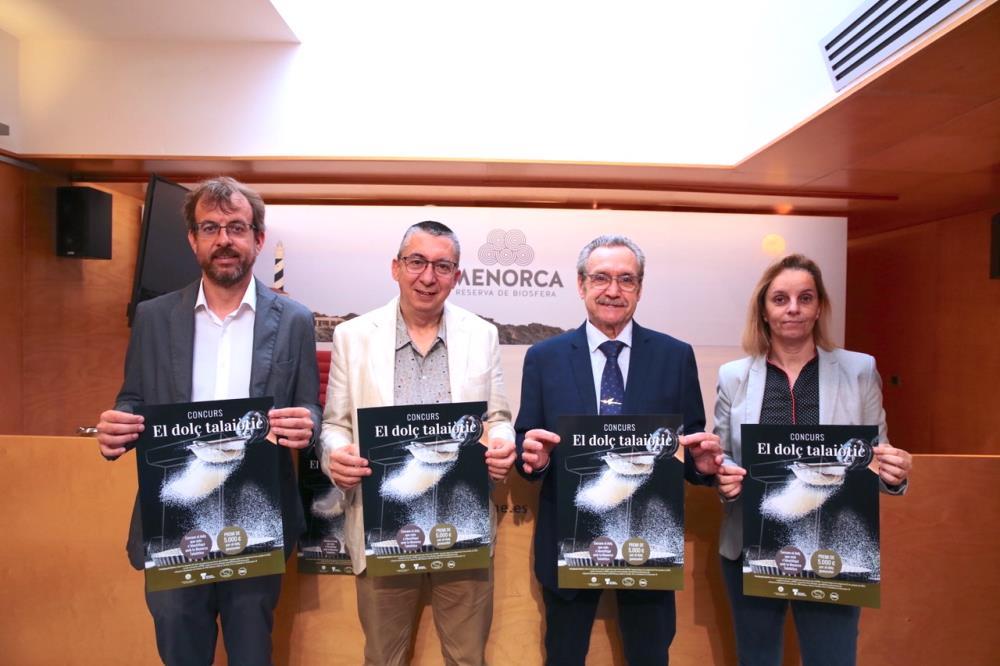 The new contest for the creation of a dessert inspired by Talayotic Menorca was presented today, May 18, at the Consell Insular de Menorca (CIM). Organized jointly by the Asociación Profesional de Pastelería, Panadería y Afines de Menorca (APAME, Professional Association of Pastry, Bakery and Related Products of Menorca) and the CIM, the "El dolç talaiòtic" contest is one more of the actions included in the MT Communication Plan, so that both residents and visitors can link and identify the winning dessert with the candidacy. The registration period started today and will close on September 23 at midnight. The awards ceremony will be held on October 1. The new contest for the creation of a dessert inspired by Talayotic Menorca was presented today, May 18, at the Consell Insular de Menorca (CIM). Organized jointly by the Asociación Profesional de Pastelería, Panadería y Afines de Menorca (APAME, Professional Association of Pastry, Bakery and Related Products of Menorca) and the CIM, the "El dolç talaiòtic" contest is one more of the actions included in the MT Communication Plan, so that both residents and visitors can link and identify the winning dessert with the candidacy. The registration period started today and will close on September 23 at midnight. The awards ceremony will be held on October 1.
A maximum of 18 participants may submit their sweet proposal to the contest, provided that it is new creation and has not been previously marketed. The winner will receive a 5,000 euros (VAT excluded) prize, and the rest of the participants 500 euros each (VAT excluded). The winning dessert will become APAME’s property, who will distribute its preparation and composition among all member entities for selling it.
The presentation of El dolç talaiòtic counted with the participation of the Vice President and conseller of Cultural Affairs, Miquel Àngel Maria; and the president of APAME, José Ángel Giménez. In his speech, Maria stressed that one of the most important aspects of a World Heritage candidacy is that society makes it their own, and this is happening in 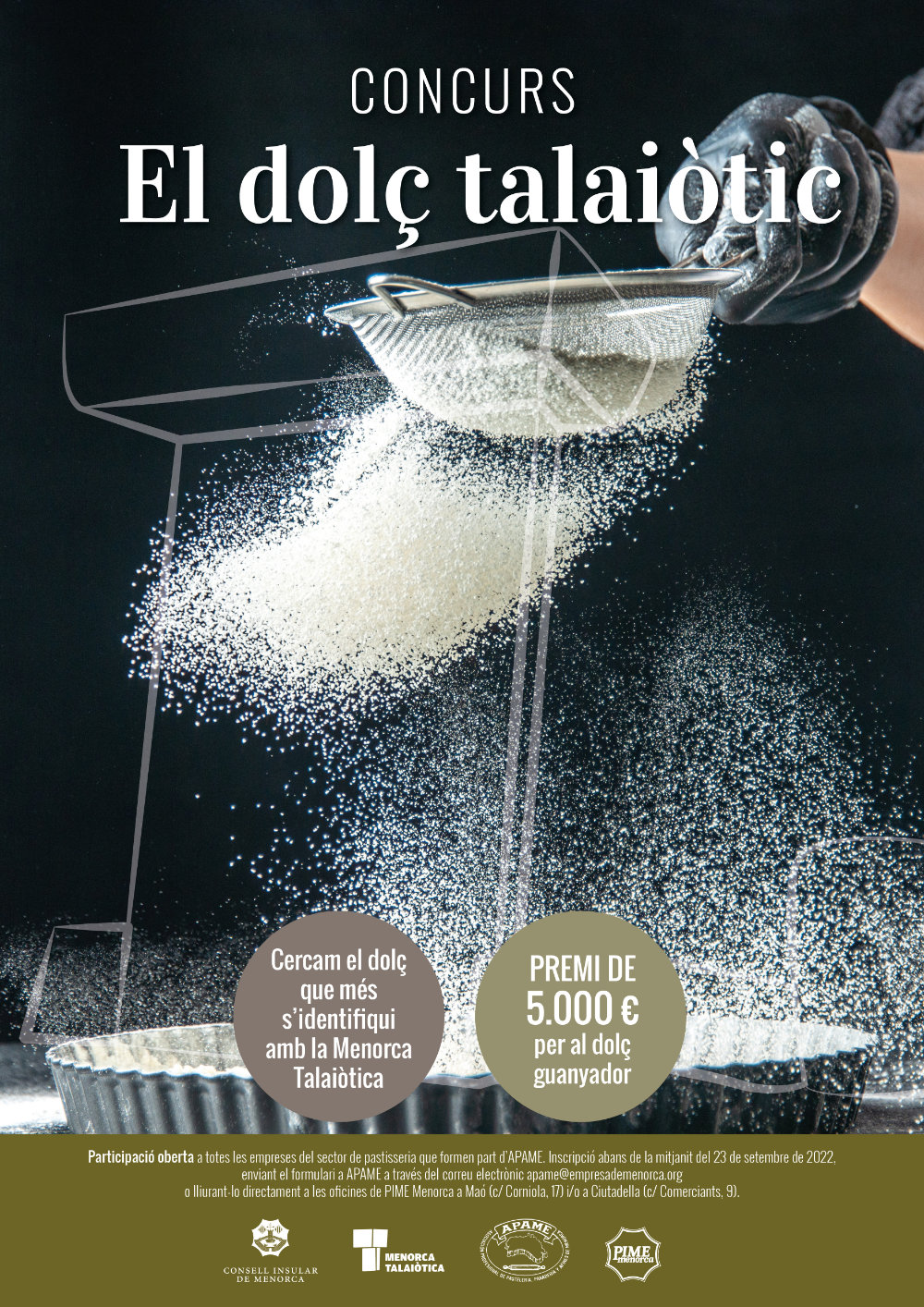 Menorca. “If Menorcans already had a big esteem for its prehistoric heritage, the candidacy has promoted citizen and even business initiatives that make Talayotic Menorca a broad, transversal project that goes far beyond archaeology”, and added that APAME's involvement in this contest is a good example. Menorca. “If Menorcans already had a big esteem for its prehistoric heritage, the candidacy has promoted citizen and even business initiatives that make Talayotic Menorca a broad, transversal project that goes far beyond archaeology”, and added that APAME's involvement in this contest is a good example.
For his part, the president of APAME wanted to highlight the total predisposition of the guild to participate in this contest and thus support Talayotic Menorca in the process to become a World Heritage Site, but also once its nomination has been achieved, if that is the case. The objective is that both residents and visitors can link this dessert to Talayotic Menorca and buy it in the island's pastry shops.
The jury of the contest will be made up of three representatives of the Consell Insular and three of APAME. They will value the creativity and originality in the presentation of the dish, as well as the use of typical Menorcan pastry flavors. The dimensions and consistency, that have to be suitable for transport, contemplating its possible sale and shipment outside Menorca will also be taken into account.
Watch the full press conference here.
Photo: from left to right, General Manager of PIME, Jordi Bosch; Vicepresident and conseller of Cultural Affairs, Miquel Àngel Maria; José Ángel Jiménez, president of APAME; Raquel Marqués, insular director of Cultural Affairs and Heritage.
|
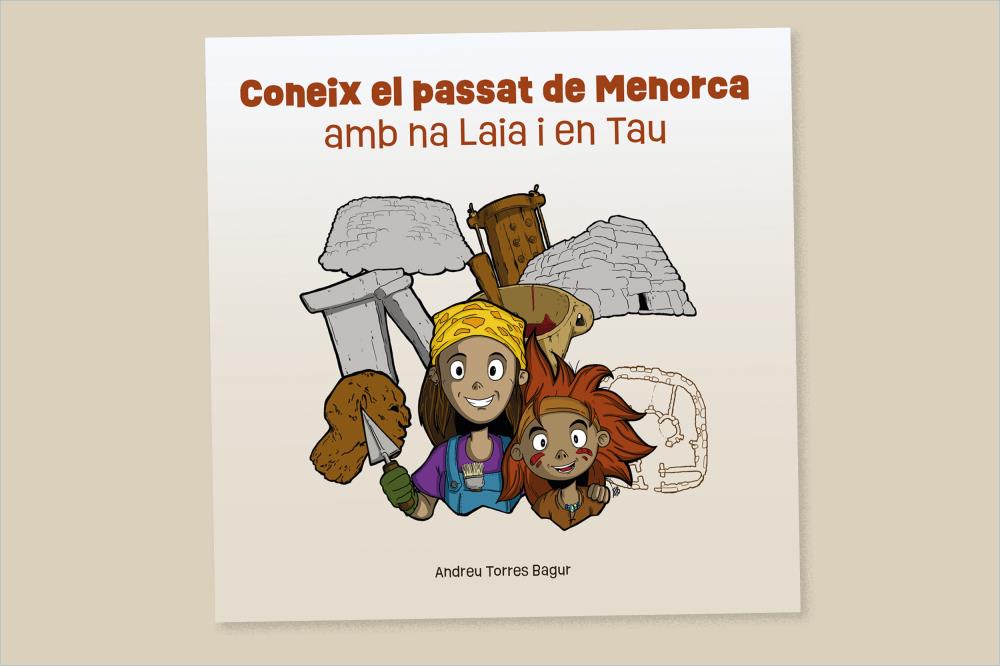
Presentation of the first children's book in the Sitjot collection
¿¡[AQUI]¡¿The book Discover Talayotic Menorca with Laia and Tau, the sixth edition in the Sitjot collection and the first aimed for children, was presented this morning, May 17, at the Consell Insular de Menorca by the vice-president and consller of Cultural Affairs, Miquel Àngel Maria; and its author, the illustrator and archaeologist from Ciudadela Andreu Torres.
This edition is intended to be kids first contact with Talayotic culture, from the first settlers to the conquest of the island by the Roman army. A journey through all of Menorcan prehistory accompanied by Laia and Tau. Kids will learn about how they lived, what they ate, where they buried their dead and many more curiosities.
During his speech, Miquel Àngel Maria highlighted that there are already other publications on Menorca’s prehistoric times for children, but that a general presentation of Talayotic Menorca within the context of the World Heritage candidacy specifically aimed at children was lacking. “Andreu Torres' book goes beyond this need, it is a very good book, which will undoubtedly interest the youngest among us, but its didactic vocation and the abundance of illustrations will also delight the adult reader. It’s perfect for learning about Menorca’s prehistory as a family, whether you’re from the island or just visiting”.
On his part, the author of the book expressed his enthusiasm for having made this project a reality: “I had it in my head for a long time and aided by Cultural Rescue it has finally become a reality. I hope it helps our youngest, both Menorcans and visitors, to feel curiosity by our past and learn to love our heritage”.
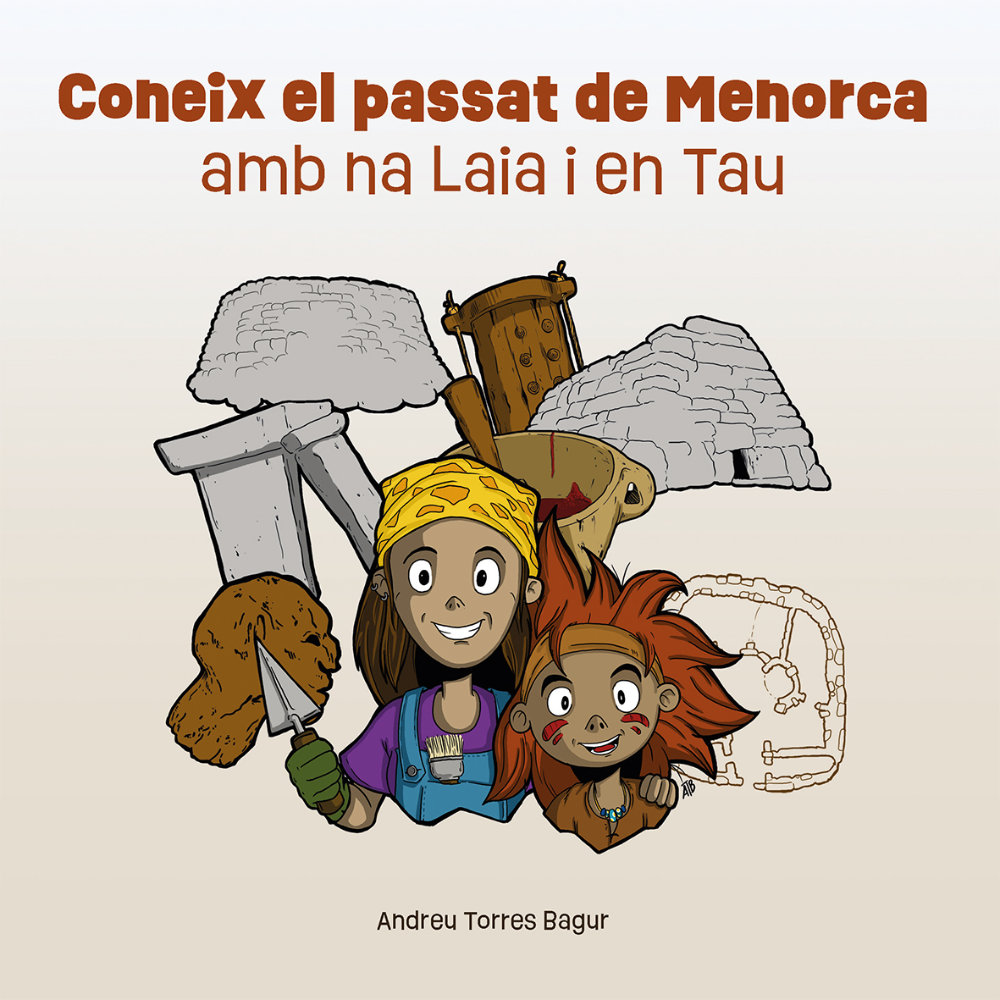 Sitjot aims to spread the wealth of Menorcan historical and archaeological heritage among a non-specialized public. With a marked informative character, but always respecting scientific rigor, these monographs incorporate illustrations and other visual resources to make the information more comprehensible. Even though the Catalan edition has been presented alone today, Discover Talayotic Menorca with Laia and Tau is also available, like the rest of the collection, in Spanish and English. Sitjot aims to spread the wealth of Menorcan historical and archaeological heritage among a non-specialized public. With a marked informative character, but always respecting scientific rigor, these monographs incorporate illustrations and other visual resources to make the information more comprehensible. Even though the Catalan edition has been presented alone today, Discover Talayotic Menorca with Laia and Tau is also available, like the rest of the collection, in Spanish and English.
The intention is that these monographs may be of interest not only to Menorcans, but also to tourists who come to the island, especially those who visit museums. That is why both Discover Talayotic Menorca with Laia and Tau and the rest of the collection are available at the Museu de Menorca and at Can Saura.
This children's book has been financed by Cultural Rescue launched by the Department of Cultural Affairs of the Consell Insular during the pandemic, and has the support of the Department of European Funds, University and Culture of the Government of the Balearic Islands.
The other five titles in the collection
The Sitjot collection started in 2018 with Torre d'en Galmés. Territorial control of prehistoric Menorca, an update of the book with the same title published by the Consell Insular de Menorca in 2007. This new edition, also edited by archaeologists Carmen Lara, Joaquim Pons, Gustau Juan and Antoni Ferrer, presents the findings of the excavations carried out up to 2018 in Torre d'en Galmés.
In Es Tudons naveta. Monuments and funeral rites during the final bronze age in Menorca, the author Simón Gornés compiles the current understanding about this type of buildings, exclusive to Menorca. Another of Sitjot's volumes is also dedicated to funeral rituals, but with a transversal vision that embraces the Prehistory and history of the island. This book, which is entitled May the earth rest lightly on you. A story of death in Menorca, is based on the exhibition that can currently be seen in Can Saura (Ciutadella). The authors are Elena Sintes and María José León.
The title Promontories and fortifications. Coastal settlements of the bronze age in Mallorca and Menorca is also related to an exhibition. In the book, the new data collected in the excavations of Cala Morell (Ciutadella) and sa Ferradura (Manacor, Mallorca) settlements are disclosed. Montserrat Anglada, María José León, Damià Ramis and Magdalena Salas coordinated the edition.
Sitjot's fifth book was Torralba d'en Salort. Taula enclousures, the iron age sanctuaries of Menorca, presented in 2020, where readers will discover the world behind these unique monuments only found in Menorca. Today, a total of 31 taula enclosures are safely documented on the island. Built during the Iron Age, they were used until the end of the Roman conquest of Menorca, around 123 BC. Archaeologists Irene Riudavets and Cristina Bravo take a tour of the different archaeological interventions in taula enclosures, their architectural characteristics and religious cults and rituals. Finally, the authors focus on Torralba d'en Salort, with a detailed description of its main points of interest and the history of its investigations.
|
The Torrellisar naveta, documented in a 3D video project
The new 3D video of the funerary naveta of Torrellisar Vell is now available on the Talayotic Menorca YouTube channel. Elaborated by the archaeologist and specialist in 3D imaging and heritage virtualization Bruno Parés, this piece allows us to see what the interior and exterior of the building is like, and to go through, just as light does, each one of its stones.
This powerful informative and educational resource approaches this exceptional Menorcan prehistoric monument to viewers from all over the world. The project is the result of the Cultural Rescue program launched by the Department of Cultural Affairs of the Consell Insular de Menorca in 2021.
In addition to this video (found in 4K, HD and in light format for mobile devices), along with the 3D imaging obtained with digital photogrammetry, Parés generated other valuable resources:
- the orthophotos of the ground plan, elevations and sections of the current moment have been generated with the highest precision (in high resolution .jpg format 20,000 x 20,000 megapixels).
- scaled 3D models in .obj format, which can be opened with all 3D editing programs; and in .blend format, which is the most widely used free software program.
These are very useful tools to learn from the past. On the one hand, the 3D documentation and the virtual visit lets the viewer observe the monument from all angles, visit its interior and generate conversations about its uses and construction. On the other, the 3D printed scaled replica of the monument, can be appreciated in a tactile way to make it easier for people with visual disabilities to better understand the building. All together making (3d model, audiovisual and 3d printing) these resources excelent tools for Menorcan schools.
The naveta of Torrellisar Vell
The funerary naveta of Torrellisar Vell, also called “sa Cova de ses Ratespinyades”, is located in Alaior. Dated between 1400 and 800 a. C., it is an original monument, exclusive to Talayotic Menorca.
This circular naveta has an exterior face built with stone blocks in horizontal rows forming a slope, with the door located to the west. Along with the Llumena naveta, they are the only two circular-shaped navetas that have a chimney with access to the upper floor. The room is ovaled with rough stones in horizontal rows and is covered by four large flat slabs. The integrity of the building is currently threatened, as one of the roof slabs is broken down the middle, with one half on the ground; it could, therefore, collapse.
These 3D documentation techniques are relatively new in the heritage field, but very effective thanks to the quality of the renders, the short investment time it requires (compared to archaeological field drawing) and because of the fact that it is a non-invasive technique causing no risk to the documented heritage asset. It also allows us to have a reliable record in case restoration of the property is needed. This type of documentation reflects reality with millimeter precision and allows us to have a reliable image of the asset at a specific date. This technique has, therefore, revealed itself as a very useful tool for studying the state of conservation of Torrellisar Vell and its degree of degradation.
In this way, based on the 3D document, an action plan can be carried out regarding the conservation and maintenance of the naveta, paying special attention to the parts that present the greatest degradation. It also allows one to have a reliable record for restoration purposes. This type of imaging can also serve to generate hypotheses about how the property was constructed, study its walls, the typology of the raw materials used, among other things of archaeological, architectural or historical value.
|
The Fundació Foment del Turisme launches guided tours of Torre d'en Galmés
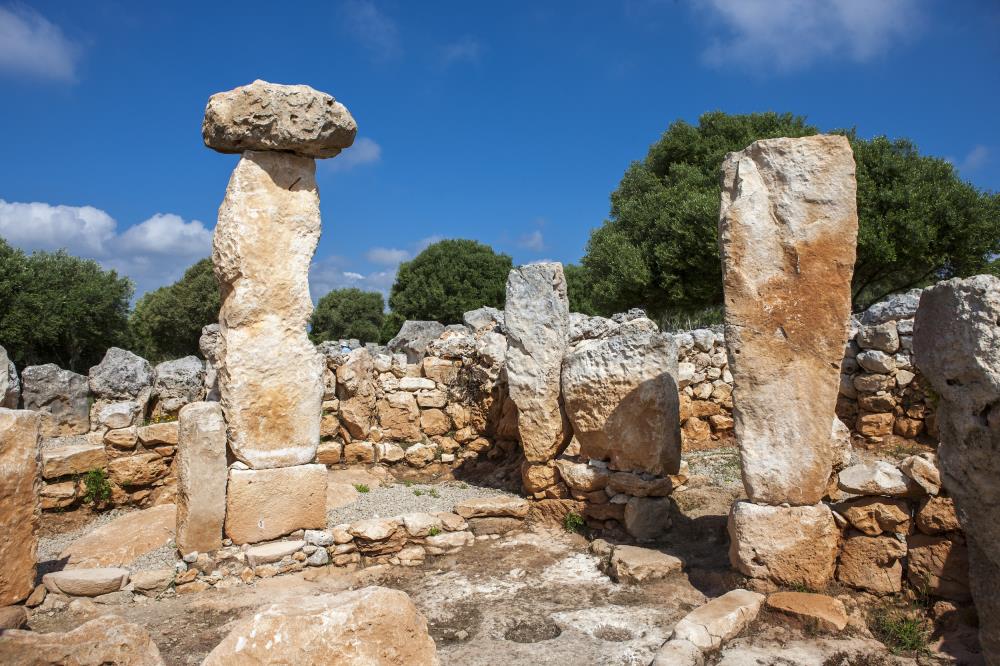 The Fundació Foment del Turisme de Menorca (FFTM) is launching, for the first time ever, guided visits to the Talayotic settlement, Torre d'en Galmés, one of the largest sites documented in the Balearic Islands. The visits are offered every Tuesday, Thursday and Sunday, at different times depending on the language, since they can be followed in Spanish, English or French. Tickets can also be purchased in their official website www.menorca.es The Fundació Foment del Turisme de Menorca (FFTM) is launching, for the first time ever, guided visits to the Talayotic settlement, Torre d'en Galmés, one of the largest sites documented in the Balearic Islands. The visits are offered every Tuesday, Thursday and Sunday, at different times depending on the language, since they can be followed in Spanish, English or French. Tickets can also be purchased in their official website www.menorca.es
During the 75-minute visit, attendees can learn more about what this site was like in a period when it dominated much of the south coast of Menorca thanks to its privileged location on a hill. Although some caves had already been occupied in the Early and Middle Bronze Age, the settlement as such was formed at the end of the Bronze Age, around 1200 BC, it reached its peak before Roman times and maintainedoccupied until medieval times.
Visitors will discover what the Talayotic’s houses were like, how they ate or what they did for a living. Formed by a large number of buildingsl such as as the circular houses, the taula enclosure, the hypostyle halls, four hypogea,its water collection system and the three talayots standing out among them all
Capacity is limited to 20 people per visit and there are special prices for children between 8 and 15 years old (free for children under 8), people over 65 and retired, and also people with functional diversity.
|
The National Geographic report on Talayotic Menorca is now available
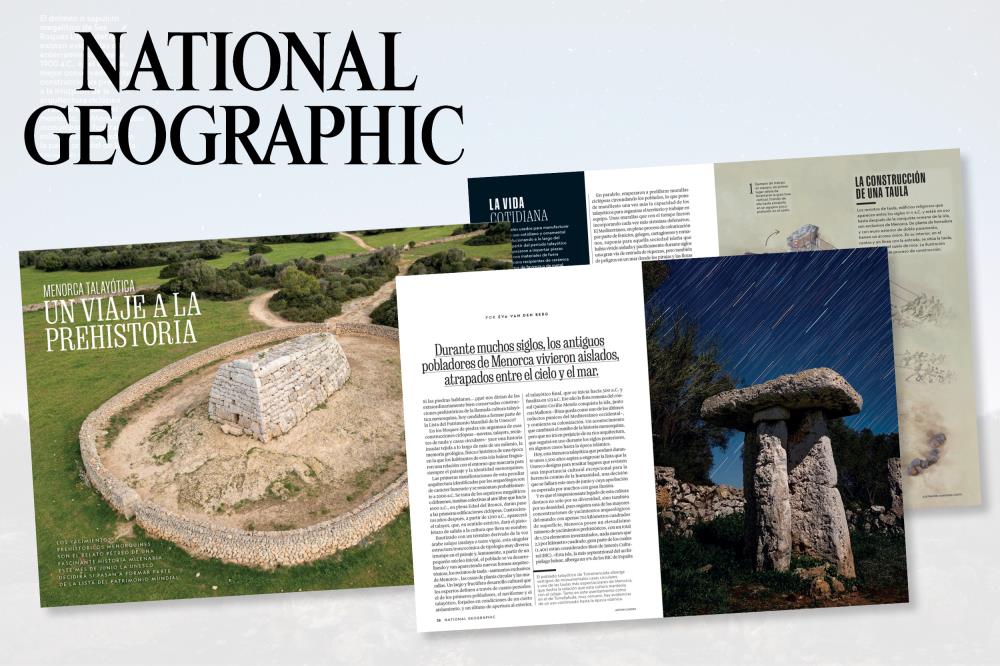 The complete report on Talayotic Menorca that stars in the National Geographic April issue is now available. The text addresses the exceptionality of the Menorcan candidacy, the evolution of the cyclopean architecture, how the ancient inhabitants of our island lived and their relationship with the cloudscape. The complete report on Talayotic Menorca that stars in the National Geographic April issue is now available. The text addresses the exceptionality of the Menorcan candidacy, the evolution of the cyclopean architecture, how the ancient inhabitants of our island lived and their relationship with the cloudscape.
To prepare this journey through Talayotic culture, National Geographic had the collaboration of the Menorcan archaeologists Margarita Orfila, president of the Ateneu de Maó; Joaquím Pons, Talayotic Menorca technician of the Consell Insular de Menorca; and Toni Ferrer, advisor to the candidacy and researcher at the Institut Menorquí d'Estudis. The coordinator of the new Talayotic Menorca file for UNESCO World Heritage, Cipriano Marín, also participated in the article.
You will find the report in related links.
|
Premiere of the Talayotic Menorca documentary at CineCiutat Palma
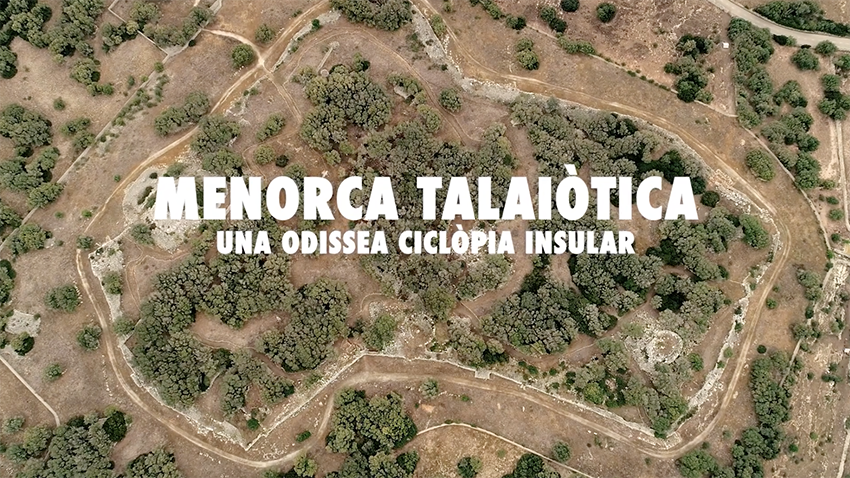 The Talayotic Menorca documentary will be presented next Monday, April 25, at CineCiutat Palma, the place of reference for the dissemination of culture and cinema in the Majorcan capital. The objective is to publicize the Talayotic Menorca candidacy for UNESCO World Heritage with a brief presentation by the vice president and Conseller of Cultural Affairs, Miquel Àngel Maria, and the screening of the documentary, with an introduction by its director, Manu Balaguer. The Talayotic Menorca documentary will be presented next Monday, April 25, at CineCiutat Palma, the place of reference for the dissemination of culture and cinema in the Majorcan capital. The objective is to publicize the Talayotic Menorca candidacy for UNESCO World Heritage with a brief presentation by the vice president and Conseller of Cultural Affairs, Miquel Àngel Maria, and the screening of the documentary, with an introduction by its director, Manu Balaguer.
The Conseller of European Funds, University and Cultural Affairs of the Balearic Government, Miquel Company; and the vice president of the Consell de Mallorca, Bel Busquets will also attend. The event will end with a tasting of Talaiòtica beer and Joaquim Pons, archaeologist and the Talayotic Menorca technician at the CIM, will explain its elaboration process which, is the result of a collaboration between the Museu de Menorca, the Talayotic Menorca candidacy and Grahame Pearce.
The Consell Insular of Menorca promoted the production of this documentary in order to support the candidacy. The aim is to encourage people to get involved in the conservation of Talayotic heritage, discover and share the candiacy’s journey through a civilization that is still alive and present in every landscape of the island.
Filmed by Espiral Producciones TV SL, “Talayotic Menorca, an insular cyclopean odyssey” was directed by Manu Balaguer, written by Laura Jurado and consulted by renowned archaeologist Amalia Pérez-Juez. This 38 minute long film is a journey through the history of our island, from Talayotic times to the present day. 17 testimonies from a diverse group of people, mostly archaeologists and a geologist, are collected to detail the story surrounding Talayotic Menorca; the owner of a deposit; and the coordinator of the World Heritage candidacy file, Cipriano Marín, among others also participate. The actress who gives voice to the documentary in Catalan and Spanish is Enka Alonso from Menorca.
- April 25: CineCiutat, Palma de Mallorca, 7 p.m.
Ticket reservation at www.cineciutat.org or at the box office.
|
The 45th UNESCO World Heritage Committee postponed
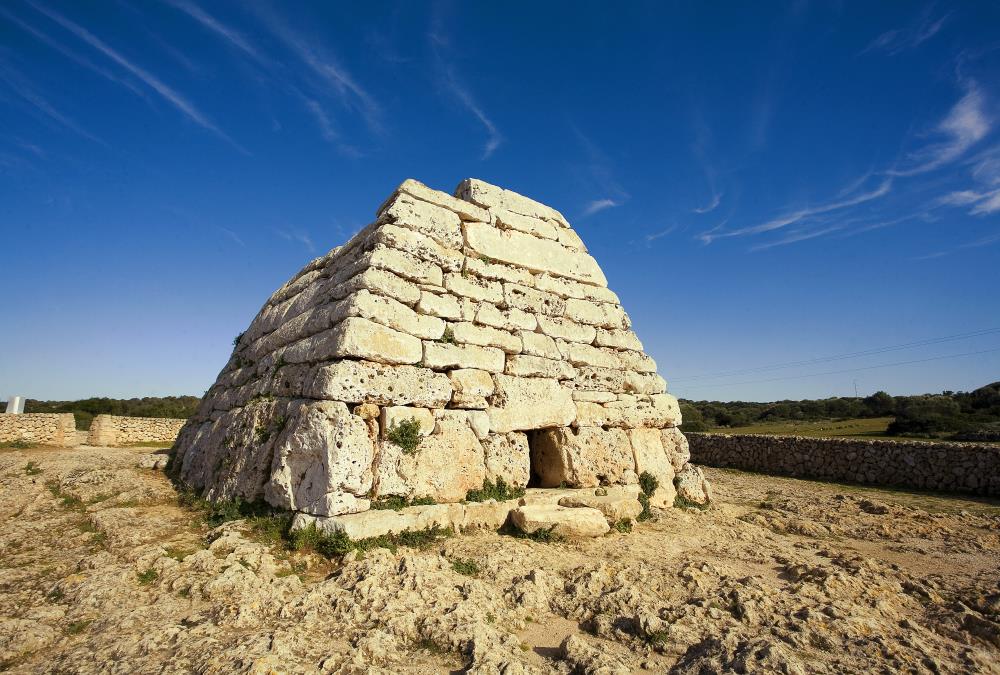 The 45th UNESCO World Heritage Committee, chaired by Russia and initially scheduled for June 19 - 30 in the city of Kazan, has been postponed. With the Russian invasion of Ukraine, this meeting, in which the inscription of the Talayotic Menorca candidacy on the World Heritage List should be decided, has been put on hold pending future outcomes. On March 15 and 16, the Executive Council of the World Heritage Committee met and, despite member countries having considered various alternatives and solutions, the meeting ended without an agreement. The 45th UNESCO World Heritage Committee, chaired by Russia and initially scheduled for June 19 - 30 in the city of Kazan, has been postponed. With the Russian invasion of Ukraine, this meeting, in which the inscription of the Talayotic Menorca candidacy on the World Heritage List should be decided, has been put on hold pending future outcomes. On March 15 and 16, the Executive Council of the World Heritage Committee met and, despite member countries having considered various alternatives and solutions, the meeting ended without an agreement.
Faced with the stagnation and worsening of the war in Ukraine, the representatives of forty-six member countries of the World Heritage Convention, including Spain, signed an open letter in early April stating that they wouldn't attend the 45th session of the World Heritage Committee if it was held in Russia, and that they wouldn’t attend if it was held in another country but under the Russian presidency.
Lastly, on April 19, the permanent delegate ambassador of Russia to UNESCO, Alexander Kuznetsov, in his capacity as current president of the Executive Council of the World Heritage Committee, sent a letter to all the members of this council notifying the postponement of the 45th session of the World Heritage Committee, initially scheduled for June 19-30. In this communication, he didn’t specify any deadline or alternative solution to celebrate the Committee, and indicated that if he didn’t receive a response before April 21 at 1:00 p.m., he would understand that everyone agreed with this decision.
Considering this situation, all the member states of the European Union have unanimously decided not to respond to this letter, considering that for now the postponement of the 45th session of the Committee is the most pragmatic solution.
The Vice President and Conseller of Cultural Affairs of the Consell Insular de Menorca, Miquel Àngel Maria, considers that this decision, although foreseeable, is still painful, first and foremost because of the suffering that the victims of the war have to endure. And secondly, because it means that the inscription of Talayotic Menorca on the World Heritage List will have to keep waiting.
It must be said that this news doesn’t affect the evaluation process of the Menorcan candidacy by ICOMOS, which is already underway and in its final stages. In accordance with the Practical Guidelines for the Application of the UNESCO World Heritage Convention, a mandatory reference guide, the final report from ICOMOS must be sent six weeks before the start of the session of the World Heritage Committee.
This means that if the call for Kazan had been maintained, the final report on the Talayotic Menorca candidacy and the recommendation for registration on UNESCO would have been known at the beginning of the second week of May. Now, with the postponement of the 45th session of the World Heritage Committee, it is most likely that ICOMOS, following the established procedures, will wait to send the final report until a new date has been set for this decisive meeting.
In this regard, Miquel Àngel Maria indicated that the candidacy’s work is complete and that all that remained was to wait for the aforementioned final report from ICOMOS. With the prudence with which he has expressed himself whenever asked about Talayotic Menorca’s possibilities, Maria is still satisfied with the work done, maintaining the positive feelings about the final outcome expressed after the evaluation meetings held with ICOMOS.
Maria concludes that a new call for the 45th session would be the best news to culminate the long road of Talayotic Menorca’s candidacy, with the hope that it would also mean the return of peace, freedom and stability for Ukraine and the world.
|
“Sitjot's new book is a first contact with Talayotic culture for the younge ones”
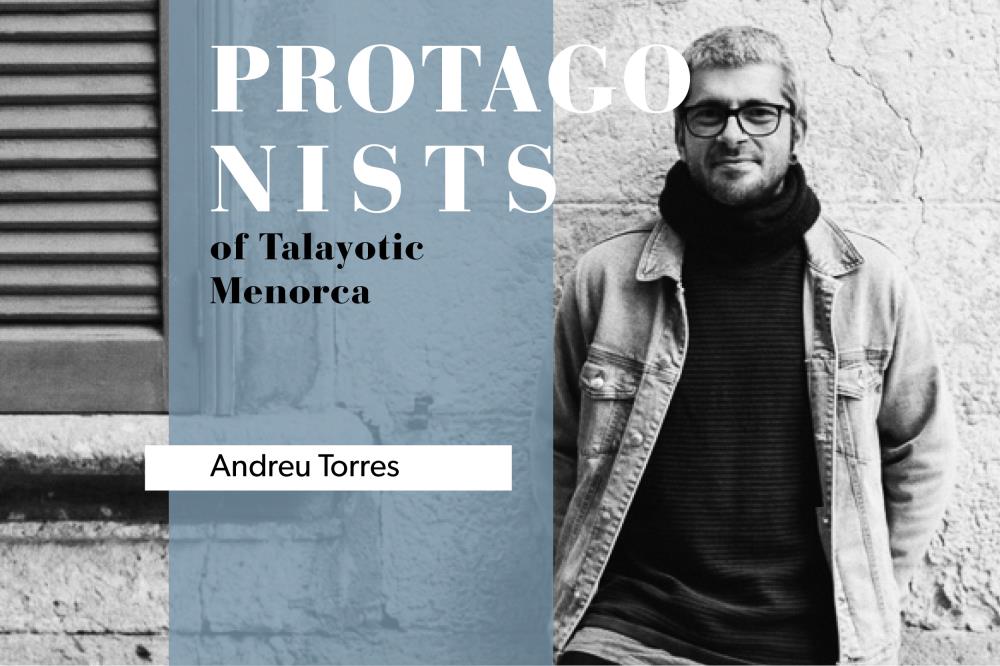 Andreu Torres is an illustrator and archaeologist. With a degree in History from the University of Girona and a master's degree in Archeology and Humanities Research from the same center, he specialized in historical-archaeological illustration at the University of Alicante. This May he will present his new work: Get to know Menorca's past with Laia and Tau, the first children's book in the Sitjot collection, edited by the Consell Insular de Menorca to spread the word about Talayotic culture and Menorcan historical heritage. Andreu Torres is an illustrator and archaeologist. With a degree in History from the University of Girona and a master's degree in Archeology and Humanities Research from the same center, he specialized in historical-archaeological illustration at the University of Alicante. This May he will present his new work: Get to know Menorca's past with Laia and Tau, the first children's book in the Sitjot collection, edited by the Consell Insular de Menorca to spread the word about Talayotic culture and Menorcan historical heritage.
Before talking about the new book, let's start with your story. How did you get into the world of archeology and illustration?
During my History degree I discovered archaeology; I participated in excavation campaigns at university and it was at that moment that I felt attracted by this whole world.
Historical-archaeological illustration is something I've been doing for four or five years. Since I was little I liked to draw, and when I immersed myself in the world of archeology I tried to draw how the things I excavated or visited could be like. Today it has become my job!
Are you specialized in the study of a specific era?
I am not really specialized in any particular era, but, through the excavations I have carried out and my own interest, I could say that I get along very well with the Talayotic and Roman eras, especially the late-republican and imperial periods. And outside of the archaeological world, I'm also very interested in the World War II era.
What fascinates you most about Talayotic culture?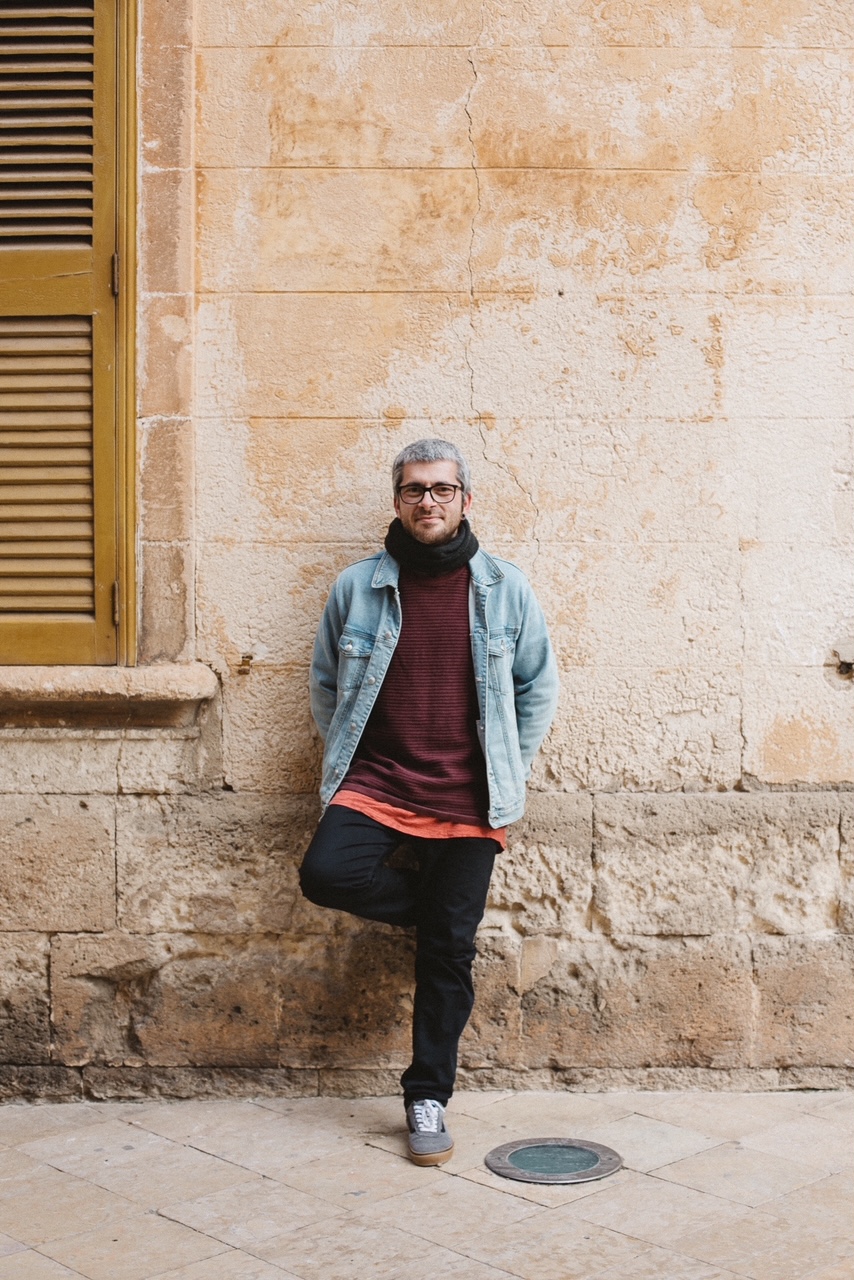
Well, without getting into topics such as the monumentality of the great stones, which are later very difficult to remove during the excavations, what fascinates me about the Talayotic culture is that, at a time when the rest of the societies that surrounded them used writing, they haven’t left us anything written down (at least not until now). Therefore, they’ve forced us to understand their way of living only through their material remains, without any clues about how to interpret anything. This often makes us archaeologists have to use our imagination for too many things.
A book about Talayotics
This April Get to know Menorca's past with Laia and Tau, the new children's book from the Sitjot collection, will be launched. How was this project, which you have elaborated both the texts and the illustrations for, born?
For a long time I wanted to make a small book to approach Talayotic Menorca to the young ones. I believed that there weren’t many things about Menorca’s archeology that could reach this audience. Most texts related to archeology are articles or books that, even for us, are too heavy. With this in mind, and through the Cultural Rescue program, I made a proposal to the Consell Insular de Menorca to do this book with some simple texts, many illustrations and photographs and, above all, accompanied by two characters: Laia, an archaeologist, and Tau, a Talayotic boy.
What will young readers find in this book?
Well, it will be a first contact with the Talayotic culture, from the first settlers to the conquest of the island by the Roman army. A journey through all of Menorcan prehistory accompanied by Laia and Tau. Kids will learn how they lived, what they ate, where they buried their dead and many more curiosities.
Archaeological illustrations
What’s the process of elaborating archaeological illustrations like? What is reality and what is fiction in this type of work?
It is a process with different phases. The first thing is to seek information about the society being represented or the buildings to be restored and place it within its historical and archaeological context. This allows us to understand the interpretations that archaeologists have made about the site and, therefore, to establish some initial ideas for the illustration. The second phase would be to make sketches, where the main elements that we will highlight in the illustrations are established.
About what is reality and fiction, depends on many things, such as the understanding that we have about the site and the society that lived there, or if there are historical sources that speak about the elements to be illustrated. We can even draw inspiration from a ceramic decorations, reliefs, sculptures, etc. There are things that are impossible to know if we don’t have any of the references that I previously metioned, but if you draw inspiration on parallels or just from your imagination they can look credible, like hairstyles!
And what difficulties do you encounter when translating scientific knowledge, in this case archaeological knowledge, into an image?
The most complicated thing for me, depending on the era to be illustrated (such as the Talayotic or those in which there is no visual information), is to reproduce the environment, the essence of the scene. We can know about many things, such as architecture, clothing, materials, but it’s difficult, I think, to be able to imagine what day to day life was like, what the environment was like inside a Talayotic house: was there a lot of smoke? How were things arranged? One of the tricks we use is to look for societies that have graphic material, either through their art or written information, and we treat them as parallels for our illustration.
Another complicated thing is to find a way to create images that puts the greatest amount of information at the viewers fingertips. Sometimes we must seek a combination of different techniques to provide complete information on, for example, a building. In this case, we can create openings that would be totally implausible in reality, so that the viewer can see what its interior was like.
 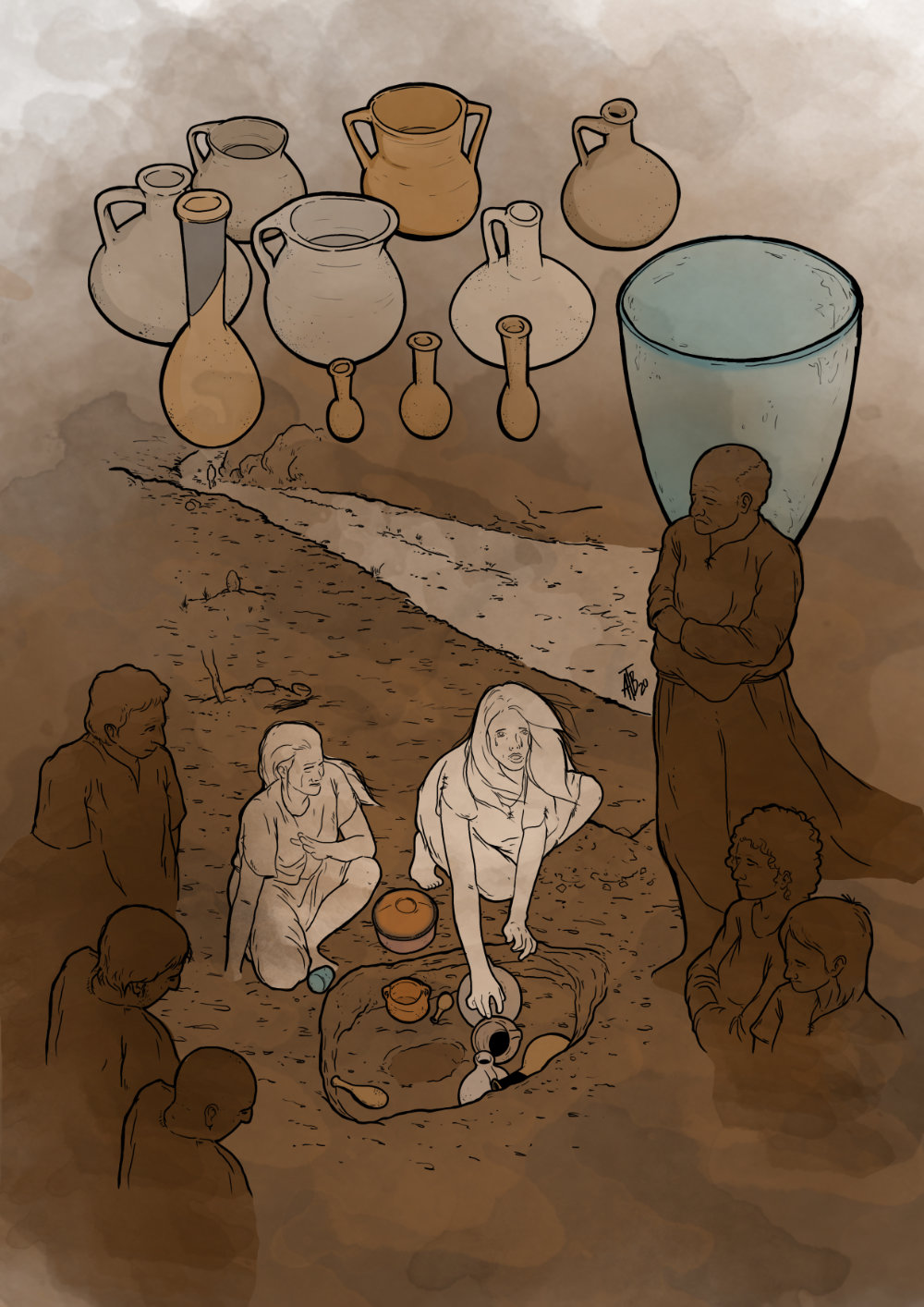  Apart from the new Sitjot book, what other works related to Talayotic culture have you illustrated?
Apart from the new Sitjot book, what other works related to Talayotic culture have you illustrated?
As I mentioned before, about four years ago I began to practice historical-archaeological illustration, and since then I have been able to make several illustrations for the archaeological sites on the island, as well as illustrations for some publications. But for now, what I am happiest about is having been able to illustrate the new permanent exhibition at Can Saura, which I hope we can see soon!
We’ll be sure to go. And what other projects do you have underway?
Right now I have two projects: one for an exhibition at the Museu de Menorca and another for historical-archaeological recreation in Galicia. Also, with Bruno Parés we have a 3D restitution and illustration project underway that we hope we can show soon.
|
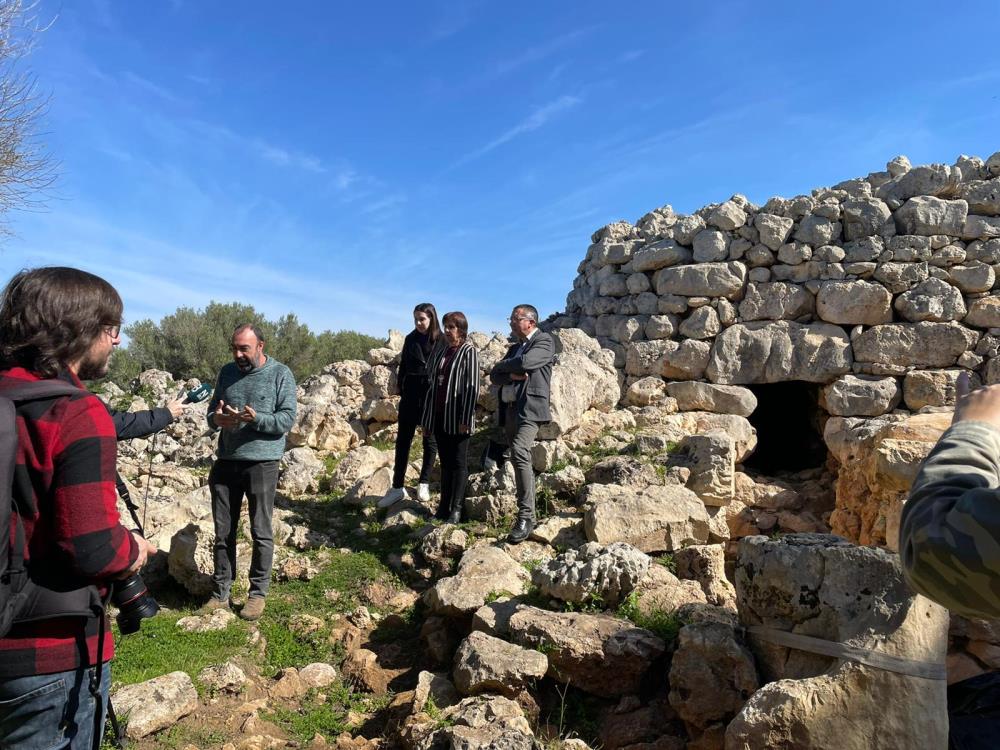
The Sant Agustí Vell Archaeological Project closes its fifth excavation campaign
¿¡[AQUI]¡¿The Sant Agustí Vell Archaeological Project has closed its fifth excavation campaign with a presentation today, April 8, of the latest advancements. The excavation was carried out by the Associació Arqueologia i Patrimoni under the direction of Damià Ramis, Montserrat Anglada and Ismael Moll Pelegrí; and had the support of the Consell Insular de Menorca, the Migjorn City Council and the ASMAR-Catalina Seguí Foundation. Ramis and Moll were in charge of exposing the results, with the presence of the Vice President and Conseller of Cultural Affairs, Miquel Àngel Maria; and the mayor of Es Migjorn Gran, Antonia Camps, among other authorities.
Sant Agustí Vell is located in Component 4, formed by the Talayotic settlements of the southern ravine area of Menorca. Among the nine territorial areas or components that make up the new candidacy of Talayotic Menorca, this is the one with the highest number of archaeological sites. During the months of October and November 2021, the excavation works focused on the room attached to the South Building of the Eastern complex of the site, where we find the large talayot which still shows its original wild olive wooden beams that are more than 3000 years old.
Right now, the team can advance some conclusions about the ongoing excavation:
- It’s clear that the space around the South Building suffered a late occupation during the Iron Age, which lasted until approximately 300 BC. The archaeologists can state that thanks to the typology of the imported ceramics recovered both in the access corridor to the talayot, as in the demolished levels of the exterior room attached to the facade of the South Building.
- The character of this occupation is clearly domestic, according to the recovered materials. It seems that the corridor of the building gave access to the talayot interior, although its purpose is not 100% confirmed. Due to the large number of amphora fragments found, mainly from Ibiza, it’s possible that it became a dunghill once the space lost its original function. The other hypothesis is that the remains discovered came from inside the talayot or from other rooms in the building used as storage areas.
- On the other hand, different fragments of molons (local name for the moving parts of swaying mills) have been recovered, as well as a stone mortar. With the amount of cereal seeds recovered during the sifting of the sediment from the excavation, the archaeologist think that this space could have been related to the processing of these seeds to transform them into food, perhaps community work. The results of the analysis of both the seeds and the carbons, as well as the study of the fauna, are still missing. All these studies will provide new data that will help us better understand the human communities that inhabited Sant Agustí at the end of the Talayotic period.
- A 3D model of the excavation area is also being prepared.
The excavation of these spaces in the building, of the access corridor to the talayot and the previous room, is revealing the building’s majesty with architectural structures of great monumentality. The finishing of the facade is impressive: in the middle of it, there is a central corridor that still retains the roof. This entrance has the form of a porch, an architectural solution never seen in Balearic prehistory until now.
This year ends the first five-year project, but the most interesting part of the archaeological excavation will be carried out in the coming years: digging inside the building, which seems to preserve the roof. First, it will be necessary to dig from the outside to be able to access and discover the possible entrances.
|
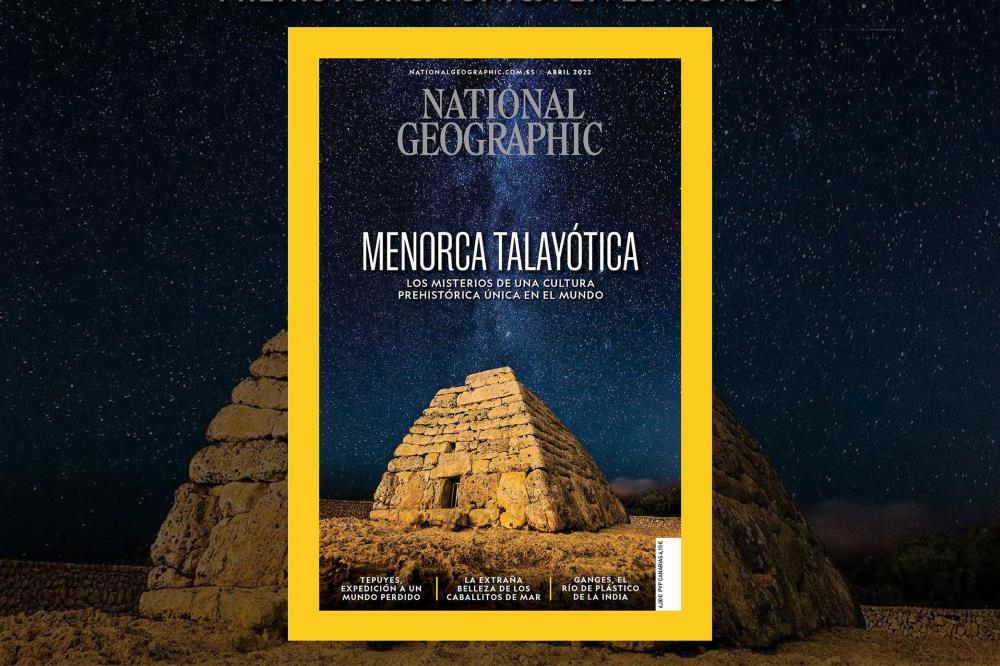
Talayotic Menorca stars in the National Geographic April issue
¿¡[AQUI]¡¿Talayotic Menorca stars in the National Geographic April issue, already on sale since March 24, occupying its cover and an impressive 20-page interior report. With the title “Talayotic Menorca. A trip to prehistory”, the journalist Eva Van Den Berg tells the thousand-year-old story of Talayotic culture, just a few months before it is finally decided whether or not Talayotic Menorca enters the UNESCO World Heritage List. This publication, a National Geographic initiative, will undoubtedly contribute to expanding outreach about the candidacy in Spain.
A spectacular nocturnal image of the Naveta des Tudons on the cover, taken by the photographer Sebas Iturralde, invites readers to delve into the mysteries of a unique prehistoric culture in the world. In the interior pages, there is an extensive report that addresses the exceptional nature of the Talayotic Menorca candidacy, the evolution of the cyclopean architecture, what the ancient inhabitants of our island were like, how they lived and their relationship with the stars.
To prepare this journey through Talayotic culture, National Geographic had the collaboration of the Menorcan archaeologists Margarita Orfila, president of the Ateneu de Maó; Joaquím Pons, Talayotic Menorca technician of the Consell Insular de Menorca; and Toni Ferrer, advisor to the candidacy and researcher at the Institut Menorquí d'Estudis. The coordinator of the new Talayotic Menorca file for UNESCO World Heritage, Cipriano Marín, also participated in the article.
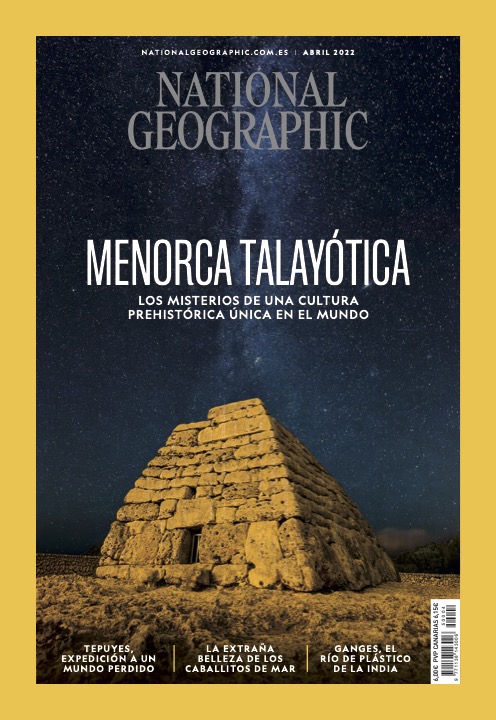 National Geographic is one of the most prestigious magazines in the world, and has some of the best journalists and photographers as contributors. Specialized in outreach topics, the quality of its content is endorsed by great experts in disciplines such as archaeology, biology or anthropology. National Geographic Spain will celebrate its 25th anniversary this year. National Geographic is one of the most prestigious magazines in the world, and has some of the best journalists and photographers as contributors. Specialized in outreach topics, the quality of its content is endorsed by great experts in disciplines such as archaeology, biology or anthropology. National Geographic Spain will celebrate its 25th anniversary this year.
You can read the full article here.
|
“Talaiòtics i Myotragus”, the role-playing game to discover Talayotic Menorca
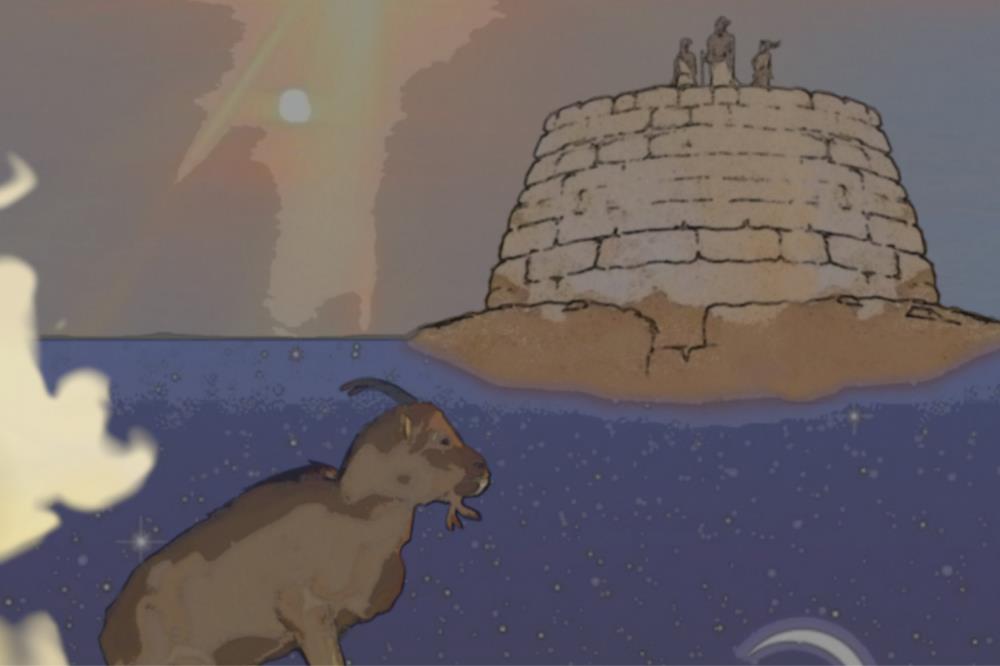 “Talaiòtics i Myotragus” is the new role-playing game to discover Talayotic Menorca that will take place on April 2 in Trepucó, April 9 in Torre d'en Galmés, and April 30 in Son Catlar, from 10:30 a.m. to 1 p.m. This family activity is organized by the Consell Insular de Menorca together with the Juga Cultura company, and is part of the Talayotic Menorca Communications Plan to value and spread Talayotic culture. “Talaiòtics i Myotragus” is the new role-playing game to discover Talayotic Menorca that will take place on April 2 in Trepucó, April 9 in Torre d'en Galmés, and April 30 in Son Catlar, from 10:30 a.m. to 1 p.m. This family activity is organized by the Consell Insular de Menorca together with the Juga Cultura company, and is part of the Talayotic Menorca Communications Plan to value and spread Talayotic culture.
With an approximate duration of 2 hours and 30 minutes, a maximum of 25 people per day can participate in this activity (adults and children from 8 years old). Participants will discover what our ancestors lifes were like with this original role-playing game. The aim is to create awarness about Talayotic culture: the different constructive elements; each person’s role and their contribution to the village; social hierarchies; how the talayotics organized and related with eachother; and how they defended themselves against possible dangers from the outside world. Strategy, imagination, competitive spirit and communication skills will be key winning the game.
Story of the game
It is the year 500 BC, we enter the last period of the Talayotic era. In the past few days, events never seen before have been happening in town. Although humans think that the Myotragus are extinct, the reality is that a small group has managed to survive all that time hidden from humans. This group of surviving Myotragus, increasingly reduced in numbers, try to carry out a plan to finish the Talayotics off and thus avoid their own final extinction. With the help of the priestess, the Myotragus have acquired the ability to pass themselves off as Talayotics, poisoning the humans one by one throughout the night. The poison is made from Amanita Phalloides, one of the deadliest mushrooms on the island. During the day, the Talayotics will decide in assembly, unmasking the real identity of the Myotragus. Will the Myotragus succeed in poisoning all the Talayotics? Or will the Talayotics discover the Myotragus in time?
The participants will be divided into two groups: the Talayotics and the Myotragus, faced by the survival of the latter. The activity will take place in two parts:
- In the first place, there will be a tour of the site, while the history of the game is narrated and the different architectural elements, life and customs of the Talayotic period are explained. In this part, the characters that will later be used in the game will be discovered.
- The second part is the development of the role-playing game. It will be played with all the participants sitting in a circle, and each one will play the role that has been randomly assigned to them with a card.
“Talaiòtics i Myotragus” combines scientific hypotheses with imagination and fantasy. At all times, participants will be reminded of which part is reality and which part is fiction using visual elements.
The cost of this activity is assumed by the Department of Cultural Affairs of the Consell Insular de Menorca. Capacity is limited, prior registration is required at jugacultura@gmail.com or via whatsapp at 676 83 60 21, indicating the name and age of each participant, and contact telephone number.
|
Becatalaiotica 2022 has begun
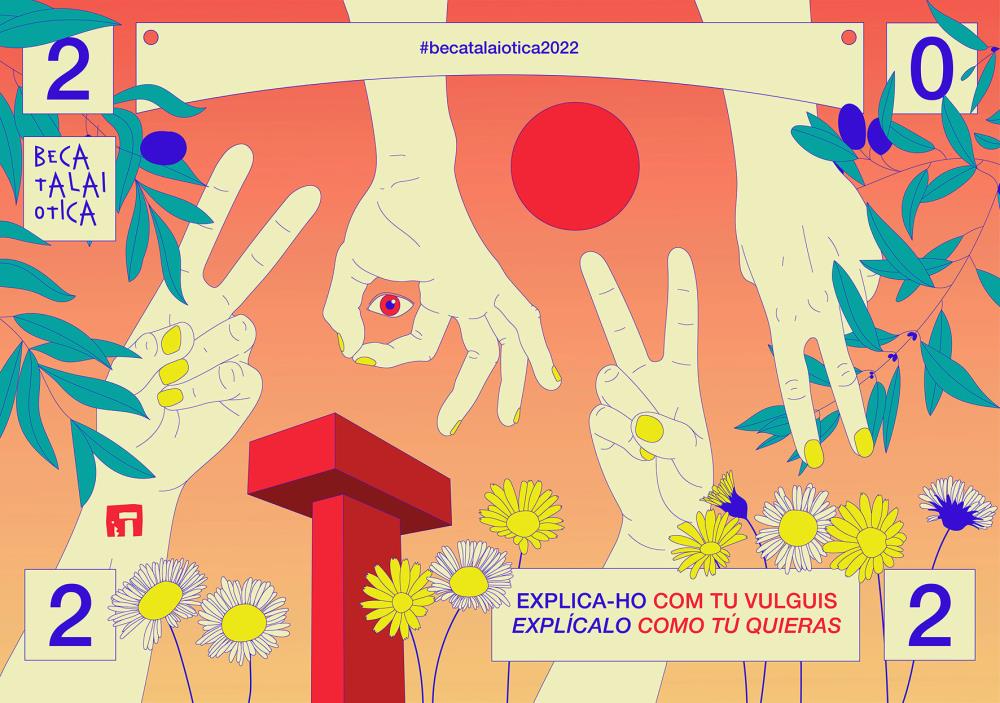 The sixth edition of the Becatalaiotica 2022 cultural contest is already underway and registration will remain open until May 23 at 11:59 pm. The competition has the goal of giving visibility to young talent, reclaiming the inspiring value of the Menorcan landscape and promoting the Talayotic Menorca candidacy for World Heritage among new audiences. The best valued proposal will win a € 2,000 scholarship. The sixth edition of the Becatalaiotica 2022 cultural contest is already underway and registration will remain open until May 23 at 11:59 pm. The competition has the goal of giving visibility to young talent, reclaiming the inspiring value of the Menorcan landscape and promoting the Talayotic Menorca candidacy for World Heritage among new audiences. The best valued proposal will win a € 2,000 scholarship.
This project, an initiative of Amics del Museu de Menorca, has had the support of the Consell Insular de Menorca from the beginning. Students from any field, who are between 18 and 28 years old, resident in Spain, can participate. They must fill out and send a registration form that can be found here: https://linktr.ee/Becatalaiotica.
The contest
Among all the forms received, a jury of professionals linked to the cultural heritage, teaching, Fine Arts and communication of Menorca will be in charge of evaluating and scoring the proposals. There will be 10 participants who will go on to a second phase, which will consist of shaping an event proposal at one of the Talayotic Menorca sites, with the tutoring of the members of the Becatalaiotica team.
All fields of study and means of expression are valid, as long as it maintains some relationship with Talayotic Menorca: scientific and/or cultural dissemination, dance, interpretation, monologues on any subject...
The five event proposals that both the jury of experts and the members of the organization consider the most original and obtain the best scores, will be showcased in Menorca. The participants will have to stage their proposal during the months of September and October at one of the Talayotic Menorca sites.
The assisting audience is a crucial part in evaluating the originality, content and evocative power of each proposal. The finalist who achieves the best evaluation will be granted a 2.000 € scholarship.
For more information: beca@menorcatalayotica.info or tel. 617 840 204.
|
Premiere of the Talayotic Menorca documentary at the Firenze Archeofilm 2022 festival
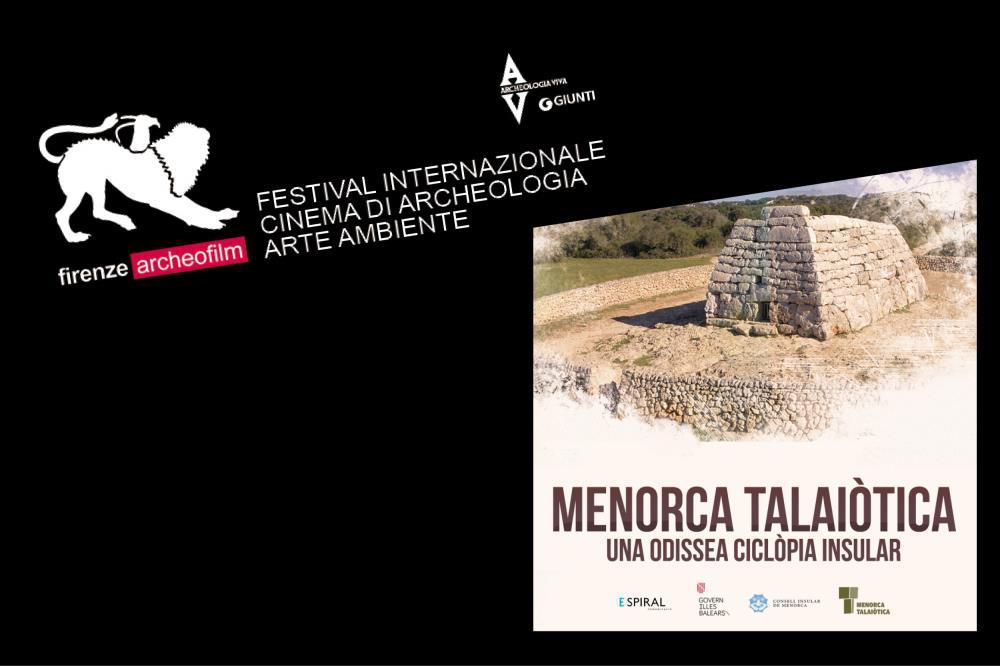 The documentary will be presented this Friday for the first time outside of Menorca during the Firenze Archeofilm festival, the international archaeology, art and environmental film festival that is being held until March 6 in Florence, Italy. For this premiere, the festival organizers themselves have made an Italian version of the documentary. More than 60 film productions from 14 nationalities are participating in this meeting, one of the most important in Europe. The documentary will be presented this Friday for the first time outside of Menorca during the Firenze Archeofilm festival, the international archaeology, art and environmental film festival that is being held until March 6 in Florence, Italy. For this premiere, the festival organizers themselves have made an Italian version of the documentary. More than 60 film productions from 14 nationalities are participating in this meeting, one of the most important in Europe.
Firenze Archeofilm has three awards to which the Talayotic Menorca documentary can aspire: The "Firenze Archeofilm 2022" public choice award; “Università di Firenze” award, chosen by a jury of professors from the University of Florence; and the “Museo e Istituto Florentino di Preistoria Paolo Graziosi” award for the best prehistoric archeology film, chosen by a jury of experts.
The Consell Insular of Menorca promoted the production of this documentary in order to support the candidacy. The aim is to encourage people to get involved in the conservation about Talayotic heritage, discover and share the candiacy’s journey through a civilization that is still alive and present in every landscape of the island.
Filmed by Espiral Producciones TV SL, “Talayotic Menorca, an insular cyclopean odyssey” was directed by Manu Balaguer, with a script by Laura Jurado with the consultation of renowned archaeologist Amalia Pérez-Juez. This 38 minute long film is a journey through the history of our island, from Talayotic times to the present day. 17 testimonies from a diverse group of people, mostly arqueologists and a geologist, are collected to explain the story surounding Talayotic Menorca; the owner of a deposit; and the coordinator of the World Heritage candidacy file, Cipriano Marín, among others also participate. The actress who gives voice to the documentary in Catalan and Spanish is Enka Alonso from Menorca.
Screenings continue in Menorca
The cycle of screenings in Menorca continues on March 10 in Llucmaçanes and on the 11th in Ciutadella. The objective is to publicize the content of the new candidacy among a wider audiance. The Vice President and Conseller of Cultural Affairs, Miquel Àngel Maria will give a brief presentation before the screenings of the documentary. The events will end with a tasting of the Talaiòtica beer by Roger Vila, who developed this beer with the collaboration of the Museu de Menorca, the Talayotic Menorca candidacy and Grahame Pearce.
- March 10: Llucmaçanes, church of Sant Gaietà, 7 pm
Capacity is limited, it is necessary to register in advance by sending your name and telephone number to: sajunta@gmail.com
- March 11: Ciutadella, Teatre des Born, 8 pm
Tickets available at www.teatredesborn.com
In order to ensure an orderly entrance without crowds, attendees are requested to arrive 20 minutes before the start of the event.
|
"The Museu de Menorca must be the door to learn about the fascinating Talayotic culture”
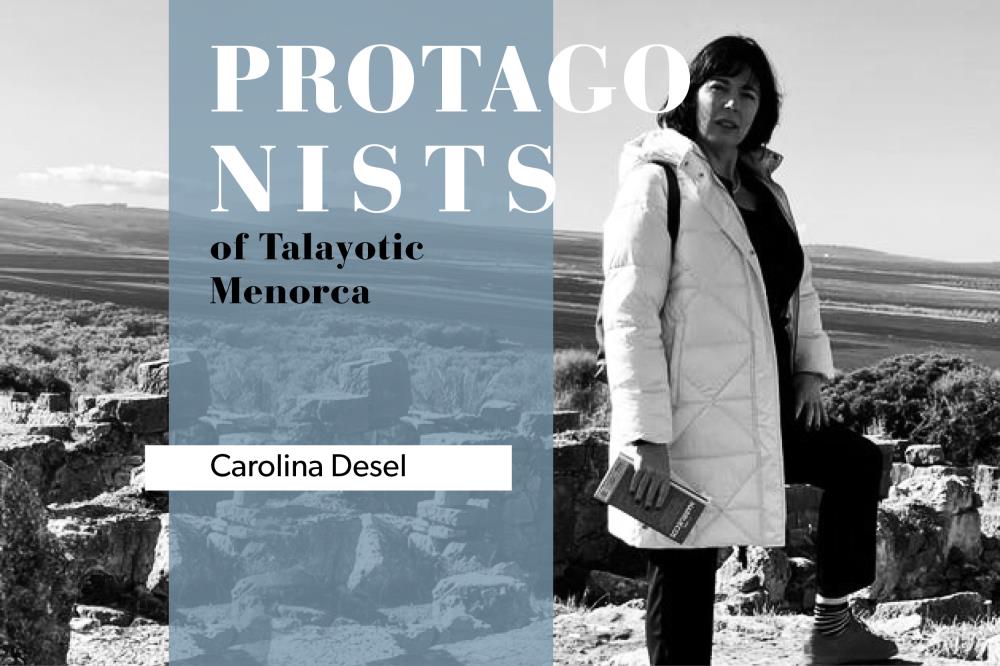 Carolina Desel González has been the director of the Museu de Menorca since 2014, when she replaced the archaeologist Lluís Plantalamor in the post. With a degree in Art History and a master's degree in Museology, under her direction this cultural institution started on a new path with the aim of opening the museum to the public and reinforcing its more didactic aspect. As one of the most emblematic museum spaces on the island, the Museu de Menorca acts as guardian of the greatest treasures of Talayotic material culture. Carolina Desel González has been the director of the Museu de Menorca since 2014, when she replaced the archaeologist Lluís Plantalamor in the post. With a degree in Art History and a master's degree in Museology, under her direction this cultural institution started on a new path with the aim of opening the museum to the public and reinforcing its more didactic aspect. As one of the most emblematic museum spaces on the island, the Museu de Menorca acts as guardian of the greatest treasures of Talayotic material culture.
Let's start by knowing a little more about your career. What drove you to Museology?
I studied Art History and my favorite subjects in class were about museology and dissemination of heritage. When you finish, you ask yourself what else you want to do, so I did a master's degree in Museology. I have always really liked the didactic aspect, being a bridge between art and people. Someone has to translate art, culture and history to the public. I’ve always liked this role.
You have made your passion into your profession. How did you arrive to the Museu de Menorca?
I was the director of the Vall d’Aran Museum, in Viella. For personal reasons, we came to live in Menorca and I found out that Lluís Plantalamor, the former director of the museum, was retiring. I presented my candidacy and proposal to Maruja Baíllo, who was the consellera of Cultural Affairs at the time, and she gave me the opportunity to be the director. And Miquel Àngel Maria, the current conseller of Cultural Affairs, gave me his confidence again and here we are, directing the museum since 2014.
What weight does the Talayotic culture have in the Museu de Menorca’s collection? What will the visitor interested in learning about this historical period find?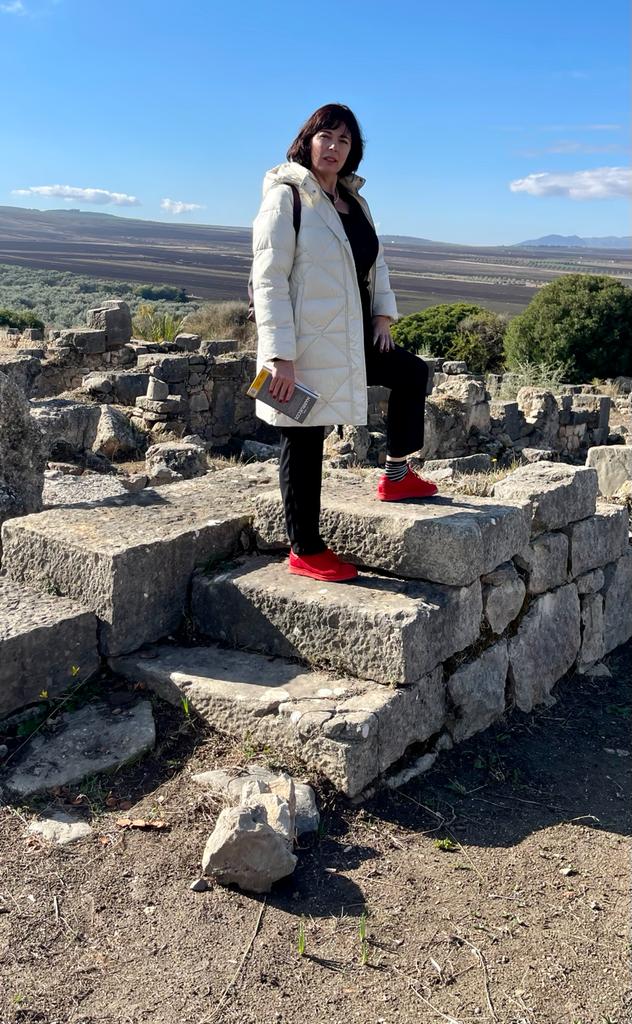
If we talk about figures, the total collection of the museum has approximately 250,000 pieces and perhaps 80% are from Menorca’s prehistory, not only from the Talayotic culture.
We show Menorca’s prehistoric times from different points of view: how they lived, what they ate, how they worked, how they conceived death and how they were buried... All these daily aspects that we know through archeology and the studies that surround it is what we have tried to capture in the first two exhibition halls of the museum. For us, prehistoric times are, together with the 18th century, one of the most unique areas of the mueseum and are the ones that arouse the greatest interest.
Some of the most important treasures of Talayotic culture are preserved in the museum. How many pieces are there currently from this period? And from your point of view, which are the most relevant?
In the permanent exhibition there are approximately 600 pieces. When we carried out the 2018 reform, we tried to ensure that all the pieces that were exhibited had good reading conditions, that is, that they were more complete pieces and that they served to tell the stories behind them: how people lived at that time.
As for the most relevant, for me is everything related to the funerary ritual of hair. We have a braid, a tube where the hair of the dead was deposited, combs…; I think they are the most interesting pieces because very few have been preserved and it is a unique ritual in prehistory. Then I would also highlight everything related to food production, the large number of “molons” (local name for the moving parts of swaying mills) that we have in the collection.
Staying faithful to the idea of ??bringing Talayotic culture closer to the public, the museum has launched such original initiatives as the creation of the Talaiòtica beer. How did this joint initiative come about with the Talayotic Menorca candidacy?
It all started with the first intervetions in the sa Mola hypogeum, where we found 50 high-bottomed cups, together with the 400 cups we already had from the Flaquer collection, so we decided to analyze them. The cups are unique pottery samples in Menorca, which have only been found on this site and have never been analyzed with a scientific basis. They were analyzed at the University of Granada and at the Milà i Fontanals Institute in Barcelona, ??and it was concluded that these cups had contained a concoction similar to beer. So we contacted Grahame Pearce, brewers from Sant Climent, and together with the initial analytics and others that had been done on the use of plants at the time, we started testing. It was a sort of experimental archaeology. We liked the result a lot and decided to market it together with the Talayotic Menorca candidacy. It has been very well received by the public. What was originally a purely experimental archeology initiative has ended up on the streets. It is a 0 km product and made by people from Menorca, similar to what the Talayotics would have done.
What activities related to Talayotic culture does the museum have scheduled for this year?
We are doing activities around the current temporary exhibition, because it is the way of doing new activities. We want to give people the opportunity to discover new aspects of Menorca’s culture. However, Talayotic culture and the prehistory of the island are one of our mainstays. Apart from the excursions we do, we have the piece of the month, we organize conferences on Talayotic culture... This year we will talk a lot about the importance of the bull within Talayotic culture, one of the divinities. One of the most interesting excursions we will do is to Son Olives, which has never been done before, an interesting and still quite unknown site.
Precisely the excavations in the hypogeum of sa Mola are part of the museum’s important research projects on Talayotic culture, together with those of Cornia Nou. What are the main advances of the 2021 campaign?
In the sa Mola hypogeum what was done last year was more of an extraction campaign; we already knew we would find a lot of material. About sixty high-bottomed cups and other types of pottery appeared. It was decided that this year there would be no excavation campaign, but rather micro-excavations, which will be carried out in the laboratory, where we will analyze all the pieces that were extracted.
Cornia Nou is one of the excavations that has currently provided the most relevant news, because carbon-14 tests were carried out by European universities that have changed how we considered the chronology of Menorcan prehistory to be.
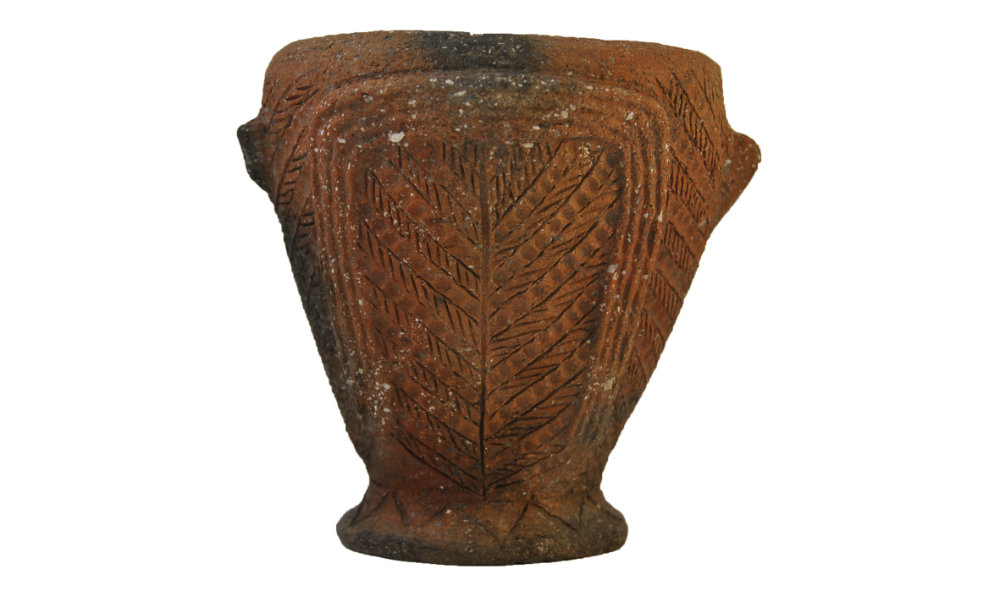 As we mentioned, in addition to the social and educational aspect, the museum has important research projects underway, such as underwater archaeological surveys of the Menorcan coast. The excavation campaigns in the Binissafúller wreck, that were carried out between 2006 and 2016, are an example. What do you have planned for this year related to underwater heritage? As we mentioned, in addition to the social and educational aspect, the museum has important research projects underway, such as underwater archaeological surveys of the Menorcan coast. The excavation campaigns in the Binissafúller wreck, that were carried out between 2006 and 2016, are an example. What do you have planned for this year related to underwater heritage?
In this field, we have been collaborating a lot with Amics del Museu, because Octavi Pons, one of our archaeologists, is an underwater archaeologist.There is nothing new planned for this year; we will just be keeping an eye out. We have to be very careful with this heritage, it is very delicate and susceptible to looting. The last big campaign we did was before the pandemic, 2019, when we worked with the Universitat de Catalunya in Calescoves Bay. Recently, we collaborated in the last dredging of the port of Maó. There is less awareness about underwater heritage and all the work involved in the restoration of a piece extracted from the sea is extremely important for the museum's restorers.
This year is key for Talayotic Menorca candidacy. What role should the museum play keeping in mind Talayotic Menorca possible inscription on the World Heritage List in June?
The Museu de Menorca and the one in Ciutadella are where all the pieces that are recovered from the excavations are kept. Therefore, we take care of Talayotic cultures’ material legacy. We like to think that we are the gateway to this culture, because we explain what the Talayotic people were like, how they lived, what they did, how they died. Once impregnated with this culture, when you go and see the sites you will surely understand much more. We have models that describe the architecture of the time, which helps in understanding this world. Throughout the entire process of the candidacy, we have given both our technical and moral support, and we are in the advisory bodies itself. If in June we obtain the declaration, the museum must be the gateway to get to know this fascinating culture. Welcoming visitors and researchers to study the objects, that is our role.
|
Conseller Miquel Àngel Maria appointed president of the Talayotic Menorca Agency
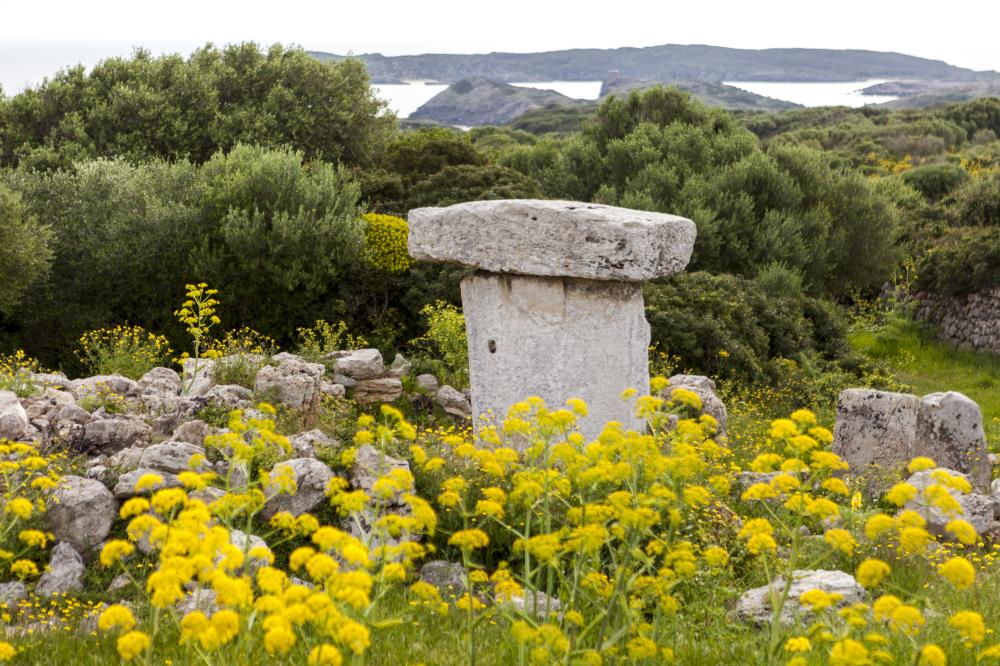 The Vice President and Conseller of Cultural Affairs, Miquel Àngel Maria, was appointed yesterday, February 14, as President of the new Talayotic Menorca Agency. The president of the Consell Insular, Susana Mora, has delegated this function to him because of the powers he holds over matters of historical heritage. The Plenary Session of the Consell Insular de Menorca approved the constitution and bylaws of the Agency in the extraordinary session on January 31, a specialized organization dependent on the Consell Insular that will come into operation during the first half of the year. The Vice President and Conseller of Cultural Affairs, Miquel Àngel Maria, was appointed yesterday, February 14, as President of the new Talayotic Menorca Agency. The president of the Consell Insular, Susana Mora, has delegated this function to him because of the powers he holds over matters of historical heritage. The Plenary Session of the Consell Insular de Menorca approved the constitution and bylaws of the Agency in the extraordinary session on January 31, a specialized organization dependent on the Consell Insular that will come into operation during the first half of the year.
Furthermore, the last meetings of the Talayotic Menorca Permanent Commission and Advisory Commission will be held this afternoon. With the creation of the TM Agency, the current commissions disappear, since the regulation by which they were created has been repealed. The next meetings will be linked to the creation of the different councils of the TM Agency: Social Council, Scientific Council and, finally, the Governing Council.
The organization structure
The Talayotic Menorca Agency will have a Governing Council with representatives from the island’s different institutions and representatives from the Scientific and Social councils of the Agency. This will be the body in charge of establishing the internal organization guidelines and the entity's lines of action. The Social Council will facilitate the integration and participation of all the island's public administrations and the most representative public, private and social entities related to historical and cultural heritage management. Its function will be to promote social and citizen participation. The Scientific Council, formed by institutions and people of recognized prestige, will be in charge of scheduling and supervising the Agency's activities in terms of study, research, training and scientific dissemination. In addition, it will participate in the preparation of reports for UNESCO and will offer advice on matters within its competence.
In addition, the Agency will have a Forum of Owners and Managers that will bring together all the natural and legal entities involved in the day-to-day management of the properties that are part of the World Heritage candidacy. This Forum is a private entity that is currently in the process of being created, and will be part of the Social Council, although it must also be an instrument of direct relationship between owners / managers and CIM.
|
The seventh edition of "Som Talaiòtics?” has begun
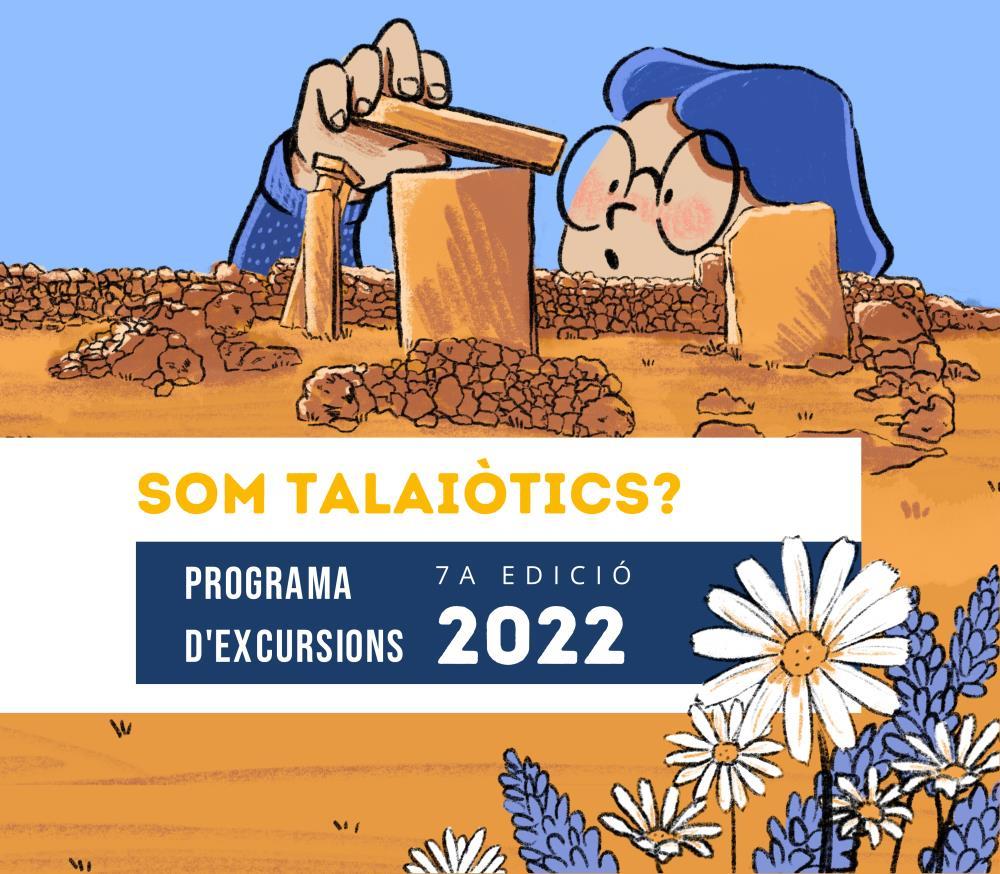 The Department of Culture of the Consell Insular de Menorca, together with the GOB Menorca, gives new impetus to the excursion program "Som Talaiòtics?" with the aim of creating awarness about Talayotic Menorca among the population of the island. The first visit will be this Sunday, February 13, in Son Catlar (Ciutadella), the great Talayotic settlement of western Menorca that stands out for preserving a large part of its defensive wall. Starting from the Cala en Turqueta beach, the excursion will take the Camí de Cavalls until we reach Son Saura, from where we will head towards the Son Catlar site. The Department of Culture of the Consell Insular de Menorca, together with the GOB Menorca, gives new impetus to the excursion program "Som Talaiòtics?" with the aim of creating awarness about Talayotic Menorca among the population of the island. The first visit will be this Sunday, February 13, in Son Catlar (Ciutadella), the great Talayotic settlement of western Menorca that stands out for preserving a large part of its defensive wall. Starting from the Cala en Turqueta beach, the excursion will take the Camí de Cavalls until we reach Son Saura, from where we will head towards the Son Catlar site.
What unites us and what separates us from the Talayotic culture? Visitors will find out all about the Talayotic Menorca candidacy and how its components or territorial areas are articulated. The Talayotics’ relationship with architecture, agriculture the stars or even death will complete a fascinating journey to the extraordinary heritage they bequeathed us.
The program “Som Talaiòtics?” is a fundamental tool to publicize the candidacy of Talayotic Menorca, especially this year, when in June the World Heritage Committee will make a decision about its inscription on the UNESCO World Heritage List.
The cost of this activity is assumed by the Department of Culture of the Consell Insular de Menorca. Given the Covid situation, capacity is limited and you must sign up a few days in advance at www.gobmenorca.com/inscripcio-excursio or by calling 971 35 07 62. In all cases, the excursions involve a few kilometers walk. As for the excursions that have a bus service to return to the starting point, this has a cost of between 3 and 5 euros per person and must be paid at the time of boarding the bus.
The dates are as follows:
- Sunday, February 13: visit to Son Catlar (Ciutadella). Bus service. Component 2.
- Sunday, March 6: visit to Trepucó (Maó). Bus service. Component 8.
- Sunday, April 3: visit to Calescoves (Alaior). Component 6.
- Sunday, May 8: visit to Son Mercer de Baix (Ferreries). Component 3.
- Saturday, June 4: night visit to Binissafullet (Maó-Sant Lluís). Bus service.
- Saturday, September 3: night visit to Torre d'en Galmés (Alaior). Bus service. Component 5.
- Sunday, October 2: visit to Torelló and Cornia Nou (Maó). Component 7.
- Sunday, November 6: visit to Binicodrell and Cova des Coloms (Es Migjorn Gran). Bus service. Component 4.
- Sunday, December 4: visit to the Naveta des Tudons (Ciutadella). Bus service. Component 1
Below you will find the complete "Som Talaiòtics?" 2022 program.
|
The Talayotic Menorca conference in Hispania Nostra is now available
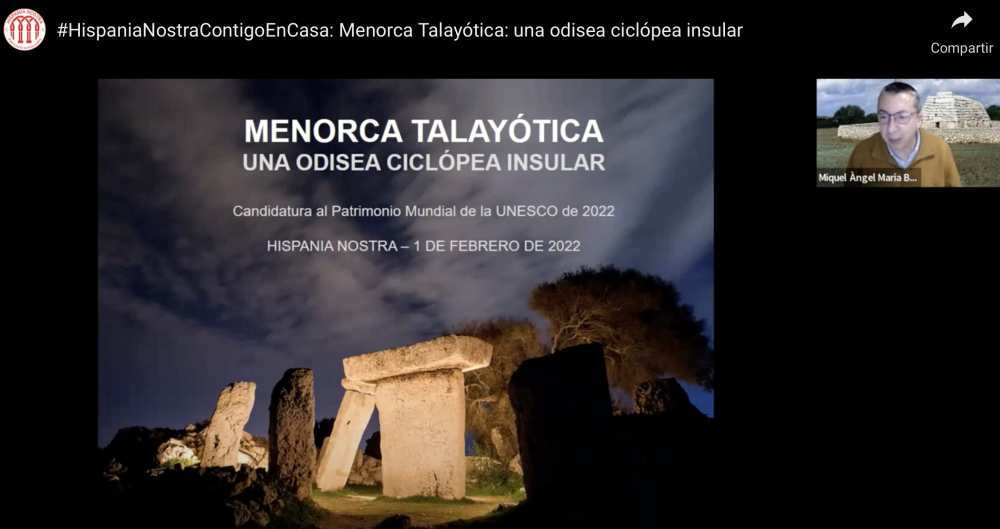 The online conference Talayotic Menorca: an insular cyclopean odyssey is now available. It was imparted by the Vice President and Conseller of Cultural Affairs, Miquel Àngel Maria; the coordinator of the candidacy file, Cipriano Marín; and the Talayotic Menorca technician from the Consell Insular de Menorca, Joaquim Pons, in the Hispania Nostra contigo en casa cycle last Frebruary 1. The online conference Talayotic Menorca: an insular cyclopean odyssey is now available. It was imparted by the Vice President and Conseller of Cultural Affairs, Miquel Àngel Maria; the coordinator of the candidacy file, Cipriano Marín; and the Talayotic Menorca technician from the Consell Insular de Menorca, Joaquim Pons, in the Hispania Nostra contigo en casa cycle last Frebruary 1.
This online initiative launched by Hispania Nostra -an association dedicated to the defense, promotion and enhancement of cultural and natural heritage- was born to accompany its members and those interested in heritage during the pandemic. The weekly conferences are given by professionals who altruistically donate their time and knowledge.
Here you can enjoy this conference again (1 hour long).
|
Premiere of the video “Talayots for Human Rights 2022”
The Consell Insular de Menorca (CIM) presents the video “Talayots for Human Rights 2022” about the Talayot lighting ceremony for Human Rights that took place on January 15, when 28 Menorcan talayots were lit. This was the fourth edition of this event in Menorca, an initiative of the Consell Insular de Mallorca. The main event took place at the Son Catlar site (Ciutadella), including the reading of a manifesto and a rendition of the song Ítaca by Lluís Llach.
“We need light and we need horizons and watchtowers, we need a direction. In 2021, a total of 4,404 people died on the West African border, which is equivalent to the entire population of Ferreries”, as manifested by Marga Benejam, director of Fons Menorquí de Cooperació, in this audiovisual piece produced by Bendito Films. Her words and the opinions of Carlos López, from Escoltas de Menorca, and Biel Olivar of Amnesty International Menorca, are the highlights of the audiovisual summary of this year's event. The video, in its three versions (Catalan, Spanish and English), will be distributed through the different institutional networks of the CIM, Talayotic Menorca and Menorca Illa de Cultura.
The objective of «Towers, watchtowers and talayots of the Mediterranean. A cry for Human Rights» is twofold: to sensitize citizens about the drama suffered by migrants in the Mediterranean; and within the framework of Talayotic Menorca’s candidacy as a World Heritage Site, to recreate what might have been the means of communication between talayotic settlements in prehistoric times, when movement across the Mediterranean was already commonplace.
|
Screening of the Talayotic Menorca documentary in Es Migjorn Gran
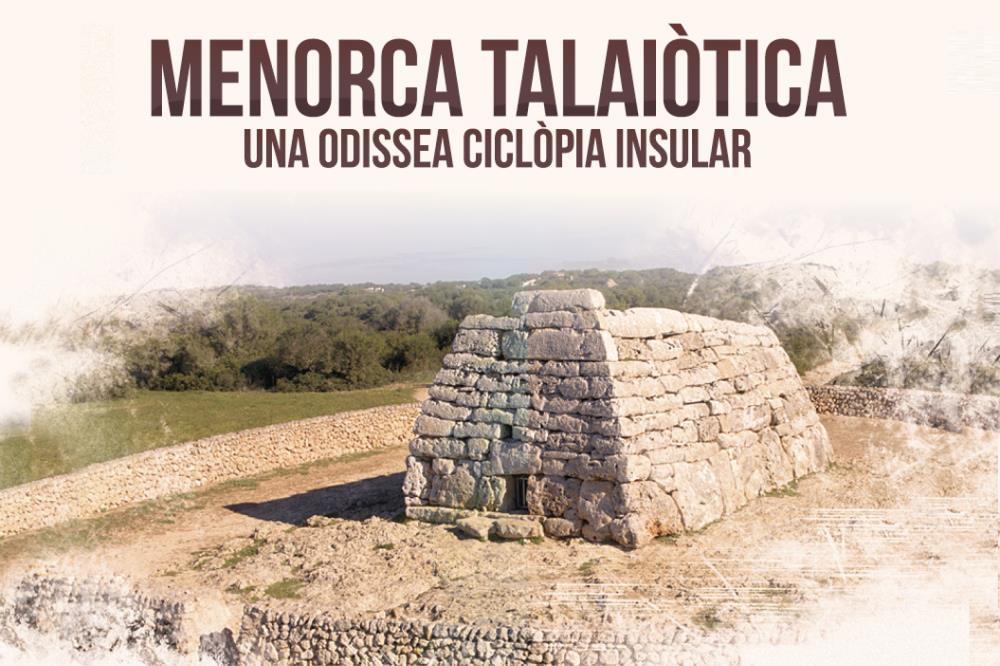 Next Tuesday, February 8, the documentary “Talayotic Menorca, an insular cyclopean odyssey” will premiere at 7 pm in the Saló Verd of Es Migjorn Gran. This will be the fourth screening taking place throughout Talayotic Menorca’s tour of the island, a tour that counts on the colaboration of Menorca’s city councils. Next Tuesday, February 8, the documentary “Talayotic Menorca, an insular cyclopean odyssey” will premiere at 7 pm in the Saló Verd of Es Migjorn Gran. This will be the fourth screening taking place throughout Talayotic Menorca’s tour of the island, a tour that counts on the colaboration of Menorca’s city councils.
The objective is to publicize the Talayotic Menorca candidacy for UNESCO World Heritage with a brief presentation by the Conseller of Cultural Affairs, Miquel àngel Maria, and the screening of the documentary.
The Consell Insular of Menorca promoted the production of this documentary in order to support the candidacy. The purpose of this film is to encourage people to get involved in the conservation of Talayotic heritage, discover and share the candiacy’s journey through a civilization that is still alive and present in every landscape of the island. Filmed by Espiral Producciones TV SL, “Talayotic Menorca, an insular cyclopean odyssey” was directed by Manu Balaguer, with a script by Laura Jurado and under the supervision of the archaeologist Amalia Pérez-Juez.
This are the remaining dates:
- February 18: Es Castell, Plaza Esplanada tent, 7 p.m.
- March 10: Llucmaçanes, local AAVV, 7 p.m.
- March 11: Ciutadella, Teatre des Born, 8 p.m.
Capacity is limited, so previous registration is required . Please send your name, ID and telephone number: info@menorcatalayotica.info. In order to ensure an orderly entrance without crowds, attendees are requested to arrive 20 minutes before the starting of the event.
You can watch the documentary’s trailer here.
|
Virtual conference about Talayotic Menorca in Hispania Nostra
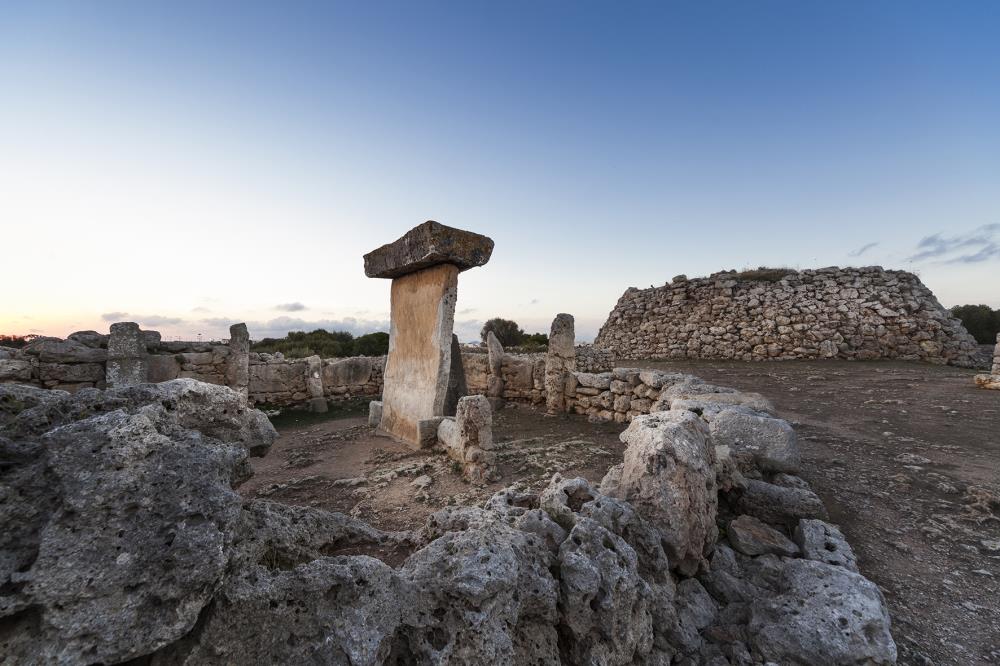 On February 1, at 7:00 p.m. via Zoom, Talayotic Menorca will be the focus of the next conference of the Hispania Nostra contigo en casa cycle, an online initiative launched by Hispania Nostra, an association dedicated to the defense, promotion and enhancement of cultural and natural heritage. Open to everyone, this activity is free but prior registration is required. On February 1, at 7:00 p.m. via Zoom, Talayotic Menorca will be the focus of the next conference of the Hispania Nostra contigo en casa cycle, an online initiative launched by Hispania Nostra, an association dedicated to the defense, promotion and enhancement of cultural and natural heritage. Open to everyone, this activity is free but prior registration is required.
The conference, under the title Talayotic Menorca: an insular cyclopean odyssey, will be held by the Vice President and Conseller of Cultural Affairs, Miquel Àngel Maria; the coordinator of the UNESCO World Heritage candidacy file, Cipriano Marín; and the Talayotic Menorca technician from the Consell Insular de Menorca, Joaquim Pons Machado. The focus points of their interventions will be the candidacy’s project and the issue of ensuring the conservation of the Talayotic heritage, a civilization that is still alive and present in every landscape of the island.
Hispania Nostra contigo en casa was born to accompany the members of the association and those interested in cultural and natural heritage during the pandemic. The weekly conferences are given by professionals who altruistically donate their time and knowledge.
What is Hispania Nostra?
Hispania Nostra is a non-profit association, declared of public interest, established in 1976 to celebrate the Year of European Architectural Heritage. Its objectives are the defense, promotion and enhancement of the cultural and natural heritage, which they consider as a vector of social and economic development. To this end, it carries out surveillance programs on endangered heritage; encouragement of good practices; promotes citizen collaboration between public and private institutions; and participates in activities of education and promotion of heritage social value.
- Date: February 1
- Time: 7 p.m.
- Free activity, open to the public.
- Prior registration is required by filling out this form.
- More information here.
|
Talayotic Menorca’s FITUR presentation
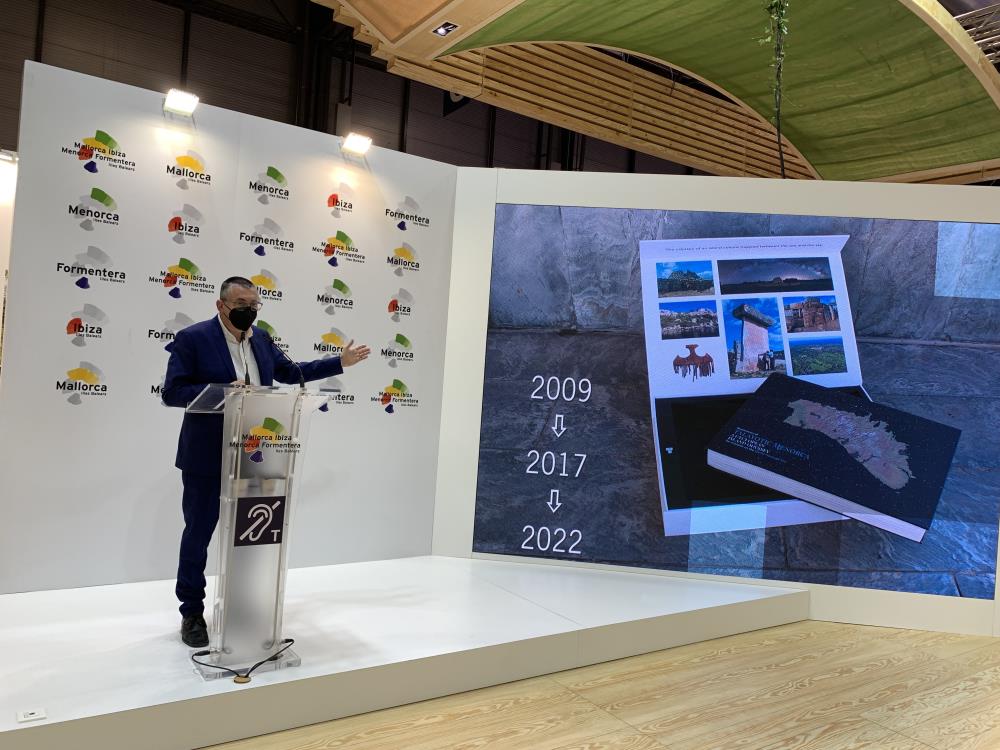 Talayotic Menorca was the focus of attention today, January 19, with the presentation of the candidacy for UNESCO World Heritage 2022 at the International Tourism Fair (FITUR) in Madrid. The president of the Consell Insular de Menorca, Susana Mora; the Vice President and Conseller of Cultural Affairs, Miquel Àngel Maria; the Deputy Director for Management and Coordination of Cultural Assets of the Spanish Ministry of Culture, Pilar Barrero García; and the coordinator of the candidacy, Cipriano Marín, participated in the event held this afternoon at the Balearic Islands stand. Talayotic Menorca was the focus of attention today, January 19, with the presentation of the candidacy for UNESCO World Heritage 2022 at the International Tourism Fair (FITUR) in Madrid. The president of the Consell Insular de Menorca, Susana Mora; the Vice President and Conseller of Cultural Affairs, Miquel Àngel Maria; the Deputy Director for Management and Coordination of Cultural Assets of the Spanish Ministry of Culture, Pilar Barrero García; and the coordinator of the candidacy, Cipriano Marín, participated in the event held this afternoon at the Balearic Islands stand.
In his speech, the Conseller of Cultural Affairs highlighted the importance of Talayotic Menorca within the framework of the island's tourism strategy: “Menorca has been working for years to diversify and de-seasonalize tourism. One of the most effective stratagies to achieve this goal is through cultural tourism. We are convinced that Talayotic Menorca has the potential to attract tourists, out of high season, interested in our culture, landscape and the traditional values of the island lifestyle. The possible inscription on the UNESCO World Heritage List will be a boost to this strategy.”
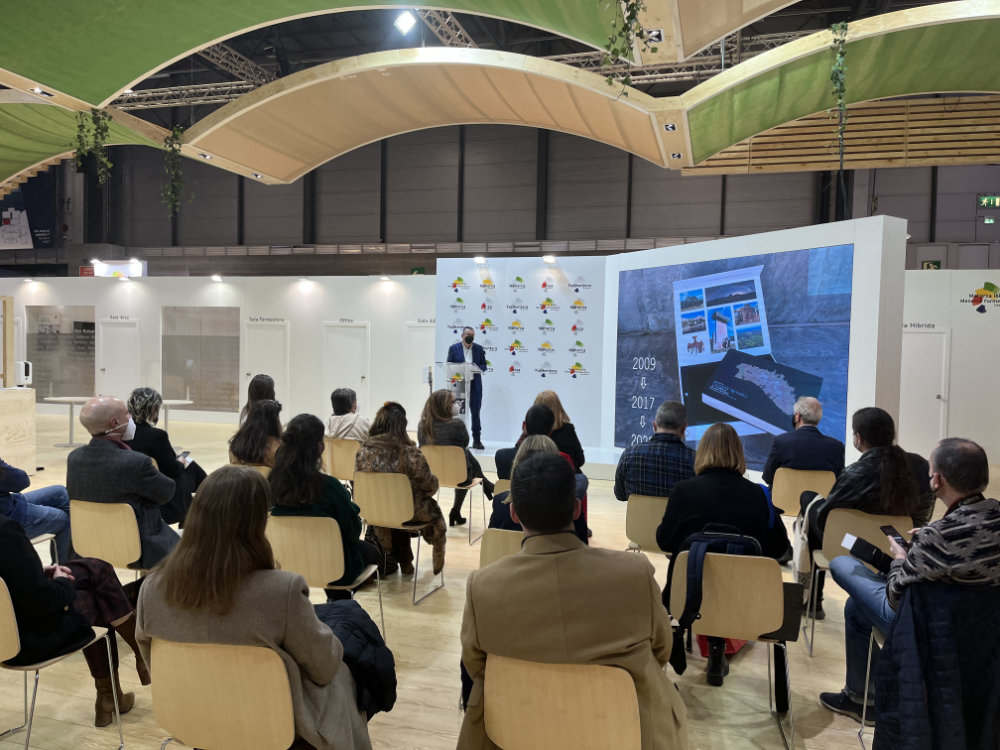 The event ended with the screening of a four-minute summary of the documentary “Talayotic Menorca, an insular cyclopean odyssey.” The Consell Insular de Menorca promoted the production of this documentary in order to give support to the candidacy. The purpose of this film is to encourage people to get involved in the conservation of Talayotic heritage, discover and share the candiacy’s journey through a civilization that is still alive and present in every landscape of the island. Made by the production company Espiral Producciones TV SL, it was directed by Manu Balaguer, with a script by Laura Jurado and under the supervision of the archaeologist Amalia Pérez-Juez. The event ended with the screening of a four-minute summary of the documentary “Talayotic Menorca, an insular cyclopean odyssey.” The Consell Insular de Menorca promoted the production of this documentary in order to give support to the candidacy. The purpose of this film is to encourage people to get involved in the conservation of Talayotic heritage, discover and share the candiacy’s journey through a civilization that is still alive and present in every landscape of the island. Made by the production company Espiral Producciones TV SL, it was directed by Manu Balaguer, with a script by Laura Jurado and under the supervision of the archaeologist Amalia Pérez-Juez.
At what stage is the candidacy in?
The International Council on Monuments and Sites (ICOMOS) requested more information about Talayotic Menorca after the candidacy’s team defended it in front of the international ICOMOS panel last November 26 in Paris. The report will be sent on February 28. After this, ICOMOS will publish its final report in May. At the end of June, the World Heritage Committee is scheduled to be held in Kazan (Russia), where the inscription of Talayotic Menorca on the UNESCO World Heritage List will be decided.
You can see the documentary’s summary here.
|
Presentation of Talayotic Menorca at FITUR
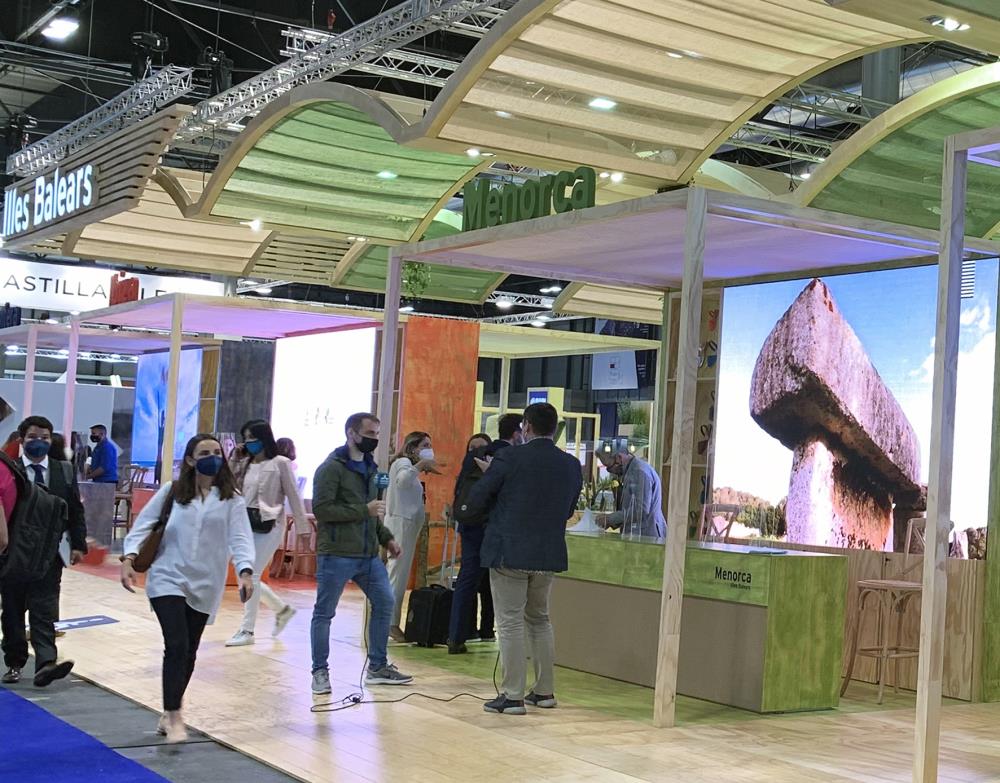 Barely seven months have passed since the last face-to-face edition and the International Tourism Fair (FITUR) will re-open its doors next week at IFEMA, Madrid, from January 19 to 23. Barely seven months have passed since the last face-to-face edition and the International Tourism Fair (FITUR) will re-open its doors next week at IFEMA, Madrid, from January 19 to 23.
Menorca will attend this important event – ??which will bring together 600 exhibitors and nearly 7,000 companies – with greater presence and prominence than ever before for two reasons: First, the island will become the first Collaborating Destination of FITURTECHY and, as such, will have a stand and a prominent role in the section of the fair dedicated to technology, innovation and sustainability. On the other hand, the number of city councils attending the event is growing thanks to the Fundació Foment del Turisme de Menorca (FFTM). They will have their own space to publicize their attractions and to reinforce a joint message about Menorca as a territory with natural, cultural and active tourism wealth at any time of the year.
Talayotic Menorca will receive all the attention next Wednesday, January 19, with the presentation of the candidacy at the Balearic Islands stand. The Vice President and conseller of Cultural Affairs, Miquel Àngel Maria, and the coordinator of the candidacy, Cipriano Marín, will conduct the event that will include the screening of the documentary “Talayotic Menorca, an insular cyclopean odyssey”.
The Menorcan delegation -headed by the president of the Consell Insular and the FFTM, Susana Mora; and the insular director of Tourism Promotion and European Funds, Laura Ruiz- is attending FITUR with a large agenda of meetings with companies, tour operators and travel agencies. The aim is to consolidate and increase flying connections and expand the destinations to travel from the island during the low season.
On the Day of the Balearic Islands, January 20, the President Susana Mora will also present the new promotional campaign "For small pleasures" and the activities that are scheduled throughout the year as Menorca is the European Region of Gastronomy in 2022. This will be one more attraction to visit Menorca in addition to enjoy its nature, culture and Talayotic Menorca.
|
Talayot lighting ceremony for Human Rights
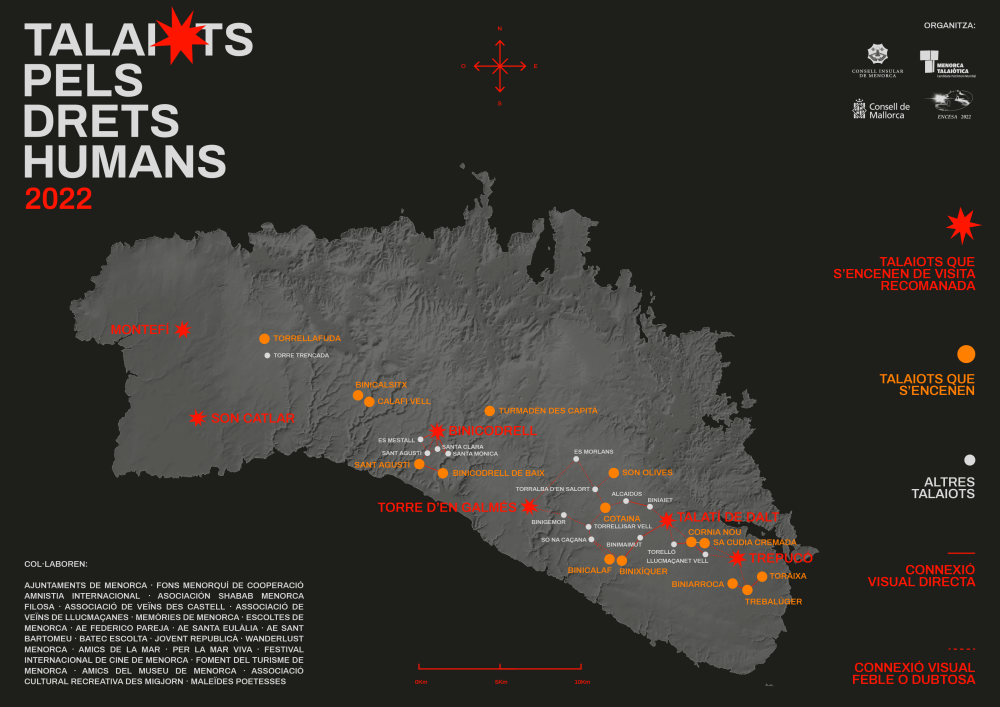 On Saturday, January 15, the Consell Insular de Menorca will adhere for the fourth consecutive year to the original initiative of the Consell Insular de Mallorca “Lighting of the taulas, watch towers and talayots of the Mediterranean, a cry for Human Rights.” This action is included in the Menorca Day program, as it is an event open to the public. On Saturday, January 15, the Consell Insular de Menorca will adhere for the fourth consecutive year to the original initiative of the Consell Insular de Mallorca “Lighting of the taulas, watch towers and talayots of the Mediterranean, a cry for Human Rights.” This action is included in the Menorca Day program, as it is an event open to the public.
The objective behind this action is two fold: to create awareness about the plight of people who live in situations grave enough to make them want to cross the Mediterranean in rafts in search of a better life; and to recreate what might have been the means of communication between talayotic settlements in prehistoric times, when movement across the Mediterranean was already commonplace.
The talayots of Menorca will be lit on Saturday, January 15, at 1 p.m. with smoke signals and at 6:30 p.m. with light flares, simultaneously in other places in the Mediterranean such as Mallorca, Ibiza and Formentera, some points of the peninsula (in Andalusia, the Valencian Community and Catalonia), and other parts of Greece or North Africa.
In Menorca, 28 talayots from Ciutadella, Ferreries, Es Migjorn Gran, Alaior, Maó, Sant Lluís and Es Castell will be lit. Entities on the island and people who wanted to join this initiative will be in charge of lighting the talayots.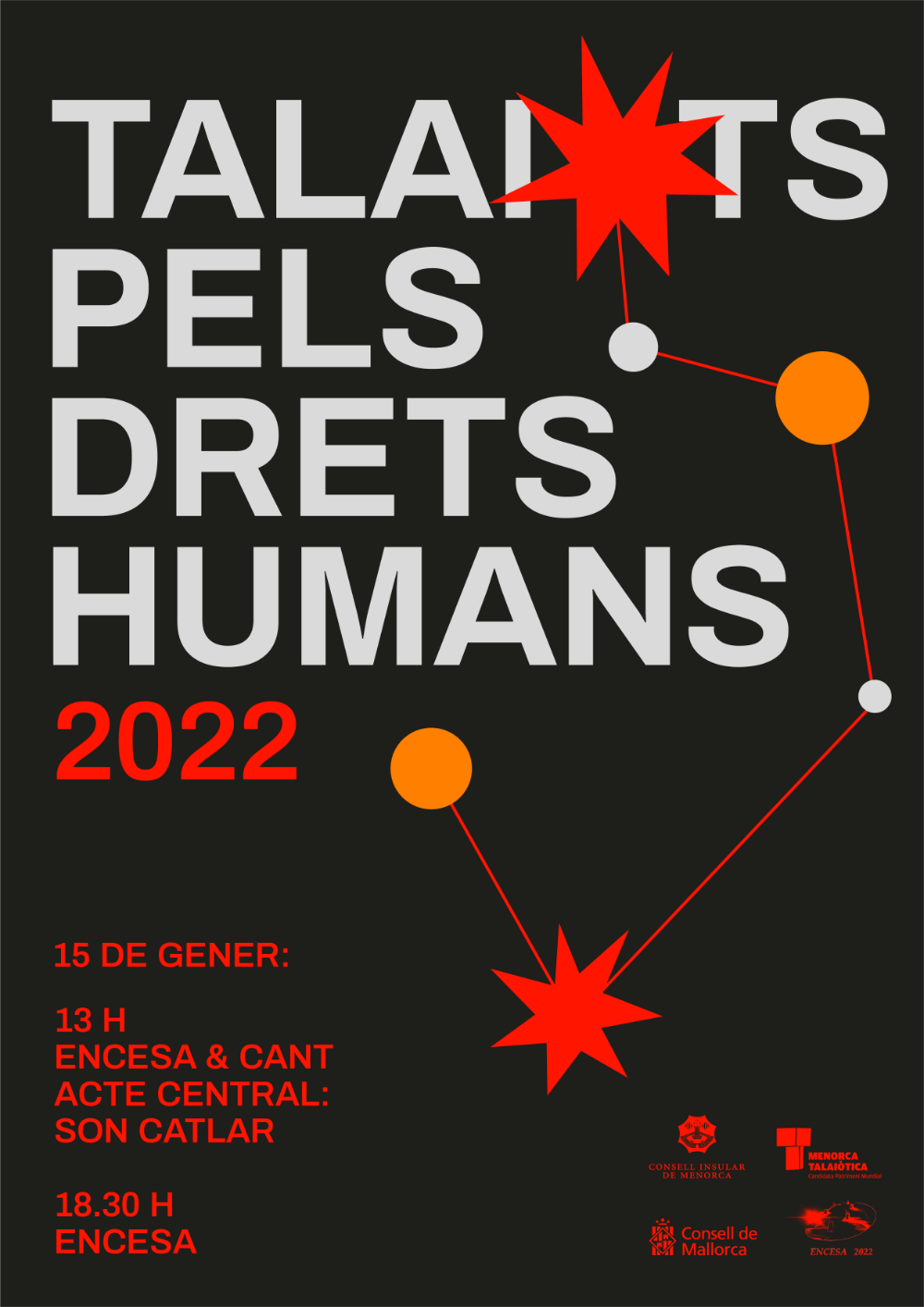
The main event will take place at 1 p.m. at the Son Catlar site (Ciutadella), where a manifesto will be read (by representatives of Amnesty International and the Fons Menorquí de Cooperació), and a rendition of the song “Viaje a Ítaca” will be played by the Menorcan singer Clara Gorrias.
You may witness the lightning ceremony in Son Catlar or Montefí (in Ciutadella), Binicodrell (Es Migjorn Gran), Torre d'en Galmés (in Alaior), Talatí de Dalt or Trepucó (in Maó ), because these sites have easier access and better visibility.
For more information, you can contact the organization by email talaiotsdretshumans@gmail.com or by phone: Miquel López (666731072) or Cecília Ligero (679570372).
|
"The archaeologists of the future will be able to virtually walk through the Talayotic sites as we see them today"
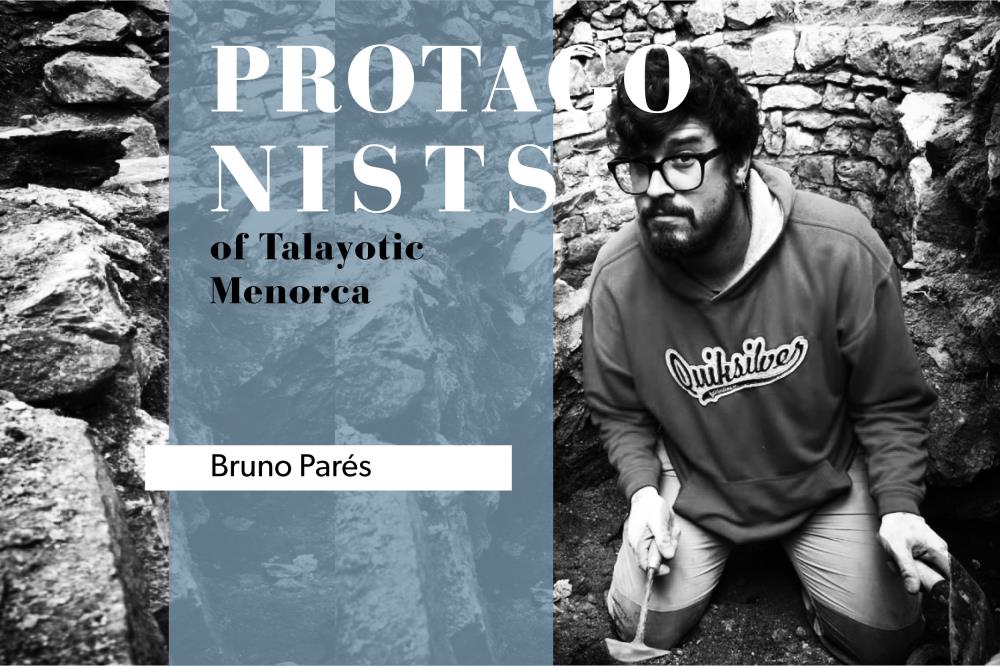 Bruno Parés is an archaeologist specialized in the virtual documentation and 3D reconstruction of land and underwater heritage. A graduate in History from the University of Barcelona, he learned all about Heritage Virtualization at the University of Alicante. Recently, he made the 3D documentation of the Galliner de Madona’s impressive hypostyle hall. Bruno Parés is an archaeologist specialized in the virtual documentation and 3D reconstruction of land and underwater heritage. A graduate in History from the University of Barcelona, he learned all about Heritage Virtualization at the University of Alicante. Recently, he made the 3D documentation of the Galliner de Madona’s impressive hypostyle hall.
What captivated you about Archeology to make it your profession?
I have always liked history and heritage in general. As a child, I had many books on ancient cultures, on how castles and pirate ships were, and about Greek mythology. All of them had great illustrations and infographics that I could spend hours looking at. Also at that time, on TV you could whatch series like Dragui, History of Catalonia or Erase una vez el hombre which spiked my interest in history. Good museums also marked me from a very young age, I remember a temporary exhibition at the Barcelona Science Museum about a 17th century shipwreck. It was not a normal exhibition, the staging was impressive and it stimulated all your senses. I forced my parents to return several times. It was about sunken ships and how being submerged affects their preservation and, since they are like time capsules, what information their study offers us today. This was my first contact with underwater archeology.
When I started the History major, I took the Underwater Archeology course, which fascinated me and made me decide to be an underwater archaeologist. One of the problems with this discipline, because you’re limited by the air in the scuba tank and how deep you are, is the short amount of time you can spend underwater working at a given site. When I discovered that there was a technology capable of capturing an object with photographs and, with the use of software, generating an identical 3D model in much less time than traditional documentation from archaeological drawings, I decided to bet on it and apply it to underwater archeology. Once I discovered its possibilities, I began to use it on the different sites where I was working on, not only underwater but also on land. Little by little I also started 3D documentation of archaeological objects, 3D reconstructions and 3D printing. Right now, I do a little bit of everything.
And how did your relationship with Menorca and the Talayotic culture begin?
I came to Menorca thanks to underwater 3D documentation. A colleague and friend with whom I had worked in Catalonia, Xavier Aguelo, hired me to excavate and document in 3D the Binissafúller wreck in 2016. After the campaign, I spent 15 more days making the Menorca underwater archaeological map. That allowed me to travel the entire island and I got to know it both on land and underwater. The island and its heritage richness from all ages captivated me. Since then, every year I made the Menorca underwater chart, and in 2018 I excavated and documented the Calescoves underwater site. That same year I also met my partner, and since then I have been living and working in Menorca.
Since 2018 I have been working on 3D documentation of archaeological sites and materials on the island, which implied investigating Menorca’s history and prehistory in order to do my job well. I think I am very lucky, since my specialty is not linked to a specific period and, therefore, each project gives me the opportunity to discover a different moment of the island’s history. I can both be in the cave of Sa Mola excavating and documenting the high-bottomed cups in 3D, as I can reconstruct the lives of the British soldiers in the coastal defense tower of Sanitja.
As archaeological research involves the destruction of the levels that are found, documentation is very important. This is where your work comes in. What is the documentation process of an archaeological site like?
Documentation techniques have evolved a lot. It began with the archaeological field drawing with graph paper and pen. Later photography was incorporated, which was democratized with the arrival of digital photography. Currently, with the new technologies, a further step has been taken and we have 3D documentation or virtualization of heritage. This technique allows us not only to have a series of photographs, plans and sections, but also to return to the documented moment and walk through all the stages of the archaeological excavation virtually.
While we excavate a site, my job is to document in 3D each of the layers and levels in the greatest detail possible. And later, with the computer, I generate a 3D model that allows us to virtually return to the documented layer and have the maximum information of that historical moment. We use these 3D models to study the sites right now, but they will be also used in the future by the archaeologists who want to go back and see the work done previously. The archaeologists of the future will be able to see and virtually walk through the Talayotic sites as we see them today.
What is the end goal of your job?
I would say that it is to preserve our heritage with as much information as possible for future generations. But this is simplifying a lot, since 3D documentation is used both for research, study and preservation of heritage, as well as for its dissemination. The fact we’re able to bring the sites closer to the public through virtual tours, something that normally only archaeologists and restorers can see, seems to me is a very social goal.
Also, with 3D printing, everything that is documented, be it monuments or objects, can be replicated in resin. For example, I documented the prehistoric wooden objects from the Es Mussol and Es Càrritx caves, a highly sensitive and delicate material, in 3D and printed them in resin so that the Museu de Menorca and the Municipal Museum of Ciutadella had exact replicas, which can be touched without danger of degrading the original object.
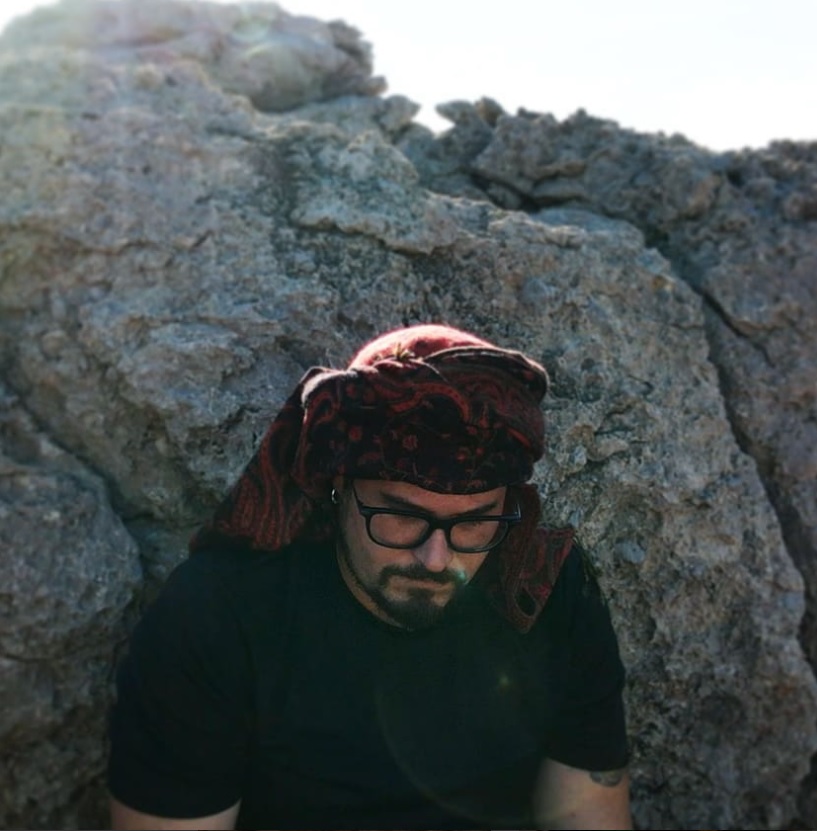 How many sites have you worked on during these years in Menorca? How many sites have you worked on during these years in Menorca?
I have been lucky enough to work on land and underwater sites from different historical stages throughout the island, but above all I have worked in sites from prehistoric Menorca. As I mentioned before, I have documented the wooden objects in the Es Mussol and Es Càrritx caves; also the coastal site of Cala Morell with its navetas; the high precision documentation of the Galliner de Madona hypostyle room; the wrecks of Binissafúller and Calescoves; the hundreds of tall-bottom cups in sa Mola cave; and the impressive fortified town of Son Catlar.
I have also documented medieval Menorca with the islamic occupation of the Talayotic site of Torre d'en Galmés and the Islamic fortress under the current Ciutadella City Hall. From the late modern era, I have documented the English coastal defense towers of Sanitja and Rambla. But there are still many sites and monuments that I want to document in 3D.
What is left to explore about Menorca's underwater heritage?
Menorca's underwater heritage is immense and is linked to the protection and conservation of the seabed. We know many underwater sites along the Menorcan coast, but surely there are still many more that remain in the depths, buried. Storms and changes in marine currents can sometimes uncover a site that is not part of the underwater archaeological chart. When an underwater site is discovered naturally, we document it, and if it is in danger of destruction or looting we will act to protect it.
One of your last works is the 3D documentation of the Galliner de Madona. What are its most important contributions?
The Galliner de Madona is an impressive hypostyle hall. The Mediterranean columns and its star-shaped tile roof are a truly unique construction. The problem is that part of the tile roof was in danger of collapse and needed to be propped up. In order to know what the monument was like before propping it up, and to be able to plan future restoration interventions, it was decided to document it in high-precision 3D. That is, using a large number of photographs and obtaining a final 3D model of many millions of polygons. Each of the stones that are part of the monument are documented with millimetric precision, and we know their exact position at the time of documentation. Taking advantage of the 3D model, I reduced it to polygons and rendered the virtual tour so that everyone can visit it and understand what it is like inside and out.
And our last question, what are the next projects you have on the table?
Some projects that I have already finished have yet to come to light, but I cannot say anything about them. On the other hand, I am about to start some 3D documentation and dissemination projects about Menorca’s history, which I cannot comment on either, but I am really eager to start. What I want the most is to not stop learning about the island’s history, documenting its present and approaching its heritage to everyone.
|
Last step for the creation of the Talayotic Menorca Agency
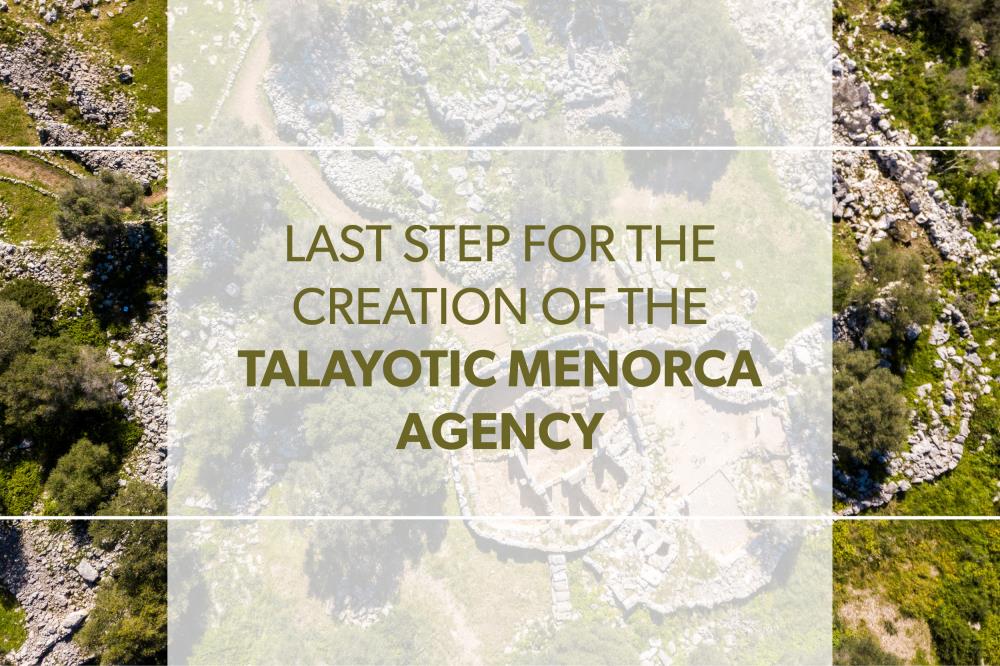 This body will be responsible for the management, conservation and dissemination of the properties that embody the Talayotic Menorca candidacy, and ensuring their passing to present and future generations of Menorcans. The CIM is in the process of creating the Talayotic Menorca Agency following the recommendations of the 2017 report by ICOMOS (International Council of Monuments and Sites). This body will be responsible for the management, conservation and dissemination of the properties that embody the Talayotic Menorca candidacy, and ensuring their passing to present and future generations of Menorcans. The CIM is in the process of creating the Talayotic Menorca Agency following the recommendations of the 2017 report by ICOMOS (International Council of Monuments and Sites).
This new entity will be responsible for the effective coordination and implementation of the Talayotic Menorca Management Plan, and for preparing and submitting proposals to the different CIM bodies; promoting the management and conservation of the archaeological monuments and their associated landscapes; and furthering participation and social cooperation around the conservation of our prehistoric heritage. Promoting the sustainable development of archaeological and landscape heritage, favoring public and private investment, and promoting scientific research are other objectives of the Agency.
The organization structure
The Talayotic Menorca Agency will have a Governing Council with representatives from the island’s different institutions and representatives from the Scientific and Social councils of the Agency. This will be the body in charge of establishing the internal organization guidelines and the entity's lines of action. The Social Council will facilitate the integration and participation of all the island's public administrations and the most representative public, private and social entities related to historical and cultural heritage management. Its function will be to promote social and citizen participation. The Scientific Council, formed by institutions and people of recognized prestige, will be in charge of scheduling and supervising the Agency's activities in terms of study, research, training and scientific dissemination. In addition, it will participate in the preparation of reports for UNESCO and will offer advice on matters within its competence.
In addition, the Agency will have a Forum of Owners and Managers that will bring together all the natural and legal entities involved in the day-to-day management of the properties that are part of the World Heritage candidacy. This Forum is a private entity that is currently in the process of being created, and will be part of the Social Council, although it must also be an instrument of direct relationship between owners / managers and CIM.
Calendar
On July 19, the Plenary of the Consell Insular de Menorca ratified the initial approval of the draft of the Agency's bylaws. After its publication in the official gazette of the Balearic Islands (BOIB), the draft was on public display for 30 days, during this time appeals were presented. At the same time, the different bodies involved (public administrations, entities linked to historical heritage and environmental conservation, among others) were consulted. Once the appeals were reviewed and resolved, the final approval of the bylaws took place on December 20. The Talayotic Menorca Agency is scheduled to start running at the beginning of 2022.
|
One million euros from the national budget for Talayotic Menorca
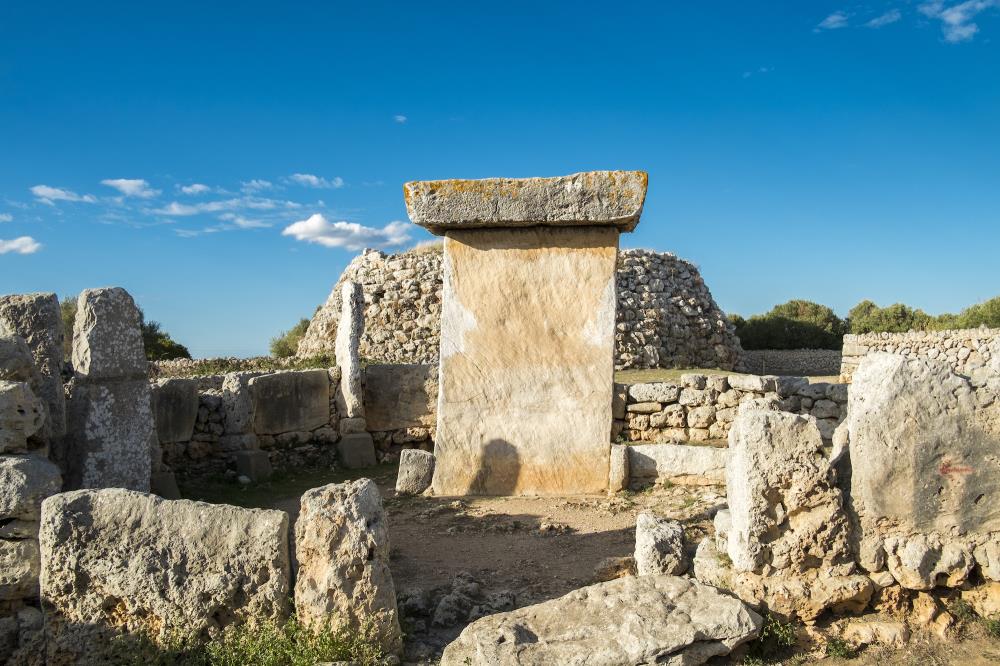 Talayotic Menorca’s candidacy for UNESCO World Heritage will receive one million euros from the 2022 national budget. The protection, conservation and dissemination of Talayotic Menorca will have this important financial support next year. These new resources will be allocated to actions already included in the candidacy's Management Plan. Talayotic Menorca’s candidacy for UNESCO World Heritage will receive one million euros from the 2022 national budget. The protection, conservation and dissemination of Talayotic Menorca will have this important financial support next year. These new resources will be allocated to actions already included in the candidacy's Management Plan.
The Talayotic Menorca Management Plan has different programs and lines of investment. The investments made with this million euros will go in two directions, as explained by the Vice President and conseller of Cultural Affairs, Miquel Àngel Maria: “Our top priority is the preservation, conservation and maintenance of the sites to improve their current states. And the other program that in the coming years should have an important role is Research.”
Maria also added that "we should not rule out the possibility of acquiring a site that is currently privately owned, and that would become part of the public network of Talayotic Menorca sites."
|
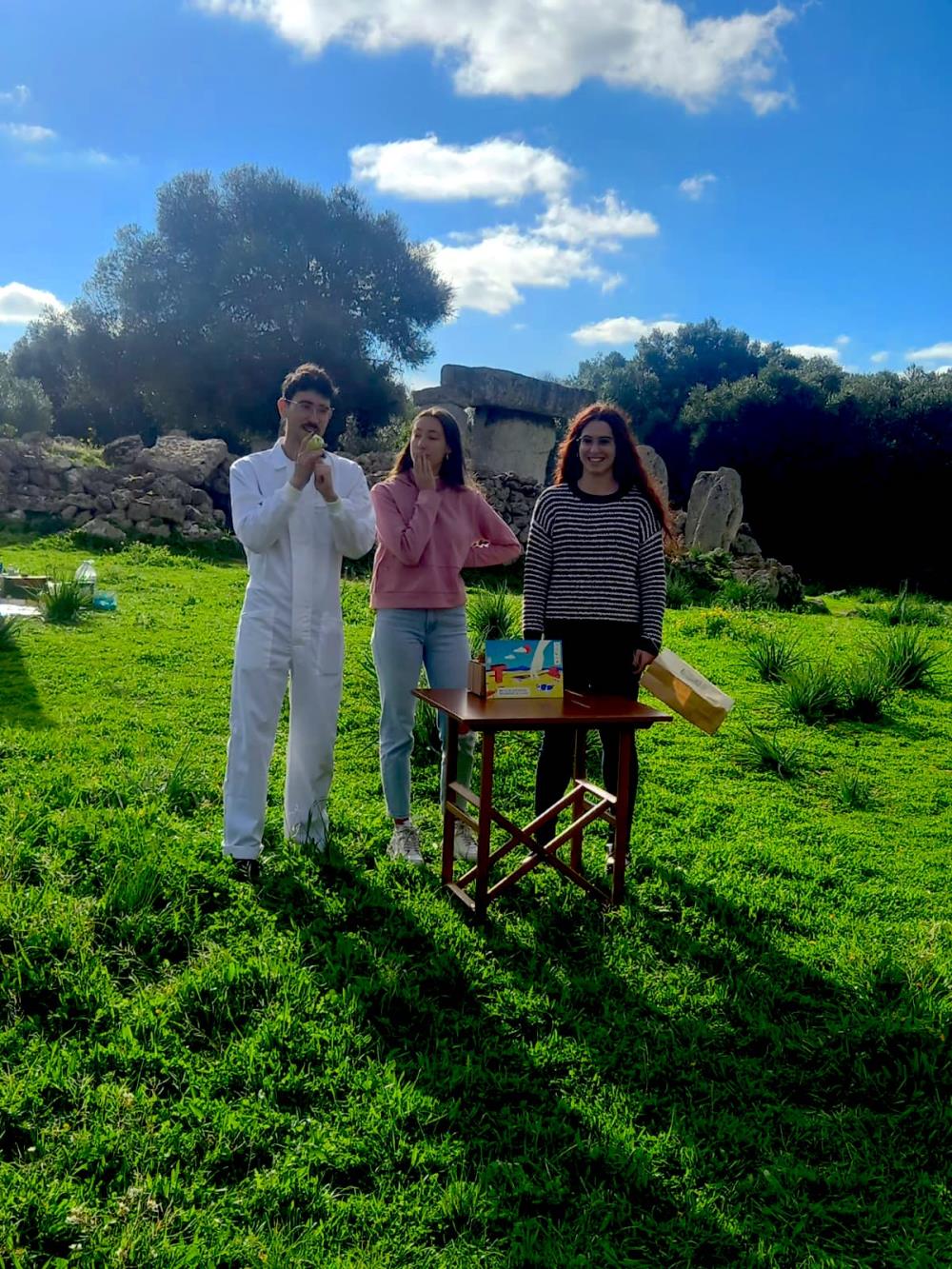
Leire Pellejero, winner of the Becatalaiotica 2021 award
¿¡[AQUI]¡¿Leire Pellejero is the winner of the fifth edition of Becatalaiotica 2021, an Amics del Museu de Menorca initiative that has the support of the Consell Insular de Menorca (CIM). The award is a 2,000 euros scholarship.
The announcement was made on Saturday, December 18, during the closing ceremony of this edition which brought together about twenty people in Talatí de Dalt. At 1 p.m., Leire Pellejero received a voucher for a scholarship valued at 2,000 euros. All those present agreed that Pellejero's victory was more than deserved. Two weeks ago, she performed a nightly Chinese shadow and dance show at the Na Comerma de Sa Garita site that wowed audiences.
During the event, two of the Becatalaiotica organizers, Maria Eva Melià and Biel Nadal, improvised a mural on a 5 x 2 meter canvas. The aim was to paint from the inspiration provided by Menorca’s monuments and landscape, which in fact is the essence of the Becatalaiotica contest. The next day, this fabric was turned into tote bags that will be distributed among those attending the event.
What is Becatalaiotica?
The first Becatalaiotica contest was held in 2017 as an initiative of the Amics del Museu de Menorca, with the support of the CIM Department of Cultural Affairs. The goal has always been to shine a light on young emerging talent, vindicate the inspirational value of our landscapes and promote the candidacy of Menorca Talaiòtica as world heritage site among a wider audience.
The staging of Becatalaiotica takes place at the different archaeological sites that comprise Talayotic Menorca, where the finalists (youngsters between the ages of 16 and 25) showcase their projects. All fields of study and means of expression are valid, as long as scientific knowledge is respected and kept at the forefront of the proposal. The assisting audience is a crucial part in evaluating the originality, content and evocative power of each proposal. The finalist who achieves the best evaluation is granted a 2.000 € scholarship.
In this edition, Talatí de Dalt, Torre d'en Galmés, the Cala Morell necropolis, Torrellafuda and Na Comerma de Sa Garita have been the scenarios for the events presented by Leire Pellejero, Noelia Mostajo, Sonia Buj, Aroa Dürst and Sofia Zamrik.
Becatalaiotica will start over again in 2022.
|
Maó hosts the premiere of the documentary "Talayotic Menorca, an insular cyclopean odyssey"
The screenings for the general public begin on December 2 in Maó’s Claustre Audience Hall and will travel to every town of the island.
Next Thursday, December 2, the documentary “Talayotic Menorca, an insular cyclopean odyssey” will premiere at 7 pm in the Audience Hall of Maó’s Claustre. This will be the first screening taking place throughout Talayotic Menorca’s tour of the island, a tour that counts on the colaboration of Menorca’s city councils. The objective is to publicize the Talayotic Menorca candidacy for UNESCO World Heritage with a brief presentation and screening of the documentary. The event will end with a tasting of the Talaiòtica beer by Roger Vila, which is the result of the collaboration between the Museu de Menorca, Talayotic Menorca and Grahame Pearce.
The Consell Insular of Menorca promoted the production of this documentary in order to give support to the candidacy. The purpose of this film is to encourage people to get involved in the conservation of Talayotic heritage, discover and share the candiacy’s journey through a civilization that is still alive and present in every landscape of the island. Filmed by Espiral Producciones TV SL, “Talayotic Menorca, an insular cyclopean odyssey” was directed by Manu Balaguer, with a script by Laura Jurado and under the supervision of the archaeologist Amalia Pérez-Juez.
Seating capacity is limited, previous registration is required through: info@menorcatalayotica.info.
|
Talayotic Menorca in the ICOMOS-Spain webinar "World Heritage Mondays"
On November 16, 1972, the Convention Concerning the Protection of the World Cultural and Natural Heritage was signed in Paris during the 17th UNESCO General Conference. For this reason, every November 16, World Heritage Day is celebrated.
ICOMOS is the advisory body of the World Heritage Committee that implements the Convention. Consequently, and with the aim of participating in the commemoration of World Heritage Day, a special session of the series of webinars "World Heritage Mondays" was organized. This ICOMOS-Spain initiative is dedicated to the dissemination of the Convention andthe World Heritage sites and, to encourage participation in the discussion on the main concepts and problems related to the conservation and management of the properties inscribed on the List.
Under the title "The (long) road to inscription as World Heritage", this special webinar presented three different cases to illustrate the long journey that the monuments and sites that aspire to be inscribed on the List must traverse. Among them, the case of Talayotic Menorca with the intervention of the Vice President and conseller of Cultural Affairs, Miquel Àngel Maria, as the person in charge of the candidacy.
The interventions were moderated by the Vice President of ICOMOS-Spain, Mónica Luengo. The other two speakers were:
- Jose Ramón Menéndez de Luarca Navia Osorio - coordinator of the Caliphal City of Medina Azahara’s file.
- Cipriano Marín Cabrera, who despite being the coordinator of the Talayotic Menorca file, on this occasion participated as coordinator of the Risco Caído and the Sacred Mountains of Gran Canaria file.
|
89th meeting of the Historical Heritage Council in Menorca
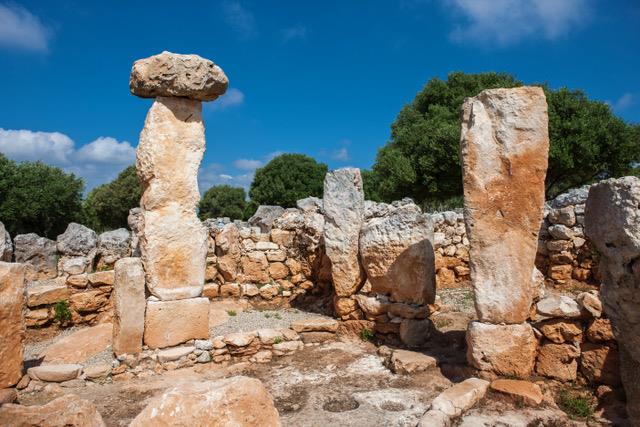 The Plenary Hall of the Consell Insular de Menorca (Maó) will host the 89th meeting of the Historical Heritage Council on November 11 and 12. Organized by the Ministry of Culture and Sports, the council will count with the participation of representatives from all the autonomous Spanish communities. At this meeting (postponed last year due to the COVID 19 health crisis) Menorca's candidacy for UNESCO World Heritage in 2022 will be reviwed and the national projects that must start the process for their inclusion on that list will be evaluated. The Plenary Hall of the Consell Insular de Menorca (Maó) will host the 89th meeting of the Historical Heritage Council on November 11 and 12. Organized by the Ministry of Culture and Sports, the council will count with the participation of representatives from all the autonomous Spanish communities. At this meeting (postponed last year due to the COVID 19 health crisis) Menorca's candidacy for UNESCO World Heritage in 2022 will be reviwed and the national projects that must start the process for their inclusion on that list will be evaluated.
The vice-president and conseller of Cultural Affairs of the Consell Insular de Menorca, Miquel Àngel Maria, thanked the Ministry of Culture and Sports for this gesture: “The Council meeting held online last year in November should have been celebrated in Menorca, but wasn’t because of the pandemic. It was at that online meeting that the Talayotic Menorca candidacy was chosen to represent Spain in front of the UNESCO Heritage Committee in 2022. Now, the celebration of the Heritage Council in Menorca is a clear sign of support for Menorca’s candidacy from the Spanish Government.” The Council's program includes a visit to the Museu de Menorca, which houses an important collection of unique pieces from Talayotic culture.
This same month, on November 26, Talayotic Menorca will live another milestone in Paris. A Menorcan delegation led by Conseller Miquel Àngel Maria will defend the candidacy in front of the international ICOMOS panel of experts in charge of evaluating the candidatures that are presented to UNESCO in 2022. The whole process will end in July 2022, when the World Heritage Committee takes its final decision about whether to inscribe Talayotic Menorca on the World Heritage List.
The Historical Heritage Council
Spain is one of the 193 states that, to date, have ratified the 1972 UNESCO World Heritage Convention. As such, one of its missions is to propose new properties from its territory to be inscribed on the World Heritage List. The Historical Heritage Council is the body in charge of making this selection at the state level, after receiving the different proposals from the autonomous communities.
|
Menorca presents the shared experience of governance in Torre d'en Galmés
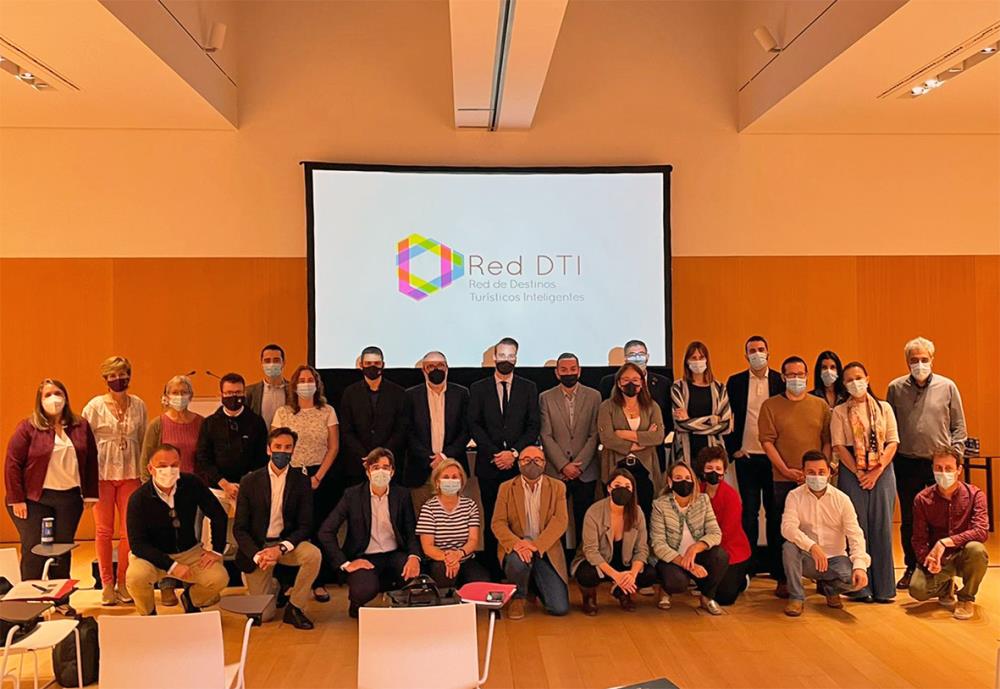 Identifying good practices in the conservation, preservation, management and exploitation of heritage for tourism is the objective of the Cultural Heritage Working Group of the Smart Tourist Destinations Network, of which Menorca is member. On October 25 and 26, the first meeting of this group was held in Palma (Mallorca), with the participation of more than 45 experts in cultural heritage. Identifying good practices in the conservation, preservation, management and exploitation of heritage for tourism is the objective of the Cultural Heritage Working Group of the Smart Tourist Destinations Network, of which Menorca is member. On October 25 and 26, the first meeting of this group was held in Palma (Mallorca), with the participation of more than 45 experts in cultural heritage.
The meeting served to share experiences on good practices in the management of cultural heritage. From Menorca, Carmen Lara, the head of Cultural Tourism of the Fundació Foment del Turisme (FFTM), presented the case of Torre d'en Galmés’ shared governance as an example of sustainability in the management of heritage sites. The FFTM is in charge of managing the site, although other administrations such as the Alaior City Council or the Consell Insular also take part. According to Lara, the experience of co-governance of Torre de en Galmés has been very positive, since it has transformed the site into an example of living heritage, a place where archaeological research, musical performances or volunteer work have been carried out.
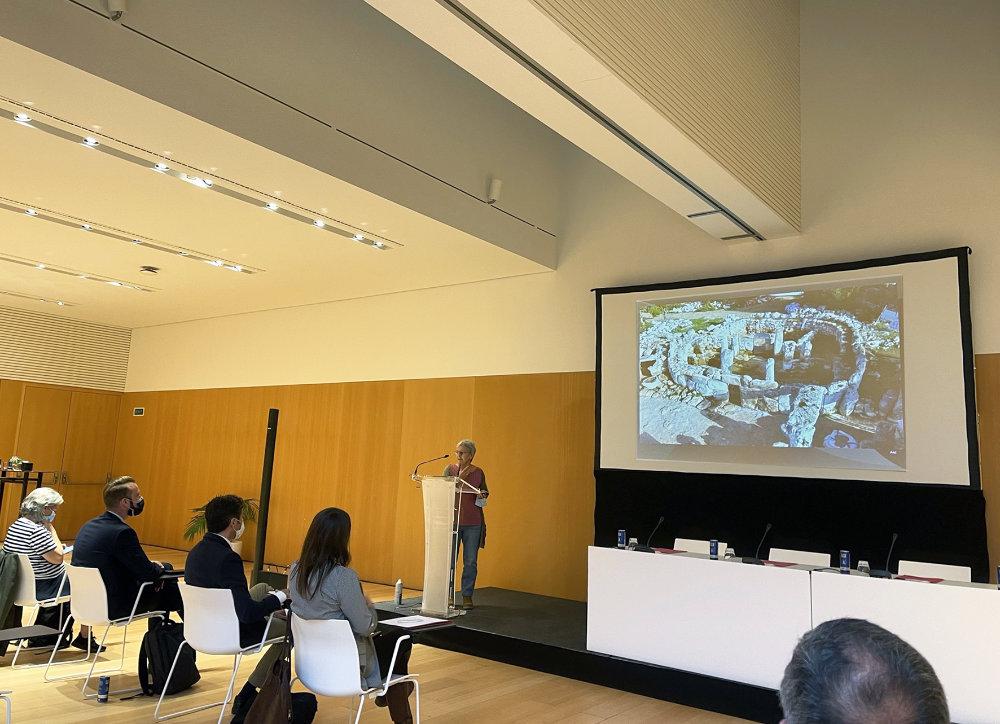
The network of Smart Tourist Destinations (DTI), proposed by the Secretary of State for Tourism, is a pioneering project on an international scale. It aims to implement a new model which looks to improve competitiveness and development based on sustainable governance and tourism co-responsibility. Innovative touristic destinations guarantee the sustainable development of the territory, facilitating the integration of visitors with the environment. The aim is to increase the quality of their experience and improve the local population’s quality of life. The Smart Tourist Destinations Network is made up of 347 members, of which 226 are destinations.
|
Results of the 4th excavation campaign at Torre d'en Galmés
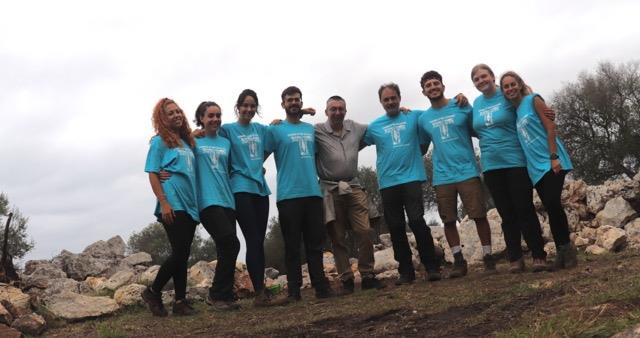 The Menorca Heritage Recovery Association completed its field work in the central area of the Torre d'en Galmés site in September. This fourth campaign has been directed by archaeologists Luis Mª Cobos Rodríguez, manager of the company ARQ Patrimonio, and Julia García González, professor at the University of Granada, together with their team formed by archaeologists Ismael Moll and Adrián Castro, among others. The Menorca Heritage Recovery Association completed its field work in the central area of the Torre d'en Galmés site in September. This fourth campaign has been directed by archaeologists Luis Mª Cobos Rodríguez, manager of the company ARQ Patrimonio, and Julia García González, professor at the University of Granada, together with their team formed by archaeologists Ismael Moll and Adrián Castro, among others.
For this campaign, several volunteers from the island and students from the University of Malaga, the University of Granada, the University of Murcia and the Rey Juan Carlos University of Madrid have joined the team, all with different backgrounds in fields such as Archeology, History and Tourism. That’s why this year the students attended conferences and visited some important sites such as Naveta des Tudons or Son Catlar, in addition to carrying out archaeological excavations and laboratory tasks.
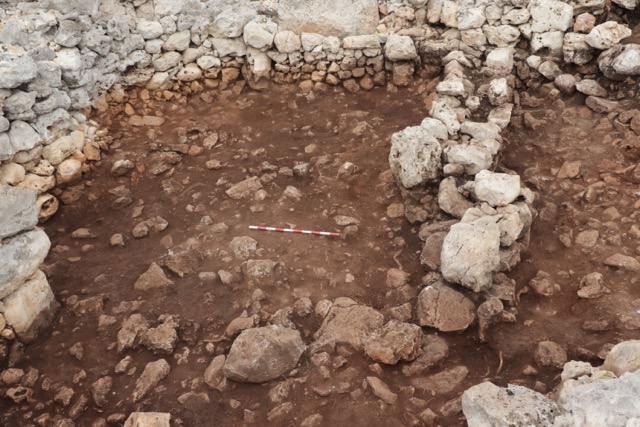 This intervention has served to better understand the historical evolution of the site’s central area, by investigating the evolution of its constructions and the relationship between them. As it is an open air excavation, widening the breadth of the surface to be excavated has been the goal in order to document all the archaeological structures existing in the predetermined space. It has thus been possible to document an Islamic chamber associated with the one found in the previous campaign which communicated with it through a transit space. The central space has been also excavated, allowing for the definition of compartmentalisation structures in the interior space. This intervention has served to better understand the historical evolution of the site’s central area, by investigating the evolution of its constructions and the relationship between them. As it is an open air excavation, widening the breadth of the surface to be excavated has been the goal in order to document all the archaeological structures existing in the predetermined space. It has thus been possible to document an Islamic chamber associated with the one found in the previous campaign which communicated with it through a transit space. The central space has been also excavated, allowing for the definition of compartmentalisation structures in the interior space.
This campaign has been carried out thanks to the financial support of the Consell Insular de Menorca and the Alaior City Council, institutions that have made these interventions possible since 2017.
|
Talayotic Menorca at the International Heritage Fair in Paris
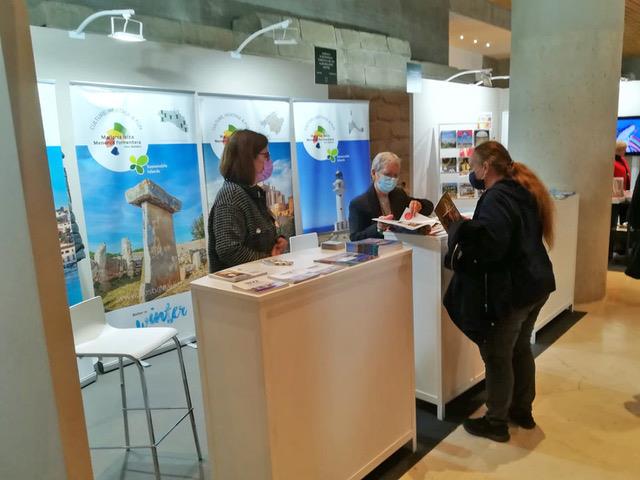 Alongside the Fundació Foment del Turisme de Menorca (FFTM), Talayotic Menorca was present at the International Heritage Fair which was held at the Carrousel du Louvre, in the heart of Paris, between the 28 and the 31 of October. This is the second time since 2019 that Menorca has participated in the fair, after the forced stoppage caused by the pandemic. All throught, one could feel the interest that Talayotic Menorca aroused in the French market. The International Heritage Fair is Europe's leading show for all actors related to heritage, gathering more than 300 exhibitors and 20,000 visitors each year, including the general public and professionals. Alongside the Fundació Foment del Turisme de Menorca (FFTM), Talayotic Menorca was present at the International Heritage Fair which was held at the Carrousel du Louvre, in the heart of Paris, between the 28 and the 31 of October. This is the second time since 2019 that Menorca has participated in the fair, after the forced stoppage caused by the pandemic. All throught, one could feel the interest that Talayotic Menorca aroused in the French market. The International Heritage Fair is Europe's leading show for all actors related to heritage, gathering more than 300 exhibitors and 20,000 visitors each year, including the general public and professionals.
On Sunday October 31, Carmen Lara, archaeologist and head of Cultural Tourism at the FFTM, held a conference titled: "Menorcan territory in prehistoric times: a current landscape". Lara highlighted the exceptionality of Talayotic culture and Menorcan prehistory, with its more than 1,500 prehistoric sites and the magnificent Talayotic monuments that conform the island's landscape. A presentation that revolved around the candidacy of Talayotic Menorca for UNESCO’s World Heritage and how this heritage is part of Menorcans daily life. The conference ended with the screening of the documentary "La Menorca Talayotica” trailer, made by the Mallorcan production company Espiral on behalf of the Consell Insular de Menorca.
The FFTM was part of the Balearic stand, under the organization of the Balearic Islands Tourism Strategy Agency (AETIB). In this stand, they offered information about the possibilities of cultural tourism in Menorca, such as the Talayotic Menorca, the British Menorca and the Camí de Cavalls. Among the visitors to the Balearic stand, the president of INRAP (French National Institute for Preventive Archaeological Research), Dominique Garcia, highlighted the high level of Menorcan cultural heritage.
|
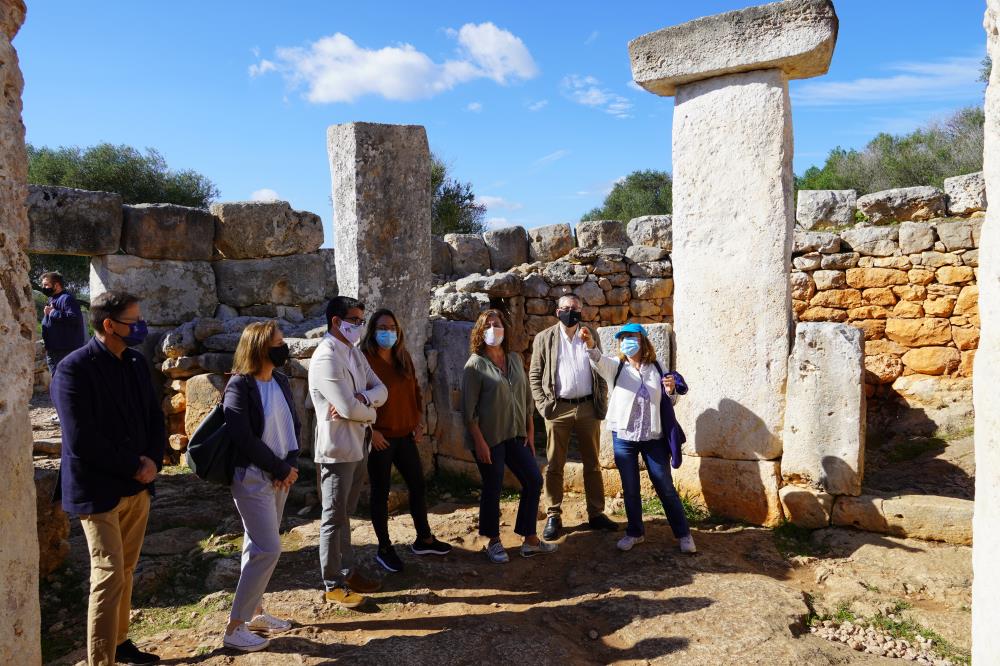
The candidacy under examination by the ICOMOS group of experts on November 26
¿¡[AQUI]¡¿On November 26, Talayotic Menorca will experience another decisive moment in Paris with its defence of the candidacy in front of the international ICOMOS panel, the group of experts in charge of evaluating the candidates presented to UNESCO in 2022. The vice-president and conseller of Cultural Affairs, Miquel Àngel Maria, will be leading the Menorcan delegation.
This new test to be passed comes after the evaluation mission by an ICOMOS representative at the beginning of October, and the support given to the candidacy by the Balearic Government with the visit of the president Francina Armengol, and the conseller of European Funds, University and Cultural Affairs, Miquel Company, this past Wednesday, October 27.
On this occasion, president Armengol and the conseller Company have toured the Talayotic town of Torre d'en Galmés, the largest Talayotic site in Menorca, accompanied by the president of the Consell Insular de Menorca, Susana Mora; the vide-president and conseller of Cultural Affairs, Miquel Àngel Maria; and the insular director of Cultural Affairs and Heritage, Raquel Marqués.
During the visit, they learned about the characteristics of the Talayotic village, where about 900 people lived. The town has three talayots, numerous circular houses, a water collection system and a taula enclosure. It covers an area of six hectares and is one of the nine areas that have been included in the candidacy to be part of the World Heritage List, a decision that the World Heritage Committee must take in July 2022.
Armengol has ensured that the Government is "fully involved in the candidacy" and has shown its "absolute support" for the team that works to make Talayotic Menorca, the only candidacy presented by Spain for a World Heritage Site, a reality. The president has also defended that "Menorca is an example within the Balearic Islands of caring for the landscape and its past".
For her part, Susana Mora recalled that the next milestone in this long-distance race to obtain the nomination will be at the end of November: “in Paris we will be able to defend the candidacy in front of the members of ICOMOS so that the initial report that will be issued at the beginning of 2022 is a positive one.” This was confirmed by the conseller of Cultural Affairs, Miquel Àngel Maria, marking November 26 as an important date in the Talayotic Menorca calendar. “The visibility of the institutional support given by the Government today is very important, so that this last stage that we have yet to walk is successful. We do not have the key, UNESCO has it, but we think we have everything in our favor to be able to reach a successful conclusion ”, he added.
The Government supports the candidacy and collaborates with the Consell Insular de Menorca through a subsidy intended to cover dissemination and outreach expenses or to carry out investigative projects on the sites. Last June, this year's contribution of € 200,000 was approved, which added to the previous three represents a total investment of one million euros.
At the end of the tour in Torre d'en Galmés, the group went to the Grahame Pearce brewery in Sant Climent, in Maó, where Talaiòtica beer is produced, a product created in collaboration with the Museu de Menorca and the Talayotic Menorca candidacy.
|
“Talayotic Menorca should not be a burden for the monuments’ owners but an opportunity and a source of pride”
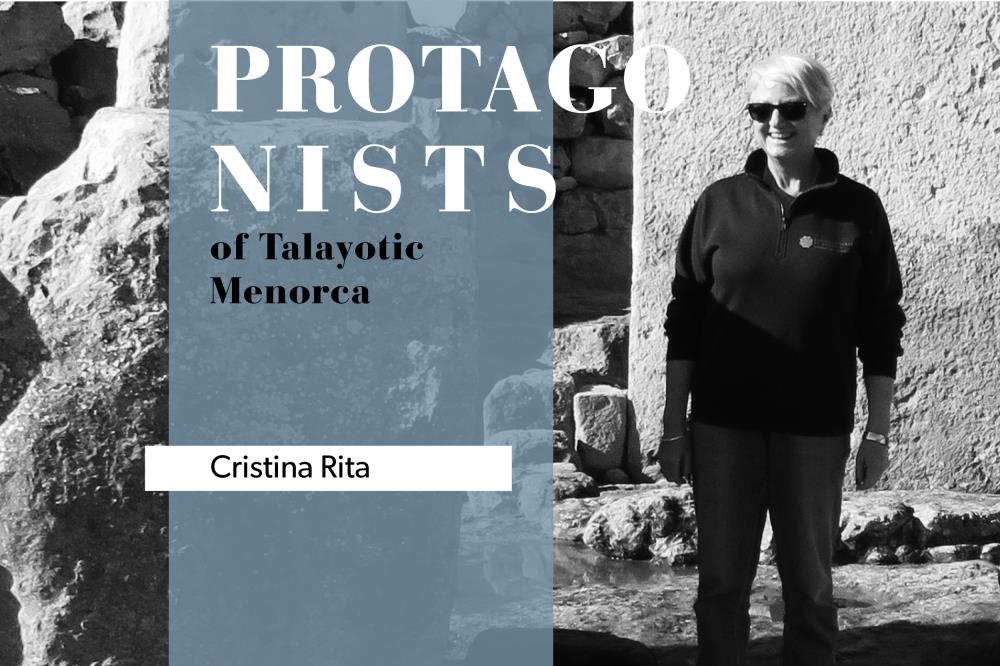 The Menorcan archaeologist and historian Cristina Rita Larrucea is a member of the Permanent Commission of Talayotic Menorca and president of the Scientific Council of the Institut Menorquí d'Estudis since 2020, an institution of which she is one of the founders. She has a degree in Philosophy and Humanities, specializing in Prehistory and Ancient History, from the University of Barcelona, ??she also has a master's degree in Museology and Cultural Heritage Management from the same university. Apart from her work as a researcher, at the beginning of her career she worked as an assistant at the Museu de Menorca and later as an archaeologist at the Consell Insular de Menorca, being appointed director of the Historical Heritage Service in 2000. The Menorcan archaeologist and historian Cristina Rita Larrucea is a member of the Permanent Commission of Talayotic Menorca and president of the Scientific Council of the Institut Menorquí d'Estudis since 2020, an institution of which she is one of the founders. She has a degree in Philosophy and Humanities, specializing in Prehistory and Ancient History, from the University of Barcelona, ??she also has a master's degree in Museology and Cultural Heritage Management from the same university. Apart from her work as a researcher, at the beginning of her career she worked as an assistant at the Museu de Menorca and later as an archaeologist at the Consell Insular de Menorca, being appointed director of the Historical Heritage Service in 2000.
How did your interest in Archeology arise?
It started from a very young age. I really liked history in general and at home my parents always encouraged reading. My mother, who was a teacher, bought the magazine Selecciones from Reader's Digest, the Unesco Courier, they gave us books from the Historias collection; we also had an encyclopedia, Salvat's El mundo de los niños (I still have it), with many interesting things explained as stories. At that time, we hardly watched television and we didn't have tablets or cell phones, so I used to read. When I came across pre-Columbian cultures and Pharaonic Egypt they fascinated me, and I decided that I would be an archaeologist. Also, because of the desire for adventure, which seemed to me to be implicit in the discovery of ancient civilizations.
And what was it that attracted you to the study of Talayotic culture?
I began to appreciate what was around me, which is also spectacular. While I was studying Prehistory and Ancient History in Barcelona, I started asking myself questions about the daily life of the ancient settlers of Menorca and the uniqueness of our native culture.
What attracts me the most about studying Talayotic culture are the initial and final periods, that is, the pre-Talayotic moment and the Romanization period. In short, the times of change and evolution within societies.
You are part of the Talayotic Menorca’s Permanent Commission. How have you lived the transformation process of the candidacy’s file?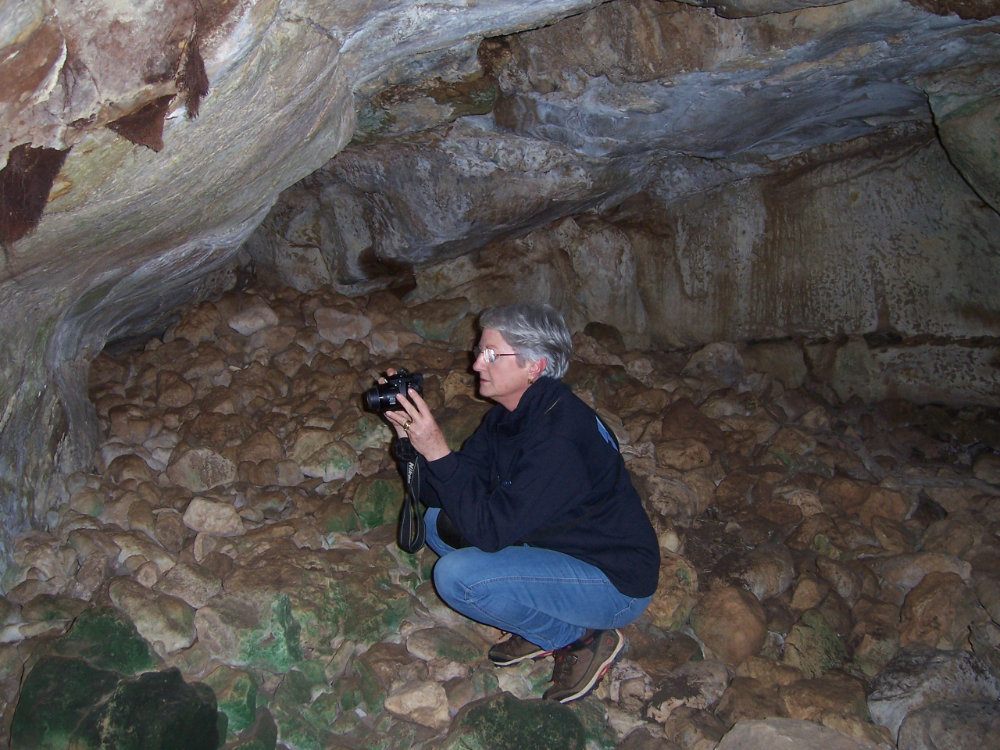
I have found it absolutely exhilarating and significant. Huge work has been done, first deciphering what UNESCO wanted to tell us in its report about the first file. This entailed doing a preliminary taks of consultation with international experts to approach the candidacy with a different perspective: it was not only about the assessment of a series of spectacular monuments, which were examples of the authenticity and integrity of unique and universal values; but also about making a detailed analysis of the Talayotic culture in its multiple aspects, one of them being its relationship with the landscape. In a short time, exceptionally interesting new studies were carried out, that allowed us to better understand the culture and explain it to others properly. All Menorcan archaeologists, and some from outside the island, participated in this process. It has been a real team effort with a common goal.
From my personal experience, the result of this process is that we now know much more about Talayotic culture and value the evolution and transformation of this very small island (the Odyssey of a culture, as the candidacy is titled). Finally, and selfishly, it has allowed us to deal first-hand with world renowned specialists who have helped us because they also believe in the universal value of Talayotic culture. Oherwise, we would only know them from the bibliography.
As an expert, you have participated in the ICOMOS evaluation mission. What sensations did you have? Are you optimistic?
Yes I am optimistic. I believe that the work done has had the deserved recognition. Specially, the new editor of the file, Cipriano Marín, and the team of the Heritage Service of the Consell Insular led by conseller Miquel Àngel Maria and Antoni Ferrer, and also with the technician Joaquín Pons. Lobbying has also been done at a national and international level to promote the candidacy, in which the Ministry of Cultural Affairs and the Spanish ambassador to UNESCO have intervened. That had not been done before and is necessary at this stage.
Now that I am retired, every time that my participation was requested for meetings and excursions I have been able to appreciate the professionalism of a cohesive team that has managed to transmit, beyond the file itself, the exceptionality of Talayotic culture and its landscape. My impression is that the evaluator has appreciated the work done, the impeccable conditions of the monuments, the interest of the landscape and its relationship with the Talayotic inhabitants, and the good conservation of both the landscape and the monuments. The ICOMOS evaluator has been able to ask all the questions that had arisen from reading the file, so I think that his report will be favorable.
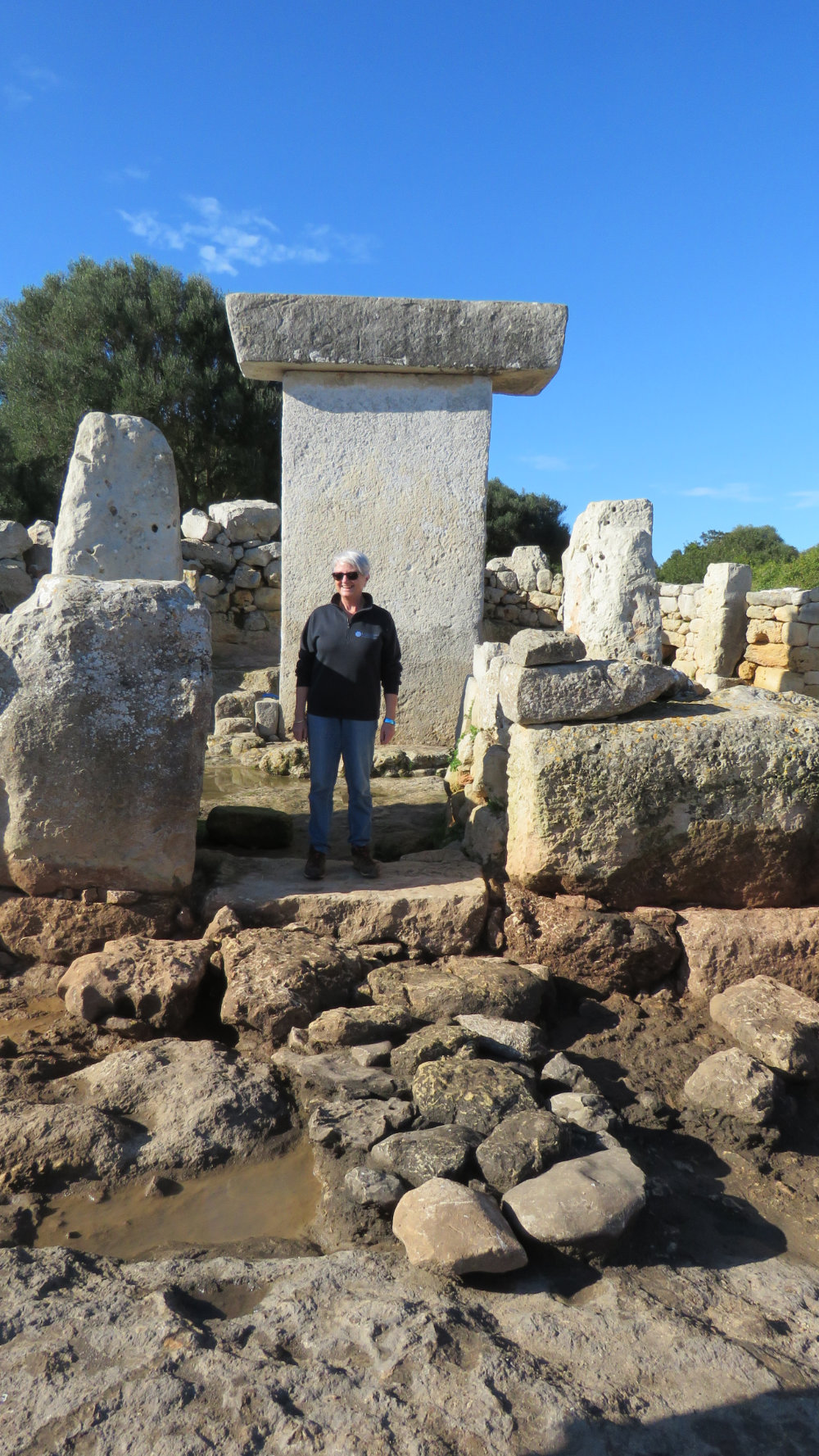 As president of the Scientific Council of the IME, you also accompanied the president of ICOMOS Spain during his visit a few months ago. What is the IME's commitment to the candidacy? As president of the Scientific Council of the IME, you also accompanied the president of ICOMOS Spain during his visit a few months ago. What is the IME's commitment to the candidacy?
Yes, it seemed interesting that the new president of ICOMOS Spain should know about the candidacy first-hand, since the previous presidents also visited the island on several occasions. For this reason, the IME invited him for a conference and various excursions and meetings were carried out with the technicians of the Consell Insular’s Heritage Service. He also met with the Advisory Council of the Associació Fra Roger, Gastronomia i Cultura and visited the dry stone landscape of Punta Nati.
The IME's commitment has been complete from the first moment. The suggestion to the Consell Insular de Menorca in 2010 to present this candidacy came from the IME's History and Archeology Section; we have a representative in the Advisory Commission of the candidacy and, both he and I, are part of the Scientific Council or Permanent Commission of Talayotic Menorca. In addition, practically all the archaeologists who have intervened are members of the IME, although their participation is as researchers and experts.
With your experience as an archaeologist and in the field of historical heritage management, what challenges does Talayotic Menorca face, beyond the inscription on the World Heritage List?
I think we have to go step by step because there is still a lot of work to do. The first thing is to defend the candidacy in front of the ICOMOS Panel, then we will have to answer the questions that they will surely ask us in writing and, finally, there will be a debate in the summer of 2022 in the World Heritage Committee. They will not make it easy for us because within UNESCO there is a belief that Spain has too many registered properties, the last one, the Paseo del Prado and the Buen Retiro this year. We must also convince them that, although we are a small island, we have the capacity to manage and conserve the property and the universal value it represents.
But I think that, whether they grant us the inscription or not, the work that has been done serves to better value and improve our archaeological richness. We face one of the most important challenges: to involve our society in the need to preserve Talayotic Menorca for future generations; and also the challenge of making known, not only touristically but scientifically, the values ??that it transmits. Talayotic Menorca should not be a burden for the monuments’ owners, whether they are public or private, but an opportunity and a source of pride.
|
End of the ICOMOS candidacy evaluation mission
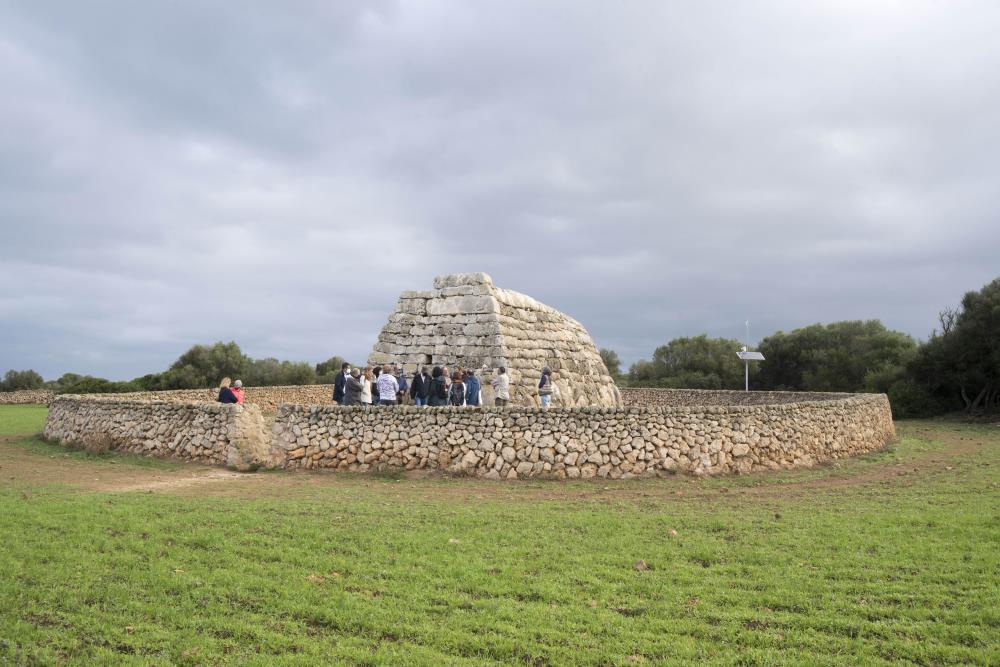 Talayotic Menorca's candidacy for UNESCO World Heritage has entered a decisive phase with the evaluation mission held between the 5th and 9th of October by a representative of the International Council of Monuments and Sites (ICOMOS). Talayotic Menorca's candidacy for UNESCO World Heritage has entered a decisive phase with the evaluation mission held between the 5th and 9th of October by a representative of the International Council of Monuments and Sites (ICOMOS).
Following the guidelines given by this UNESCO advisory body, the on-site assessment mission was carried out in strict confidentiality, so that the ICOMOS representative, after having read and studied the Talayotic Menorca file in recent months, could review the proposal first-hand and without interference. A representative from ICOMOS Spain was also present during the mission.
The candidacy team is satisfied with the visit and had good feelings about it. As the Vice President and Conseller of Cultural Affairs, Education, Youth and Sports, Miquel Àngel Maria stated: "The objective of the evaluation mission is to verify that what is explained in the file reflects reality. Our objective was to demonstrate that this proposal meets all the requirements to be inscribed on the World Heritage List. We must be cautious, because there is still work to be done, the evaluation has not finished with this visit. But I cannot deny that we are left satisfied and hopeful. " This will be the only official visit to Menorca of the ICOMOS team working on the designation process.
The evaluation mission began with an official reception at the Consell Insular de Menorca with the presence of the president of the CIM, Susana Mora; the Conseller of European Funds, University and Culture of the Balearic Government, Miquel Company; the eight mayors of the island; a delegation from the Spanish Ministry of Cultural Afairs headed by the deputy director of cultural assets, Pilar Barrero; the Insular Director of the State’s Administration in Menorca, Isabel López; the vice president Miquel Àngel Maria; the director of Cultural Affairs and Heritage, Raquel Marquès; the technicians of the Historical Heritage Service of the Consell; and the candidacy’s team.
From Tuesday to Saturday, they toured the main components of the candidacy, led by archaeologists and other experts who have worked on the different aspects of the file, such as the inclusion of the landscape associated with the prehistoric sites, the archaeoastronomical dimension incorporated into the new file, or the management plan.
On Tuesday the 5th there was a private screening of the documentary "La Menorca Talayotica" to the candidacy’s Advisory Commission. The film produced by the Mallorcan production company Espiral moved the attendees and opened a debate on how Menorcan society lives and values the Talayotic culture. It should be said that in the coming weeks the documentary is scheduled to be screened in all Menorcan towns. A screening that will be accompanied by an exhibition of what the candidacy means for Menorca and that will conclude with a sample of the new Talayotica beer.
Next November a meeting will be held, headed by the Ministry of Cultural Affairs, with the entire "Panel" (group of experts) of ICOMOS international that carries out the evaluation of the candidacys that are presented to UNESCO next year. Then, in early 2022, the first ICOMOS interim report will be received, and the final report will be released in May. The inscription of Talayotic Menorca on the UNESCO World Heritage List will finally be decided at the World Heritage Committee to be held next July in Kazan (Russia).
|
Becatalaiotica 2021 Grand Finale
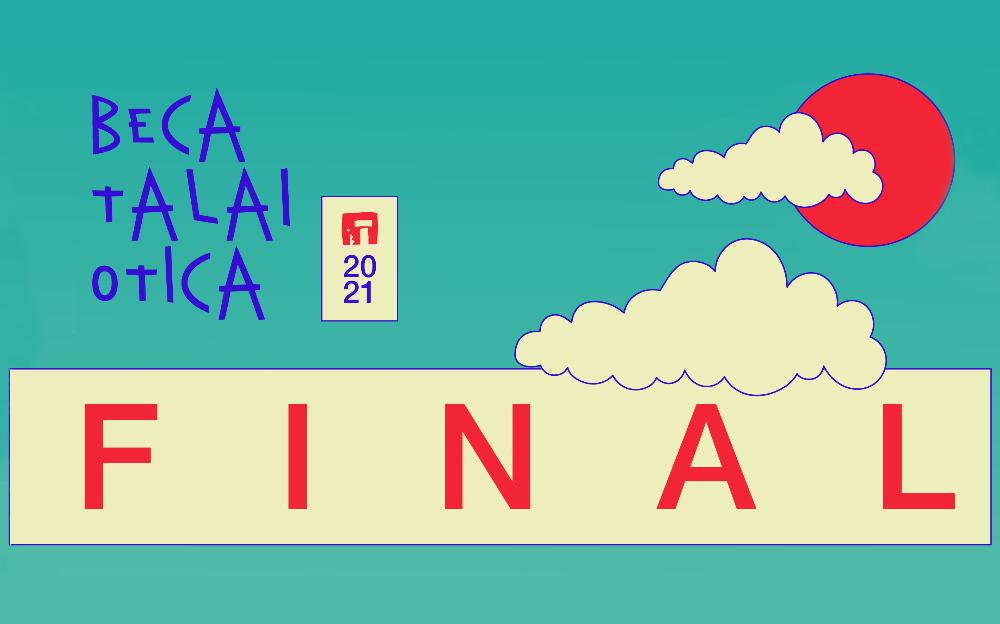 The Becatalaiotica 2021 Grand Finale is here! The contest, organized by the Associació d’Amics del Museu de Menorca, is celebrating its 5th aniversary. The staging of Becatalaiotica will take place at the different Talayotic Menorca archaeological sites every weekend during October. The Becatalaiotica 2021 Grand Finale is here! The contest, organized by the Associació d’Amics del Museu de Menorca, is celebrating its 5th aniversary. The staging of Becatalaiotica will take place at the different Talayotic Menorca archaeological sites every weekend during October.
Five events, five participants, five sites. By converting the sites into open-air stages, the five finalists - young students between 16 and 25 years of age - aim to create a free nature event, in which any method of expression will be valid to transmit their vision about Menorca’s heritage or propose new ways of understanding it.
The assisting audience, apart from enjoying the event, must evaluate the proposals, assessing their originality, content and evocative power. The finalist who achieves the best evaluation will be granted a 2.000 € scholarship.
The dates and locations for each event are as follow:
- Saturday, October 2, 7:00 p.m. - Talatí de Dalt, Maó
THE MESSAGE BEHIND THE FIRE
With SOFIA Zamrik
A performance where Sofia uses classical myth and medieval tradition to make us reflect on the drama that the inexorable passage of time and the beginning of a new era can entail.
- Sunday, October 10, 10:00 am - Torre d'en Galmés
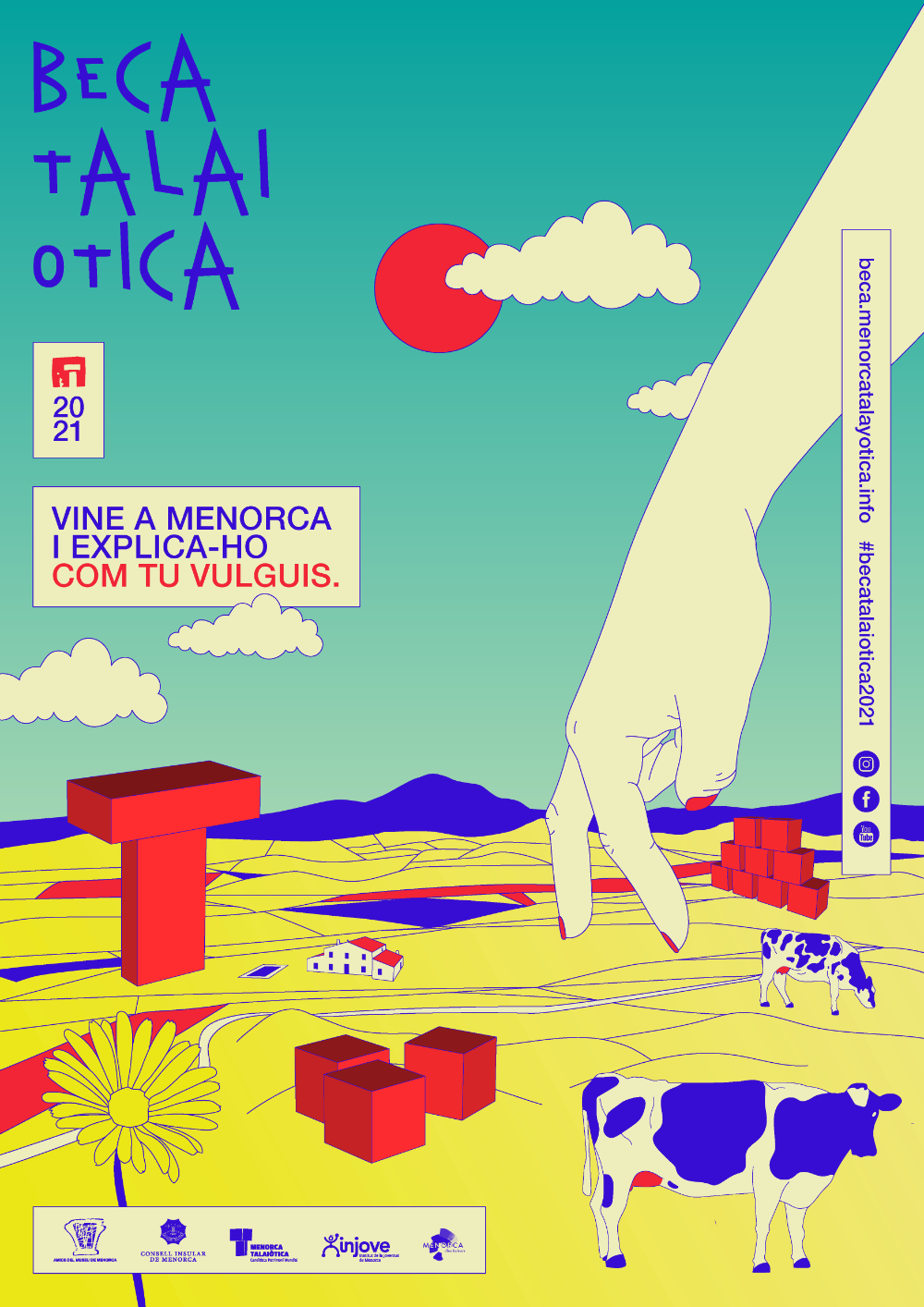
TRAPPED IN TALAYOTIC MENORCA
With NOELIA Mostajo
An escape room-gymkhana where Noelia encourgages us to have a good time, pretending to get out of a time loop together.
- Saturday, October 16, 6.30 pm - Caparrot d'en Forma, Maó
COLLECTIVE RESONANCES
With SONIA Buj
Being in a prehistoric cave opens the possibility of accessing a wealth of sensory experiences and memories. Sonia wants to decompose this reality, magnify and collectivize sensations through technology.
- Sunday, October 24, 7:00 p.m. - Na Comerma de Sa Garita, Alaior
THE SHADOWS OF THE PAST
With LEIRE Pellejero
Darkness, light bulbs and fabrics are the tools that Leire will manipulate between the pilasters and lintels of Na Comerma de Sa Garita to tell us a story about the most remote origins of the island.
- Sunday, October 31, 10.00 am - Torrellafuda, Ciutadella
TORRELLAFUDA YESTERDAY AND TODAY
With AROA Durst
An intriguing game where Aroa will induce us to use our imagination to solve a puzzle and discover what the Torrellafuda site hides from us.
To attend the events you must send an email to beca@menorcatalayotica.info or call / send a whatsapp to 682 187 566.
Limited capacity.
The entrance is free. The cost of this activity is assumed by the Department of Cultural Affairs of the Consell Insular de Menorca.
|
Boston University presents an article about the use of fire at Torre d'en Galmés during the EAA Annual Meeting
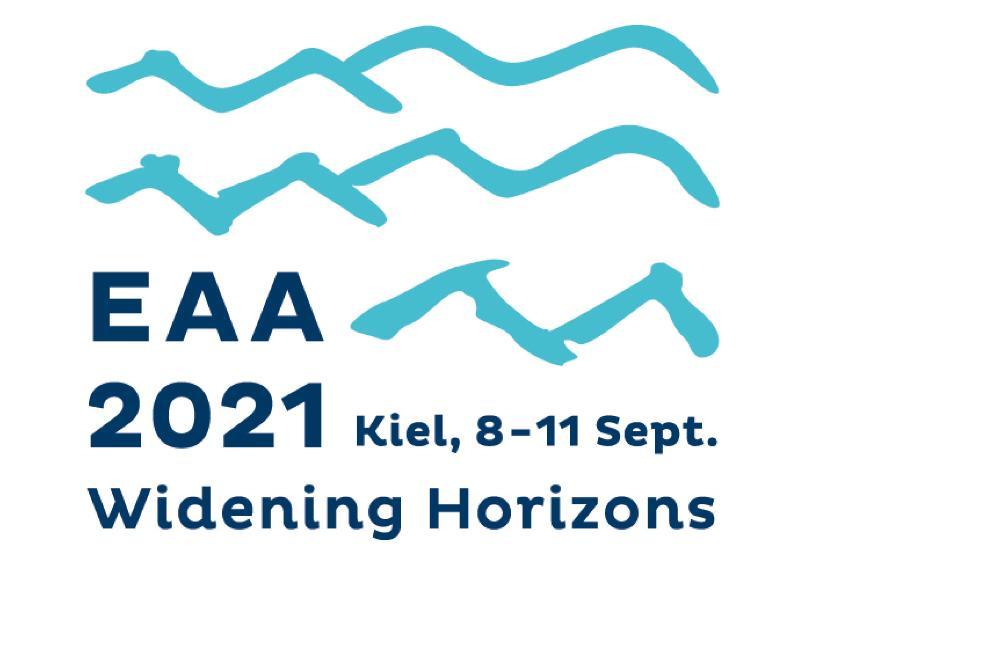 The archaeologists Amalia Pérez-Juez and Paul Goldberg, two of those responsible for the Boston University research project in Torre d'en Galmés, have presented the article "Evidence for fire use - or not - at the Talayotic site of Torre d'en Galmés" at the European Association of Archeology Annual Meeting (EAA), held online between September 6 and 11. The archaeologists Amalia Pérez-Juez and Paul Goldberg, two of those responsible for the Boston University research project in Torre d'en Galmés, have presented the article "Evidence for fire use - or not - at the Talayotic site of Torre d'en Galmés" at the European Association of Archeology Annual Meeting (EAA), held online between September 6 and 11.
The archaeological site of Torre d’en Galmés spans from the beginning of 1st millennium BCE to the 13th century CE, encompassing Talayotic, Roman, and Muslim periods. It covers two thousand years of occupation in which different peoples used the space according to their needs and cultural patterns. They also made fire, which is evident throughout the site and during the different time periods just mentioned. Researchers have documented fires for cooking, keeping warm, lighting rooms, cleaning and industrial uses. They have also identified different fuels such as wood or dung. The traces of combustion in the archaeological record are multiple and depend on numerous factors. These traces are not always clear at the site, and using only field observation can lead to misinterpretation of remains and possible activities.
That is why in their article, Pérez Juez and Goldberg present the evidence of fire use by applying micromorphological analysis as a way of identifying and evaluating fire, combustion features, their traces or deposits that turned out not to be associated with fire. They present examples from the interior and exterior of domestic structures and open spaces that show how micromorphology can contribute to a better understanding of site activities as a whole.
During the EAA Annual Meeting, another research project related to Talayotic Menorca has been presented under the title “Integrating microfossil records from livestock dung burned as fuel in Menorca, Balearic Islands: an experimental approach.” Marta Portillo, researcher at the Department of Archeology and Anthropology of the Milà and Fontanals Institution for Research in Humanities (IMF) - CSIC has been in charge of the presentation. The archaeologists Montserrat Anglada and Damià Ramis from the Museu de Menorca, and Antoni Ferrer from the Institut Menorquí d’Estudis are also part of the project team.
European Association of Archaeologists Annual Meetings
The EAA Annual Meetings are the highlight of the EAA year, bringing together colleagues from all over Europe to discuss important issues in research, heritage management and commercial practice, ethics and theory, and the newest results of fieldwork. With over 2.000 delegates and 150+ sessions, the EAA Annual Meetings have grown to be an essential event on European archaeological scene.
|
"This is Menorca's legacy and must be preserved for future generations"
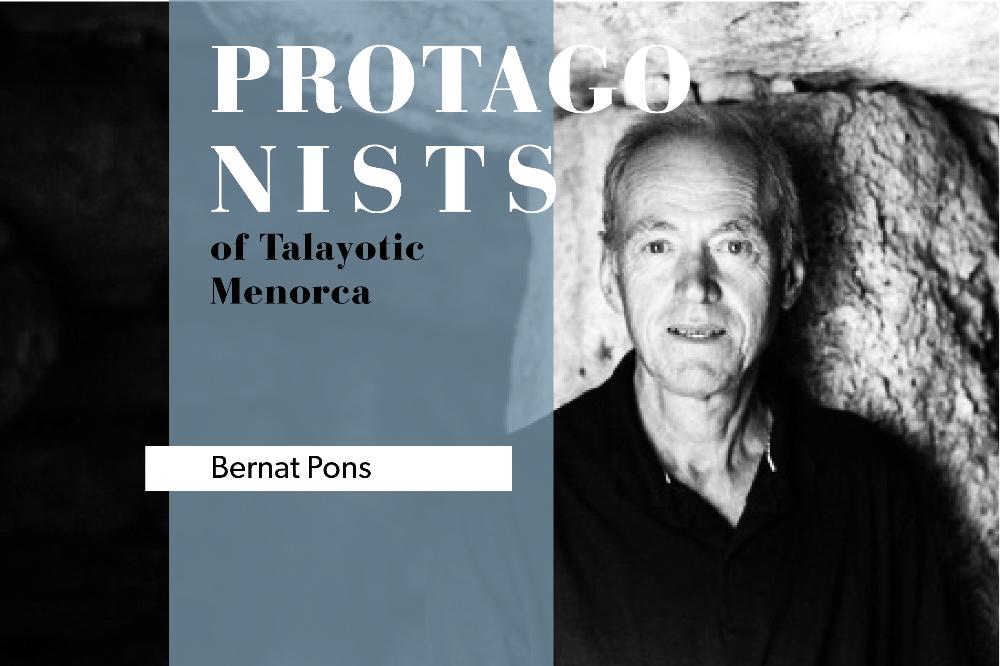 Bernat Pons is the owner of Talatí de Dalt, one of the most emblematic Talayotic sites in Menorca. Its peculiar taula, with a supporting lateral pilaster, has become one of the iconic images of Talayotic Menorca. Since he was little, he learned how to build dry stone walls and do farm work, spending summers helping on the family farm, very close to Talatí: "I have many childhood memories playing around this taula, for me it is the most special place." Working since he was 14 years old, he now runs the Talatí de Dalt farm with his family. This exploitation of ecological and livestock agriculture has been complemented for 17 years with tourist visits to the archaeological zone where you can find a Talayotic town, a necropolis of artificial caves, sections of a wall, a taula sanctuary and Talayotic houses. Bernat Pons is the owner of Talatí de Dalt, one of the most emblematic Talayotic sites in Menorca. Its peculiar taula, with a supporting lateral pilaster, has become one of the iconic images of Talayotic Menorca. Since he was little, he learned how to build dry stone walls and do farm work, spending summers helping on the family farm, very close to Talatí: "I have many childhood memories playing around this taula, for me it is the most special place." Working since he was 14 years old, he now runs the Talatí de Dalt farm with his family. This exploitation of ecological and livestock agriculture has been complemented for 17 years with tourist visits to the archaeological zone where you can find a Talayotic town, a necropolis of artificial caves, sections of a wall, a taula sanctuary and Talayotic houses.
How did the history of your family with Talatí begin?
Well, more than 30 years ago, when my mother still owned the land ahead and sold it. Later, in 1989, the whole family decided to buy Talatí. We saw that it had enormous potential, both as an agricultural operation, because it was a very large farm, and because of the archaeological site. At that time, it was considered that having remains like these inside a farm was a headache since there were always people who wanted to come to visit them. For our family, the truth is that buying Talatí has been the best thing that has happened to us in generations.
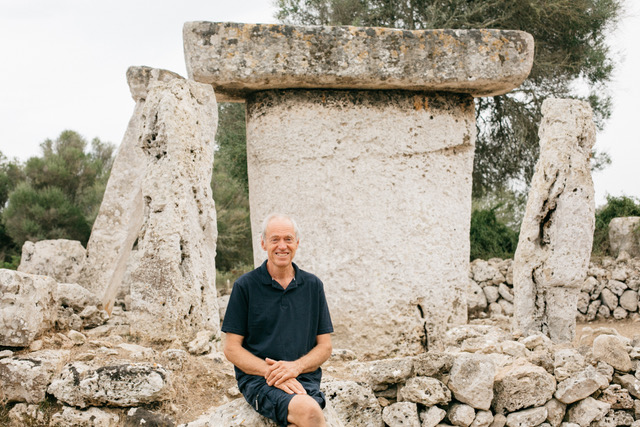 And where did the idea of exploiting the site for tourism come from? And where did the idea of exploiting the site for tourism come from?
In the beginning, we had dairy cows and it was not profitable. 25 years ago we decided to run the farm ourselves and we registered the second agrotourism license in all Menorca, which we later transformed into a rural house to have an extra income apart from the agricultural activity. The agricultural exploitation is focused on indigenous breeds of cow and sheep from Menorca and organic farming. I think we should have been among the first on the island to focus on organic farming.
After having the rural house, we contacted an English tour operator and the first tourists of this nationality began to arrive, who were already looking for rural tourism. In 1997 the Amics del Museu de Menorca requested permission to excavate the area of the talayotic houses with an archaeologist named De Nicolás. He was the one who proposed the idea of exploiting the site for tourism and we started doing it in 2004. We were partners until he retired. It’s been 10 years since we exploit it by ourselves and now our children take care of the site. When farming seems to have no viability, this farm has a guaranteed future, creates jobs and has an economic outlet. The site is a complement to the rest of the farm's activities.
Being a private property, you were among the first to exploit a site in Menorca for tourism. What possibilities did you see, beyond the economics?
That’s right, about 17 years ago as we said before. We were the first ones alongside the Fundació Illes Balears that bought Torralba d'en Salort. At that time, having a prehistoric site was not valued, it seemed like it was more of a problem. It is clear that to take good care of it you need an entry of money, that is why we charge entry during high season. At the end of October, when the turistic season ends, entrance is free for Menorcans to visit.
We can’t have a wonder like this, unique in the world, and not take care of it and let it rot. Today, luckily, people have acquired culture and understand that this is part of the legacy of the people of Menorca that must be preserved for future generations. We are here for a season and those who will come after us must find it the same or in better shape than how we have found it. It’s our responsibility to do so and it’s the main purpose of our work.
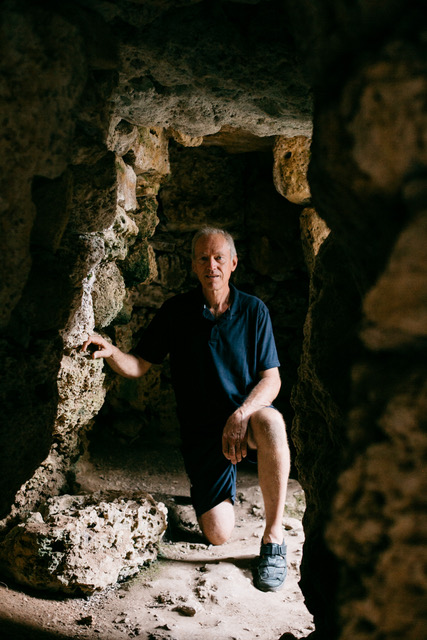 This responsibility you are talking about, how much maintenance work does it involve? This responsibility you are talking about, how much maintenance work does it involve?
Every winter we clean the plot and we prune the wild olive trees, maintenance is necessary otherwise it would be a disaster. The wild olive trees break the stones. Two months before the start of the tourist season, we let the sheep graze and eat all the grass, they’re a non-harmful animal, and we then just finish trimming ourselves.
When you bought Talatí, what shape was the site in?
Well, this was one more plot on the farm, everything was full of pebbles and wild olive trees. Cows, pigs and sheep were grazing here and the field was tilled. The archaeological remains were not important at the time. Notice that even when they built the Maó Military Base, they took a pile of stones from here that were surely from the Talayotic period.
My mother was born next door to hear, in Algendaró, and she told me that there had always been livestock here. The Talayotic houses were full of sheep manure because they went there to sleep. A man made a donation to Amics del Museu de Menorca so that they would come to excavate them. They did so between 1997 and 2001. Everything that was found inside was taken to the museum and is on display there. Since the times of the Arab domination, this site has not been reoccupied, therefore everything was as they had left it. Before opening the site to the public, we had to clean a lot, collect the small pebbles, as well as prepare the route and the signage.
And for you, what makes the Talatí site special?
The most important thing is that in a small piece of land you have everything. In Approximately 1 hectare you will find talayotic houses, dolmens, a talayot, a taula enclosure ... in the middle of a unique environment of well-preserved nature. What we offer is the experience of visiting a well- preserved part of rural Menorca.
What challenges have you faced during these 17 years?
At first, when we made the proposal to open the site to tourism there was reluctance, but then they realized that it had a future. We spent a year in legal proceedings to obtain the permits. In recent years everything goes smoothly thanks to the Consell Insular, there is an awareness that this is important for Menorca, a unique opportunity to take the last step in the transformation to a more sustainable and respectful tourism.
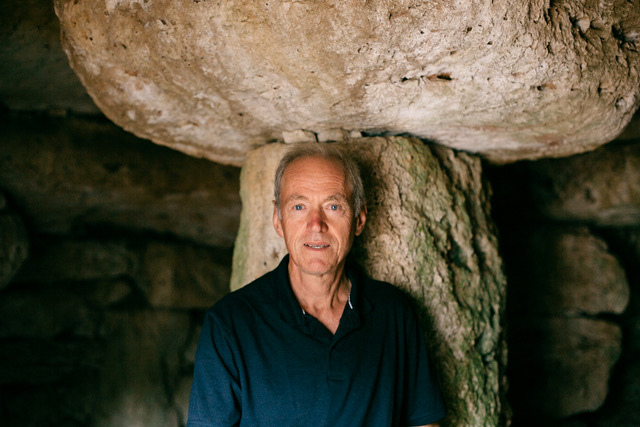 Now that we are on the final stretch for the nomination of Talayotic Menorca as World Heritage, what could it mean for a site like Talatí? Now that we are on the final stretch for the nomination of Talayotic Menorca as World Heritage, what could it mean for a site like Talatí?
As I was saying, it is a very good opportunity for the island. For us in particular, it would open up many possibilities to offer more turistic experiences. We could organise guided tours in several languages, we have the idea of doing local product tastings ... The nomination as World Heritage would open a new cultural and economic space.
|
Presentation of the results of Boston University and SUNY Brockport’s 2021 archaeological campaign at Torre d'en Galmés
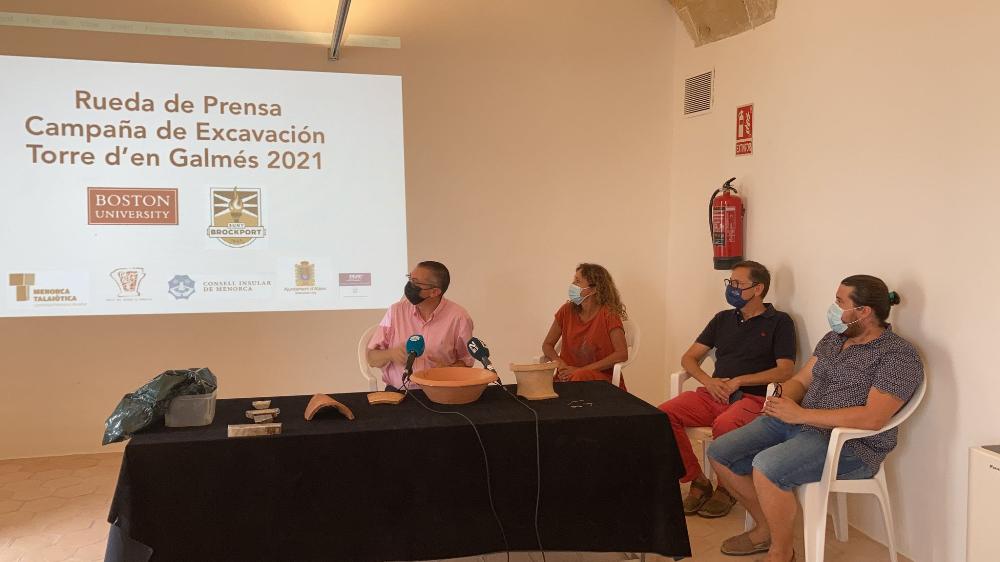 Today, August 30, the San Diego convent in Alaior hosted a presentation of the results of the archaeological campaign at Torre d'en Galmés (2021) by Boston University and SUNY Brockport. The archaeologists, Amalia Pérez-Juez Gil and Bruno Parés Sansano, showcased part of the recovered material, aerial photographs, and a 3D reconstruction of a portion of the site. The Vice President and conseller of Cultural Affairs, Miquel Àngel Maria, a representative of the Alaior City Hall, Santiago Reurer, and the president of Amics del Museu de Menorca, Cecilia Ligero, all attended the event. Today, August 30, the San Diego convent in Alaior hosted a presentation of the results of the archaeological campaign at Torre d'en Galmés (2021) by Boston University and SUNY Brockport. The archaeologists, Amalia Pérez-Juez Gil and Bruno Parés Sansano, showcased part of the recovered material, aerial photographs, and a 3D reconstruction of a portion of the site. The Vice President and conseller of Cultural Affairs, Miquel Àngel Maria, a representative of the Alaior City Hall, Santiago Reurer, and the president of Amics del Museu de Menorca, Cecilia Ligero, all attended the event.
The 2021 archaeological campaign was led by professors from Boston University and SUNY Brockport: Amalia Pérez-Juez, Alexander Smith, Paul Goldberg and Ricardo Elia. A large team of professionals from different institutions and disciplines also participated, including individuals from Menorca, Mallorca, Barcelona, and Madrid, as well as North American students. As in previous years, the team also collaborated with the Amics del Museu de Menorca. The campaign, financed by the home institutions of the team members as well as by the Consell Insular de Menorca, produced interesting results concerning the Andalusian occupation of the Talayotic site.
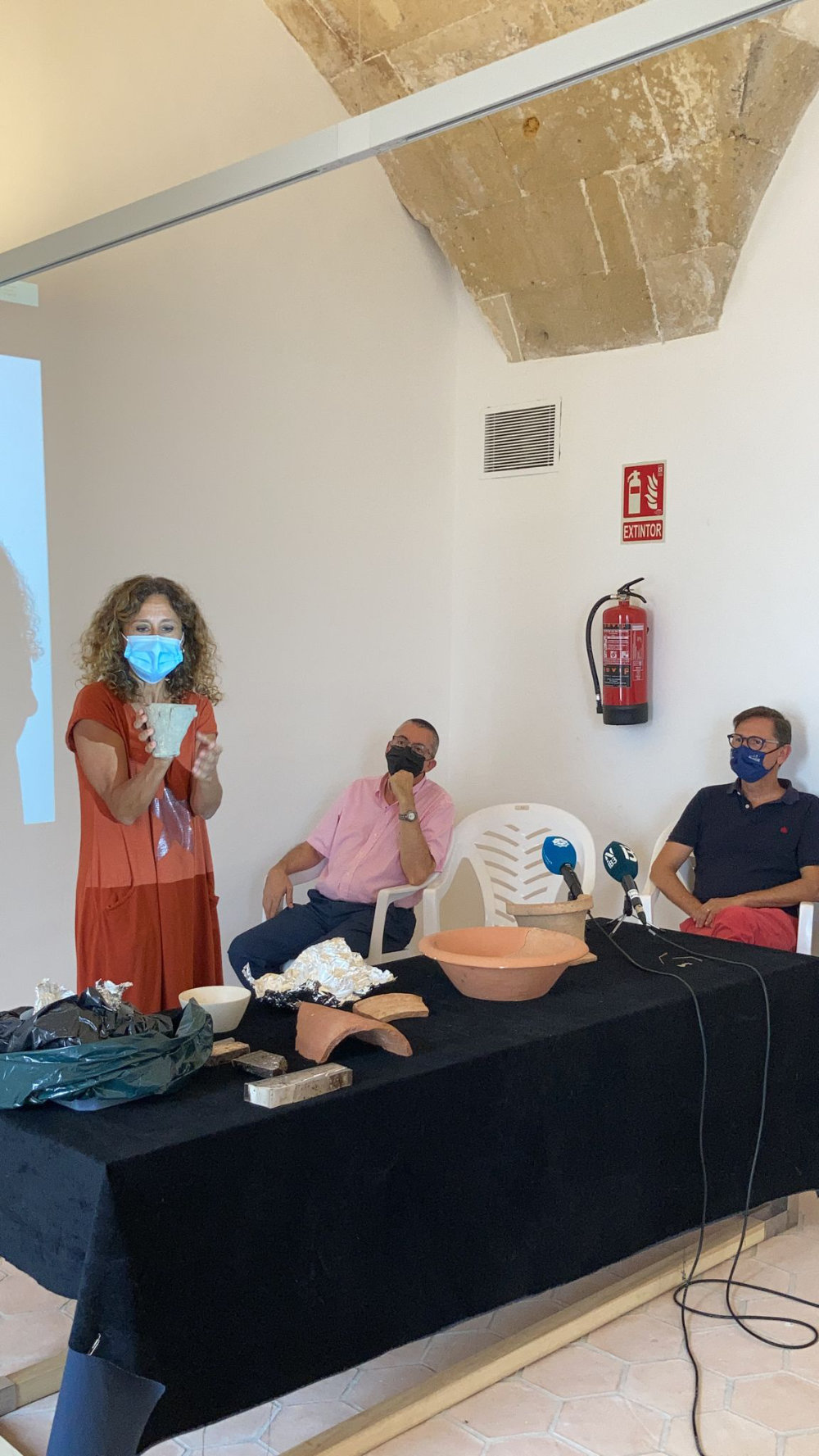 The objective of the 2021 campaign was to continue studying the 12th and 13th century Andalusian reoccupation of Torre d'en Galmés. Where did the new population settle? How did they take advantage of the site’s resources? Did they modify the Talayotic structures? Did they use Talayotic cisterns and caves? In order to answer these questions, the team continued excavations of the site’s central area, where we know there were at least five domestic enclosures, which were composed of two to three rectangular rooms arranged in an L or U shape around a patio. The objective of the 2021 campaign was to continue studying the 12th and 13th century Andalusian reoccupation of Torre d'en Galmés. Where did the new population settle? How did they take advantage of the site’s resources? Did they modify the Talayotic structures? Did they use Talayotic cisterns and caves? In order to answer these questions, the team continued excavations of the site’s central area, where we know there were at least five domestic enclosures, which were composed of two to three rectangular rooms arranged in an L or U shape around a patio.
The first structure the team focused upon was SPU 9, which was excavated in previous years, and where a Talayotic cistern had been located. The Muslims built their house right on the edge of the cistern and constructed a spout that fed into the well, most-likely using the system to collect rainwater from the roof. All the sediment in the cistern was floated for analysis in the laboratory. The presence of traces of grain -in this case barley- and fauna -showing a significant number of fishbones- have already been detected at the site. Right next to SPU 9 is another Andalusian house enclosure formed by at least two rooms around an open patio. All the houses were plastered with lime on the inside and covered with ceramic roof tiles.
The team also began excavation of a new medieval structure -SPU 7- that is located to the south of the taula sanctuary. It is part of a larger enclosure, most-likely formed by three rooms in a U-shape around a central patio. The team excavated half of SPU 7 to assess the stratigraphy and understand how it was built in relation to Talayotic structures. The stratigraphic sequence is more complicated than in previously excavated structures because there is no clear collapse level. It was shown, however, that the medieval room rises directly above a Talayotic level, in which an intact high-bottomed cup was found, a vessel that is traditionally dated between the 3rd and 2nd centuries BC. These cups have been related to ritual activities and would be used for libations, offerings, etc., or even for some rituals associated with structural foundations.
The Andalusian material found (cooking and serving ceramics, such as ataifores -big serving plates- and jugs) are very similar to the ones recovered during previous campaigns and confirms an intensive occupation of the site in the 12th and 13th centuries as mentioned above. The lab analyses carried out during 2021 include the flotation of sediment from all stratigraphic units and radiocarbon dating. Samples were also taken from all stratigraphic units to analyze thin sections of soil micromorphology. This methodology will allow us to better understand the nature of all the excavations and make a more detailed study of the microstratigraphy. Finally, the project used photogrammetry and 3D reconstruction for all the excavated spaces.
To conclude, each year we understand a little more about the Andalusian community that settled at the Talayotic site of Torre d’en Galmés between the 12th and 13th centuries, and thereby approach a part of Menorcan history that is so important in understanding the current landscape of the island.
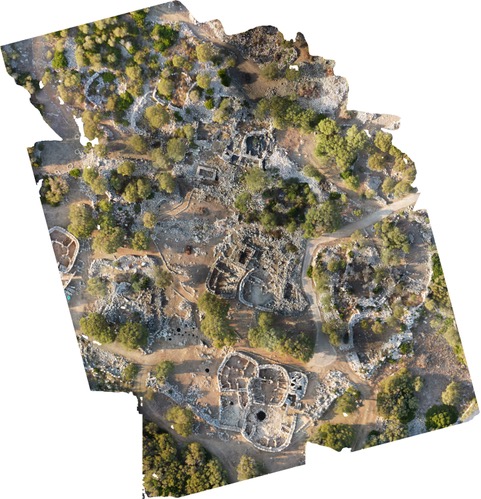 Here you can see a video of the 3D reconstruction of part of the site. Here you can see a video of the 3D reconstruction of part of the site.
|
A living communication plan for Talayotic Menorca
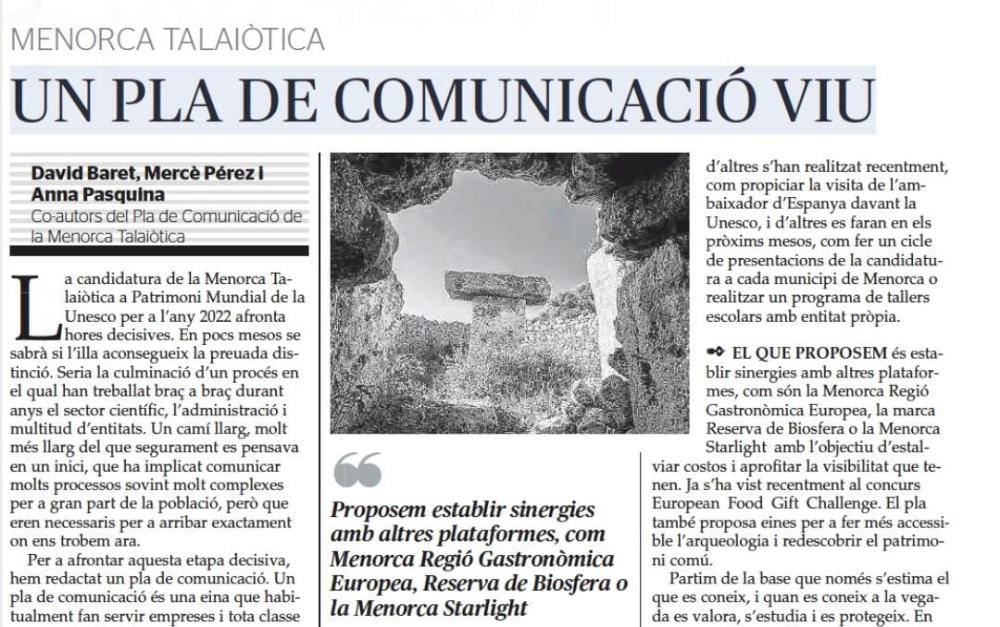 The Talayotic Menorca candidacy for Unesco World Heritage in 2022 faces its decisive hours. In just a few months we will know if the island has achieved the prestigious distinction. It would be the culmination of a process in which the scientific sector, the public administration and a multitude of entities have worked side by side for years. A long road, much longer than was surely thought at the beginning, and that has involved communicating many processes that are often very complex for a large part of the population, but which were necessary to get exactly where we are now. The Talayotic Menorca candidacy for Unesco World Heritage in 2022 faces its decisive hours. In just a few months we will know if the island has achieved the prestigious distinction. It would be the culmination of a process in which the scientific sector, the public administration and a multitude of entities have worked side by side for years. A long road, much longer than was surely thought at the beginning, and that has involved communicating many processes that are often very complex for a large part of the population, but which were necessary to get exactly where we are now.
To face this decisive stage, we have drawn up a communication plan. A communication plan is a tool that companies and all sorts of entities and administrations usually use, a document that defines the communication strategies and the actions that must be carried out to achieve an objective, in this case being nominated World Heritage. This aim implies explaining what we are and what we do, what audience we want to address at each moment, how we do it and what message we convey to them. To prepare it, we held meetings with professionals linked to the candidacy, such as the director of the Museu de Menorca, Carolina Desel; the president of the Scientific Council of the IME, Cristina Rita; and with cultural managers such as the creator of the Tarraco Viva festival, Magí Seritjol. Afterwards, we did a study to define all the segments of audiences (local, national and international) we want to address and the agents that could help us to reach them. We highlighted the strengths but also the weaknesses of the candidacy, we reviewed the most representative actions that had been carried out so far and, based on all this, we proposed 83 new actions, of which 8 will take place from now until end of the year. This plan is a living document, with the will to last beyond the candidacy and to be used beyond July 2022.
Among the proposals, there are some that have already been done, for example, an artisan product such as the Talayotic beer; others have been carried out recently, such as the visit of the Spanish ambassador to UNESCO; and others will be held in the coming months, such as the presentations of the candidacy in each town of Menorca or carrying out a program of school workshops.
What we propose is to establish synergies with other platforms, such as Menorca European Gastronomic Region, the Biosphere Reserve brand or Menorca Starlight in order to save costs and take advantage of the visibility they have. for example, this has already been done recently with the European Food Gift Challenge. The plan also gives tools to make Archeology more accessible and rediscover our common heritage.
We start with the premise that we only love what we know, and when we know something we then value, study and protect it. In this sense, the pandemic that we are experiencing has revealed to us what it means to live in a limited territory such as an island, which requires a sustainable management of resources and everyone’s efforts to keep functioning.
All of this also brings us back to our Talayotic past. The dimension of the Talayotic culture constructions instills the collective effort carried out by a small community with few resources and a way of life based on sustainability. Now is the time to make very clear the importance of a unique civilization, with an identity and a way of being in the world that has survived through centuries in the archaeological monuments and the landscape that surrounds us.
|
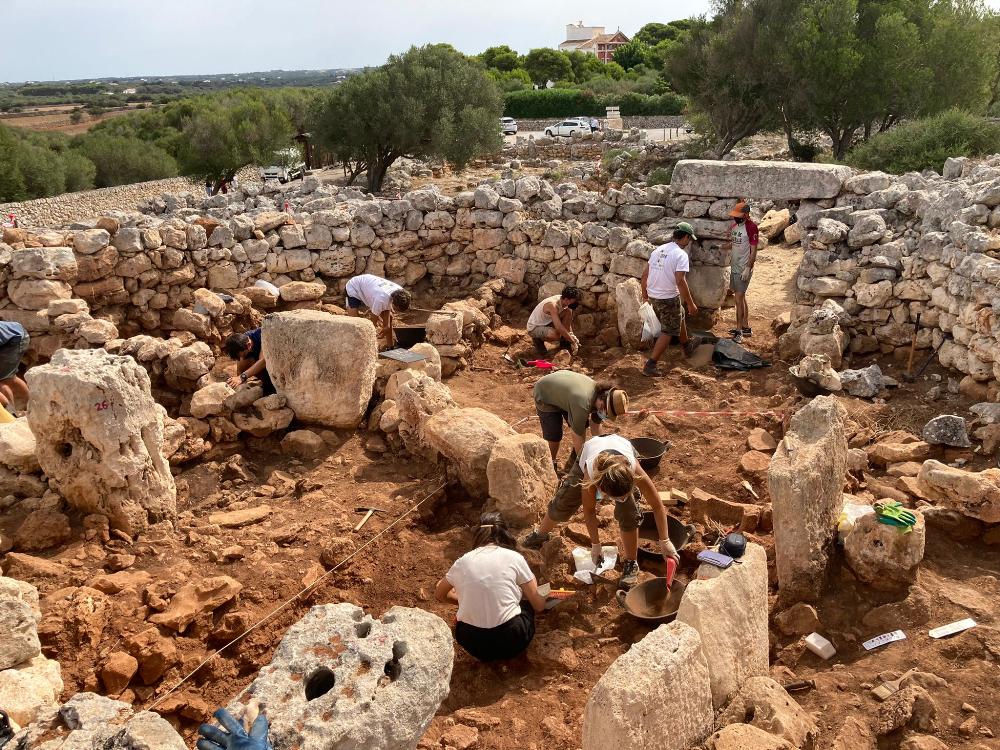
Latest advances of the Amics del Museu de Menorca archaeological campaign in Torre d'en Galmés
¿¡[AQUI]¡¿Amics del Museu de Menorca has presented the latest advances of the 2021 excavation campaign, the third in the northern part of the site. Since the 1990s, the association has carried out research tasks and promoted of the prehistory of Menorca at the Torre d'en Galmés site.
The intervention is co-directed by archaeologists Borja Corral, Antoni Ferrer and Carlos de Salort. The restoration tasks are carried out by the restorers-conservators Francisco Isbert and Cecilia Ligero. Students and graduates from different universities in Spain and volunteers from Menorca also participate in the project. Specifically this year, there are 20 students and graduates from Barcelona, ??Madrid, Seville and Almeria. Also, 19 volunteers from Menorca and two youngsters from the "Un estiu per crèixer" program. All the interventions are being carried out following the "recommendations for archaeological excavations in Menorca due to the Covid-19 health crisis".
The 2021 campaign is divided into two phases: three weeks of excavation at the site between July 26 and August 13; and laboratory work until August 31 at the association's headquarters in Maó. The excavation project is centredaround a set of structures located in the northern part of the site, between two of the three talayots, which would surely be from the oldest occupation phase of the settlement.
Human remains and 34 loom weights
During this campaign, Amics have excavated levels of demolition of Structure 1 which is probably a domestic space with different rooms that were covered with a roof of clay and mud. The distribution of the rooms is slightly different from those that have been documented on the other houses excavated in the site.
In one of the rooms, human remains have been found, specifically of an alophysus adult - with a skeleton that does not allow us to determine the sex as the indicator characters are not evident. Two radiocarbon datings of this skeleton allowed us to place its death around the III century BC. Also very interesting is the fact that the bones of the individual, after a while, were gathered and piled up. The skeleton was covered by a layer of debris, so it seems that when it was placed there, the house had not yet fully collapsed. The individual was also placed on a small level of fallen stones, so the house was probably already abandoned when these human remains were deposited. In the same room as the skeleton, a set of 34 loom weights has also been found, in particular amphora handles reused as loom weights.
This project is possible thanks to the financing of the Consell Insular de Menorca, the Alaior City Council and the members of the Amics del Museu de Menorca association. It has the scientific support of Boston University, the Royal Institute for Cultural Heritage of Belgium, the Higher School of Conservation and Restoration of Cultural Properties of Catalonia, the surveying company TANIT SL. The City Council of Maó, the Fundació Foment del Turisme de Menorca, the Museu de Menorca, INJOVE, Menorca Photo, La Paella prepared meals, Ornaque signs, and the Menorca School Council participate during the month of August with the program “Un estiu per créixer “.
On August 19 at 7 p.m. there is a Visiting day to explain how the 2021 campaign went.
|
Talayotic Menorca sponsors "The Other Side" show
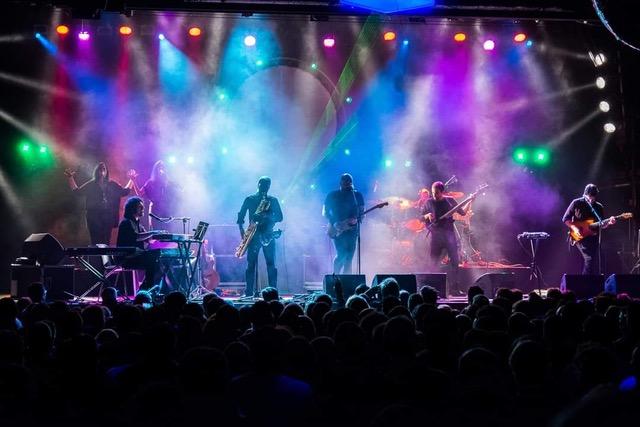 Talayotic Menorca sponsors The Other Side 2021 tour with the aim of promoting the UNESCO World Heritage candidacy at a national level. The renowned Menorcan Pink Floyd tribute band, led by musicians Shanti Gordi and Pedro Sánchez Tuomala, have scheduled the following performances in Catalonia and the Balearic Islands: Talayotic Menorca sponsors The Other Side 2021 tour with the aim of promoting the UNESCO World Heritage candidacy at a national level. The renowned Menorcan Pink Floyd tribute band, led by musicians Shanti Gordi and Pedro Sánchez Tuomala, have scheduled the following performances in Catalonia and the Balearic Islands:
August 22, Som de Mar Festival, Lloret de Mar
October 8, Palma Auditorium, Mallorca
October 9 and 10, Teatre des Born, Ciutadella
The tour will continue until December 2021 with more concerts still to be confirmed, depending on the evolution of the pandemic. The Menorcan group will promote the candidacy through various channels, such as interviews with the media to publicize the show. The official logos of Talayotic Menorca and the Consell Insular de Menorca, as well as the official website www.menorcatalayotica.info, will appear on each concert poster and ticket. Furthermore, a video about Talayotic Menorca provided by the Consell Insular will be displayed, both at the beginning and at the end of the show,
|
The bylaws of the Talayotic Menorca Agency have been published in the BOIB
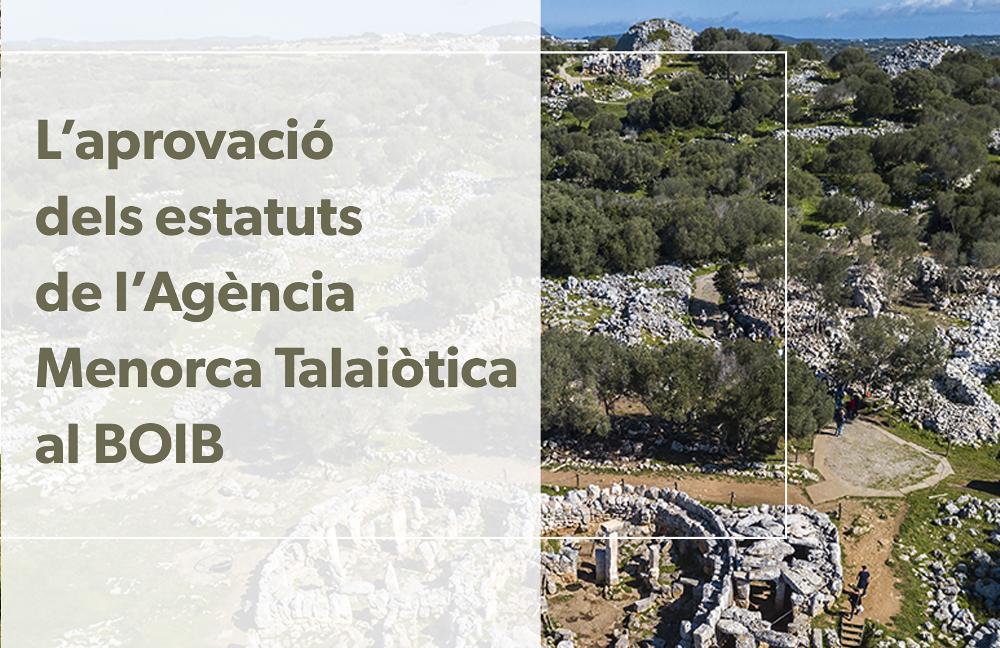 Today the bylaws of the Talayotic Menorca Agency have been published in the Official Gazette of the Balearic Islands (BOIB), after their initial approval in the plenary session of the Consell Insular de Menorca (CIM) on July 19. For 30 days, the draft will be on public display, during which time allegations may be presented. Today the bylaws of the Talayotic Menorca Agency have been published in the Official Gazette of the Balearic Islands (BOIB), after their initial approval in the plenary session of the Consell Insular de Menorca (CIM) on July 19. For 30 days, the draft will be on public display, during which time allegations may be presented.
This body, which will start operating at the beginning of 2022, will be responsible for the management, conservation and dissemination of the properties that embody the Menorca Talayotic candidacy and, to ensure their passing to present and future generations of Menorcans. The CIM is in the process of creating the Talayotic Menorca Agency following the recommendations of the 2017 report by ICOMOS (International Council of Monuments and Sites).
This new entity will be responsible for the effective coordination and implementation of the Talayotic Menorca Management Plan, and preparing and submitting proposals to the different CIM bodies; promoting the management, conservation and transmition of the values ??of the archaeological monuments and their associated landscapes; and furthering participation and social cooperation around the conservation of our prehistoric heritage. Promoting the sustainable development of archaeological and landscape heritage, favoring public and private investment, and promoting scientific research are other objectives of the Agency.
The organization chart
The Talayotic Menorca Agency will have a Governing Council with representatives of the island’s different institutions and representatives of the Scientific and Social councils of the Agency. This will be the body in charge of establishing the internal organization guidelines and the entity's lines of action. The Social Council will facilitate the integration and participation of all the island's public administrations and the most representative public, private and social entities related to historical and cultural heritage management. Its function will be to promote social and citizen participation. The Scientific Council, formed by institutions and people of recognized prestige, will be in charge of scheduling and supervising the Agency's activities in terms of study, research, training and scientific dissemination. In addition, it will participate in the preparation of reports for UNESCO and will offer advice on matters within its competence.
In addition, the Agency will have a Forum of Owners and Managers that will bring together all the natural and legal entities involved in the day-to-day management of the properties that are part of the World Heritage candidacy. This Forum is a private entity that is currently in the process of being created, and will be part of the Social Council, although it must also be an instrument of direct relationship between owners / managers and CIM.
Calendar
On July 19, the Plenary of the Consell Insular de Menorca ratified the initial approval of the draft of the Agency's bylaws. After its publication in the BOIB, the draft will be on public display for 30 days, during this time allegations may be presented. At the same time, consultations will be made to the different bodies involved: public administrations, entities linked to historical heritage and environmental conservation, among others. Once the allegations have been reviewed and resolved, the final approval of the bylaws will take place before the end of the year. The Talayotic Menorca Agency is scheduled to start runi at the beginning of 2022.
You can consult the bylaws here: http://www.cime.es/Tauler/ObrirEdicte.aspx?Id=12181
|
"It is essential to ensure the continuity of the different teams that are investigating today"
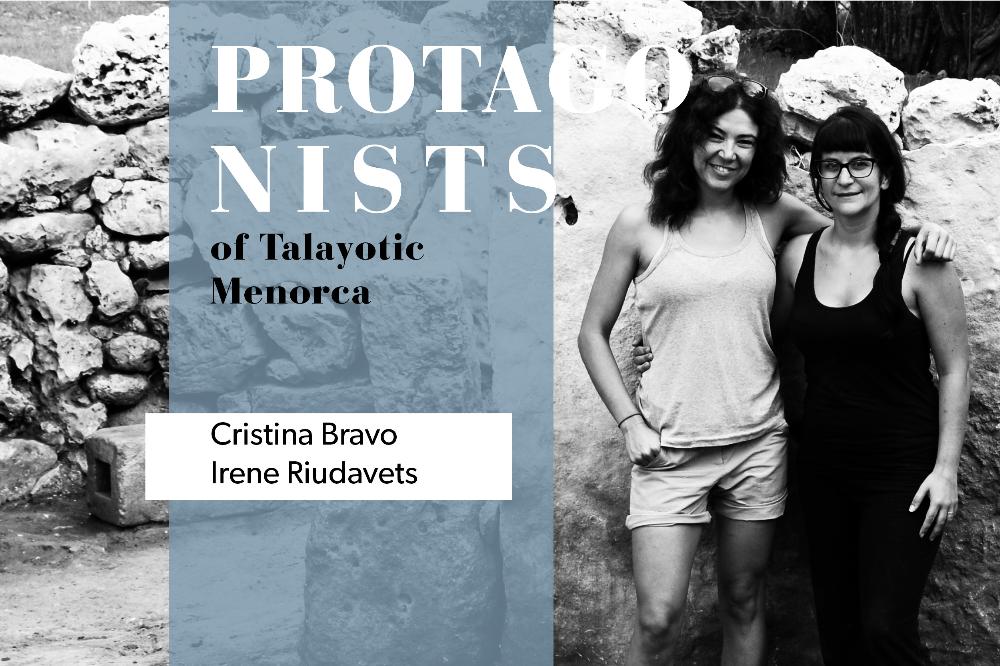 Cristina Bravo and Irene Riudavets are the two archaeologists behind Nurarq Menorca Arqueología y Cultura, the firm through which they manage the talayotic settlement of Torralba d'en Salort (Alaior). These two history graduates (from the University of Aberdeen and the University of Barcelona, respectively) accumulate vast experience in field work, having worked on archaeological projects in Scotland, England, Egypt and Mallorca, among others. As a team, they also direct the Sa Cudia Quemada Field School and the excavations at Torralba d'en Salort. Cristina Bravo and Irene Riudavets are the two archaeologists behind Nurarq Menorca Arqueología y Cultura, the firm through which they manage the talayotic settlement of Torralba d'en Salort (Alaior). These two history graduates (from the University of Aberdeen and the University of Barcelona, respectively) accumulate vast experience in field work, having worked on archaeological projects in Scotland, England, Egypt and Mallorca, among others. As a team, they also direct the Sa Cudia Quemada Field School and the excavations at Torralba d'en Salort.
How was your interest in Archeology born? What brought you to Talayotic culture?
(Irene) In my case, I became interested in Archeology as a child thanks to books and documentaries about Egypt. I have been fascinated by that civilization for as long as I can remember, so I decided to study History with the aim of becoming an archaeologist.
Once I gradutaed, I got a masters degree in Ancient History specializing in Egypt and started working with an investigative team (of which I am still a part of) in the city of Oxirrinco, Middle Egypt.
However, my first field experience came when I was 18 years old in Torre d’en Galmés. The conection with Talayotic culture, which interested me since the moment I started excavating, and the Egiptian world came to me with the discovery of the Imhotep figure, to which I dedicated my master’s thesis. Now I balance both aspects, dedicating a large part of my investigations to the taula enclousures.
(Cristina) I have always been interested in History, ancient languages and Archeology. As a teenager, I was passionate about Medieval History, so when I graduated in Scotland I then specialized in the matter. Later on, I focused and specialzed in the Grecolatin world at the UOC and the Universidad Autónoma de Barcelona, with Roman Archeology being my main point of interest for years now. After working in the realm of emergency archeology in the United Kingdom and different parts of the Iberian Peninsula, I arrived in Menorca, where I have being submerging myself deeper and deeper into the Talayotic culture. The Final Talayotic era and the beginning of the Roman world in the island is the moment that interests me the most. The Talayotic culture is now at the center of my professional life with the ongoing projects we have in Sa Cudia Quemada and in Torralba, and also because we manage the latter settlement.
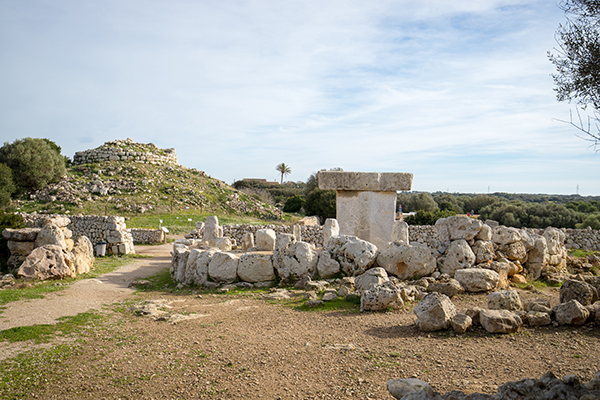 With the company Nurarq you both administer the Torralba d'en Salort settlement, how did this adventure started? Why did you decide to take this step? With the company Nurarq you both administer the Torralba d'en Salort settlement, how did this adventure started? Why did you decide to take this step?
As independent archaeologists, we thought about the possibility of assembling a company that could help us invest in scientific research. That is, we were interested in finding an extra source of financing that would help us devote more money to research. Our idea was that this company would be related to archaeological heritage. In 2017 we presented a proposal for the integral management of the site to its owners, the Balearic Islands Foundation, located in Mallorca.
What makes Torralba d'en Salort site special?
Torralba d'en Salort is a spectacular Talayotic site. It has, as its star monument, the best preserved taula enclousure of Menorca. In addition, three of the possible divinities that the Talayotics adored were documented here, among them, the icon of Talayotic Menorca: the Torralba bronze bull.
Moreover, it has two talayots, a hypostyle room, a small necropolis of hypogea and other structures that make it one of the most interesting villages of the island.
You embody a good example of how to maintain a balance between the conservation of our heritage and tourism. What are the main challenges you have faced?
The challenges when managing an archaeological site never end. The first three seasons (the Pre-Covid stage), were intense because the state of the site infrastructures was quite precarious. In addition, we must bear in mind that we cover all the expenses with our own income. In 2018, just a week before starting the first archaeological campaign, an infamous tornado came over us, knocking over more than 20 trees and causing damage to the dry walls and the kiosk. Even still, the company was profitable and, from the second year, we were able to allocate money generated from economic activity to scientific research, initiating the research project.
One of the main challenges we face is the acceptance of our model by Menorcan society. Managing an archaeological site privately, without public aid of any kind, is a concept that we would like to emphasize. When a person pays an entry to visit Torralba (or any of our activities) they are contributing entirely not only to its maintenance, but also to archaeological research, that is, to our annual excavations. Also, this management model also considers it important to have sufficient resources for the hiring of personnel (informants, maintenance personnel, etc). We think that the management of Menorcan heritage can be a way to generate jobs on the island.
When someone considers that they should not pay to visit Torralba… we want to stress that not a cent of your taxes is destined to Torralba and, therefore, you freely decide to invest in it when you pay for your visit.
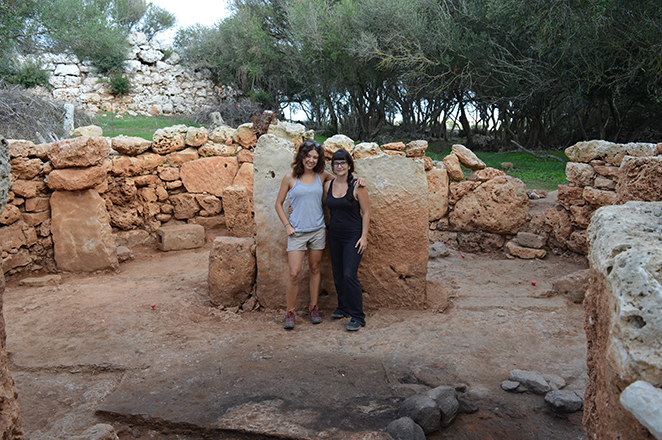 As you have said, research is one of the main axes of your management plan. What is the objective of your archaeological project? As you have said, research is one of the main axes of your management plan. What is the objective of your archaeological project?
Our research project is now focused on the excavation and enhancement of the central part of Torralba, that is, the area where the taula enclosure and the two talayots are concentrated. It is an area with a high density of structures, some of which have not yet been intervened. In 2020 we started the study of the structures that surround the large talayot. It is an ambitious project, in a few years we expect it to generate results that will help us to understand a little more about the initial Talayotic period, of which we still have little information, and the transition between this stage and the Late Talayotic period, when apparently the taula enclosures were built.
Recalling the first campaign in 2018, what results would you highlight about what has been discovered so far?
The first campaign had a very clear goal: to return the spectacularity to the taula enclosure by eliminating the great visual obstacle that represented the huge dry wall built in front of the monument. Obviously, we evaluated the impact that removing the wall would have. The wall even has its own name, it is called the Misery wall, and was about 200 meters in length. Then, we took down the 18 meters that covered the façade, and achieved our goal, on top of preserving a large part of the ethnological asset.
To our surprise, between the wall and the sanctuary façade appeared structures of high archaeological value that had never been documented. Among these structures, are the original pavement of the Late Talayotic period that leads to the entrance of the enclosure, a fireplace attached to this pavement, a monolith and two cisterns, which we also excavated with very interesting results that will be published shortly.
When does the 2021 campaign begin and what have you planned?
The 2021 intervention campaign is scheduled for December. We plan to continue with the excavation of the upper platform and the southern area of ??the large talayot. Also, during this year we will be writing two intervention memoirs. The first is the five-year memoir on the intervention project at the taula of Sa Cudia Cremada, and the second is a report of the intervention centered in the front side of Torralba’s taula.
The files will include a series of specialized studies, including those on fauna, ceramics, lithic industry and several radiocarbon datations. We hope to publish the results of these projects soon in specialized scientific journals, a task that is also essential in research, but normally little visible to the great public.
What could the World Heritage declaration suppose for Menorca?
It is clear that the declaration would generate more interest towards the Archeology of Menorca, an opportunity to receive cultural tourism at any time of the year. This would not only be positive for those who dedicate ourselves to Archeology and cultural management, but also, in economic terms, for many sectors.
And even more important, being World Heritage would be the greatest recognition one could have and would help Talayotic Menorca to be valued for those who still don’t see its importance. It is a title that gives value to heritage by itself, and one of the most important consequences is that this helps its conservation.
As researchers, what potential does Talayotic Menorca have and what challenges does the Talayotic culture present?
Talayotic Menorca has all the potential you want. Speaking in terms of archaeological research, there is still more that we do not know than what we do about many aspects of the island’s prehistory. Therefore, it is essential to ensure the continuity of the different teams that are investigating today. For the past 15 years a series of teams have worked very well from different perspectives. That is why we have made a lot of progress understanding the island’s prehistory, at a rate that we should at least try to maintain.
Economically, we believe that the potential is also high, although in today’s world, living from archaeological heritage is still quite complicated. In part, this is an attitude problem, Menorcan’s don’t believe that what we have here is spectacular and that a tourist could come to the island to visit the archaeological monuments. This is something increasingly common in other parts of the world. The first step is to believe in it and encourage it as a way of creating wealth.
Last, but not least, the conservation of this rich archaeological heritage is also one of our great challenges. Currently, the sites are in a fairly good state of conservation, and that should be maintained and improved for future generations.
|
Open call for the design of maritime routes of the Menorca Biosphere Reserve-Tourism 0CO2 project
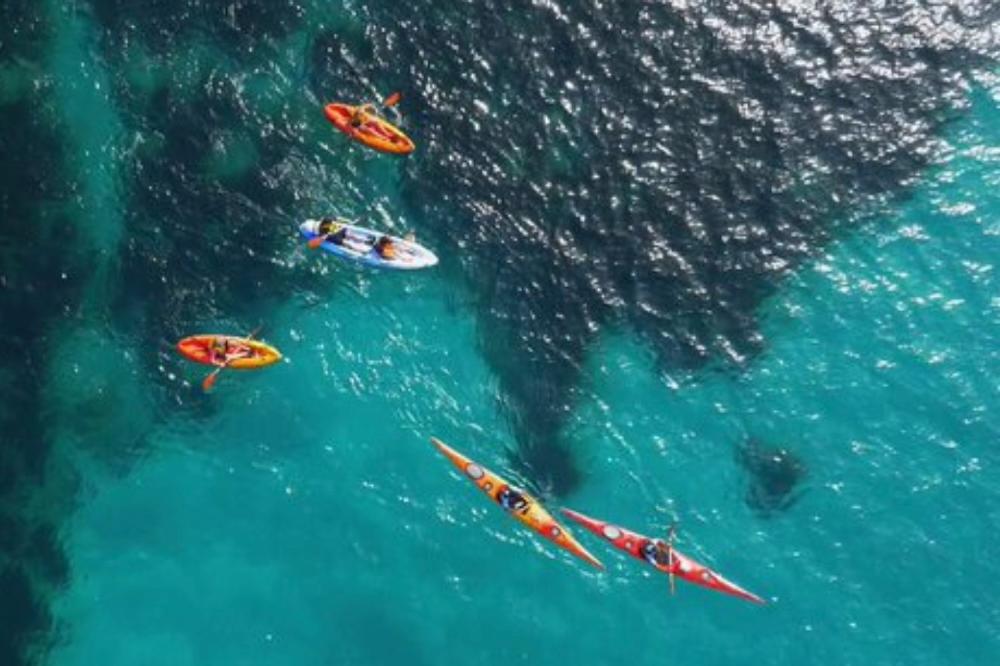 The Consell Insular de Menorca has made public an open call for the design of maritime routes of the Menorca Biosphere Reserve - Tourism 0CO2 project, which is part of the Tourism Sustainability Plan of the island of Menorca (PSTD). The Consell Insular de Menorca has made public an open call for the design of maritime routes of the Menorca Biosphere Reserve - Tourism 0CO2 project, which is part of the Tourism Sustainability Plan of the island of Menorca (PSTD).
The object of the contract is to design a network of maritime, coastal and underwater routes that can be used for sustainable tourism activities. The aim is to bring value to Menorca's relationship with the sea, as well promoting its environmental elements and its historical and cultural heritage. The sites associated with the maritime heritage and to underwater archeology enter in this last section: coastal sites of maritime relevance (cities and port structures, structures on land but linked to maritime activity, etc.) and the underwater sites (wrecks, ports, anchorages, submerged structures, etc.)
This heritage can be underwater or on land, but everything possible must be done so that the routes are by sea, only going on shore to visit the heritage on land, thus promoting socio-economic activities around the marine environment, especially those related to tourism, sport and the use of maritime transportation (from kayaking and sailing to boats or means of any kind, as well as scuba diving). The project must contain at least one wreck, although more than one is desirable and any improvement proposal that promotes underwater activities on the island are welcome.
Submission deadline
Those interested may submit their offer to the Consell Insular from the day after its publication and until 23:59:59 on July 15th, directing it to the "Tourism Promotion Service and European Funds" of the presidency.
You will find all the information about the open call in this document.
|
New open call for grants aimed at research, safeguarding and dissemination of the historical heritage of Menorca
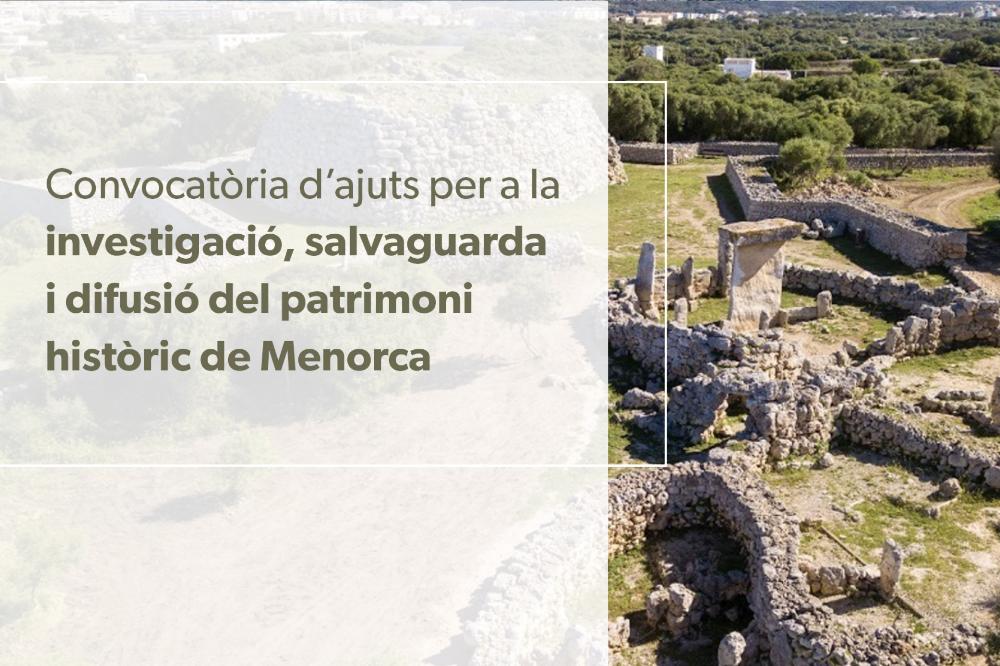 The Official Gazette of the Balearic Islands has published today the approval of new grants aimed at research, safeguarding and dissemination grants of the historical heritage of Menorca for 2021. The Official Gazette of the Balearic Islands has published today the approval of new grants aimed at research, safeguarding and dissemination grants of the historical heritage of Menorca for 2021.
The Department of Culture of the Consell Insular de Menorca foresees a total investment of 200,000 euros through open calls directed at five established lines of financial aid:
1. Restoration of historical heritage assets.
2. Archaeological and paleontological interventions.
3. Historical, archaeological and paleontological research.
4. Scientific publications.
5. Conferences and dissemination activities.
The execution period for these actions is multiannual (years 2021-2022).
The Subsidies Strategic Plan in the general budget of the Consell for 2021 foresees the following general objectives of the Department of Culture, Education, Youth and Sports concerning historical heritage:
- To obtain the declaration of Talayotic Menorca as a UNESCO World Heritage Site.
- To protect and safeguard the historical heritage.
- To preserve and restore the historical heritage for future generations.
- To deepen the existing awareness about the historical heritage through the promotion of research.
- To disseminate existing knowledge about historical heritage through scientific publications and informative meetings.
The specific objectives envisaged are to provide financial support for activities that mean expanding and improving the awarness and protection of historical heritage through archaeological and paleontological interventions, historical research, restoration of assets, dissemination and debate, keeping in mind that all these features help to complete the Talayotic Menorca candidacy file for World Heritage.
The deadline for submission of the applications to these grants is 30 days from the day after the announcement has been published in the Official Gazette of the Balearic Islands.
You can check all the information in this link (in Catalan): http://gestio.cime.es/Documents/Edictes/12085edi.pdf
|
“There are singularities here that greatly uphold the exceptional and universal values that the UNESCO requires”
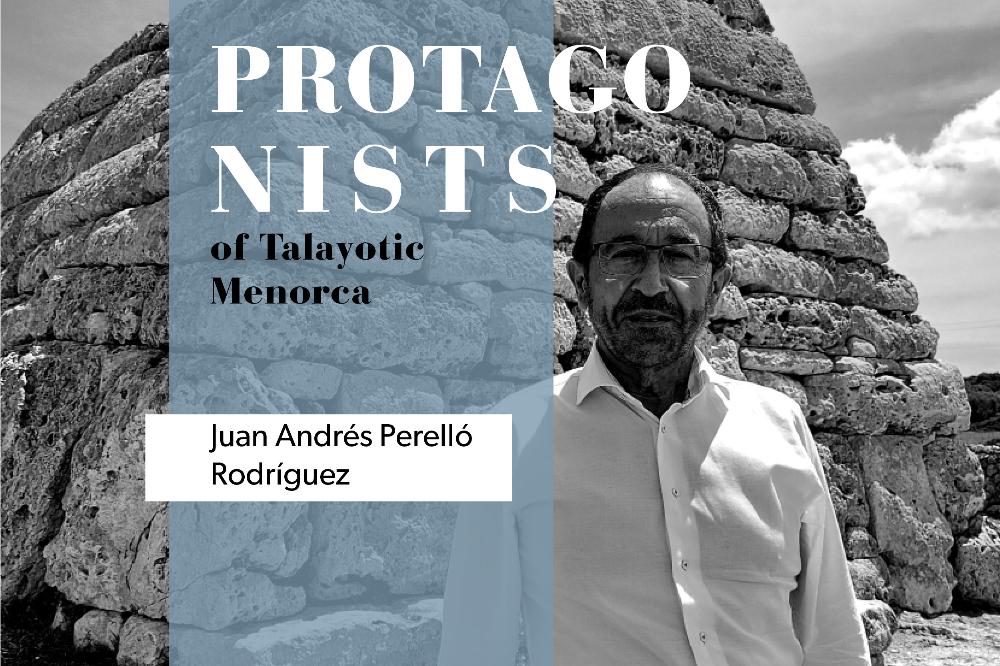 Juan Andrés Perelló Rodriguez is the Ambassador and Permanent Delegate of Spain to the UNESCO since 2018. As such, he will be charged with the responsiblity of defending the Talayotic Menorca candidacy in front of the World Heritage Commitee taking place the summer of 2022 in Kazan (Russia). That will be the key moment when it is decided if Menorca will enter and be part of the UNESCO World Heritage List. Perelló visited Talayotic Menorca for the first time from May 26th to 28th. Juan Andrés Perelló Rodriguez is the Ambassador and Permanent Delegate of Spain to the UNESCO since 2018. As such, he will be charged with the responsiblity of defending the Talayotic Menorca candidacy in front of the World Heritage Commitee taking place the summer of 2022 in Kazan (Russia). That will be the key moment when it is decided if Menorca will enter and be part of the UNESCO World Heritage List. Perelló visited Talayotic Menorca for the first time from May 26th to 28th.
What was the objective of this visit?
The objective was to reconcile the material in the file, the narrative put down on paper, with reality. When defending a candiday, no matter how well you manage the facts, you also need to have a feel for the place and live it. Our starting off point is a candidacy that has been very well worked, one that is very solid. That said, the evaluating body can be unpredictable. Spain is in the top tier of World Heritage and the commitee has a high bar for us. I am, however, hopeful that the tremendous work done on this candidacy will bear its fruits.
How do you value the candidacy after observing the sites and the most outstanding associated landscapes?
One can find prehistoric remains in many parts of the Earth, but this place has singularitues that perfectly uphold the exceptional and universal character that UNESCO demands. Not even the surrounding and nearby islands prehistoric findings have such sigular and diferentiating attributes as we find in Menorca.The talayots, for example, are so different to Mallorca’s. So, those two very important points are there. Also, in the current Wold Heritage List, prehistoric cultures in general are underrepresented, so Talayotic Menorca can help to heal that gap.
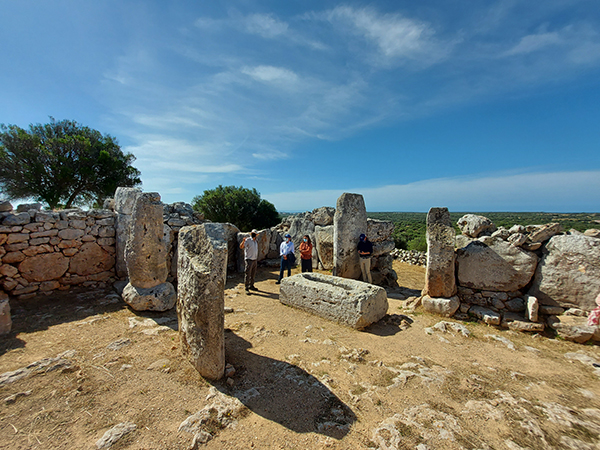 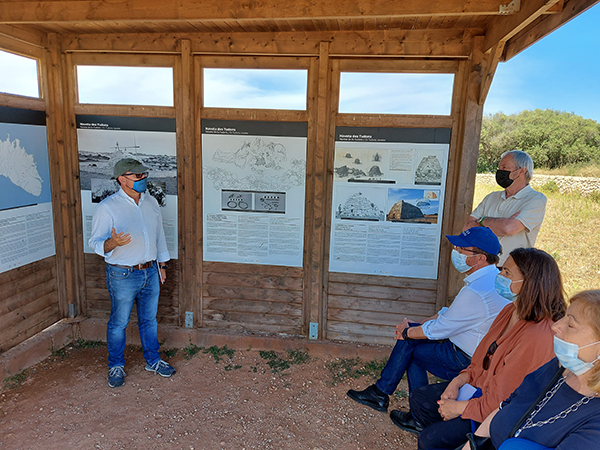
You have said that Spain is in the top tier of World Heritage, being one of the top three countries in the world with the most inscribed properties. How can this fact affect the candidacy?
We are the third country on the list with the most inscribed properties, competing with China and Italy, one for its territorial size and the other for its history. That makes it so that the bar is higher for us, but also helps us stand out from the point of view of experience. A county with a lot of heritage is because it has a lot to show and knows how to take advantage from it. We have very competitive heritage. We have full faith in our teams and the personnel working on the candidacy.
How has colaboration between the Spanish Permanent Delegation to UNESCO and the candidacy been?
It has been a very close colaboration. The first contacts were through our teams and the Spanish Ministry of Culture, especially the Heritage department. Both the General director, the deputy director and the experts have been very implicated. At the UNESCO, with the relationship we have with the Heritage Center, this year we are members of the Heritage Commitee with a seat and a vote. Therefore, we have had greater access to see the file and understand its demands.
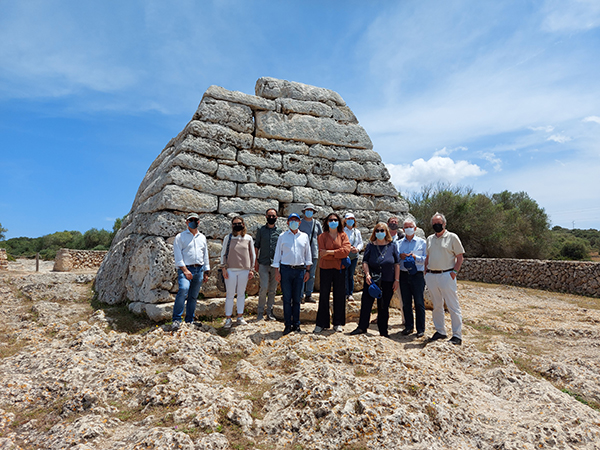 The next big step will be the visit by the ICOMOS mission in October to evaluate the candidacy on the ground. Now that you have seen it first hand, how do you see the future of the candidacy? The next big step will be the visit by the ICOMOS mission in October to evaluate the candidacy on the ground. Now that you have seen it first hand, how do you see the future of the candidacy?
We have a year before we go to Kazan to present our defense. At that moment, we will no longer be members of the Heritage Commitee as a state, but we have a good relationship with the rest. Some members will change but we are already establishing a relationship with the ones we know will change; we will have talks with the Heritage Center and, at the end, we will defend our candidacy with passion because we have the basis for it.
What could it mean for Menorca to recieve this recognition?
Menorca is famous for the respect it has for its territory, its efforts in sustainability, but this will mean a new spot light. It is not the same for Menorca to be known by many people than for Menorca to have the World Heritage spot light shinning on the island. There is a lot of tourism fetishism surrounding heritage, lots of people travel with this motivation. It would mean a new open door for international recognition. On top of that, there is an implicit collaboration with UNESCO’s peace mission, because with every World Heritage Site that is declared, it means that we are growing the international community for its conservation, no longer is it a local or individual responsability, but an international one. The best way of conserving heritage is for there to be no wars, thus, indirectly collaborating with UNESCO’s mission of peace builing.
|
Reception for the Spanish ambassador to UNESCO at the Consell Insular de Menorca
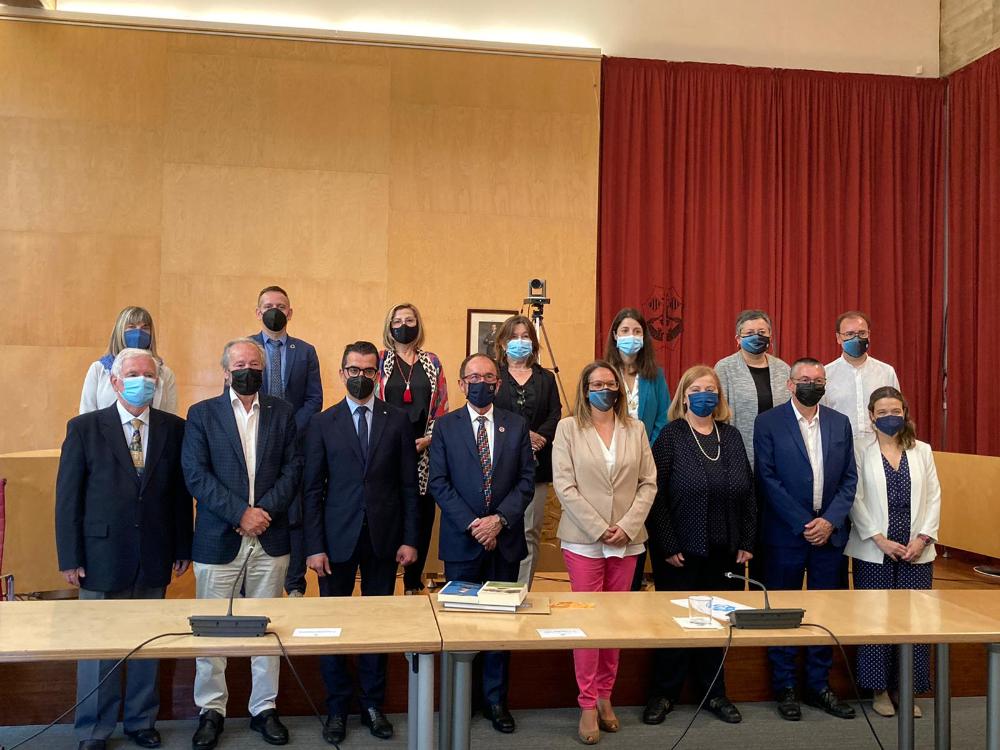 The Spanish Ambassador and Permanent Delegate to UNESCO, Mr. Juan Andrés Perelló Rodríguez, visited the Consell Insular de Menorca (CIM) headquarters this morning. He was received by the president of the CIM, Susana Mora; the conseller of European Funds, University and Culture of the Balearic Islands’ government, Miquel Company; the conseller of Culture, Miquel Àngel Maria; the Menorcan government team, and the deputy director of Management and Coordination of Cultural Assets, Pilar Barrero. The reception was held in the Plenary Hall of the CIM in Maó. The Spanish Ambassador and Permanent Delegate to UNESCO, Mr. Juan Andrés Perelló Rodríguez, visited the Consell Insular de Menorca (CIM) headquarters this morning. He was received by the president of the CIM, Susana Mora; the conseller of European Funds, University and Culture of the Balearic Islands’ government, Miquel Company; the conseller of Culture, Miquel Àngel Maria; the Menorcan government team, and the deputy director of Management and Coordination of Cultural Assets, Pilar Barrero. The reception was held in the Plenary Hall of the CIM in Maó.
After the reception, the ambassador participated in a working session with the Permanent Commission of Talayotic Menorca, headed by the conseller of Culture, Miquel Àngel Maria; and the coordinator of the Talayotic Menorca file, Cipriano Marín. During the meeting, the ambassador was able to exchange views with the different actors involved in the transformation of the candidacy, which resulted in his appointment as the official candidate of Spain to World Heritage in 2022.
Mr. Perelló Rodríguez will be in Menorca until May 28th, alongside Pilar Barrero, with the aim of getting to know Talayotic Menorca first-hand. On May 27th and 28th, they will tour the main Talayotic sites and landscapes associated to the candidacy. They will be accompanied by members of the Talayotic Menorca team and, in each case, by experts on the specific sites and their attributes. The visits planned in the program are: Trepucó, Talatí de Dalt, Torre d'en Galmés, la naveta des Tudons, Torralba d'en Salord, So na Caçana, Calescoves, and the coastal stretch of Tramontana and Illa d'en Colom.
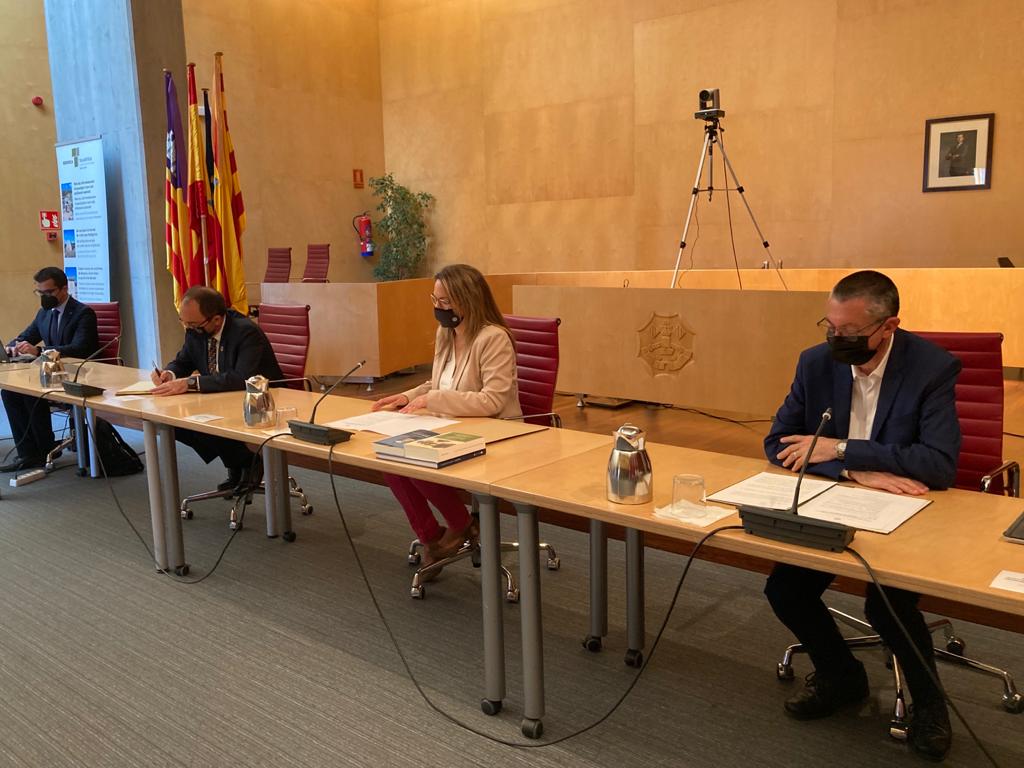 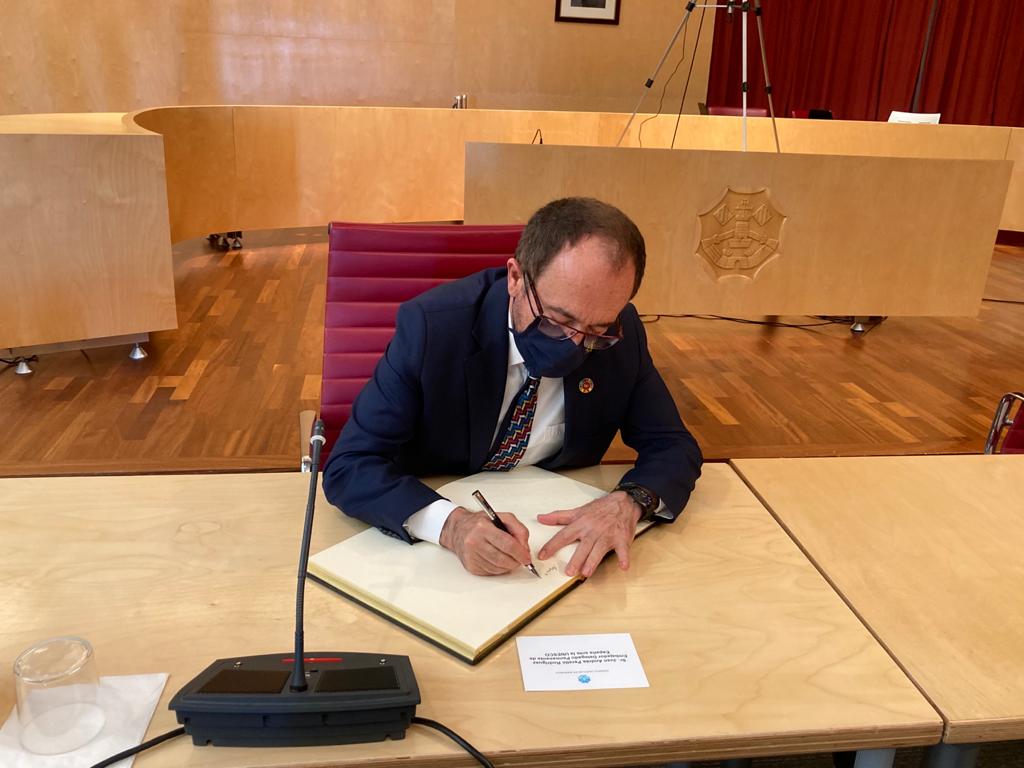
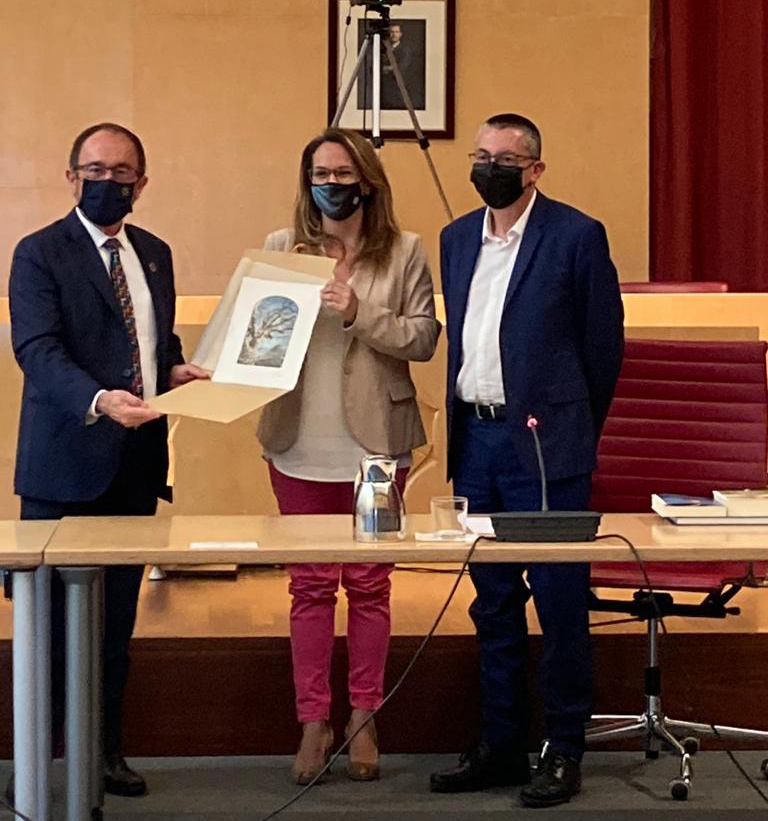 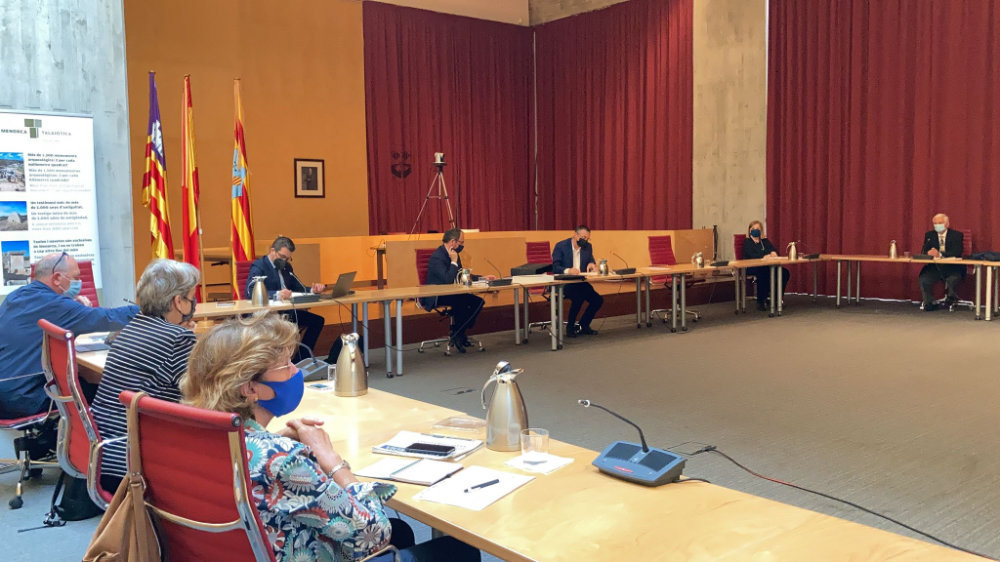
|
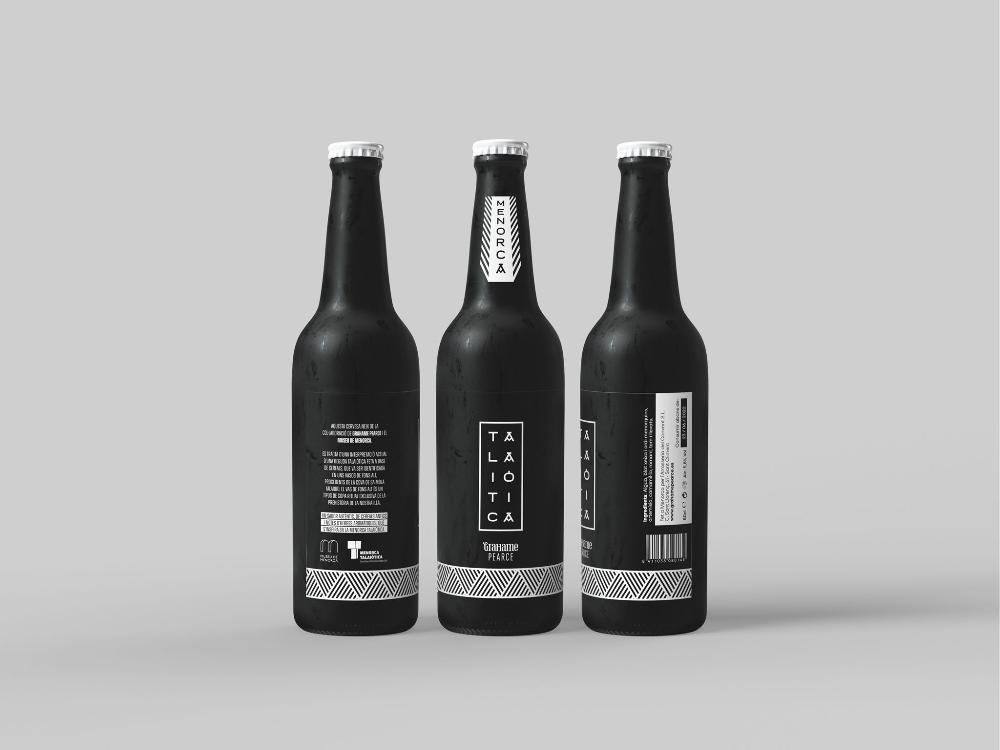
Unveiling of the Talaiòtica beer in the Museu de Menorca
¿¡[AQUI]¡¿The Museu de Menorca, the Talayotic Menorca candidacy and Grahame Pearce unveil the Talaiòtica beer, a Talayotic inspiration beverage. Born out of an exhaustive research and investigation into one of the most emblematic objects left behind by Talayotic culture: the high bottom cup, a unique and exclusive object of Menorcan prehistory, dated in the Final Talayotic period, which is to say, between the IV and II centuries BC.
The conseller of Culture, Education, Youth and Sports, Miquel Àngel Maria; the director of the Museu de Menorca, Carolina Desel, and the chief and master brewer of Grahame Pearce, Roger Vila, presented this original brew to the public at the Museu de Menorca.
The ingredients that inspired the making of the Talaiòtica beer were selected based on the aforementioned analysis and other studies that looked into the usage of plants during the Menorcan Talayotic period. Water, wheat and Menorcan barley, sagebrush, chamomile, rosemary, thyme and honey combined to create this brew inspired by our prehistoric ancestors, the custodians of a powerful, original and imaginative island culture.
The enigma of Flaquer’s 400 cups
The high-bottomed cup is a ceramic container, usually very decorated, with the bottom above the foot, which creates an air chamber below. The bowl is raised so that its containment capacity is very reduced. This morphology led the scientific literature to interpret this container as a censer, meaning, as a burner for aromatic herbs. These vessels are found within symbolic spaces, such as taula sanctuaries and funerary necropolis.
Stemming from the Joan Flaquer and the enigma of the 400 cups exhibition, the Museu de Menorca started an investigation into a deposit of more than 400 cups that came from the Sa Mola necropolis (Alaior) in 2019. This was the beginning of a new excavation project in which a group of objects related to funerary rituals were discovered. The majority were high-bottomed cups, which were linked to commensal ceremonies in honor of the deceased until now never documented in Menorca.
Since the high-bottomed cups had never been analysed before, and it was still considered that the correct theory was that they were censers, the Museu de Menorca decided to carry out sample analysis for possible contents: on the one hand, the Institut Milà i Fontanals de Investigación en Humanidades (IMF-CSIC) analyses phytoliths to identify traces of organic remains and, on the other, the organic residue is analysed by the Prehistory and Archaeology departments and the department of Analytical Chemistry of the Universidad de Granada. The results confirmed that the cups had contained cereals, mainly wheat, barley and traces of lactates, elements compatible with a beverage such as beer.
From there on out is when work with the Menorcan brewery Graham Pearce began with the aim of producing the Talayotic inspiration beer which today we present to you and will be available at the Museu de Menorca and some specialised shops.
In this video you can watch the process.
|
“Thanks to Boston University’s contribution, we have understood that the sites are a living space"
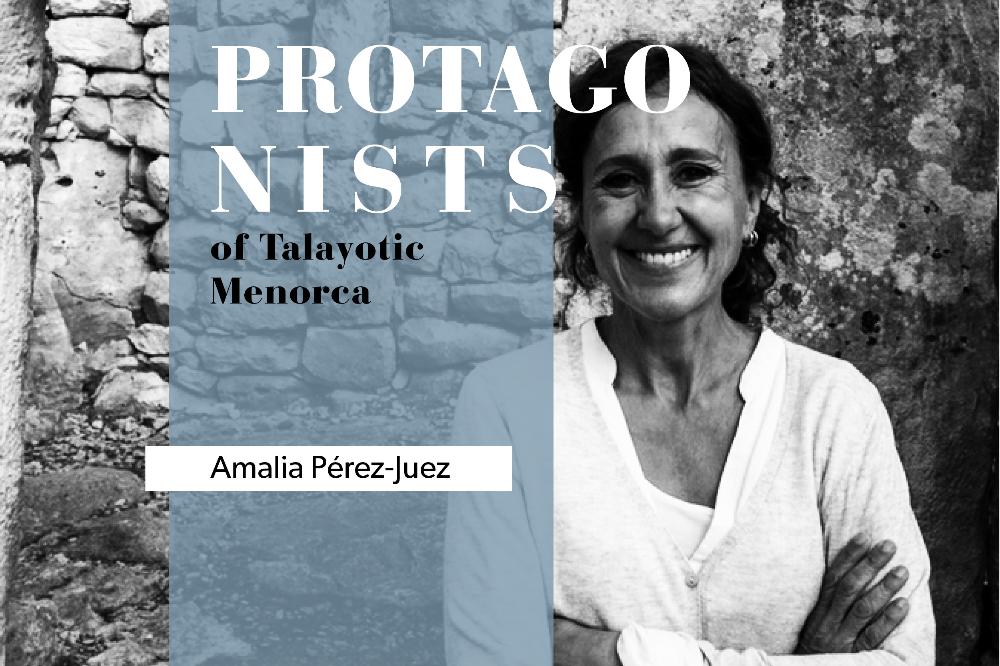 Amalia Pérez-Juez has a doctorate in Prehistory and Archeology from the Autonomous University of Madrid. Currently, she is director of the Boston University Study Abroad Programs in Spain and an associate professor in the History and Archaeology departments. For more than twenty years, she has been excavating, researching and teaching about archaeological sites from the Iron Age to the 20th century in Spain. Her speciality focuses on the management of archaeological heritage, a key part of the research that she was able to develop by directing the Cultural Management Area of the Atapuerca Foundation. She has also published numerous books and papers, and since 2001 has co-directed the Boston University Field School in Archaeology & Heritage Management project on different sites of Menorca, especially in Torre d'en Galmés. Pérez-Juez is a member of the Institut Menorquí d'Estudis and the Spanish ICOMOS Committee. Amalia Pérez-Juez has a doctorate in Prehistory and Archeology from the Autonomous University of Madrid. Currently, she is director of the Boston University Study Abroad Programs in Spain and an associate professor in the History and Archaeology departments. For more than twenty years, she has been excavating, researching and teaching about archaeological sites from the Iron Age to the 20th century in Spain. Her speciality focuses on the management of archaeological heritage, a key part of the research that she was able to develop by directing the Cultural Management Area of the Atapuerca Foundation. She has also published numerous books and papers, and since 2001 has co-directed the Boston University Field School in Archaeology & Heritage Management project on different sites of Menorca, especially in Torre d'en Galmés. Pérez-Juez is a member of the Institut Menorquí d'Estudis and the Spanish ICOMOS Committee.
Initially, you studied Law. What made you change course in your professional career?
In fact I started studying History, I really liked the topic of heritage protection. When I started, nobody did heritage management. So I combined History and Law until I was granted two Erasmus scholarships, one of them in France.
Your relationship with Boston University began when you were a student, what led you to cross the pond?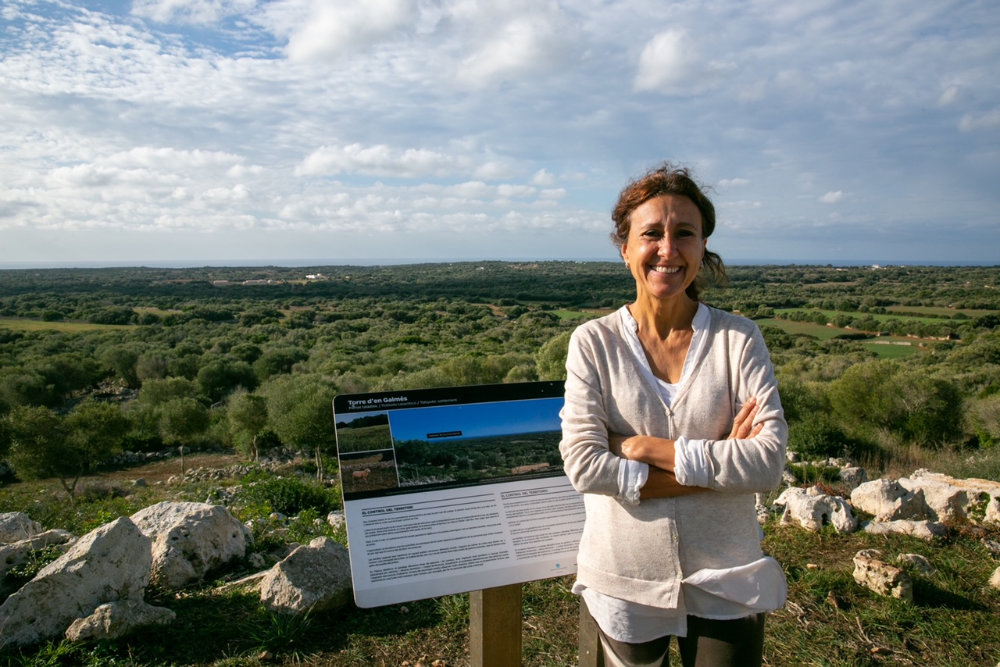
When I came back from France, I requested a doctoral scholarship in the US and got it. I studied in Boston, made some contacts, and when I returned to Madrid and finished my thesis, they hired me at Boston University Madrid. Since then, I have maintained a constant relationship with their international study programs.
And how did your interest in Talayotic Menorca arise?
At the department in Boston University they asked me to organize an archeological work camp, a compulsory internship for students during the summer. So, I thought: what place is there that is scientifically amazing and where we can spend six weeks with students during the summer? The answer was crystal clear. Also, I know Menorca well, ever since I was little I have come with my family and have always been very interested in taulas and conservation of the sites. I was always very attentive to what was happening on the island. Let's say that my personal and scientific interests coincided. For projects to move forward, you need a person who has enthusiasm, it didn't take me long to get back to the department and present the project in Menorca. Two colleagues from the university immediately tagged along, they fell in love with the island, with the scientific possibilities of the project… In Madrid, I had excavated a lot of the Iron Age, which is the same period of the Talayotic sites.
From your point of view, what are the most valuable contributions of the Menorca Talayotic candidacy?
The candidacy seems excellent to me, I don’t understand how it hadn’t been done before, it is amazing. It contributes many things to World Heritage, firstly: the excellent state of conservation of the monuments. The number of sites is impressive and so well preserved. They can be counted by the dozens. Additionally, they are in a living state of conservation, it is not that they have been abandoned and covered by vegetation, rather they have been continually used in one way or another throughout 2,000 years. That relationship between man and the territory is fundamental. On top of that, scientifically it has tremendous potential. It is a culture that interacts in the Mediterranean during the 1st millennium BC., of which things are known but at a local level. Sharing all this knowledge with the world is very important, it is a very good candidate.
Together with Boston University you have already worked on 17 campaigns in Menorca, how did the project begin?
We started working here in 2001, hand in hand with Amics del Museu de Menorca. At that time, it was just them and Sanitja's project. As of 2003, we decided to separate the projects because doctoral students from Boston University began to come and wanted to continue with the work during the year, we also had colleagues who wanted to join to do geoarcheology, fauna, botany, etc. We managed to put together a team large enough to be able to set up our own project. Since then, we have come back every year, except when we have had a study season, which is when we dedicate ourselves to studying and analysing things.
What do you think are the main achievements of the Boston University project in Menorca?
When we started 20 years ago we wanted to study the diachronic occupation of Talayotic sites, that is, we didn’t want to stop at the Final Talayotic or in Roman times. Our project was focused on the use of domestic space over time, on how different cultures had adapted the sites: the Talayotics, the Romans, the Muslims, even in modern times. This diachronic study was a contribution from Boston University and I believe that we have contributed to the understanding that the sites continue to be reoccupied and abandoned over time. Even in the 21st century they are busy with tourists or archaeologists! They are a living space in which the sequence of occupation can be followed.
The second thing that we have contributed to, I think, is the study of the Andalusian world in Talayotic sites. The Muslim trace is present in Menorca, we see it in the toponymy for example, but there was no specific study on the reoccupation of the sites in the Middle Ages. Since 2010 we have tried to map and excavate, in collaboration with other colleagues, all the Islamic structures that appear at least in Torre d'en Galmés.
Thirdly, when we arrived in 2001, we provided a very interdisciplinary way of seeing archaeological excavation, perhaps because we had a team that came from all branches, people who study fauna, seeds, carbon ... Now it is done in all of the sites, but back then it wasn’t so common.
And finally, from the beginning we said: we are going to take the results of our studies to the most important congresses in Spain, Europe and the US. And so we did from the second year on. Since then, there has been an annual presentation or publication by Boston University which, I believe, has helped to spread the word about work that is being done in Menorca.
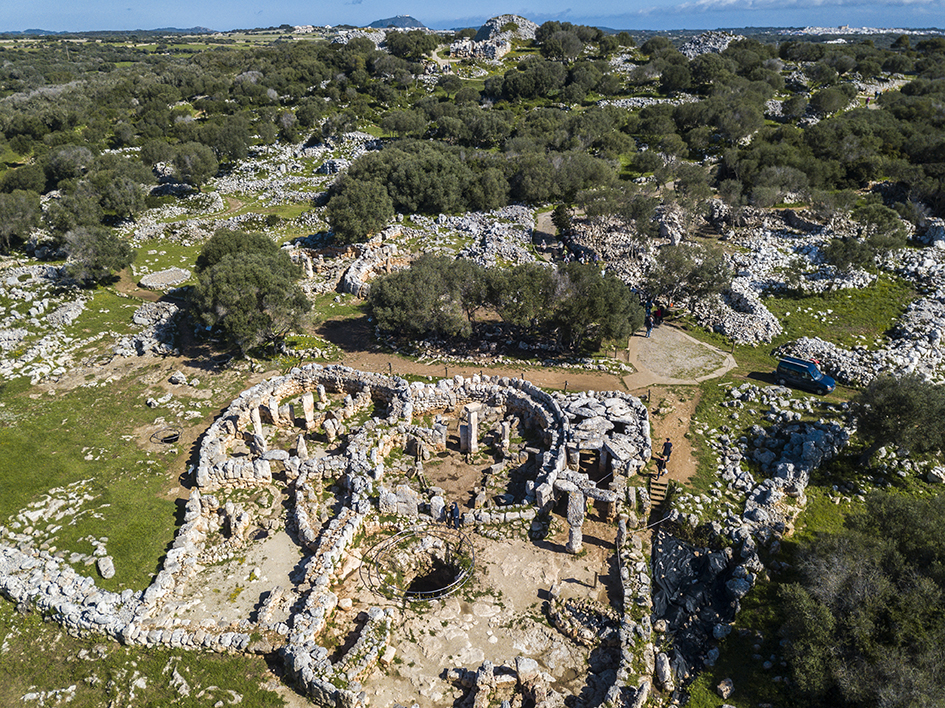 Despite the pandemic, Boston University was able to continue work on Torre d'en Galmés. What progress has been made? Despite the pandemic, Boston University was able to continue work on Torre d'en Galmés. What progress has been made?
Although the students couldn’t come due to the covid crisis, we managed to carry out the 2020 campaign with volunteers, the collaboration of Friends of the Museum and colleagues who came from all over.
We have identified eight Islamic houses in Torre d'en Galmés, we excavated two a few years ago and in 2019 a third. In 2020 we finished excavating a 12th century house, restored it and it is now open to the public. Now, one can see all the phases of occupation of the site.
On June 17 they plan to resume work in Torre d'en Galmés, what are the plans for the 2021 campaign?
Well, we hope it lasts until the end of July. We will continue to do the same, we want to get a complete picture of what the Islamic sequence in Torre d'en Galmés is and how it is articulated with the Talayotic substratum below.
|
Presentation of the novel "El viatge talaiòtic de Gaudí" at the IME
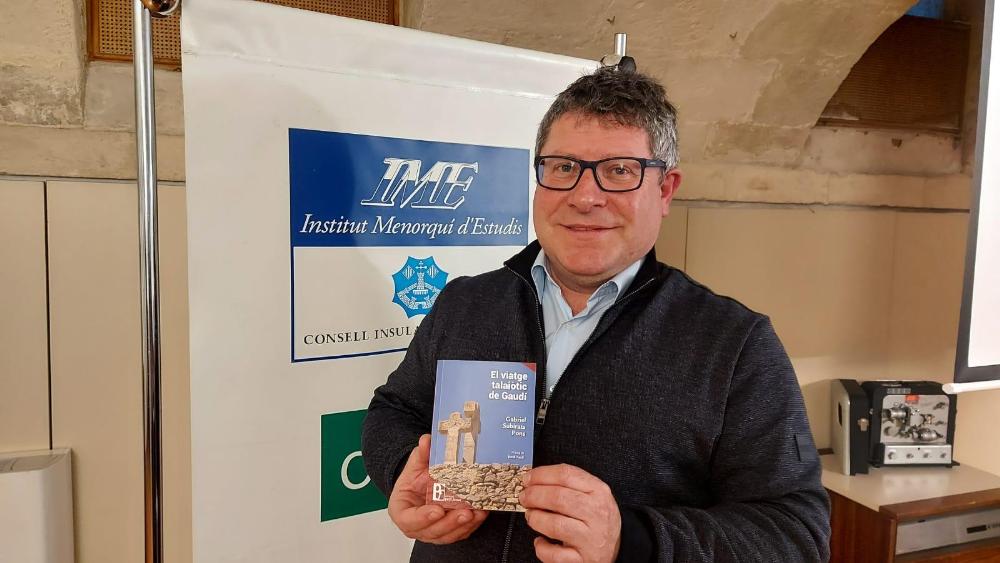 El viatge talaiòtic de Gaudí is the economist Gabriel Subirats (es Migjorn Gran, 1968) first novel, which was presented on April 22nd at the Institut Menorquí d’Estudis (IME). Subirats imagines the architect Antoni Gaudí’s visit to the island between May 1st and 7th of 1910, when he toured some of the most emblematic sites of the Talayotic culture accompanied by a group of interesting personalities of the time, linked to the Ateneu Científic, Literari i Artístic de Maó. El viatge talaiòtic de Gaudí is the economist Gabriel Subirats (es Migjorn Gran, 1968) first novel, which was presented on April 22nd at the Institut Menorquí d’Estudis (IME). Subirats imagines the architect Antoni Gaudí’s visit to the island between May 1st and 7th of 1910, when he toured some of the most emblematic sites of the Talayotic culture accompanied by a group of interesting personalities of the time, linked to the Ateneu Científic, Literari i Artístic de Maó.
This historical novel, edited by the IME, is set at the beginning of the 20th century, an exciting time for Archeology in Menorca. Characters such as Francisco Hernández Sanz, promoter of the Ateneu de Maó, stand out in the story. Thanks to his research and his drawings, we can see the state, before the subsequent interventions, of many sites at the time.
What led you to write a novel about Gaudí? How did you discover his visit to Menorca?
I discovered the visit by chance, and with some intention, putting the words Gaudí and Menorca in the search engine. A very brief reference on the website of a Gaudí scholar, Josep M. Tarragona i Clarasó, aroused my curiosity. After informing myself about the times and the life and work of Gaudí, and noting, above all, certain peculiarities in Gaudí's work and some historical parallels, I decided to write it in the form of an imaginary story.
It seems that Gaudí's visit to Menorca is only recorded by the press in two articles. What real information do we have about his stay?
It really is an almost unpublished event, because there is the aforementioned note and little else: in El Bien Público, Gaudí and Rubió’s names appear in the Monte Toro steamer’s list of travelers, entering and leaving the port of Maó. Two clues hint that this trip was a sort of "getaway": Gaudí's delicate health, which required rest or gentle relaxation; and his aversion to the media. So today, just discovering the news is a pleasant surprise.
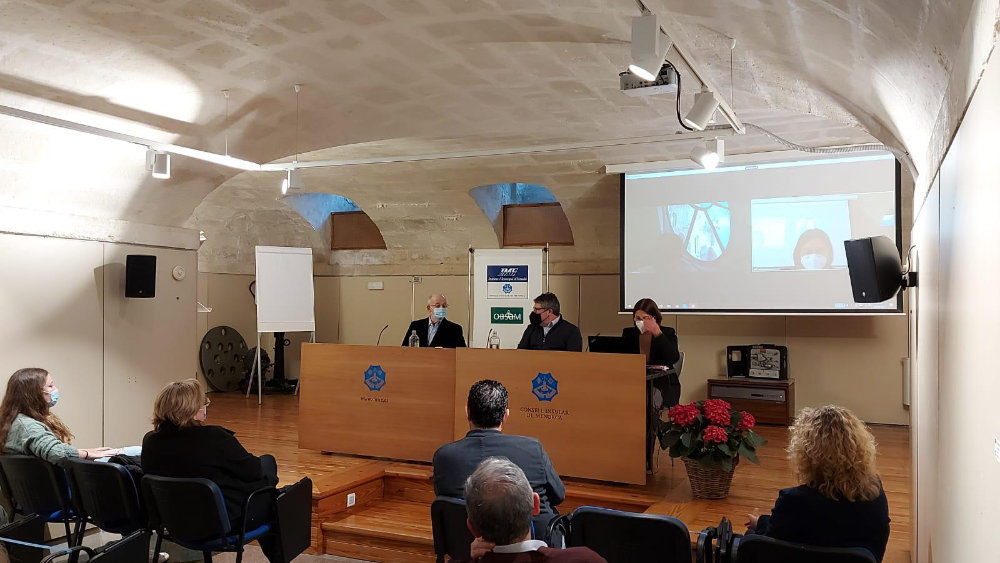 "The large number of unexcavated sites turned the island's prehistoric past into a universe to be discovered, a world to be explored, full of questions to be addressed and hypotheses to be tested", as you say in the book. In your opinion, what are the most exciting contributions of that time? "The large number of unexcavated sites turned the island's prehistoric past into a universe to be discovered, a world to be explored, full of questions to be addressed and hypotheses to be tested", as you say in the book. In your opinion, what are the most exciting contributions of that time?
I believe that the contributions of the time were preliminary, but essential for enhancing an extraordinary heritage in all senses. Let us bear in mind that Archeology had not yet developed as we know it, although the works of Armstrong, Ramis, Cartailhac or Hernández himself formed a first and basic theoretical compendium about our Talayotic culture; the most ambitious excavations and restoration works would come many years later.
In your fictionalized account, Gaudí visits the sites of Talatí de Dalt, Torre d'en Galmés, Rafal Rubí and the naveta des Tudons. What do you think impacted him the most about the Talayotic constructions? Is there any certainty about the places he visited?
Surely the dry stone technique, more than the supposed functionalities of the various constructions. If to that we add the spirituality of some elements (the taulas or the burial enclosures), the myths and social taboos of the time, then emotion and curiosity are served. In the press of the time I found this one reference: "[...] this afternoon, Antoni Gaudí and Joan Rubió went out to visit talayots [...]". I’m not a historian, but I'd like someone to find more information about his time here.
"That Saturday, May 7th, 1910, Antoni Gaudí i Cornet already knew very well that this trip would mean a revelation for his work," says the novel. Is there any evidence that Cyclopean constructions influenced the architects later work?
In 1914 Antoni Gaudí completed Park Güell with the so-called Cerro de las Tres Cruces, a kind of talayot ??that dominates the upper part of the garden city, which today is a public park. I think, and I am not the only one, that the Talayotic inspiration is evident. And we have more proof in the same park: an immense space under the square, built with columns and designed to collect rainwater, called, curiously, the Sala Hipóstila. Finally, and this is just speculation, but it has always caught my attention that if you placed the naveta de Tudons and Casa Milà side by side you would see a very similar stone finish.
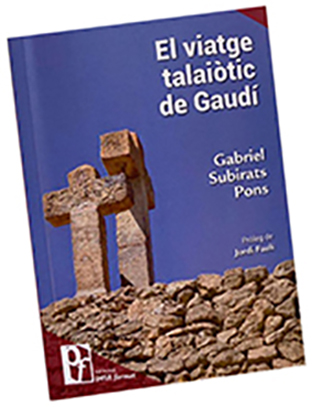
The Ateneu de Maó and its members play a central role in the story, since they act as guides for Gaudí during his stay: "[...] that formidable team of people, extraordinarily motivated to learn how their ancestors lived and who were involved in preserving that enormous historical legacy. " What role did the Ateneu have in the study of Talayotic culture?
Its role was fundamental, without its intervention, the legacy that we are proud to show today would be in worse condition or would have been more difficult to rebuild. The contributions of the Ateneist hiking group, led by Francisco Hernández Sanz, are of a scientific nature (I mean they were of museum like descriptiveness and quality ), as well as clearly sensitizing, since they were concerned about telling the owners to conserve the sites clean of vegetation, which was a huge step in itself. The entity, which had been born five years earlier in order to spread scientific, artistic and literary knowledge, had taken over the Revista de Menorca. Hernández himself (professor of drawing, historian, archivist and curator of the Municipal Museum) directed the publication, which echoed the findings, research, studies or visits by foreign scholars. I dare to proclaim that these were the beginnings of the Talayotic spirit, as we conceive it today.
"Now I see it clearly! It is an island of stones ... where the stone is, at the same time, the island ...", Gaudí says at one point. Do you think he understood the odyssey of the stone that raised the Talayotic constructions?
More than the suffering, I think he must have been amazed imagining how they managed to find a method and technique that made their work easier and more efficient. What is also clear to me is that those people used their intelligence much better than we do, in hard times it seems that we only know how to increase our differences.
|
Premiere of the video “Talayots for Human Rights 2021”
The Consell Insular de Menorca (CIM) presents the video Talayots for Human Rights 2021 about the Talayot lighting ceremony for Human Rights that took place on March 27th, when 32 Minorcan talayots and watch towers were lit. This was the third edition of this event, organized by the CIM in conjunction with 22 different social actors including community organisations and cultural groups. The main event took place at the Torre d'en Galmés site (Alaior), including the reading of a manifesto and a rendition of the song Ítaca by Lluís Llach.
"In moments of darkness, the lighting of the watch towers and talayots represents light and hope", as manifested in the audiovisual piece produced by Bendito Films. A fragment of the song Qualsevol nit pot sortir el sol by Jaume Sisa marks the beginning of the audiovisual summary of this year's event. The video, in its three versions (Catalan, Spanish and English), will be distributed through the different institutional networks of the CIM, Talayotic Menorca and Menorca Illa de Cultura.
The objective of «Towers, watch towers and talayots of the Mediterranean. A cry for Human Rights» is twofold: to sensitize citizens about the drama suffered by migrants in the Mediterranean; and within the framework of Talayotic Menorca’s candidacy as a World Heritage Site, to recreate what might have been the means of communication between talayotic settlements in prehistoric times, when movement across the Mediterranean was already commonplace.
|
"The vision of the entire island landscape as an object of archaeological study is essential"
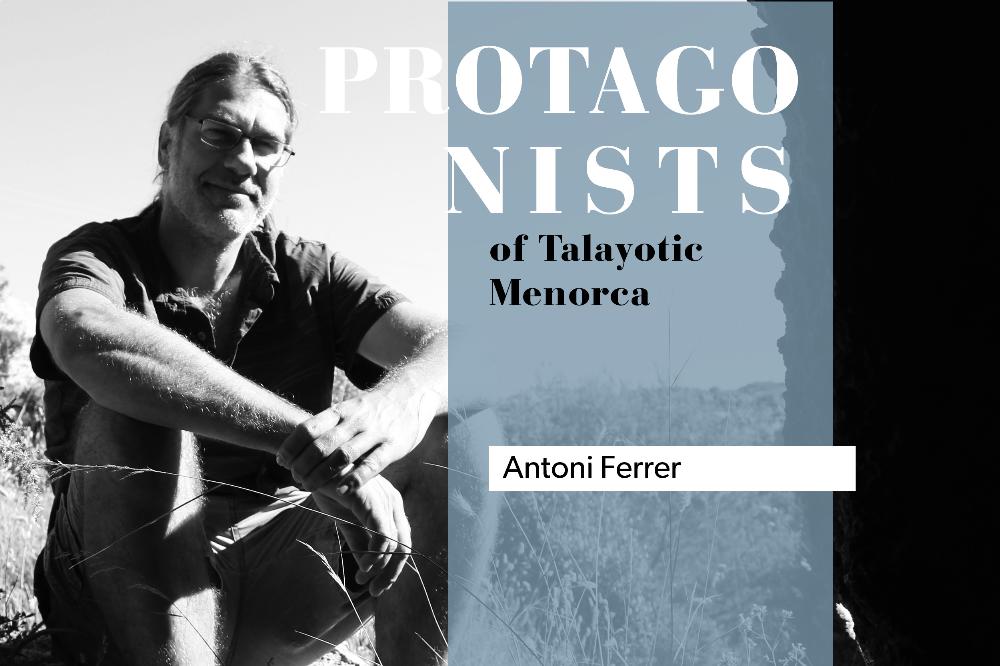 The Minorcan archaeologist Antoni Ferrer is one of the architects of the reconversion of the Talayotic Menorca candidacy since 2017. Insular Director of Cultural Affairs and Heritage between 2015 and 2019, he is specialized in the prehistory and protohistory of the Balearic Islands. With wide experience in the field of research, he currently co-directs the projects of Cornia Nou and Cala Morell in Menorca and Sa Ferradura in Mallorca. The Minorcan archaeologist Antoni Ferrer is one of the architects of the reconversion of the Talayotic Menorca candidacy since 2017. Insular Director of Cultural Affairs and Heritage between 2015 and 2019, he is specialized in the prehistory and protohistory of the Balearic Islands. With wide experience in the field of research, he currently co-directs the projects of Cornia Nou and Cala Morell in Menorca and Sa Ferradura in Mallorca.
How was your interest in Archeology born? Why did you choose the Talayotic culture?
The past has interested me since I was little. Nature is also something that has always drawn my attention powerfully. I believe that these two interests converge in Archeology, not just because part of the archaeologist's work takes place in the field, but also because one of the aspects that Archeology studies is the way in which human beings of the past related to their environment.
Talayotic culture, and Prehistory in general, is especially intriguing to me because people at that time had a radically different way of understanding the world than we do. With an educated person from Roman or Medieval times we could talk about many topics (education, economics or even politics) and we would see that, despite the differences, there are many shared concepts. With a person from the Talayotic era it would be much more complicated, but not because they were primitive, theirs was a rich and complex culture.
You are one of those responsible for the reformulation of the candidacy after the first attempt to enter in the World Heritage List (2017).
Which has been the most difficult part of this task?
For me, by far, the biggest complications have been the administrative issues. We have an administration with many control measures to prevent the misuse of public resources, and this means that hiring services (such as the drafting of a management plan for the candidacy’s properties) is an extremely long and laborious task.
Related to the new file, which do you think, is the main value of our candidacy that can tip the balance in favor of becoming World Heritage?
As Cipriano Marín, the current coordinator of the candidacy’s file, once said: Menorca’s archaeological heritage is already world heritage; our job is to get UNESCO to notice it. To achieve this goal, the vision of the entire island landscape as an object of archaeological study is essential.
What are the main differences between the Menorcan and Majorcan talayotic cultures?
Although they are two sister cultures, there are palpable differences, for example in the architectural field. The talayots of the two islands are quite different. It is often said that architecture is the embodiment of the social and ideological schemes of a society. If it is so, these differences between the constructions of the two islands possibly have a background that right now we can only intuit.
As a researcher, you have recently published with other colleagues a paper that proposes a new interpretation about the taula enclosures. What is your hypothesis and what was the process to get there?
Broadly speaking, the hypothesis is that there is a parallel between the structure of the taula enclosures and the one of the houses from the same period. Following this idea, the place occupied by the taula is analogous to the one occupied by the door that gives access to the most important room in the houses. The taula, therefore, could represent a door. The statistical study about doors and taulas’ proportions has made it possible to determine that there is a similarity between the two elements.
Among the recent studies on Talayotic culture, which ones would you highlight?
I believe that all the projects that are currently being developed are providing and will provide valuable data to better understand the island’s prehistory. If I have to highlight only two, perhaps one would be the Modular project, which has provided new information on the Punic influence during the Late Talayotic period. Another remarkable project is the one headed by Marta Portillo: based on the analysis of current cow, sheep and pig excrements, she is establishing patterns that will help us obtain more information about the remains of prehistoric excrements that we find in archaeological sites. For example, it will be possible to know if cow excrement was used to make fire or as a construction material, as occurs in some cultures.
Nowadays, you co-direct the Cornia Nou and Cala Morell research projects in Menorca. Which are the results obtained in 2020? And what do you have planned for the 2021 campaign?
2020 has also been a difficult year for Archeology, but we have been able to work. In Cornia Nou we have documented the remains of a possible initial Talayotic period house, which is interesting because it is not known how the houses of that time were like. In the case of the Cala Morell site, although we have also done a bit of field work, we have focused on laboratory work and the results will be published throughout this year. The 2021 campaigns will follow the same lines as the previous year.
Are you involved in any other projects this year?
Yes. The Institut d'Estudis Baleàrics opened a call for research grants last year. I presented a project to study the lithic industry (stone tools: mills, mortars, hammers ...) of various archaeological sites in Menorca and I got one of the scholarships. This job will occupy part of my year.
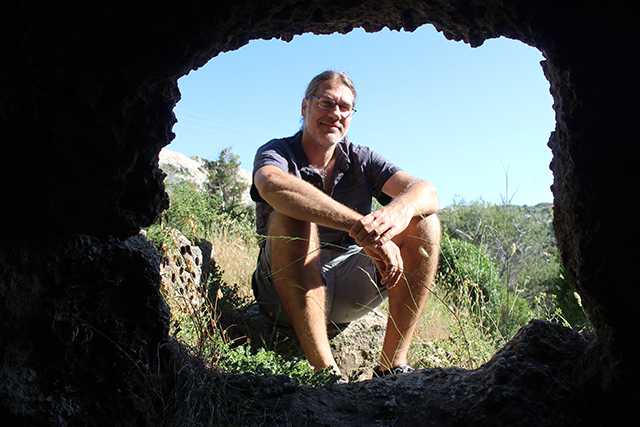 As a popularizer of Talayotic culture, you have played a prominent role in the creation of the Sitjot collection. Do you think there is still a certain ignorance about the Menorcan Talayotic culture among the local population? What can be improved to increase interest? As a popularizer of Talayotic culture, you have played a prominent role in the creation of the Sitjot collection. Do you think there is still a certain ignorance about the Menorcan Talayotic culture among the local population? What can be improved to increase interest?
Undoubtedly, there is still a certain lack of knowledge. But we must be aware of one thing: although it is advisable to have basic knowledge about all aspects of the reality that surrounds us, we cannot pretend that everyone is deeply interested in all areas of knowledge. I recognize that my intellectual interests, although not limited to Archeology, are very focused. In this sense, I believe that the objective of the administration, through the educational system, should be to ensure that there are no citizens without any type of intellectual concern. I think that one of the worst things that can happen to a person is to suffer a complete lack of curiosity to learn.
On the other hand, the administration must try to ensure that everyone has the tools and materials available to satisfy these interests. This implies, among other things, to incentivize scientific dissemination and synthesis publications. I can accept that the ignorance of a person about a subject is motivated by a lack of personal interest in that specific topic, but I believe that it should be avoided at all costs that ignorance is motivated by the lack of means to learn.
Finally, we must try to make everyone understand the importance and complexity of the fields of human knowledge, beyond their personal interest. It is inevitable that we all have an opinion without sufficient knowledge of the facts. Over the last year, for example, we have had to hear on a regular basis how people without any scientific training gave their opinion on medical issues and even disqualified the opinions of the scientific community. We must fight this disregard for knowledge, whether it is directed towards Epidemiology, Archeology, or any other serious discipline.
|
Becatalaiotica 2021 presentation
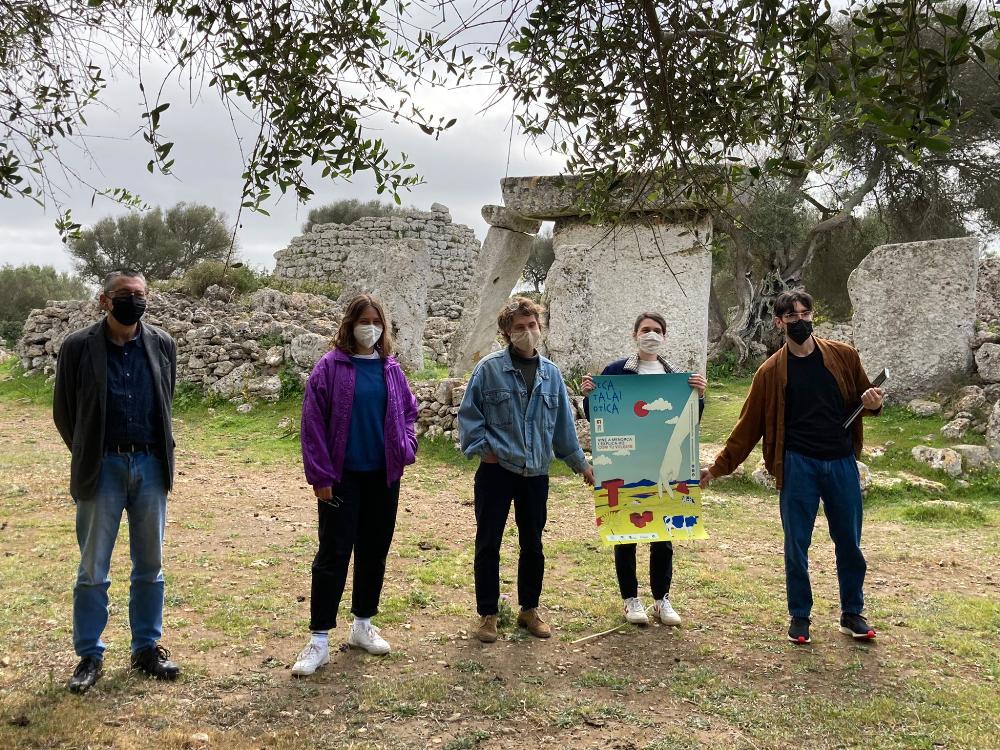 The fifth edition of the Becatalaiotica 2021 cultural contest is already underway and registration will remain open until May 1st. The competition, aimed at young people between ages 16 and 25, has the goal of giving visibility to young talent, reclaiming the inspiring value of the Menorcan landscape and promoting the Talayotic Menorca candidacy for World Heritage among new audiences. The best valued proposal will win a € 2,000 scholarship. The fifth edition of the Becatalaiotica 2021 cultural contest is already underway and registration will remain open until May 1st. The competition, aimed at young people between ages 16 and 25, has the goal of giving visibility to young talent, reclaiming the inspiring value of the Menorcan landscape and promoting the Talayotic Menorca candidacy for World Heritage among new audiences. The best valued proposal will win a € 2,000 scholarship.
This project, an initiative of Amics del Museu de Menorca, has had the support of the Consell Insular de Menorca from the beggining. The conseller of Cultural Affairs, Miquel Angel Maria, attended the presentation of Becatalaiotica 2021 today, which was held in the Talatí de Dalt site, alongside the organizing team formed by Cecilia Ligero, Maria Melia, Biel Parreta and Carlos Salort.
During the event, the promotional video for this edition, a metaphor on the functioning of the contest, was shown a chef (the contestant) must elaborate an original dish based on the tradition that the diner guests (the public) must then evaluate. One way of suggesting that Becatalaiotica is about to cook new things based on a review of Menorcan heritage.
The contest calendar
The organizers explained that, 10 participants will be selected among all the forms received before May 1st. In a second phase of the contest, participants will have to produce an open themed one minute video, with the only condition that Talayotic Menorca appears in it. These audiovisual pieces will be posted on YouTube and will be voted on by the public. The five videos with the most votes will pass to the final phase in October, where the particpants will have to showcase their projects in one of the Talayotic Menorca sites.
In this final phase, the audience will bea crucial part of the contest, since it will be in charge of assessing the originality and suggestiveness of the different proposals. The finalist who achieves the best evaluation will be granted a € 2.000 scholarship.
To participate: fill in the form at www.beca.menorcatalayotica.info and send it to beca@menorcatalayotica.info before May 1st.
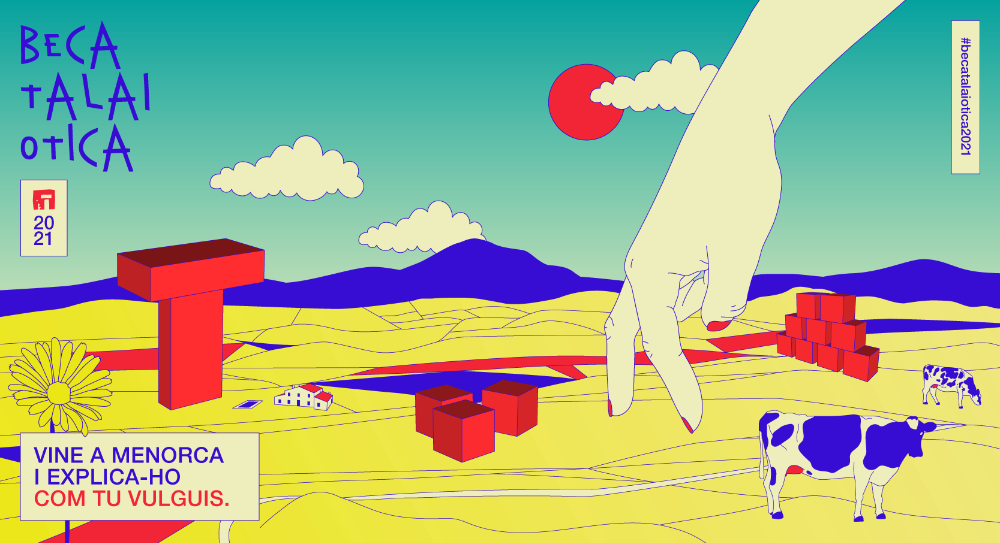
|
Espiral Producciones wins the tender for the documentary about Talayotic Menorca
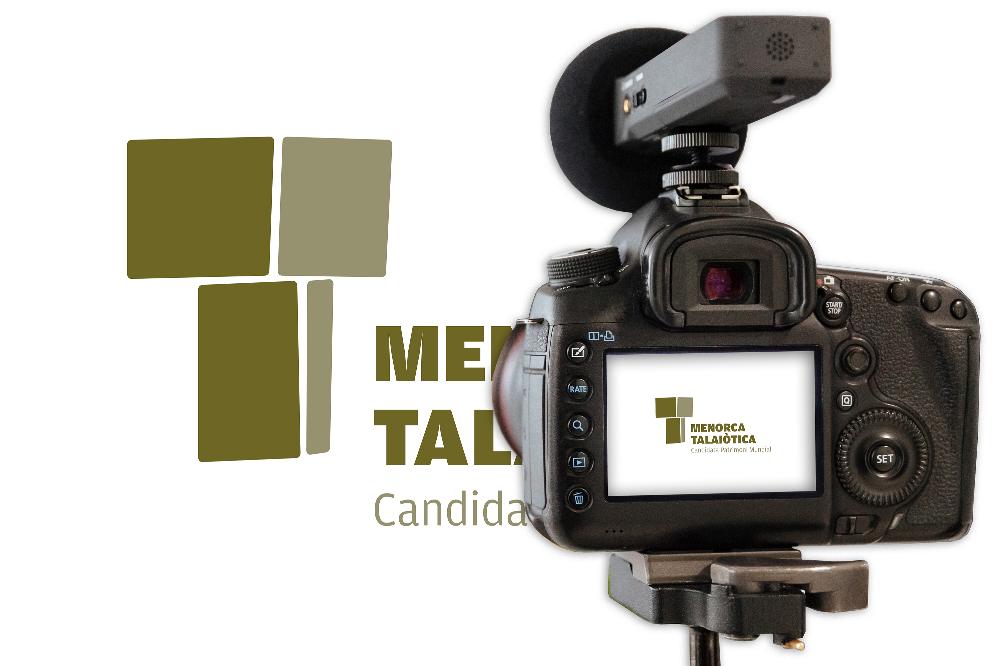 The Consell Insular de Menorca, through its Department of Cultural Affairs, Education, Youth and Sports, has awarded the tender for the documentary about Talayotic Menorca to the company Espiral Producciones, SL. This audiovisual piece will have the aim of supporting the candidacy, helping to demonstrate its suitability for inscription on the UNESCO World Heritage List. The estimated value of the contract is € 66,069.28. The Consell Insular de Menorca, through its Department of Cultural Affairs, Education, Youth and Sports, has awarded the tender for the documentary about Talayotic Menorca to the company Espiral Producciones, SL. This audiovisual piece will have the aim of supporting the candidacy, helping to demonstrate its suitability for inscription on the UNESCO World Heritage List. The estimated value of the contract is € 66,069.28.
Based in Mallorca, Espiral Producciones is an audiovisual production company dedicated to cinema, TV, advertising and documentaries. The team making the documentary about Talayotic Menorca will be:
Producer: Luisa Lagartera
Screenwriter: Laura Jurado
Director: Manuel Balaguer
Director of Photography: Agustí Torres
Archaeologist-advisor: Amalia Pérez-Juez
The documentary “La mort com coartada” (Agustí Torres), “La ciutat dels caiguts” (Manuel Balaguer), the IB3 news program “Panorama” (Luisa Lagartera) and the film “Dona” (Agustí Torres) are some of the productions in which the team members have collaborated.
The Consell Insular de Menorca considers it is essential to provide the candidacy with a documentary that translates the storytelling of the new file to an audiovisual format. The documentary must show the uniqueness and exceptionality of Talayotic Menorca and excite the viewer by stressing the Talayotic landscape’s importance in the life of Menorcans.
|
"We had a rough diamond that has been polished throught these years"
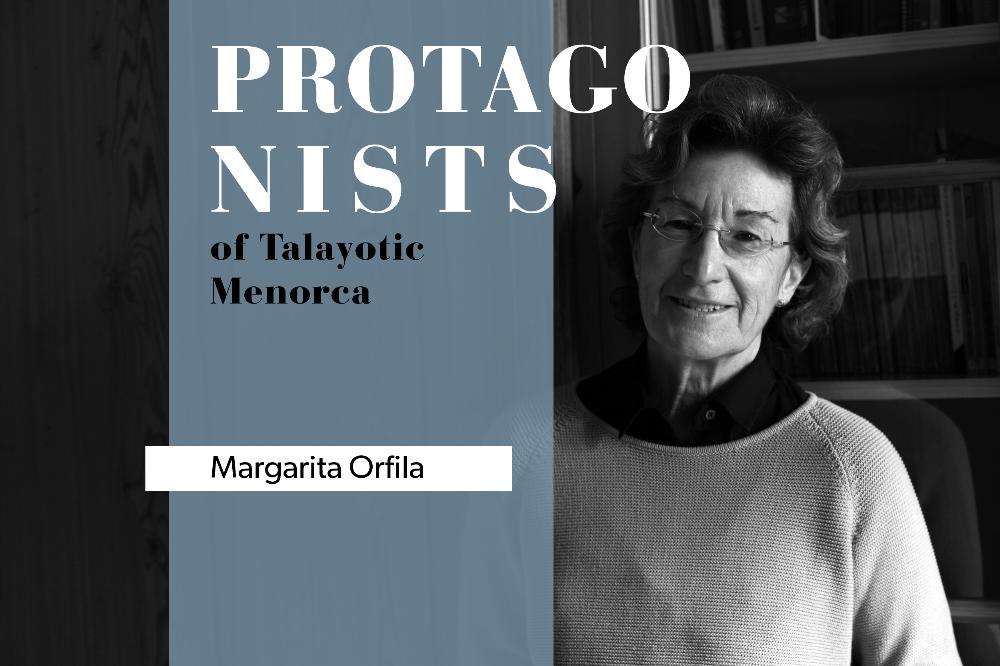 Margarita Orfila is a fomer Professor of Archeology at the University of Granada, where she taught for good part of her career, as well as at the University of the Baleric Islands and the University of Valencia. Dr. Orfila specializes in the Roman world and is currently the president of the Ateneu de Maó. She has directed the excavations of Pollentia (Alcúdia, Mallorca) and Cova dels Jurats in Calescoves (Menorca), among others. Margarita Orfila is a fomer Professor of Archeology at the University of Granada, where she taught for good part of her career, as well as at the University of the Baleric Islands and the University of Valencia. Dr. Orfila specializes in the Roman world and is currently the president of the Ateneu de Maó. She has directed the excavations of Pollentia (Alcúdia, Mallorca) and Cova dels Jurats in Calescoves (Menorca), among others.
How did your interest in archeology start?
Very simple, I was lucky enough to spend the summers of my childhood in Calescoves, coinciding when Cristóbal Veny was carrying out his excavations there. It was like playing a game, every morning with the archaeologists, a game that ended up being my profession.
The Cova dels Jurats, in the Calescoves necropolis, was the focus of your latest research in Menorca. What sparked your interest in this site, leaving childhood memories aside?
The cave has always attracted the attention of many researchers. The Roman cave inscriptions at the entrance, made known by Joan Ramis in 1817; a grotto of about 20 meters in length sealed by the detachments of the ceiling, which only left space enough to intervene in a side corridor and part of its bottom; and the evidence that it had not been used for burials, as were the other one hundred caves that give the inlet its name, were some of the reasons for an archaeological intervention there. Ever since I began my academic career, dedicating myself to Roman times, I had always kept in mind that one day I would investigate this cave. It was a priority to create a team of archaeologists and philologists, as we did with Dr. Marc Mayer, a highly prestigious philologist and epigraphist; Giulia Baratta, professor at the University of Macerata (Italy); and myself. The results were very useful to learn more about the cultural activities of the Menorcans from the II century BC, until the mid III century AD.
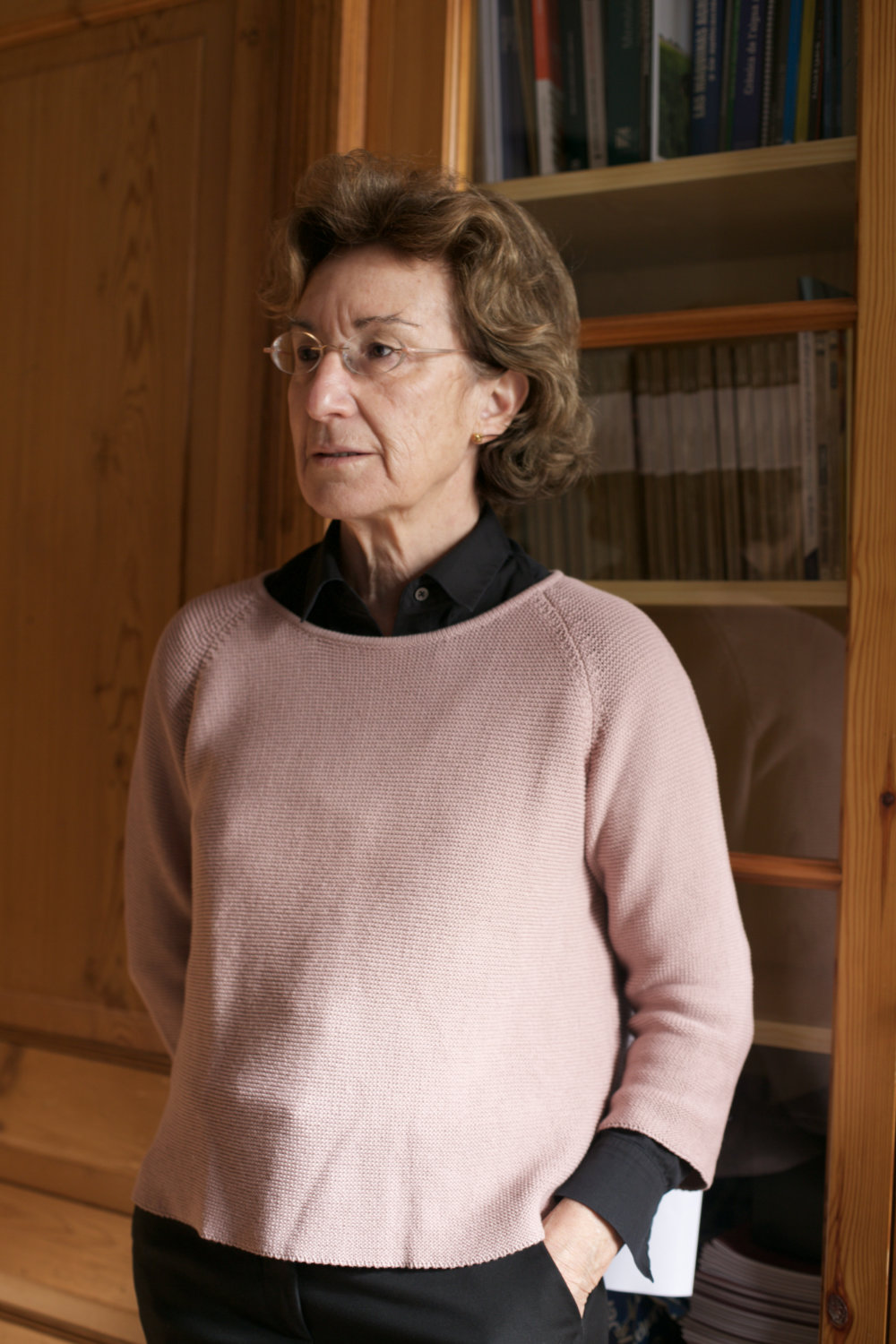 The excavations determined that it was the first rock sanctuary ever documented in the Talayotic culture. Since when was it in use? How was the process that led you to this conclusion? The excavations determined that it was the first rock sanctuary ever documented in the Talayotic culture. Since when was it in use? How was the process that led you to this conclusion?
The archaeological and philological evidence was very clear, as was the repetition of a date in the inscriptions carved into the rock: the XI Kal(endas) Maias, which is equivalent to April 21st, the day that Romulus founded Rome in 753 BC, as Roman sources indicate. A very important date in the Roman calendar, which was not only about its foundation, but also a day dedicated to the goddess Parilia, protector of births. This data that lead us to propose that we were faced with a sanctuary dedicated to these two events. Moreover, in Dr. Mayer’s study it was possible to verify that these inscriptions were dated - the date could not be identified in all of them due to the poor state of conservation they presented -, since they are headed by consular references, which was the way to indicate the year in Roman times. The oldest, around the year 125 AD; the most modern, around 230 AD.
On the other hand, the excavation inside the cave determined the appearance of sacred uses which started at the end of the III century BC and that therefore, this was the only cave sanctuary related to the Talayotic culture, where comensality was a habit. Also that it was frequented until the end of the III century AD, coinciding with the dates of the last external inscriptions that have been dated.
Among the most recent studies on Talayotic culture, which one would you highlight?
Buff, I could not highlight any, given that all the interventions that have been developed in recent decades are highly important. Those of the Càrritx, Mussol or El Pas caves have given impressive information about the world of the dead in Menorca’s prehistory, as corroborated in the Biniedris cave, where work is still ongoing. The excavations in Cornia Nou, everything that is carried out in Torre d'en Galmés, the interventions in Son Catlar, those that were carried out in Talatí, the works about the taula enclosures …
In 2009, when you were the head of the History and Archeology department at the Institut Menorquí d’Estudis (IME), you proposed the department present the first Talayotic Menorca candidacy to UNESCO, which was later assumed by the Consell Insular de Menorca. What made you take that first step that would set the whole process in motion?
I think that the interventions in Cornia, with that passageway in the small talayot ??or the staircase of the major, somehow made me reflect on its monumentality, uniqueness and spectacularity, in addition to the incredible state of conservation of Menorca’s prehistorical assets. Also the density of the amount of sites and that they have endured and have been used in some way to this day. Here, I want to remember Don Juan Hernández Mora and his phrase about how Archeology is "History that can be seen", and our remains can really be seen, and damn well! When this topic came up in the IME department, all the members present at that meeting agreed that we should aspire for the Talayotic culture of Menorca to be declared World Heritage.
On the other hand, the fact that there are very few prehistoric properties in Spain declared World Heritage by UNESCO was another of the spurs. Furthermore, it should not be overlooked that when an asset, or a nominated property as is our case, receives that distinction, the so-called cultural tourism increases by more than 50% and is not seasonal. These factors also weighed in when proposing the candidacy in the IME History and Archeology department.
As a member of the candidacy’s Permanent Commission, you have contributed with your writing and reviews to the new file that has been recently presented at UNESCO's Paris headquarters. How has it improved when comparing to the previous one?
The documentary basis of the first file was very important, that was a job already done and that must be highlighted. The most substantial change comparing to the previous file is that all the information is now linked through a tale. The previous one was more focused on presenting the properties of the candidacy itself. I believe that Cipriano Marín`s work is impressive, and all those who have been involved in this exciting project have given cover and enriched the current file. The entire series of meetings, both of the Permanent Commission and those that have been organized with external members, have enhanced the final result of this document. Let's say we had a rough diamond and that in these years it has been polished.
As president of Ateneu de Maó, what activities have been carried out to support the candidacy?
Well, in this sense, a great diversity of activities have been carried out in recent years and in support of the first declaration attempt: from conference cycles, such as the one that talked about archaeological World Heritage Sites in Spain; to project presentations. However, we catch ideas on the fly and we will surely organize something else between now and the first half of 2022. The desire and enthusiasm for this candidacy is there!
|
The sixth edition of "Som talaiòtics?" has begun
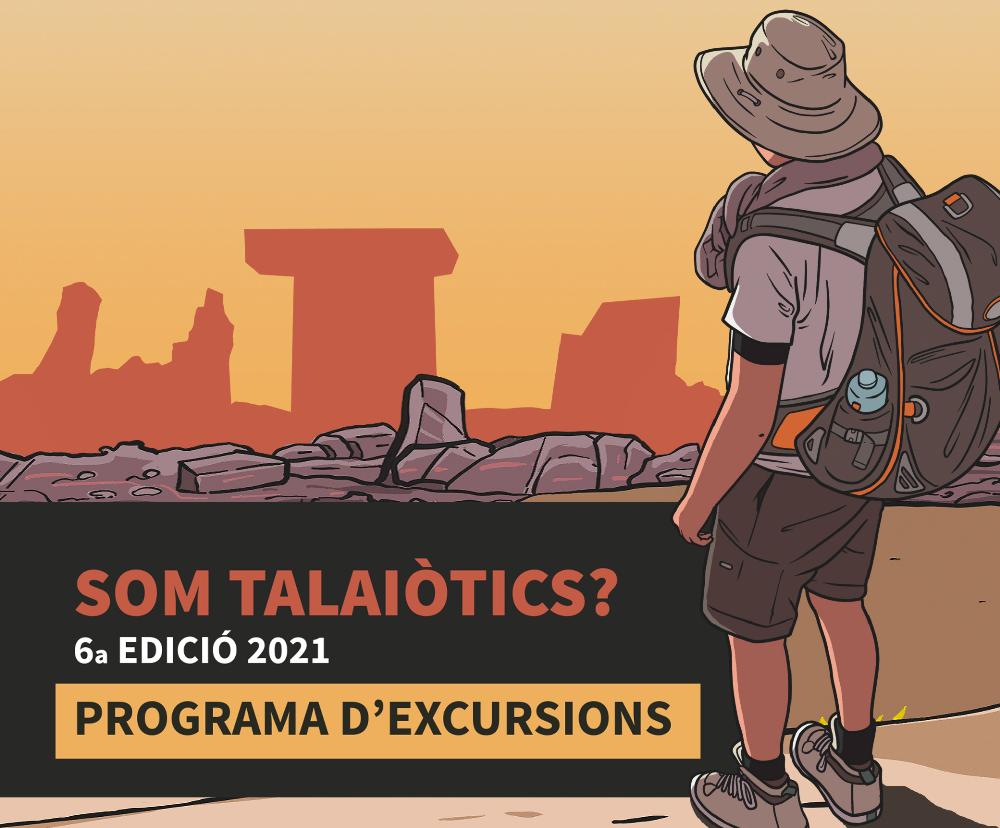 The first visit will be on Sunday March 7th in Son Catlar (Ciutadella), the great Talayotic town of western Menorca that stands out for preserving a large part of its defensive wall.The archaeologist Majo León will guide the excursion. The first visit will be on Sunday March 7th in Son Catlar (Ciutadella), the great Talayotic town of western Menorca that stands out for preserving a large part of its defensive wall.The archaeologist Majo León will guide the excursion.
What unites us and what separates us from the Talayotic culture? Visitors will find out all about the Talayotic Menorca candidacy and how its components or territorial areas are articulated. The Talayotics’ relationship with architecture, agriculture the stars or death will complete a fascinating journey to the extraordinary heritage they bequeathed us.
The "Som talaiòtics?" program goal is for participants to get to know the sites in depth and the landscape they inhabit. At the end of January, the Consell Insular de Menorca handed the new candidacy’s file over to UNESCO, which emphasizes an analysis of the relationship between the landscape and the Talayotic monuments.
The activities are free, but in some cases capacity is limited. You have to sign up a few days in advance on the website www.gobmenorca.com/inscripcio-excursio or call 971 35 07 62.
As for the excursions that have a bus service to return to the starting point, this service has a cost of between 3 and 5 euros per person and must be paid at the time of taking it.
The dates are as follows:
- Sunday, March 7th: visit to Son Catlar (Ciutadella) with the archaeologist Majo León. Bus service. Component 2.
- Sunday, April 11th: visit to Torrellafuda (Ciutadella) with the archaeologist Ismael Moll. Bus service. Component 1.
- Sunday, May 9th: visit to Sant Agustí (Es Migjorn Gran) with the archaeologist Ismael Moll. Bus service. Component 4.
- Saturday, June 5th: night visit to Trepucó (Maó) with the archaeologist Elena Sintes. Bus service. Component 8.
- Saturday, September 18th: night visit to Torre d'en Galmés (Alaior) with the archaeologist Borja Corral. Bus service. Component 5.
- Sunday, October 3rd: visit to Son Mercer de Baix (Ferreries) with the archaeologist Cristina Rita. Bus service. Component 3.
- Sunday, November 7th: visit to Torelló, Talatí de Dalt and Cornia Nou (Maó) with the archaeologist Toni Ferrer. Bus service. Component 7.
- Sunday, December 12th: visit to So na Caçana (Alaior) with the archaeologist Cristina Bravo. Bus service. Component 6.
You can check the full program here.
|
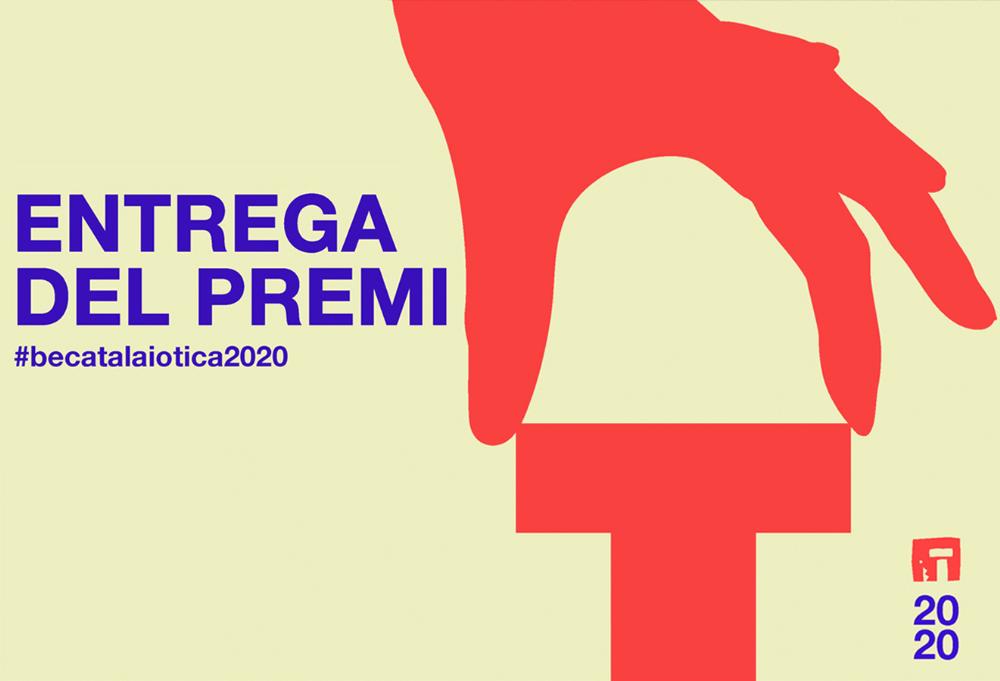
Maite Mira, winner of the Becatalaiotica 2020 award
¿¡[AQUI]¡¿Maite Mira (Alicante, 2000) is the winner of Becatalaiotica 2020, an Amics del Museu de Menorca initiative that has the support of the Consell Insular de Menorca (CIM). The award is a 2,000 euros scholarship.
The winner was announced on Saturday, February 6th, during an Instagram Live on the @becatalaiotica profile. The conseller of Cultural Affairs, Miquel Àngel Maria, and the winner of Becatalaiotica 2019, Pau Canivell, also participated in the session. The organizers took the opportunity to communicate that registration for Becatalaiotica 2021 is open until May 1st.
A Talayotic role-playing game
Mira was the first finalist to present her project, "206 ANE: one day at So na Caçana", on October 25th in So na Caçana. This Economics and History student's proposal was a role-playing game in which decisions were taken using intuition and knowledge about the island's past. Visitors had to put themselves in the shoes of characters from the Postalayotic era. When the pandemic allows it, Mira will return to Menorca to repeat her role-playing game.
The conseller of Cultural Affairs recalled that Becatalaiotica "was born four years ago as an initiative to support the Talayotic Menorca candidacy. Its main virtue is to reach new audiences, especially young people, involving them in historical heritage and archeology ". Regarding Talayotic Menorca, Maria pointed out that "we are now in a sweet moment relaunching the candidacy. On January 29th, the new file was delivered at the UNESCO offices in Paris, now we have to wait until September for the on-site assessment of the ICOMOS inspector. The first semester of 2022 actions related to the candidacy will intensify. The Becatalaiotica 2021, which we will deliver at the beginning of 2022, will have an even greater impact and will help us to position ourselves in front of the UNESCO “.
What is Becatalaiotica?
The first Becatalaiotica contest was held in 2017 as an initiative of Amics del Museu de Menorca, with the support of the CIM Department of Cultural Affairs. The goal has always been to shine a light on young emerging talent, vindicate the inspirational value of our landscapes and promote the candidacy of Menorca Talaiòtica as world heritage site among a wider audience.
The staging of Becatalaiotica takes place at the different archaeological sites that comprise Talayotic Menorca, where the finalists (youngsters between the ages of 16 and 25) showcase their projects. All fields of study and means of expression are valid, as long as scientific knowledge is respected and kept at the forefront of the proposal. Maite Mira, María Sánchez, Mateu Tur, Guillem Andreu and Julia Rubio were the five finalists of this atypical edition. The assisting audience is a crucial part in evaluating the originality, content and evocative power of each proposal. The finalist who achieves the best evaluation is granted a 2.000 € scholarship.
|
"The objective is to preserve Talayotic Menorca for present and future generations"
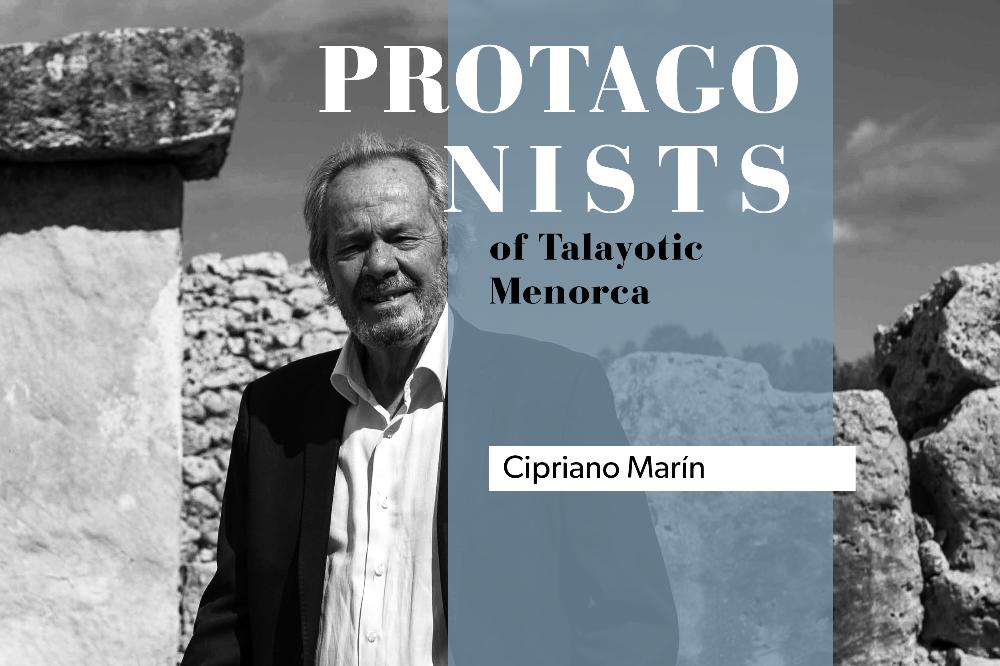 Cipriano Marín is one of the world's leading experts in sustainable island development. Coordinator of UNESCO programs such as Starlight, RENFORUS and Biosphere Smart, he has spearheaded numerous innovation projects related to sustainable tourism and ecology. Between 1992 and 2005 he was the head of INSULA (International Scientific Council for Island Development-UNESCO), part of the United Nations Educational, Scientific and Cultural Organization. His relationship with Menorca dates back to the declaration of the island as a Biosphere Reserve in 1993, which he was an integral part of. Now he is participating in the achievement of another historical milestone for the island, because since 2017 he has coordinated the new Talayotic Menorca nomination file as a UNESCO World Heritage Site. Cipriano Marín is one of the world's leading experts in sustainable island development. Coordinator of UNESCO programs such as Starlight, RENFORUS and Biosphere Smart, he has spearheaded numerous innovation projects related to sustainable tourism and ecology. Between 1992 and 2005 he was the head of INSULA (International Scientific Council for Island Development-UNESCO), part of the United Nations Educational, Scientific and Cultural Organization. His relationship with Menorca dates back to the declaration of the island as a Biosphere Reserve in 1993, which he was an integral part of. Now he is participating in the achievement of another historical milestone for the island, because since 2017 he has coordinated the new Talayotic Menorca nomination file as a UNESCO World Heritage Site.
• You said once that an island is an island precisely because of its culture, that islanders have the idea of being on another universe. Is the Talayotic culture what makes Menorca an island?
This is true and it is not only me that says so. In 1992 the Earth Summit predicted that islands are very important for sustainable development, since they are home to an immense number of ecosystems and endemic species, as well as an extreme diversity of unique cultures. So we can understand that the nature-culture binomial is the pillar on which the foundations of insularity are built. In these terms, not all territories surrounded by sea should be considered as authentically insular. This would be the case of Japan, where a clearly insular culture has not been developed in its main islands, unlike on many of the 7,000 islands of its archipelago; or New Zealand, islands as large as Japan’s central ones, whose inhabitants consider themselves authentic islanders and are proud of their Maori roots.
Most of the islanders on the planet are extremely proud of their island and their local culture. However, usually we are not aware that we are part of a universe of more than 100,000 islands, inhabited by at least 500 million people. Therefore, in an increasingly dulled global world, it is essential to preserve the enormous joint force of island diversity, which includes natural and cultural diversity. And this has a lot to do with the global framework in which Menorca's candidacy is presented, understanding the Talayotic heritage as a representative and exceptional component of island cultures legacy.
With this vision, I think we can affirm that the ancient moais make Rapa Nui even more of an island in cultural terms, in the same way that the large naval base makes Guam less of an island in spite of it being isolated in the Pacific Ocean. Following this idea, the remains of the Talayotic culture, not only make Menorca more of an island but they are also a unifying element of its powerful cultural identity. We could define them as the glue of the island's history through the ages.
• “An insular cyclopean odyssey” is the motto of the new dossier for the Talayotic Menorca candidacy, why did you decide to give it such an epic touch?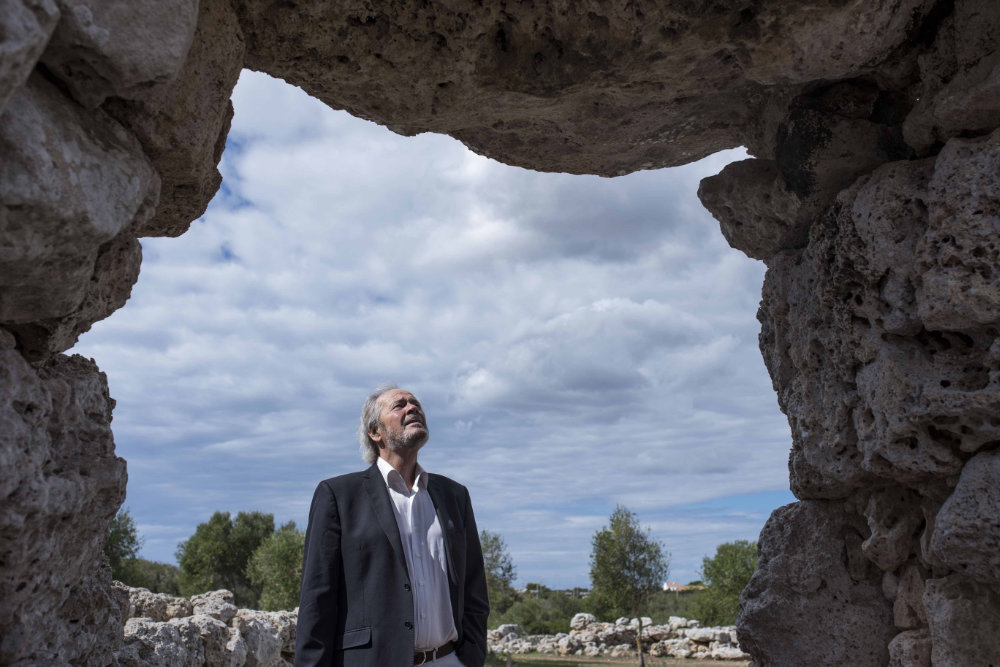
Apart from the technical and scientific rigor required, nothing prevents the story of a candidacy from being vibrant and, at times, emotional or poetic. It should be emphasized that a candidacy’s file as a World Heritage Site is not only addressed to the experts from ICOMOS (International Council on Monuments and Sites) or the IUC (International Union for Conservation of Nature) who analyze and evaluate the proposal, but also is targeted to the entire international community. Therefore, we have decided to include expressions that also reach people’s soul and not just the experts on the subject.
About the motto "an insular cyclopean odyssey", I think it fits well with what we know about Talayotic culture. We are talking about a community that built a great number of cyclopean structures in a small Mediterranean island. But if we only reference the builiding of hundreds of talayots distributed throughout Menorca, there is no doubt that, for such a small human community with such little means, this was an incomparable colossal effort. It is not at all an exaggeration to speak about an odyssey of stone. I also think that it’s a true expression that pays tribute to those communities and reinforces the insular nature of the proposal.
• Since 2017 you’ve been coordinating the team that has reformulated the candidacy, has it been an odyssey to achieve it? How has it changed?
With regards to production time, I think it has been a real odyssey to get the current file completed within the deadlines that we had set. We must consider that nominations for World Heritage Site have become infinitely more complex and demanding in the last decade and candidacy preparations normally take longer than the time spent on this proposal. This would have been impossible without the tremendous collective effort of the great team that has participated in this reformulation and the determined leadership of the Consell Insular de Menorca at all levels. Permanent cooperation between the different administrations has been key, starting with the support of the Balearic Islands Government and the proactive role of the Spanish Ministry of Culture. When everyone is rowing in the same direction it is easier to achieve ones goals. It is also indisputable that having the foundations of the previous proposal has been an important advantage.
The most striking aspect of the new candidacy is that it is divided into nine territorial areas that include the best representations of cyclopean constructions and the exceptional landscapes associated with them, establishing a harmonic and symbiotic relationship. This candidacy also brings new elements in, such as the astronomical dimension of certain monuments and the vigorous relationship of the Talayotic culture with the sky. We reinforced the divergent cultural process lived on the island during Prehistory, which led to the creation of unique expressions comparing to its Balearic and Mediterranean peers.
Another aspect that has been underpinned is the comparative analysis. To be inscribed on the World Heritage List, an asset has to demonstrate not only its exceptionality and uniqueness, but also has to make the list more representative. In other words, the proposal serves to fill in gaps to complete the great cultural legacy of humanity. And this is demonstrated through comparative analysis with other registered or unregistered assets. In this sense, we have provided a convincing account of the expressions of this island culture within the framework of the Mediterranean and the islands of the world, recalling once again the scarce representation of the islands prehistory on the World Heritage List.
Finally, it should be noted that the new proposal has strengthened and presented a very detailed management plan, which parts from an exhaustive diagnosis of the asset’s state of conservation.
• In your opinion, what are the attributes that make this candidacy exceptional?
Well, the essence is the same as the one that supports our proposal of Outstanding Universal Value for Talayotic Menorca. Apart from some of the aspects that I’ve already mentioned, the first thing that stands out is the extreme quantity and density of prehistoric sites that have survived in Menorca. In adition to this, the diversity of expressions that are present: from funeraries, residences and defensive structures to hydraulic works and mining. And by the way, with an unprecedented level of protection compared to other territories, this is the BIC (Asset of Cultural Interest) island, as conseller Miquel Maria Ballester likes to say. This extreme density and diversity of vestiges of the past allows us to know in detail the evolution of this culture, and makes the proposed site an exceptional window into Prehistory, a truly open book where you can read into the past of an islands odyssey.
Secondly, the proposal defends that, despite their limited resources, those human communities were capable of creating exceptional and exclusive cyclopean works that are unique to this island, such as the funeral navetas, the monumental circular houses or the taula enclosures. Alongside the unique Menorcan talayots and the colossal effort involved in their construction, they constitute the main architectural attributes that convey the value of the property. In addition, we include the exceptional value of some of these monuments in the framework of cultural astronomy.
Thirdly, it must be considered that these monuments have marked the island's landscape during the last 3,000 years and have coexisted with generations of Menorcan people throughout its history. But the most significant thing is that they are inserted today in an extraordinarily well-preserved landscape that characterizes the traditional Menorcan agroecosystem. Displayed in this unique mosaic landscape is an incredible mesh of dry-stone wall that protects the vestiges of the past and maintains the spirit of the archaeological sites. The true highlight is that we’re dealing with a living and lived landscape, unlike most other archaeological sites. In comparative terms, we are dealing with one of the richest and most unique archaeological and monumental landscapes on the planet.
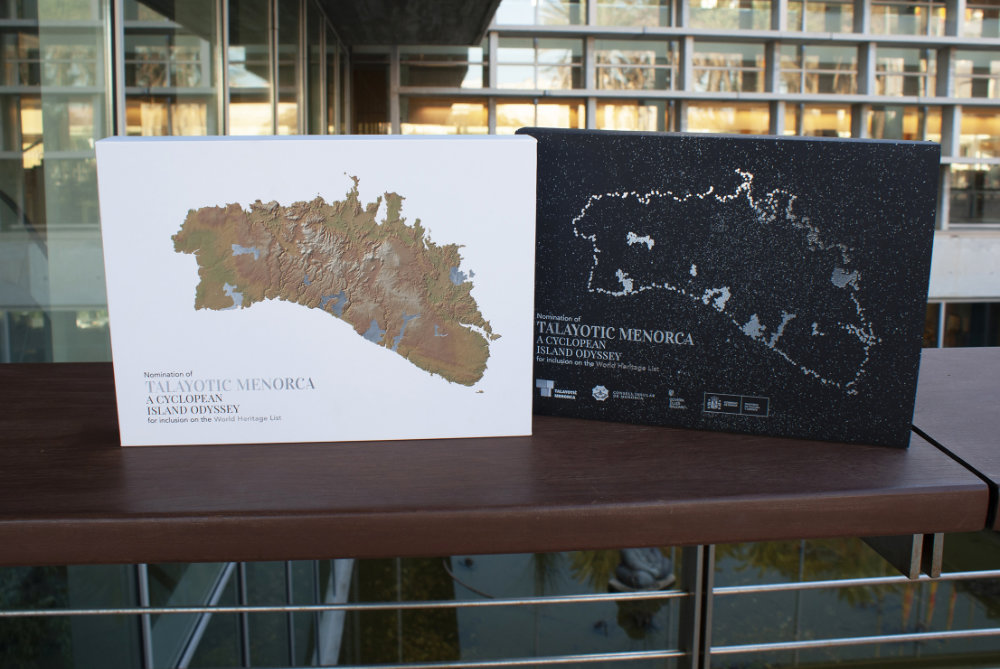 A long distance race A long distance race
• We are already half way through the race for the nomination. The file has been delivered to Paris, what awaits us now?
Although preparing the definite candidacy file has been the most complex and lengthy task, there is still a long way to go. The Ministry of Culture sent the final file to the UNESCO World Heritage Center in Paris at the end of January. From this moment on, the proposal is being analyzed by the ICOMOS Experts Panel and, eventually, by IUCN experts. During this analysis process, independent reports could be sought out and used.
The on-site assessment mission would take place during autumn of this year, with the Experts Panel first conclusions in hand. This mission’s goal is to verify the consistency of the proposal on the spot, as well as to analyze details, non-conformities and specific aspects of the file and also to gather supplementary information. Before the end of the year, ICOMOS will issue an interim report and will subsequently hold a meeting with those responsible for the candidacy at its headquarters in Paris. The final ICOMOS report will not be revealed until a month before the celebration of the World Heritage Committee, which is scheduled to be held in Kazan (Russia) between June and July 2022. Finally, the member states of the World Heritage Committee will take the ICOMOS recommendations into consideration and have their final word on the nomination during the session. In realitiy, the schedule will depend on the pandemic’s evolution. In fact, the 2020 Committee was unable to meet in China as was planned.
• Is the inclusion of Talayotic Menorca on the World Heritage List an end or a means?
I have always said that the objective of a nomination cannot and should not be exclusively to obtain an inscription on the UNESCO World Heritage List. As prestigious as this recognition is, it must be considered as one more mean in the process of safeguarding this exceptional legacy. The fundamental objective is to preserve Talayotic Menorca for present and future generations. It is more about assuming and acknowledging this responsibility than it is about earning a degree.
Whether or not the inscription is achieved, the important thing is that the registration process itself has laid the foundations of a solid and long-term strategy to preserve this common heritage. A strategy that is based on the recognition of Menorcans themselves as guarantors of their heritage, that will increase the value and perception that visitors have of it.
Simply put and setting the obvious differences aside, I would rather compare a nomination with the certificates of excellence that are so fashionable these days. The most significant thing about being a certified buisness or activity is not obtaining the label itself, rather it’s the constant improvement process that’s required to maintain it and to advance in providing excellent goods and services.
• How can a possible declaration as a World Heritage Site influence the sustainable development of the island?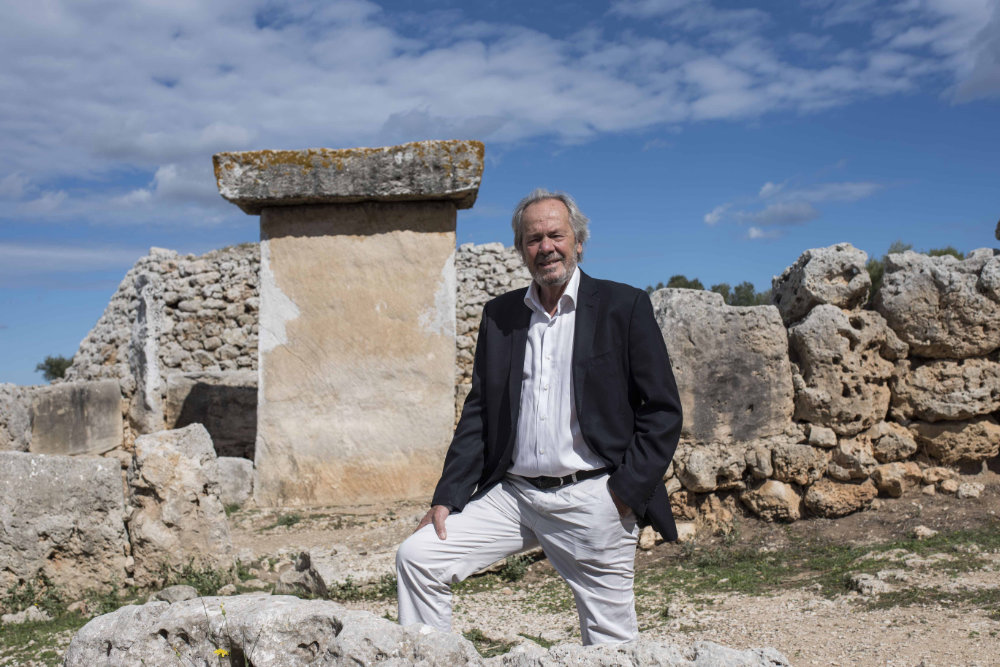
I would like to recall that more than two decades ago, the declaration of Menorca as a Biosphere Reserve contemplated something new at that time. Menorca was not only the first island to bet on integrating the entire territory as a Biosphere Reserve, but also postulated that the island's cultural heritage, especially the prehistoric, constituted a key element for sustainable development. This idea was affirmed by Menorca before the 1992 Earth Summit who ultimately coined the term “sustainable development”. I remember perfectly how this caused great controversy in the UNESCO MaB Program, since at that time the term "sustainable development" refered exclusively to the environment and protected areas. If culture and heritage were mentioned, it was only referring to indigenous populations of remote territories. At that time, the environment was one thing and cultural heritage quite another.
For me, the eventual inscription of the Talayotic Menorca to the World Heritage List would be the icing on the cake of a pioneering concept of island and sustainability that was forged in the nineties. Menorca was twenty years ahead of UNESCO's current policy, which considers cultural heritage as a cornerstone of sustainable development, and which is also now contemplated in the United Nations Sustainable Development Goals.
That said, when talking about the impact of a World Heritage Site declaration on the development of a territory, the most frequent answer is to resort to the increase in tourism. But this is not exactly Menorca’s case. The island is and has been a consolidated tourist destination, and we all hope that it will continue to be so after the pandemic with a clear sustainable strategy. In this context, the enhancement of the Talayotic heritage and its eventual inscription on the list could strengthen cultural tourism and broaden the traditional turistic periods. All of them important factors in terms of the destination’s sustainability.
In any case, there is no doubt that if Talayotic Menorca were inscribed on the World Heritage List, it would be part of this exclusive club of UNESCO sites. The inscription would have a palpable effect on the positioning and image of the island at an international level in terms of sustainability and patrimonial responsibility. In today's world, this intangible value is extremely precious and would have repercussions in all areas of economic activity. Finally, we must not forget that both World Heritage Sites and UNESCO Biosphere Reserves are territories called upon to work in a network, which offers enormous possibilities for effective cooperation. In other words, it is about sharing to compete and position itself strategically, both in terms of sustainability and heritage conservation.
|
Talayotic Menorca on the ‘Marca España’ radio program
Talayotic Menorca starred in the ‘Marca España’ program this Tuesday, January 12th, with an interview to the conseller of Cultural Affairs, Miquel Àngel Maria, where he reviewed the key points of our new UNESCO World Heritage candidacy. Hosted by the journalist Lola Plaza, ‘Marca España’ is one of the most popular programs on Radio Exterior, the international station of Radio Nacional de España.
No inhabited place on Earth has a higher density of prehistoric sites than Menorca which has around 1,500. This great density of archaeological remains alongside the harmonious coexistence of the monuments with human activity and their great state of conservation, centered most of the conversation around the new candidacy. Articulated in nine territorial areas (or components) that distinguish different settlement types on the island, the candidacy groups together the most unique sites of Menorcan prehistory and also highlights its surrounding landscape, as was recommended by the International Council on Monuments and Sites (ICOMOS) to improve the candidacy in 2017. The conseller explained why these components are concentrated mostly on the southern part of the island: "It has to do with the geology, Menorca’s south is made mostly of limestone, where there is more water, which explains the greater affluence of settlements."
However, limestone is not what explains the great state of conservation of the sites: “It is not a resistant type of stone. Many sites are buried under the fields and this is what has helped with their conservation, because wind and rain erosion has been avoided. Seven of the 32 taulas located are still standing, an exceptional fact considering their age. There are about 300 talayots throughout the island, the upper part may have been damaged but in most cases the base remains perfectly visible and in its whole diameter,” according to Maria.
Coexistence between locals and the sites also has a lot to do with their good conservation: “There is no vandalism. In fact, whenever there have been cases, such as the painting of the naveta des Tudons in 2017, a wave of indignation came across Menorca, which shows the level of involvement and self-identification of the locals with their heritage,” explained the conseller. The possible inclusion of Talayotic Menorca in the 2022 UNESCO World Heritage List would be a reward for all their efforts: “If we succeed, it will be a recognition of the work done, sometimes unconsciously, by generations of Menorcans to help preserve the monuments. From my point of view, it will be a commitment to pass this heritage on to future generations in better conditions than we have received it. This means promoting research, conservation and prevention,” Maria reflected.
This year is of capital importance to the future of the candidacy. On February 1st, the Spanish Ministry of Culture will deliver the candidacy’s file to the UNESCO headquarters in Paris, and in September an ICOMOS commission will travel to Menorca to assess the candidacy on site. "If all goes well, in January 2022 we will have the ICOMOS interim report and in May, the final one. We hope that in July we can celebrate the inscription to the World Heritage List," the conseller of Cultural Affairs explained.
|
New hypothesis about the taula enclosures featured in SER Historia
The new hypothesis about the Menorcan taula enclosures proposed by the archaeologists Antoni Ferrer, Irene Riudavets, Gerard Remolins and Cristina Bravo was part of the last SER Historia radio program, broadcasted on January 3rd. Ferrer and Riudavets explained their interpretation of these religious spaces, published a few months ago in Complutum, a magazine specialized in history and archeology edited by the Universidad Complutense de Madrid.
In the paper "Doors to a symbolic world: a new interpretative proposal on taula enclosures from Menorca", the authors study the parallels between the structures of the taula enclosures and the domestic spaces of the Post-Talayotic period and propose a hypothesis that the taulas would be a symbolic door between the world of the living and the world of the gods.
Parallels with the houses of the Post-Talayotic period
Interviewed by Nacho Ares, host of the well-known radio program, the two archaeologists detailed their findings on these enclosures that are, as Ferrer recalled, one of the peculiarities that make Menorcan Talayotic culture so unique. “Today, no one doubts that these taula precincts were sanctuaries. Figurines depicting divinities have been found in these sites, such as the Egyptian deity Imhotep discovered in Torre d’en Galmés or the bronze bull of Torralba d’en Salort. Remains of food and banquets were also found, indicating that celebrations related to the divinities had taken place,” explained Riudavets.
The parallels between the structure of the taula enclosures and the Post-Talayotic houses led them to the idea of the house of deities and the house of mortals: “In this context, the taula occupies an analogous position to the one that occupies the door that gives access to the main room inside the houses. That’s when we propose that the taula would be a symbolic door, a connection between the world of the living and the afterlife,” according to Ferrer.
This idea of false doors related to a religious and symbolic world is relatively common in the protohistoric Mediterranean, as the archaeologist pointed out: “We have examples in the Etruscan world, in Sardinia and even in the Roman world. The best known cases, however, are the false Egyptian doors. In the paper we also conduct a statistical study comparing the proportions of the doors and the taulas, concluding that there is a correlation between the metric proportions of the two elements.”
How did they come to this conclusion?
Surprisingly, the conclusion did not arise from the observation of a taula or a house from the Post-Talayotic period, but rather from the excavations of an earlier Talayotic period building at the Cornia Nou site, before the taulas existed. "Dr. Lluís Plantalamor had already proposed that it could be a precedent for the taula enclosures," Ferrer commented. “Externally, it resembles a taula enclosure but the internal layout is very different. At one point, we realised that in this building the position of the door that separates the first area from the second is equivalent to the one occupied by the taula in the taula enclosures. We started pulling the thread from here and analyzing the houses of the Post-Talayotic period, we saw that there were more things that fitted together,” added the archaeologist.
Listen to the entire program here.
|
Presentation of the fifth book of the Sitjot collection on Torralba d'en Salort
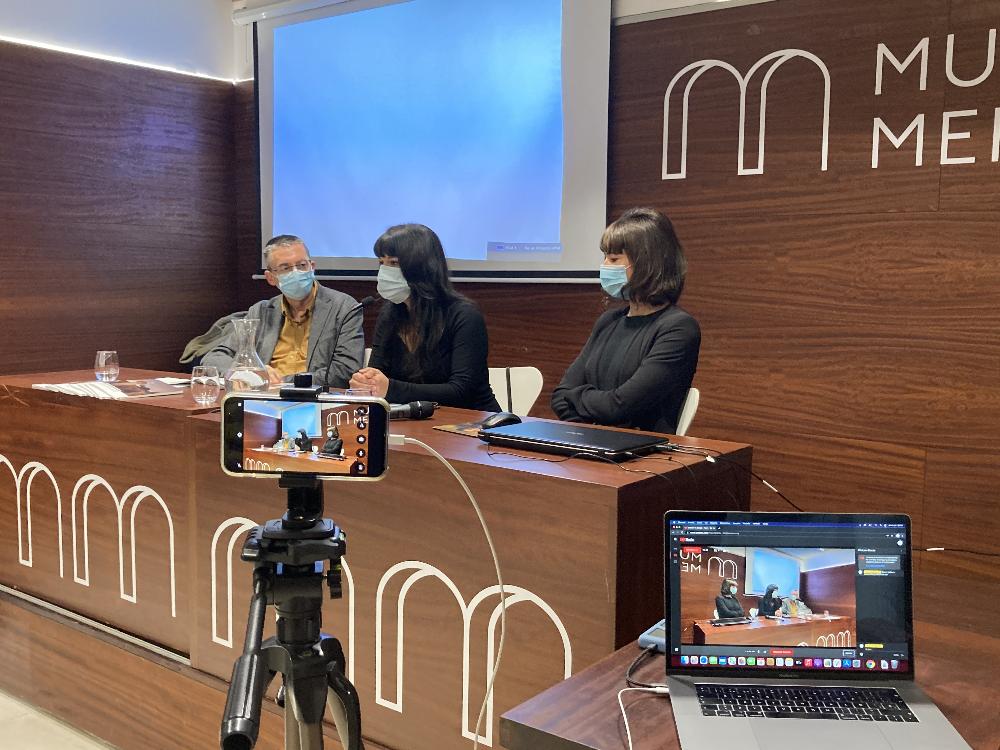 The book Torralba d'en Salort. Taula enclousures, the iron age sanctuaries of Menorca, the fifth monograph of the Sitjot collection, was presented on December 3rd at the Museu de Menorca with the participation of the conseller of Cultural Affairs, Miquel Àngel Maria, and the two authors, the archaeologists Cristina Bravo and Irene Riudavets. The edition includes an introduction by the archaeologist Antoni Ferrer. The Sitjot collection aims to disseminate the richness of Menorcan historical and archaeological heritage among a non-specialized public. With a marked informative character, but always respecting scientific rigor, these monographs incorporate illustrations and other visual resources to facilitate its comprehension. The book Torralba d'en Salort. Taula enclousures, the iron age sanctuaries of Menorca, the fifth monograph of the Sitjot collection, was presented on December 3rd at the Museu de Menorca with the participation of the conseller of Cultural Affairs, Miquel Àngel Maria, and the two authors, the archaeologists Cristina Bravo and Irene Riudavets. The edition includes an introduction by the archaeologist Antoni Ferrer. The Sitjot collection aims to disseminate the richness of Menorcan historical and archaeological heritage among a non-specialized public. With a marked informative character, but always respecting scientific rigor, these monographs incorporate illustrations and other visual resources to facilitate its comprehension.
During his speech, the conseller of Cultural Affairs highlighted the importance of this publication: "A monograph on the taula enclosures, unique in the world and one of the most characteristic manifestations of Menorcan Talayotic culture, was necessary." Miquel Àngel Maria remarked that the two authors are archaeologists and at the same time managers of the Torralba d'en Salort settlement with their company Nurarq: “Now more than ever, we see the need to diversify the Menorcan economy. One of way of doing so would be through the arts and the management of cultural heritage. A management model such as Nurarq’s helps to show that it is not only an important cultural activity, it is also an economic activity.” The fact that the two authors have been part of the excavation project of the taula de sa Cudia Cremada site and their research work in Torralba since 2015, gives them scientific authority to talk about these peculiar Talayotic enclosures.
The world of taula enclosures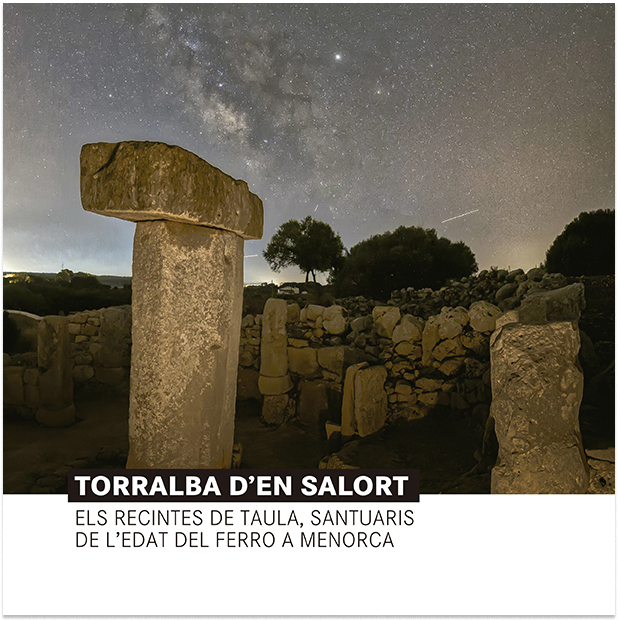
In Torralba d'en Salort. Taula enclousures, the iron age sanctuaries of Menorca, readers will be able to discover the world behind these unique monuments only found in Menorca. Today, a total of 31 taula enclosures are safely documented on the island. Built during the Iron Age, they were used until the end of the Roman conquest of Menorca, around 123 BC.
In addition to an introduction on the Prehistory of Menorca, in this book we embark on a journey through the different explorations done in taula enclosures, their architectural characteristics and the associated religious cults and rituals. Finally, the authors focus on the town of Torralba d'en Salort with a detailed description of its main points of interest and the multiple explorations done in the settlement, including those carried out since 2018 by the Associació d’Amics de Torralba, which have returned the original monumentality to the complex.
On a curios note about this edition, Cristina Bravo highlighted the photos of the town in the 70s contributed by Salvatore Trento, a North American archaeologist who participated in the excavations carried out by William Waldren and Manuel Fernández-Miranda. Trento, a student at that time, was the one who found the famous bronze ox from Torralba, exhibited today in the Museu de Menorca.
The other four titles in the Sitjot collection
The Sitjot collection started in 2018 with the monograph Torre d'en Galmés. Territorial control of prehistoric Menorca, an update of the book of the same title published by the Consell Insular de Menorca in 2007. This new edition, also edited by archaeologists Carmen Lara, Joaquim Pons, Gustau Juan and Antoni Ferrer, presents the findings of the excavations carried out up to 2018 in Torre d'en Galmés.
In Es Tudons naveta. Monuments and funeral rites during the final bronze age in Menorca, the author Simón Gornés collects the current knowledge about this type of buildings, exclusive to Menorca. Another of Sitjot's volumes is also dedicated to funeral rituals, but with a transversal vision that embraces the Prehistory and history of the island. This book, which is entitled May the earth rest lightly on you. A story of death in Menorca, is based on the exhibition that can currently be seen in Can Saura (Ciutadella). The authors are Elena Sintes and María José León.
The title Promontories and fortifications. Coastal settlements of the bronze age in Mallorca and Menorca is also related to an exhibition. In the book, the new data collected in the excavations of Cala Morell (Ciutadella) and sa Ferradura (Manacor, Mallorca) settlements are disclosed. Montserrat Anglada, María José León, Damià Ramis and Magdalena Salas coordinated the edition.
Where to find Sitjot publications
These monographs are published in three languages: Catalan, Spanish and English. The aim is to make them interesting both for Menorcans and for tourists who come to the island, especially for those who visit museums and archaeological sites. The monograph on Torralba d'en Salort will be available at the Museu de Menorca, in Can Saura and at the site's visitor information and control point. The publication of these books has the support of the Conselleria of the Presidency, Culture and Equality of the Government of the Balearic Islands.
|
The department of Cultural Affairs grants financial aid for the investigation and conservation of historical heritage
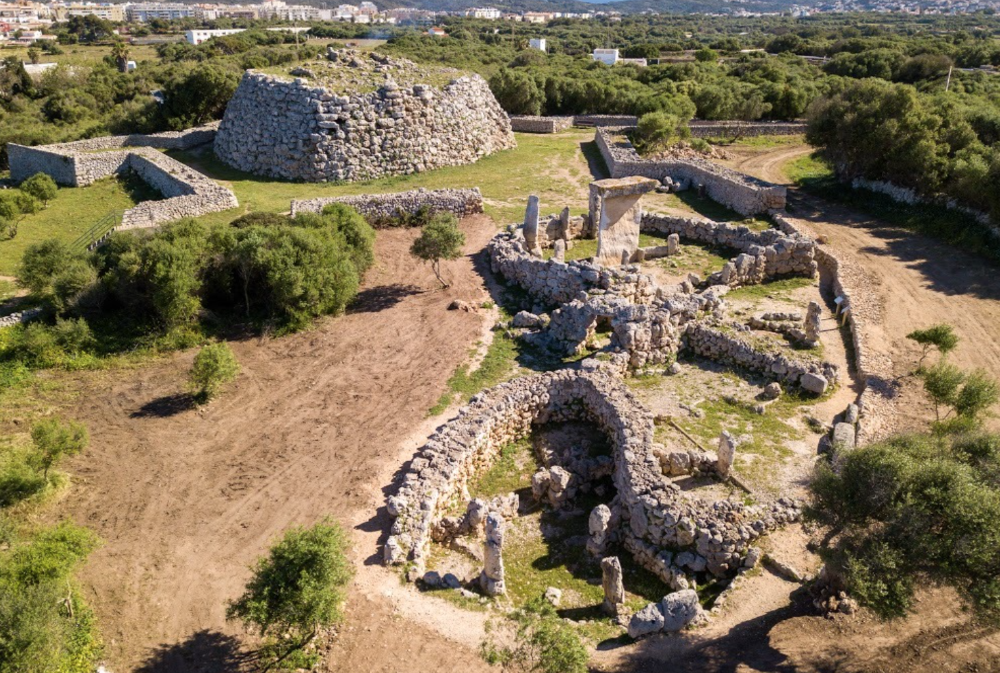 The department of Cultural Affairs of the Consell Insular de Menorca has granted its annual financial aid for research and conservation of historical heritage, distributed in five different segments: archaeological and paleontological interventions, historical research, restoration, scientific publications and social outreach. The total amount of aid granted this year is 200,000 euros. The department of Cultural Affairs of the Consell Insular de Menorca has granted its annual financial aid for research and conservation of historical heritage, distributed in five different segments: archaeological and paleontological interventions, historical research, restoration, scientific publications and social outreach. The total amount of aid granted this year is 200,000 euros.
This year, financial aid for archaeological and paleontological interventions amounts to 114,100 euros. The beneficiary projects are:
- Modular Project: archaeological intervention in Son Catlar (VI phase), granted to Universitat d'Alacant (€ 10,434.82).
- Excavation and restoration project of Torre d'en Galmés, campaign 2020, granted to Amics del Museu de Menorca (€ 12,991.70).
- Archaeological intervention in Torre d'en Galmés, 2020 campaign, granted to Boston University (€ 9,700).
- Archaeological intervention at the Cornia Nou site, granted to the Associació Arqueologia i Patrimoni (€ 11,091.31).
- Archaeological intervention at the Sant Agustí site, granted to the Associació Arqueologia i Patrimoni (€ 7,981.59).
- Archaeological intervention of the apsidal building of the archaeological site of sa Pleta de sa Cudia Cremada, granted to the Associació Sa Cudia Cremada Fieldschool (€ 9,933.81).
- Archaeological intervention in the outer area of ??the Torralba d'en Salort taula enclosure, granted to the Associació d’Amics de Torralba (€ 7,135.07).
- Intervention and restoration at the Coll de Cala Morell, 2020, granted to the Associació d'Amics des Museu d'Història de Manacor (€ 11,661.43).
- Sa Mitja Lluna archaeological project (Illa d'en Colom, Máo), granted to the University of the Balearic Islands (€ 8,430.78).
- Archaeological intervention and work camp in the central area of ??the Torre d'en Galmés site, granted to the Menorca Heritage Recovery association (€ 9,640.11).
- Underwater prospecting of the north coast of Menorca between the bay of Sanitja port and Cala Tirant, granted to the Associació Sanisera (€ 7,860.66).
- Excavation program for the 2020 campaign at the Roman site of Sanisera, granted to the Associació Sanisera (€ 7,238.72).
Financial aid for historical, archaeological and paleontological research
Aid destinated for the pourpose of historical, archaeological and paleontological research amounts to 25,000 euros. The approved proposals are:
- Electoral processes, political initiatives and achievements of the representatives of Menorca in democratic institutions (1977-2019), granted to Xavier Jiménez González, Catalina Bosch Cardona, Joan Josep Matas Pastor, Jordi González Vidal and Elisabeth Ripoll Gil (€ 5,000) .
- Cataloging, identification and elaboration of a monograph on historical educational materials collected in public and private archives on the island of Menorca, granted to Pere Alzina Seguí (€ 5,000).
- Cataloging of the historical bridges of Menorca, granted to Joan Pons Alzina (€ 5,000).
- Cataloging and systematization of the collection of judicial and criminal matters in the archives of the Museu Històric Militar de Menorca (Es Castell) as relates to the La Mola penitentiary, granted to Carlos de Salort Giménez (€ 5,000).
- Inventory, cataloging and digitization of Antoni Pons Melià’s private archive, granted to Miquel López Gual de Torrella (€ 5,000).
Scientific Publications
In the scientific publications section, the total amount of the grants awarded is 13,900 euros. The approved projects are:
- Article "The moorish habitat in Talayotic sites: domestic spaces from the 12th and 13th centuries in two examples: Torre d'en Galmés, Menorca and Almallutx, Mallorca", granted to Amalia Pérez-Juez Gil (€ 1,500).
- Article "Minorcan metallurgical production during the Naviform period (ca.1600-850 cal ANE). Contributions from the Son Mercer de Baix (Ferreries) and Cala Blanca (Ciutadella) workshops", granted to Pau Sureda Torres (€ 1,500 ).
- Article "Iconographic elements in Menorca during the second and first millennia cal BC: social and ideological aspects", granted to Antoni Ferrer Rotger (€ 1,500).
- Article "Menorca abans dels dinosaures: estudi dels vertebrats fòssils del Permià del jaciment de la Cala del Pilar (Menorca, Balearic Islands, Western Mediterranean). A new palaeoequatorial middle – late Permian tetrapod assemblage from Menorca (Balearic Islands, Western Mediterranean)" granted to the Institut Català de Paleontologia (€ 1,500).
- Monograph "45 years of physical-chemical research on burial limestone sites in Menorca and Mallorca 1975-2020", granted to Marcus Van Strydonck (€ 2,800).
- Monograph "Muralles de la Segona Edat del Ferro a les Illes Balears", granted to Antoni Puig Palerm (€ 5,100).
Financial aid for the restoration of historical heritage
The financial aid for the restoration of historical assets aims to contribute to the conservation of the island's heritage, the stopping of the deterioration that endanger it, promoting the restoration of assets and taking action for their conservation. The total amount is 40,000 euros. The subsidized projects are:
- Project to restore the roof representing Jupiter and Juno, granted to Ajuntament de Maó (€ 10,000).
- Second intervention in Pedrera dels Cotxes - Bretxa and Mirador dels Jardins, granted to the Fundació Líthica-Pedreres de S'Hostal (€ 7,500).
- Project Tors humà L.T.J. Auzoux, granted to the Associació d'Amics de l’Arxiu i Biblioteca Històrics de l’IES Joan Ramis i Ramis (€ 2,855.60).
- Restoration of the defense tower of the Illa de les Sargantanes, in Fornells (€ 10,000).
- Restoration of the A6 and A8 pilasters, granted to the Fundació de l’Hospital de l’Illa del Rei (€ 9,644.40).
Conferences and seminars
Finally, the organization and realization of conferences and/or seminars receives 7,000 euros. The approved projects are:
- XVI Conference on Local History and Heritage, of the Forum 3r Mil·lenni, granted to the Centre d’Estudis Locals d’Alaior (€ 2,000).
- Conference on heritage and memory about the war and the postwar period in Menorca. Activities: conferences, round tables and guided visits, granted to Miquel López Gual (€ 5,000).
|
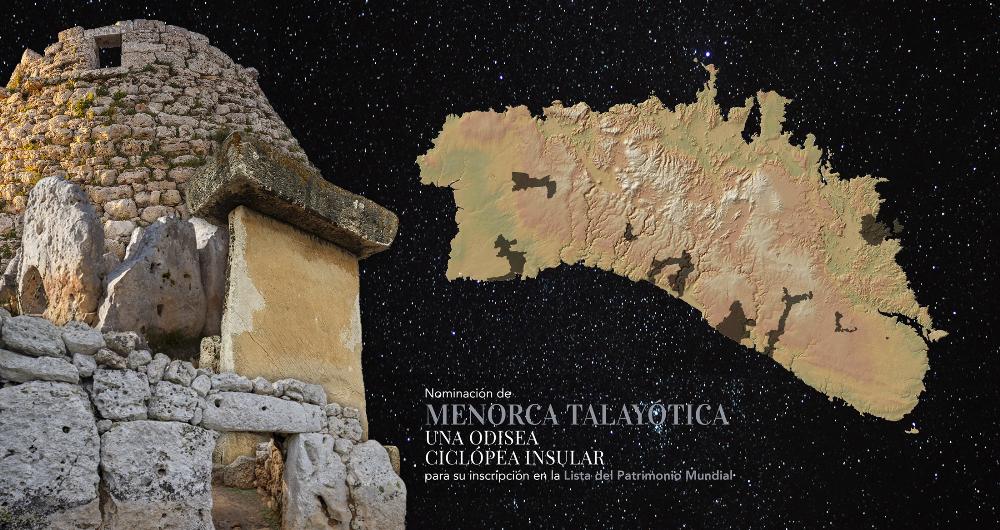
Talayotic Menorca, Spain’s official candidate as a World Heritage Site for 2022
¿¡[AQUI]¡¿Talayotic Menorca is now officially the Spanish candidate as a World Heritage Site in 2022. The nomination took place this morning on the last day of the 87th Meeting of the Historical Heritage Council, held online on the 19th and 20th of November.
The general director of Fine Arts, María Dolores Jiménez Blanco; the president of the Balearic Islands Government, Francina Armengol Socias; the president of the Consell Insular de Menorca (CIM), Susana Mora Humbert; and the conseller of Cultural Affairs, Miguel Ángel María Ballester, announced the official appointment at a press conference. The conseller of Cultural Affairs thanked everyone involved for their enthusiastic support of the candidacy: "from this moment on, it is no longer just a Menorcan proposal, but one from all the autonomous communities and the Government of Spain itself to represent us all at Unesco’s World Heritage Committee". The president of the CIM added that: ”this candidacy represents much more than a badge. It is a recognition of the work done so far in the preservation of our environment and the values of our culture and heritage, as well as a commitment to continue working along these lines.”
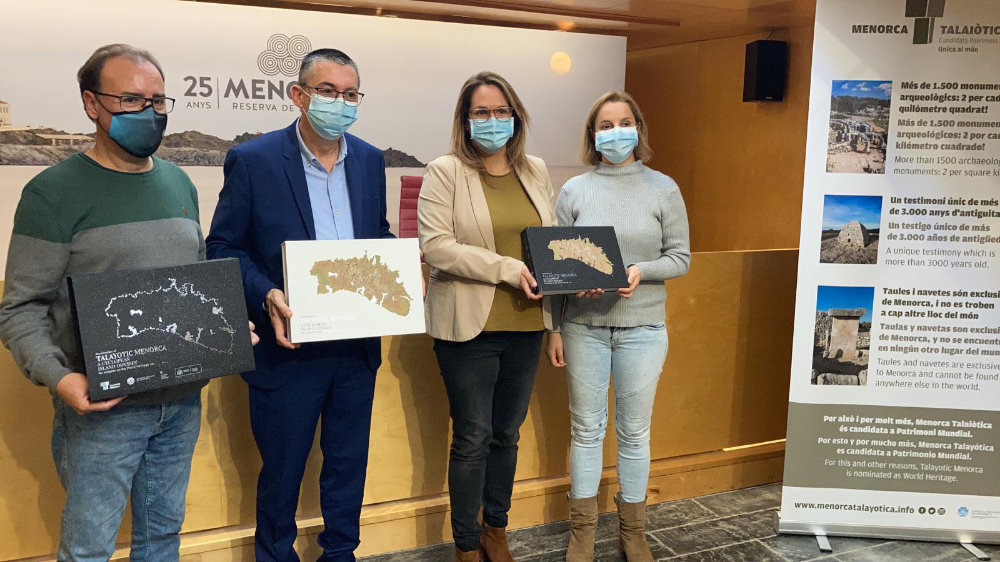 An insular cyclopean odyssey An insular cyclopean odyssey
Once the designation as an official candidate has been obtained, the next step is the presentation of the new dossier, which bears the motto "Talayotic Menorca, an insular cyclopean odyssey", at the Unesco World Heritage Center on February 1st. This organism, based in Paris, is in charge of applying the Unesco World Heritage Convention of 1972 and, therefore, updating the list of cultural properties of unique, universal and exceptional value. With a total of 48 sites, Spain is the third state with the most properties inscribed on the World Heritage List.
This new and exciting Talayotic Menorca project presents the odyssey of a unique island culture, trapped between the sky and the sea. Built around the integration and harmonious relationship of prehistoric monuments with the natural environment of the island, the new candidacy is divided into nine territorial areas or components, which include 280 sites from the prehistoric period. They represent 21% of the archaeological sites in Menorca and an area of 3,527 hectors (excluding the buffer zone). These components show the most outstanding vestiges from the irruption of the Cyclopean constructions (1600 BC) until the decline of this culture that, coincides with the beginning of Romanization around 123 BC.
Talayotic Menorca thus constitutes a unique expression of cyclopean architecture that’s integrated with the living landscape of the present, an exceptionally well-preserved testimony of the Talayotic culture. As the conseller of Cultural Affairs highlighted: "The exceptional universal value of our proposal is not as much based on the exceptionality of the monuments, although we do have some very unique examples not seen anywhere else in the world, but on the great singularity of a small mediterranean island that’s home to a living archaeological landscape. Three characteristics make it really special: a great density of prehistorical assets, their exceptional state of conservation and the coexistence between the assets and their landscape, associated with the lifestyle of the Menorcan people who have inhabited the island up to this date.”
The Historical Heritage Council
Spain is one of the 193 states that have ratified the 1972 Unesco World Heritage Convention to date. As such, one of its missions is to propose new properties from its territory to be inscribed on the World Heritage List. The Historical Heritage Council is the body in charge of making this selection at the state level, after receiving the different proposals from the autonomous communities. The Ministry of Culture and Sports intends to hold the next face-to-face meeting of this council in Menorca, as long as the public health situation allows it.
|
Talayotic Menorca at the XIV Meeting of World Heritage Managers
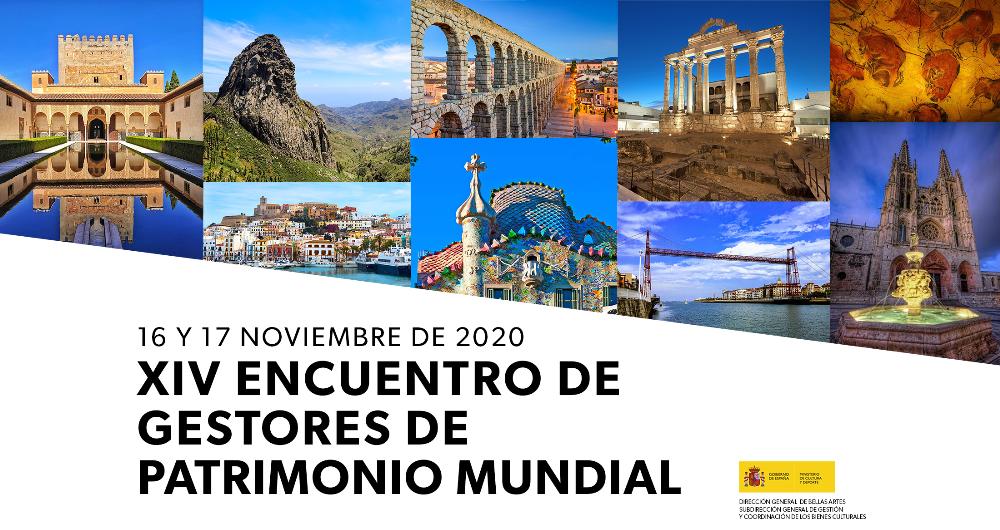 Talayotic Menorca has participated in the XIV Meeting of World Heritage Managers, an annual forum created in 2007 by the Ministry of Culture and Sports to analyze and debate initiatives and projects for the managing of World Heritage sites. Although Talayotic Menorca is not yet on the Unesco World Heritage List, our candidacy has been invited because of its relevance and projection. Talayotic Menorca has participated in the XIV Meeting of World Heritage Managers, an annual forum created in 2007 by the Ministry of Culture and Sports to analyze and debate initiatives and projects for the managing of World Heritage sites. Although Talayotic Menorca is not yet on the Unesco World Heritage List, our candidacy has been invited because of its relevance and projection.
The meeting, with the theme “World Heritage and its management during Covid-19”, was held online on November 16th and 17th. The General Director of Fine Arts, Maria Dolores Jiménez Blanco, and the Deputy Director of Management and Coordination of Cultural Assets, Pilar Barrero García, were in charge of the inauguration.
Joaquim Pons, as representative of the Consell Insular de Menorca (CIM) and coordinator of the Talayotic Menorca candidacy, and Montserrat Anglada, Museu de Menorca technician, intervened on November 17th with the presentation “Recommendations for heritage spaces in Menorca in times of Covid-19”. As a result of the health crisis created by Covid-19 and its possible impact on the island’s historical heritage, the Consell Insular has established guidelines in different areas (libraries, archives, museums and heritage sites) to comply with current regulations and assure that sanitary measures are respected.
The Historical Heritage Service of the CIM intervention was based on two aspects:
The creation of infographics adapted to each phase of the deconfiment period and its dissemination on social networks to inform about the guidelines when visiting archaeological sites. Later, the installation of posters with the generic norms of the “new normality” decree.
The document “Recommended initiatives for Minorcan archaeological excavations due to the Covid-19 health crisis,” elaborated with the Museu de Menorca. This document, although it’s not official protocol, establishes some guidelines so the investigative teams can carry out their work with guarantees. The proposed measures are related to health prevention, cleaning and disinfection of workstations, as well as personal protection guidelines for all participants in archaeological excavations.
Spain, third country with the most World Heritage sites
With a total of 48 sites inscribed on the Unesco World Heritage List, Spain is the third country with the most World Heritage sites. These annual meetings are the forum in Spain for administrations and institutions that manage World Heritage sites to find common solutions to he problems they encounter every day.
You can watch the complete presentation here.
|
Conference on the new candidacy of Talayotic Menorca in the context of XVI Jornadas de Patrimonio de Menorca
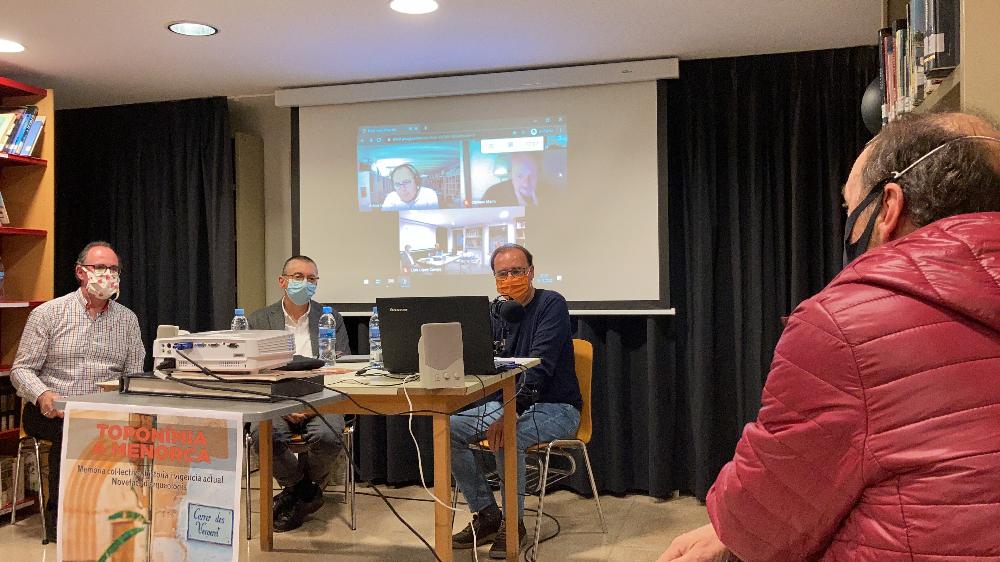 On November 10th, the Alaior Public Library hosted the “Talayotic Menorca: a cyclopean island odyssey” conference in which the substance of the new candidacy of Talayotic Menorca for World Heritage was revealed. Miquel Àngel Maria Ballester, conseller of Cultural Affairs; Cipriano Marín, the candidacy’s file coordinator; Antoni Nicolau, editor of the management plan; and Joaquim Pons, the candidacy’s technician, were in charge of this lively chat. On November 10th, the Alaior Public Library hosted the “Talayotic Menorca: a cyclopean island odyssey” conference in which the substance of the new candidacy of Talayotic Menorca for World Heritage was revealed. Miquel Àngel Maria Ballester, conseller of Cultural Affairs; Cipriano Marín, the candidacy’s file coordinator; Antoni Nicolau, editor of the management plan; and Joaquim Pons, the candidacy’s technician, were in charge of this lively chat.
Maria was the first speaker to intervene, emphasizing the creation of a narrative that links the monuments of Talayotic Menorca with the landscape that surrounds them: “This is a territory pampered by its population, where we can still perceive parts of the landscape as it was in prehistoric times. This adds a special uniqueness and an enormous value to our candidacy.” Cipriano Marín expressed the same sentiment: “Our story is about an island trapped between the sky and the sea during Prehistory, a territory that coexists harmoniously with these ancient vestiges. Menorca has a living monumental landscape, interconnected with the sky.”
The nine components of Talayotic Menorca
Marín described the new distribution of the candidacy in nine territorial areas or components that include the most outstanding vestiges of the island from the irruption of the Cyclopean constructions (1600 B.C.) until the decline of this culture, coinciding with the beginning of the Romanisation around 123 B.C. The diversity of the components illustrate the different ways in which our ancestors occupied and used the land, how they expressed their social and religious organisation and, consequently, the processes used to mould the landscape and its symbolic spaces.
Creation of the Talayotic Menorca Agency
Next, came Antoni Nicolau, editor of the management plan, who laid out the mechanisms provided in this plan to guarantee the maintenance and improvement of the components, the authenticity and integrity of Talayotic Menorca’s assets and their state of conservation, as well how to strengthen the project’s relationship with the community.
Lastly, Joaquim Pons presented the bases for the creation of the Talayotic Menorca Agency, whose main functions will be: to prepare proposals; promote research, conservation, dissemination, restoration and educating on the values of archaeological heritage; execute the management plan and promote social participation and cooperation. The conseller of Cultural Affairs added that the idea is to formally create this agency in 2021 and have it running by 2022.
If you missed the conference, you can find a complete video here.
|
The Becatalaiotica 2020 Grand Finale
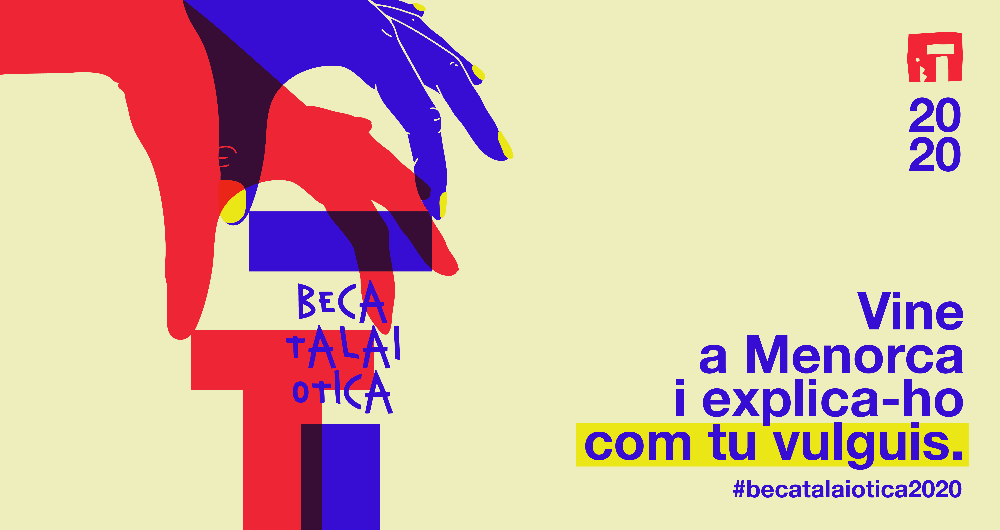 Becatalaiòtica 2020 is almost coming to an end! Through out the month of November and the beginning of December this cultural project, created by Associació Amics del Museu de Menorca, will showcase the proposals of the four remaining finalists. The goal has always been to shine a light on young emerging talent, vindicate the inspirational value of our landscapes and promote the candidacy of Menorca Talaiòtica as world heritage site among a wider audience. The first event was celebrated on October 25th. Becatalaiòtica 2020 is almost coming to an end! Through out the month of November and the beginning of December this cultural project, created by Associació Amics del Museu de Menorca, will showcase the proposals of the four remaining finalists. The goal has always been to shine a light on young emerging talent, vindicate the inspirational value of our landscapes and promote the candidacy of Menorca Talaiòtica as world heritage site among a wider audience. The first event was celebrated on October 25th.
The stage for Becatalaiòtica is set at the different archeological sites that comprise Talayotic Menorca, where the five finalists (youngsters between the ages of 16 and 25) showcase their projects. All fields of study and means of expression are valid, as long as scientific knowledge is respected and kept at the forefront of the proposal.
The assisting audience is a crucial part in valuing the content, originality and evocative power of each proposal. The winning proposal will be granted a 2.000 € scholarship.
Maite Mira (Alicante, 2000), a student of Economics and History, was the first finalist to present her project at So na Caçana last October 25th. “Menorca 206 ANE” is the title of her role playing game, where decisions are taken based on each player's intuition and knowledge of Menorca's past.
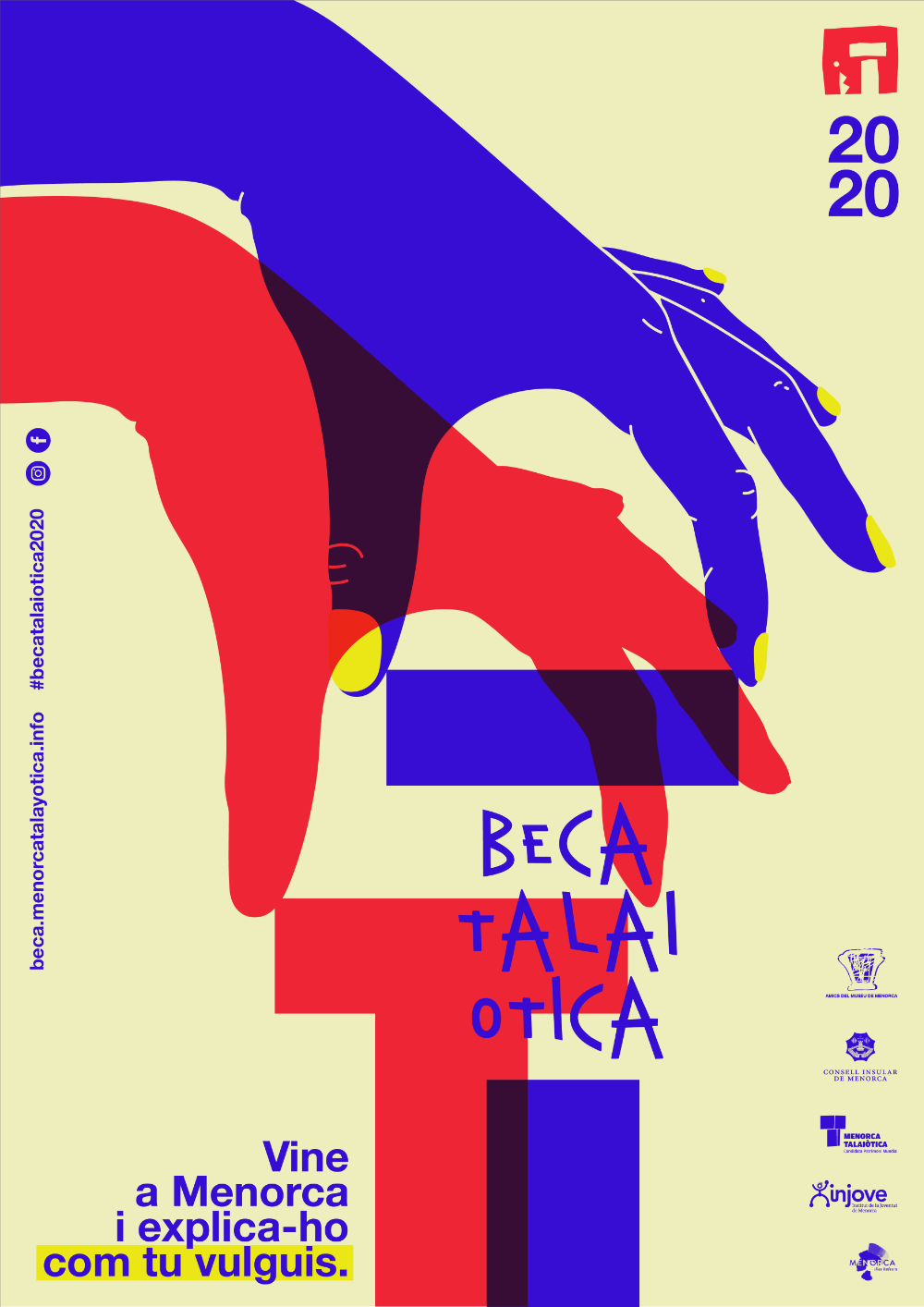 The upcoming events are: The upcoming events are:
- Sunday, November 15th at 10am in Trepucó
María González (Madrid, 1996), an Archeology student, will be showing “Pasado pisado”(“Trampled Past”), where she will speak of the greatest atrocities ever committed on world heritage with humor and irony.
- Saturday, November 21st at 7pm in the Museu de Menorca
Mateu Tur (Ibiza, 2000), a student of film culture and theatre in Barcelona, will present
"Un munt de pedres” (“A Pile of Rocks”) a theatrical, docu-fiction film showing a journey through Menorca's northern coast, friendship, beautiful things and passion for life.
- Sunday, November 29th at 10am in Talatí de Dalt
Juliá Rubio (Barcelona, 1998), a student of Archeology, will be showing “Els sentits a través del temps” (“The Senses Through Time”), a spectacle that, through a revisiting of minorcan folklore and the five senses, invites us to reflect on the evolution of an archeological settlement.
- Sunday December 6th at 10h in Torre d’en Galmés
Guillem Andreu (Menorca, 2000) a business administration student, will give us his insights, though a revision of history, on how he sees the current state of affairs of the island.
Entrance is free but seating is limited. To register please send an email to beca@menorcatalayotica.info or Call/WhatsApp 608 16 39 34.
|
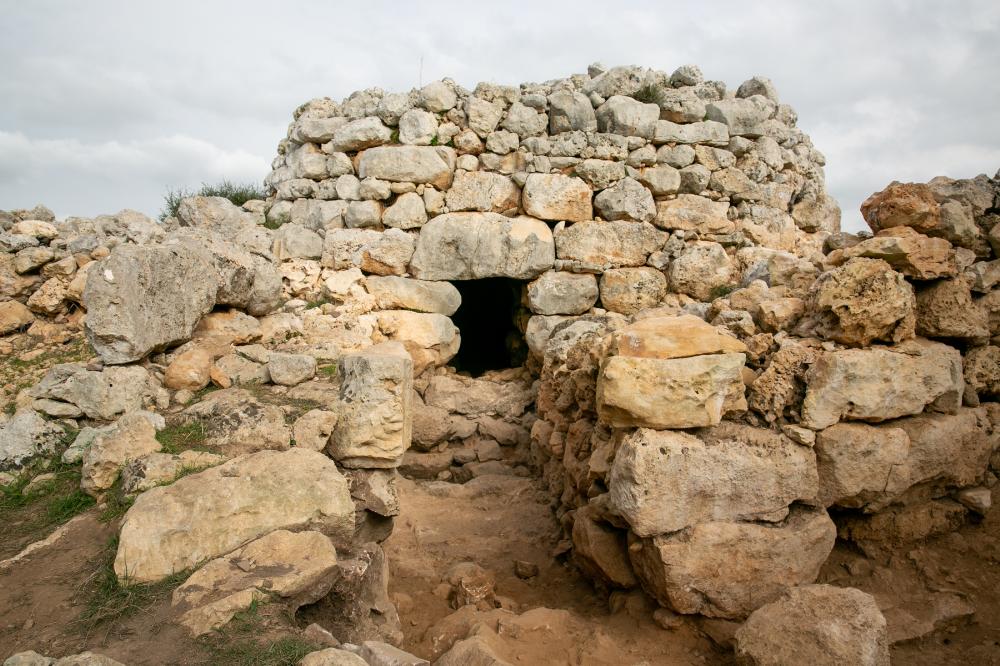
The Sant Agustí Vell Archaeological Project closes its fourth campaign of excavations
¿¡[AQUI]¡¿
The Sant Agustí Vell Archaeological Project closed its fourth campaign of excavations with the presentation of the latest advances on November 6th. This settlement is known for the uniqueness of one of its talayots, “el talaiot de ses bigues de mata” or the talayot of the wooden beams, which still shows its original wild olive wooden beams that are more than 3000 years old. These are the main results of this year’s campaign:
- The completion of excavations of the corridor that gives entrance to this emblematic construction. This corridor is now one meter deeper, bringing it down to the same level with the door.
- The excavation works in the front area of the building attached to the southern part of the same talayot. The main goal: to understand the relationship between these two constructions and their purpose.
- The discovery of pottery remains made by the Punics of Ibiza (5th to 2nd centuries B.C.) mixed with fragments of Talayotic pottery. This is the first testimony of the contact between the Talayotic and Phoenician cultures found at this site. In addition, the archaeologists have found seeds and remains of domestic fauna.
Damià Ramis and Ismael Moll, both of who oversee this project promoted by Associació Arqueologia i Patrimoni, explained that in the upcoming months the recovered remains will be studied to establish new interpretations of this settlement. Sant Agustí Vell is located in Component 4, formed by the Talayotic settlements of the southern ravine area of Menorca. Among the nine territorial areas or components that make up the new candidacy of Talayotic Menorca, this is the one with the highest number of archaeological sites.
|
Presentation of the new dossier of Talayotic Menorca to the Balearic Government
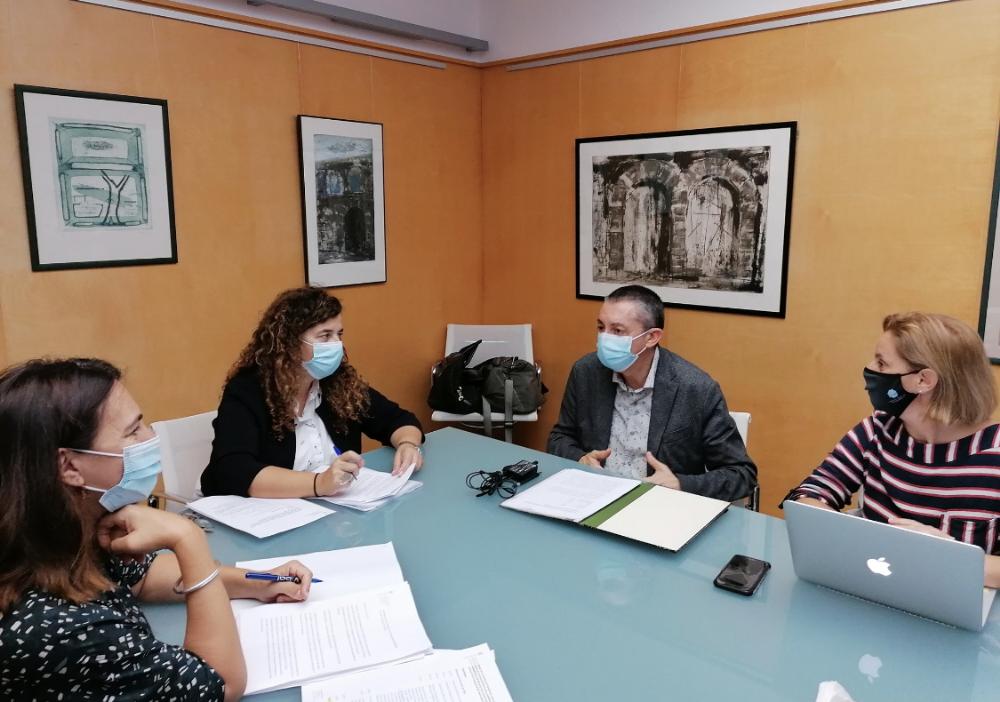 On Friday, October 23rd, we received a visit from the consellera of Cultural Affairs of the Balearic Government, Pilar Costa, to know first hand the substance of the new candidacy of Talayotic Menorca as a World Heritage Site. Alongside her was the delegate from the President’s Office for Cultural Affairs, Catalina Solivellas. On Friday, October 23rd, we received a visit from the consellera of Cultural Affairs of the Balearic Government, Pilar Costa, to know first hand the substance of the new candidacy of Talayotic Menorca as a World Heritage Site. Alongside her was the delegate from the President’s Office for Cultural Affairs, Catalina Solivellas.
The representatives of the Balearic Government were received by the conseller of Cultural Affairs of the Consell Insular de Menorca, Miquel Àngel Maria, and the island’s Director of Culture and Heritage, Raquel Marqués. During the meeting, the candidacy’s file coordinator, Cipriano Marín, described the new distribution of the candidacy in nine territorial areas or components that include the most outstanding vestiges of the island. These components illustrate the different ways in which our ancestors occupied and used the territory, how they expressed their social and religious organisation and, consequently, the processes used to mould the landscape and its symbolic spaces.
Afterwards, Antoni Nicolau, editor of the management plan, explained the mechanisms designed to guarantee the maintenance and improvement of the components, the authenticity and integrity of Talayotic Menorca’s assets and their state of conservation, as well how to strengthen the project’s relationship with the community.
Lastly, Joaquim Pons, the candidacy’s technician, presented the bases for the creation of the Talayotic Menorca Agency, whose main functions will be: to prepare proposals, promote research, conservation, dissemination, restoration and educating on the values ??of archaeological heritage, execute the management plan and promote social participation, among other things.
Pilar Costa reaffirmed her support of Talayotic Menorca and highlighted the involvement of the Balearic Government to make the candidacy happen.
|
Presentation of the new candidacy of Talayotic Menorca
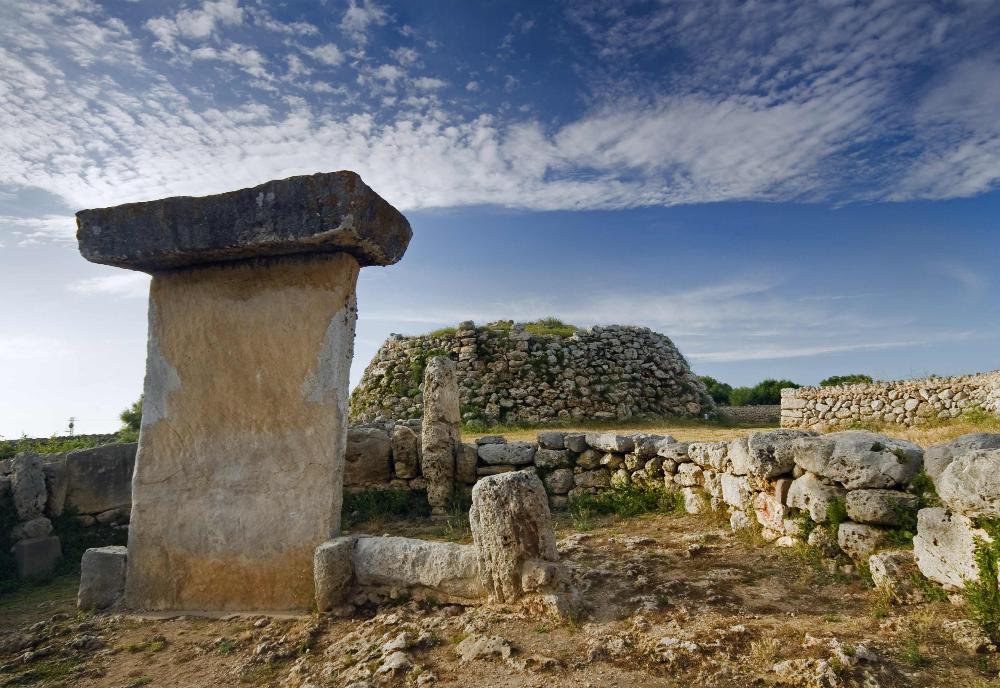 Our heritage is the legacy that we receive from the past, that we live in the present and that we must pass on to future generations. Any heritage considered to be of "exceptional universal value" is what UNESCO wants to formally recognize. We believe that the Talaiotic Menorca candidacy meets these exceptional values and attributes, and aspires to be included in the World Heritage list in 2022. Our heritage is the legacy that we receive from the past, that we live in the present and that we must pass on to future generations. Any heritage considered to be of "exceptional universal value" is what UNESCO wants to formally recognize. We believe that the Talaiotic Menorca candidacy meets these exceptional values and attributes, and aspires to be included in the World Heritage list in 2022.
On October 5th, the supervisor and editor of the new candidacy file, Cipriano Marín, presented the dossier in front of the governmental team of the Consell Insular de Menorca and the opposition councilors. This new document articulates Talayotic Menorca into nine territorial areas (or components) that show the most excellent remains of the island's prehistorical era, covering the period between the irruption of the Cyclopean constructions (1600 BC) until the dawn of this culture around the 1st century BC. The territorial diversity of the components clearly illustrate the different ways the land was used and occupied, the embodiment of social and religious schemes and, consequently, the processes of modeling the island's landscape and its symbolic spaces through time.
The conseller of Cultural Affairs, Miquel Àngel Maria, and Sergio Ortega, representative of the Ministry of Culture, also took part in the event. Antoni Nicolau, editor of the Managing Plan, also presented the key points of the document. The plan establishes the mechanisms to guarantee the maintenance and improvement of the Outstanding Universal Value (OUV), the authenticity and integrity of Talayotic Menorca assets and their state of conservation, as well as initiatives to strengthen the relationship with the community.
Lastly, Joaquim Pons, archaeologist and technician from the Department of Culture of Cime, announced the creation of the Talayotic Menorca Agency. This organism will have the task of preparing proposals, promoting research, conservation, dissemination, restoration and education on the values of archaeological heritage; of putting the Management Plan into practice; promoting social participation and cooperation, among other things.
At the event’s conclusion, the permanent commission of Talayotic Menorca met to review various aspects of the file and seal its final version.
On Tuesday, October 6th, the second presentation of the candidacy for the advisory commission of Talayotic Menorca will take place, in an event that will be held in the multipurpose hall of Es Mercadal.
|
The Balearic Government collaborates with the Talayotic Menorca candidacy
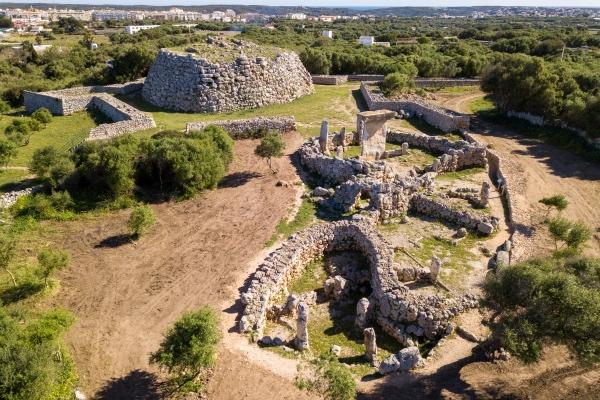 The Balearic Islands Government Council has approved, at the request of the Conselleria of the Presidency, Culture and Equality, a direct subsidy for the Consell Insular de Menorca (CIM) to cover publicity expenses, explorations on the archaeological sites that are part of the candidacy and consultancies for the Talayotic Menorca project. The Balearic Islands Government Council has approved, at the request of the Conselleria of the Presidency, Culture and Equality, a direct subsidy for the Consell Insular de Menorca (CIM) to cover publicity expenses, explorations on the archaeological sites that are part of the candidacy and consultancies for the Talayotic Menorca project.
This amount is already foreseen in the autonomous community’s budget for 2020 and implies continuing to financially support the candidacy, as has already been done during the last two years.
The declaration of the Talayotic culture of Menorca as World Heritage by UNESCO will mean giving added value to the historical heritage of the island and the Balearic Islands as a whole. Therefore, it will also help to ensure their protection in a more effective way.
The CIM began the procedures to declare the island's Talayotic culture as a World Heritage Site in 2010. In 2013 signed an agreement with the Balearic Islands Government to collaborate in this project. Four years later, the International Council of Monuments and Sites (ICOMOS) recommended amending the file, which led the CIM to carry out a research program and commission a series of specific works to complete the official file of the candidacy.
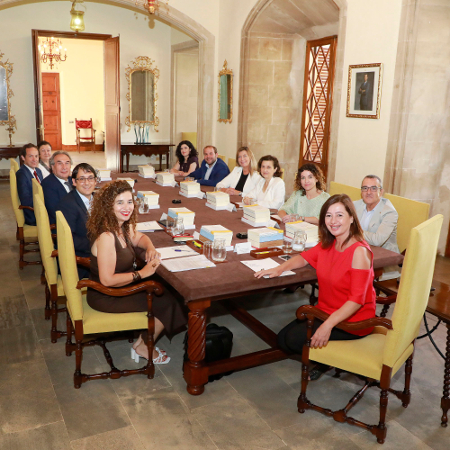
|
Sa Mitja Lluna, a prehistoric copper mine from the Bronze Age in Illa d'en Colom
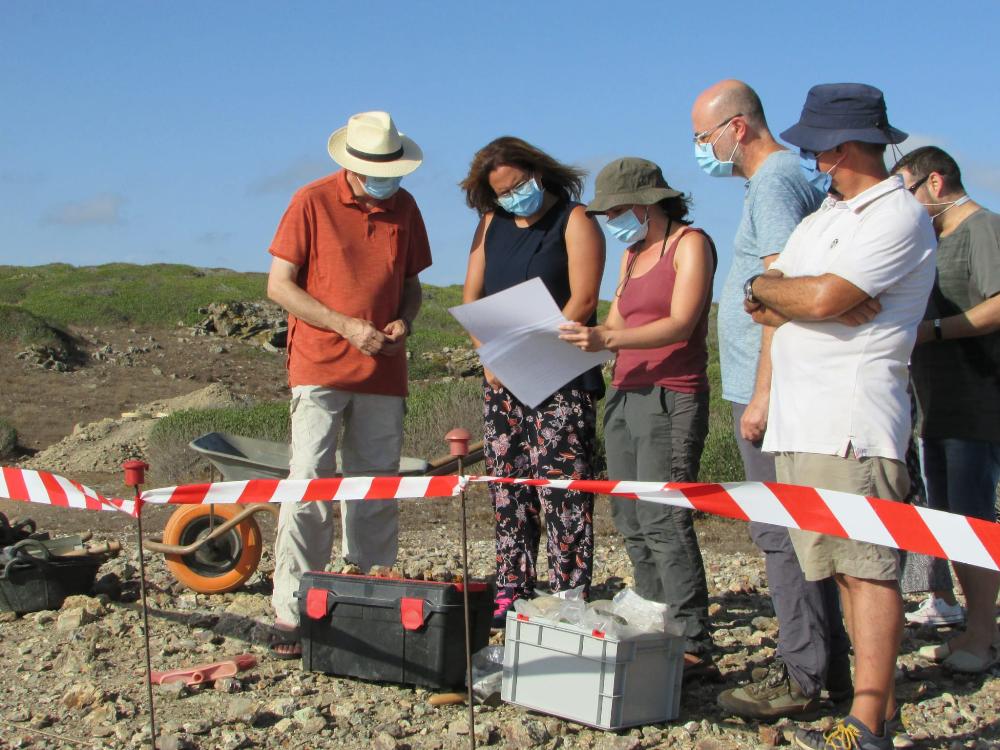 Sa Mitja Lluna is a very special site for its uniqueness, its good state of conservation and the location. It is the only copper mine with evidence of prehistoric exploitation that has been documented in the Balearic Islands. In addition, it is placed in a privileged location, such as Illa d’en Colom, within the Natural Park of s'Albufera des Grau (Maó). Sa Mitja Lluna is a very special site for its uniqueness, its good state of conservation and the location. It is the only copper mine with evidence of prehistoric exploitation that has been documented in the Balearic Islands. In addition, it is placed in a privileged location, such as Illa d’en Colom, within the Natural Park of s'Albufera des Grau (Maó).
The excavations at sa Mitja Lluna represent the culmination of the job done in the years prior to its discovery. The ArqueoUIB team (University of the Balearic Islands) had been looking for evidence of prehistoric exploitation of copper minerals both in Mallorca and Menorca since 2007. In 2010, the prehistoric site was finally located.
Later, in 2012 and 2014, a team with members of the University of the Balearic Islands (UIB) and the University of Seville (US) carried out two small archaeological explorations that confirmed that this mine dated back to the Bronze Age, and recovered a significant amount of archaeological material. The study of these materials, as well as the physico-chemical analysis of the minerals that can be found there, have made it possible to collect important information about the resourcing strategies of prehistoric communities, not only in Menorca but also in the other islands of the archipelago.
In 2019 began a new stage in the investigations of this site with a long-term project that will allow to deepen awareness about the technological capabilities for mining during those times, as well as acquiring more information about the people who carried out these activities and used this resource .
Furthermore, these investigations take on special relevance within the framework of the Talayotic Menorca candidacy. The candidacy has undergone some modifications at the request of ICOMOS, to add more value to the landscape associated with the archaeological sites. In this case, we have the Torreta de Tramuntana close by, which was already in the previous candidacy file. But now, with the new approach, more than 500 hectares around the Torreta de Tramuntana, Illa d'en Colom and the channel of water that separates Illa d'en Colom from land have been added to the candidacy.
Working in the mine
Sa Mitja Lluna is a mining site located under the open sky, on the edge of a cliff shaped like a semicircle, an orography that gives its name ( Mitja Lluna=half moon). Normally, the area where minerals are found is exploited constantly over the years, each time with new techniques that erase previous works. In this aspect, sa Mitja Lluna is an exceptional site since there are no subsequent exploitations that have damaged the prehistoric evidence. We could say that the mine remained intact, just as the last prehistoric miners left it.
.jpeg) The excavations on one of the debris has revealed the existence of a trench carved out on the rock, probably following a copper vein that should have run more or less parallel to the cliff in a NS direction. Before the archaeological explorations, this trench was invisible and its presence could not be detected since it was completely filled with rubble. This debris grows beyond the natural level of the rock, forming a small elevation and making this works invisible. The excavations on one of the debris has revealed the existence of a trench carved out on the rock, probably following a copper vein that should have run more or less parallel to the cliff in a NS direction. Before the archaeological explorations, this trench was invisible and its presence could not be detected since it was completely filled with rubble. This debris grows beyond the natural level of the rock, forming a small elevation and making this works invisible.
Likewise, it should be noted that the intervened area seems to be only a small part of the trench. The trench’s depth in the area intervened on the 2019 campaign cannot yet be confirmed, since all the stratigraphy has not been exhausted. It seems that the mining works enter irregularly in the westernmost part of the subsoil, while in the eastern part of the trench (the part closest to the cliff), the level of the bedrock is higher. The existence of galleries or wells is not ruled out.
Among the mining debris we find quartz rocks with primary (chalcopyrite) and secondary copper minerals (malachite, azurite, etc.) Regarding the archaeological materials, the explorations have made it possible to document ceramic remains next to the documented work fronts, although this ceramic always appears very fragmented, making very difficult to identify forms. On the other hand, pastes and degreasers allow us to attribute a relative chronology that places us in the Bronze Age, this being consistent with the results of radiocarbon dating.
For now, the presence of ceramics has not been linked to processes related to mineral treatment, so we must probably relate it to the consumption of food and beverages at the mine, since fauna remains have also been found.
On the other hand, lithic mining tools are numerous, both on the surface and among the material of the dumps. Various types of tools have been found, defining probable uses from their characteristics and approximate weight calculation in their initial state. Most of these tools are made from pebbles selected for their weight, slightly oval shape, and grain size. We think that these pebbles were brought there from one of Illa d'en Colom’s coves where this type of stones abound: the one known as Punta des Macs, about 750 m from Sa Mitja Luna.
There are some types of tools that have, to a greater or lesser extent, notches and specific modifications and that are poorly defined by their handle.
There are other larger tools, stones that can weigh about 16 kg. These tools do not show modifications to put a handle on them, but they do show signs of use or breaks in the proximal and distal areas, caused by their use as hammers. These great tools were most likely used with two hands, using their weight to hit and break the rock. Some of them also have pecking marks in their ventral area due to having been used as a mortar or anvil.
Small hammers that could have been the complement of these “anvils" have also been recovered. These are small pebbles that have marks on one end from having been used for chipping. The size of these tools is suitable for direct use with one hand and without a handle. Based on this type of tools, the hypothesis about a phase of crushing and mineral selection at the foot of the mine was suggested.
For now, no stable settlements or permanent constructions of this chronology have been found in Illa d'en Colom, but it is not ruled out that the miners made seasonal camps. This is very difficult to identify, since these camps would basically consist of rest areas with simple and ephemeral infrastructures, often archaeologically invisible on the surface.
What did the exploitation of this Menorcan mine mean for the prehistoric communities of the Balearic Islands?
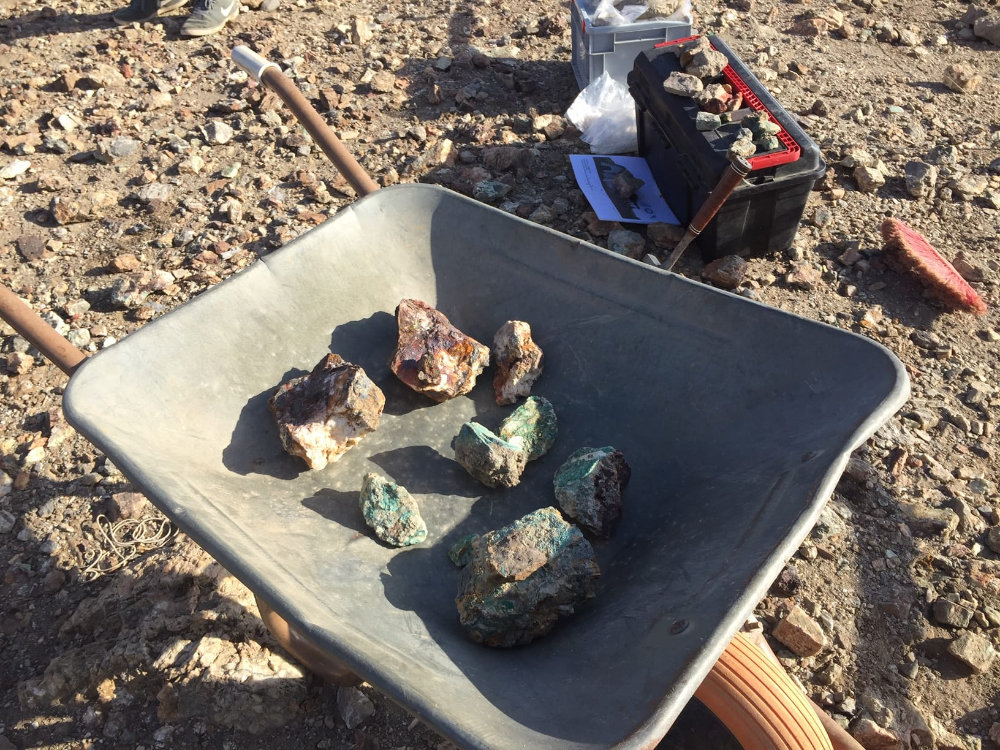 The study of this mine, alongside with several analyticals of other minerals from the islands, suggests that the minerals from Menorca could have had an important role in the supply of raw materials for the other islands. It is important to bear in mind that, from the studies carried out so far, Sa Mitja Lluna mine was not a large-scale operation (comparing with the Roman mines or those of the industrial era, for example), so it is likely that there were other mines operating in Menorca during the Bronze Age. The study of this mine, alongside with several analyticals of other minerals from the islands, suggests that the minerals from Menorca could have had an important role in the supply of raw materials for the other islands. It is important to bear in mind that, from the studies carried out so far, Sa Mitja Lluna mine was not a large-scale operation (comparing with the Roman mines or those of the industrial era, for example), so it is likely that there were other mines operating in Menorca during the Bronze Age.
Thanks to the investigations in Sa Mitja Lluna, other studies carried out on metal archaeological pieces show the possible arrival of copper from Menorca in Mallorca, and even in the Pitiusas. Within the same island of Menorca, metals possibly made with native copper have been detected, such as in the Cova des Pas necropolis or in the Cova des Càrritx.
On the other hand, although we are talking about islands, it must be said that Menorca and the rest of the archipelago are not isolated territories. It is clear that all the islands maintained an intense connection, but they were also connected with other places in the Mediterranean. The analytics on metals from the Bronze Age also show us the arrival of raw materials from different places such as the south of the peninsula, Catalonia, the south of France and Sardinia.
|
The Department of Culture announces the availability of grants for research, conservation and dissemination of Historical Heritage
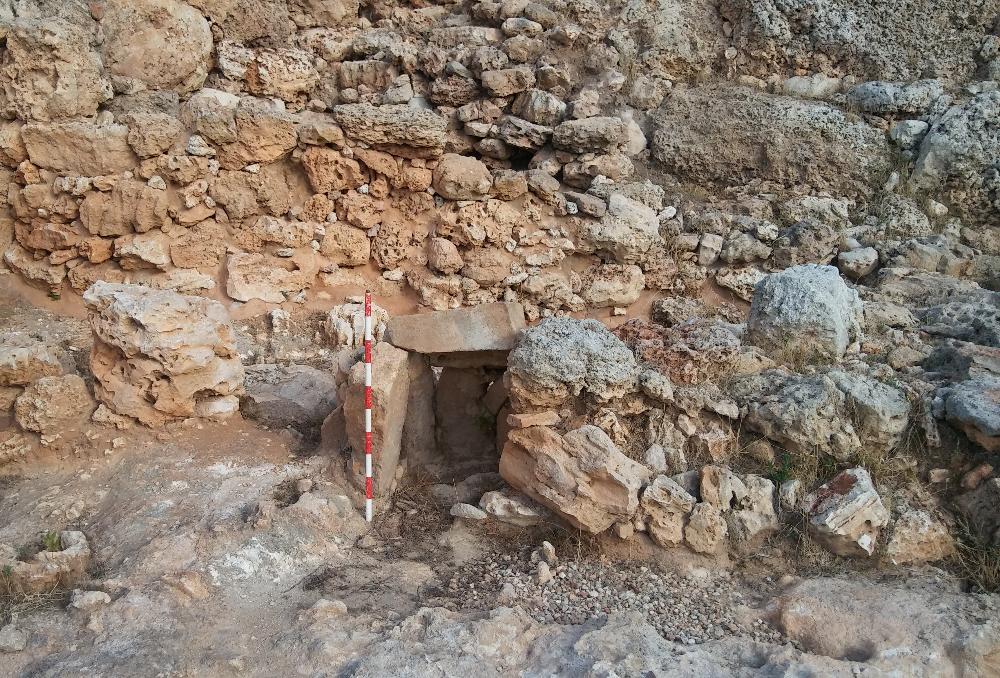 The Official Gazette of the Balearic Islands published the approval of the rules that shall regulate the granting of aid regarding actions intended to increase knowledge, protection and dissemination of Menorcan historical heritage for the 2020 edition. The Official Gazette of the Balearic Islands published the approval of the rules that shall regulate the granting of aid regarding actions intended to increase knowledge, protection and dissemination of Menorcan historical heritage for the 2020 edition.
Along such lines, the Department of Culture has allocated a total investment of 200,000 euros through a public grant notice that establishes five lines of aid:
- Restoration of historical heritage properties
- Archaeological and paleontological interventions
- Historical, archaeological and paleontological research
- Scientific publications
- Conferences and activities for dissemination
The period for presentation of applications shall be open for 30 calendar days from the day after the publication of the Official Gazette of the Balearic Islands or from the end of the State of Alarm.
The Strategic Plan for Grants of the General Budget of the island institution for the 2020 financial year establishes the following General Objectives set forth by the Department of Culture, Youth and Sport within the scope of historical heritage:
- To obtain the declaration by UNESCO of Menorca’s Talayotic Culture as World Heritage
- To protect and safeguard historical heritage
- To preserve and restore historical heritage to pass it on to future generations in improved conditions
- To increase current existing knowledge regarding historical heritage through the development of research projects
- To disseminate existing knowledge regarding historical heritage through scientific publications and educational conferences
And the specific goals established include: to provide economic support to those activities that foster improved and increased knowledge and protection regarding historical heritage through archaeological and paleontological interventions, historical research, restoration of properties, dissemination and debate, while also helping to complete the dossier for the candidacy of Talayotic Menorca as World Heritage.
Bear in mind that the period established for the execution of these actions shall be multi-year (2020-2021) and the period for justification of grants awarded for the aid scheme for actions of improvement of knowledge, protection and dissemination of Menorca’s historical heritage for 2019 concludes on 29th June, 2020.
The maximum amounts per application and edition shall be:
Line 1. Restoration: 10,000 euros
Line 2. Intervention: 14,000 euros
Line 3. Research: as many as five grants shall be awarded for a maximum amount of 5,000 euros each.
Line 4. Publications: 6,000 euros for monographic publications or collections of articles and 1,500 euros for articles in scientific publications.
Line 5. Conferences and activities of dissemination: 5,000 euros (a maximum of four grants shall be awarded).
For more information, please consult the following link:
http://www.cime.es/GesServeis/Gestion.aspx?IDGESTION=990100879
|
The Department of Culture releases the video “Talayots for Human Rights”
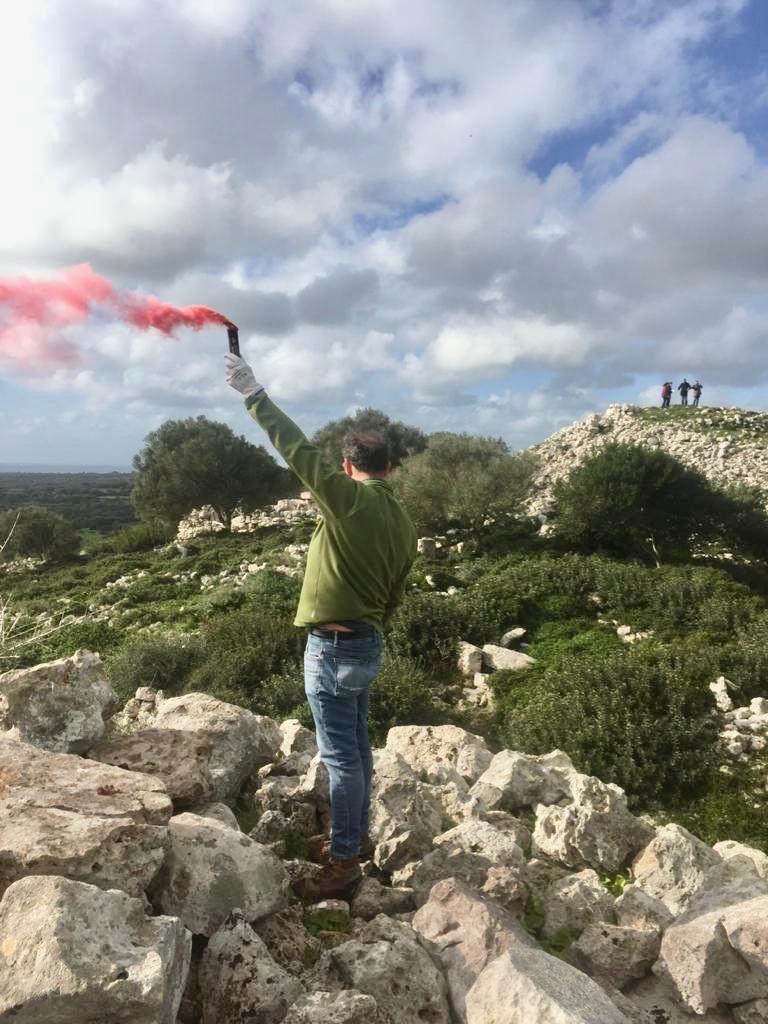
On the 11th of January 2020, the Consell Insular de Menorca island government, in cooperation with the island’s city halls and other local entities, showed support for the initiative “Historic watchtowers and talayots of the Mediterranean. A hymn to Human Rights” with the lighting of fire-signals at 28 talayots. This action came to fruition thanks to the coordination and collaboration of the Friends of the Museum of Menorca Association.
The Department of Culture has released this summary video of what was a dual-purpose experience. On one hand, it was meant to raise awareness regarding the dramatic situation that many individuals around the Mediterranean are suffering, having no choice but to emigrate for survival. This act also reproduced what may have been the means of communication between Talayotic settlements during prehistoric times, in a period when the circulation of people around different areas of the Mediterranean was quite normal.
This audio-visual piece, produced by the Menorca Film Festival, has been made available through the various institutional networks of Talayotic Menorca and the Menorca Island of Culture agenda, as well as through the channels of communication of the Menorca Film Festival. The video is available in three languages: Catalan, Spanish and English, and the original music is by the Menorcan musician Anna Ferrer.
The Minister of Culture, Education, Youth and Sports of Menorca, Miquel Àngel Maria, would like to express his appreciation to all those associations, entities and volunteers around the island who have taken part in this initiative.
Also significant is the fact that this lighting of fire-signals was carried out simultaneously around other sites in the Mediterranean: Mallorca, Ibiza, Formentera, Chios (Greece) and several locations in Morocco, Tunisia and Lebanon.
|
The magazine of the University of Conservation and Restoration of Catalonia praises the methodology used in the restoration of the Naveta des Tudons
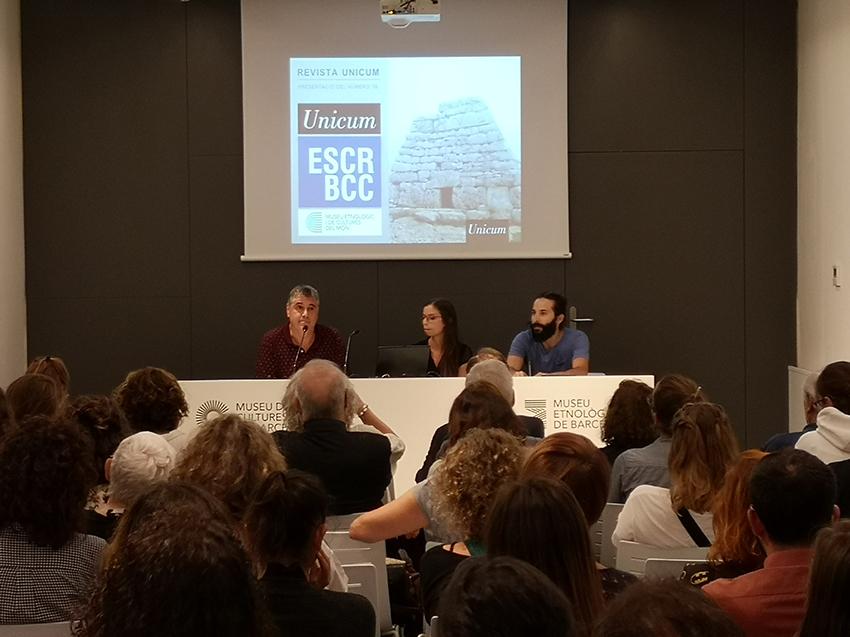
The magazine of the University of Conservation and Restoration of Artefacts of Catalonia praises the methodology used in the restoration of the Naveta des Tudons. The cover story of the Unicom magazine is dedicated exclusively to the island’s most emblematic monument, with an article that details the management of the vandalistic attack that occurred in March of 2018.
Titled “The use of gel buffer solutions for the removal of vandalistic graffiti on the Naveta des Tudons”, the article showcases the importance of transforming adversity into a socially salutary lesson, highlighting how this situation became a unique opportunity to improve upon restoration techniques of this type of damage to stone and rock.
In its June issue, the magazine focuses on the work of the Menorcans Francesc Isbert, Lina Torres and Cecília Ligero, who carried out the restoration work on site with the technical support of the conservator-restorer selected by the Heritage Services Department of the Consell Insular (Island Council) to run preliminary tests under the coordination and supervision of Pere Rovira, a specialist from the Centre for the Restoration of Artefacts of Catalonia. It is relevant that the involvement of the Menorcan team in this work allowed them to acquire training that would normally not be available.
The article details how the selected cleaning system was a method perfectly adapted to the extreme difficulty of eliminating spray paint graffiti from a highly porous material like calcareous stone.
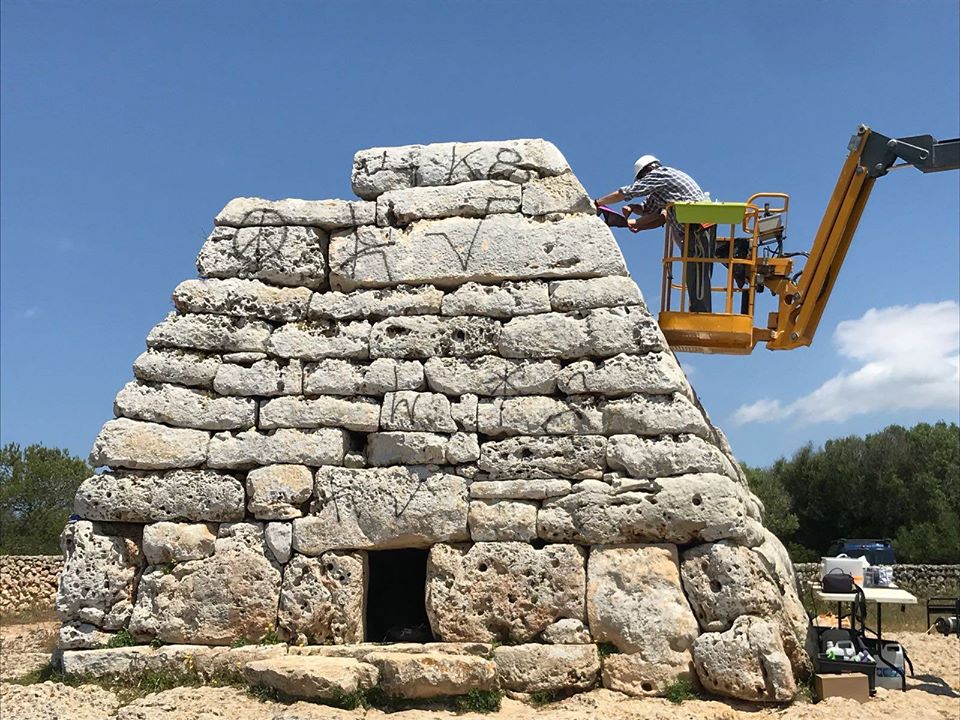 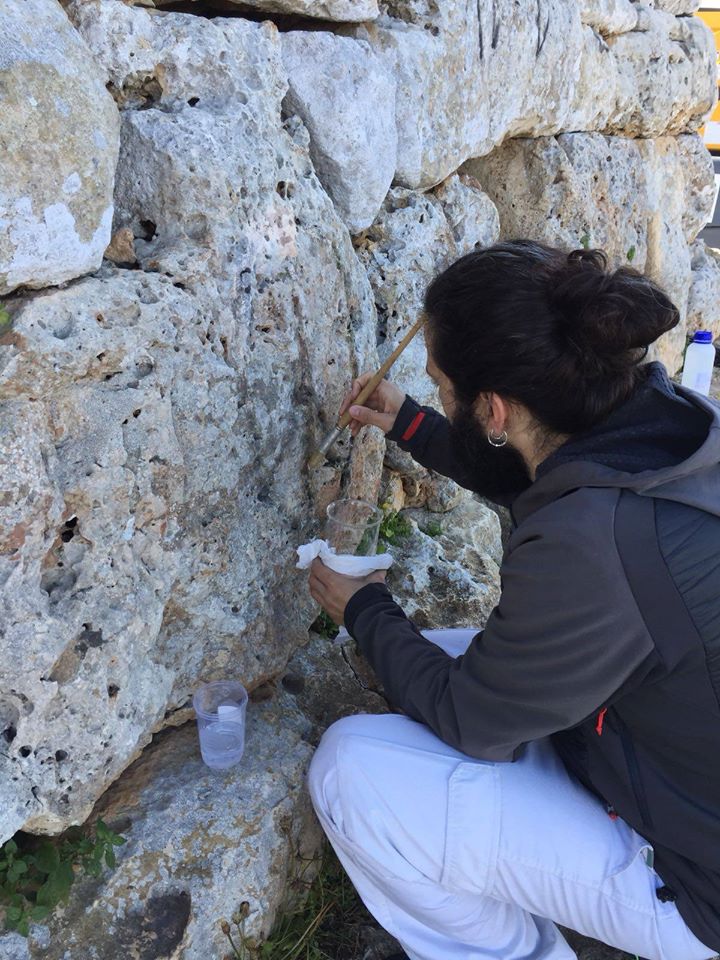
With this technique, not only were the graffiti removed, but the typical reabsorption of paint, an extremely common complication during such processes, was also avoided. The selected aqueous solution is associated with the known techniques related to the “safer working conditions” restoration standard and the “green movement”, which have been promoted for some time now. “Because the action of solvents was insufficient, a buffer solution with chelating gel was able to capture the metallic ions present in the paint”, was the article’s conclusion.
Worth mentioning is the fact that during the cleaning process the monument was open to the public and admission was free of charge, although visitors were required to remain behind a fence set up around the perimeter for safety purposes.
|
The Consell Insular shall take part in the European Heritage Days with a programme of activities under the slogan “Art and Leisure”
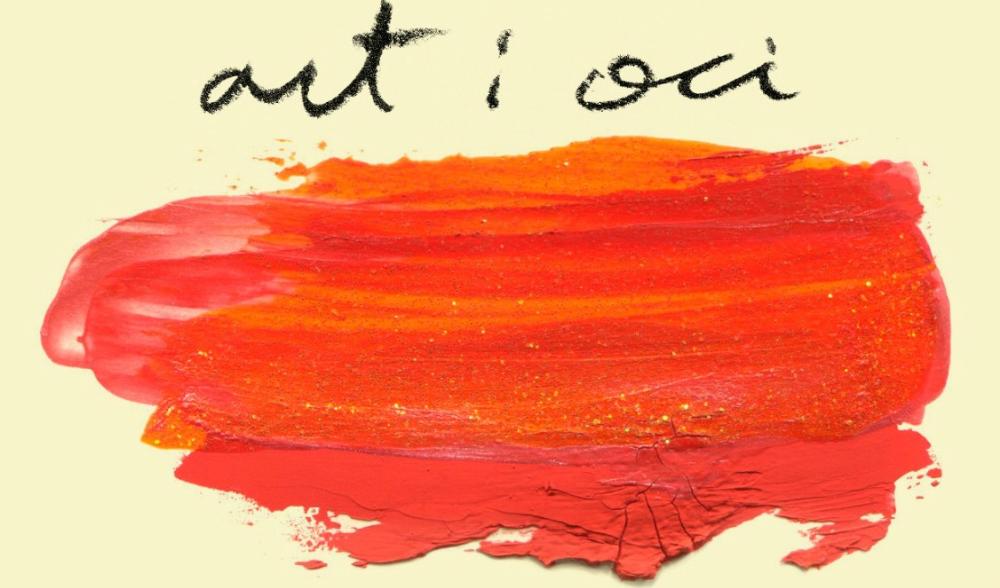 The Consell Insular (Island government), through its Historical Heritage Services Department, shall once again be taking part in the European Heritage Days, considered the most widely celebrated event for European cultural heritage with the highest level of participation in its field. The Consell Insular (Island government), through its Historical Heritage Services Department, shall once again be taking part in the European Heritage Days, considered the most widely celebrated event for European cultural heritage with the highest level of participation in its field.
Every autumn since 1999, the Council of Europe, in collaboration with the European Union, has organised seminars for the awareness of European cultural heritage. This year, the participating countries shall be invited to take park, under the theme “Art and Leisure”, in describing to the general public the leisure activities related to their heritage and the options for its enjoyment. This is certainly a broad topic that involves a multitude of cultural sectors.
The programme of this year’s European Days includes guided tours, open-door seminars and other additional services regarding monuments, sites, places of interest and other locations like museums, in hopes of promoting free access to the general public to the properties and values that make up the cultural heritage of Europe as a whole.
The activities organised by the Heritage Services Department for the month of October are the following:
“The Universe of the Gods” (theatrical visit)
Saturday the 12th of October, at 11:00 am.
Museum of Menorca
Description: Guided tour of the exhibition hall dedicated to the Talayotic world, including an introduction to the deities of this culture, followed by a theatrical activity in the Museum’s cloister.
Observations: Activity intended for children.
“Storytelling with History” (tales and folklore)
Saturday the 12th of October, at 12:00 pm
Municipal Museum of Ciutadella de Menorca
Description: Activity performed in the building’s courtyard. Theatrical narration in the first person on the experiences of a monologist from Roman times (performed by the actress Natàlia Bravo).
Observations: Activity intended for children.
“Circus + Heritage” (circus performance)
Saturday the 19th of October, at 11:30 am.
Talayotic settlement of Trepucó
Description: “New circus” performance that, through stage language, will address the symbolism between the past and the present (performed by the theatrical group ACIRKAOS).
Observations: Activity intended for a general audience.
"Videogames and Heritage: Can history be learned through gaming?” (Conference)
Thursday the 24th of October, at 7:30 pm.
Municipal Museum of Ciutadella de Menorca
Description: Conference that will discuss videogames and the possibility of learning through these applications (given by the archaeologist Bruno Parés).
Observations: Activity intended for a general audience.
“Theatrical Visit to the Museum of Menorca” (Guided theatrical visit)
Saturday the 26th of October, at 11:00 am.
Museum of Menorca
Description: Theatrical visit to the exhibition halls of the Museum of Menorca; a staged journey through the island’s history through the institution’s permanent collection (performed by the theatre group Teatre de Xoc).
Observations: Activity intended for a general audience.
“May the Earth Rest Lightly on You: A Story of Death in Menorca” (Guided tour)
Thursday the 31st of October, at 7:30 pm.
Municipal Museum of Ciutadella de Menorca
Description: Guided tour given by the curator of the exhibition “May the Earth Rest Lightly on You: A Story of Death in Menorca”, in celebration of the first anniversary of the inauguration of the Municipal Museum’s new headquarters in the Saura-Miret building (given by the archaeologist Elena Sintes).
Observations: Activity intended for a general audience. Space is limited (Prior registration required at museu@ajciutadella.org).
|
Presentation of the restoration project of the hypostyle hall known as “Galliner de Madona” (Lady farmer’s Henhouse) (Es Migjorn Gran)
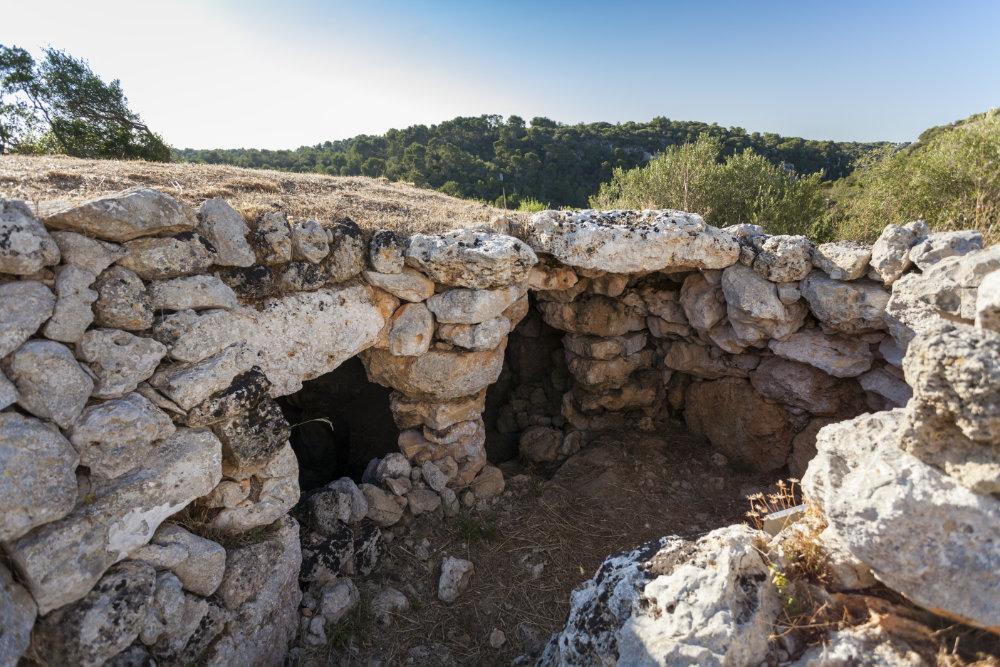
The prehistoric monument known as the hypostyle hall of “Galliner de Madona” or of Binigaus Nou is classified under the “hypostyle hall” typology, also defined by other authors as a “covered enclosure”. It is an isolated structure with a straight façade whose original entrance is currently sealed off. Inside, we find 5 freestanding columns and 9 pilasters attached to the walls, which support the ceiling of large stone slabs.
Neither the precise purpose nor the exact chronology of this building are fully understood, as it has not yet been subjected to archaeological intervention. The unique nature of “Galliner de Madona” stems first from its extraordinary monumentality, as well as from the references made to it in pioneering publications on Menorcan archaeology from the 19th century. The structure is found just at the edge of the cliff of a branch of the Binigaus ravine, such that its monumental nature it further enhanced by the spectacular essence of its surroundings.
The monument is located on private property, although visitation is possible through prior contact with the owner to organise the date and time of your visit.
Although the building remains intact, virtually in its entirety, it has been significantly altered by the slow but constant filtration of water on the internal pillars and columns, breaking up and fragmenting the different structural elements of the roof, hence resulting in uneven wear to the stone that has led to structural instability. The alterations caused by water do not only affect the columns and pillars. During the rainy season, puddles gather and damage the lower walls. This water collects in certain areas and penetrates the walls via capillary action.
Vegetation is another of the deteriorating elements affecting the wall. The roots of a number of different plants penetrate the rock and cause irreversible collapses. This occurs both near the surface, caused by smaller plants, as well by the more aggressive activity of bushes and shrubs.
So as to avoid the collapse of the building, the Consell Insular opted to set a restoration and consolidation project into motion that would include an implementation budget and arrange the subsequent construction to be carried out. Several estimates were requested, with a definitive project draft awarded to the team made up of Oscar Paradís (architect), Carolina Moreno (restorer) and Damià Ramis (archaeologist), with a total budget of 6,400 Euros plus VAT.
Within the framework of this project, already formally drafted, a three dimensional topographic survey of the building has been carried out. This shall allow the team to operate while ensuring the preservation of the exact location of each of the original elements, for those situations in which they require removal and subsequent repositioning.
The goals of this project include:
• Stabilisation of the roof.
• Waterproofing the roof.
• Removal of the modern sandstone wall, found at the rear of the property.
• Clearing of all vegetation.
• Cleaning of biological remains from the internal walls.
• Repositioning of wedges between the stones to ensure the internal stability of walls and columns.
• Restoration of the monument’s ancient entrance.
• Installation of bars to prevent access to the interior.
The team agreed upon and planned interventions for the consolidation and restoration of the monument as follows:
-
Shore up the interior of the hypostyle hall.
-
Reposition the two stone roof slabs found in the toppled section at the rear of the hall.
-
Mechanically reattach the fractured pieces through a system of corrugated stainless-steel bars attached with epoxy resins (two internal slabs and the upper tambour of one of the columns).
-
Remove the non-original elements that do not serve a structural purpose like dry stone walls installed as interior divisions.
-
Restore the original entrance, currently sealed off, through the removal of dry stone wall, while recovering and reinstalling the intermediate slabs.
-
Waterproof the roof via the installation of an impermeable layer integrated into the roof’s existing layer of soil.
-
Reposition wedges between the stones of the interior.
-
Selectively remove the mounds of stones present in collapsed areas.
-
Implement protective measures at the monument’s entrance through the installation of a wild olive wood gate, creating a physical barrier integrated into the rural landscape as part of the monument.
In addition to the primary goals related to restoration, the intervention may also provide data with respect to the monument’s chronology and function.
These interventions will have an approximate cost of 63,250 Euros plus VAT, and shall hence be put out to tender.
|
Increased visitation to Menorca's historical heritage
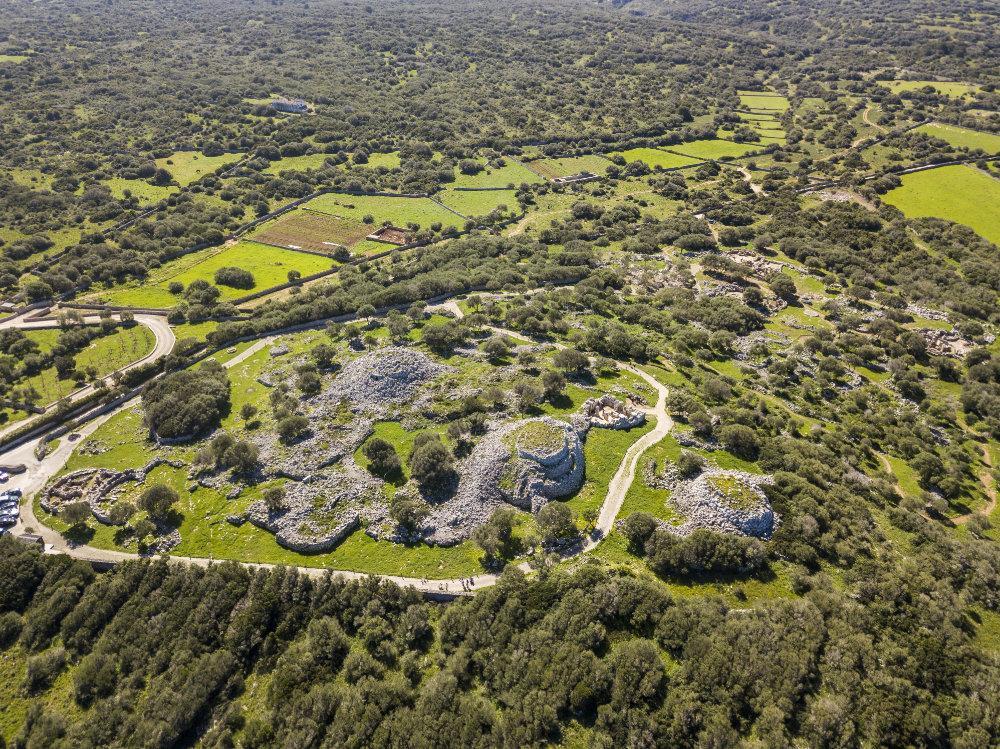
Data regarding the number of visitors to heritage sites managed by the Foundation for Tourist Development in Menorca (which includes data from Torre d’en Galmés, Naveta des Tudons, Fort Marlborough and Torre de Fornells) show a positive trend over recent years.
This behaviour is directly related to the more notable projection of Talayotic Menorca (educational activities regarding the World Heritage candidature and promotion off the island have both increased), with investments that have been progressively injected to the different facilities so as to improve the visitor’s experience and ultimately increase the number of tourists.
Upon review of the overall number of visitors accounted for at these locations over the last five years, a growth trend can be clearly observed, with 54,702 visitors in 2014 and 84,670 in 2018, an increase of approximately 55%. To this group of monuments, we must also add the Museum of Menorca, which is also managed by the Island Council of Menorca.
The Talayotic settlement of Torre d’en Galmés: The monument with the greatest increase in attendance, from 16,114 in 2017 to 21,198 in 2018. The trend over the last five years has been of notable increases, considering in 2014 the site received 8,987 visitors, resulting in a positive difference of 200%. The inauguration of the interpretation and Menorcan prehistory centre has been determinant toward this evolution.
Naveta des Tudons: 2018 saw a decrease with respect to the prior year, which can be attributed to two specific circumstances. First, the construction work on the section of the motorway between Ciutadella and Ferreries inevitably resulted in the decreased visibility of the entrance to the monument; and second, the act of vandalism suffered by the monument in March of last year, which required further delays in opening to the public. Hence, while the number of visitors in 2017 was 44,449, in 2018 this number decreased to 33,708. This decrease breaks what was a clearly increasing trend recorded since 2014, further defending the interpretation that it was due to the abovementioned factors.
Museum of Menorca: Although between 2014 and 2018 visitation to the Museum of Menorca remained rather stable, with only small yearly fluctuations, it is worth mentioning that the 20,331 visitors from the year 2018 correspond only to the second half of the year, as the museum reopened its doors in July upon completion of a comprehensive renovation of the exhibition facilities. Therefore, after reopening and in just 6 months time, the Museum welcomed a number of visitors that it normally receives in an entire year.
Quite relevant is the fact that between 2011 and 2014, the percentage of Menorcan visitors to the Museum oscillated between 2% and 7%, while in 2018 islanders made up 42% of the total. This growth is a result of the invested efforts to attract the local population. In this sense, the fundamental idea was that the Museum should be a space where Menorcans, and not only visitors, can discover their own past and better understand their heritage. With this objective achieved, efforts will be made to maintain this level of local support while promoting tourist visitation.
*Note: The Torre d’en Galmés settlement and the Naveta des Tudons are open to the public year round, although it is only during the months of the high tourist season that visitation numbers are actually monitored. The detailed figures should therefore, in both cases, be increased so as to include those visitors who come to the sites during the low season.
No data is available for the Talayotic site of Trepucó in Maó because it offers open and free access, and hence attendance figures are not collected.
|
Announcement of grants for the research, conservation and dissemination of Historical Heritage from the Department of Culture and Education of the Island Council of Menorca.
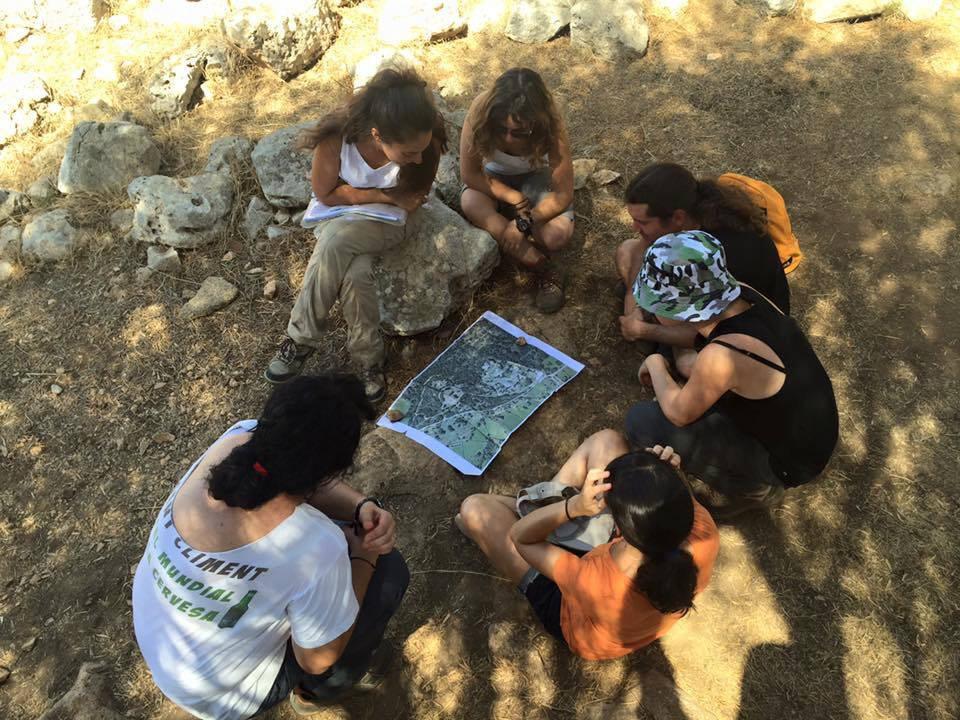
The Consell Insular de Menorca (Island Government) has published an official announcement for grants for research, conservation and dissemination of historical heritage for the year 2019, for a grand total of €200,000. This figure represents a €10,000 increase with respect to 2018.
Along the lines of what was initiated last year for management optimisation, one sole announcement shall be made for all five different areas: archaeological and paleontological excavations, historical research, restoration of historical heritage properties, the development of publications and the execution of activities to further awareness.
The category of grants for the restoration of Historical Heritage properties consists of a total budget of €40,000. It aims to contribute to the conservation of the island’s historical heritage, eliminating perilous processes of deterioration, fostering the restoration of properties and promoting steps toward conservation, as well as collaborating with and providing support for both entities and private individuals who take part in activities involving Menorca’s historical heritage.
The maximum grant per application is of €10,000, and the factors taken into account for the evaluation of the different projects consider whether the property is of public ownership and the assurance that it can be enjoyed by as many visitors as possible. Similarly, grants can also be requested for privately owned properties, although in this case the Council will only finance up to 75% of the total cost of the intervention.
The category of grants for the execution of historical, artistic, architectural, archaeological, paleontological, historical-industrial, anthropological and ethnological research that contribute to the further understanding of the island’s past shall have a total budget of €25,000, that shall be divided into five grants of €5,000 each.
Although the research topics can be chosen freely, preference shall be given to those proposals that correspond with the priority categories of action:
- Creation of monographs and cataloguing of historical heritage properties or of private collections.
- Historical documentary or archive studies on the medieval, modern or contemporary periods.
- Studies and projects that contribute to the completion of the scientific memoires for any archaeological excavations that are not part of active excavations.
- Studies and projects that contribute to the improved management or dissemination of properties that make up this heritage, in any of the aforementioned areas (master plan for archaeological sites or educational projects).
The category of grants for the execution of archaeological and paleontological interventions has a total budget of €105,000, which represents a €10,000 increase with respect to last year. The maximum amount that can be requested per project is of €14,000. The objective of these grants is to provide economic support for archaeological and paleontological interventions for sites found in Menorca, both for fieldwork as well as for laboratory work.
Also included this year for the second time is a category of grants for the creation of publications that disseminate information regarding the results of scientific research on historical heritage, offering a total of €15,000, with a maximum requested sum of €1,500 for articles and €6,000 for books.
Another category that was initiated last year and that will also be announced for the second time this year provides support for awareness activities like conferences and seminars. Its total budget is of €15,000, with a maximum available sum per activity of €5,000.
The application period shall be open for 30 calendar days from the date of the publishing of the announcement in the Official Bulletin of the Balearic Islands.
|
Implementation of the Museum of Menorca’s new external storage space
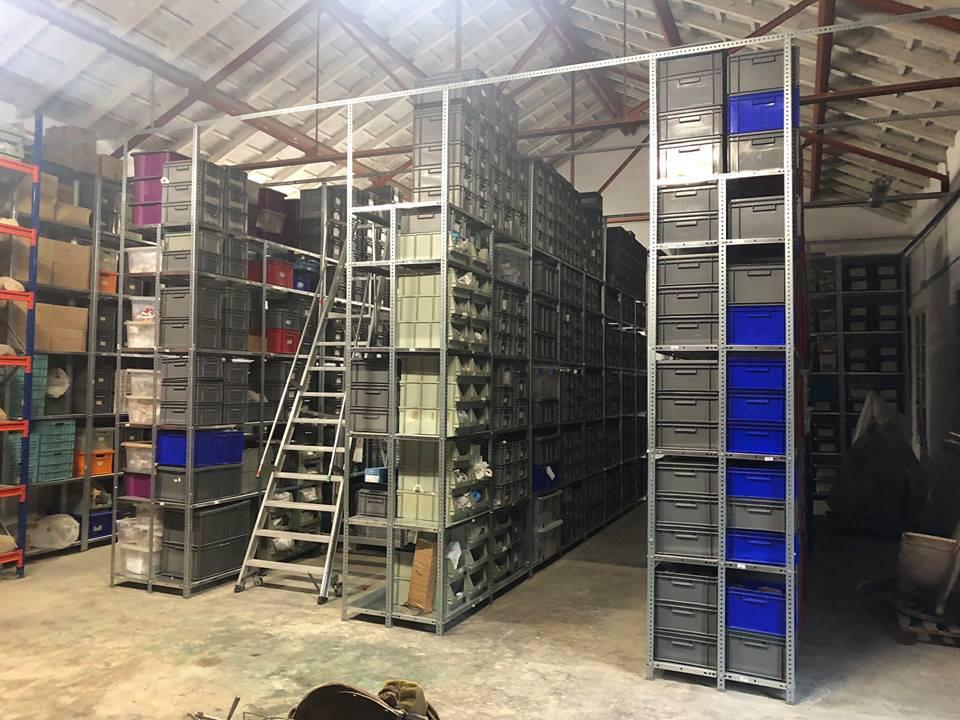
The Museum of Menorca’s collection, made of up over 250,000 pieces, has a new storage area for many of its different objects. Due to the increasing size of the collection, resulting primarily from archaeological excavations being carried out on the island every year, the Island Council of Menorca and the Museum of Menorca have established a new repository. This new space, located in a warehouse owned by the Island Council, will help to relieve the overabundance of pieces found in the storage area of on the Museum’s premises.
The new storage space has a total of 203 m² and is divided into two rooms; one strictly for storage and the other used for researchers to carry out tasks of internal conservation. Each room has its own entrance from the exterior to allow work to be carried out independently in each of the two areas.
The storage area has been equipped with low and medium load shelving that stretches 390 linear metres. The stored materials include: stone and ceramic objects of archaeological origins, malacological pieces and the collection of tools and machinery from the old Catisa factory, which constitutes a significant sample of industrial heritage. For each of these cases, despite requiring adequate temperature and humidity levels for proper conservation, the materials involved allow for a wider range than other materials, like organic materials, which shall remain in storage in the museum building.
This new space has been equipped with the necessary systems to guarantee optimal conservation of the materials. Both fire and antitheft alarms have been installed to protect the collection from external intrusion, while a preventative conservation plan has been implemented that controls climatic parameters and biological infestations. The space is hence equipped with the necessary elements to ensure the monitoring of these conditions: dehumidifiers and data loggers.
Menorca now has newly added equipment that ensures the conservation and protection of a substantial part of its historical heritage.
|
Inauguration of the exhibition, Urban Archaeology: 20 years of neighbours, machinery and builders
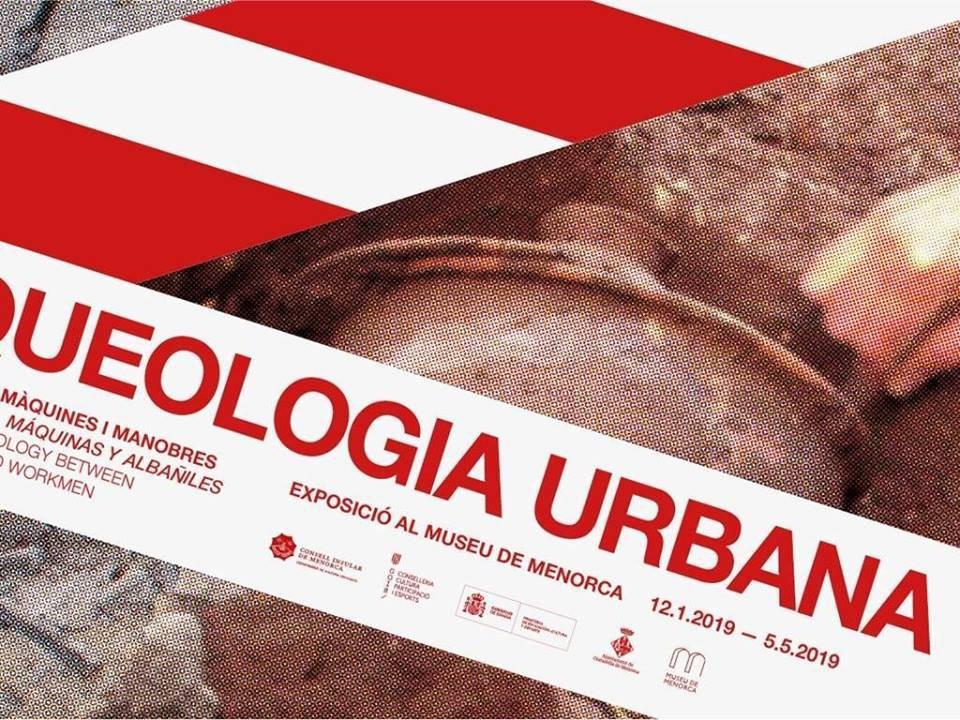
Under the title Urban Archaeology: 20 years of neighbours, machinery and builders, this exhibition is a showcase for the most interesting archaeological materials that have been unearthed by preventative excavations over the last two decades. Visitors shall also discover some of the new data gathered through these actions that shed light upon our past.
Preventative interventions are those carried out as a result of public or private construction works that may affect an archaeological site. Through this exhibition, visitors will also discover the workings of this type of intervention, which in the Balearic Islands became regularised with the implementation of the Historical Heritage Act of 1998 and the regulations on archaeological and paleontological interventions in the Balearic Islands, from the year 2000. These regulatory frameworks became invaluable tools for the protection of archaeological heritage, resulting in a considerable increase in the number of archaeological interventions associated with public and private construction projects. This in turn led to the collection of substantial historical data that otherwise would have been permanently lost.
Most often in Menorca, the historical data obtained through these findings is not made readily available to the general population. Given the fact that these interventions occur primarily in urban settings and that, like any project related to construction, they can be bothersome to the community, it is especially important to shed ample light on the results obtained from these tasks.
In this sense, the Island Council of Menorca, the Museum of Menorca and the Municipal Museum of Ciutadella believe it is necessary to convey to the local population the importance of these preventative archaeological measures and how they can provide essential information to better understand our past.
The exhibition is being curated by the archaeologists María José León and Elena Sintes.
The exhibited pieces can be seen from the 15th of January to the 5th of May at the Museum of Menorca in Maó, and from the 16th of August to the 9th of November at the El Roser exhibition hall in Ciutadella.
Also programmed is a series of activities that aim to complement the exhibition and respond to the concerns and the curiosity of anyone involved. These shall include family workshops, conferences, guided tours and more.
Noteworthy are the visits to each of the island’s towns to openly share data from the archaeological interventions that have been carried out to date. Once again, the Museum of Menorca will be stepping out to increase its involvement around the entire island.
A small conference series shall bring to light other experiences in urban archaeology; Son Espases in Palma de Mallorca, El Born in Barcelona and the Roman theatre in Cartagena.
Also worthy of attendance is the roundtable discussion “Through the eyes of a woman archaeologist”, that will be held on International Women’s Day.
Many of these activities will be repeated when the exhibition moves to Ciutadella.
|